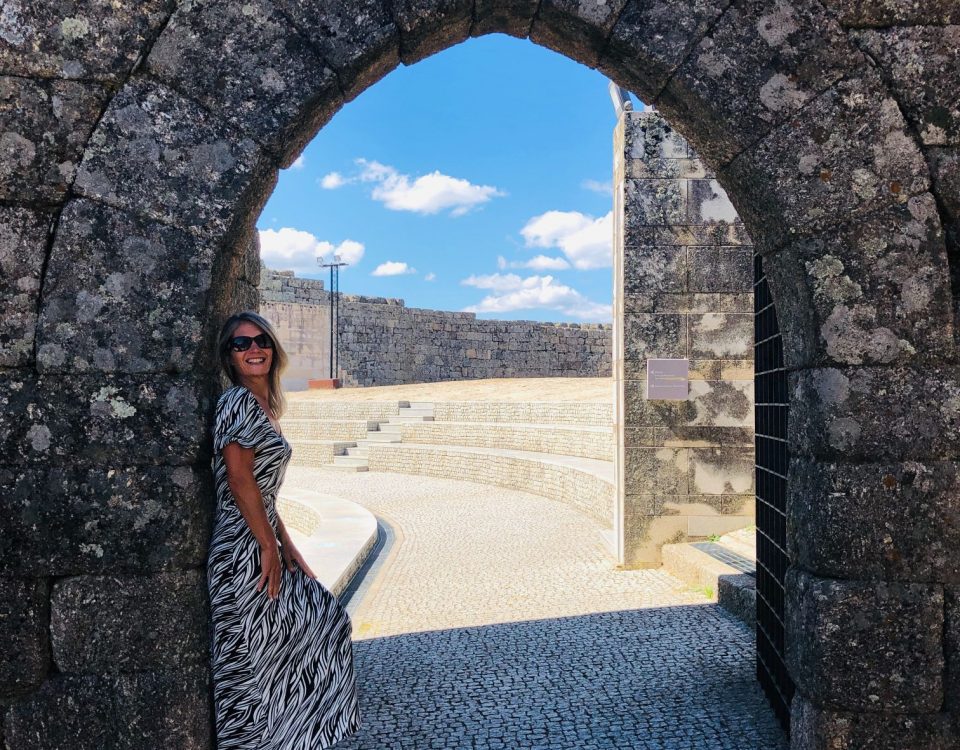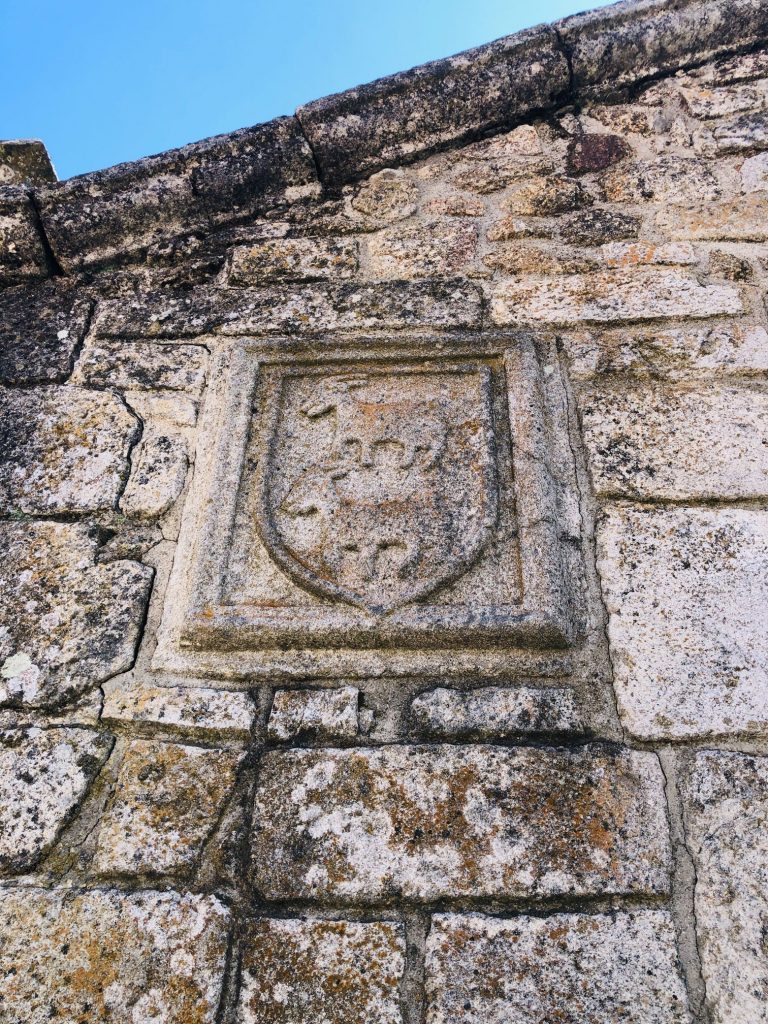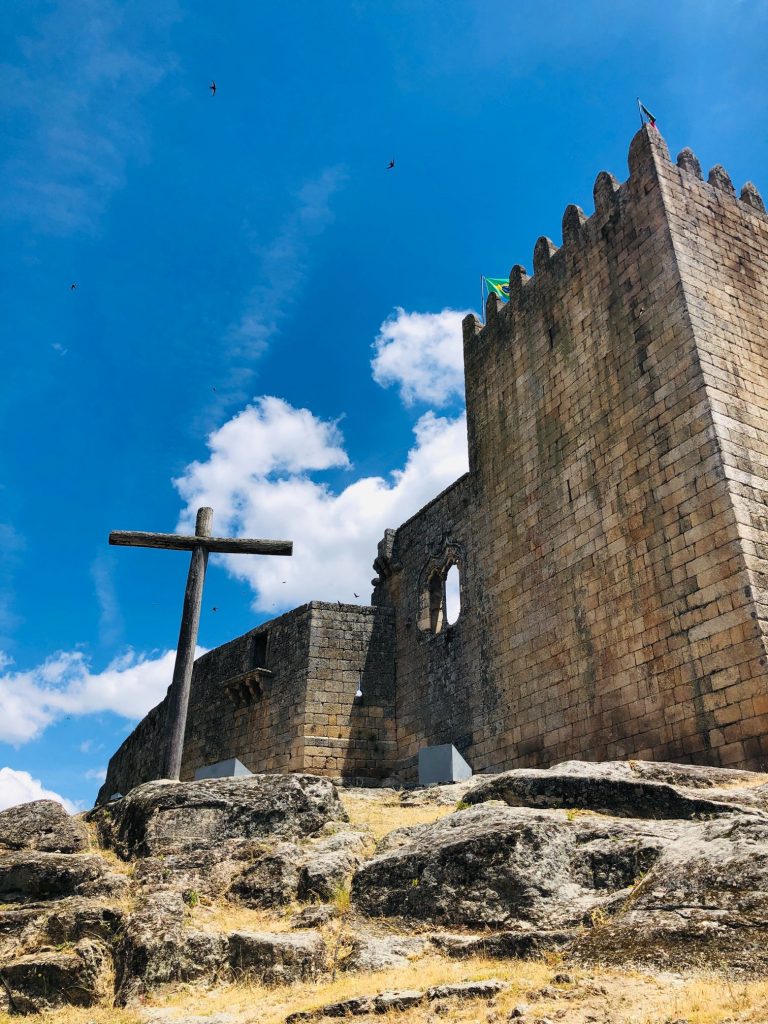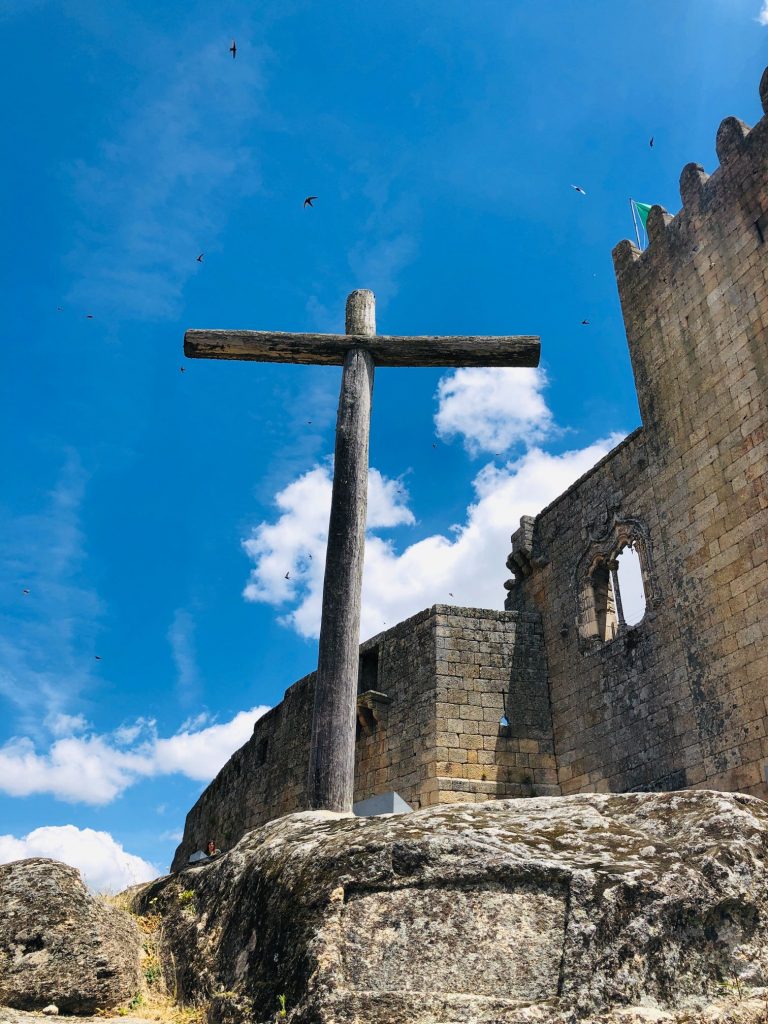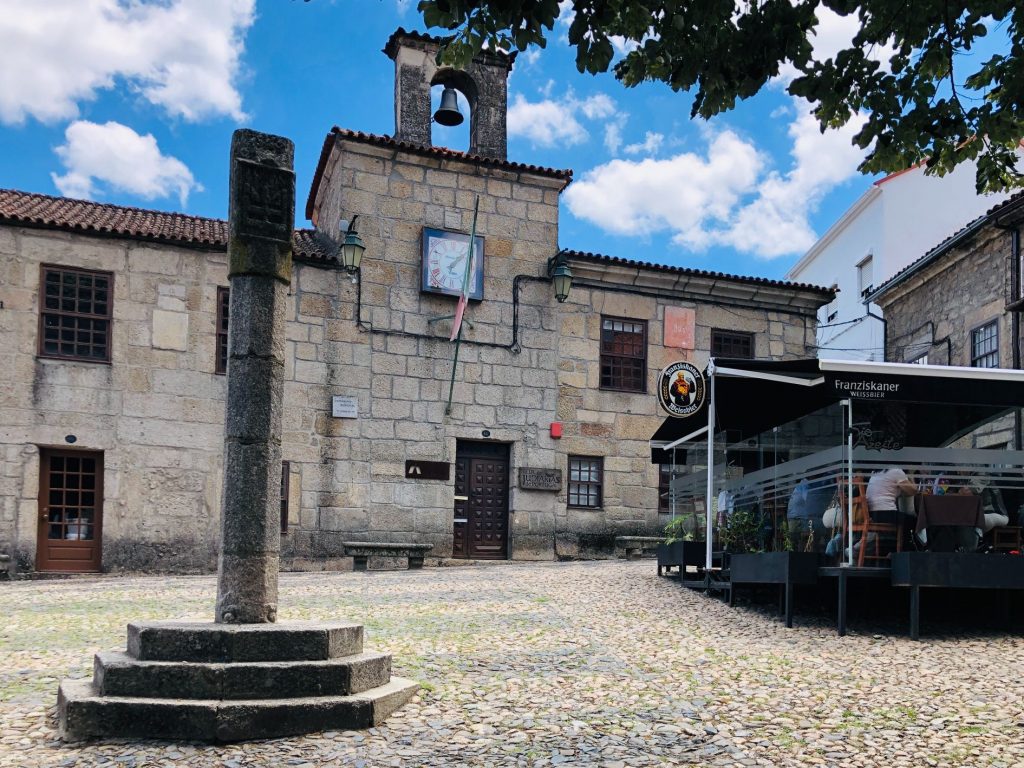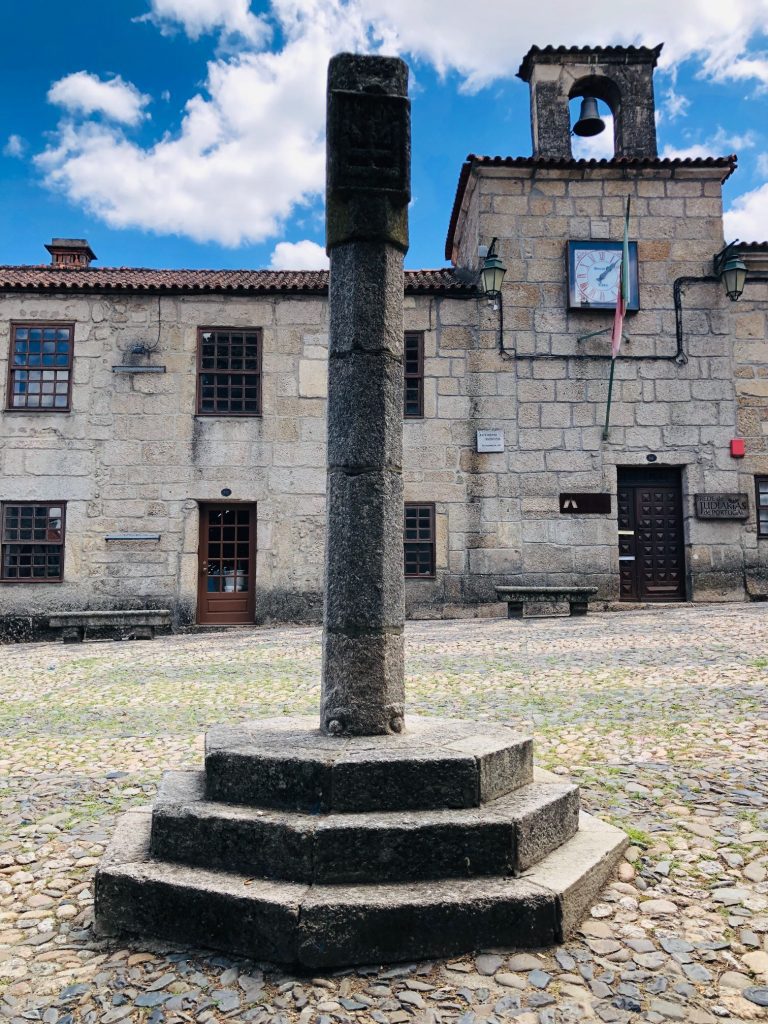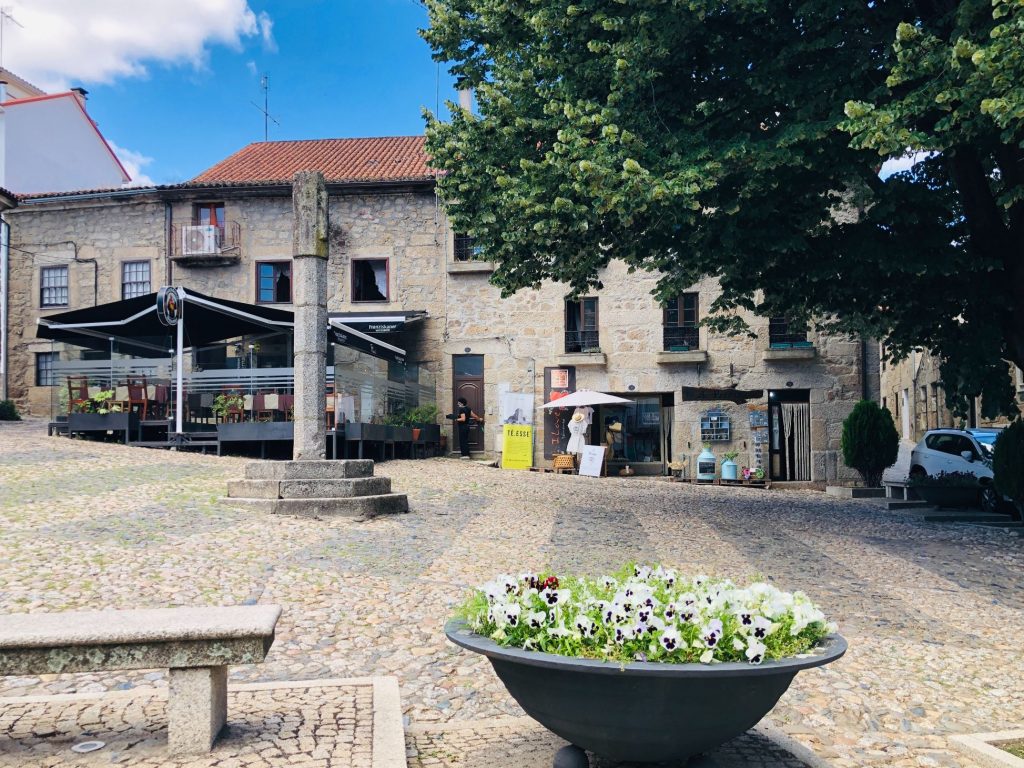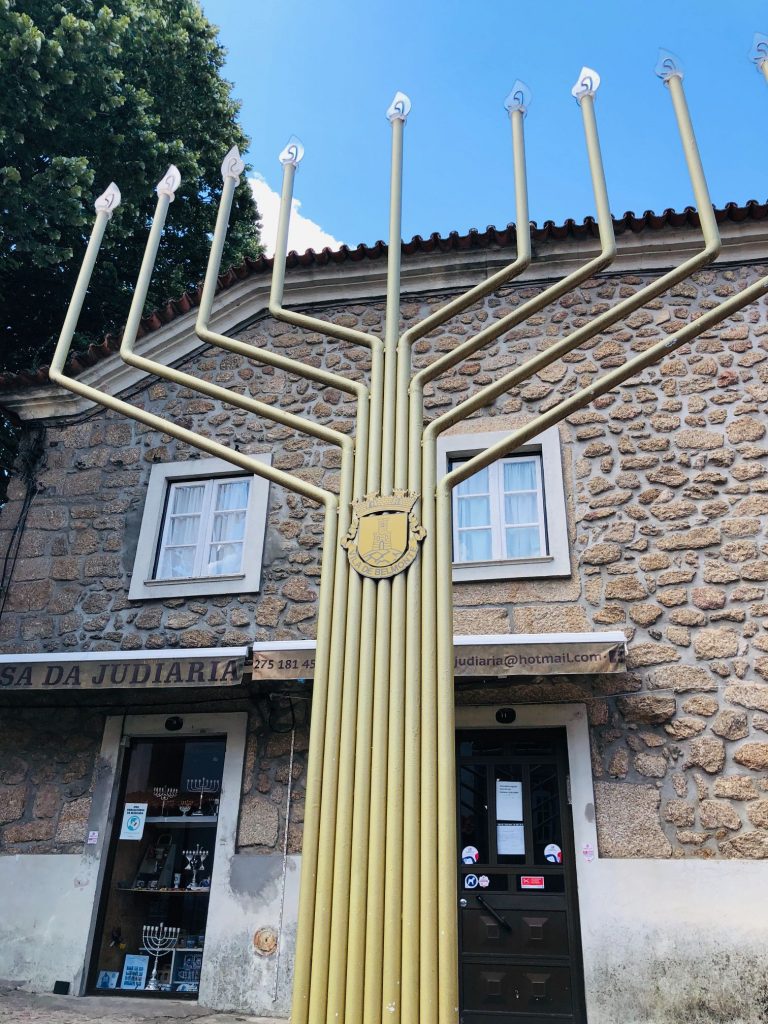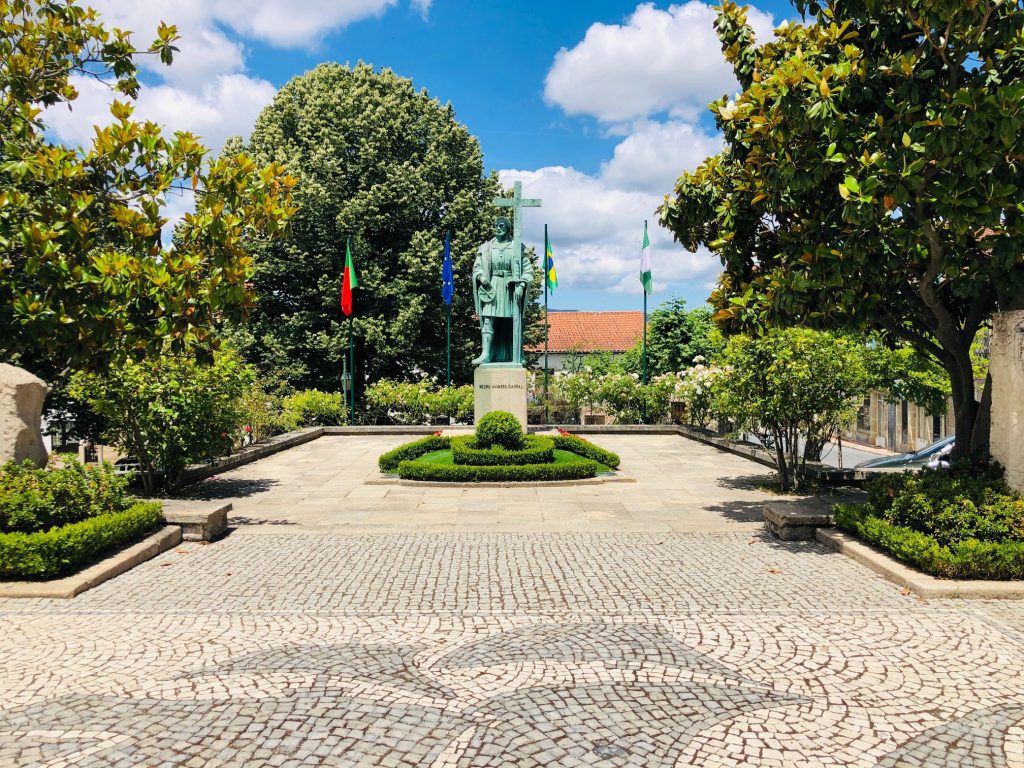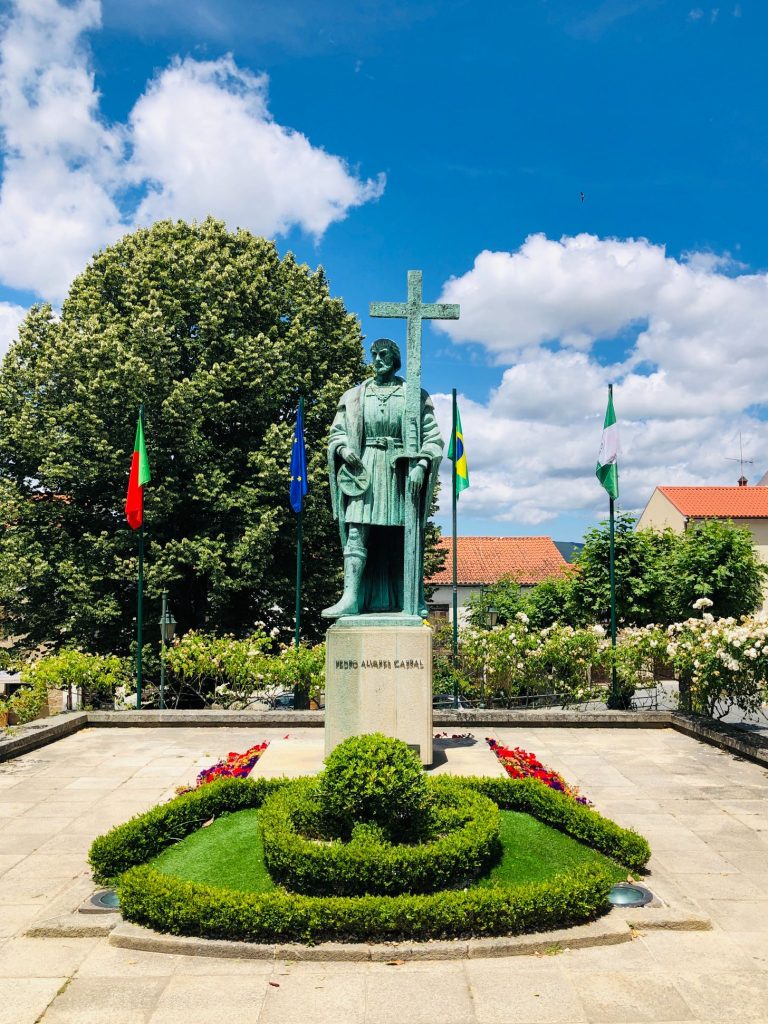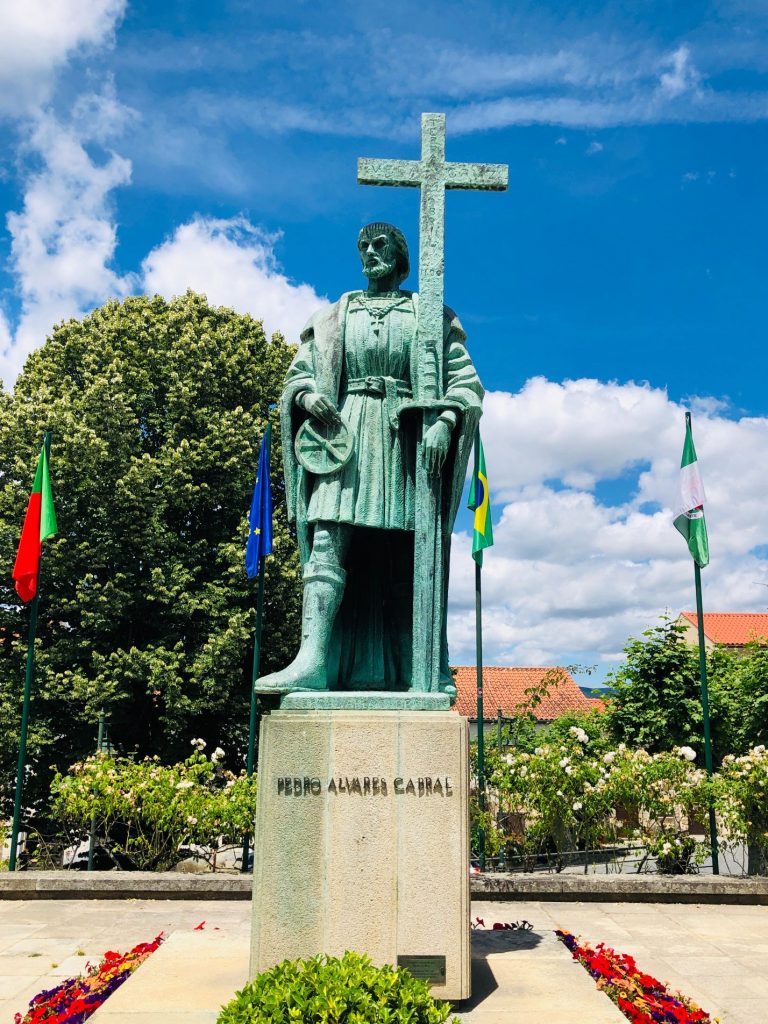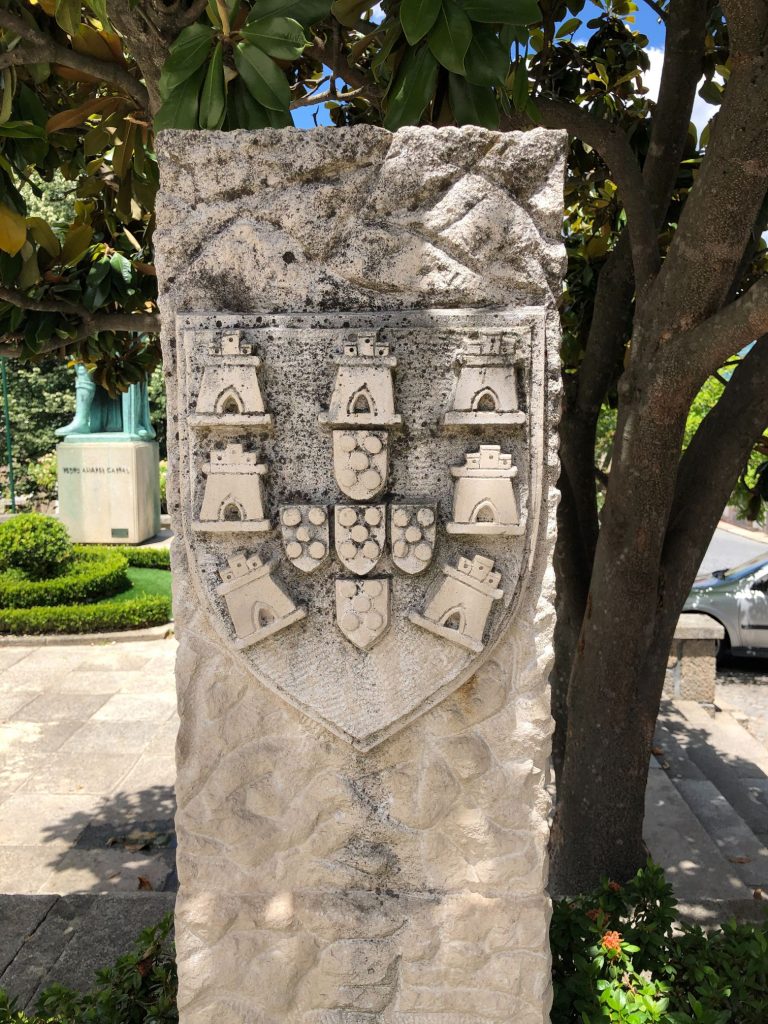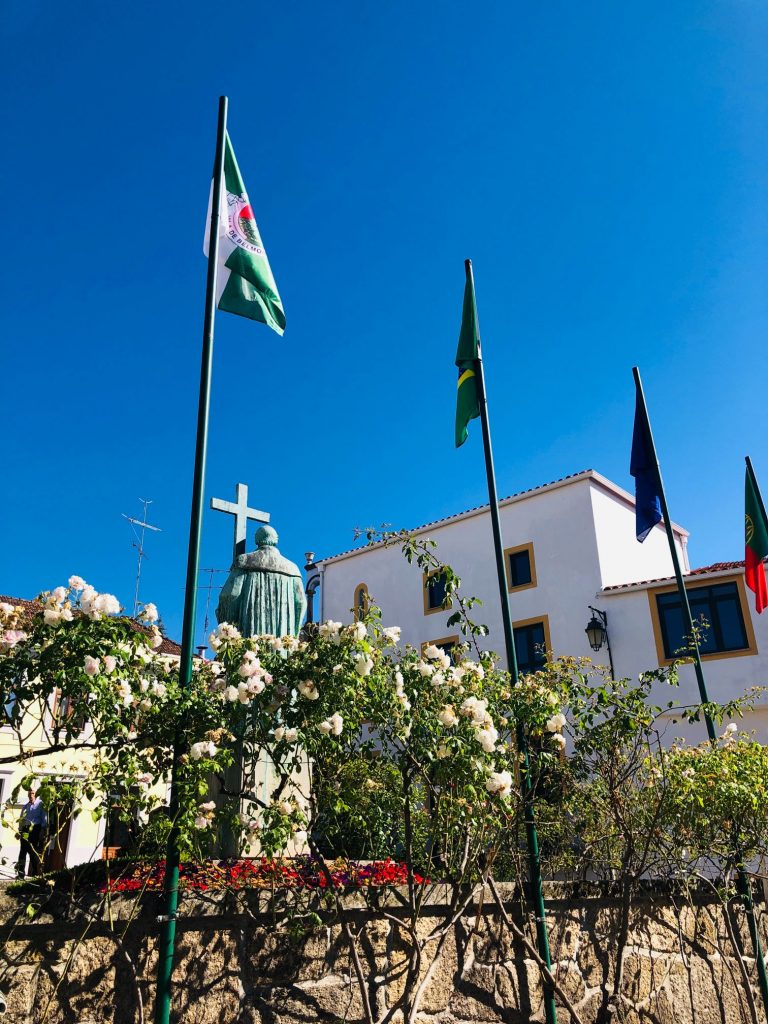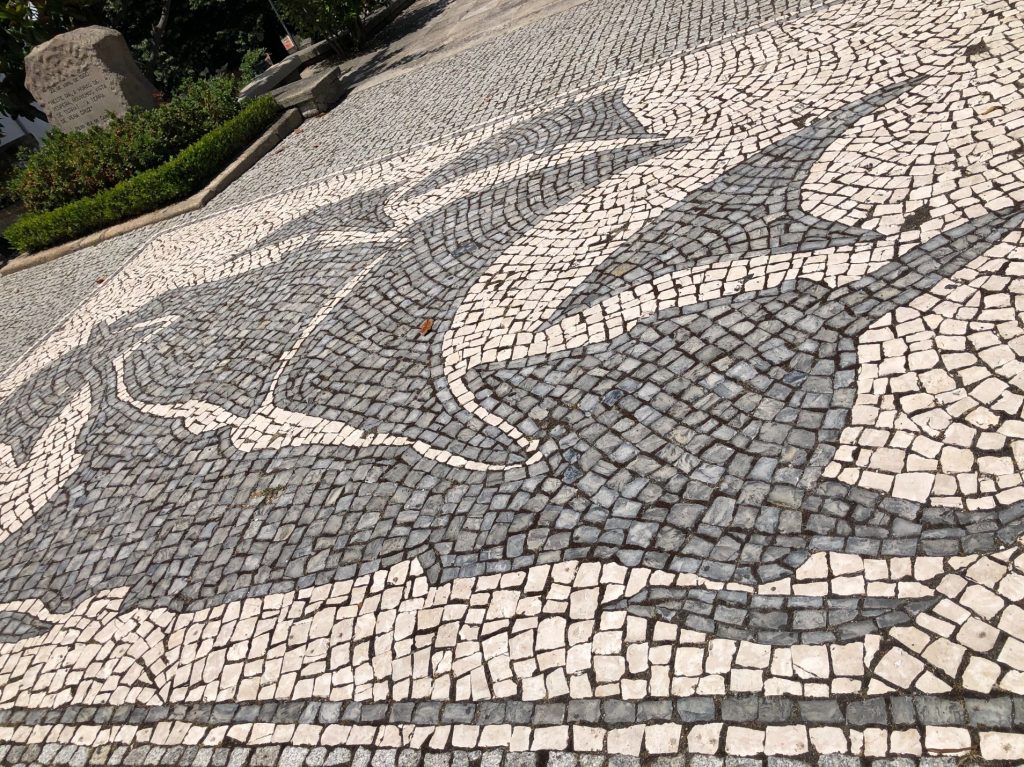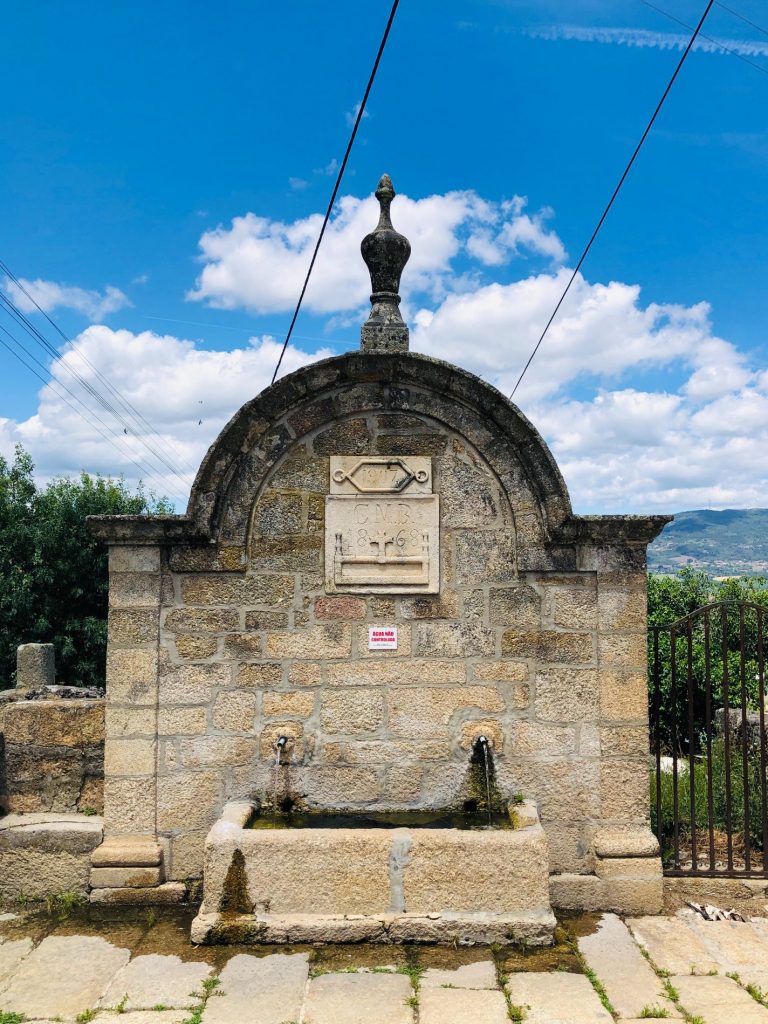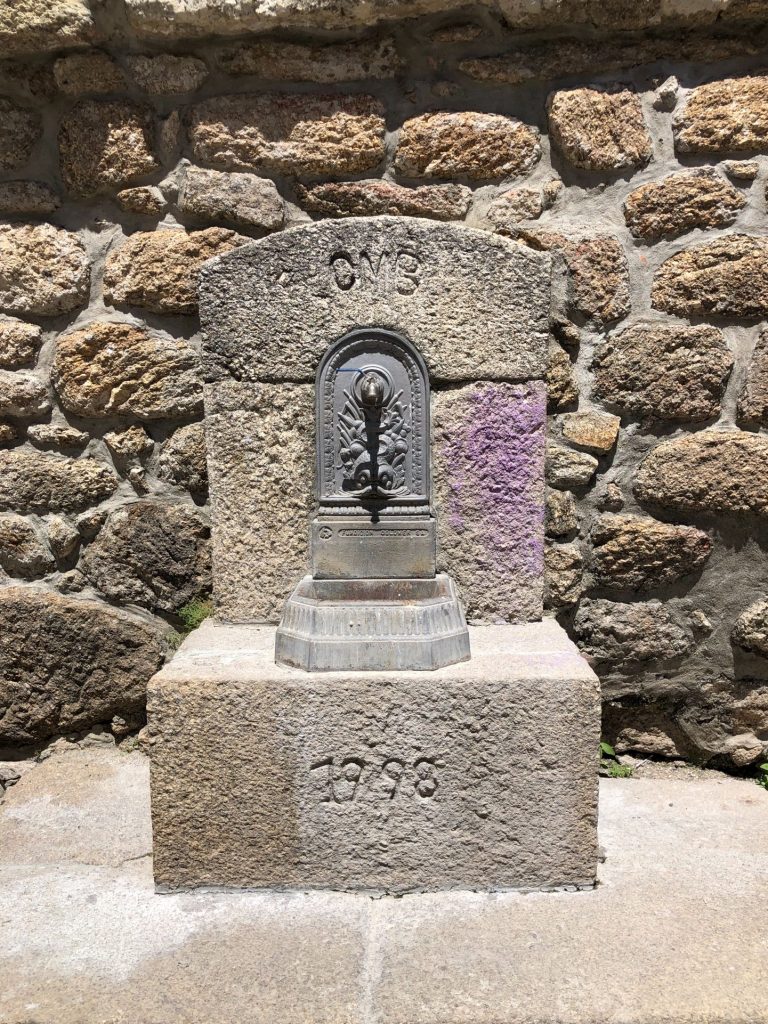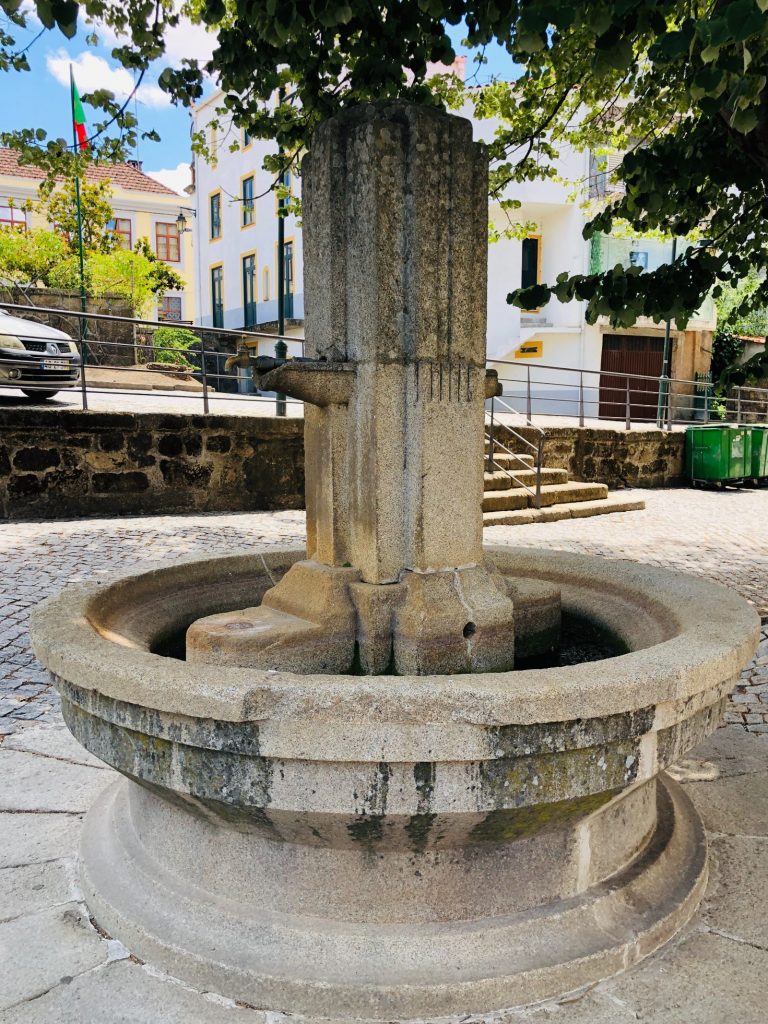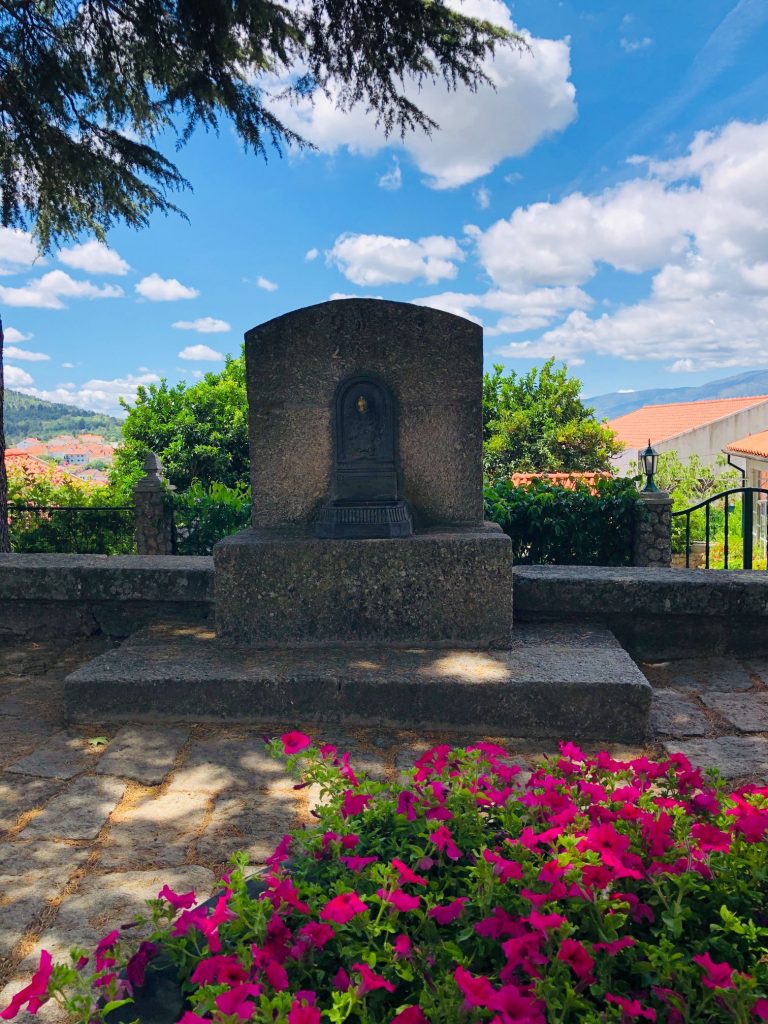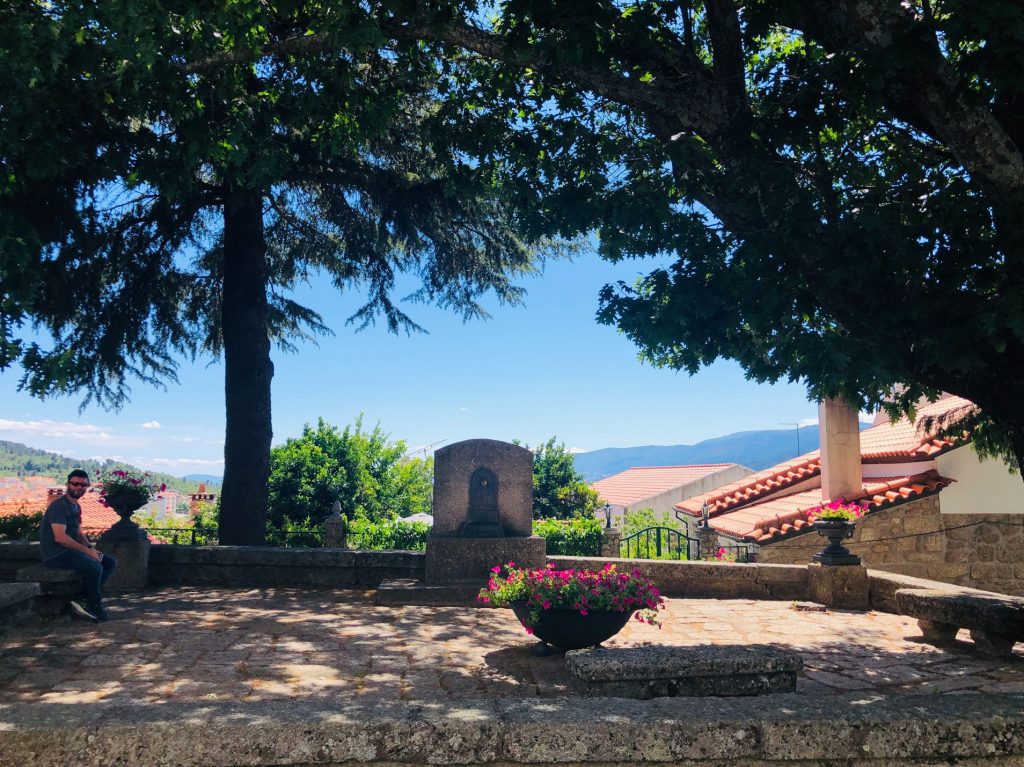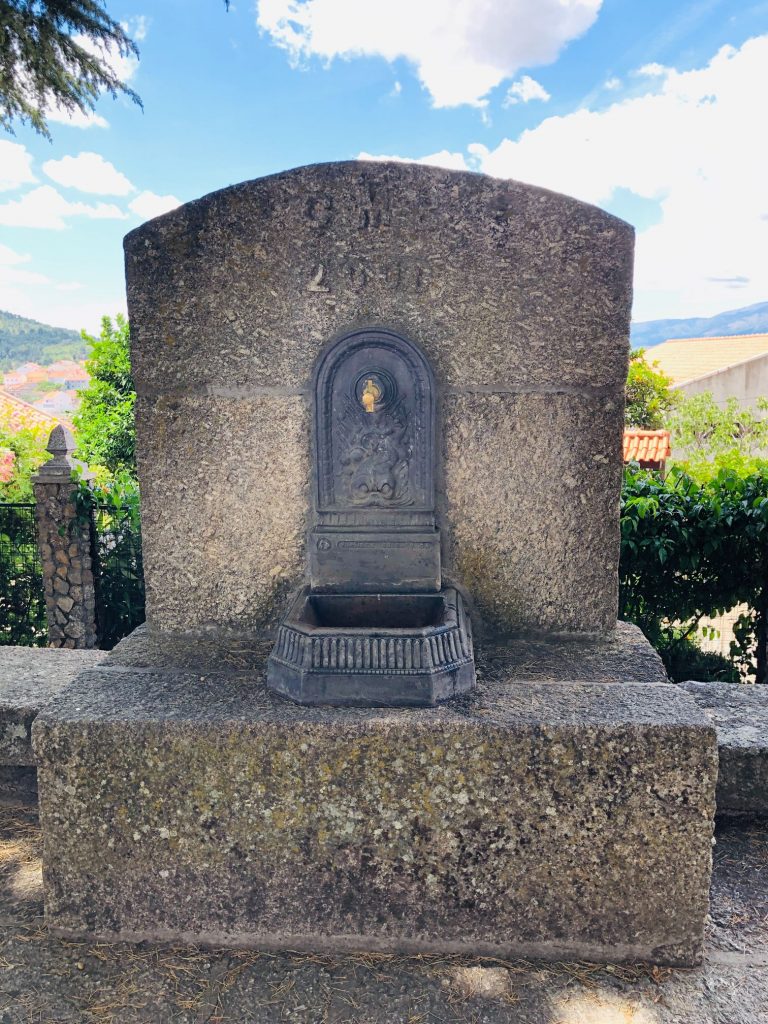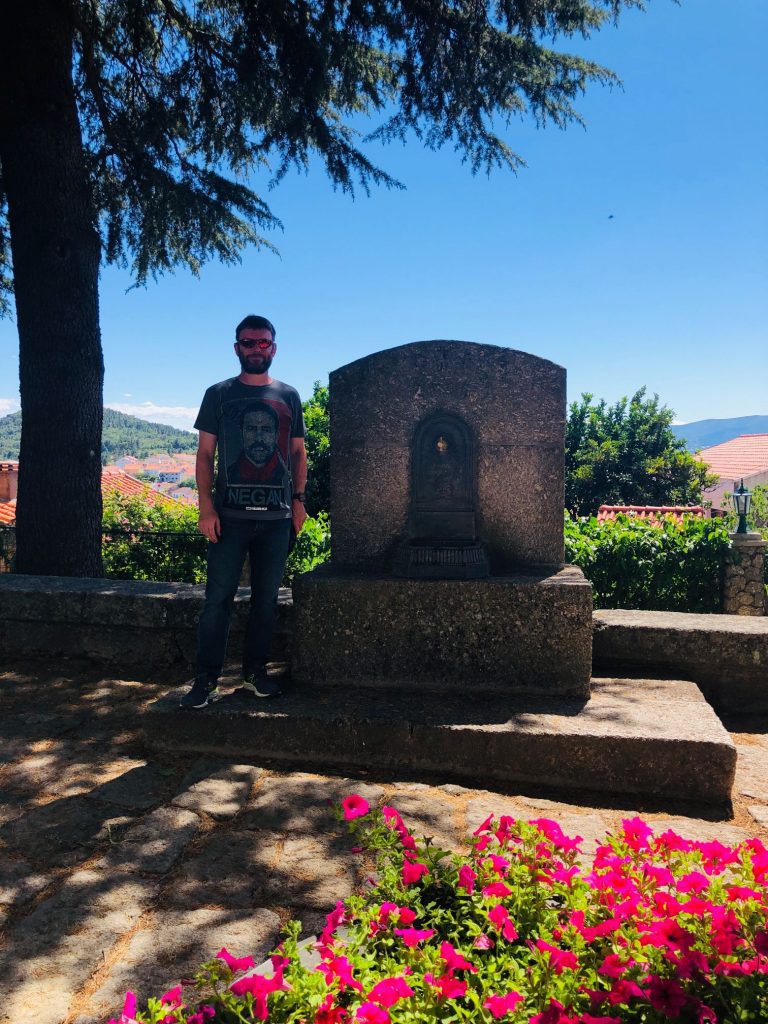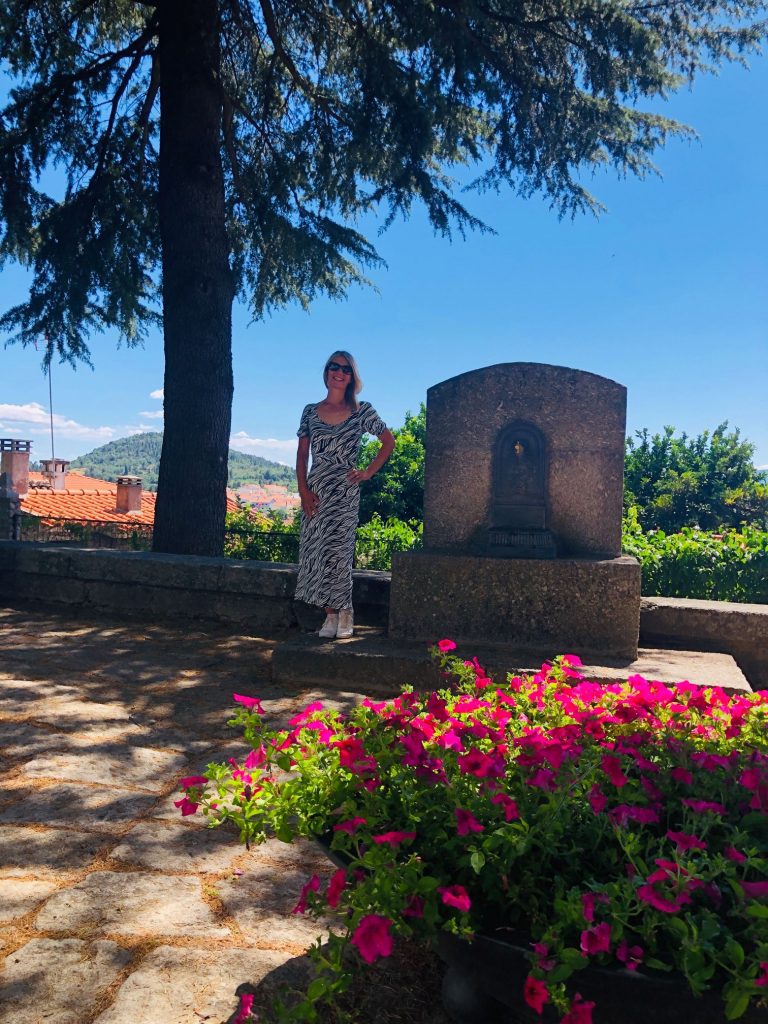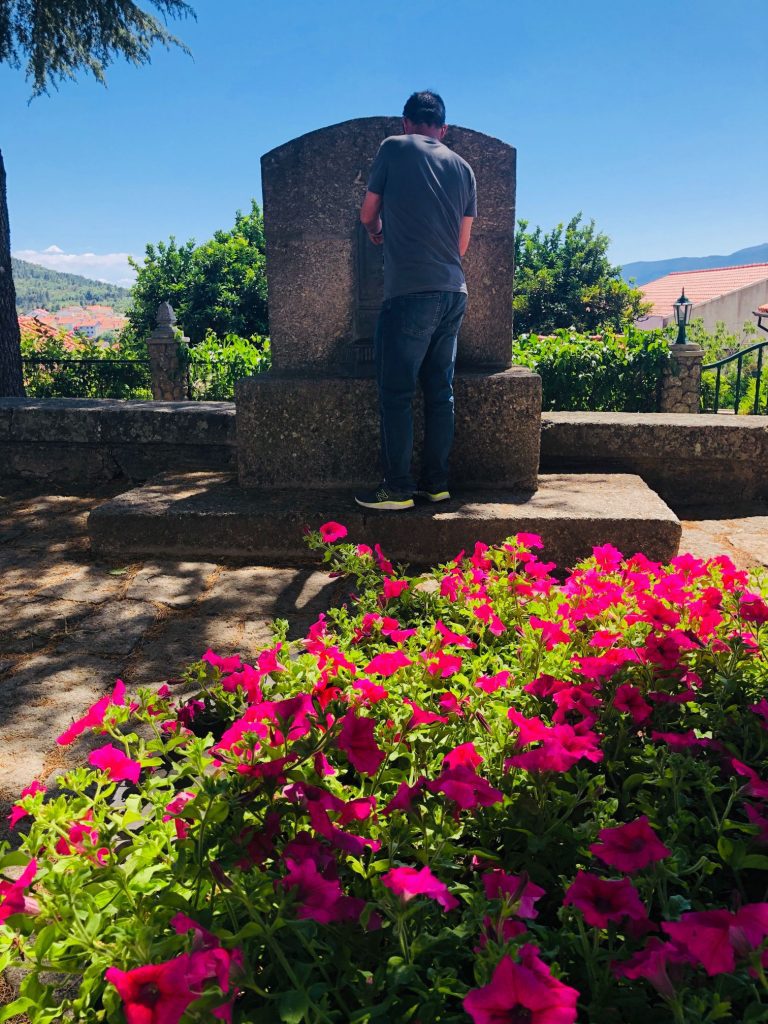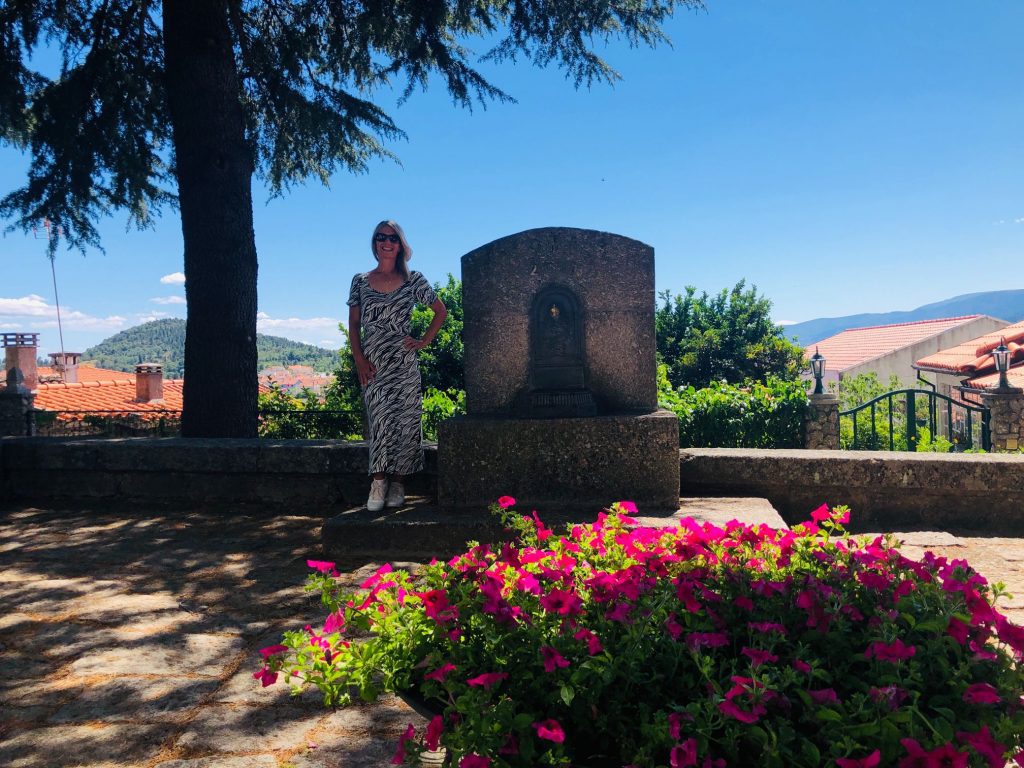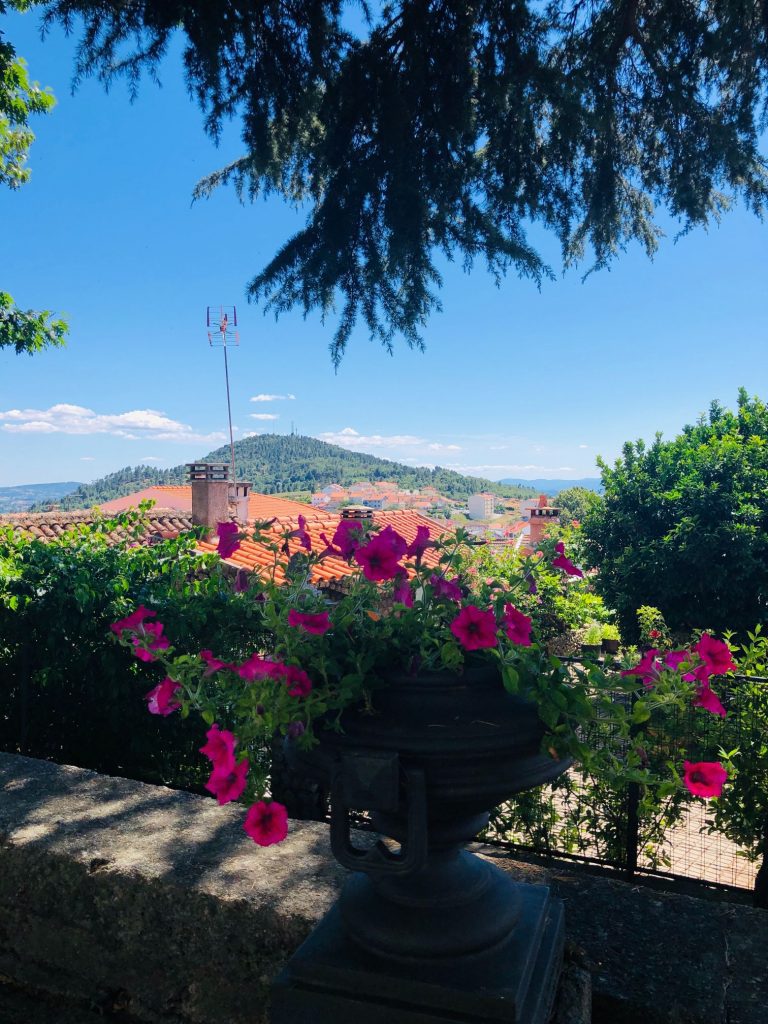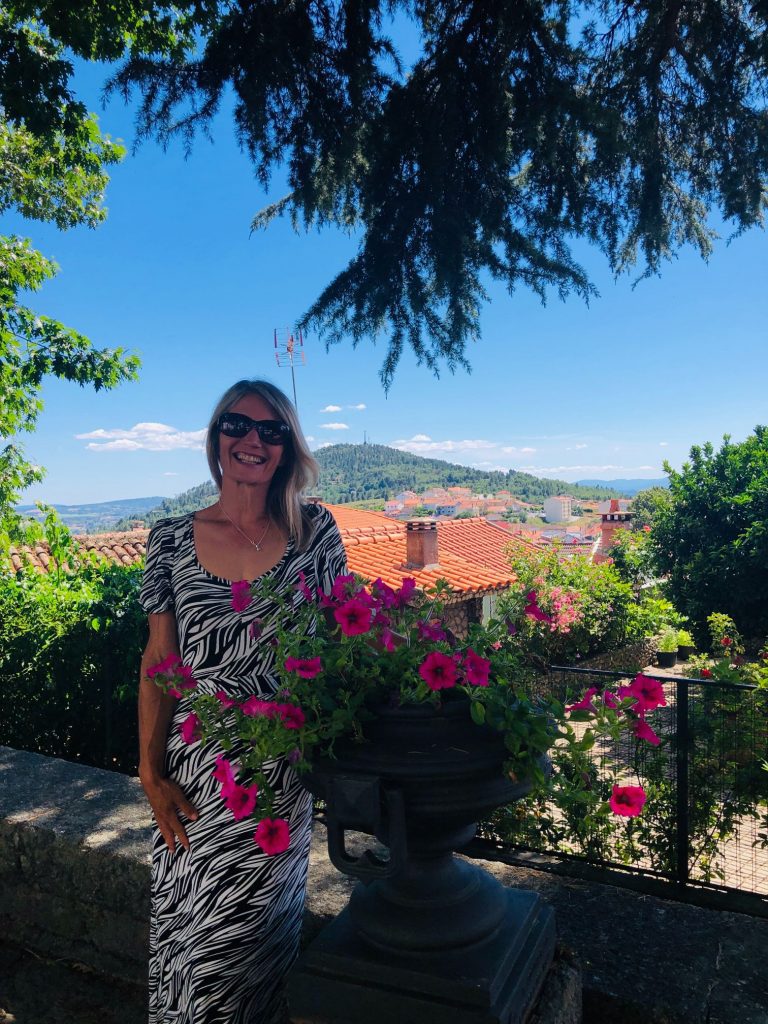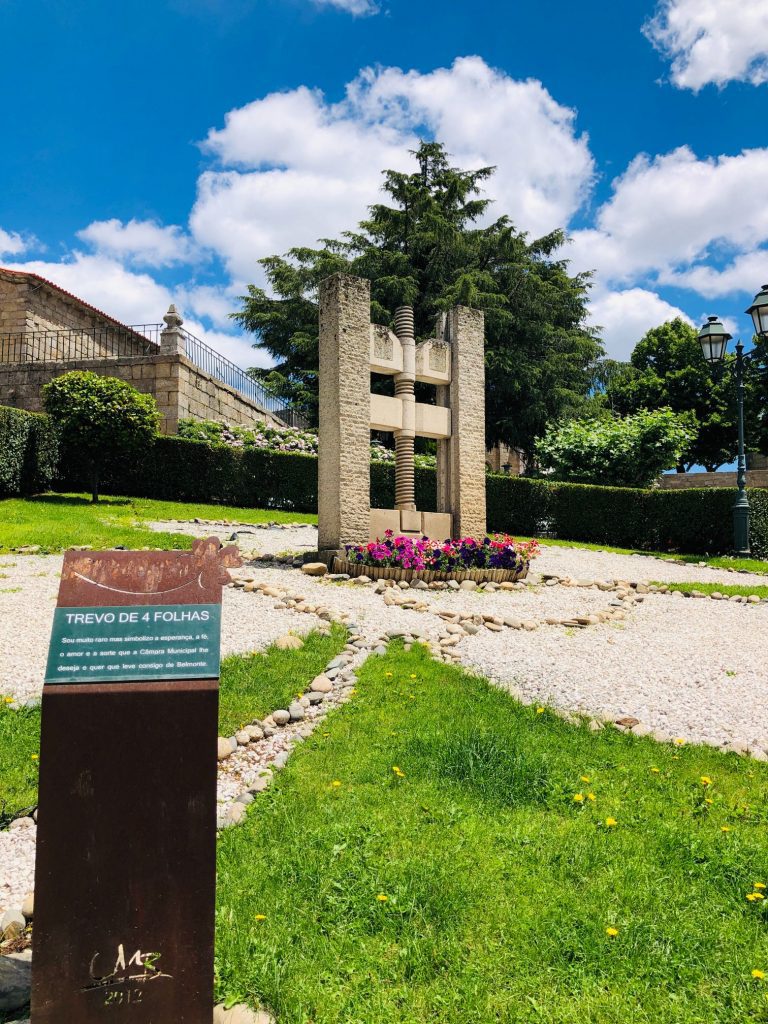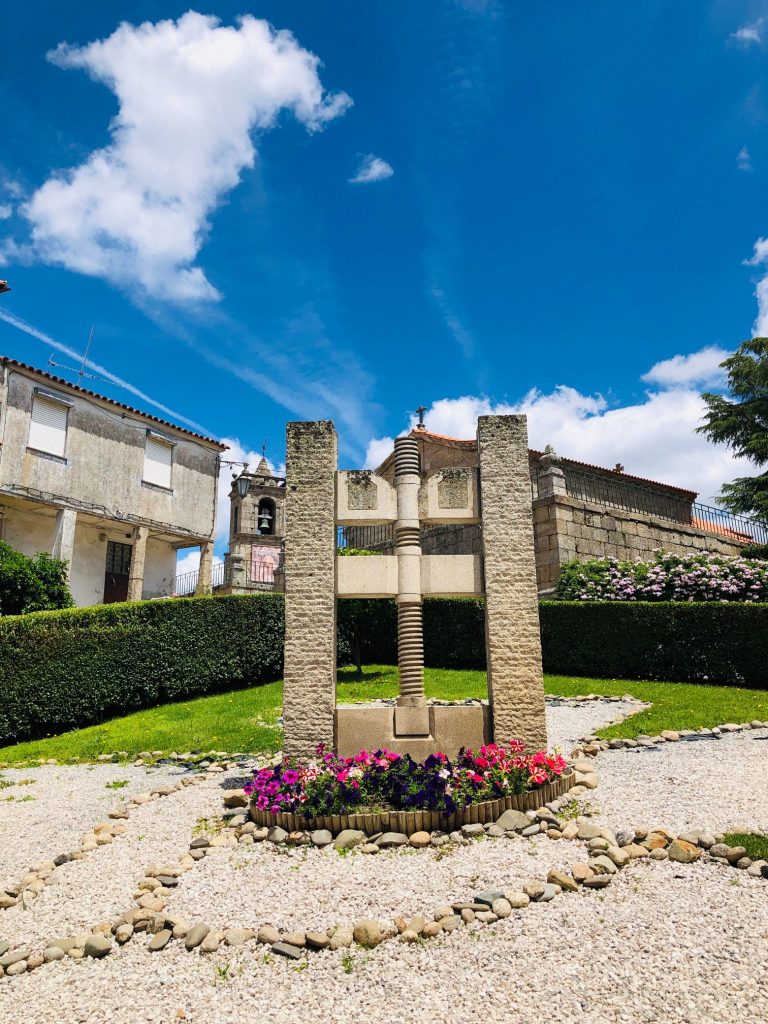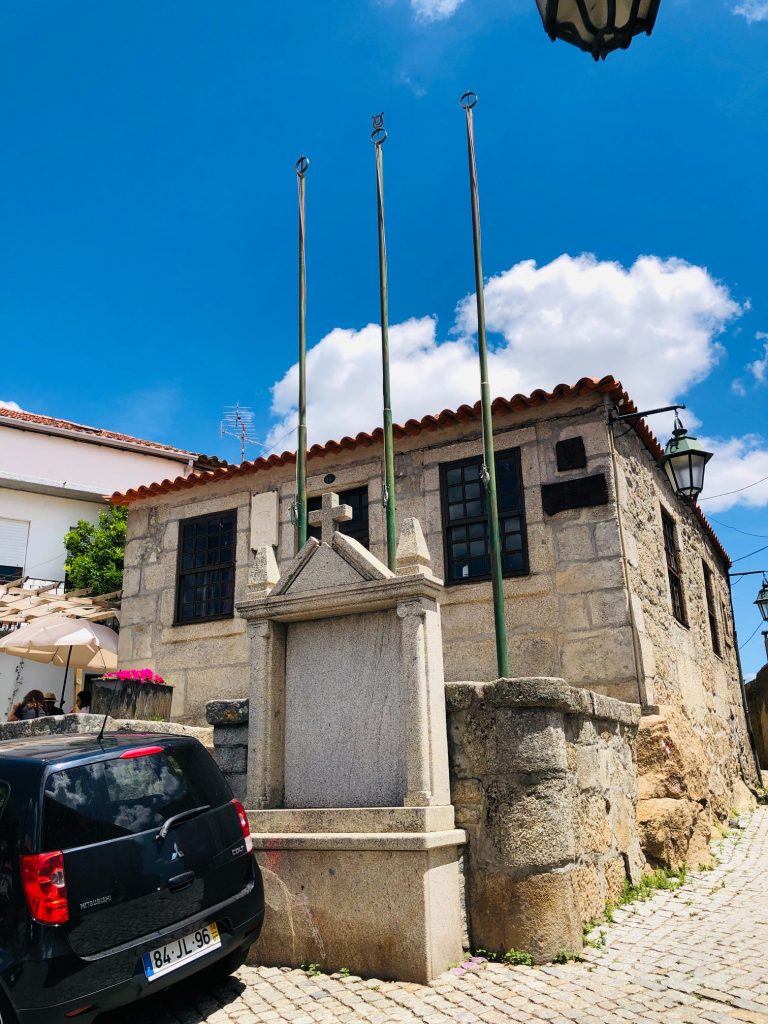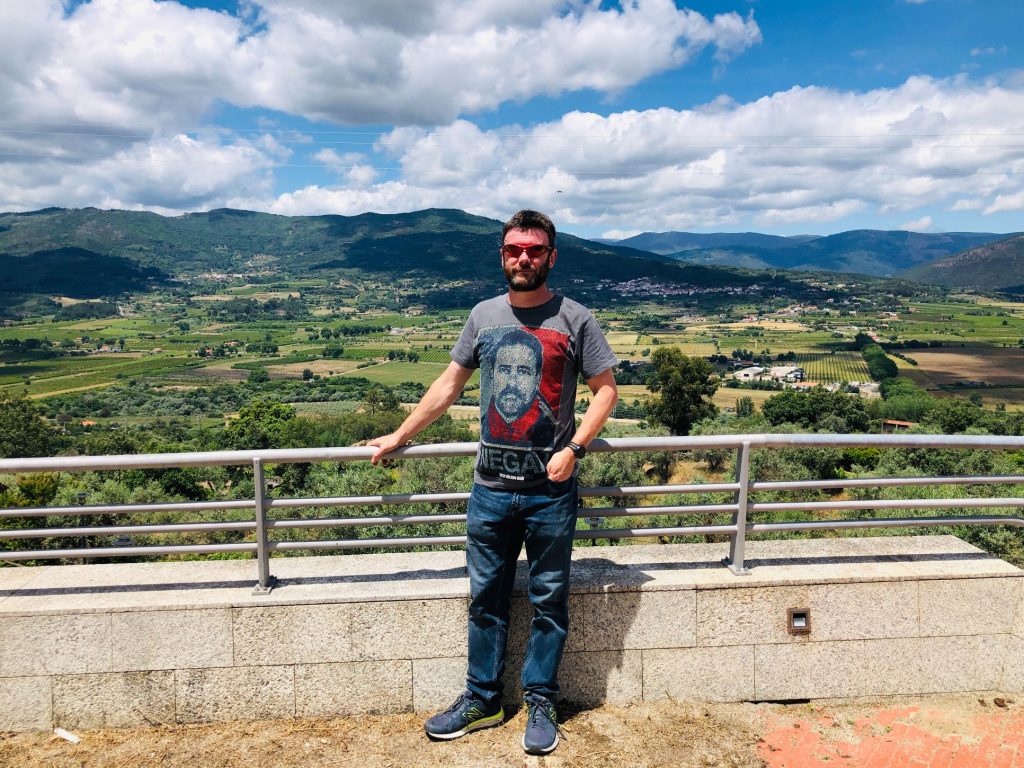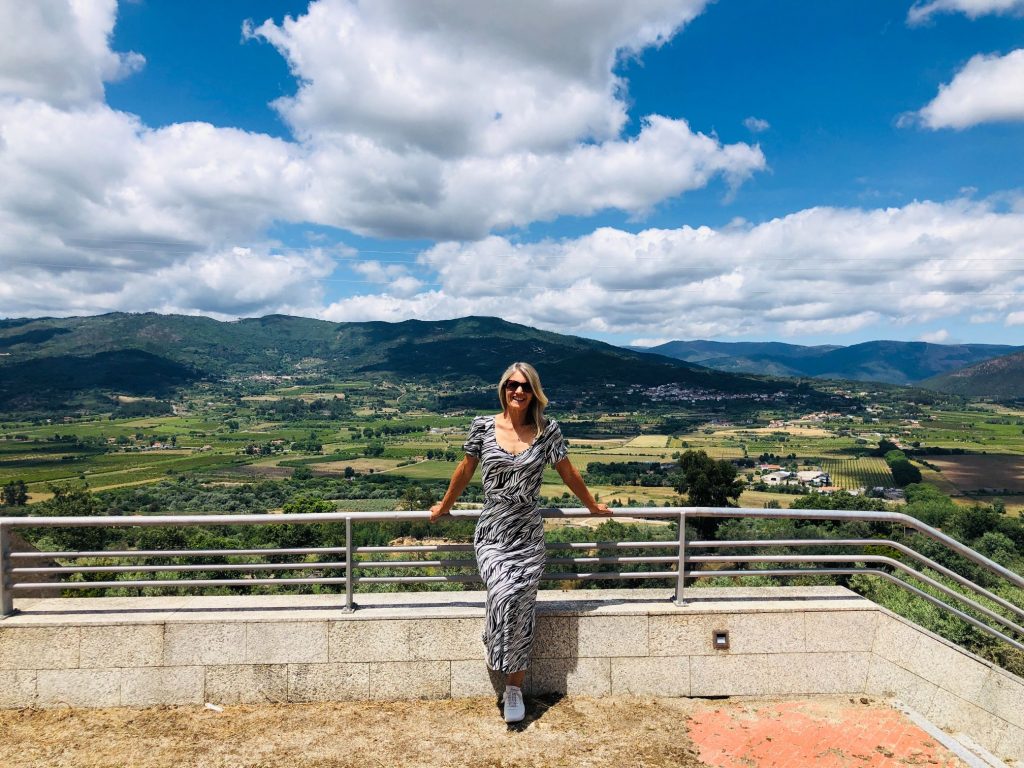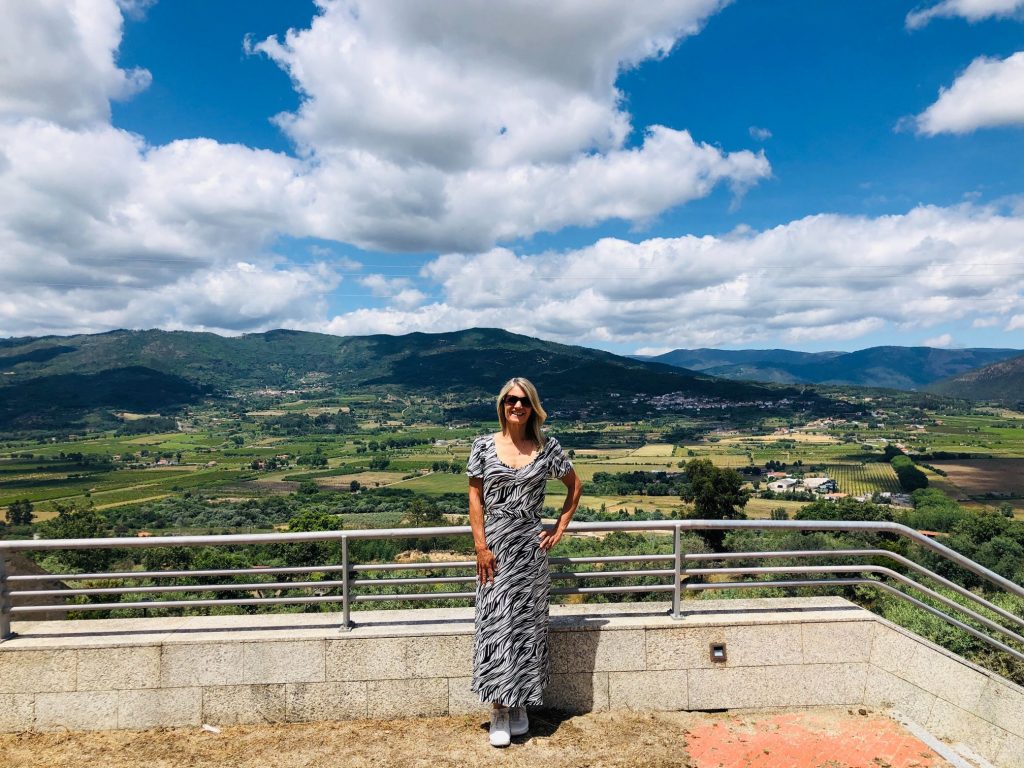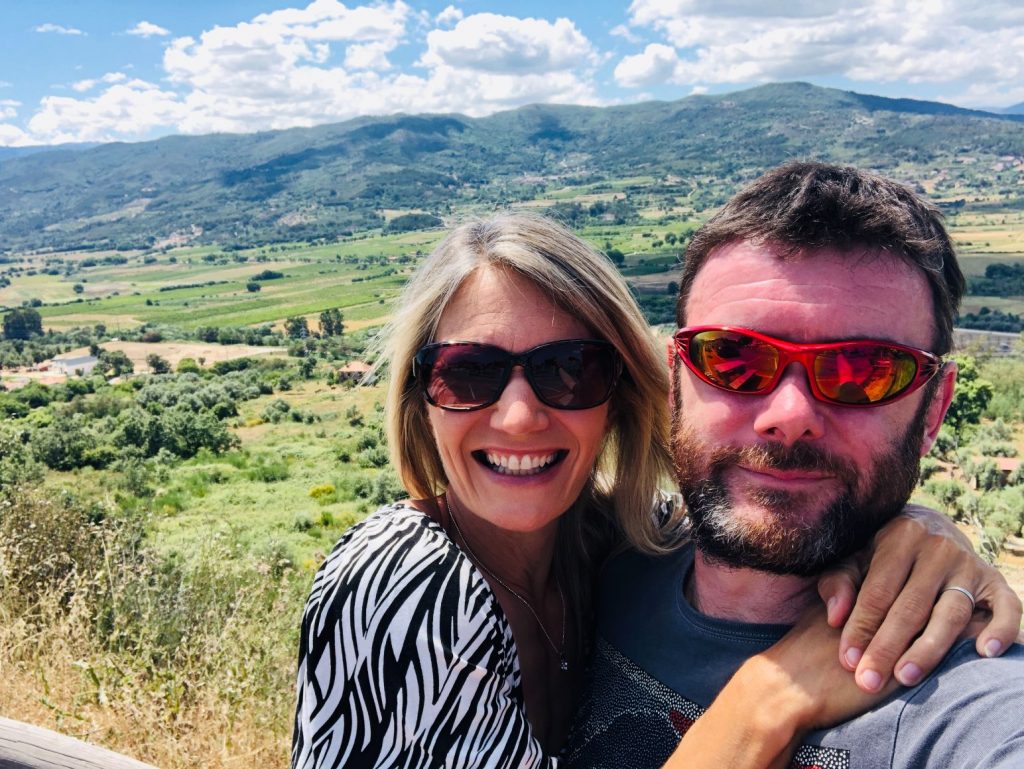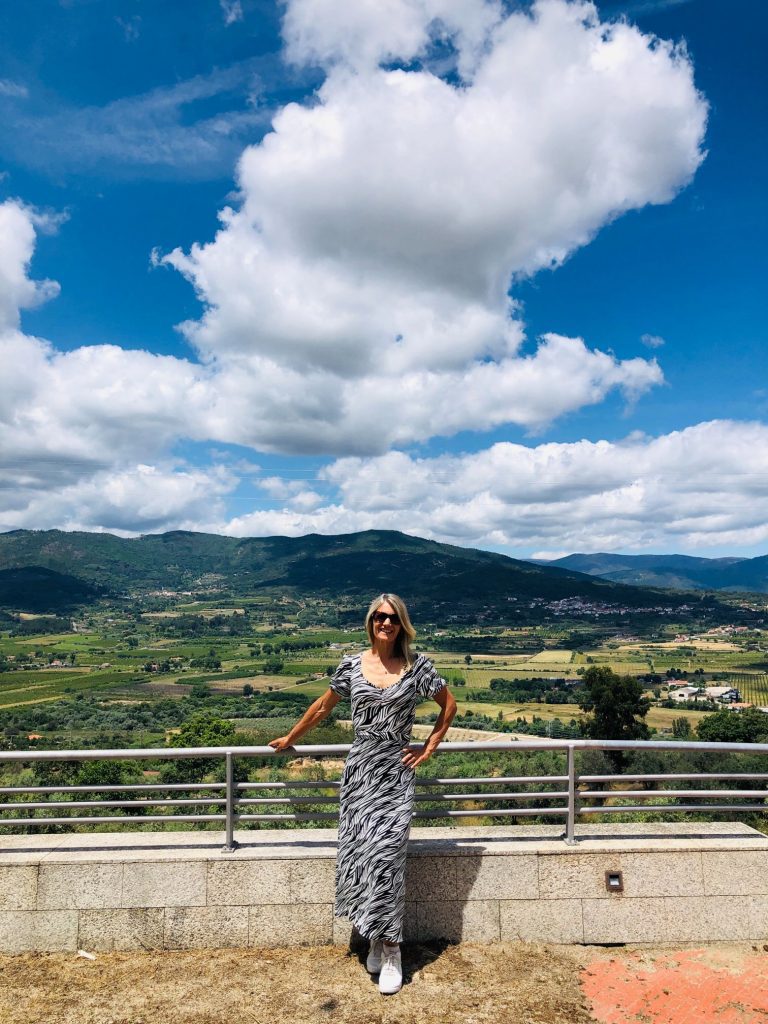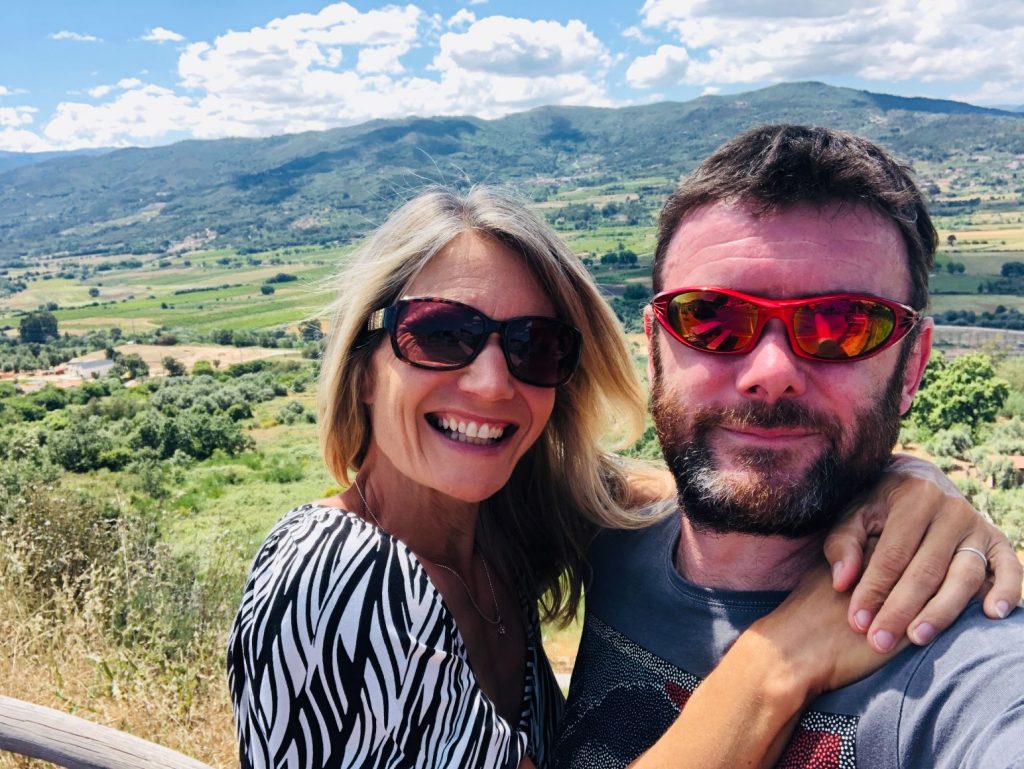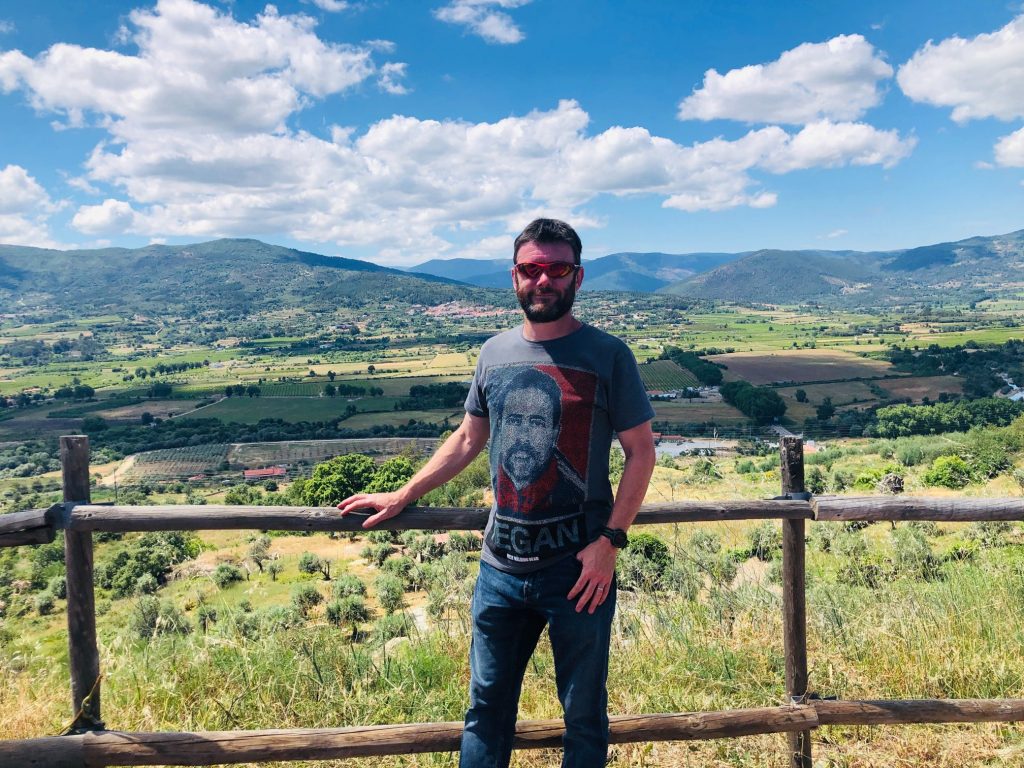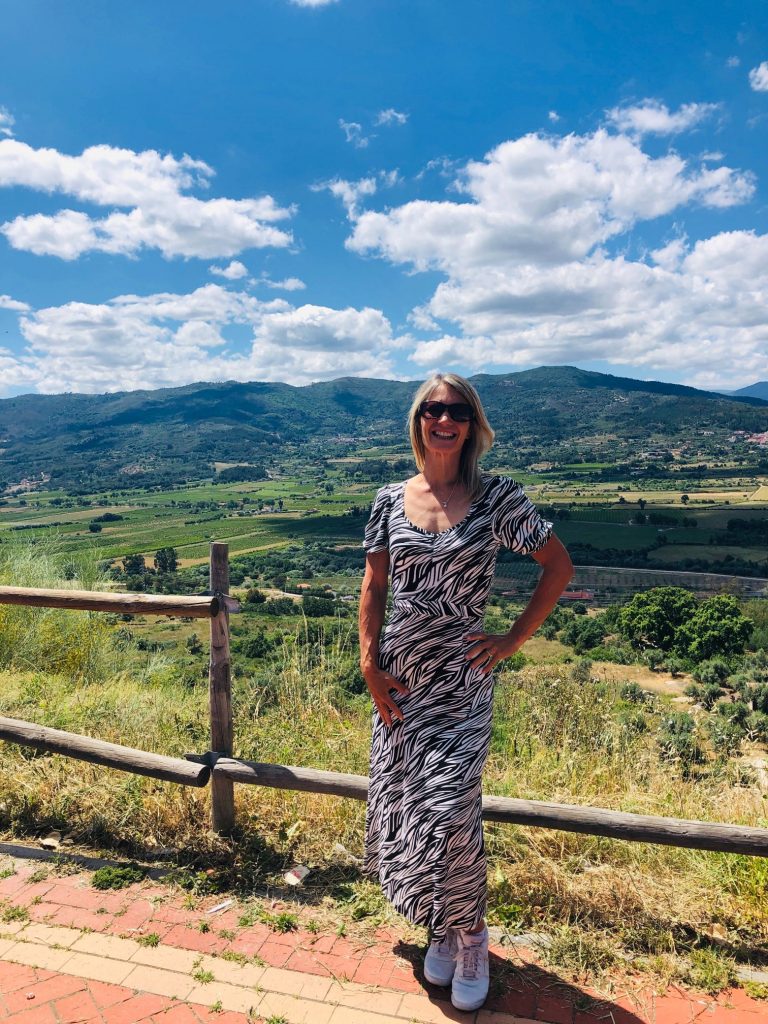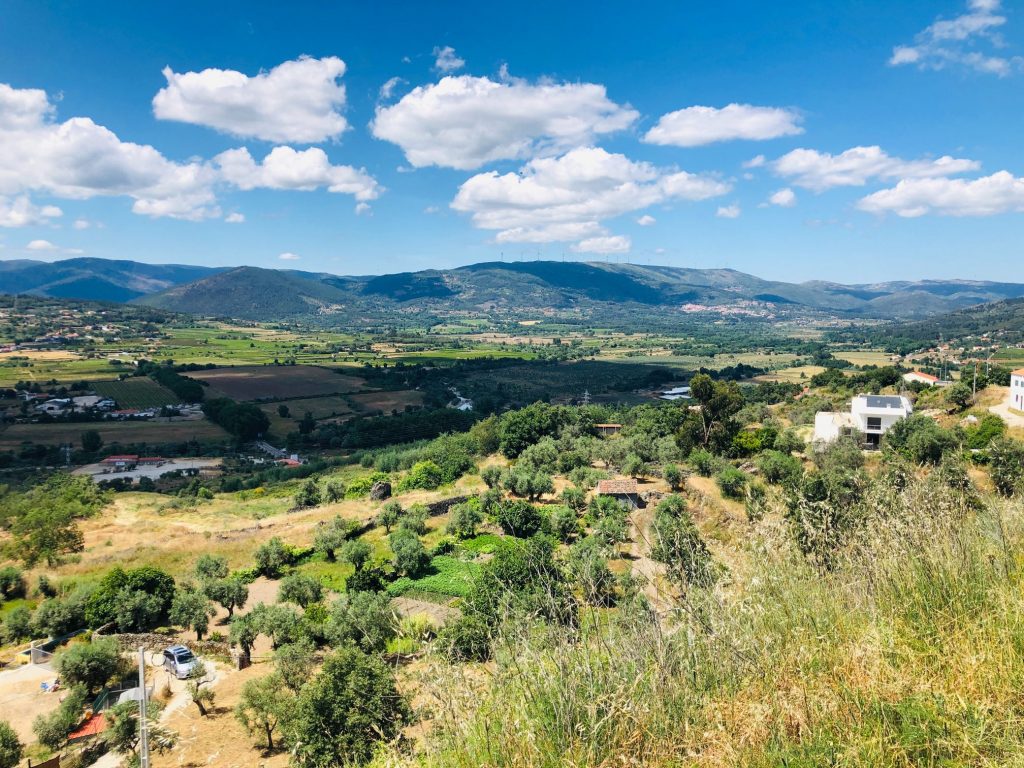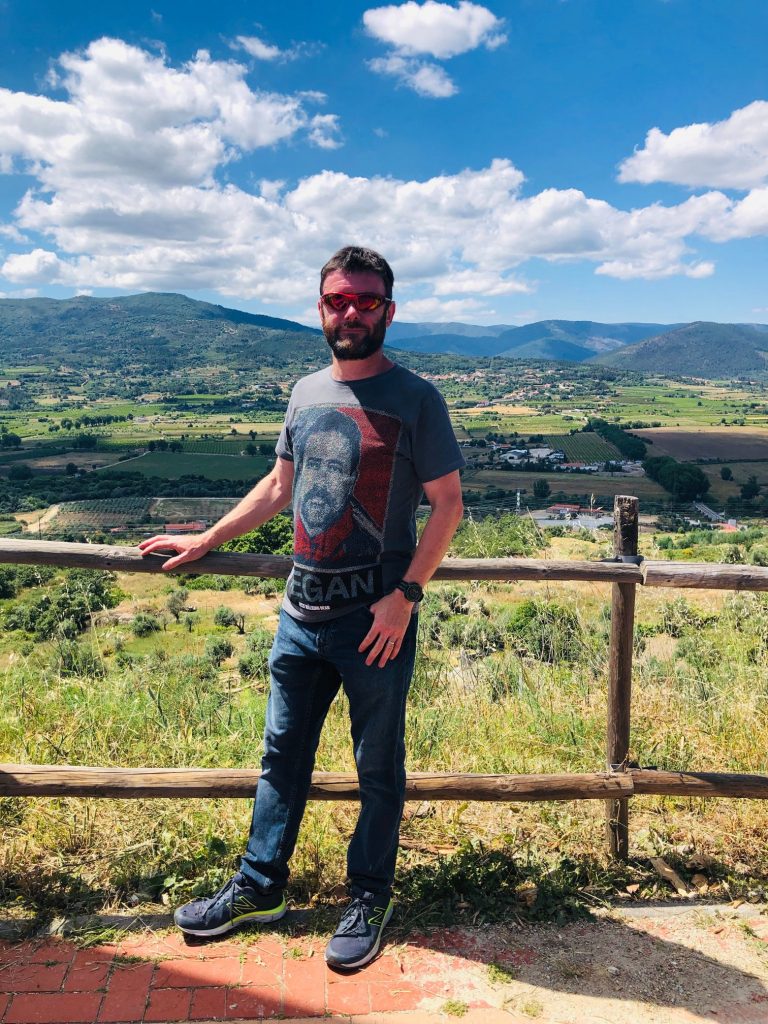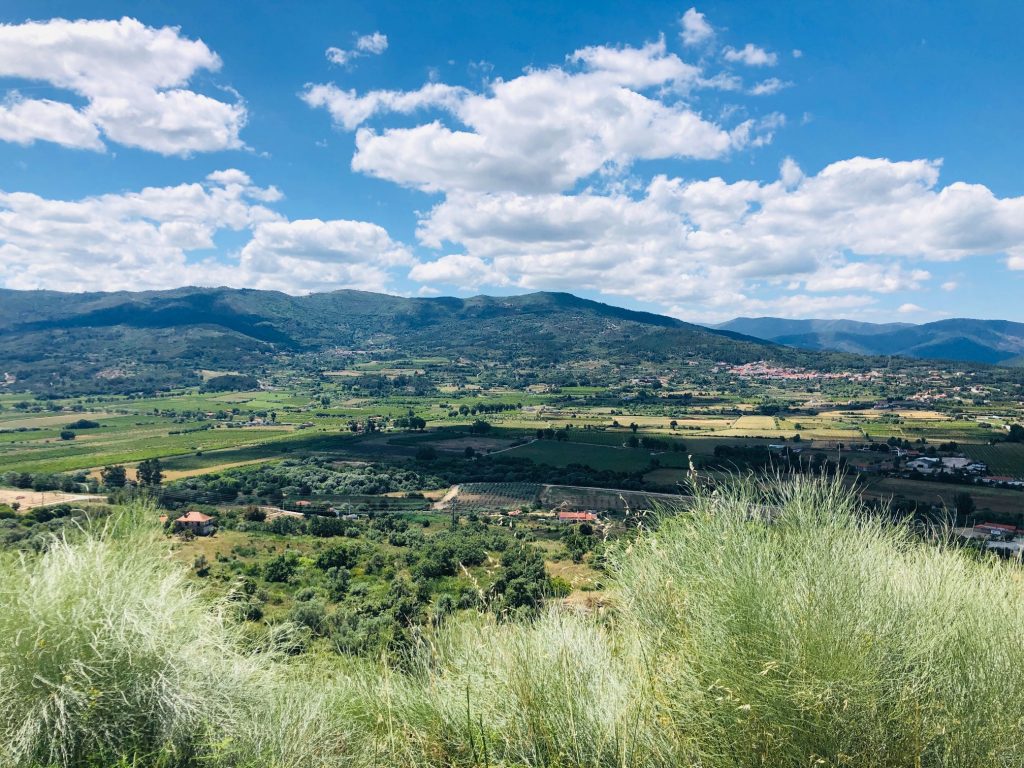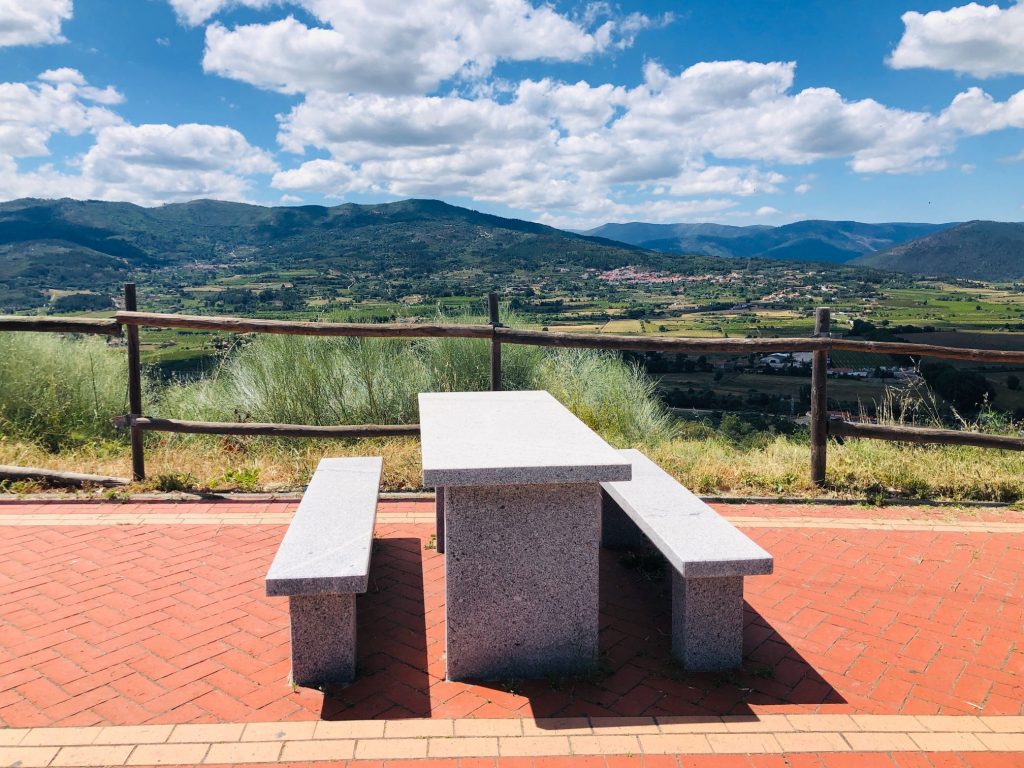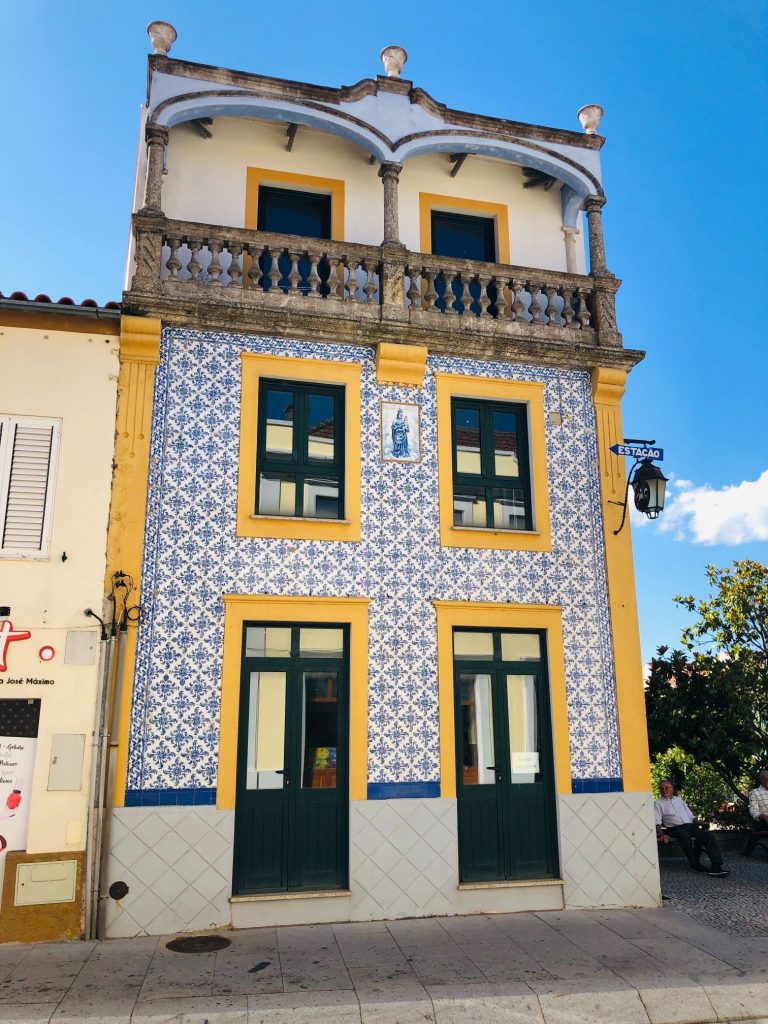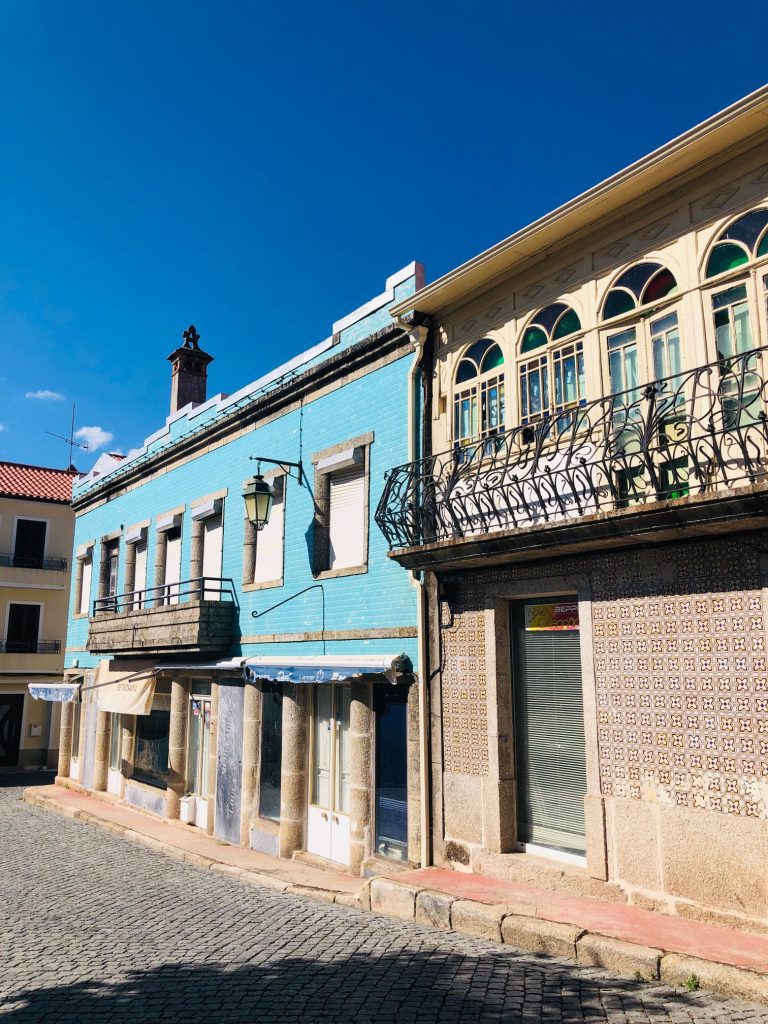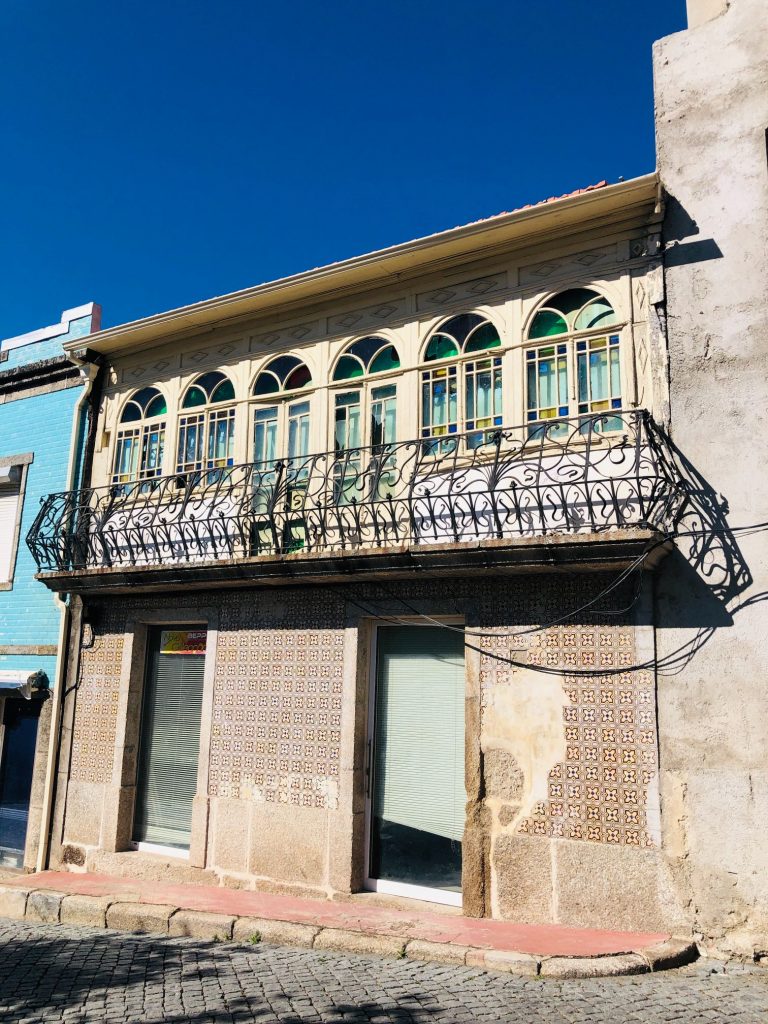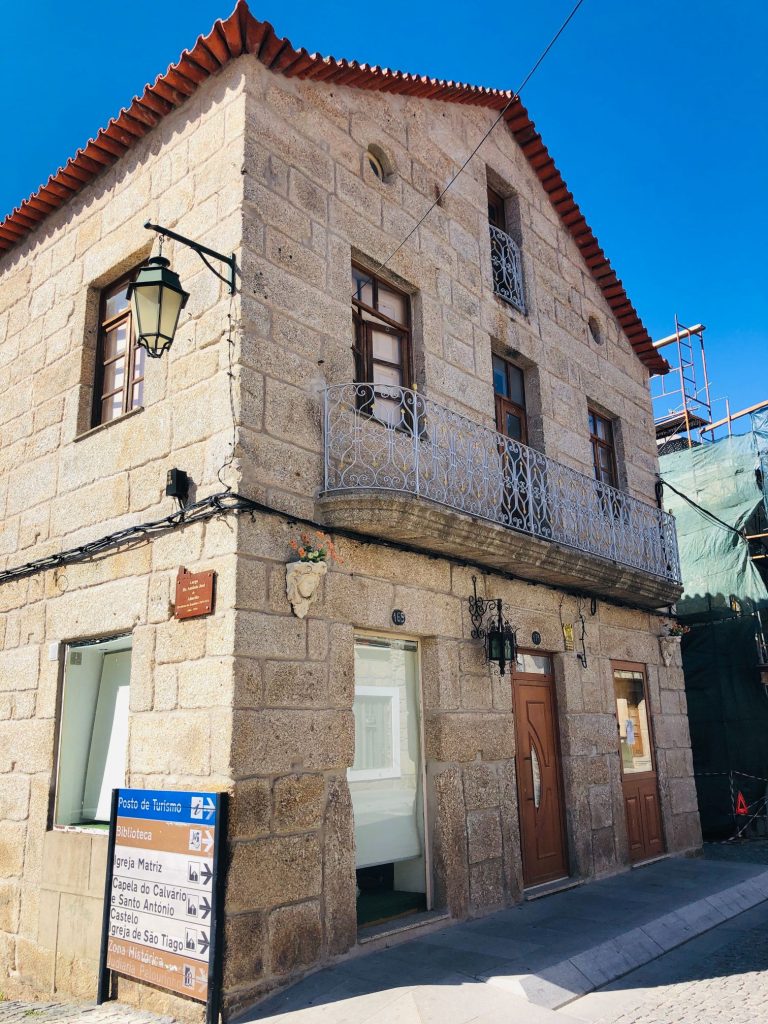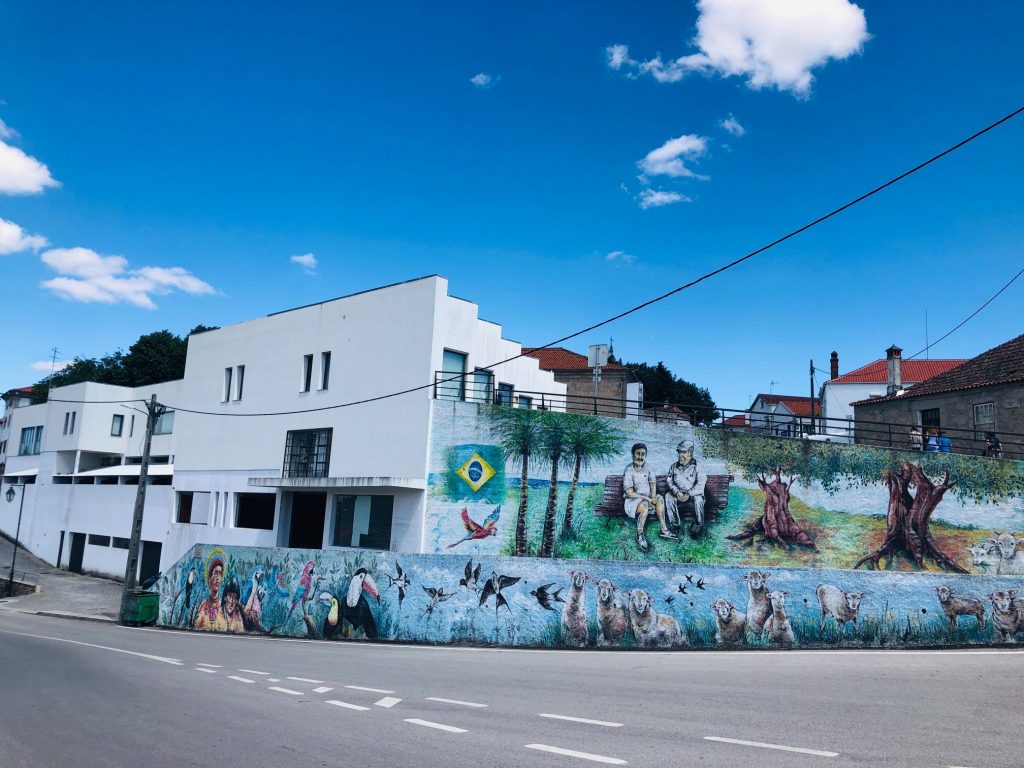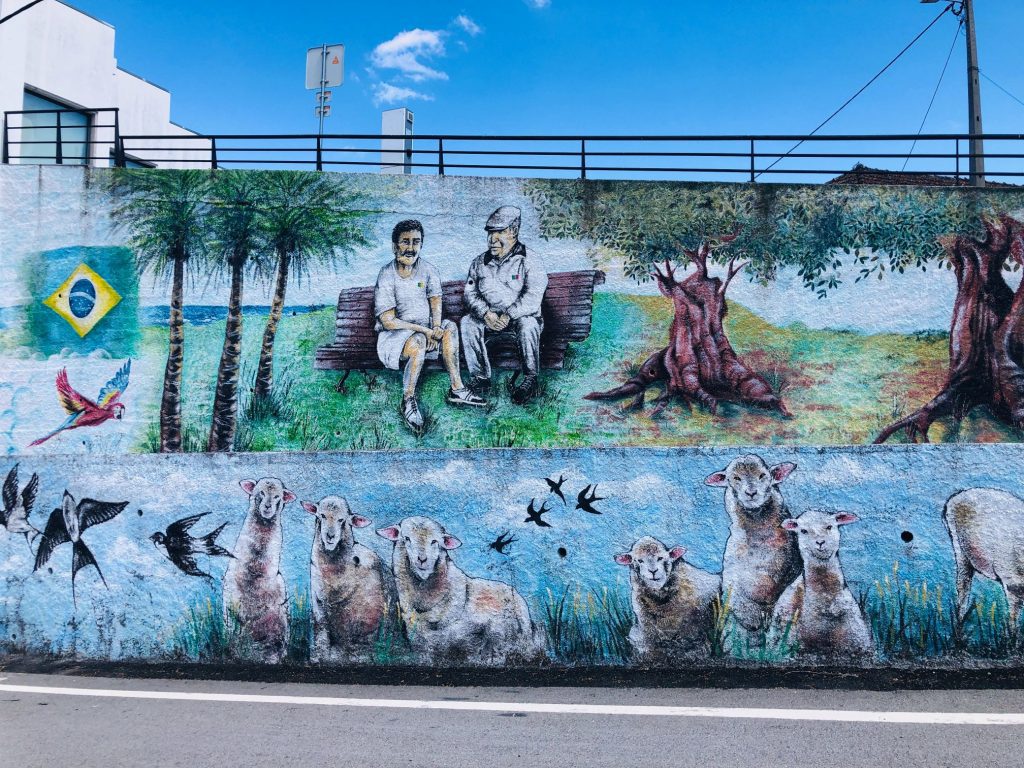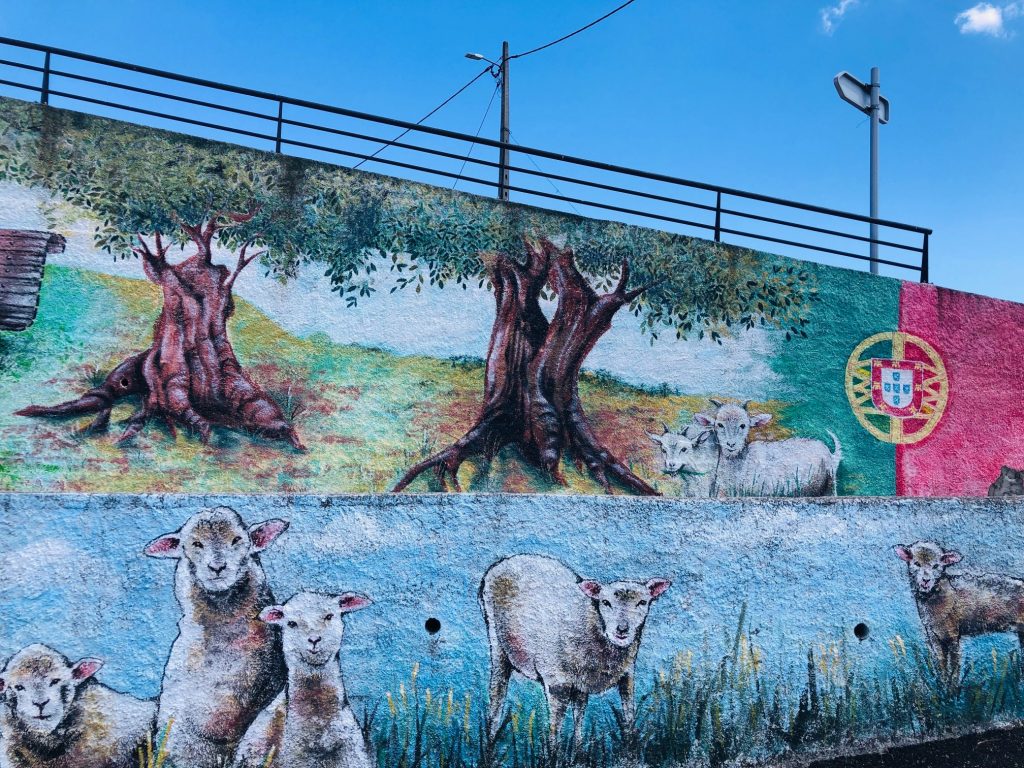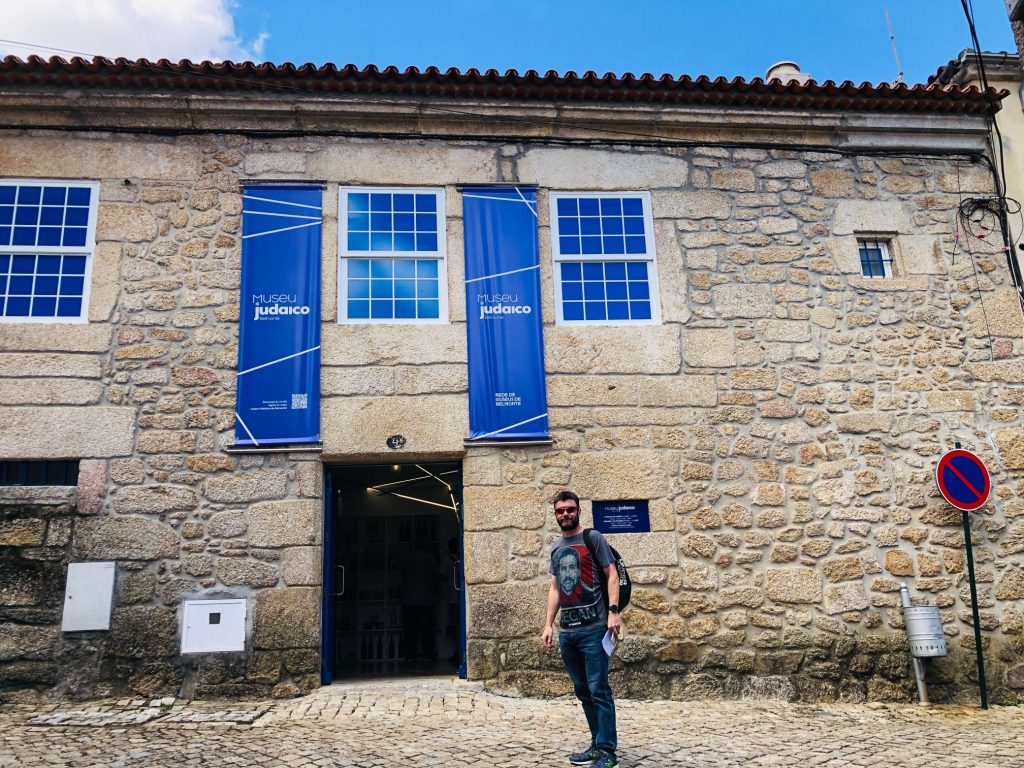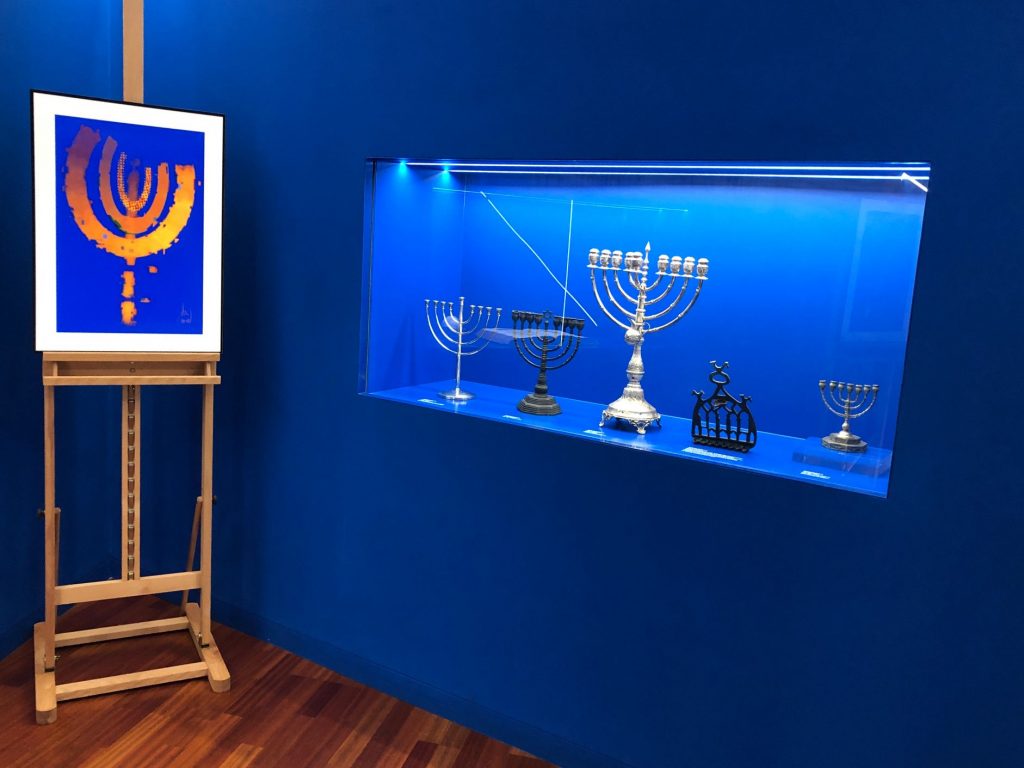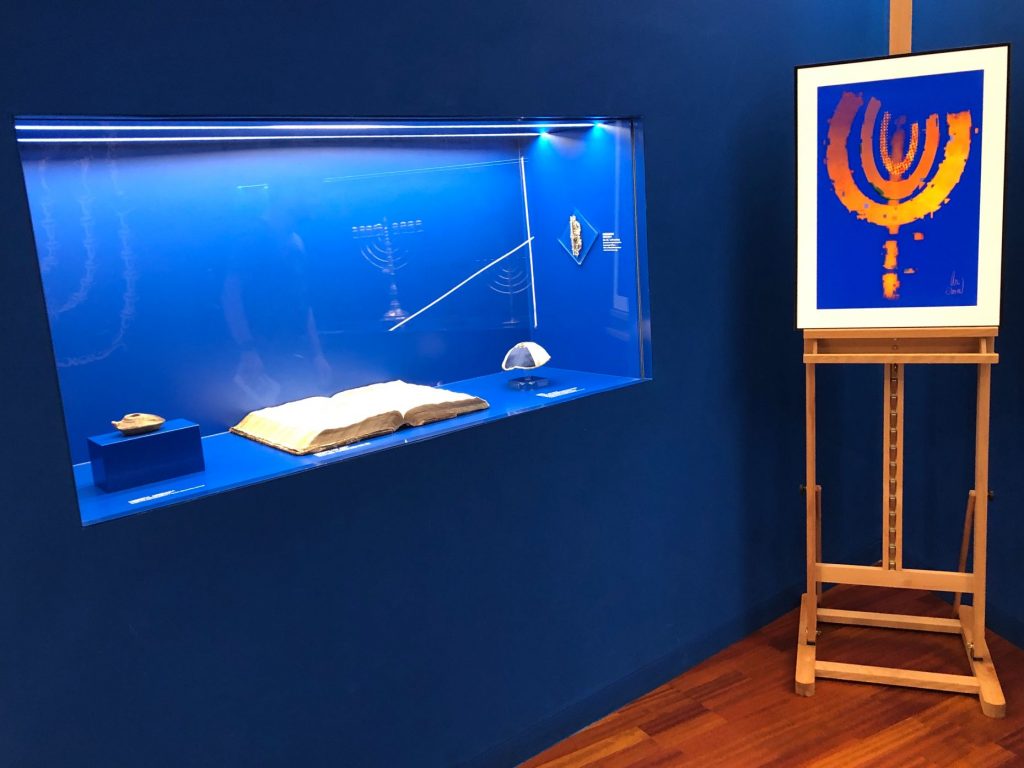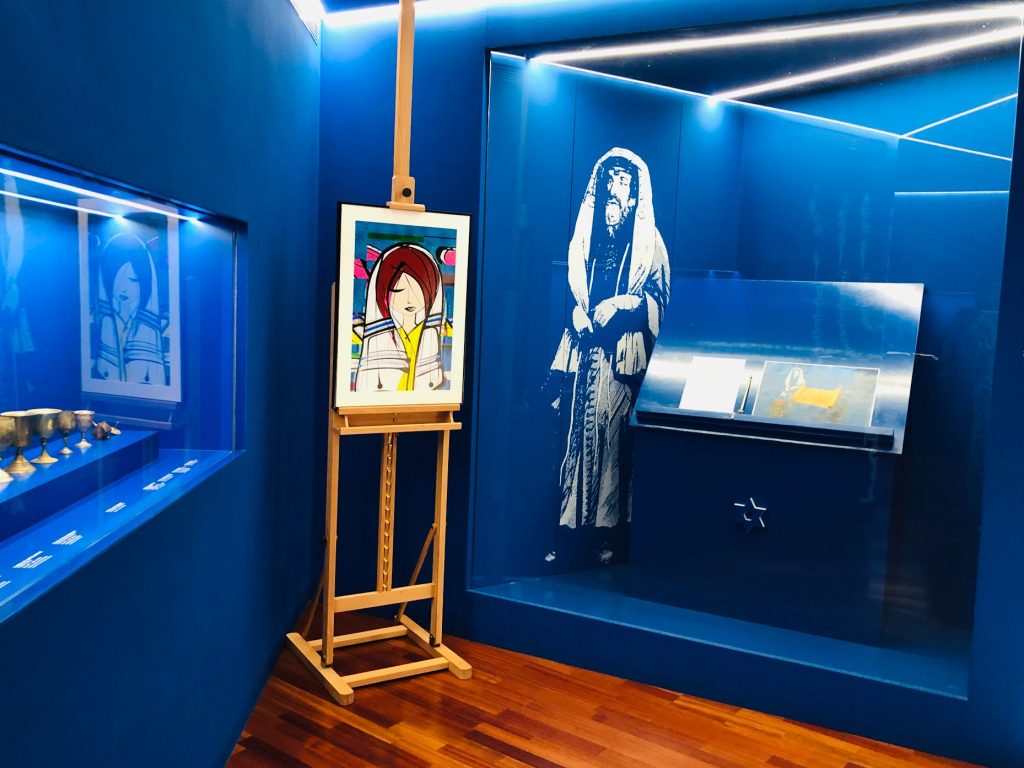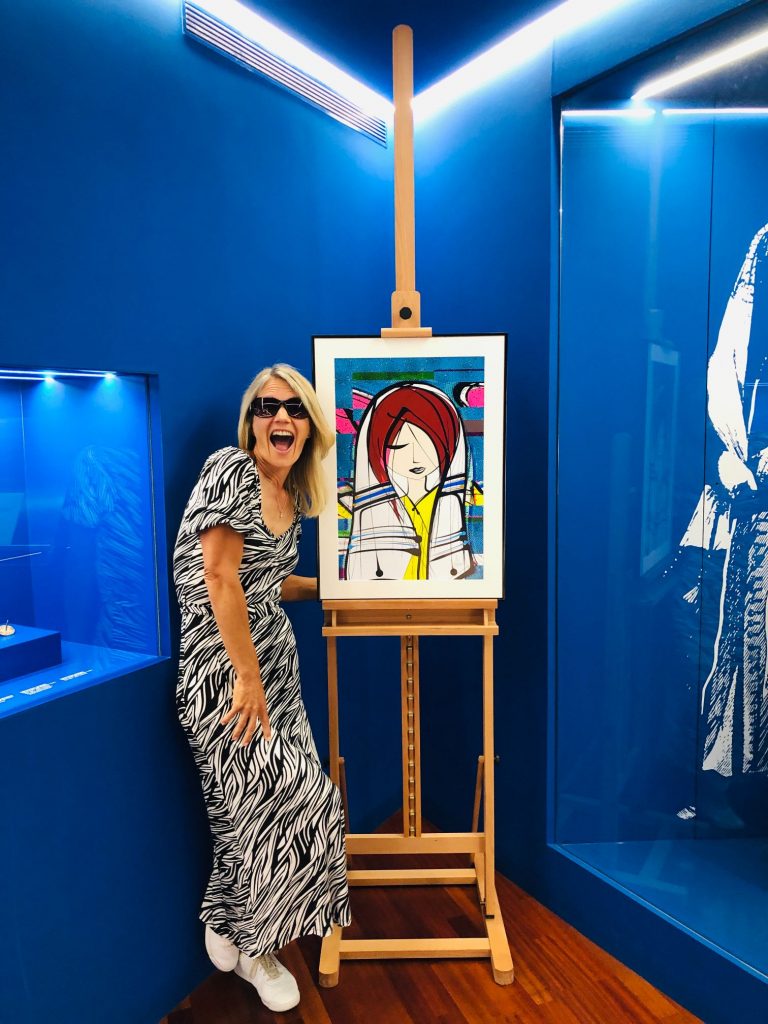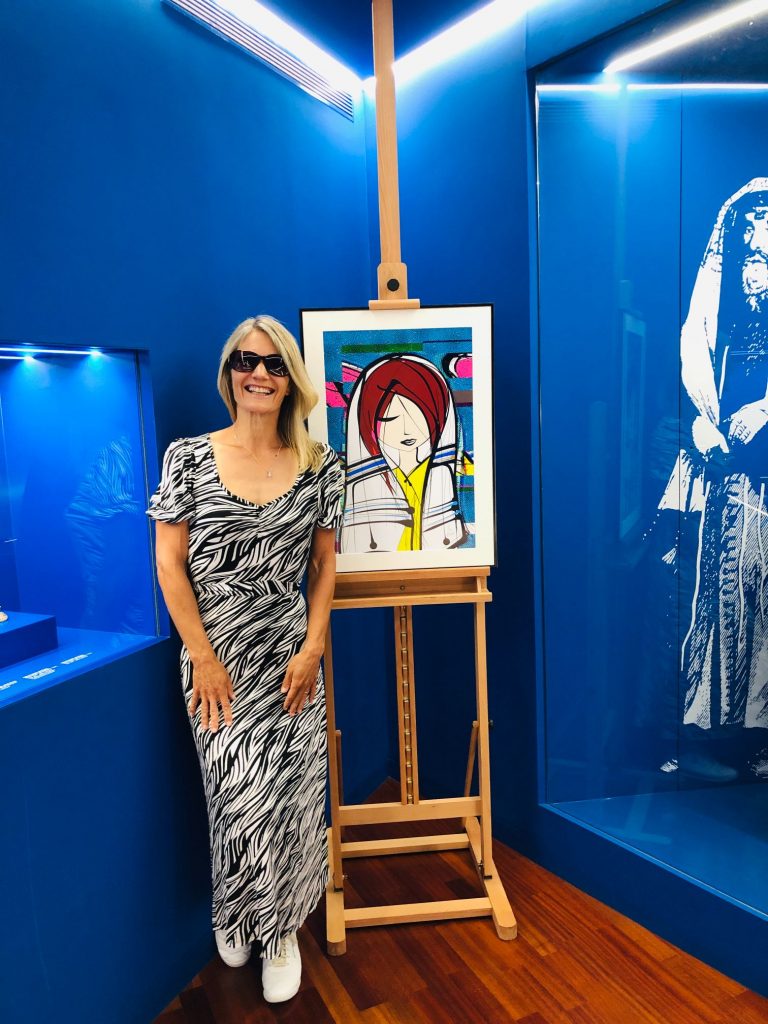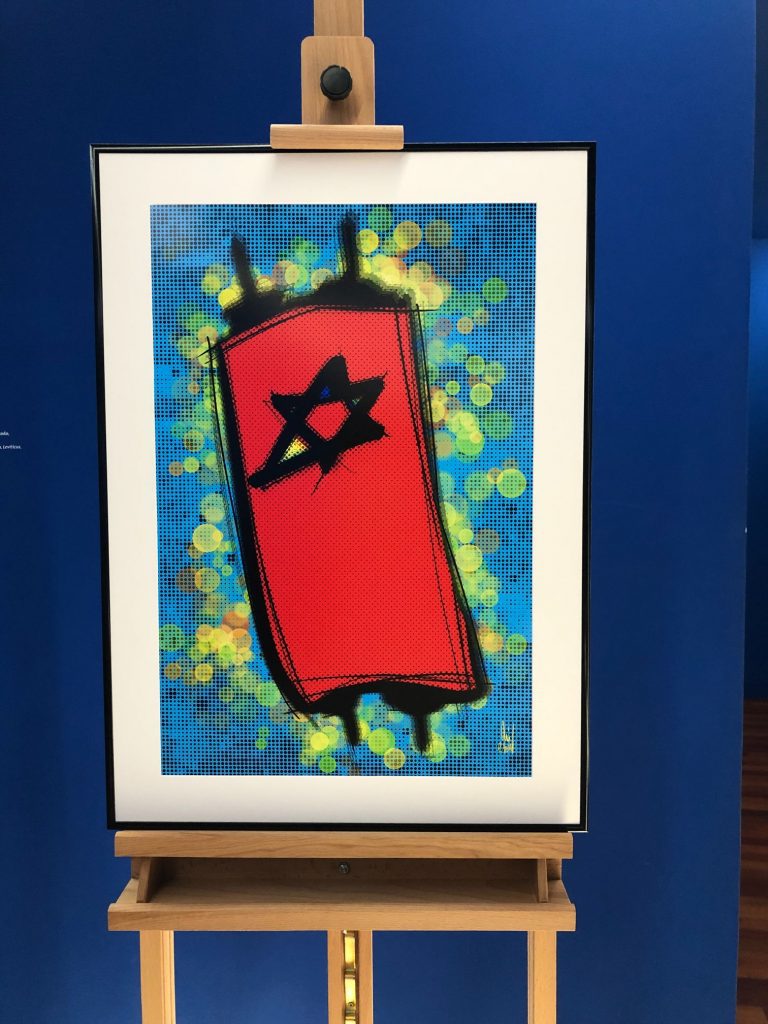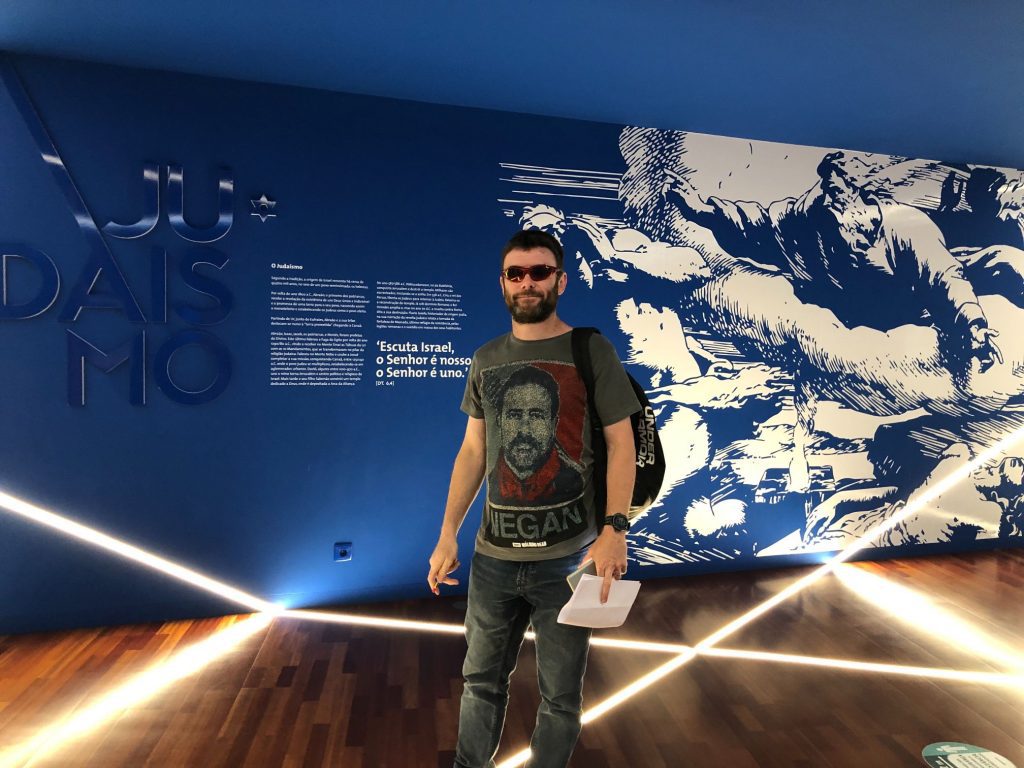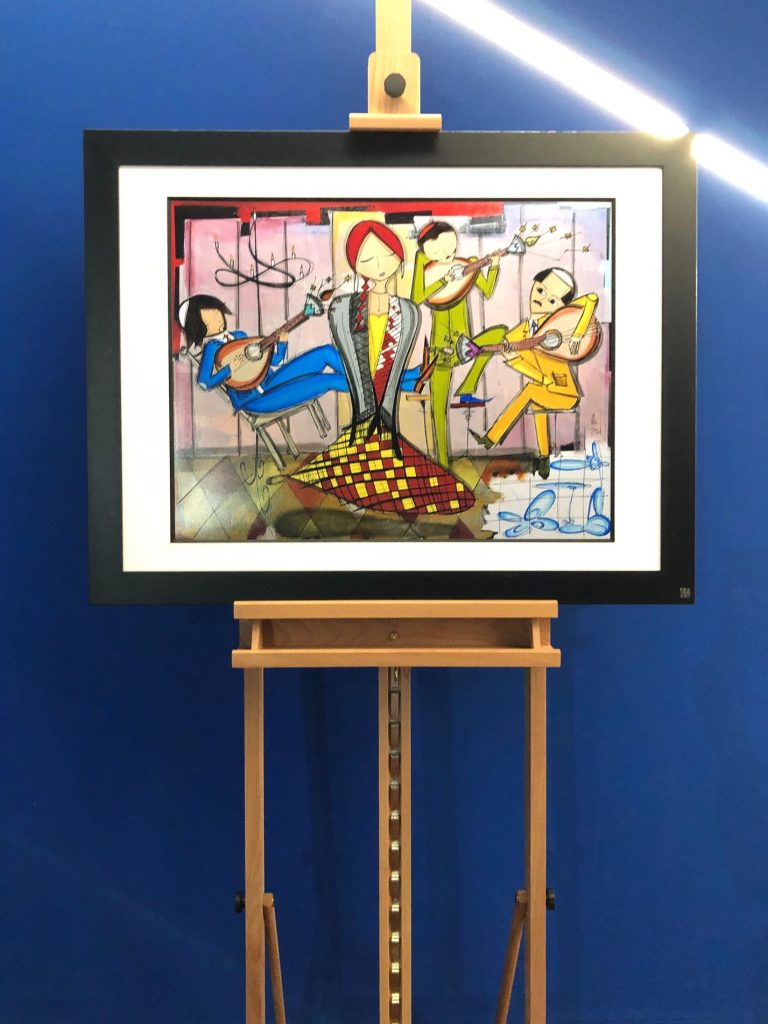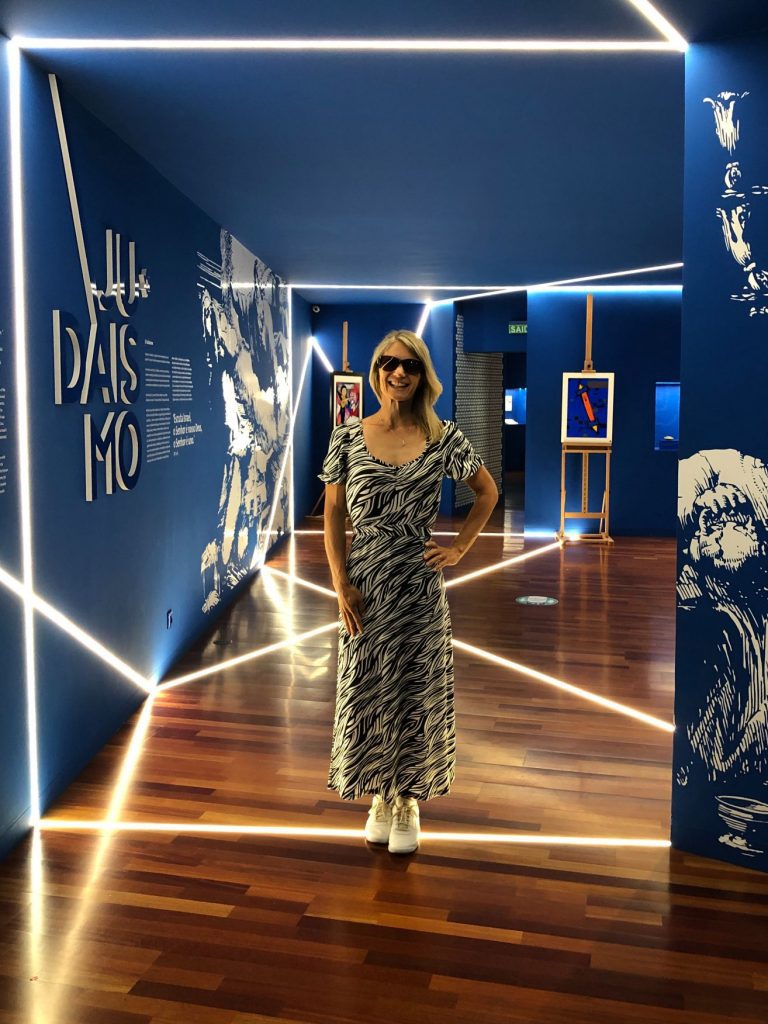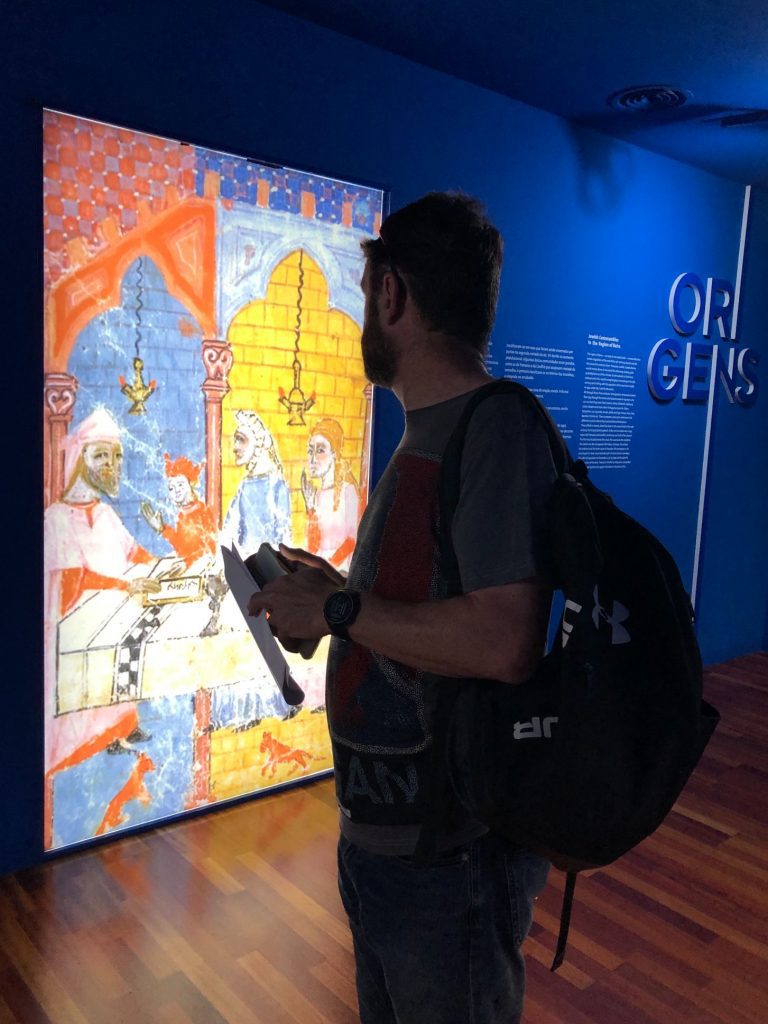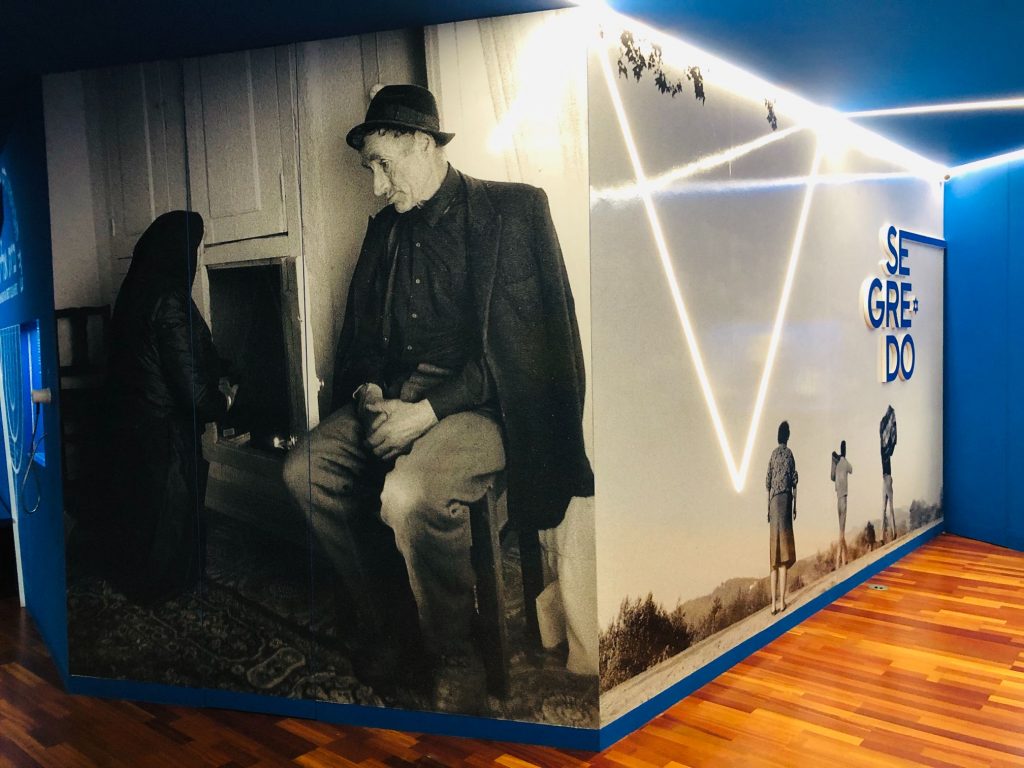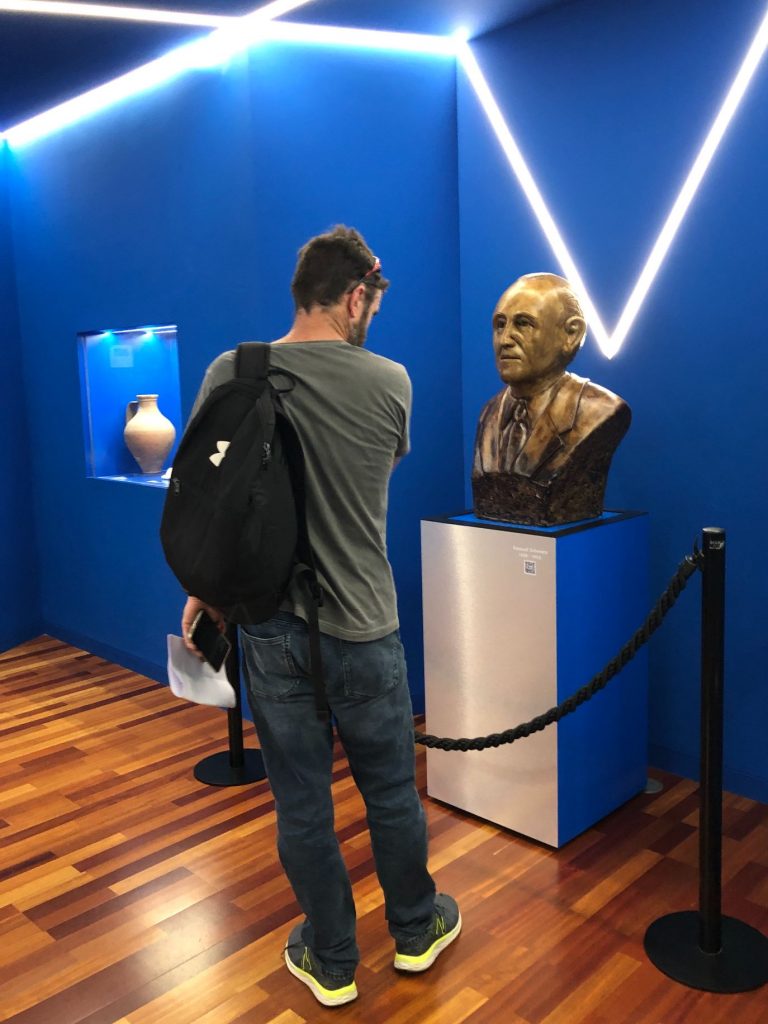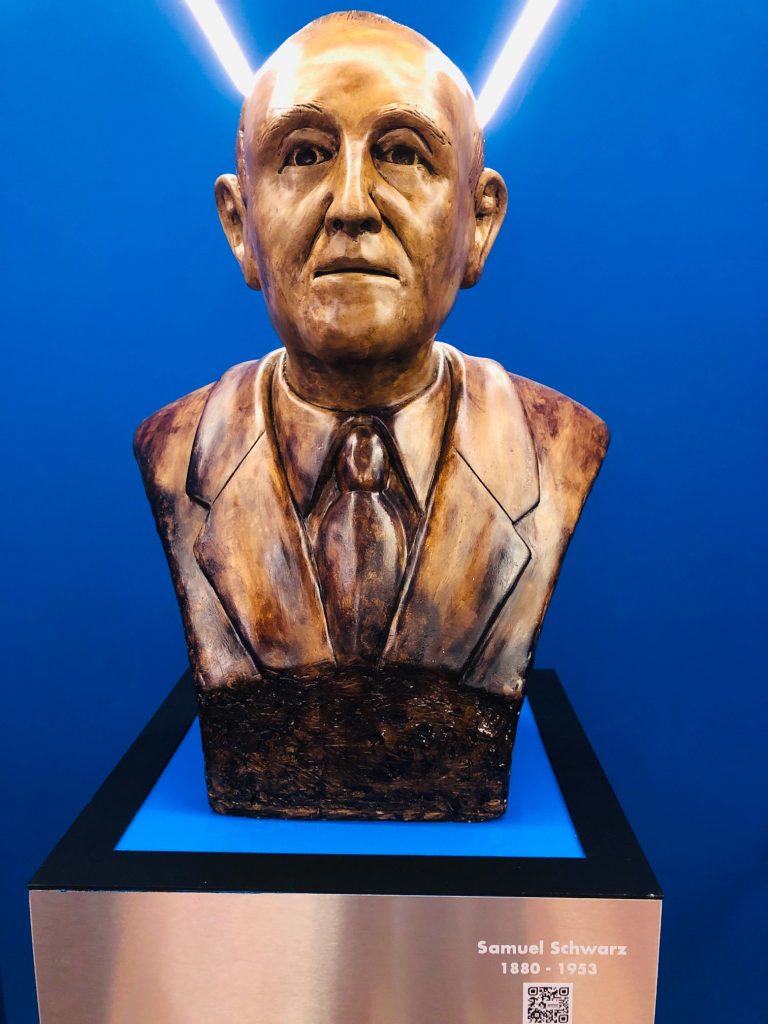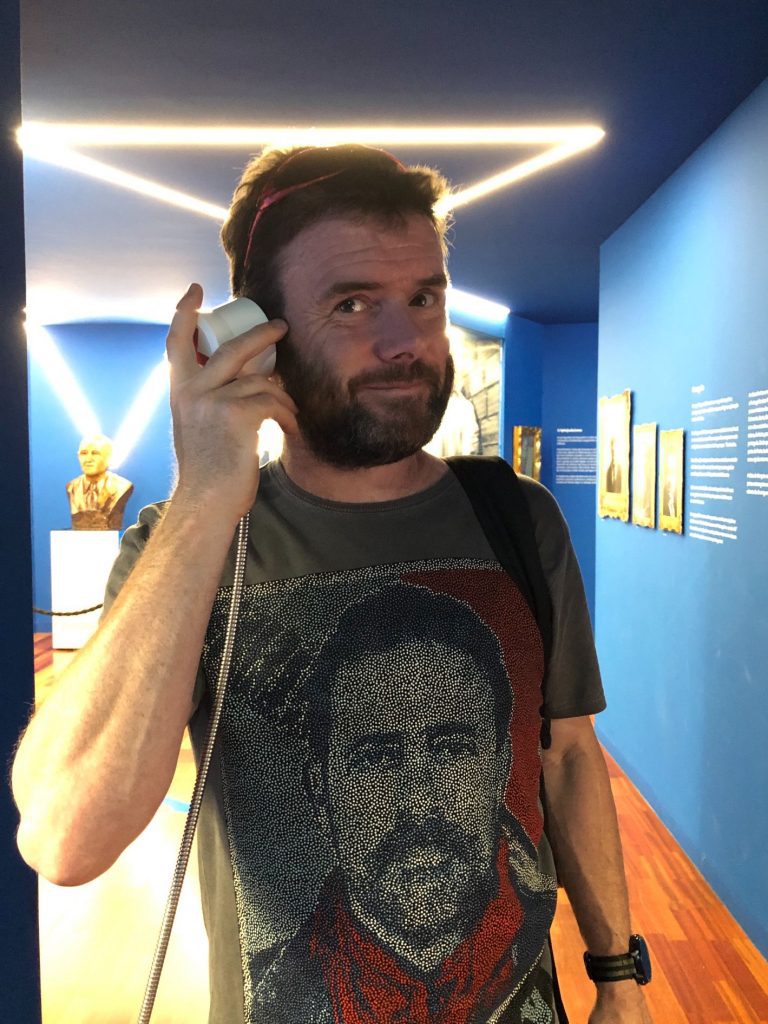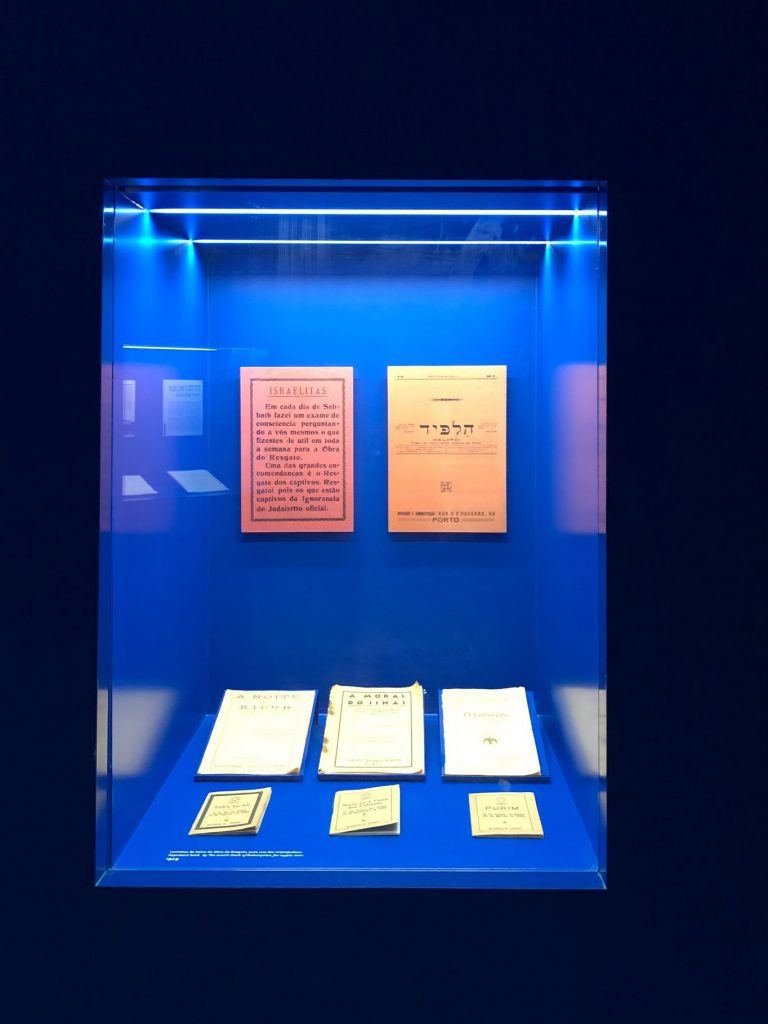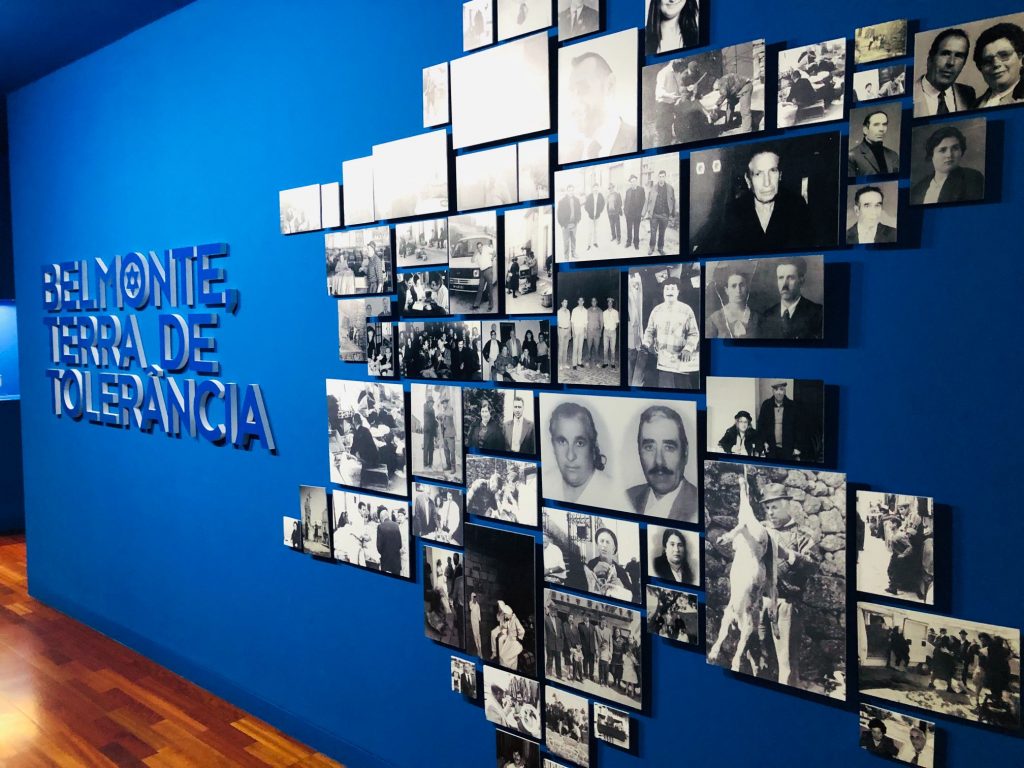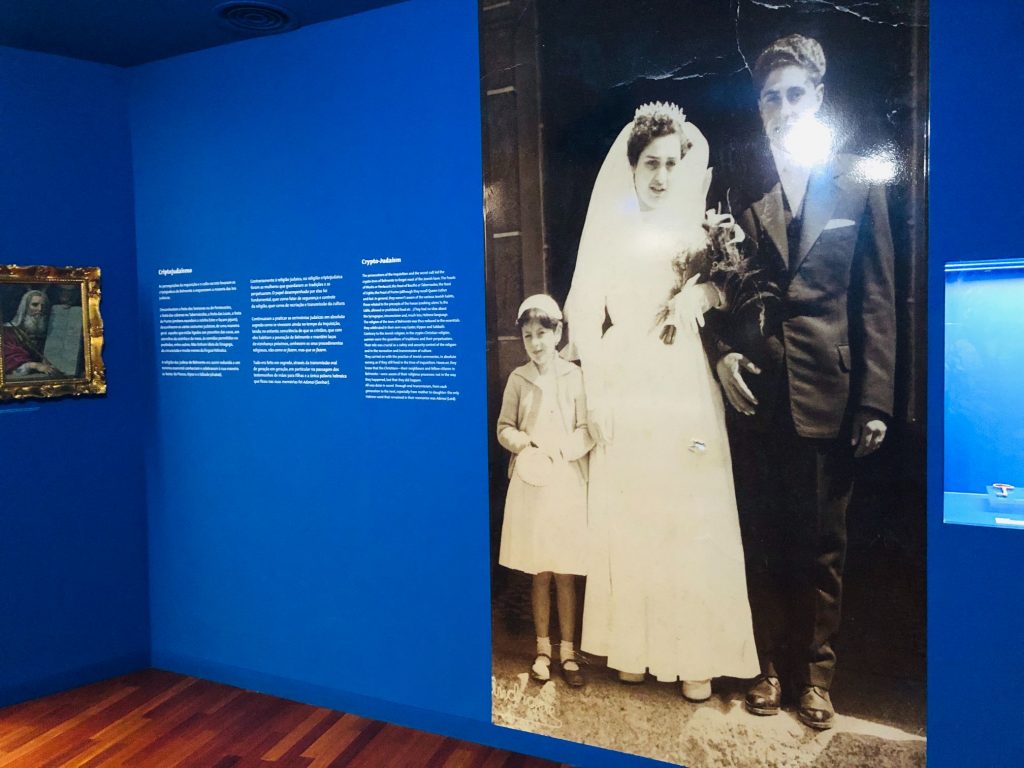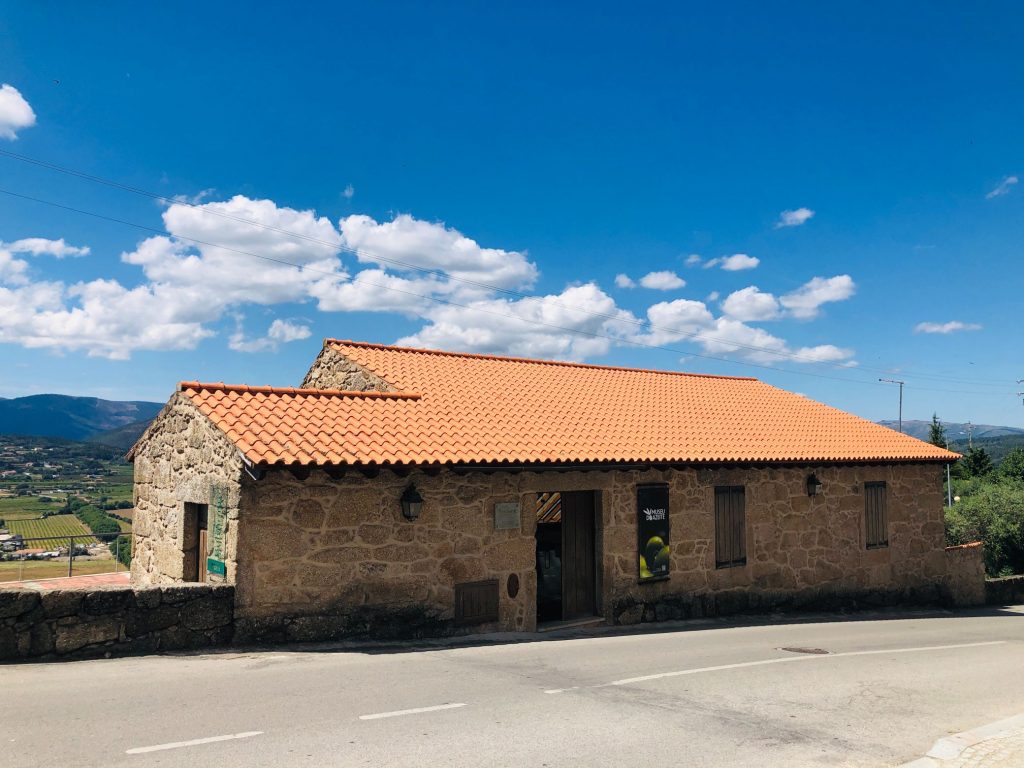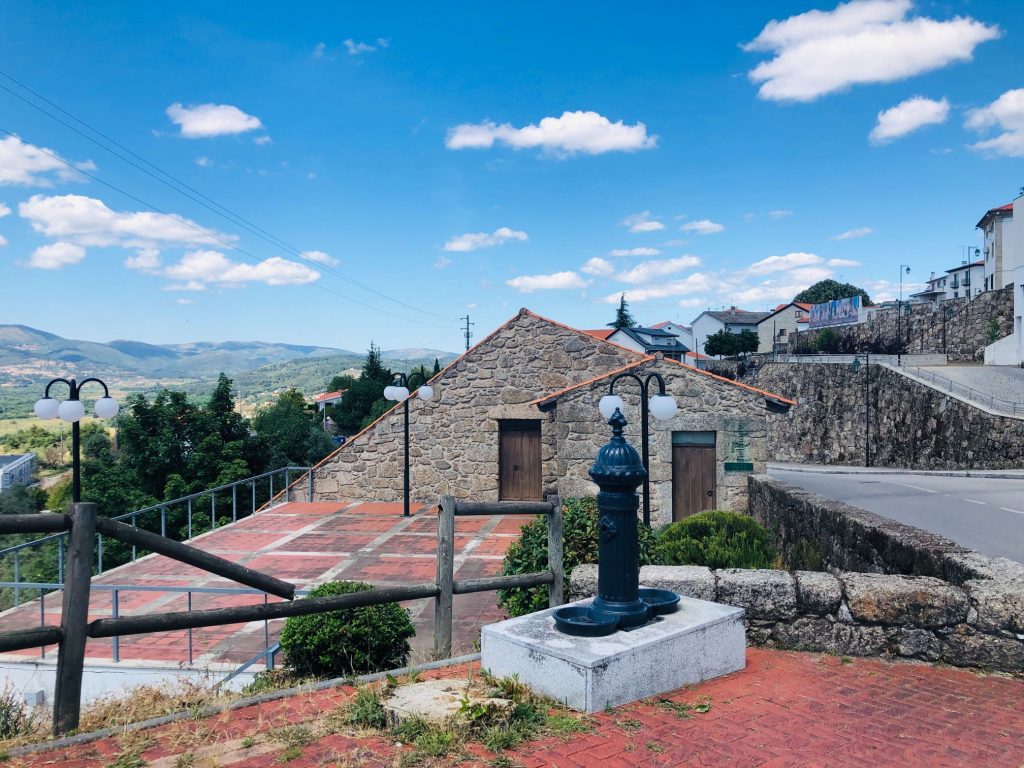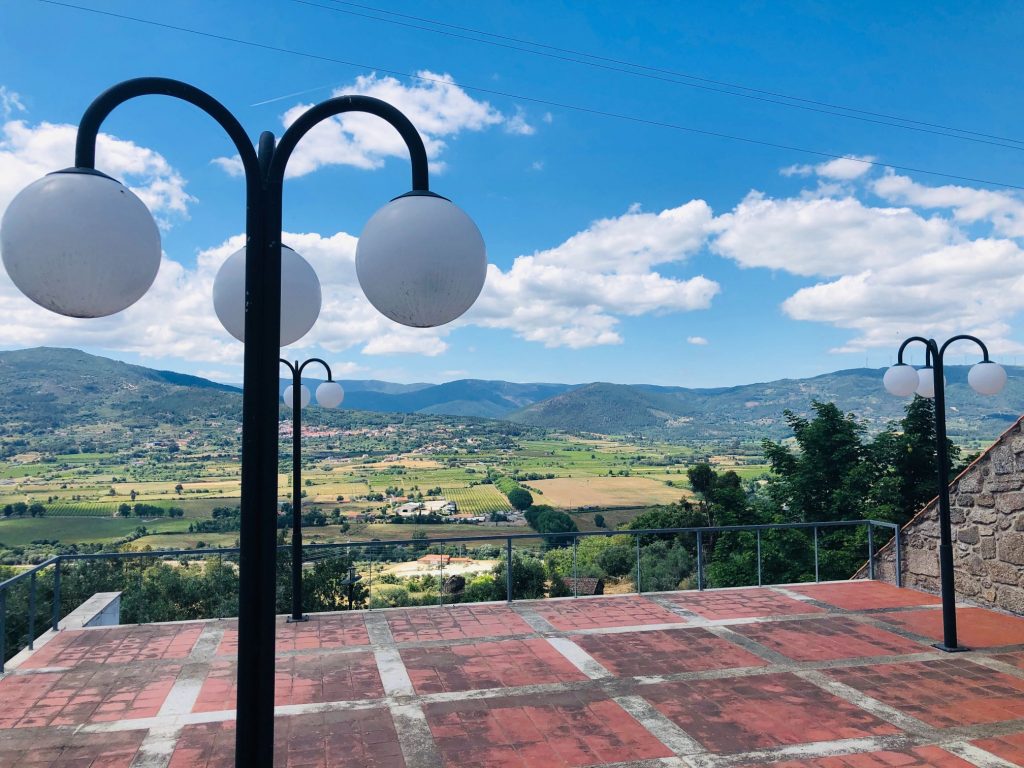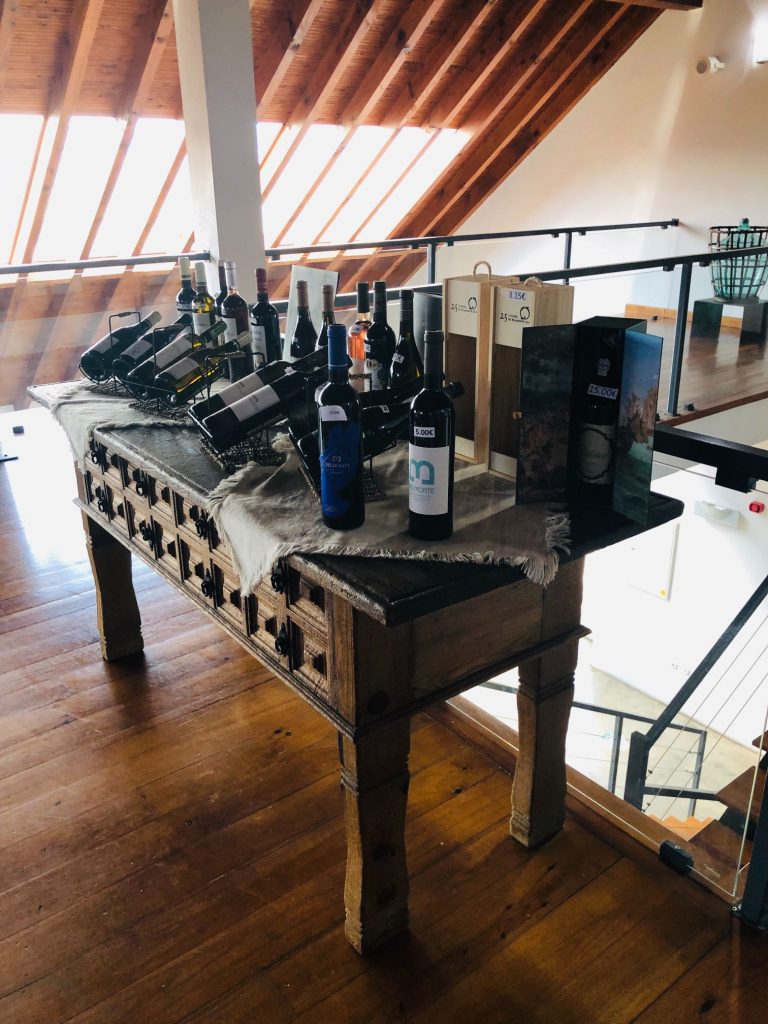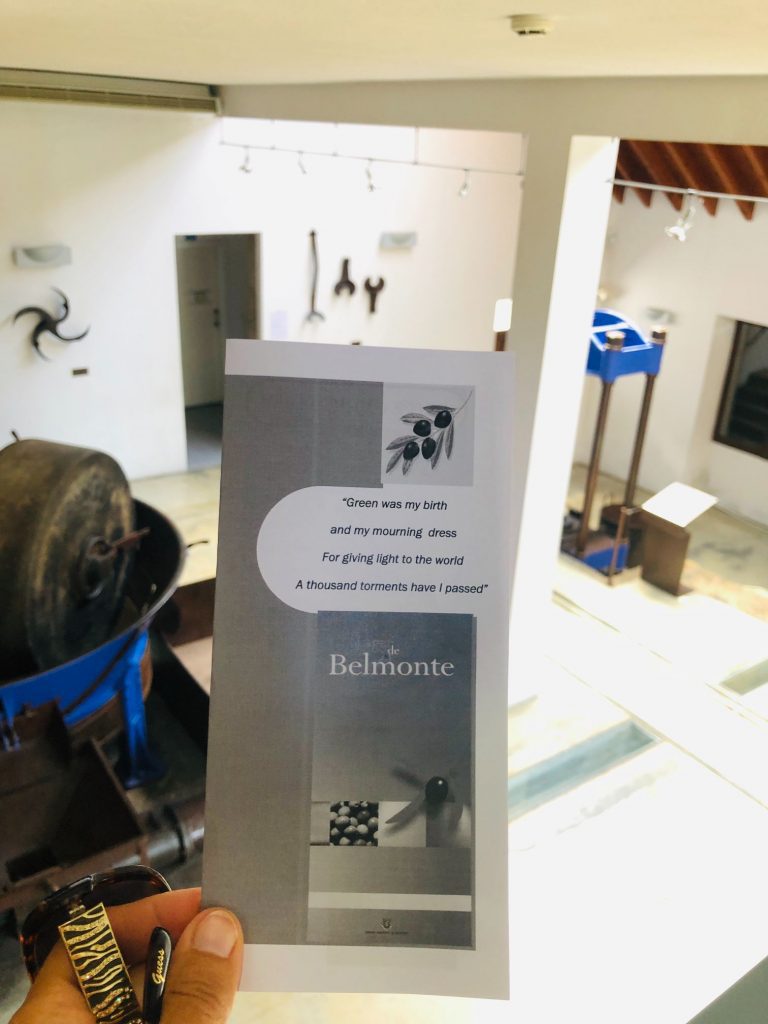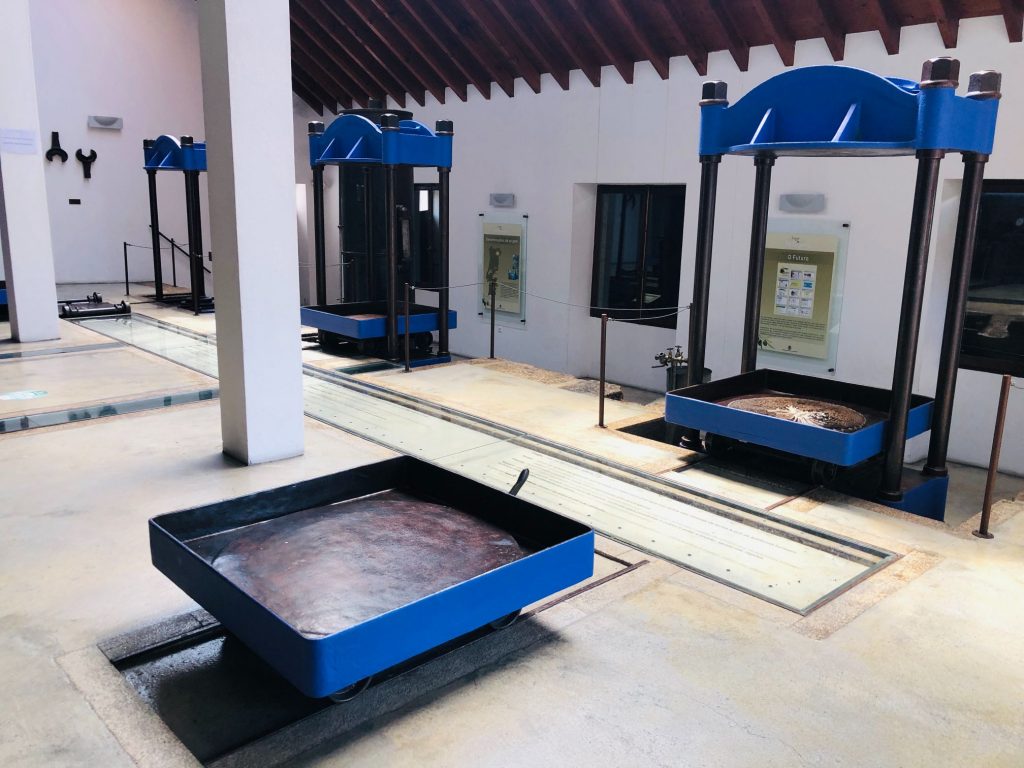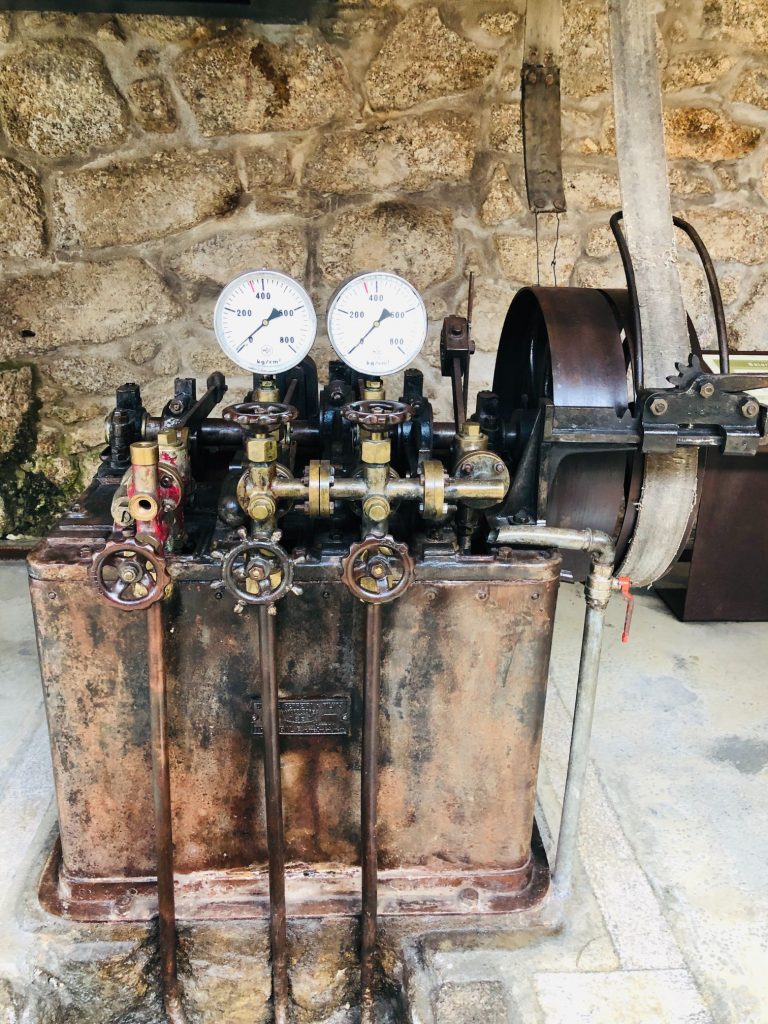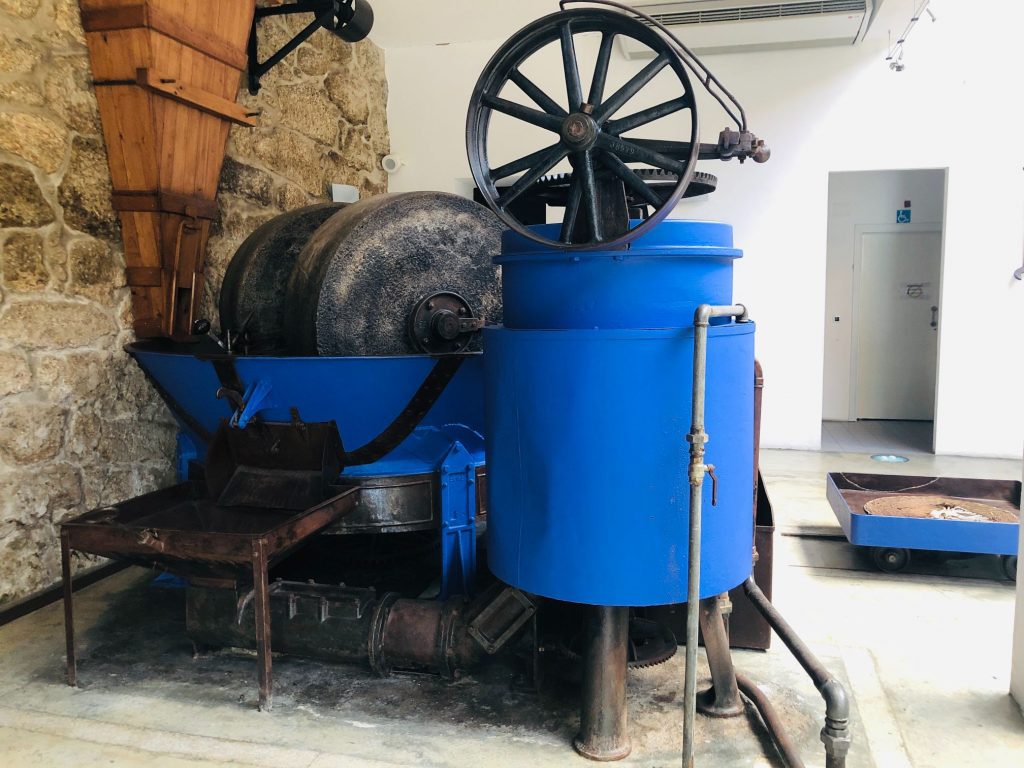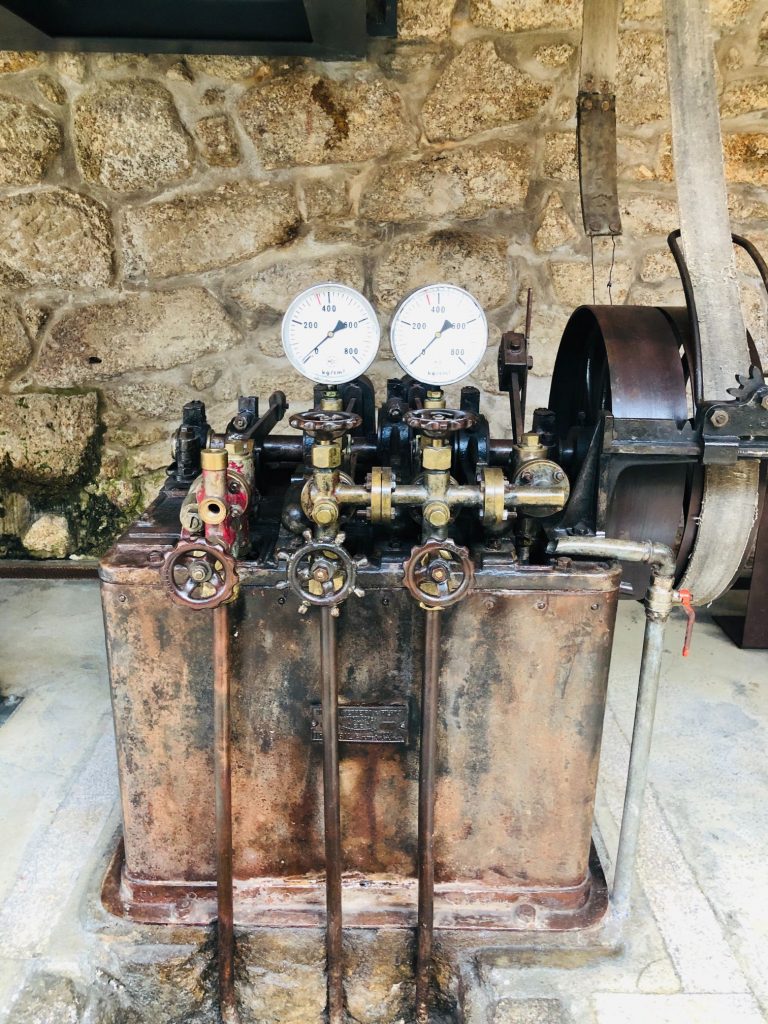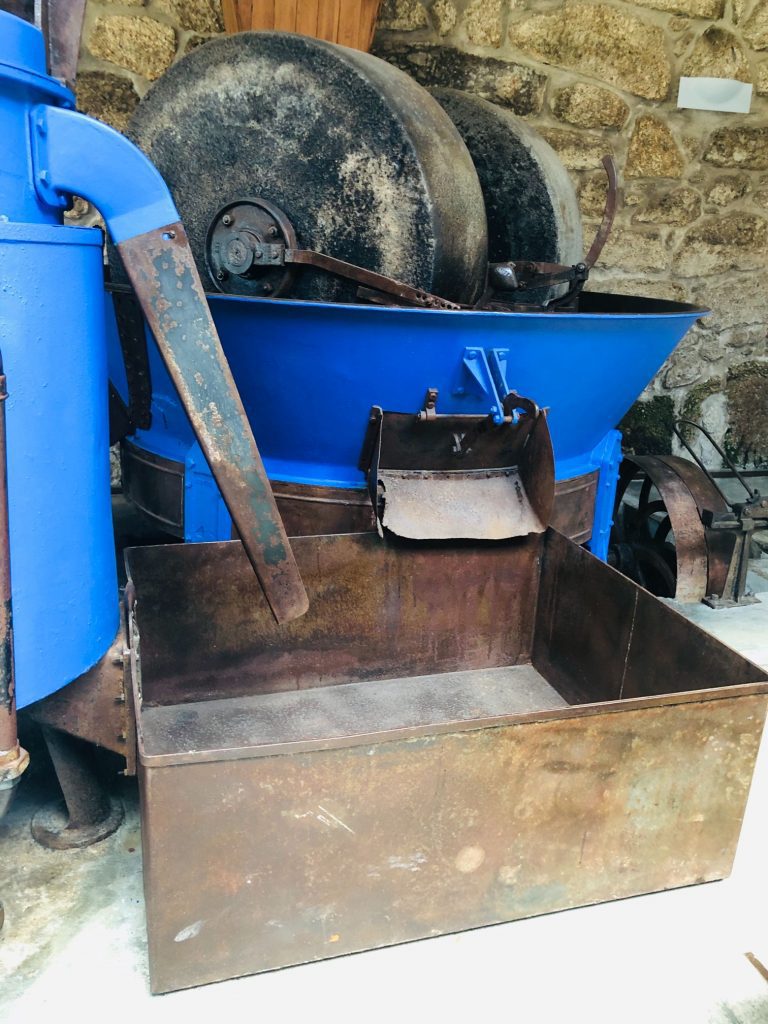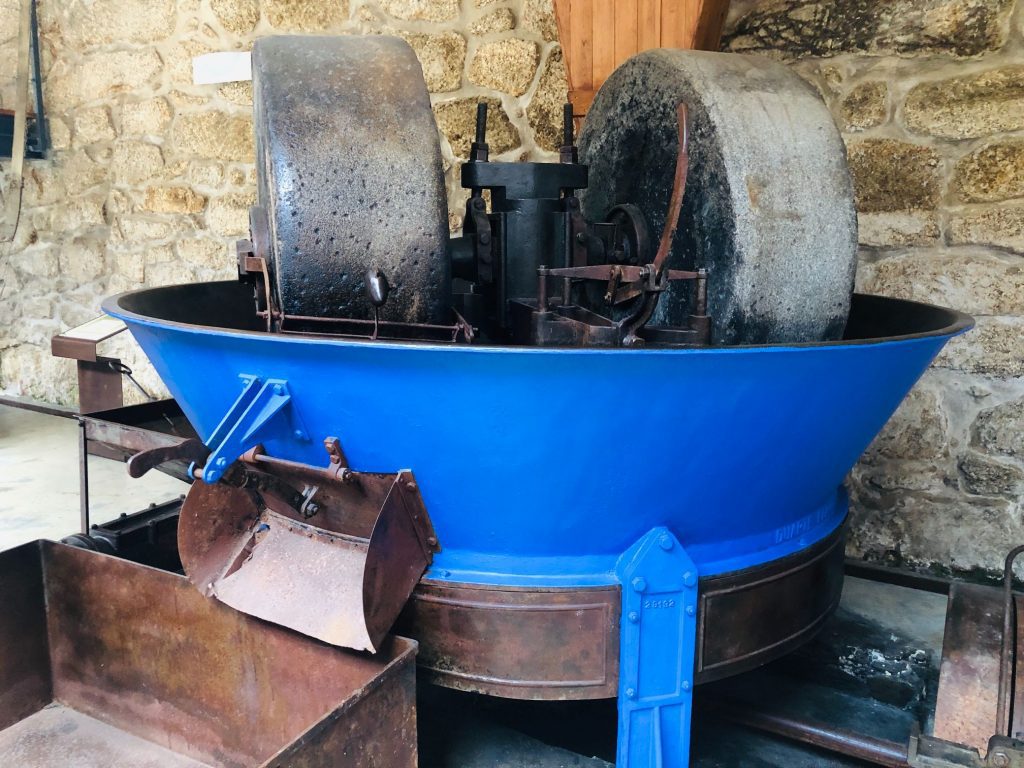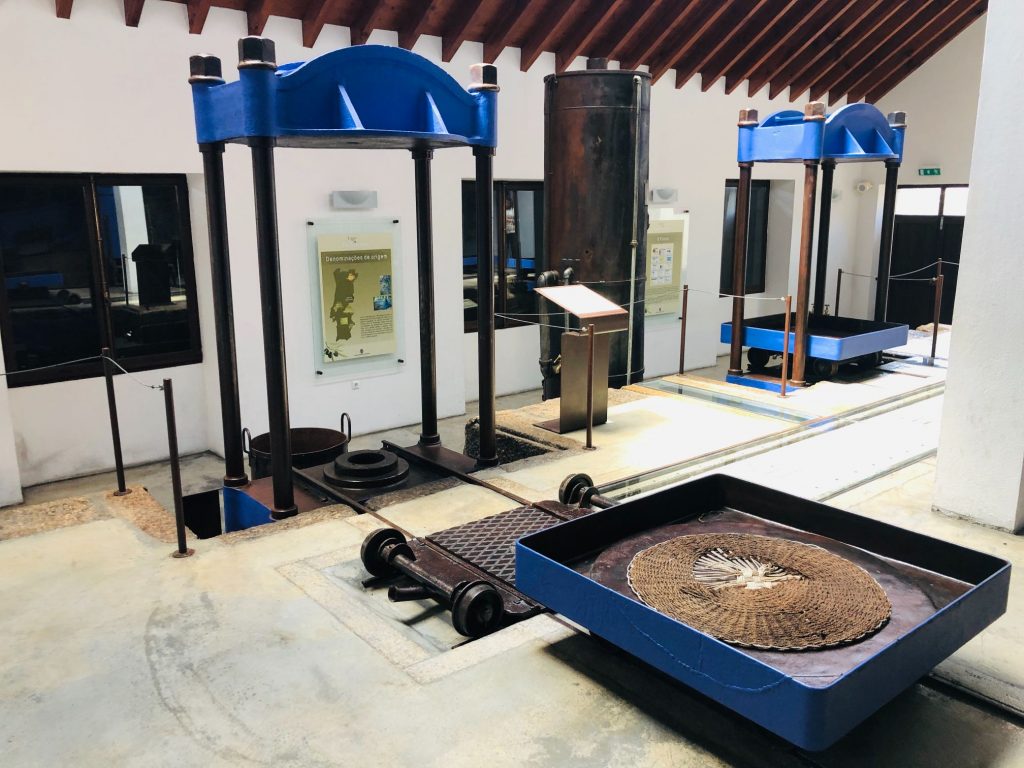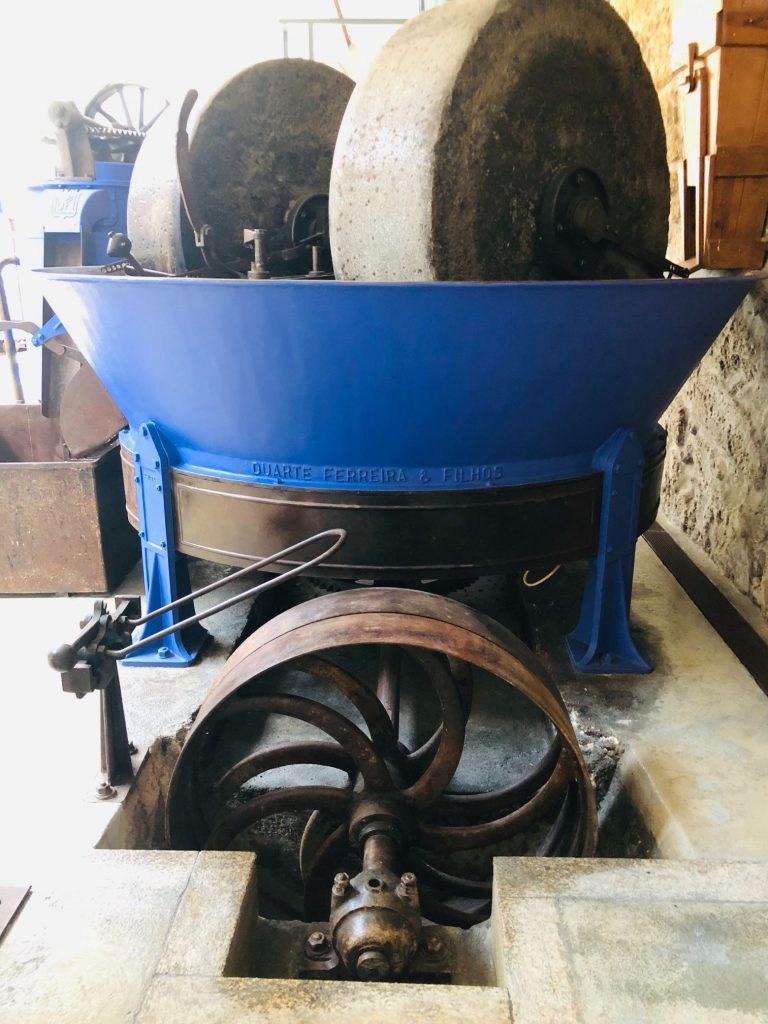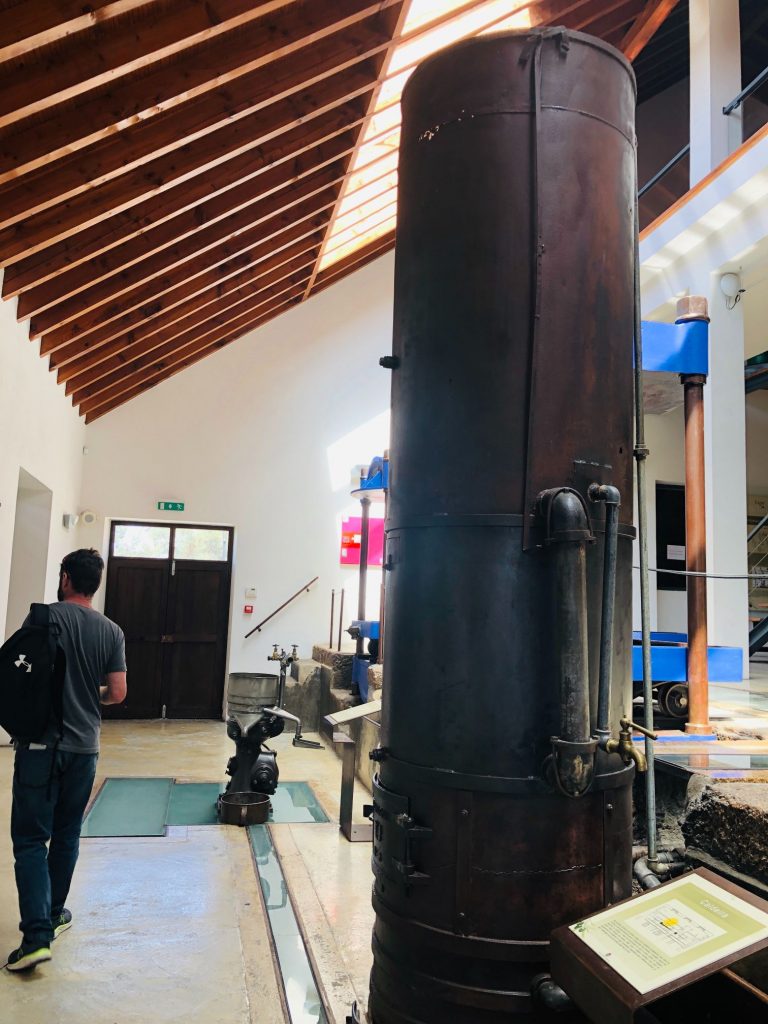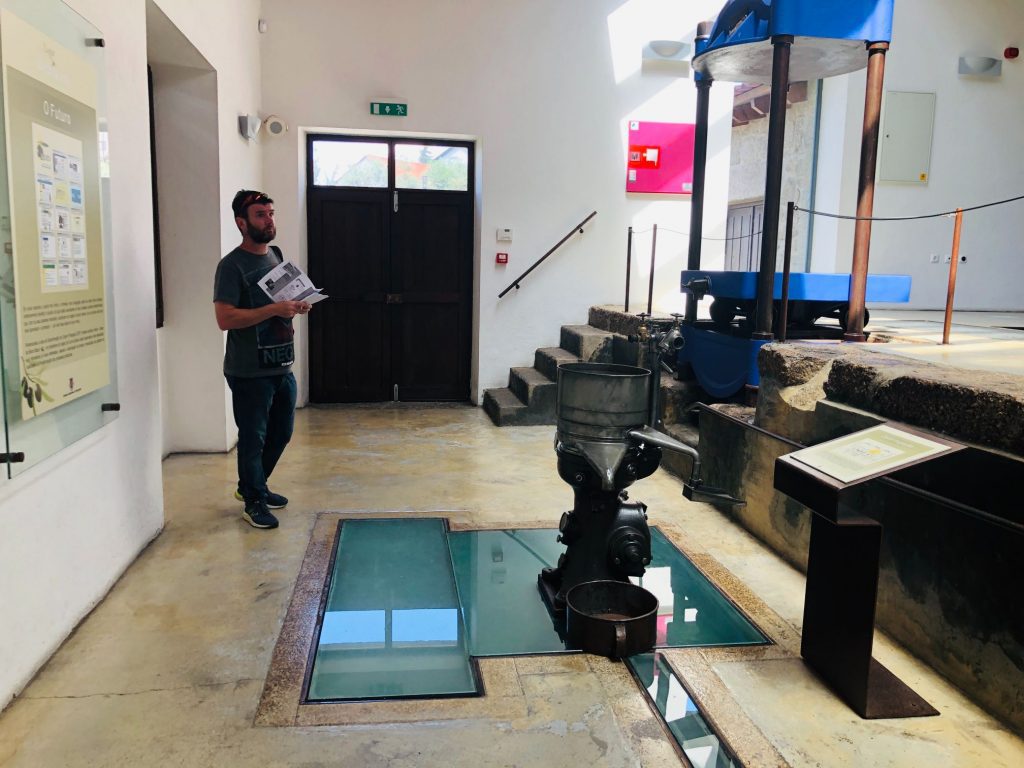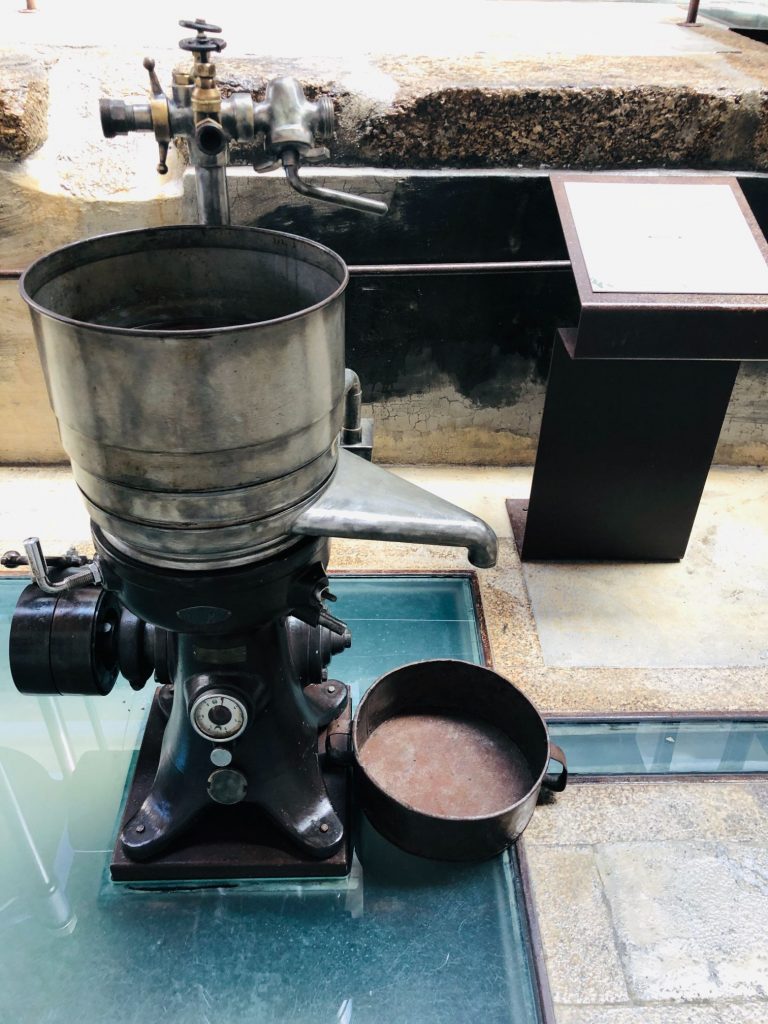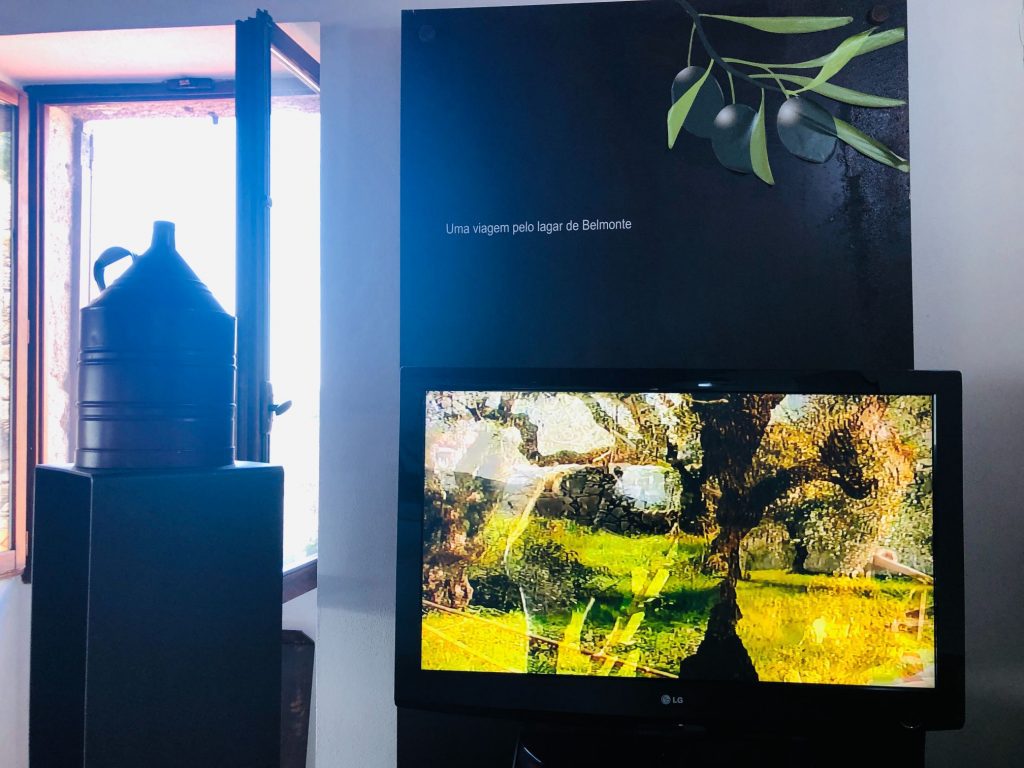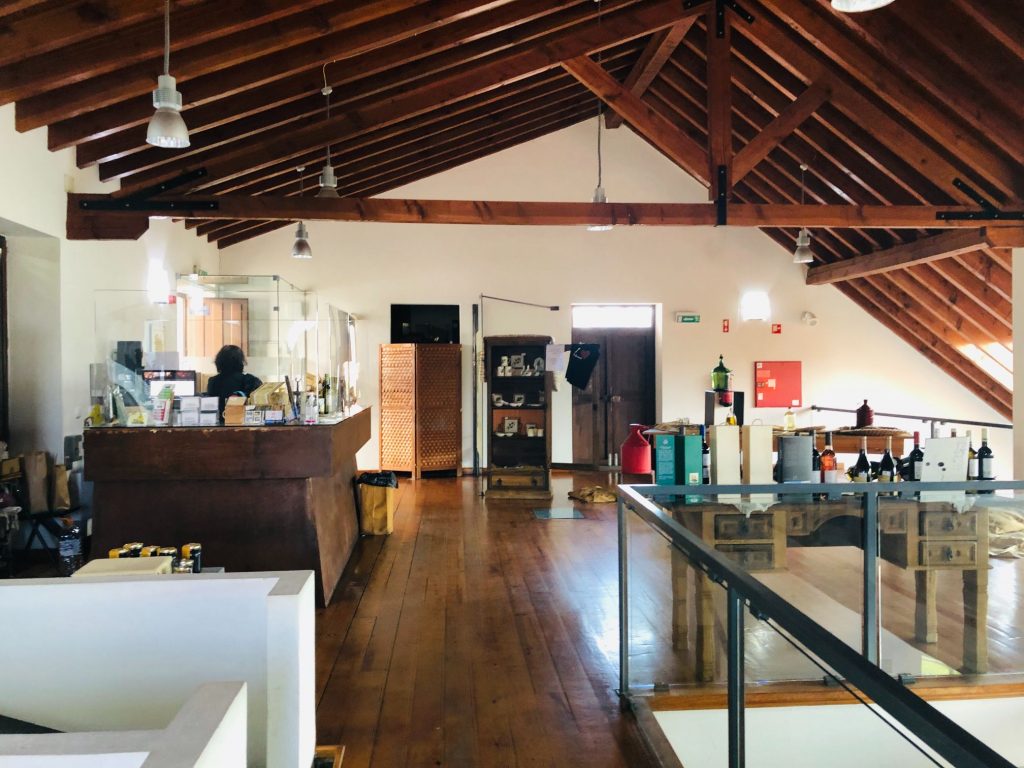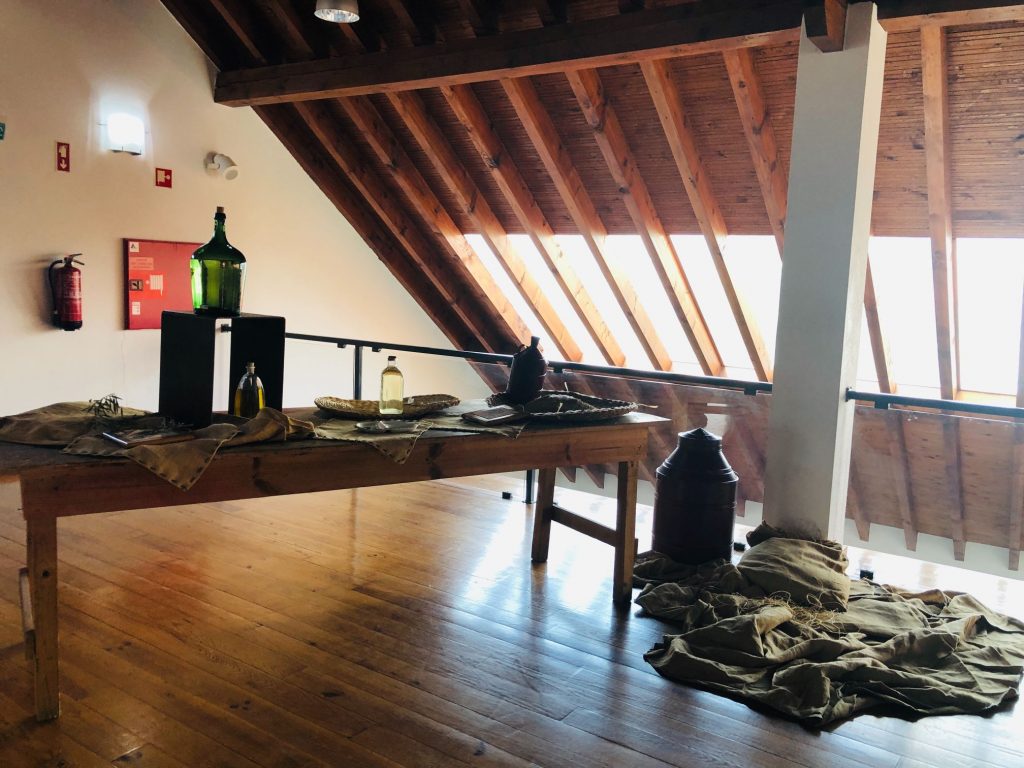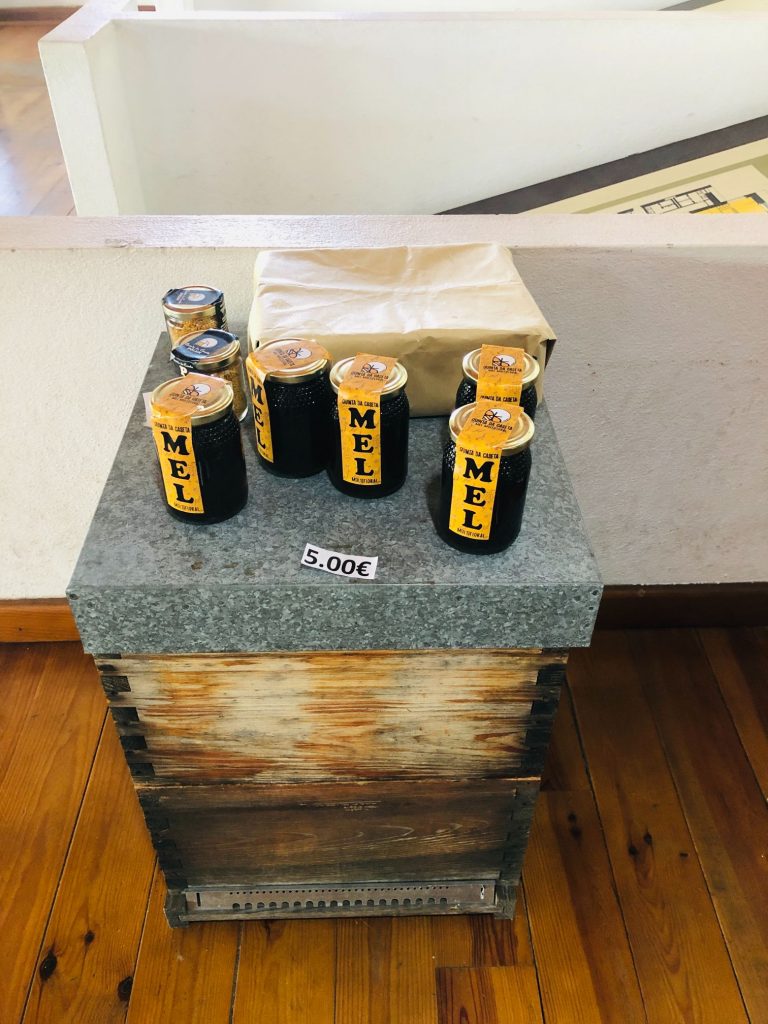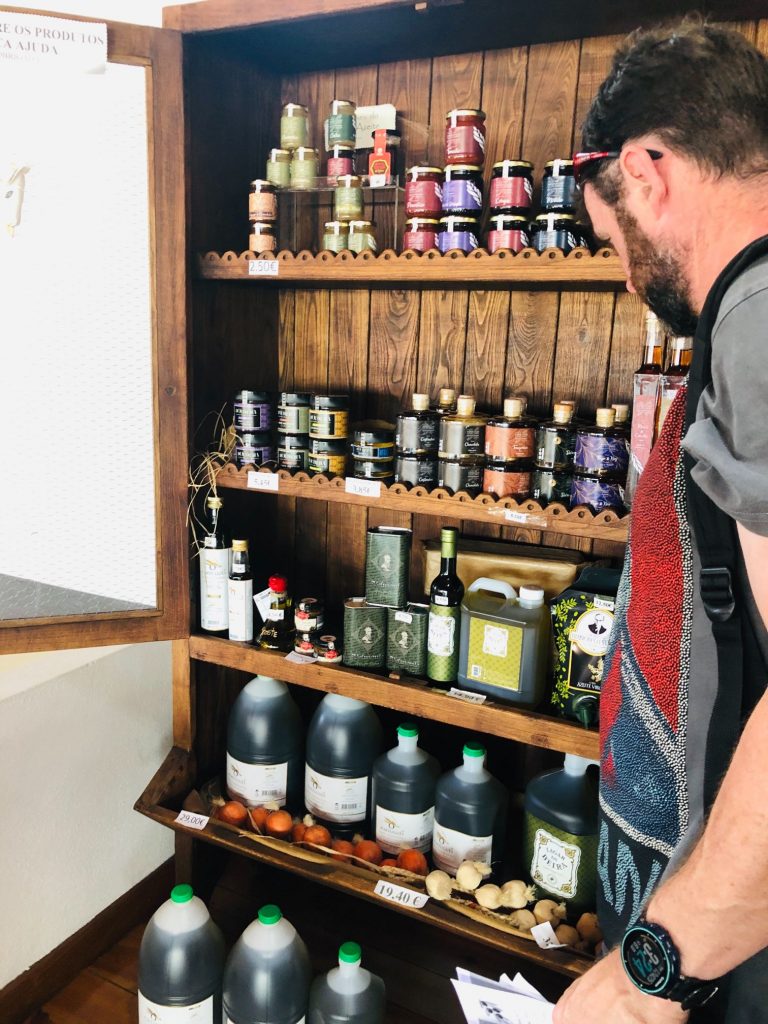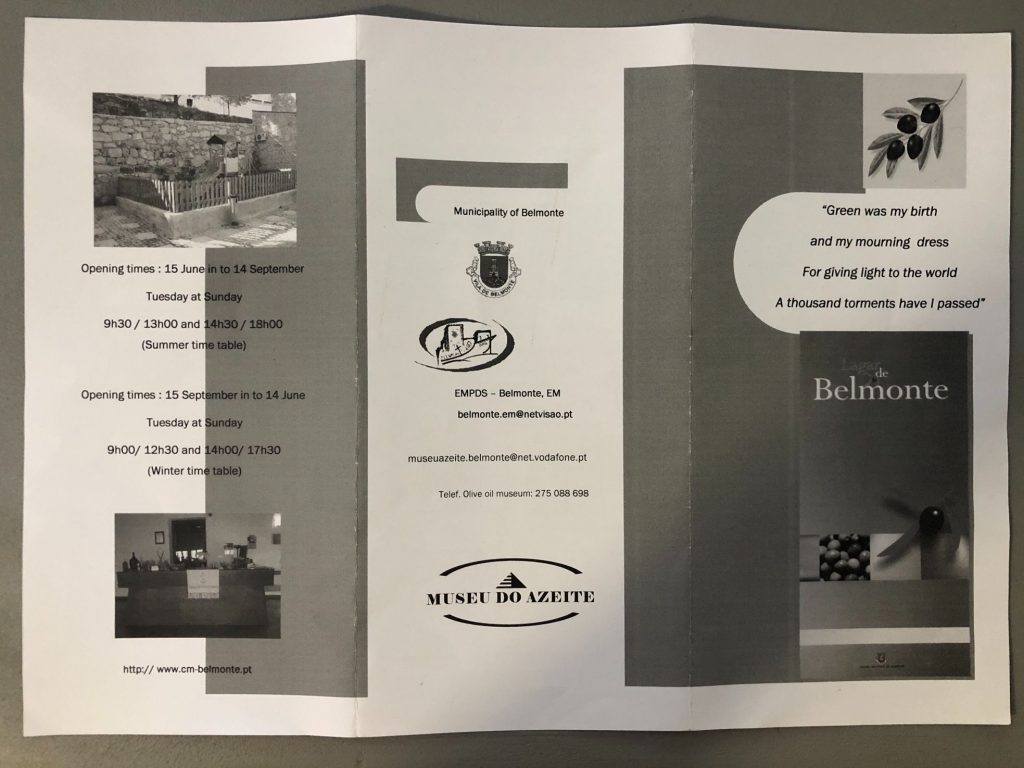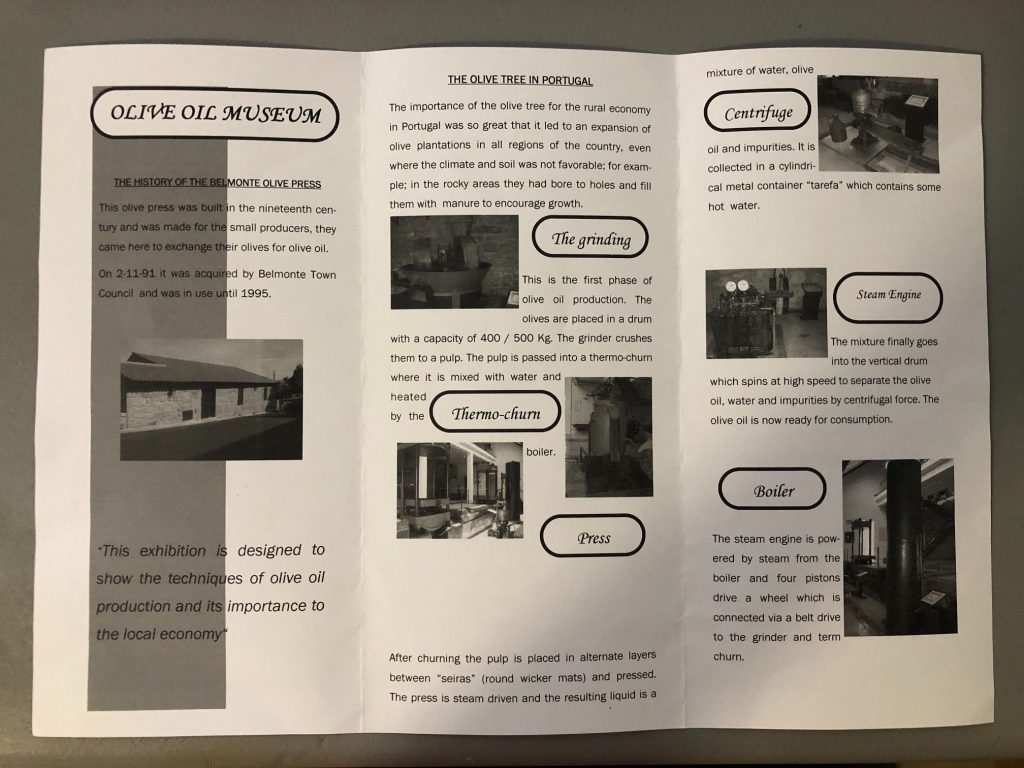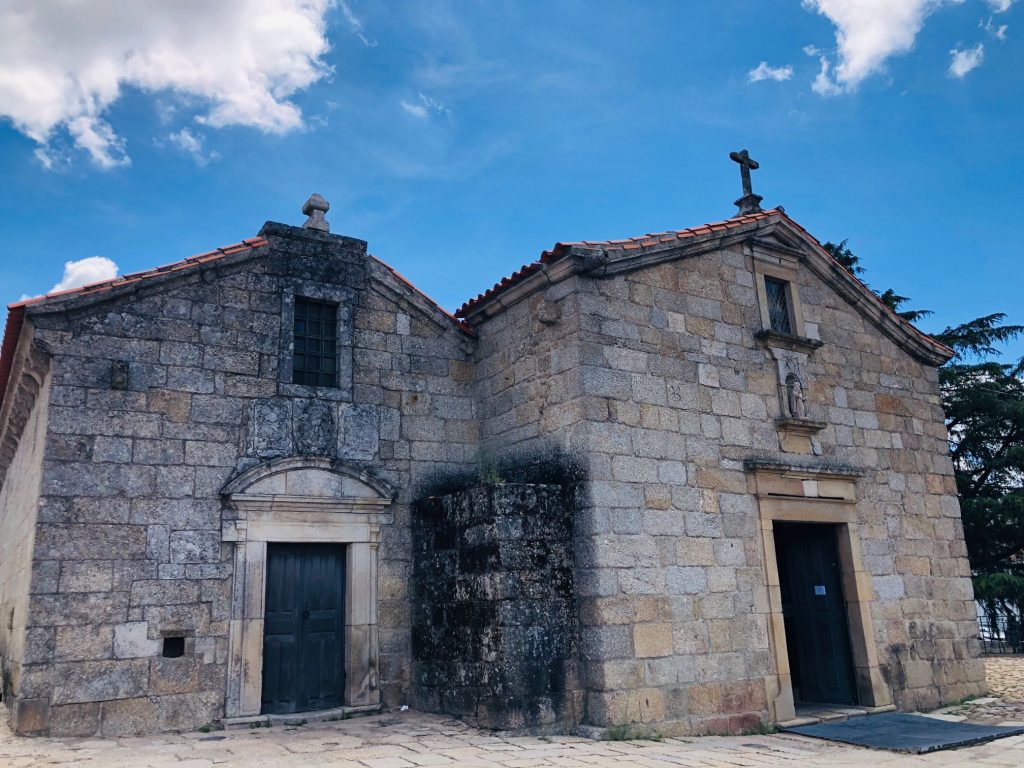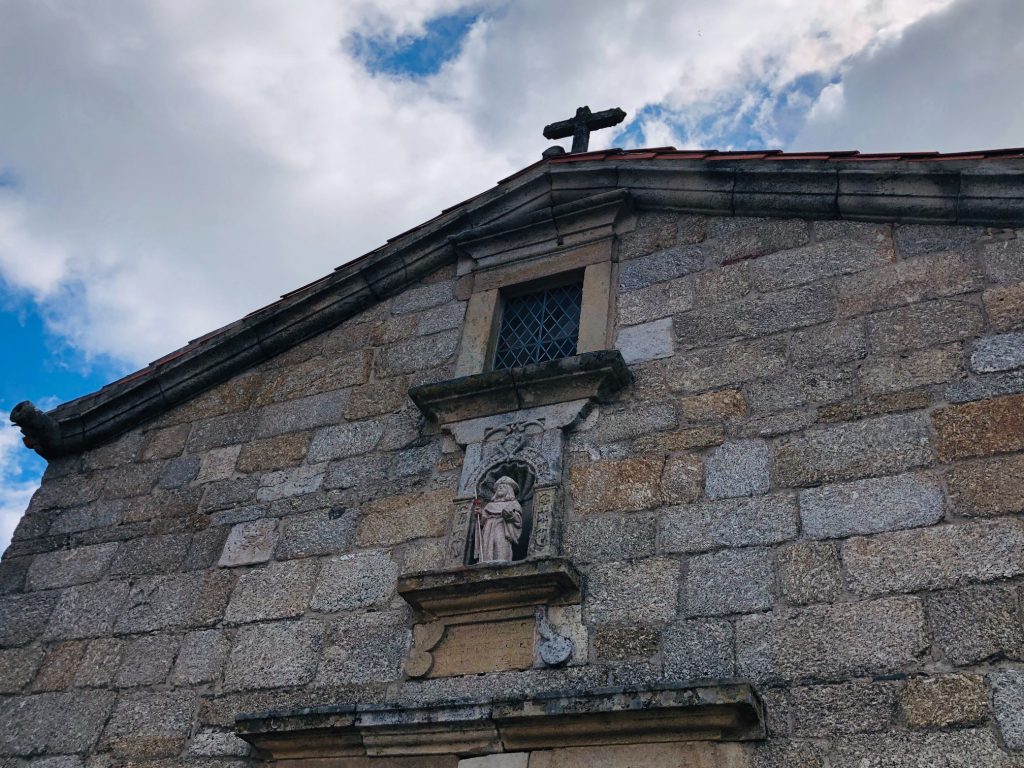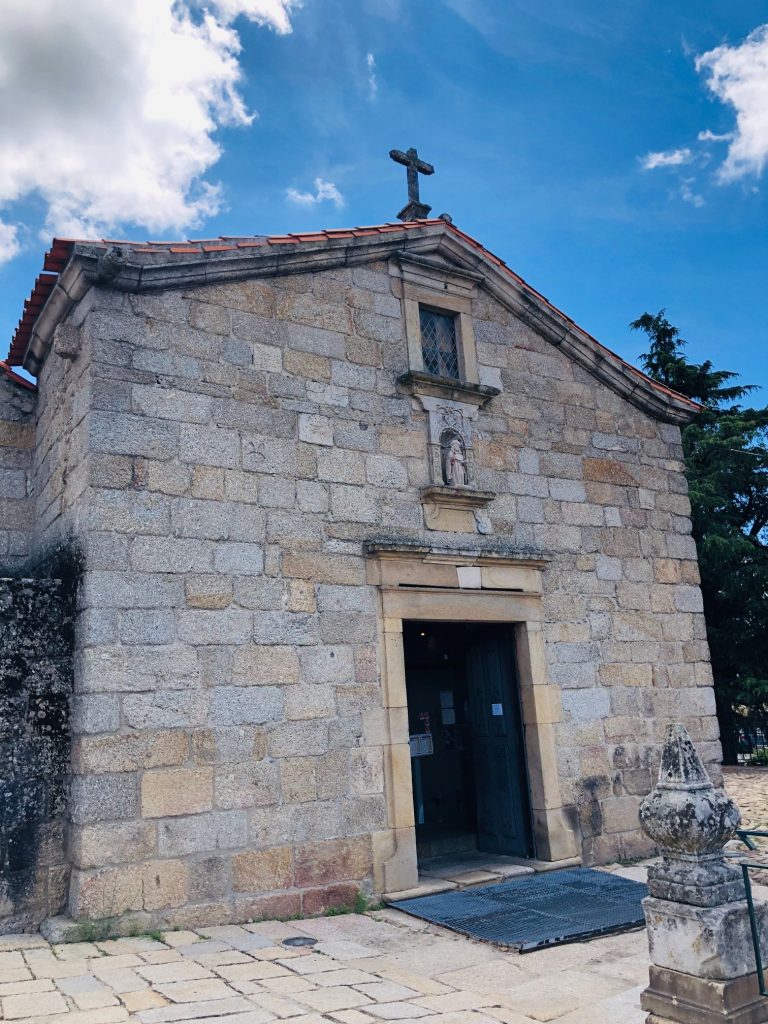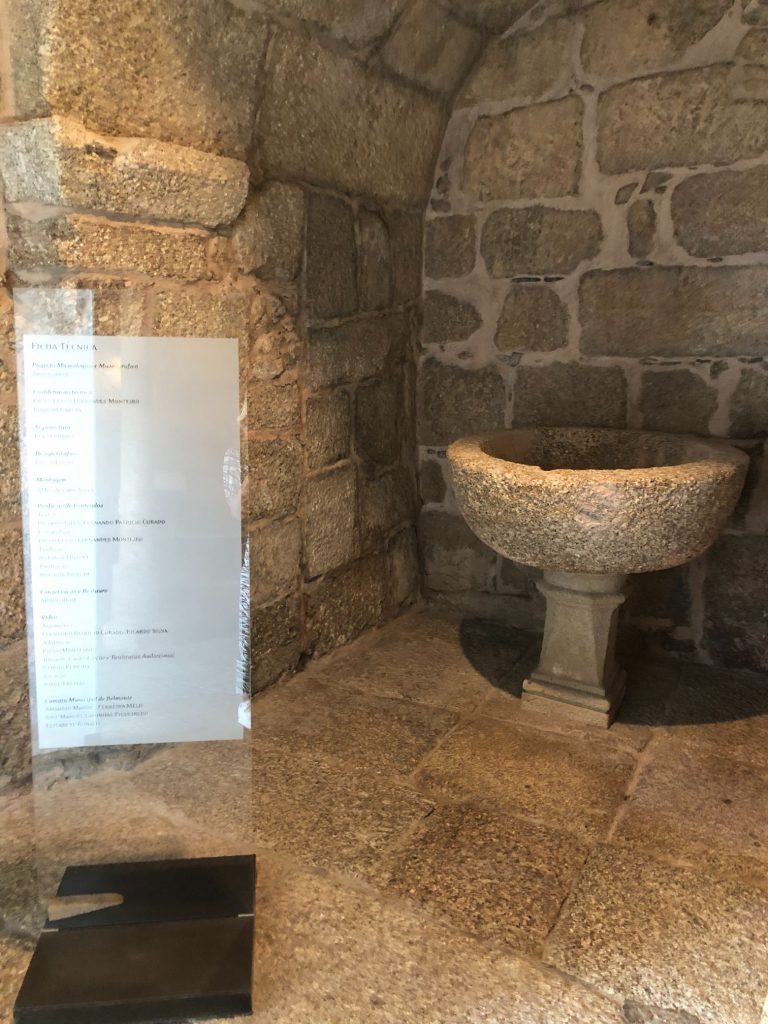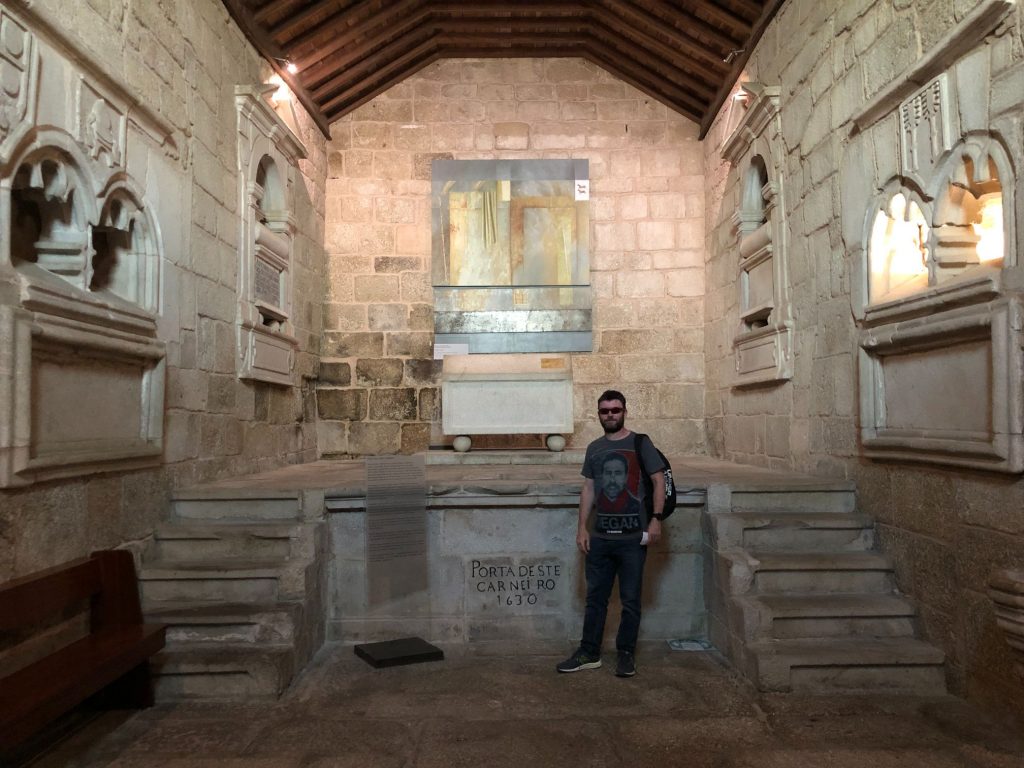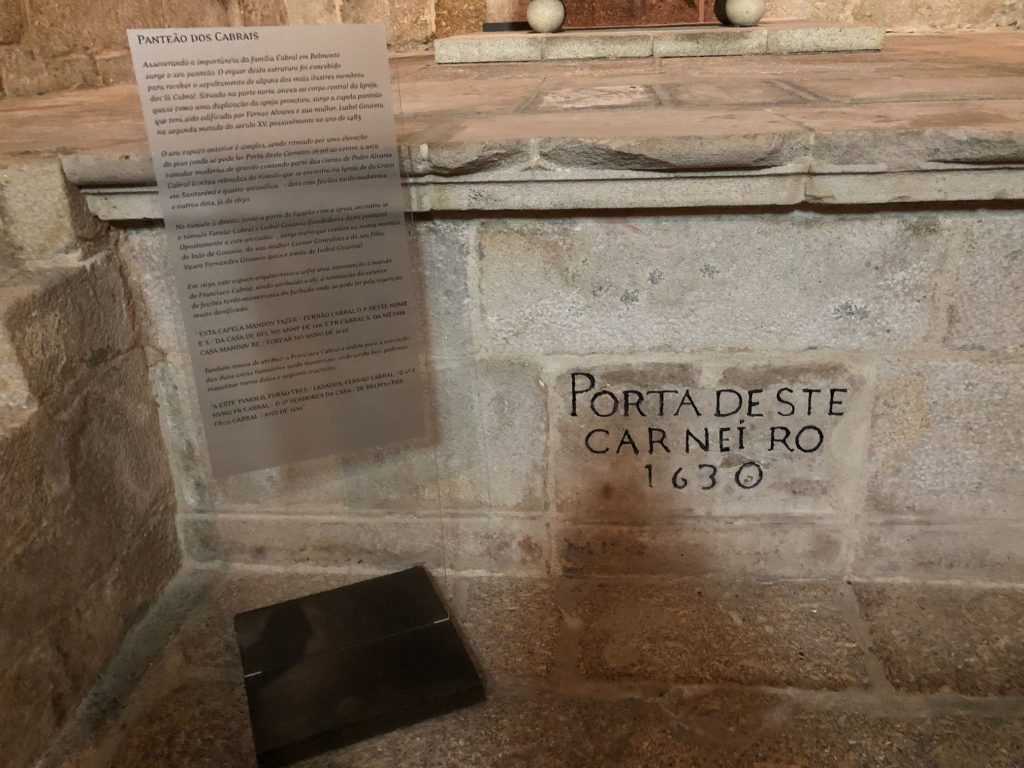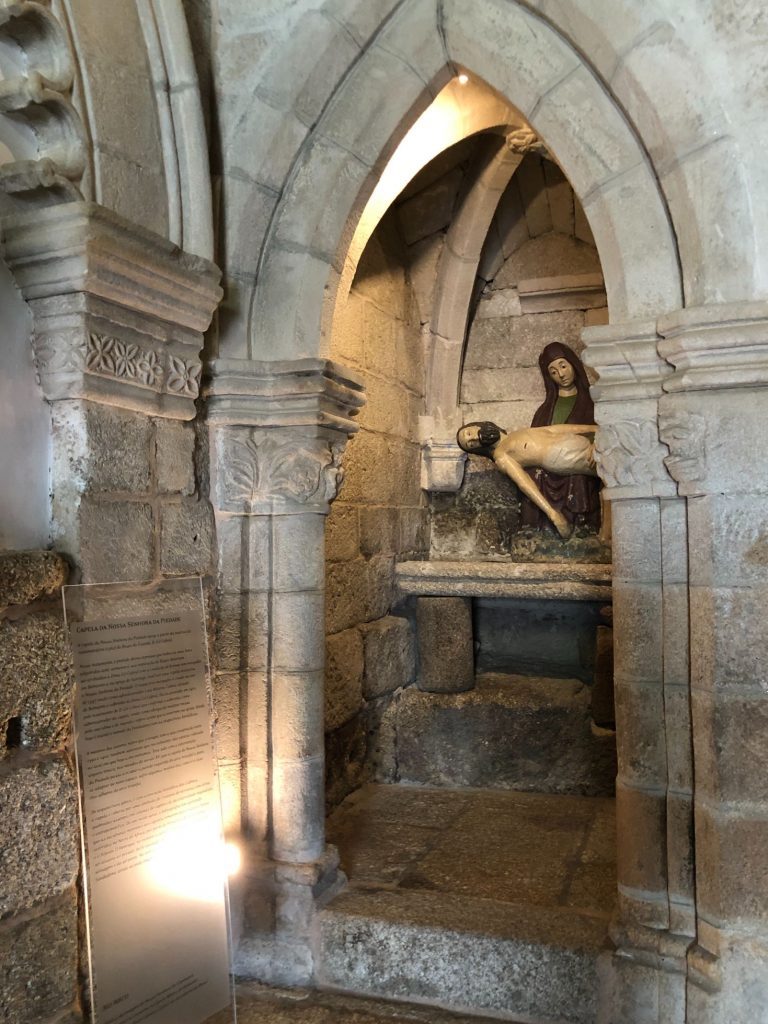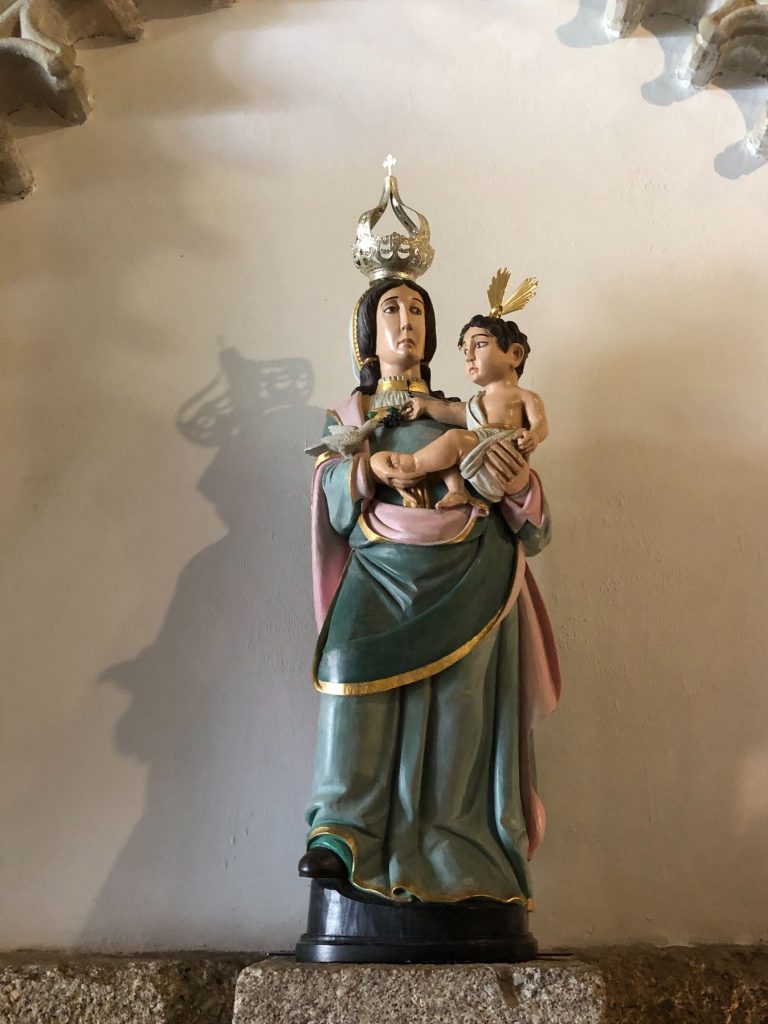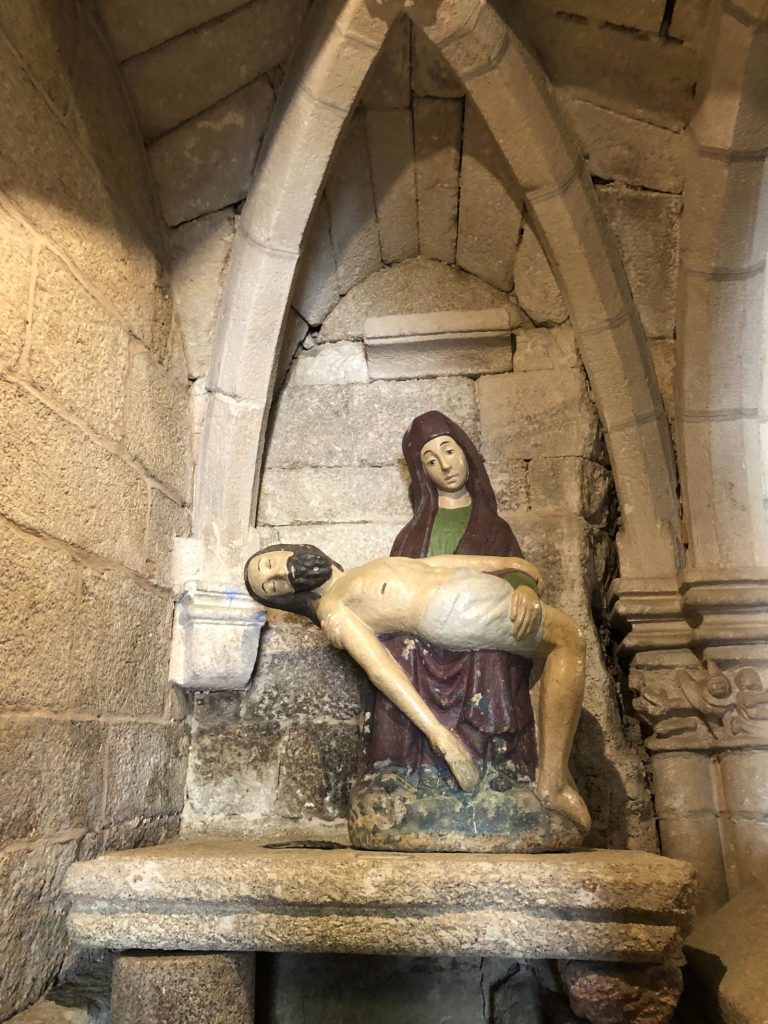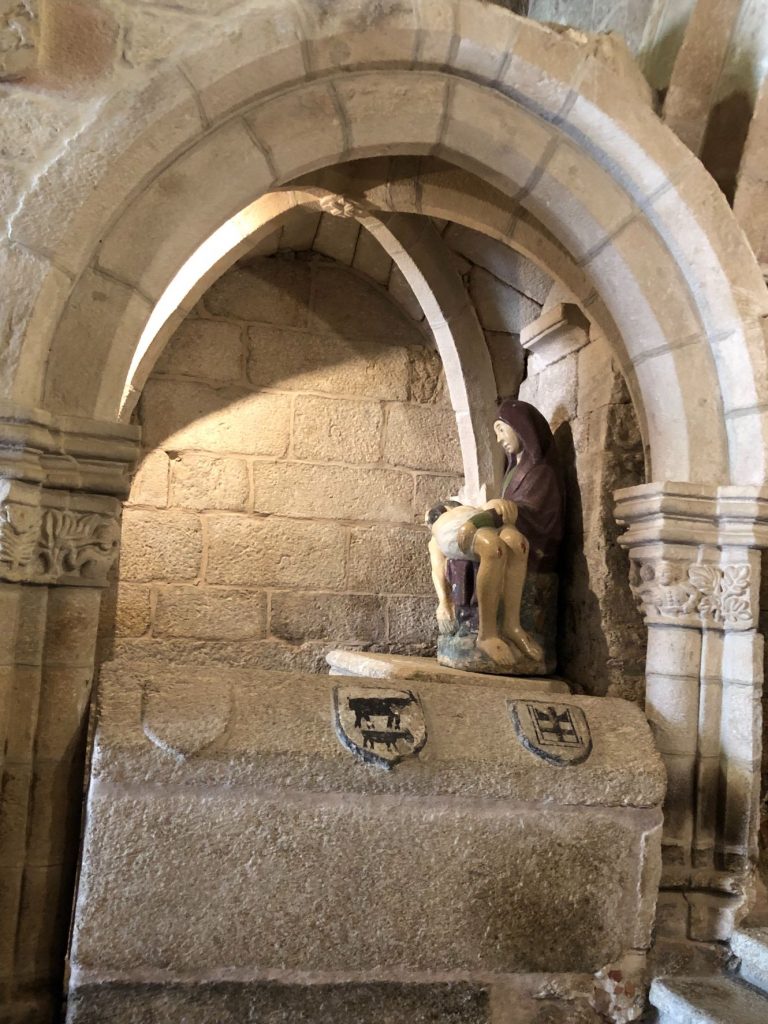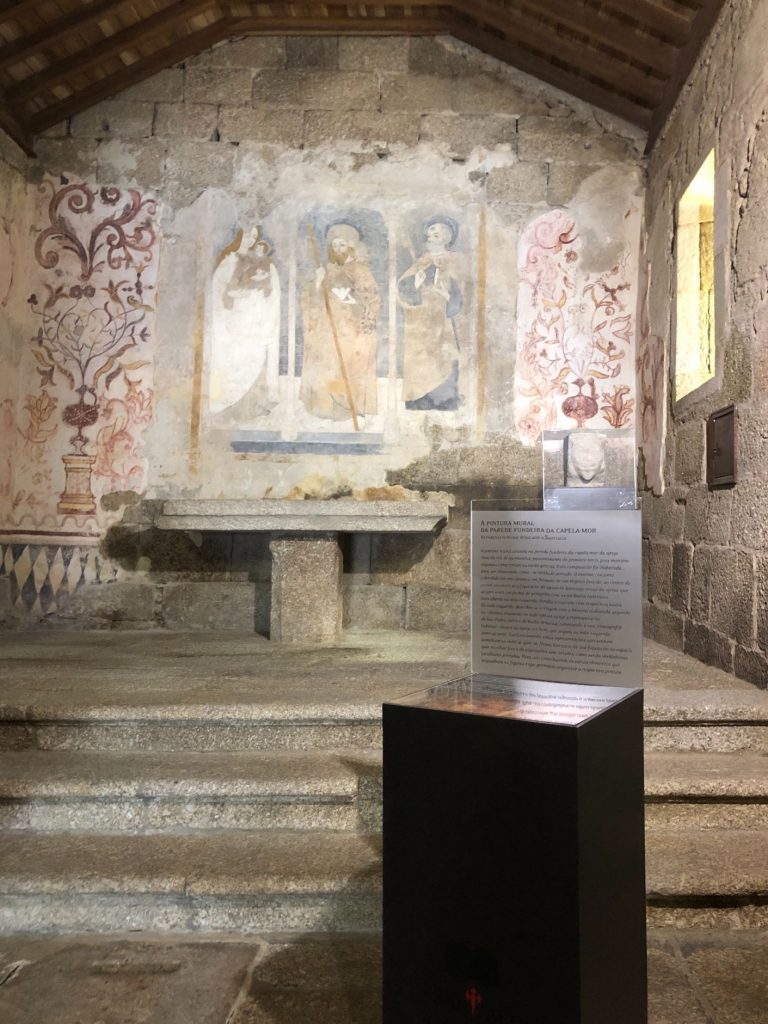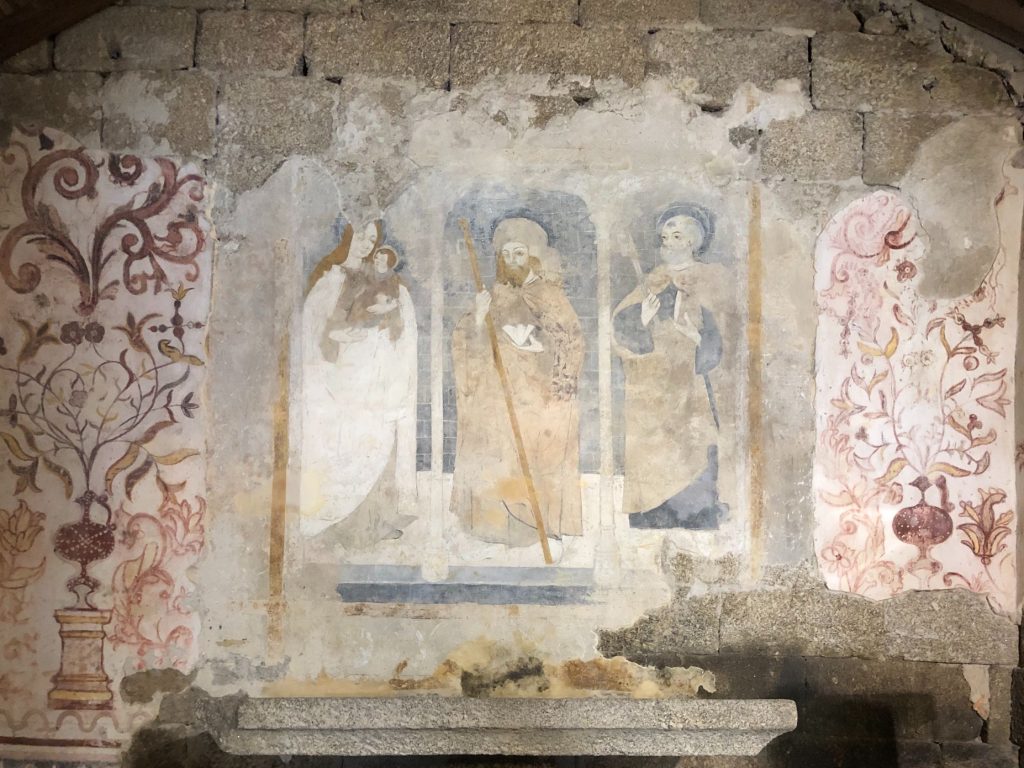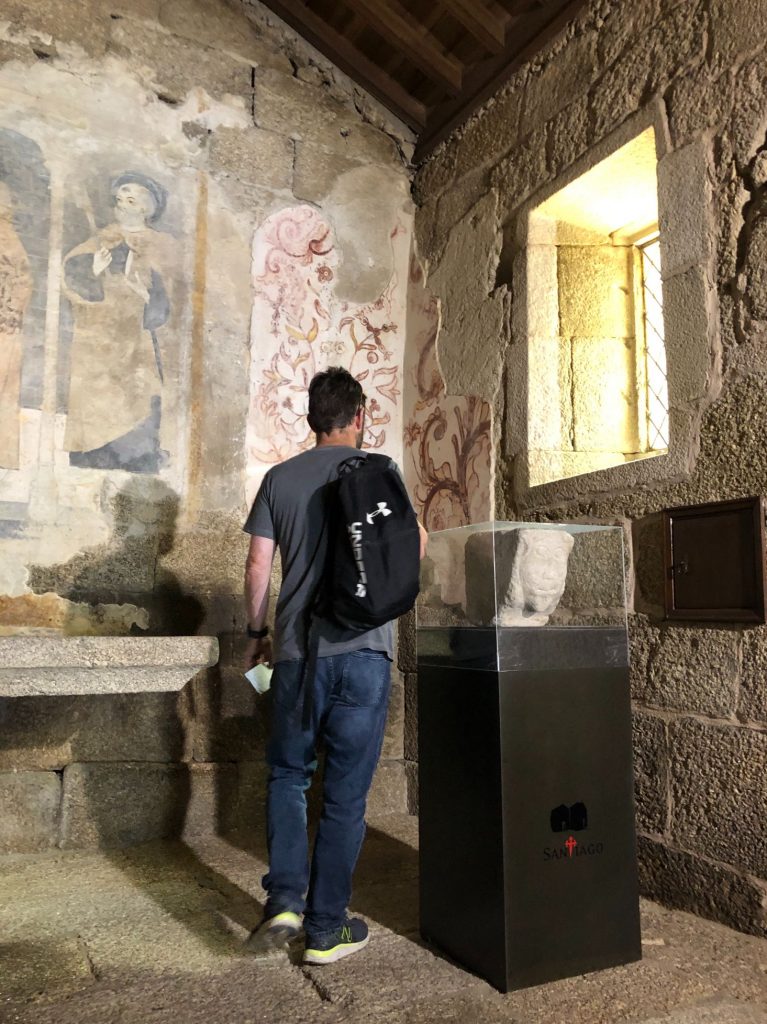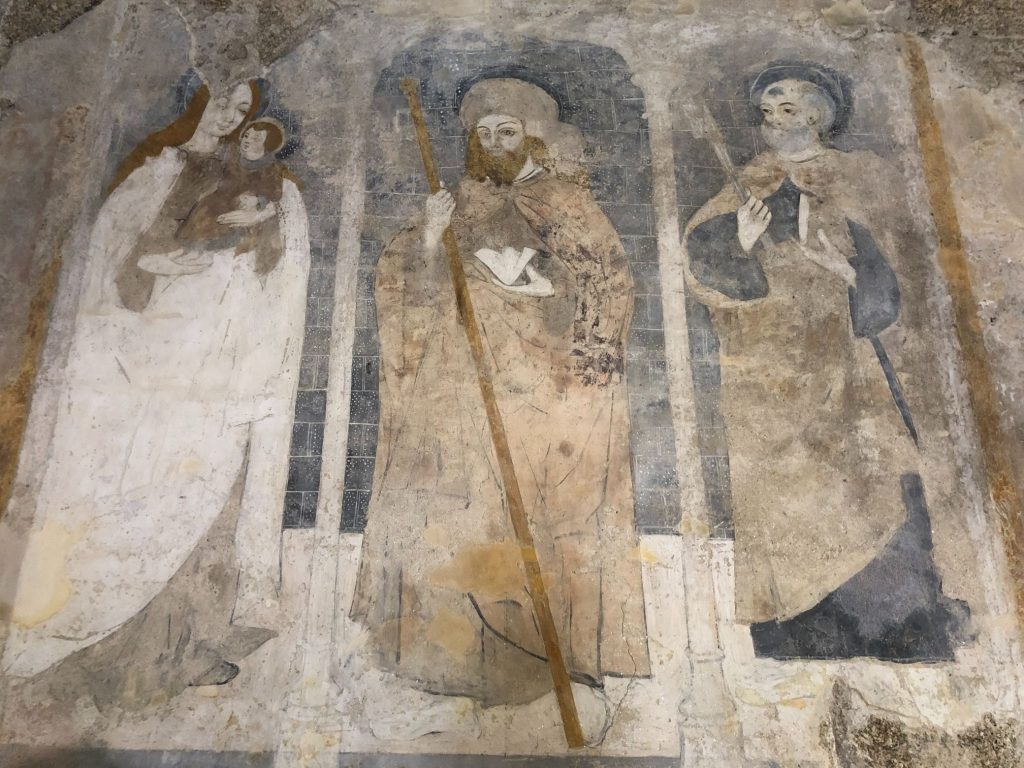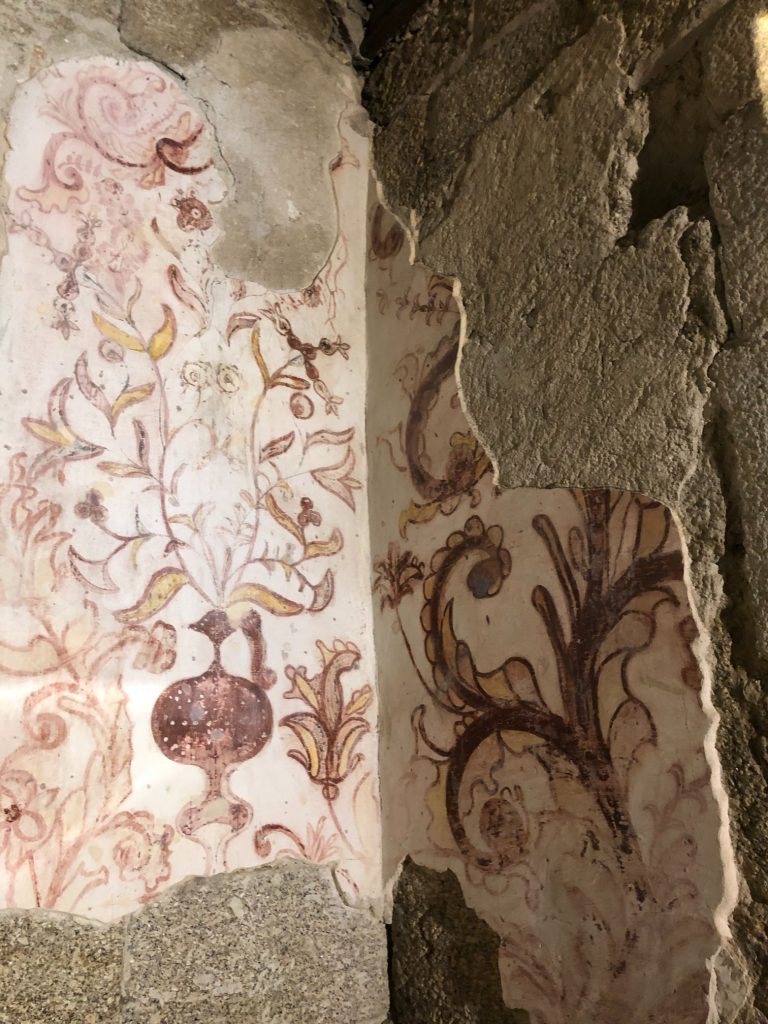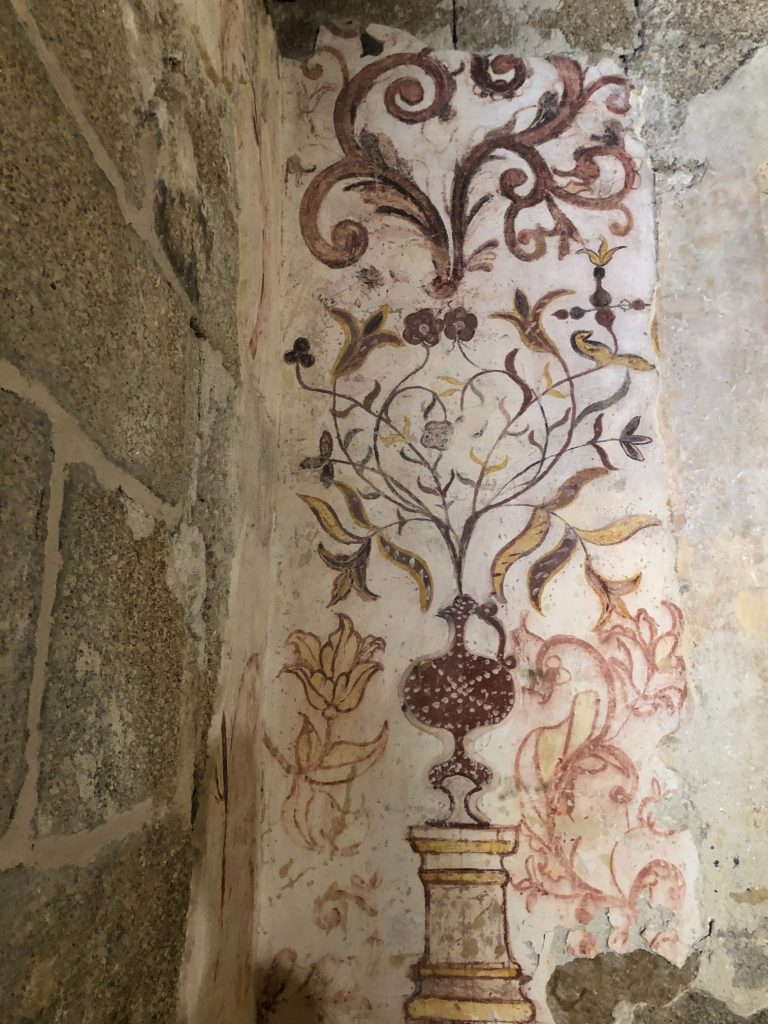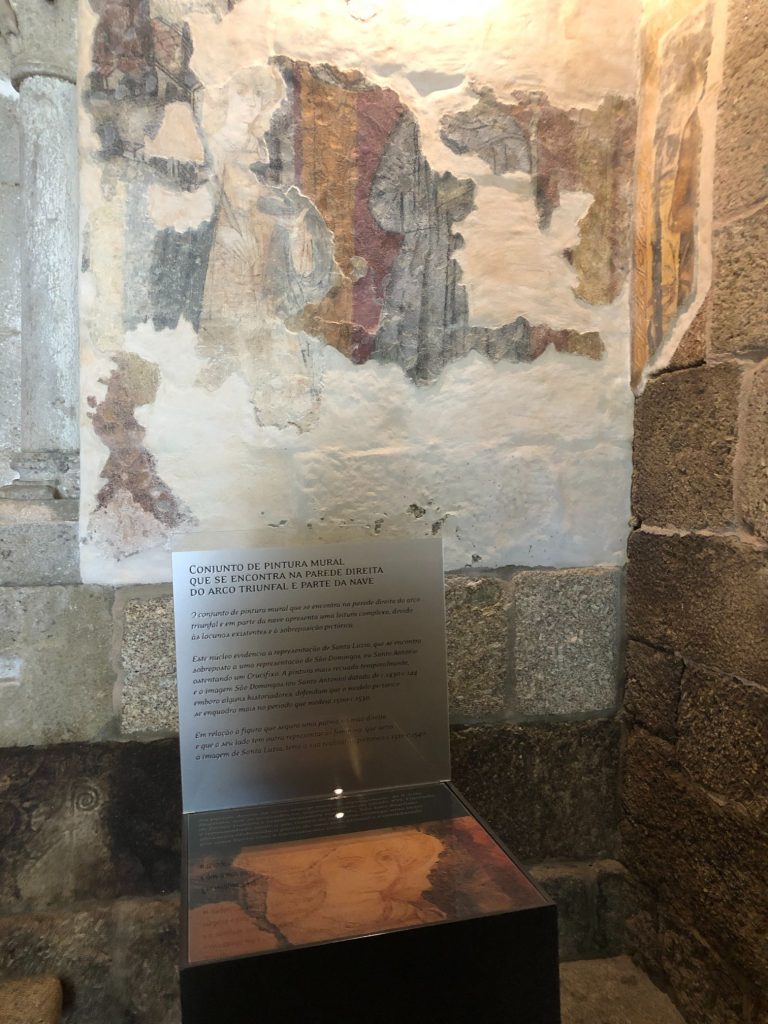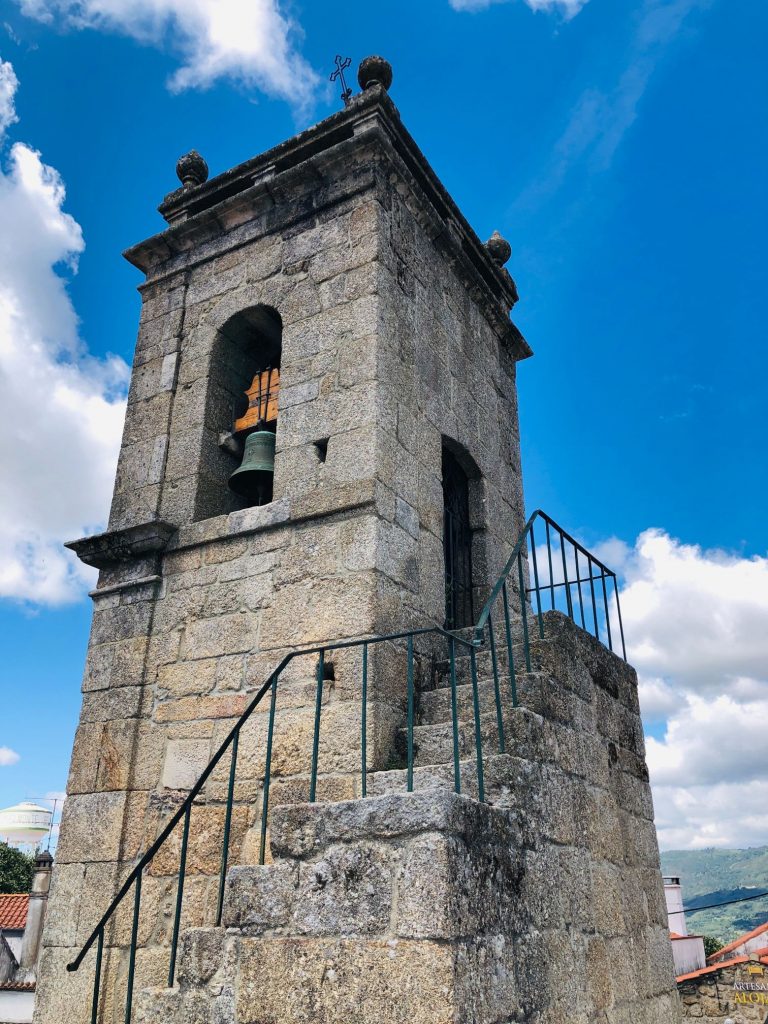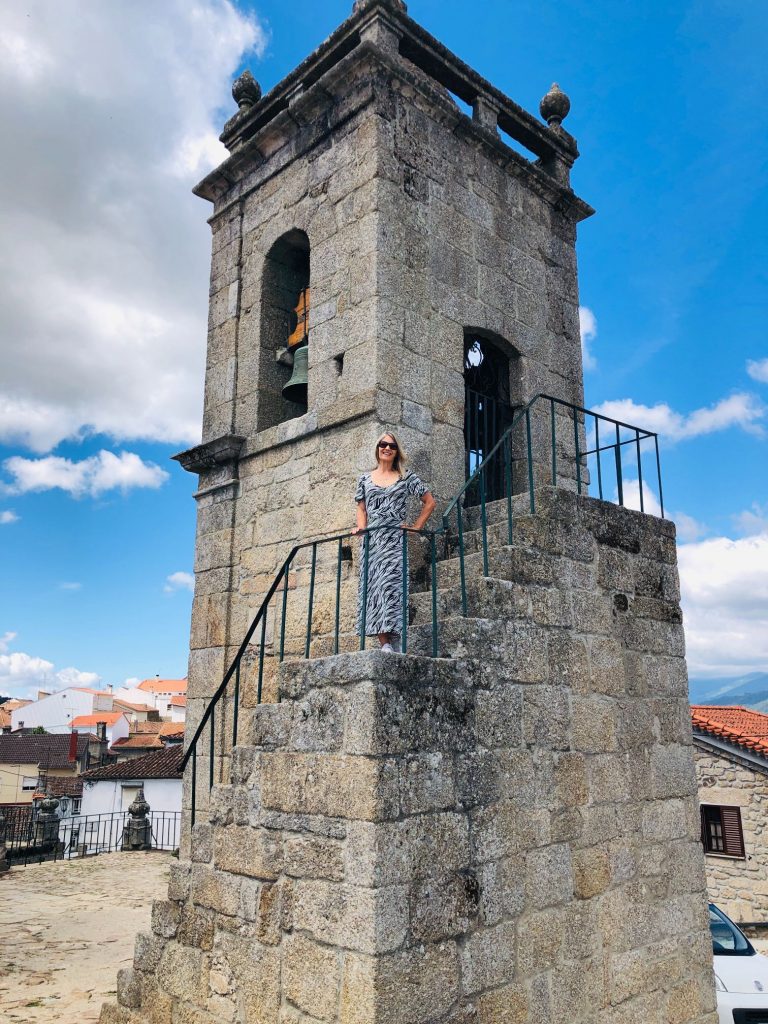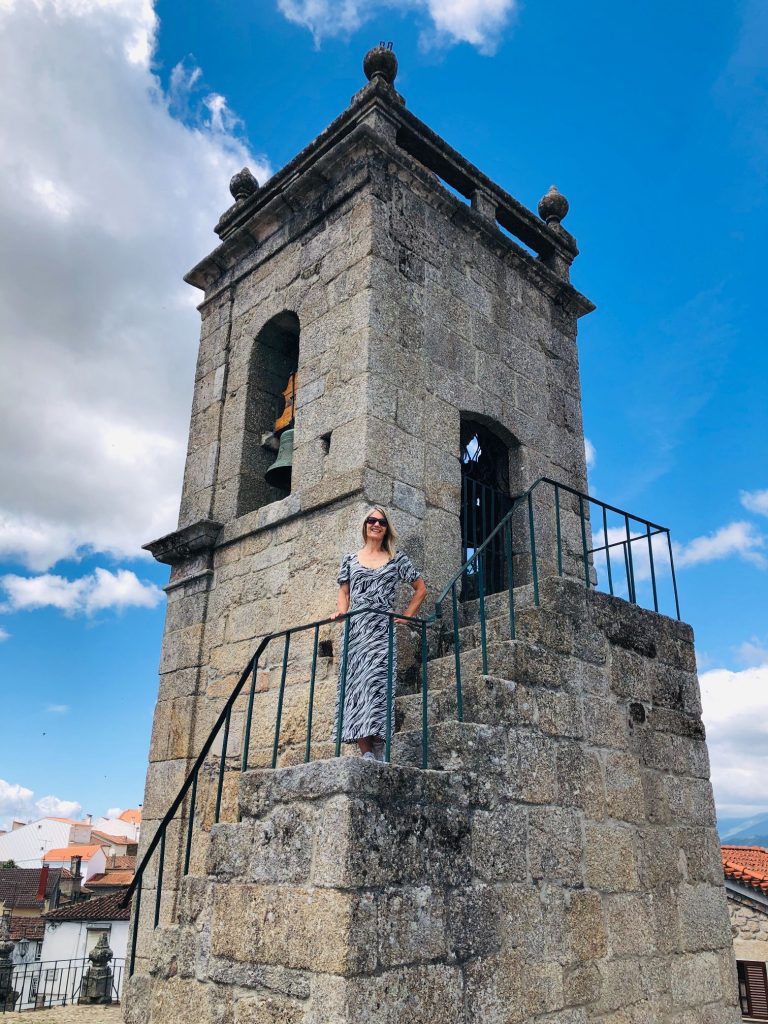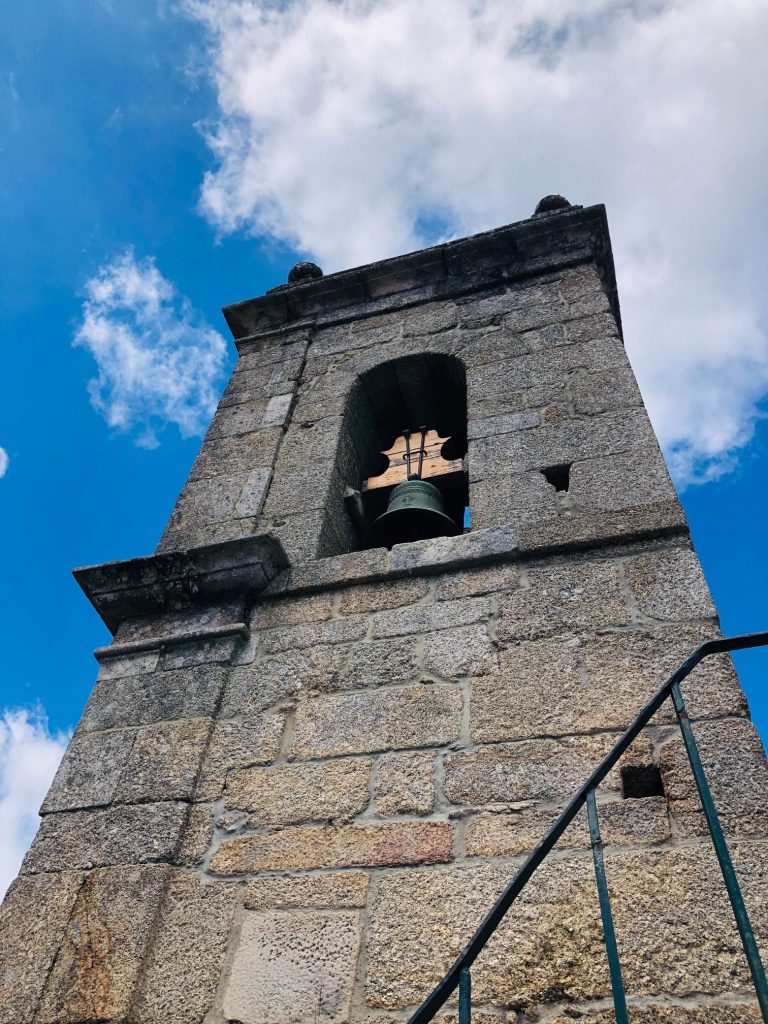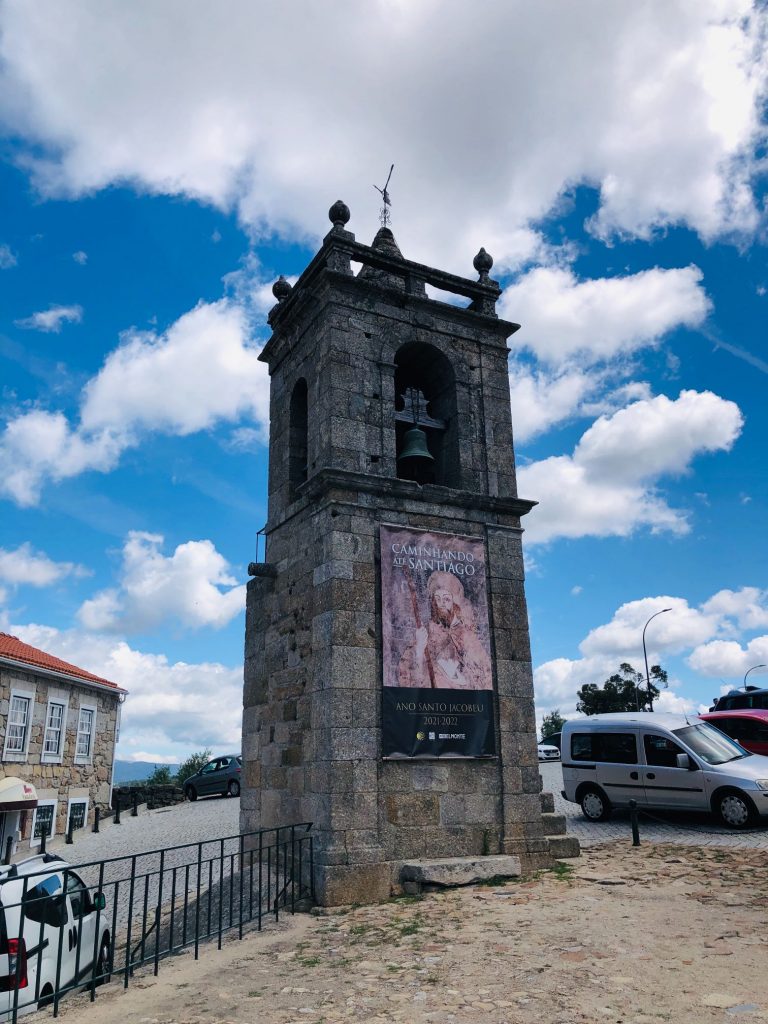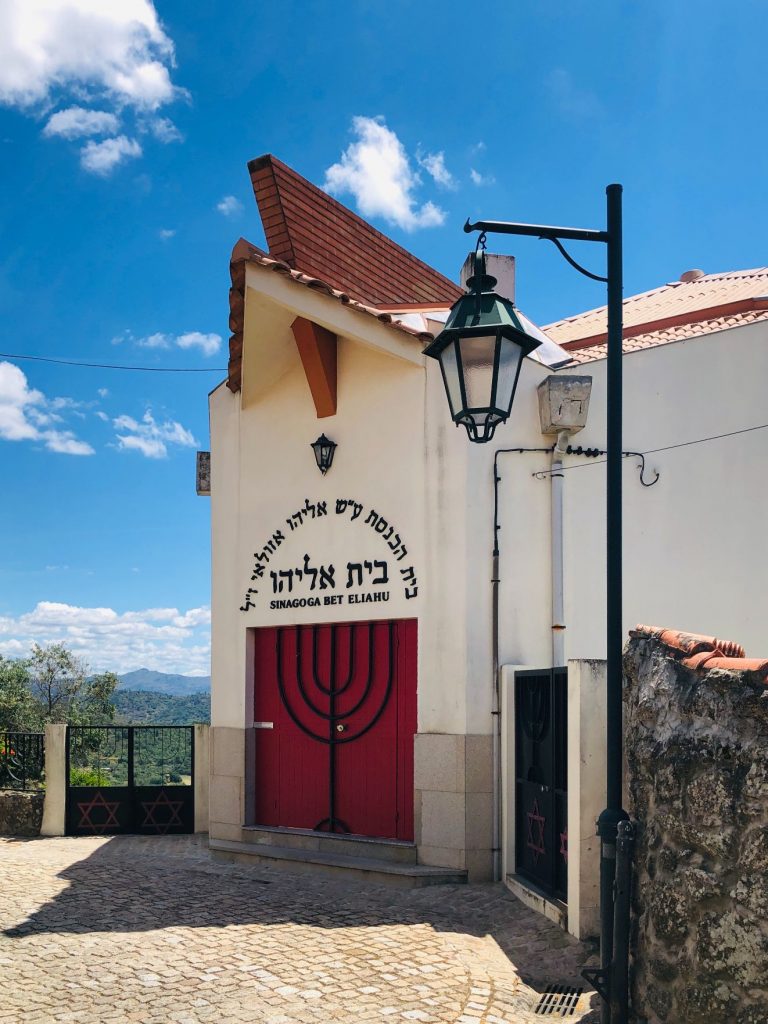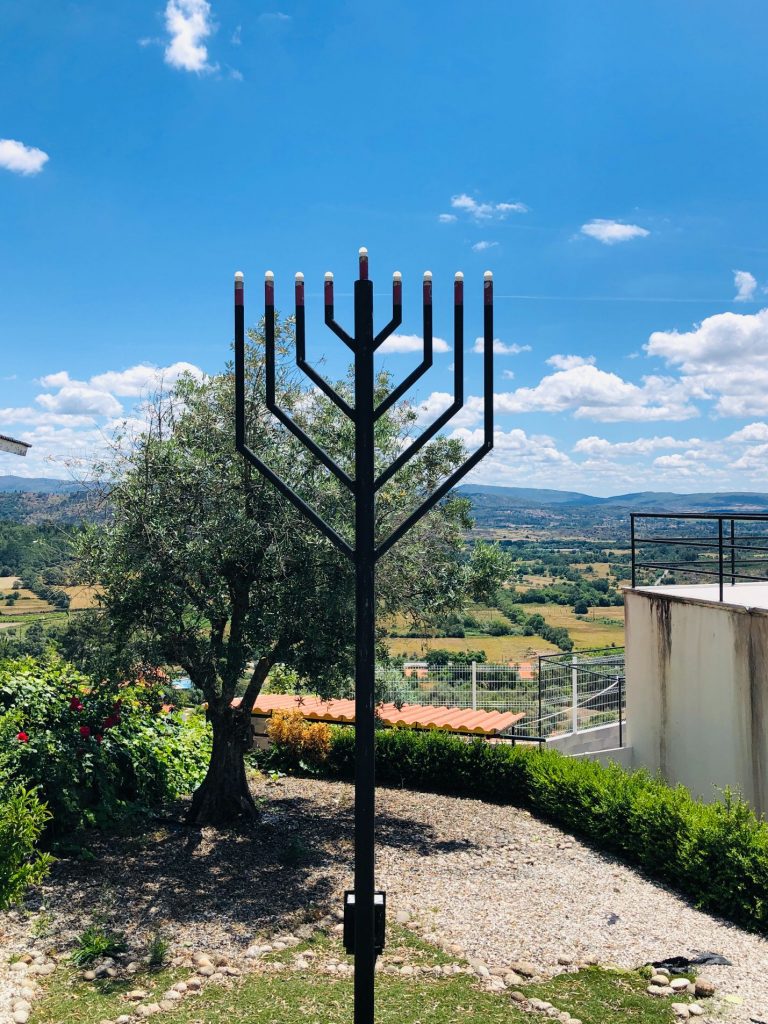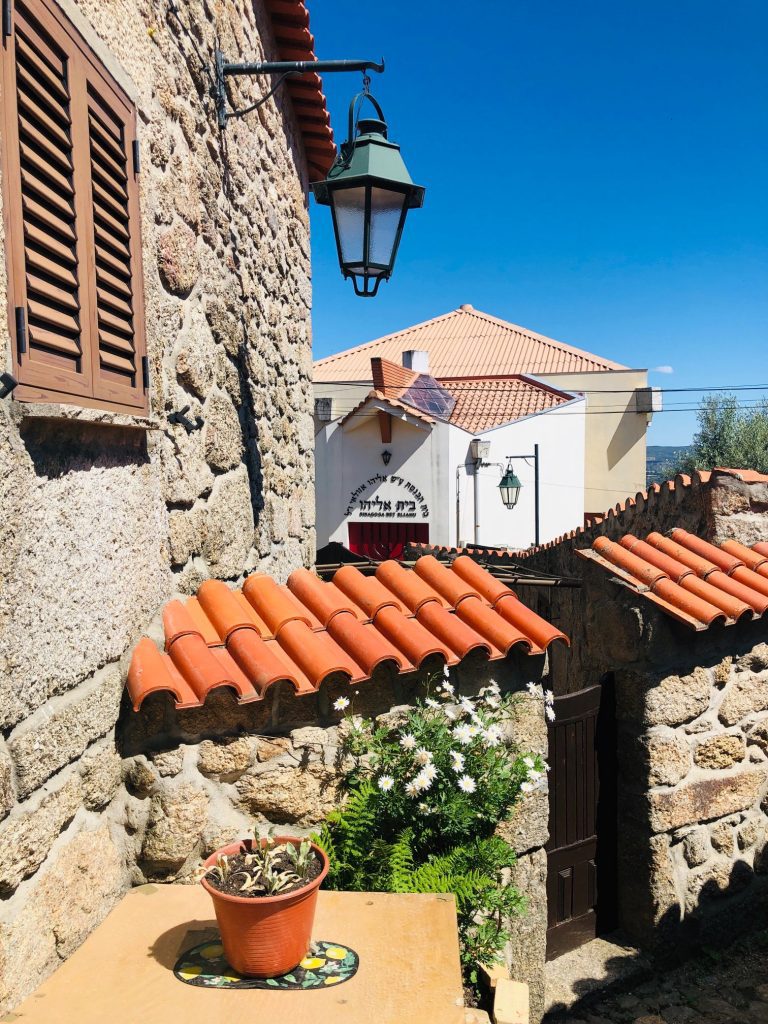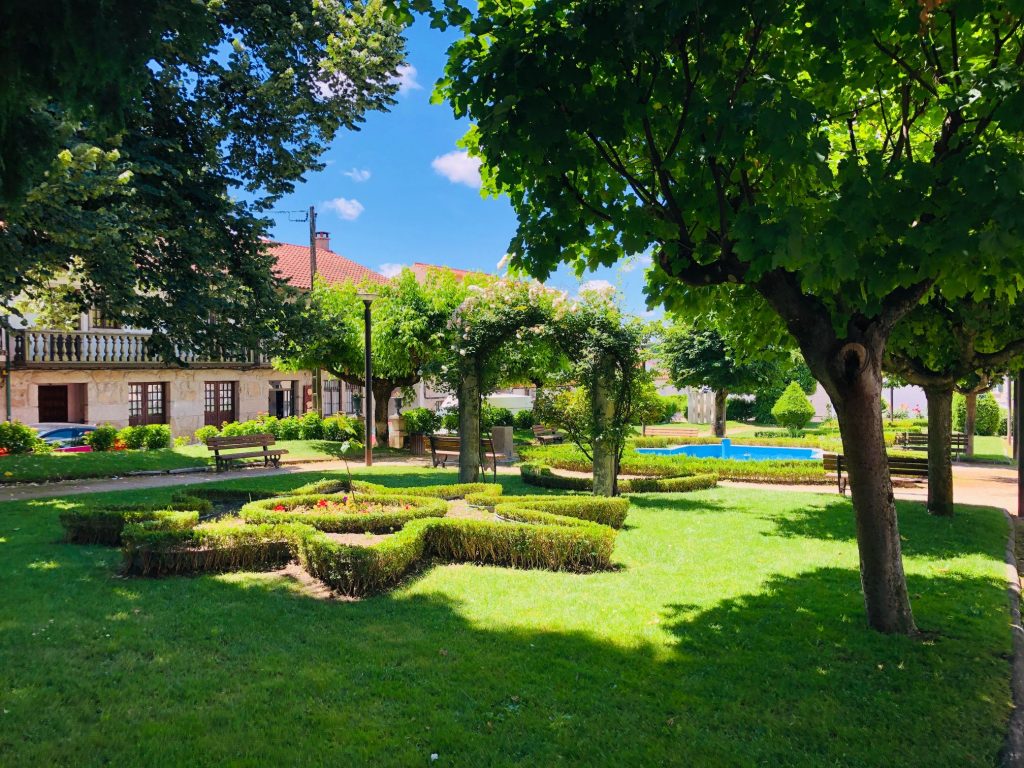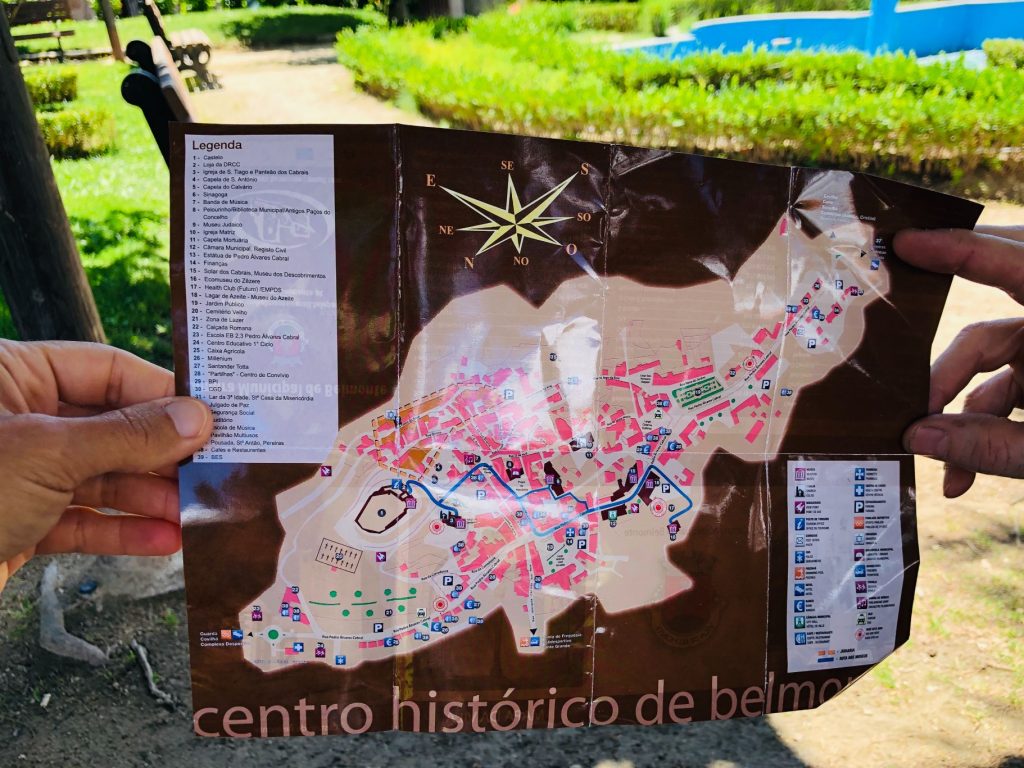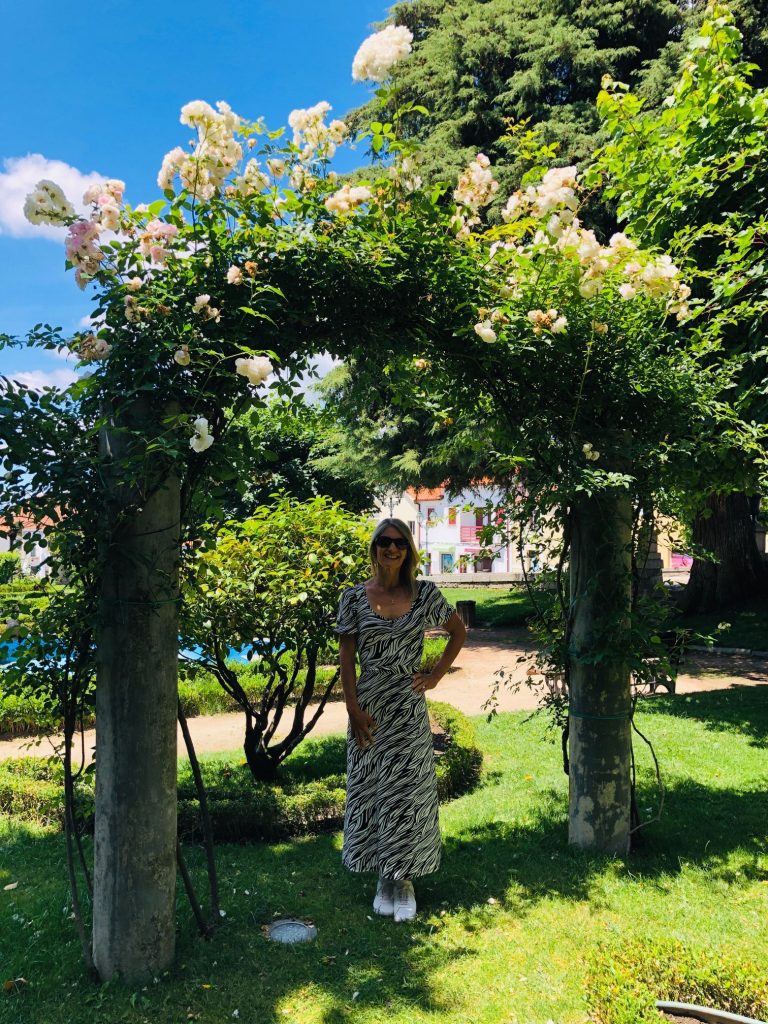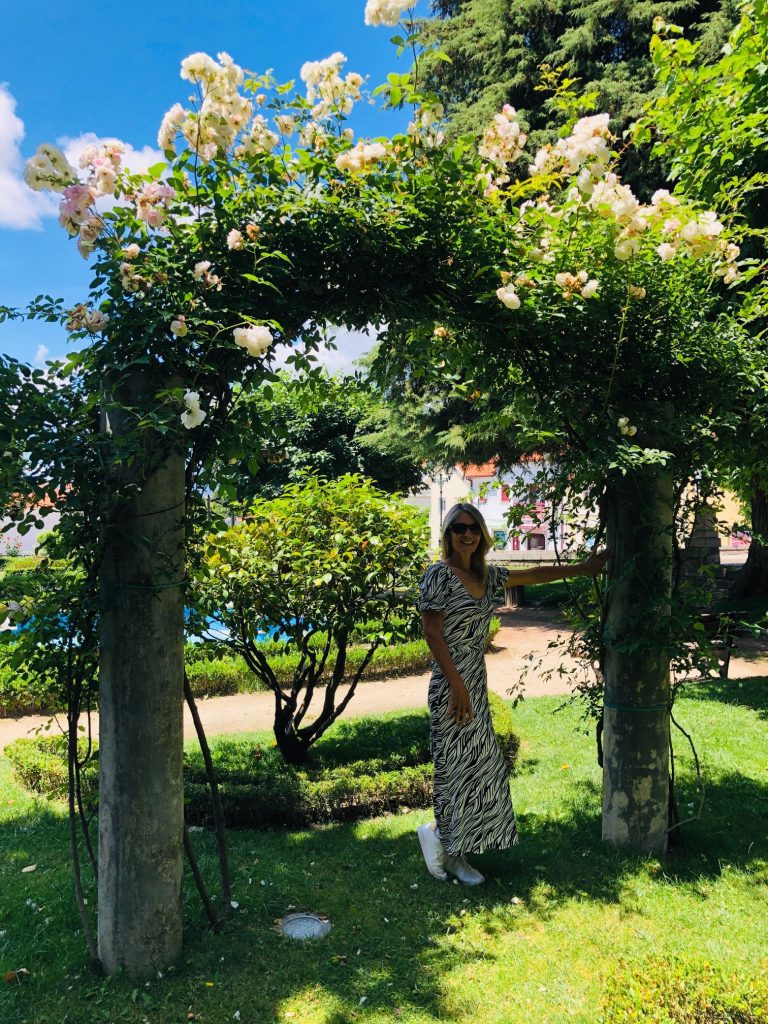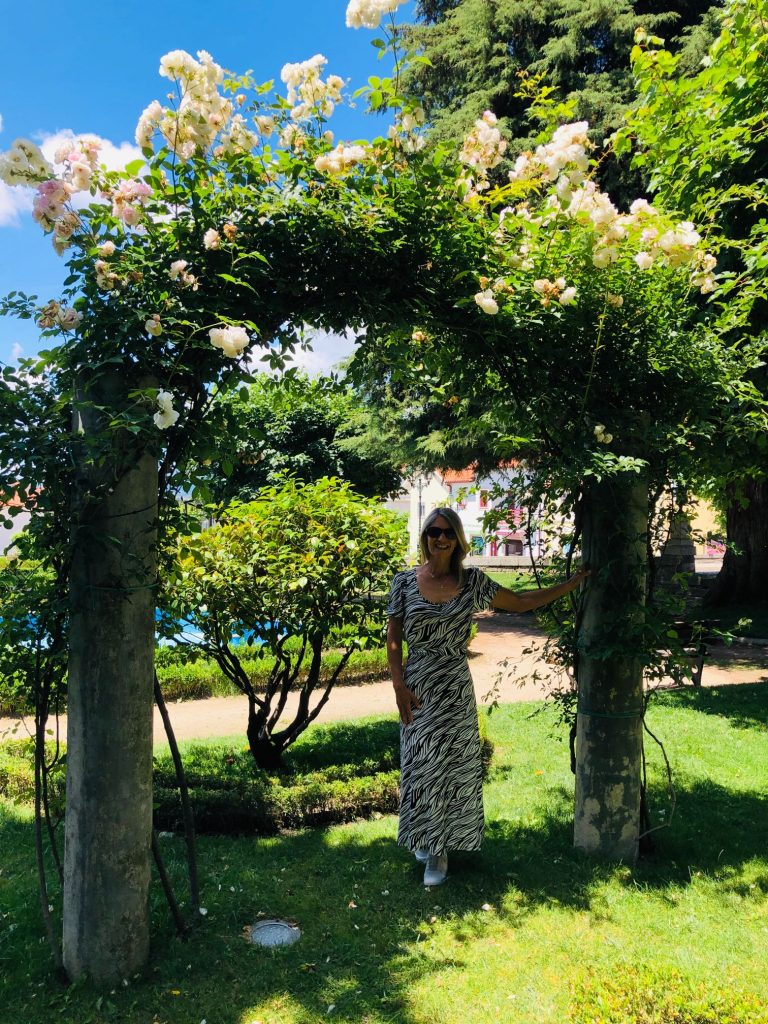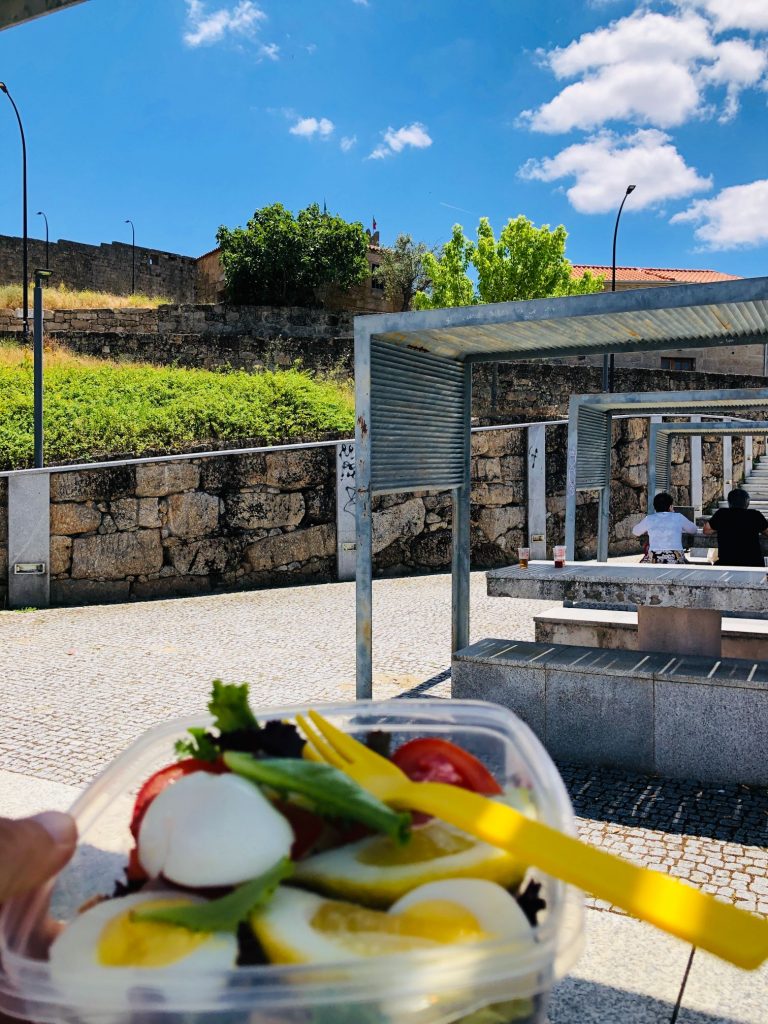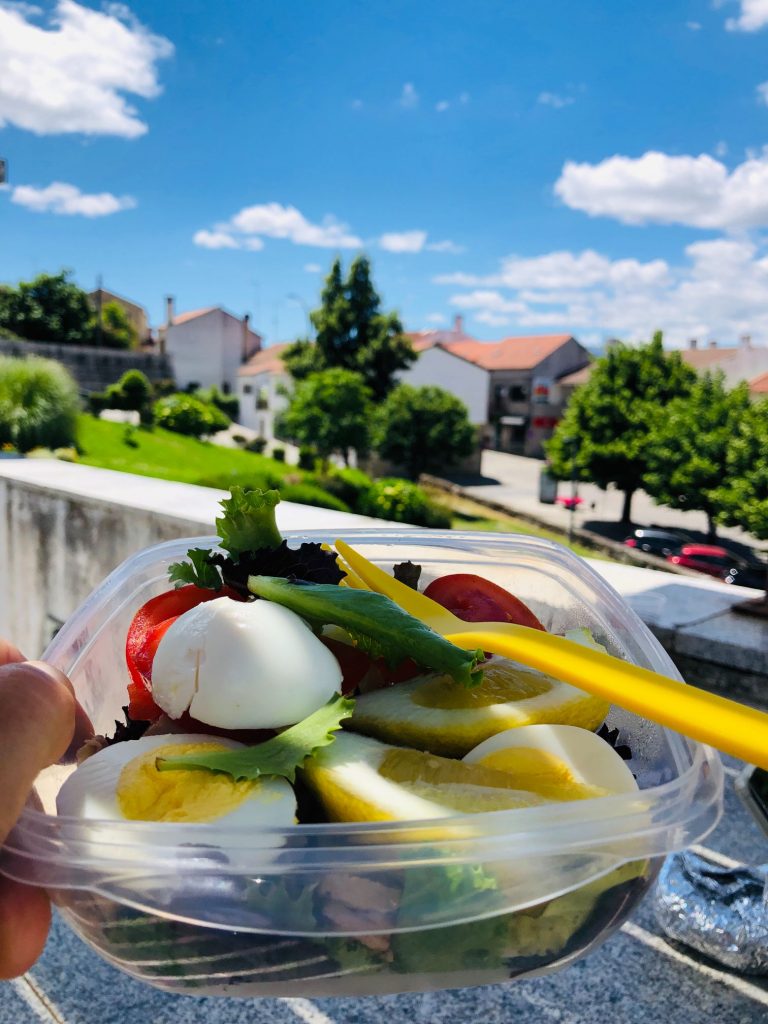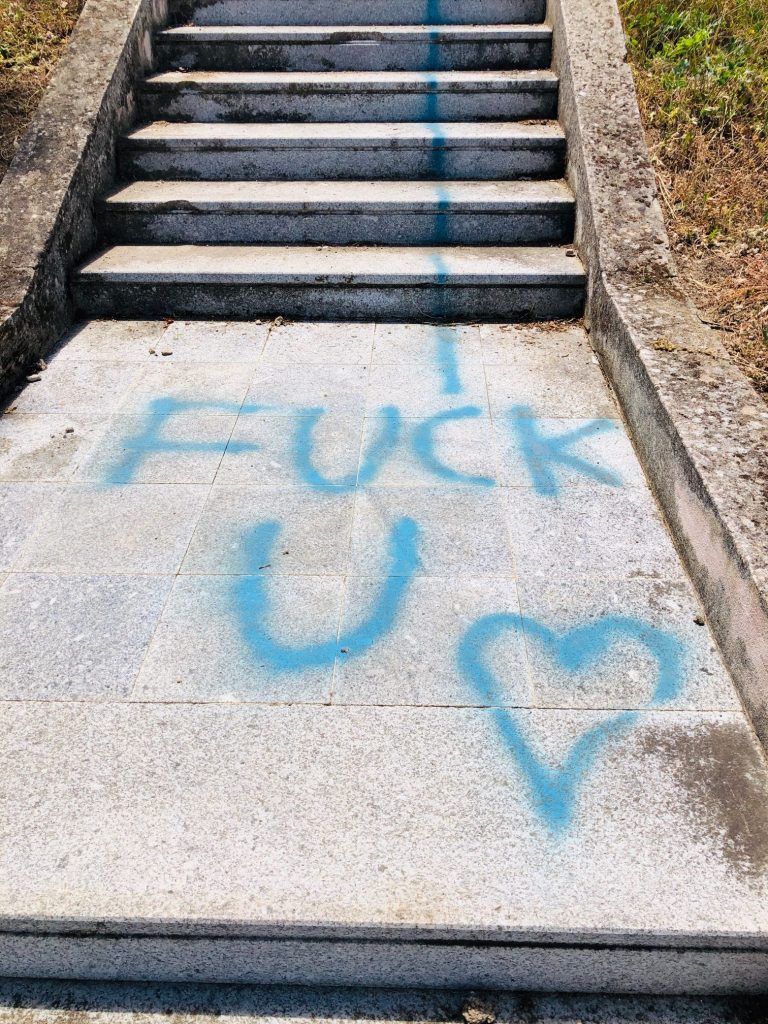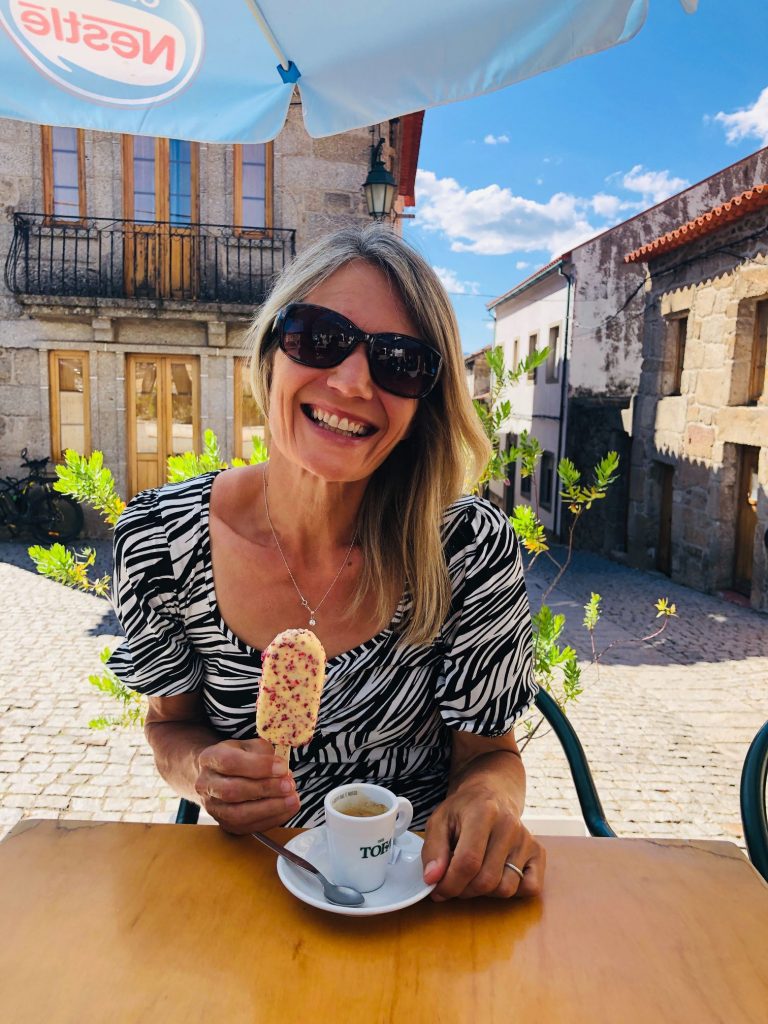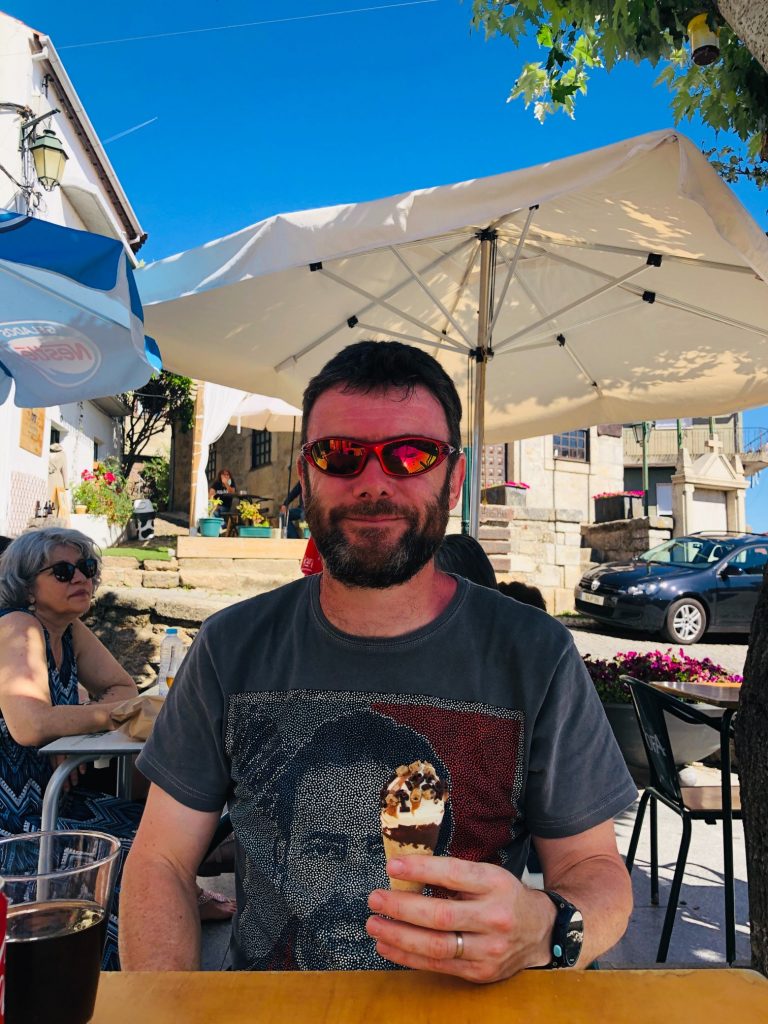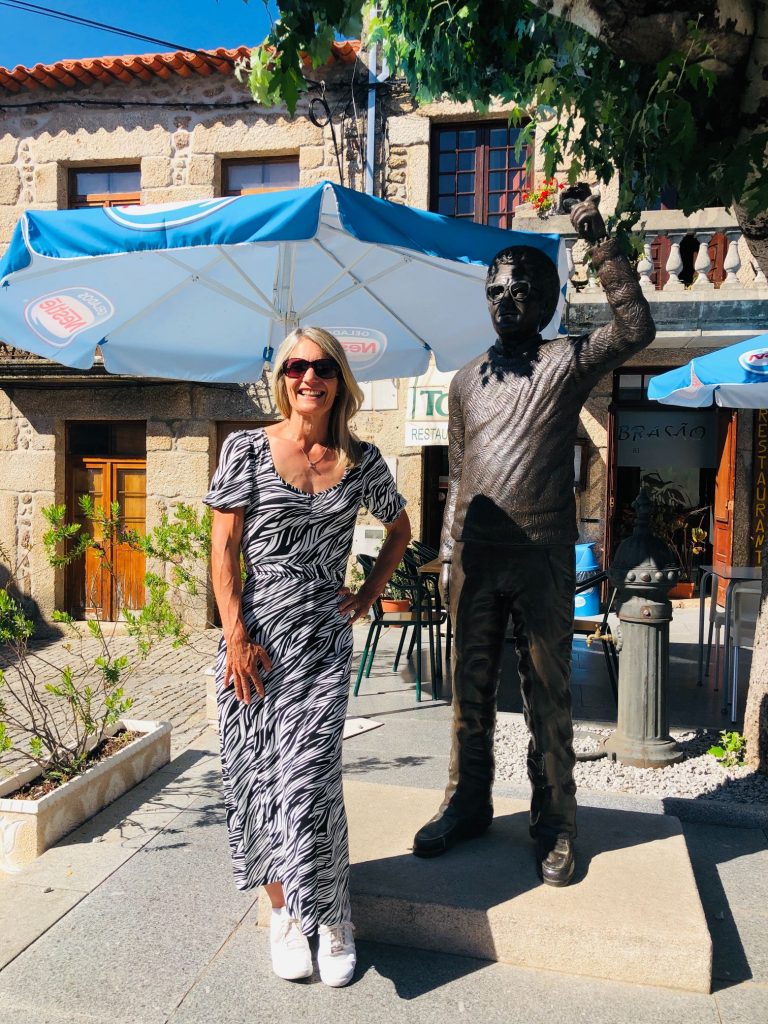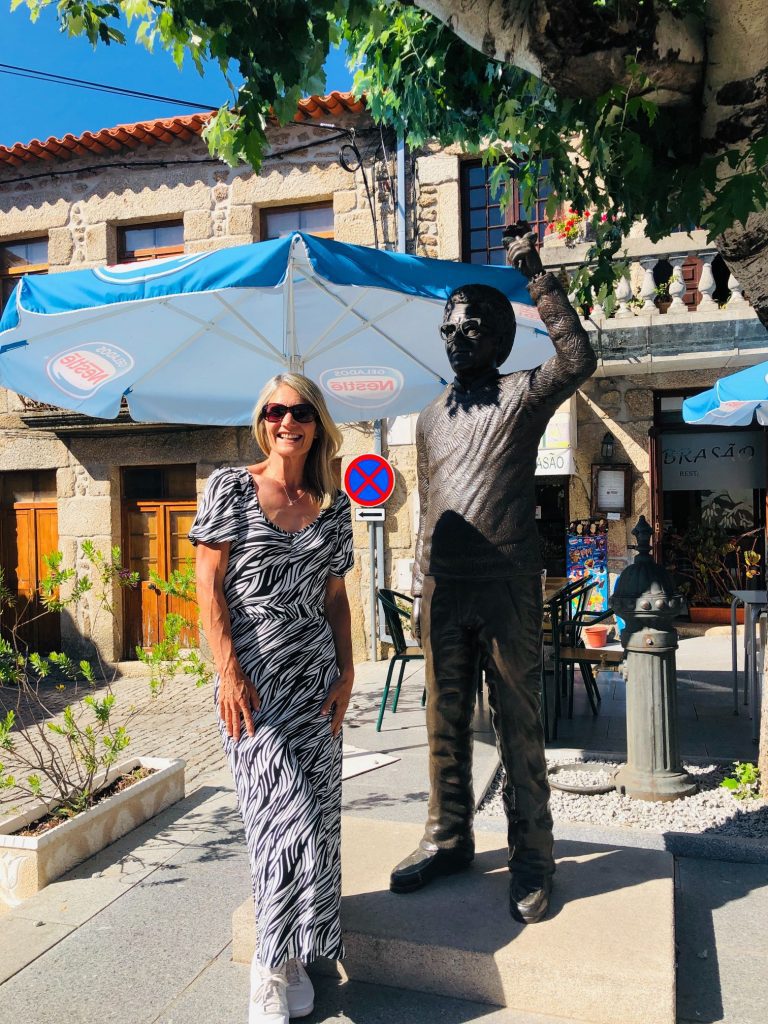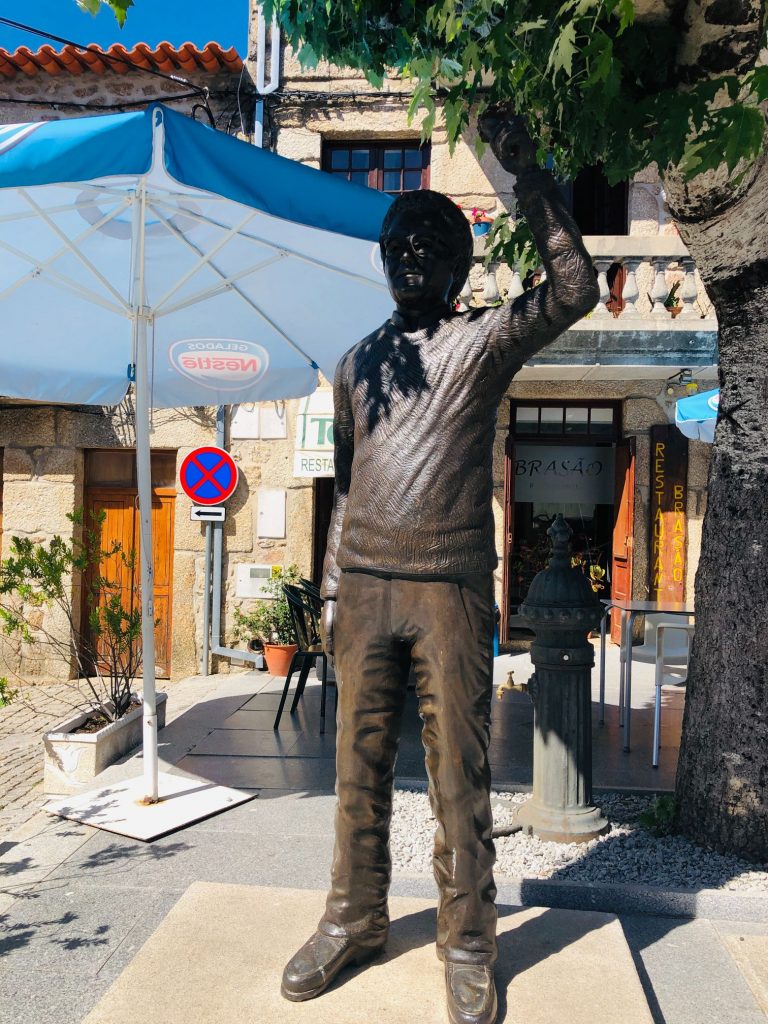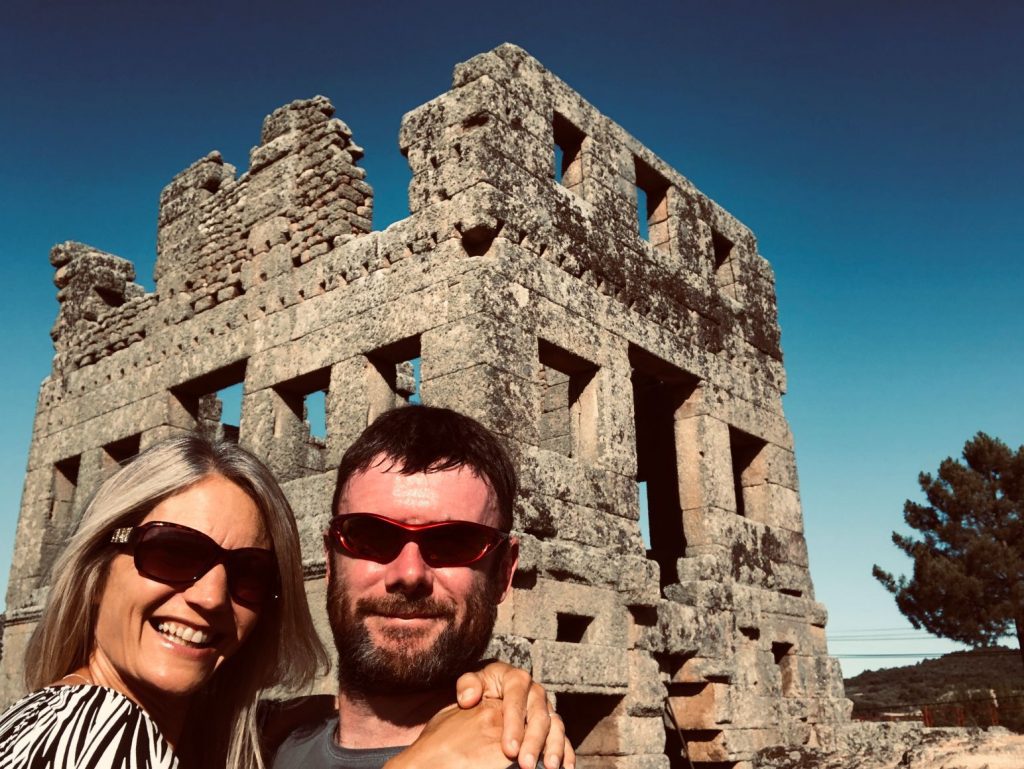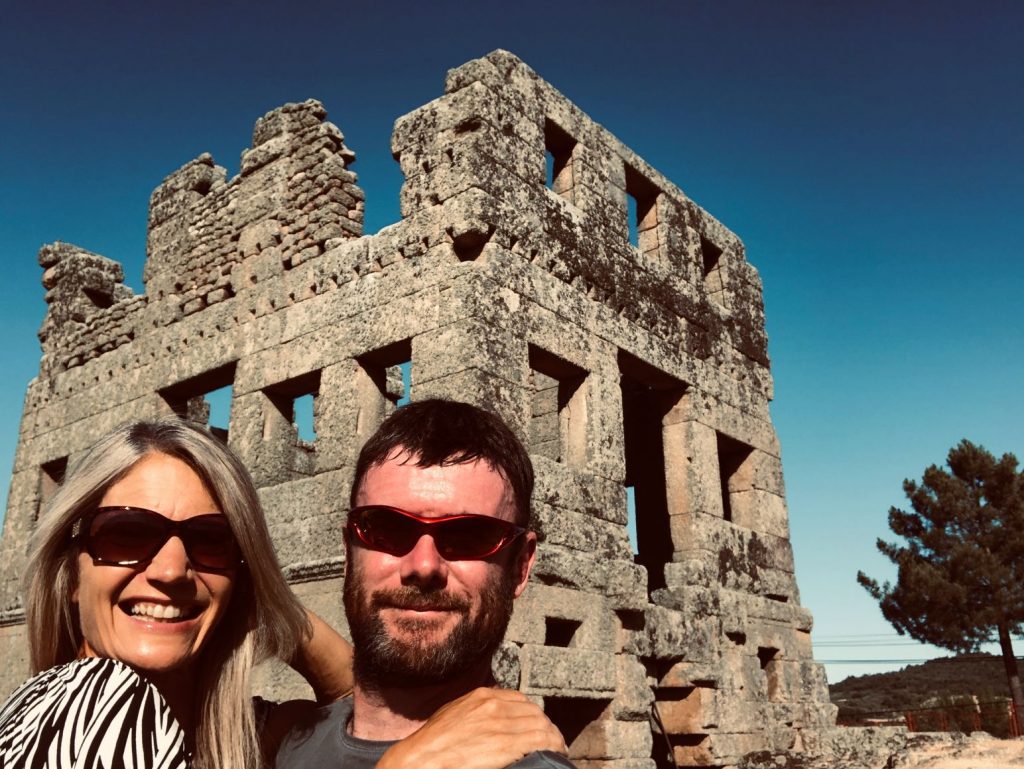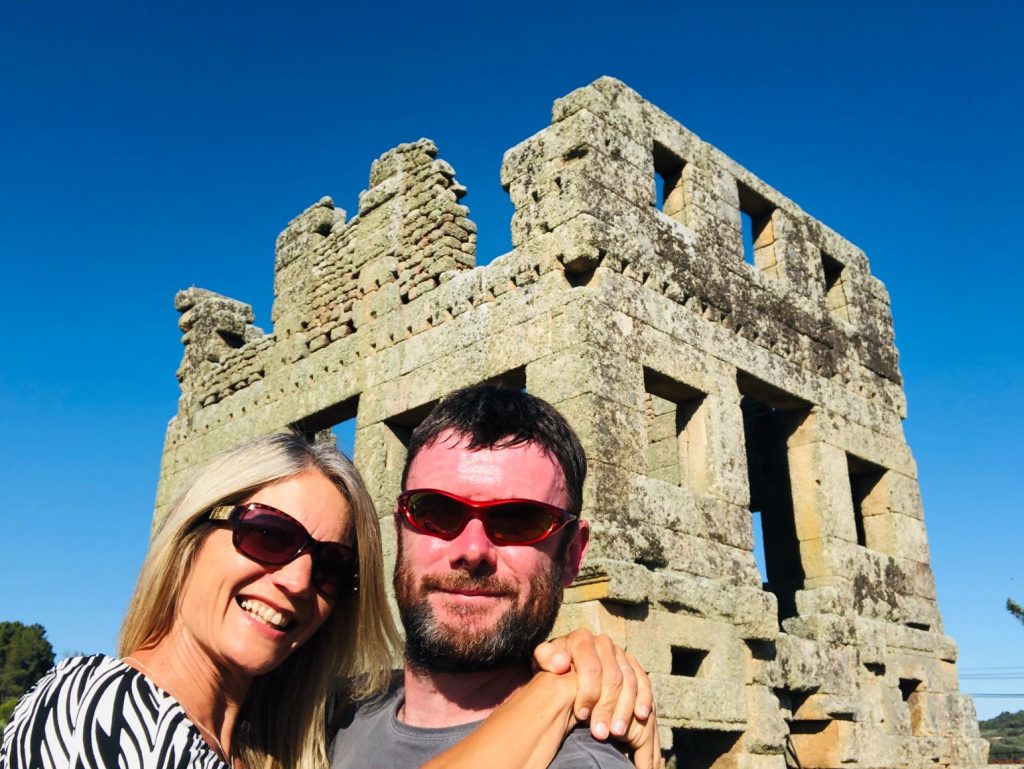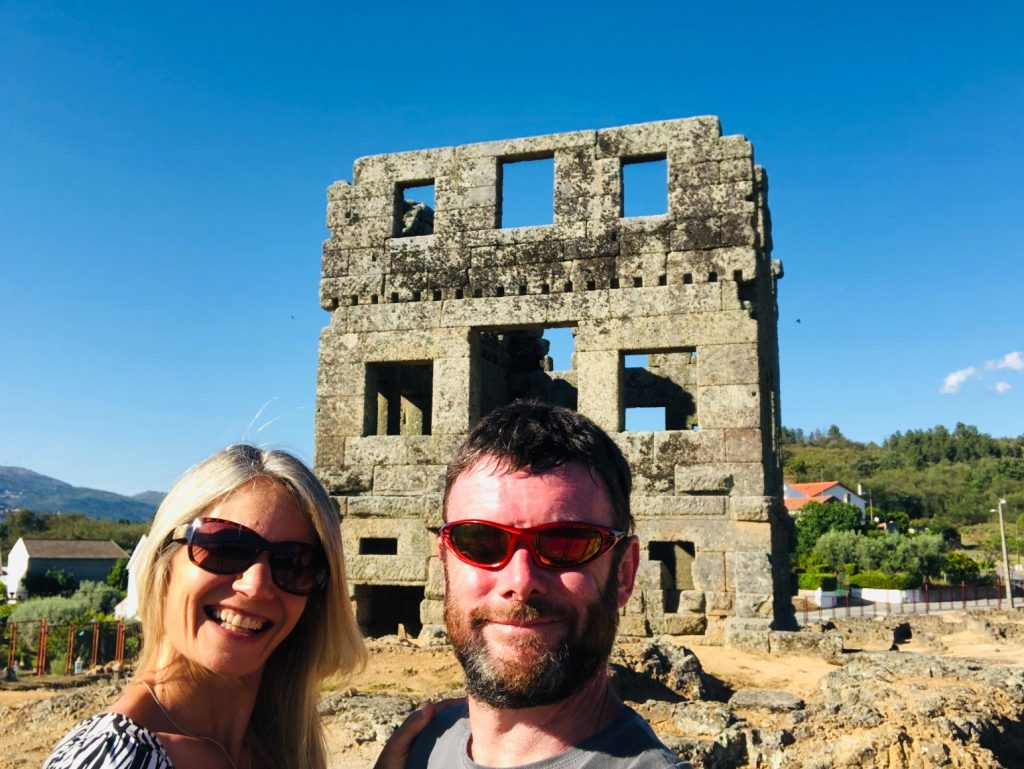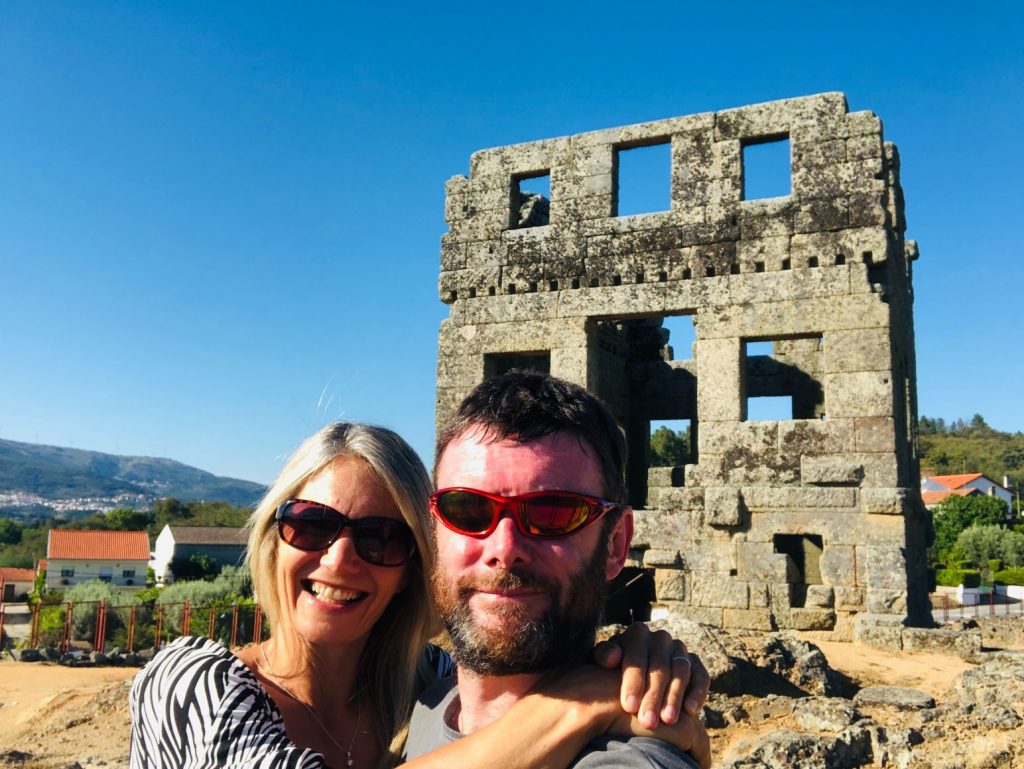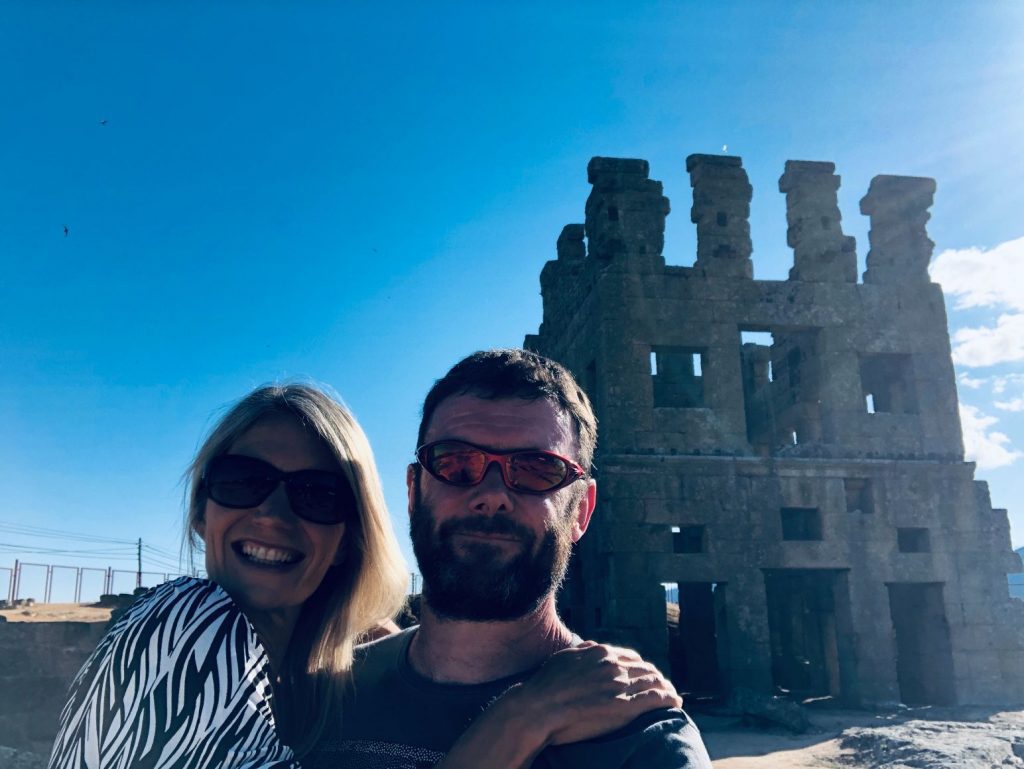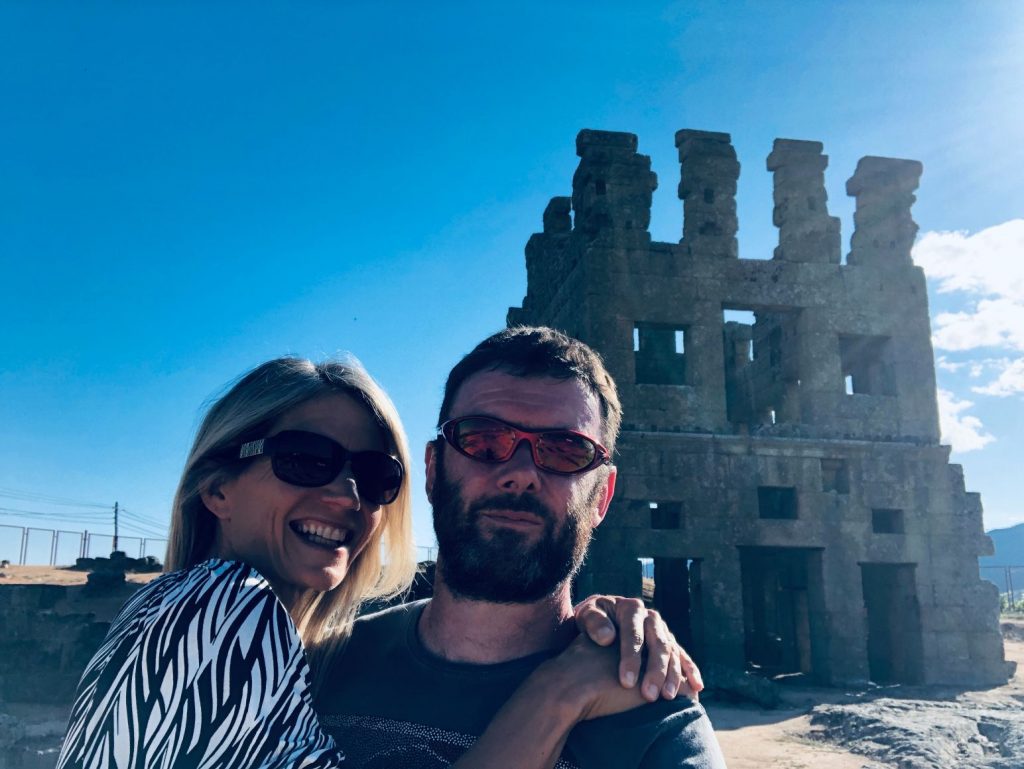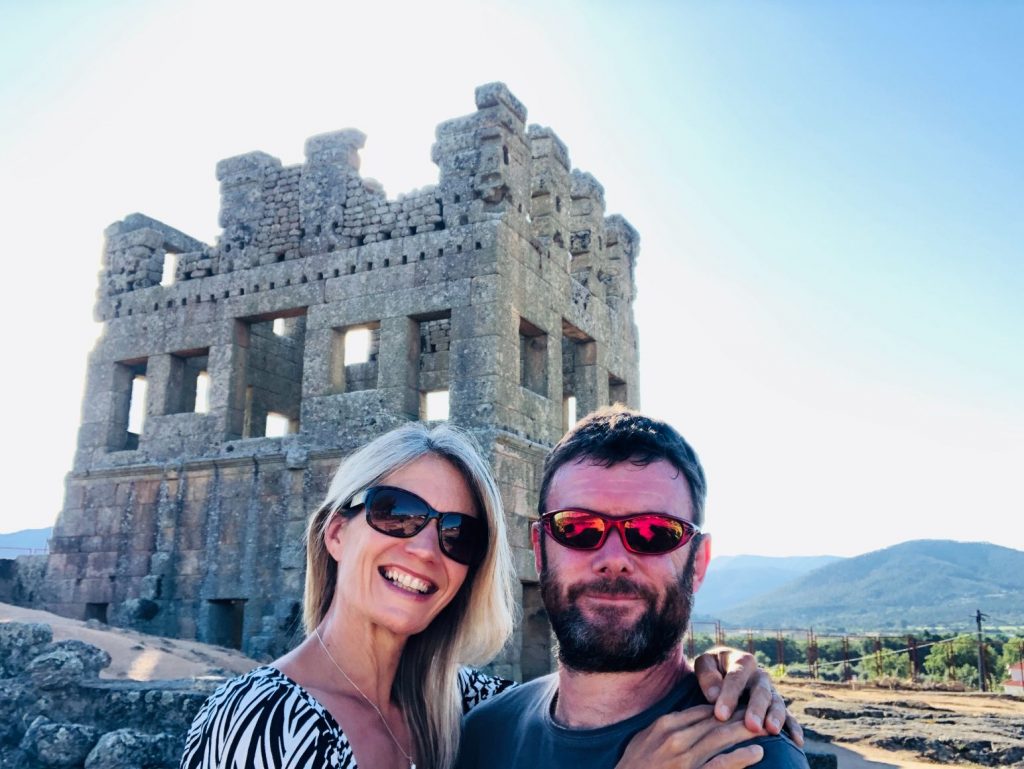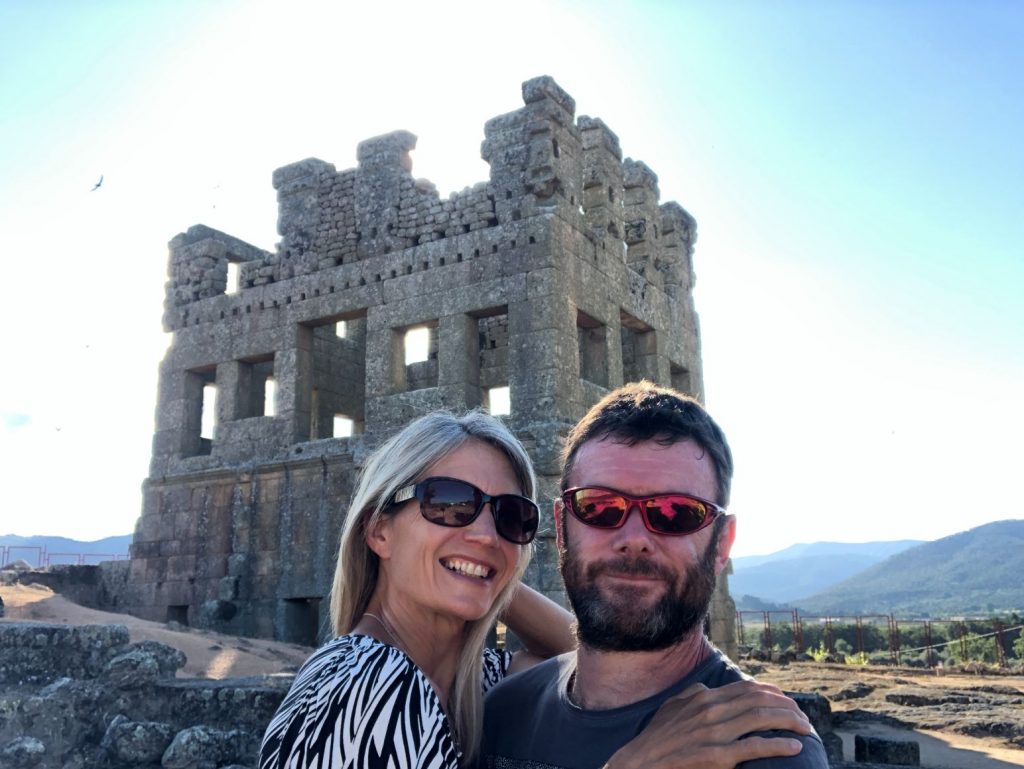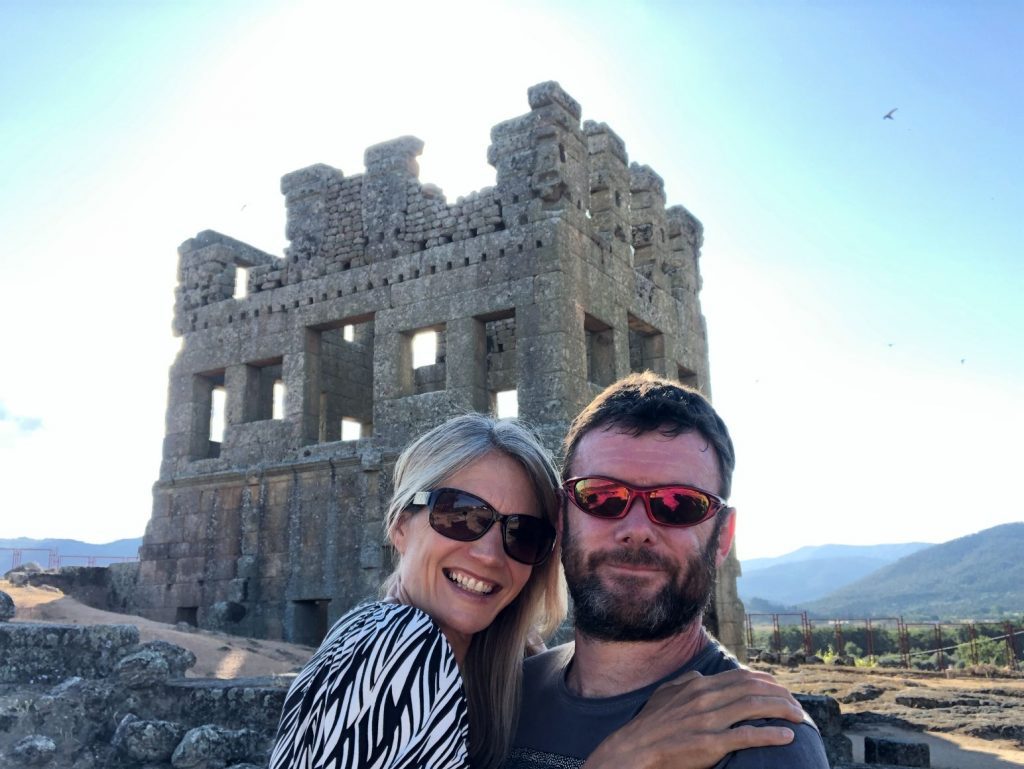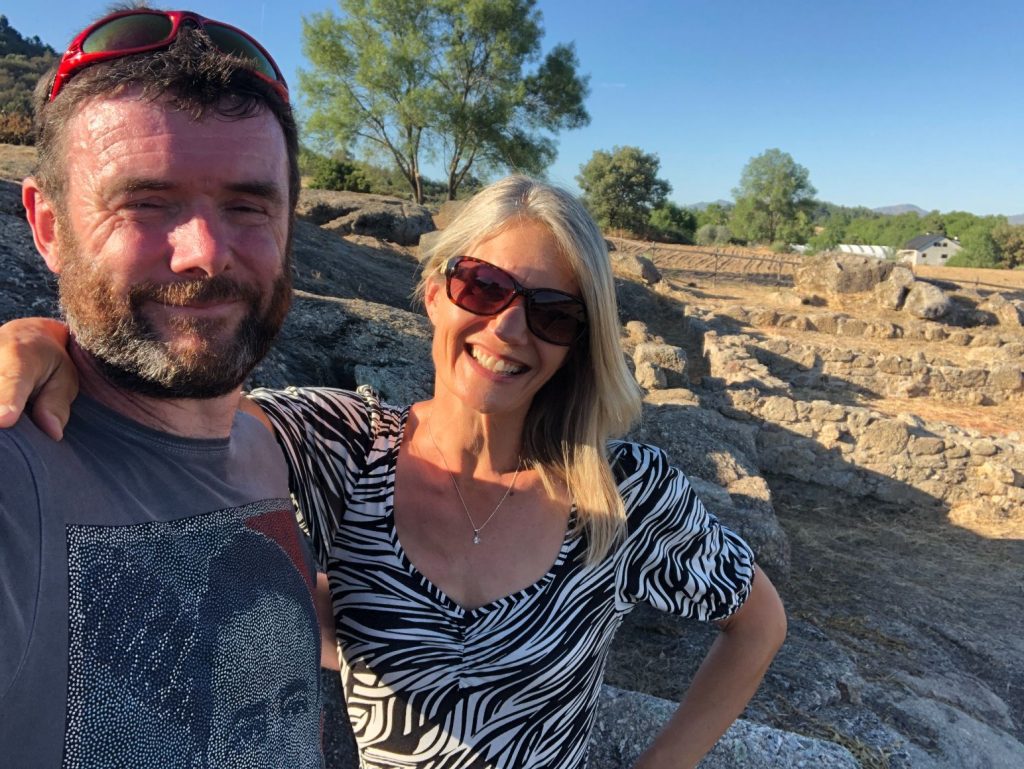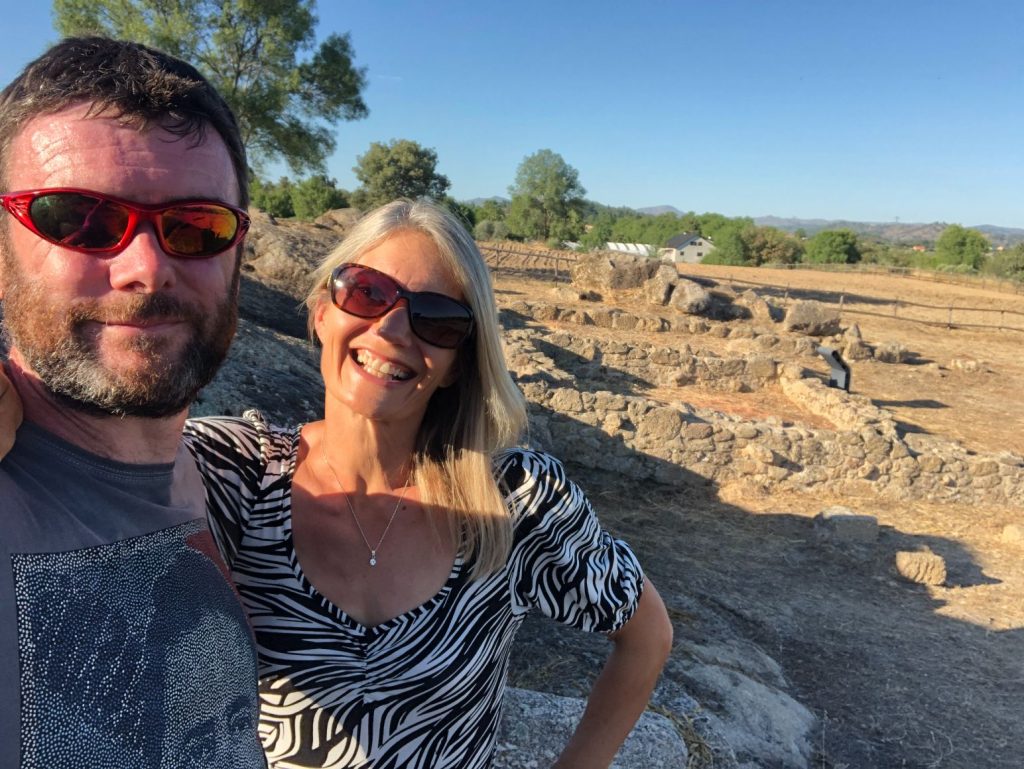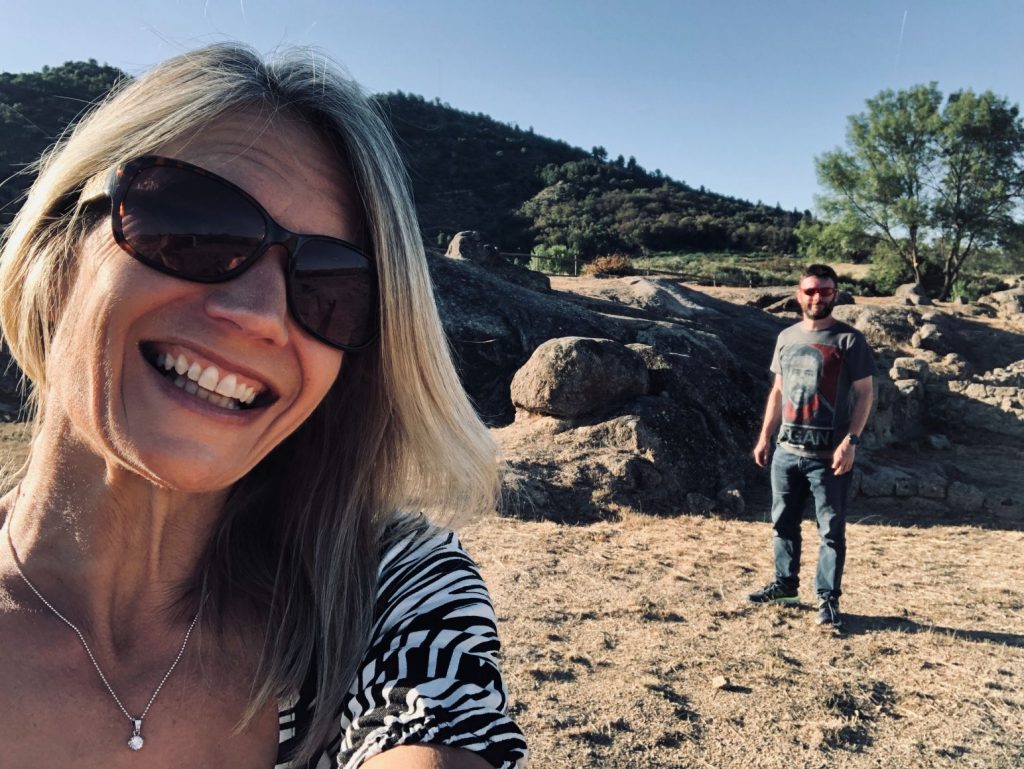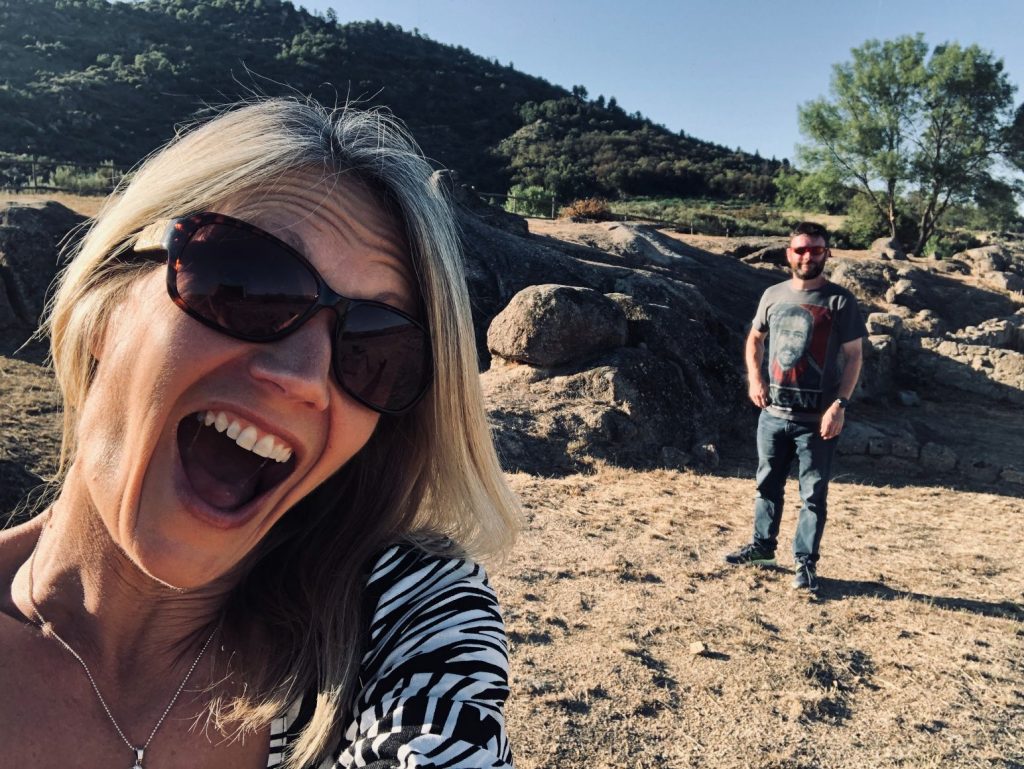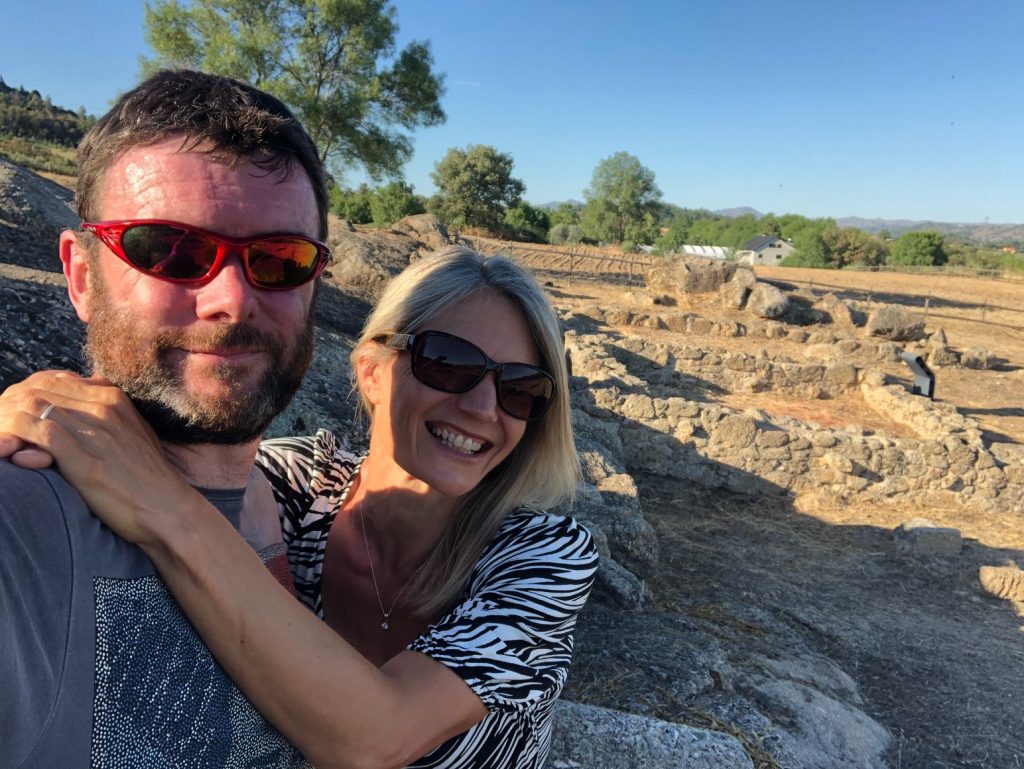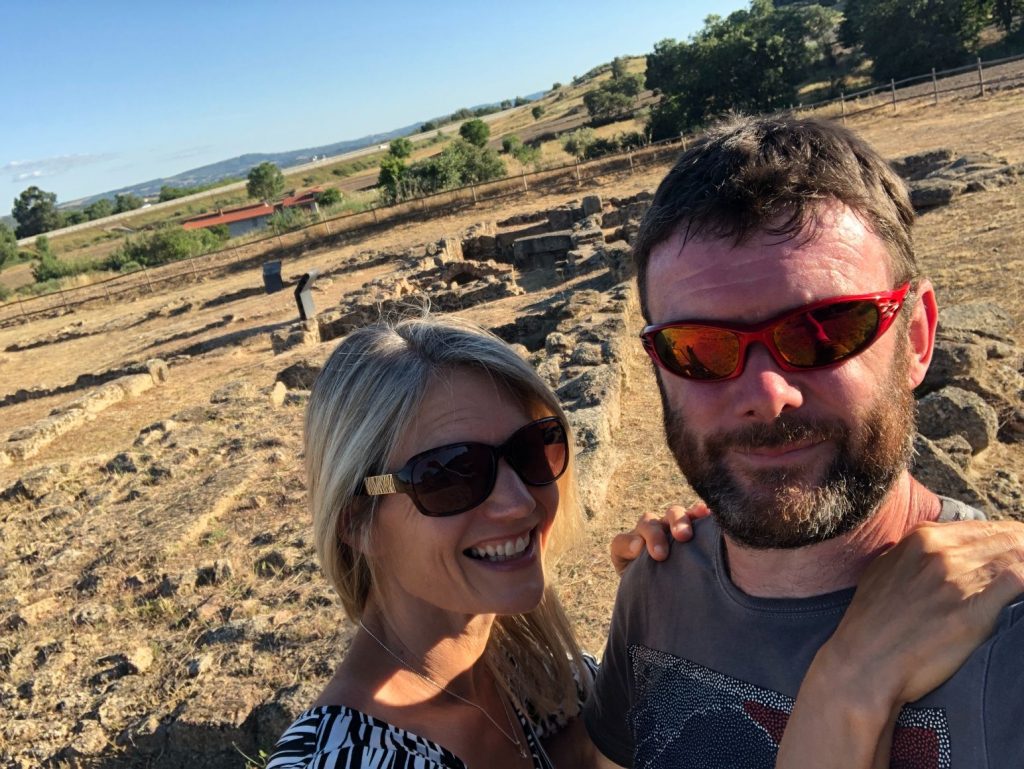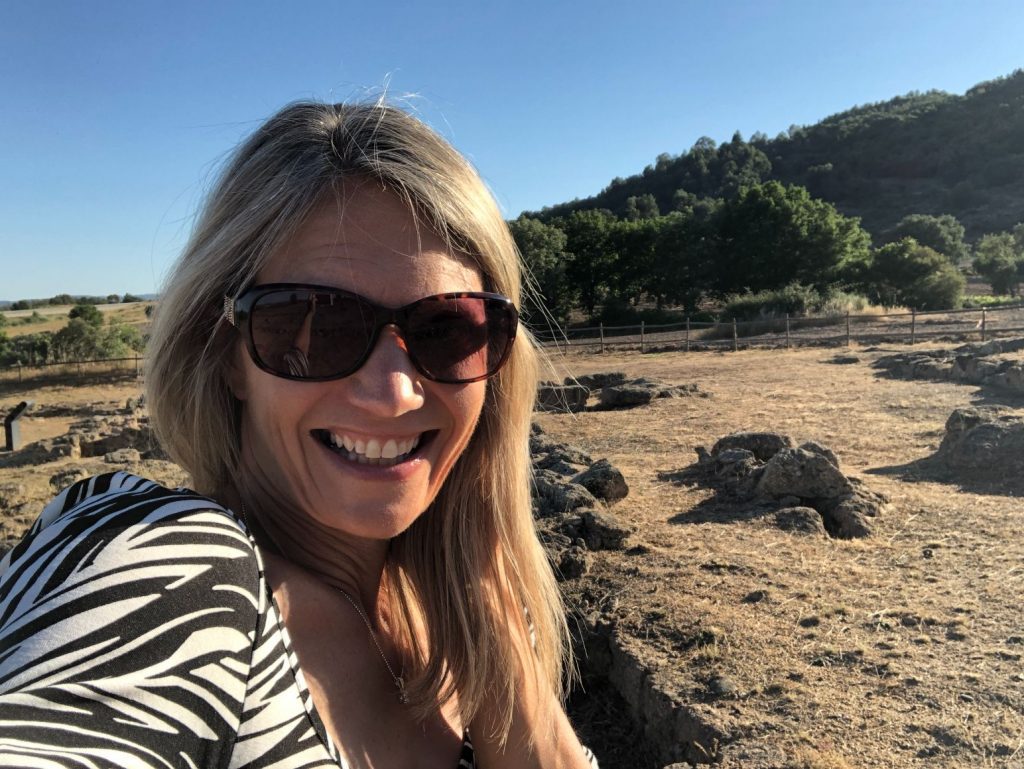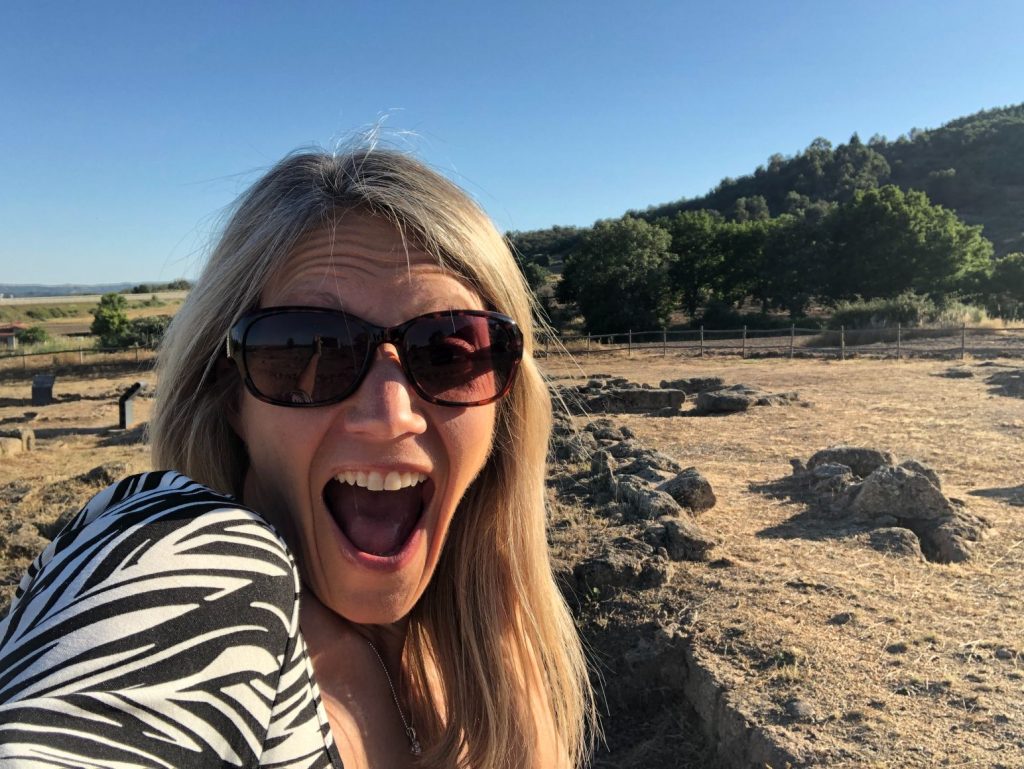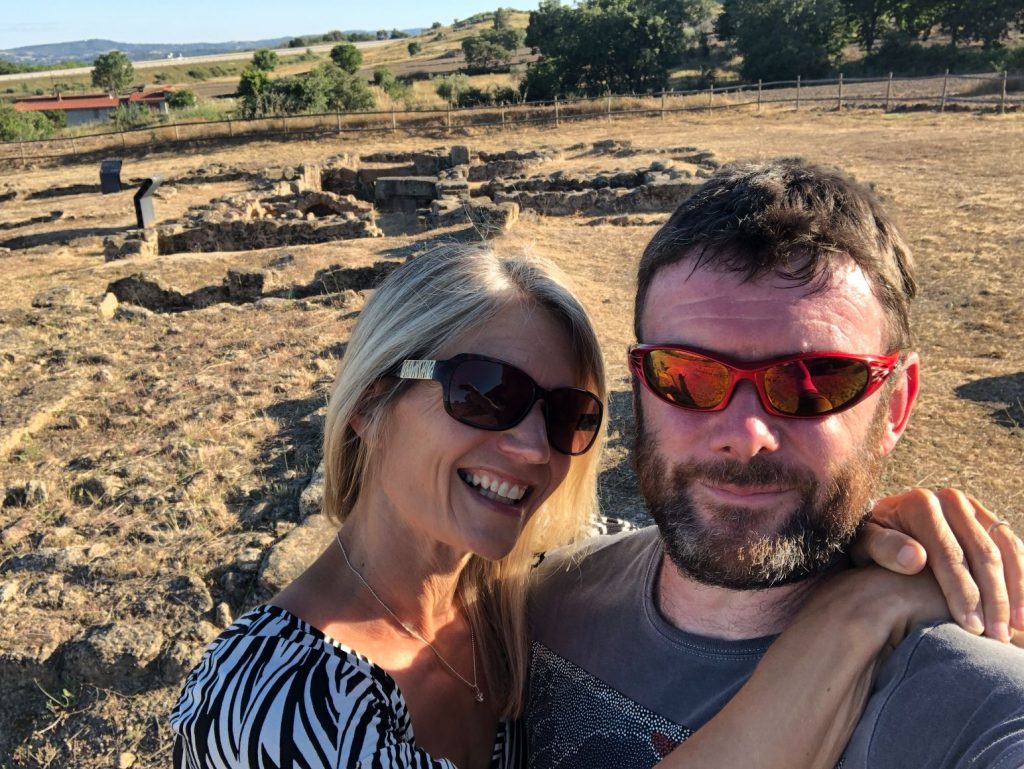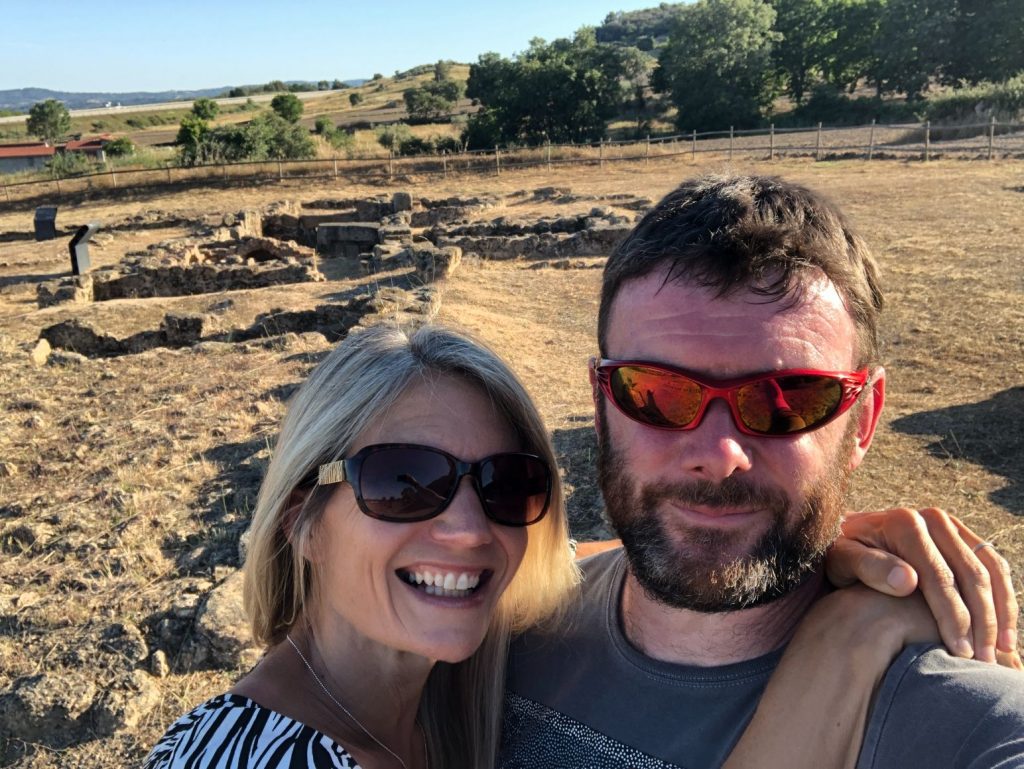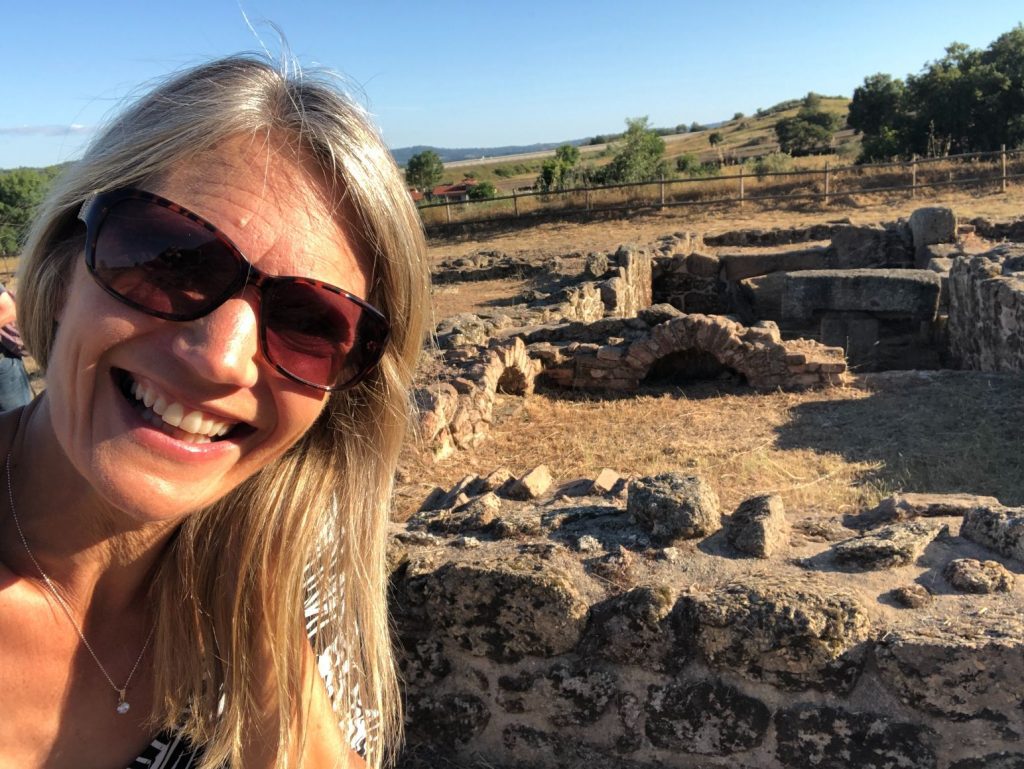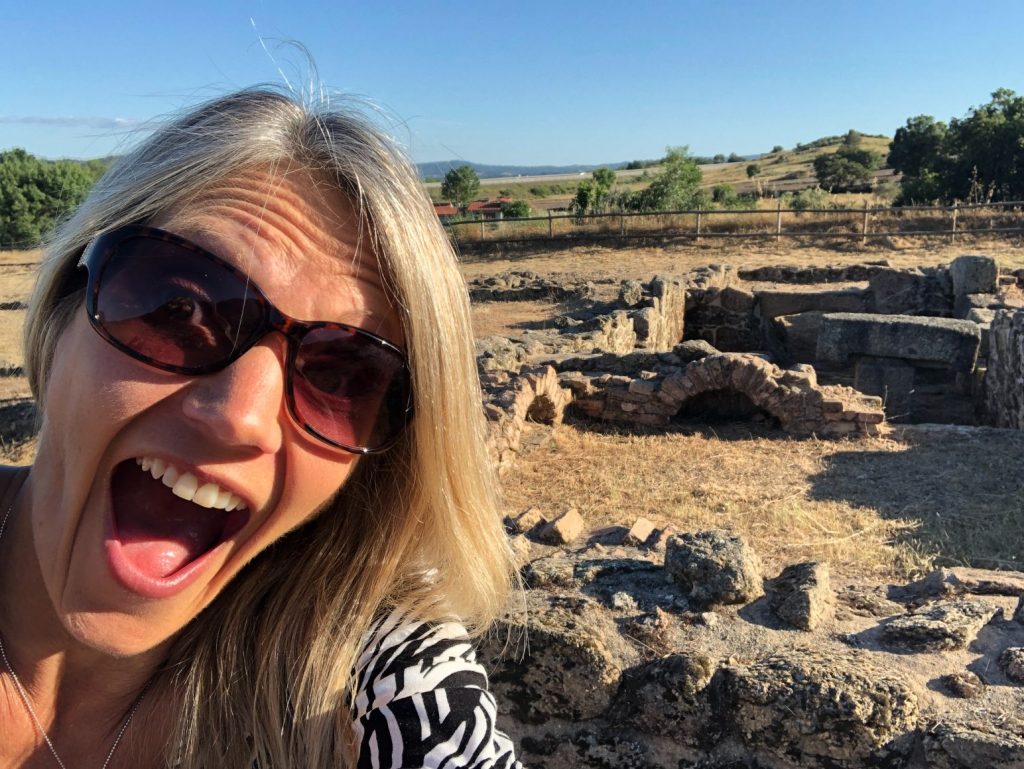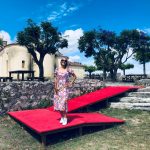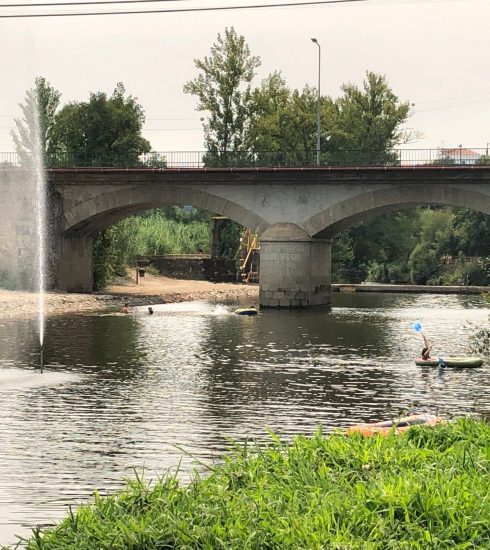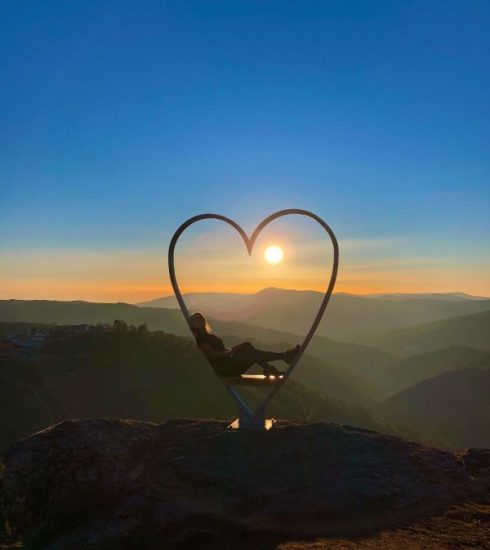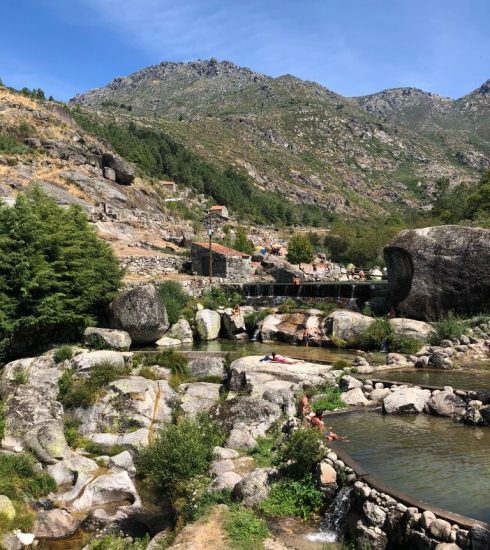A DAY TRIP TO BELMONTE
Hubby has returned from his work commitments in the U.K so I decided to plan an epic adventure to celebrate his safe return. The delights of another Historical Portuguese Village: Belmonte. I first learnt about Belmonte when I visited nearby Covilhã and I was very fascinated to visit and learn more about its Jewish links. Belmonte is located right in the heart of Cova da Beira at the foot of Serra da Estrela. Belmonte is part of the Network of 12 Historical Villages of Portugal, belongs to the Route of Jewish Quarters of Portugal and is bursting with centuries of history, heritage and tradition. Crowned by the medieval castle, Belmonte stands out for the beauty of its landscapes and monuments. The oldest traces date back to the Neolithic era where the Anta de Caria stands out. The villages of Chandeirinha and São Geraldo are places that mark the human presence during the Bronze Age/Iron Age. It is, however, from the Roman period that the most significant remains can be found.
History
Information sourced from: https://aldeiashistoricasdeportugal.com/aldeia/belmonte/
Tradition has it that the name Belmonte comes from its location (beautiful hill). Some say, however, that it comes from ‘belli monte’, the hill of war. Belmonte is usually associated with the history of the Cabrais and the Jews. It was the birthplace of Pedro Álvares Cabral, the navigator, who in the year 1500 commanded the second fleet to India, during which Brazil was officially discovered. The human presence in the current municipality of Belmonte has been proven since the most remote times. The Anta de Caria, the Castros de Caria and Chandeirinha certify the longevity of the fixation in pre and proto history. The Roman presence is also evident in the testimonies of the Centum Cellas Tower or the Villa da Quinta da Fórnea, crossing points on the road that linked Mérida to Guarda.
In the Middle Ages Belmonte appears to us, firstly, linked to the history of the municipality of Covilhã, specifically, the charter granted in 1186 by D. Sancho I. In 1199, in accordance with its policy of settlement and reinforcement of border defence, the same king granted a charter to Belmonte, which until 1385 was under the jurisdiction of Covilhã. In the 13th Century, the town was already in full development, justifying the existence of two Churches – São Tiago and Santa Maria (near the old cemetery, next to the castle) and a Synagogue. Although belonging to the Crown, the Castle of Belmonte was administered by a local mayor and since 1398 this position was linked to the Cabrais.
Fernão Cabral, father of Pedro Alvares Cabral was the first mayor. The 15th Century was the period of greatest prominence for the castle and Belmonte. In 1510 D. Manuel I granted Belmonte a new charter. At that time the community of Belmonte was essentially rural, dependent on livestock and agriculture. The presence of Jews also favoured the existence of some commerce. In the first half of the 16th Century, the Municipality of Belmonte had “two leagues in length and one in width”, being the town that in the district of Castelo Branco had the highest population density in neighbours after Atalaia. In the middle of the 18th Century, the population of Belmonte already had about 1416 inhabitants. In 1811, it was judicially annexed to Sortelha (which had Juiz de Fora) in the Comarca, Provedoria and Diocese of Castelo Branco and in 1842 it belonged to the Administrative District of Guarda.
With the administrative reform of 1855, the Municipality of Belmonte was enlarged by the incorporation of Caria but on the 7th December 1895, this municipality was extinguished, and its parishes were annexed to Covilhã. Only three years later the Municipality of Belmonte was restored.
GPS Coordinates (Parking) : 40°21’39.6″N 7°20’53.1″W
Journey & Timings
The journey from our casa took 1 hr 50 mins and it is 97 km in distance. It takes so long as the route is via so many windy roads which made me feel very nauseous indeed. We arrived just before 10am and parked very close to the Historical Centre in an allocated free parking space. If you are planning to visit Belmonte please bear in mind that most of the Museums and the castle close for an extended period over lunchtime. The usual opening hours are Tuesday to Sunday 9:30/10:00 – 13:00 and 14:30 – 17:30/18:00 and the last entrance is 30 mins before the closing time. We were fully prepared for this so visited the castle first along with a couple of museums and then we visited the free attractions, had lunch and then visited the remainder of the museums in the afternoon. I had a firm system in place so we could see everything. they don’t call me the “Princess Planner” for nothing (ha ha).
Points of Interest:
- A Prensa (The Olive Press)
- Igreja de Santiago e Panteão dos Cabrais (Church of Santiago & Cabrais Pantheon)
- Chapels of Santo António and Calvário (Chapels of Saint Anthony and Calvary)
- Cruz de Madeira de Paul Brasil (Wooden Cross of Pau Brasil)
- Castelo de Belmonte (Belmonte Castle)
- Antigas Paços do Concelho (Old Former Town Hall) – Located in Largo do Pelourinho
- Pelourinho de Belmonte (Pillory)
- Hanukkah Candelabro (Candlestick)
- Judiaria de Belmonte (Jewish Quarter) – Located between Rua Direita and Rua da Fonte da Rosa
- Sinagoga Bet Eliahu (Synagogue)
- Estátua Pedro Álvares Cabral (Statue)
- Estátua Zeca Afonso (Statue)
- Fonte Grande (Fountain)
- Fonte da Rosa (Fountain)
- Chafariz do Largo Doutor António José de Almeida (Fountain)
- Banda de Música de Belmonte (Belmonte Music Band)
- Camara Municipal de Belmonte (Belmonte City Council)
- Viewpoint of Varandas do Zêzere – Located right before the City Hall
- Solar dos Cabrais – Former home of Cabral family Now the Municipal Library & Discoveries Museum
- Ecomuseu do Zêzere (Zêzere Ecomuseum)
- Museu do Azeite (Olive Oil Museum)
- Museu Judaico (Jewish Museum)
- Museu a Descoberta do Novo Mundo (Discovery of the New World Museum)
- Igreja Matriz (Main Church)
- Art Nouveau Houses
- Belmonte Municipal Garden
- Villa da Quinta da Fórnea (Ancient Roman Villa Ruins)
- Centum Cellas – Located in Colmeal da Torre
Festivals
- Traditional Sausages and Flavours Fair of Belmonte (February)
- Procession in Honour of Our Lady of Hope (25th and 26th of April)
- Belmonte Medieval Fair (Mid-August)
- Kosher Market (September)
- Feast of Lights (December): Marks the Jewish celebration “Hanukkah”
- Caminhos Santiago (Ways of St James) St James’s Day is celebrated on 25th July. There are two ways to Santiago de Compostela in this municipality. The “Via da Estrela”, from Cáceres, and the “Nascente”, laid out from Évora.
Legend of the Captive of Belmonte
This is the story of Manuel, the faithful squire of a knight from Belmonte. Together, they left their native city to fight the Moors in fierce battles, where they always demonstrated their courage. One day Manuel was captured by the Moors and taken to Algiers. He remained a slave there for many years, with a very cruel master who mistreated him, forcing him to very hard labour and shutting him in a trunk at night. He accepted his fate as penitence and dealt with his longing for home and family by dedicating himself to the hardest tasks. After many years, his master asked him the meaning of the word he heard Manuel repeat over and over: “Esperança” (Hope). Manuel told him it meant the wish to return to his home city and his faith in the “Virgem da Esperança” (Virgin of Hope). The Moor replied that such faith was impossible and made his life even harder. According to the legend, the Virgin took pity on Manuel and the trunk in which Manuel slept rose up in the air and disappeared in the direction of the sea. On the same day, the people of Belmonte who were heading for mass at the Igreja de Santa Maria were surprised to see a trunk land next to the church and Manuel get out of it. The joy of the people was indescribable and they decided to build another chapel on that spot, dedicating it to Nossa Senhora da Esperança (Our Lady of Hope).
Legend of the Cabral Family
The story is told that a shepherd in the Serra da Estrela area heard a voice in his dreams three nights in a row: “Go to Bethlehem and there you will find your treasure.” He set off, and when he got to Bethlehem, three days passed by, and he didn’t find his treasure. He started on his way back home and met a man. The shepherd told him what had happened, and the man said he had had a similar dream; at Belmonte, beneath a rock cliff, where there was a golden goat and her young. When the shepherd reached Belmonte, he removed a rock, where he found buried treasure: a solid golden goat and a kid. He decided to give one of the animals to the King and told him he had a goat or a kid to offer him. Which did he prefer? The monarch said he wanted the kid, which was always more tender. The shepherd offered him the kid and when the king saw that the goat was made of gold, he said that he would have chosen the goat if he had known it was made of gold. The shepherd gave him the goat, too, and told him how he had found these presents. In repayment, the king told the shepherd to go up the mountain where he found the treasure, and he would offer him all the lands he could cover on horseback from that point in one day. So this was how the Cabral family gained their power and this explains the two goats (cabras) on the family coat of arms.
Battle of the Scouts – Belmonte Castle
Firstly I just want to say when you do your research be careful as there is a Belmonte Castle in Spain so don’t do what I did and Google the wrong one! I arrived expecting to view the interior of the castle and grand eloquent rooms. I did wonder why some websites said the entree cost was €2 and others said €9. Anyway it was an epic fail as not only did I have the wrong castle but the wrong country (ha ha).
As we approached the castle I could hear the high pitched voices of several children. We entered the castle and bought a combo ticket for €10 which included admission to the castle and 5 museums. The Tourist Information Centre is located inside a building next to the castles main gate. As soon as we stood step inside the castle grounds we were overrun by woggles and knee high socks. SCOUTS to be precise! Yes, there was the biggest group of scouts that I have ever seen with several leaders. It was an invasion of little people, “Siege of the Scouts” so to speak (ha ha). They took over the whole of the lower level and there were tents too. It appeared that they had camped out at the castle overnight. We are used to visiting places and being the only ones there so to us it was a shock to our systems but we found it all quite funny. One would assume that the Municipal might add this information to the castle website to inform visitors that there was an event on but they didn’t. In all fairness the scouts were very well behaved and did not venture up to the upper levels so it didn’t really affect our experience although I do think it would have been safer to close the castle to the public. My main reason for this is that in my opinion there did not appear to be that many leaders compared to the massive amount of children. We used the toilets and they were trashed with skidders down the pans and no toilet paper. I luckily had a pack of tissues in my backpack because I am prepared and always in a state of readiness in mind and body to do my duty just like a scout (ha ha). In the toilets, a little girl asked me if she could have one of my tissues and I obliged. My main concern is that this lovely little girl (who was about 8 years old) was in the toilet by herself. There was no leader and she didn’t enter in a pair with another child. We all like to think that we live in a rosey world with no evil but the toilet situation (sharing with the public) is not acceptable in my eyes and the children could potentially be at risk. On our first visit if you discount the 100+ scouts we only saw about 6 other visitors. I wasn’t sure if I should take photos with the scouts in the background and it made me feel a bit uneasy taking photos of somebody else’s children. The leaders deserve a medal (or better still a cold beer or two) for supervising this crowd of kids, rather them than me, I would have gone AWOL after 30 minutes (ha ha).
We enquired at the ticket office if we could return later in the day and the nice man confirmed that the scouts would be leaving around 15:00. We returned at 16:30 and it was empty. We were the only ones there so we got to explore the lower area in peace. We did see one teenage scout on his mobile phone heading to the exit. I think the bus left him behind (ha ha). Most of the castles we have visited in Portugal are free but this castle cost €2 for an adult to enter. In my opinion it was worth the small ticket price as it truly is a granite gem but it wasn’t as impressive as the castle at Sortelha or Monsanto (and they are free). Also at all the other castles we have been able to climb the high precarious steps and wander around the dangerous death defying walls at our own risk but for some reason this castle was sectioned off with bollards and no entry warning signs which prohibited us to climb up which was a huge shame. I am not sure if this was a precaution/safety measure just for the scouts event (to prevent an accident) or if this is in place all of the time and my Portuguese is not that advanced to ask (ha ha). We still enjoyed the castle and found some outstanding artwork in one of the rooms. There are some fine views from the upper area and a kind lady even offered to take our photo, bless her. There were so many majestic birds flying overhead, can you spot them in the photos below?
History of the Castle
The construction of the castle dates from the 13th Century when King D.Afonso III authorized Bishop Egas Fafe to build a tower and castle in Belmonte, which already had a defence system. On 20/9/1446 King Afonso V gave the castle to Fernão Cabral to build his home. In the west wall we can still see the panoramic windows and a Manueline window, conforming the adaptation of the castle to a residence rather than just a castle. In the late 17th Century, a violent fire destroyed the west wing of the palace, after which it was abandoned and the family moved to what we suppose was Casa dos Condes, the current Discoveries Museum. There are signs that in the 17th Century, Belmonte Castle was once again used for military purposes. Bulwarks were built, as mentioned by Father Luís Cardoso in 1751. These bulwarks were no doubt built because of the Restoration War, as was the case of Casa da Torre in Caria, where the 17th Century bulwarks have survived. The castle covers an area of around 2,265 m2 and is an irregular oval shape with two gates. Its donjon is attached to the outside at the south-west corner and there is another building attached near the main gate to the south, from the 18th or 19th Century. As mentioned above, we can see traces on the west wall of the Cabral family’s conversion of the castle into a manor. The building was declared a National Monument by Decree on 15th October 1927. It was taken over by IPPAR in 1992 and an amphitheatre was built inside for performances. Archaeological prospecting was done inside the castle from 1992 to 1994, when proof of Roman occupation and the donjon was investigated in 1994 and 1995. The castle is open to the public and the donjon is a now a Museum with archaeological pieces from the excavations.
Castle (1st Visit)
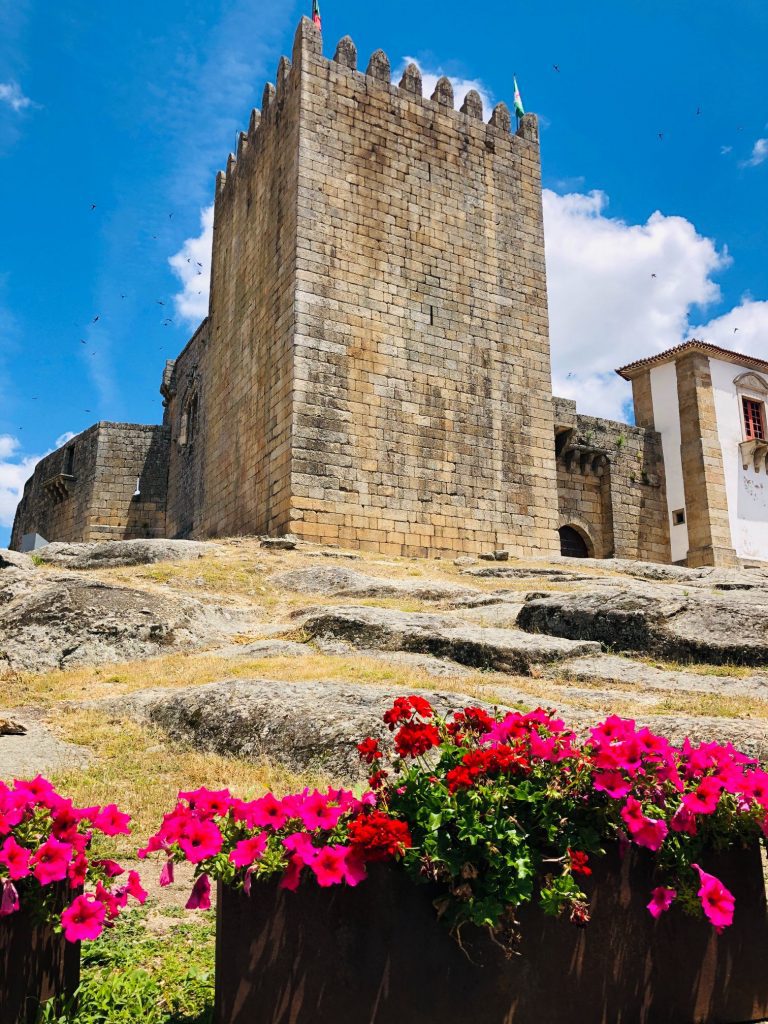


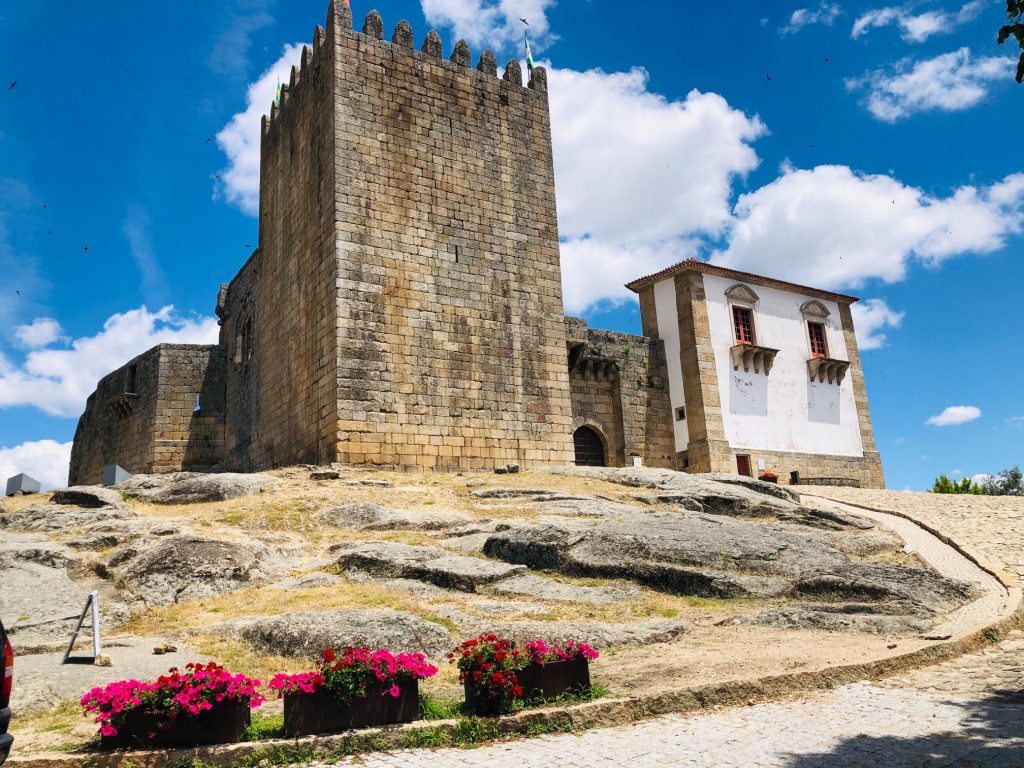


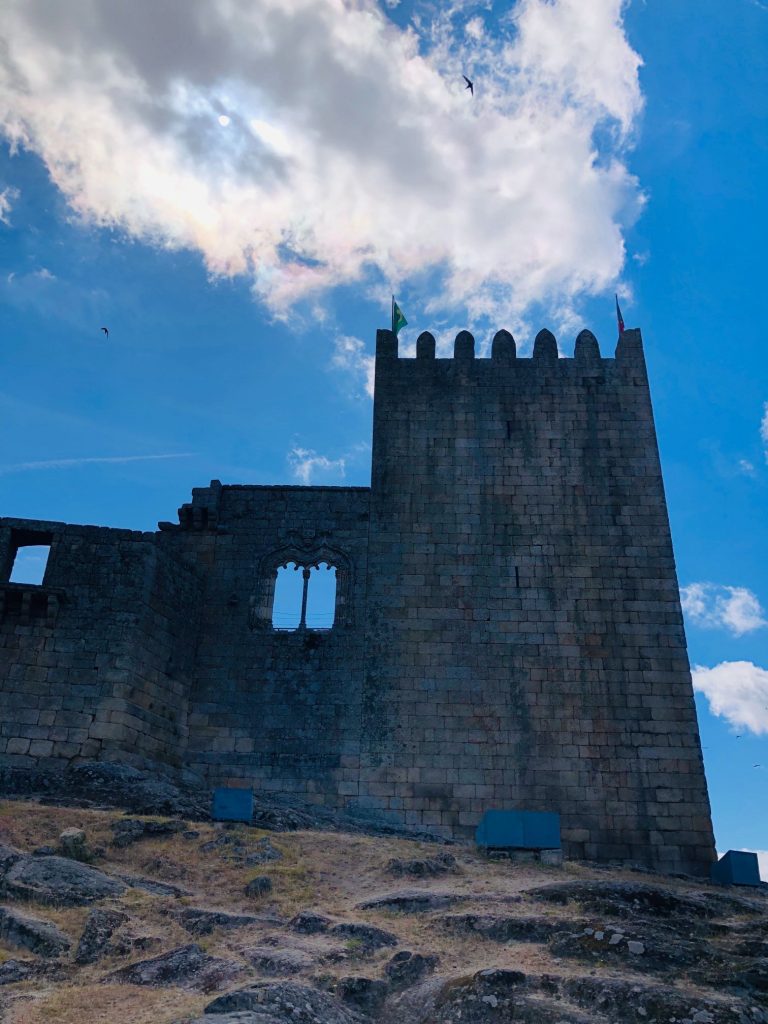


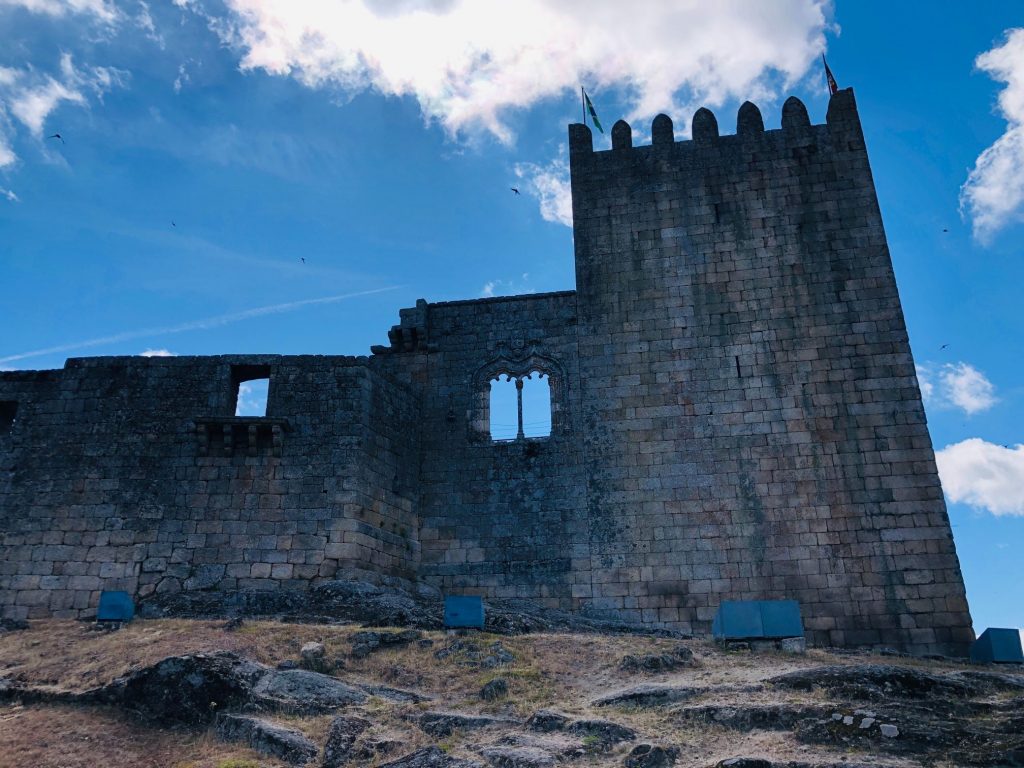





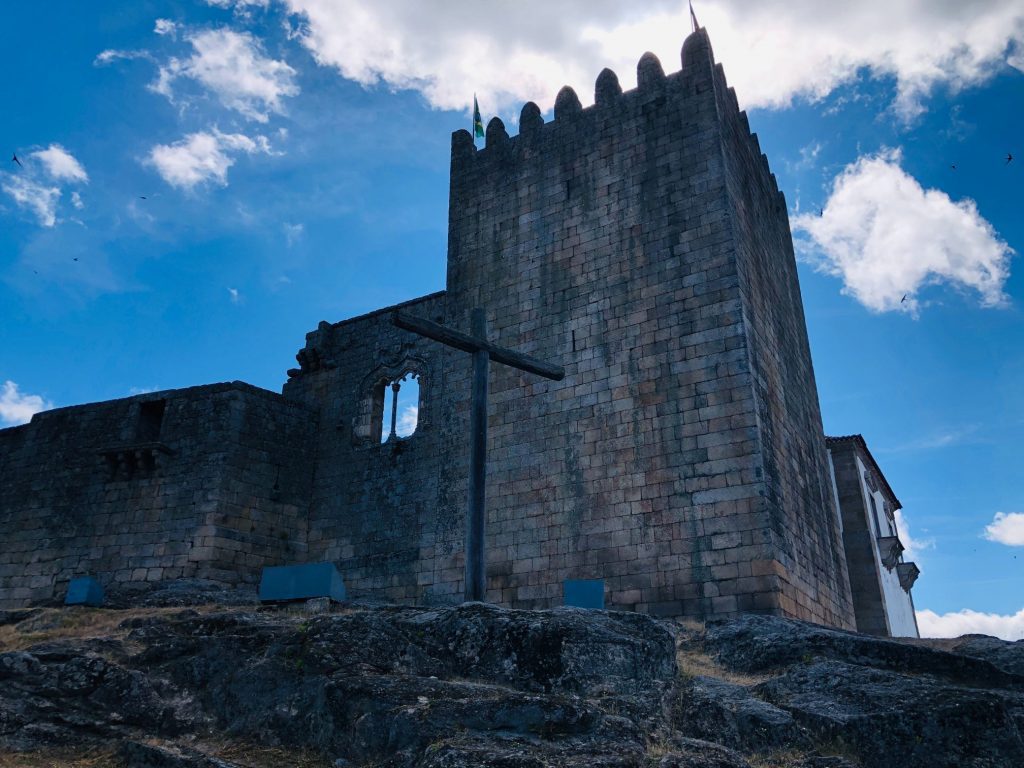


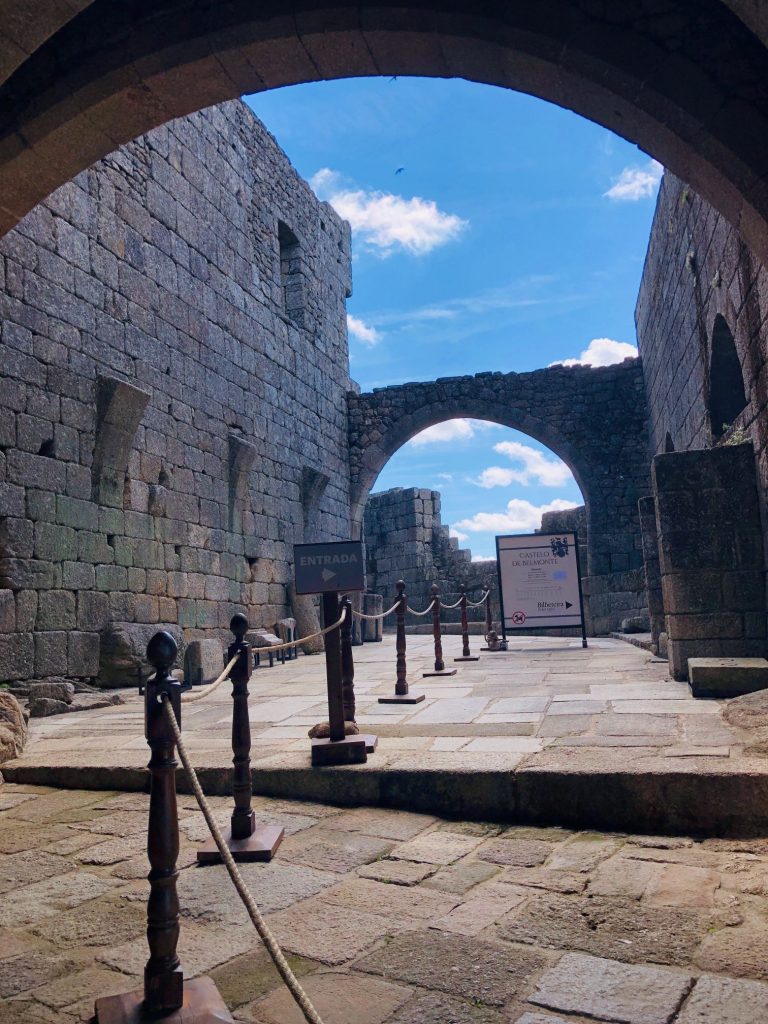


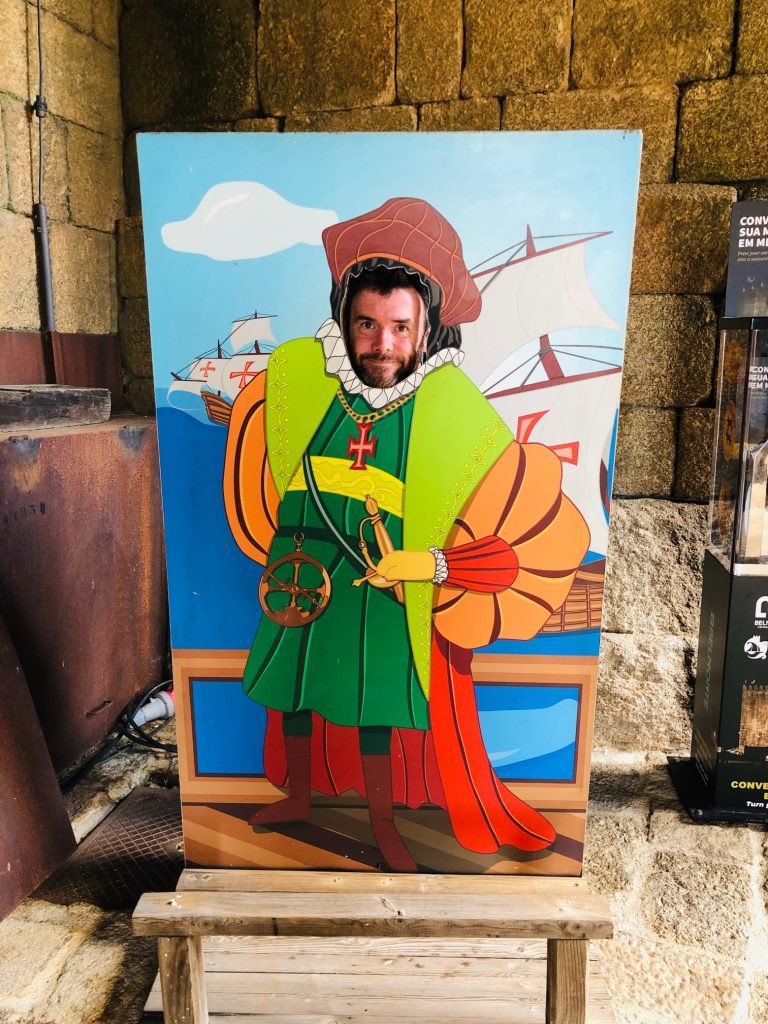


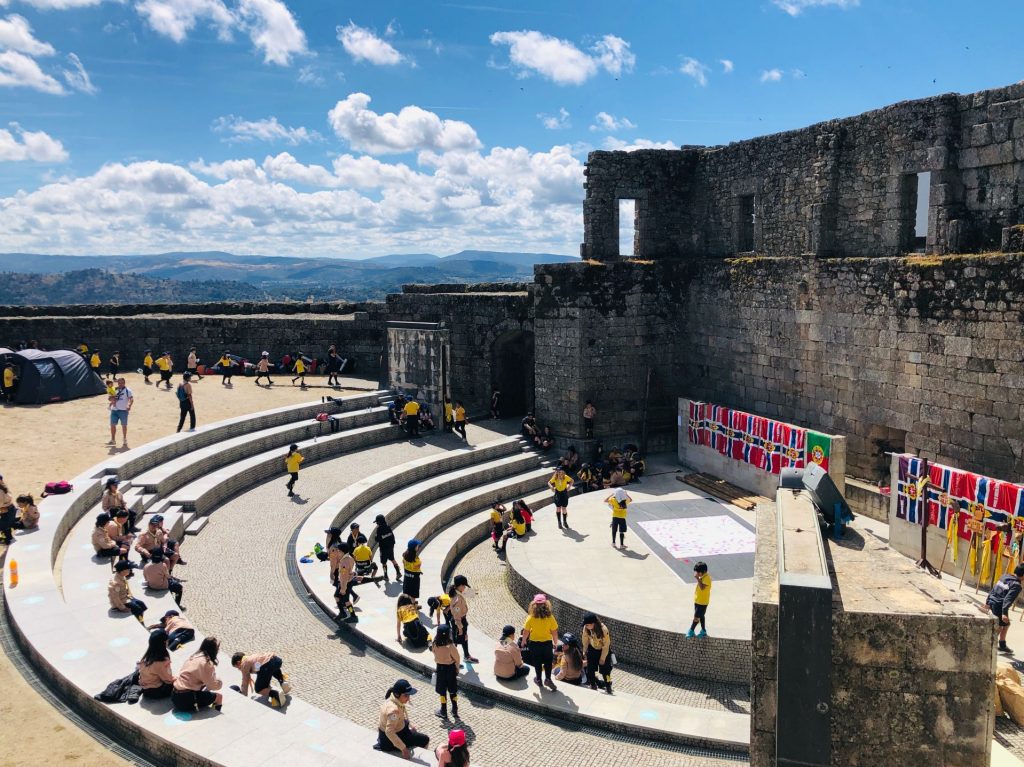


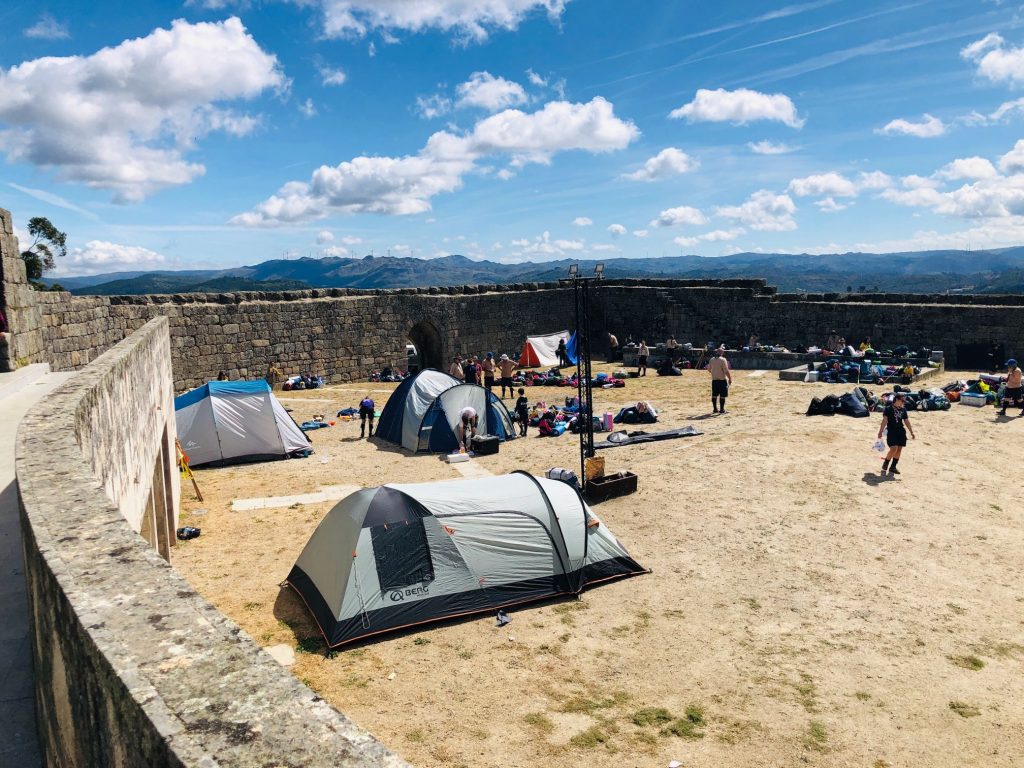


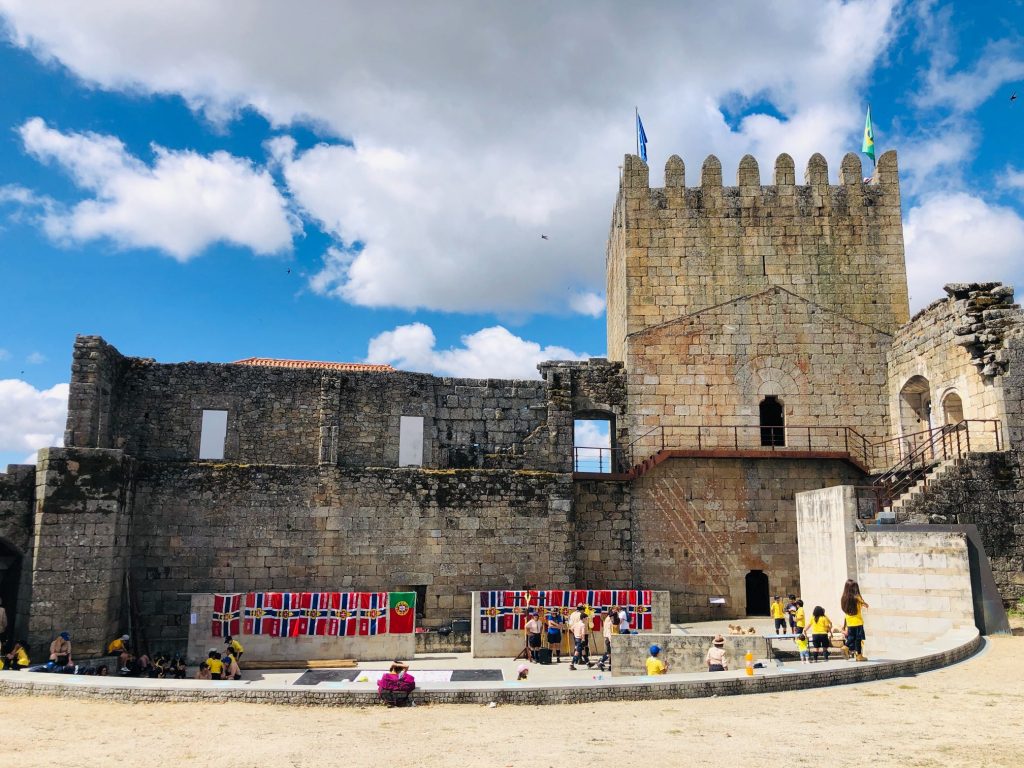


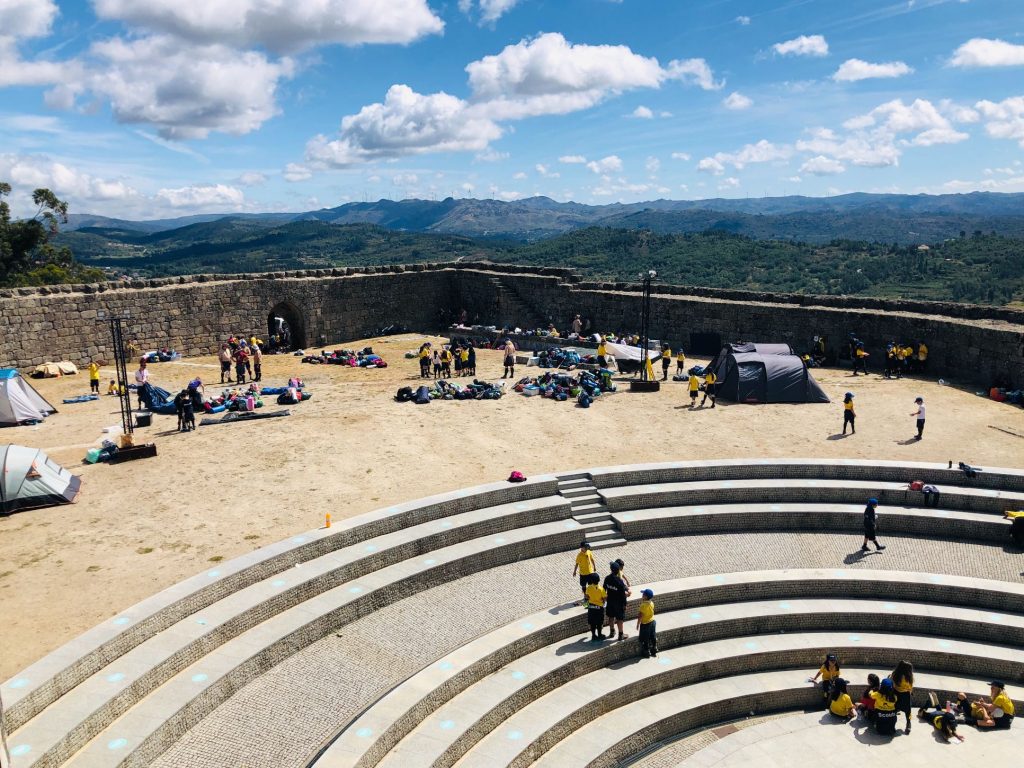


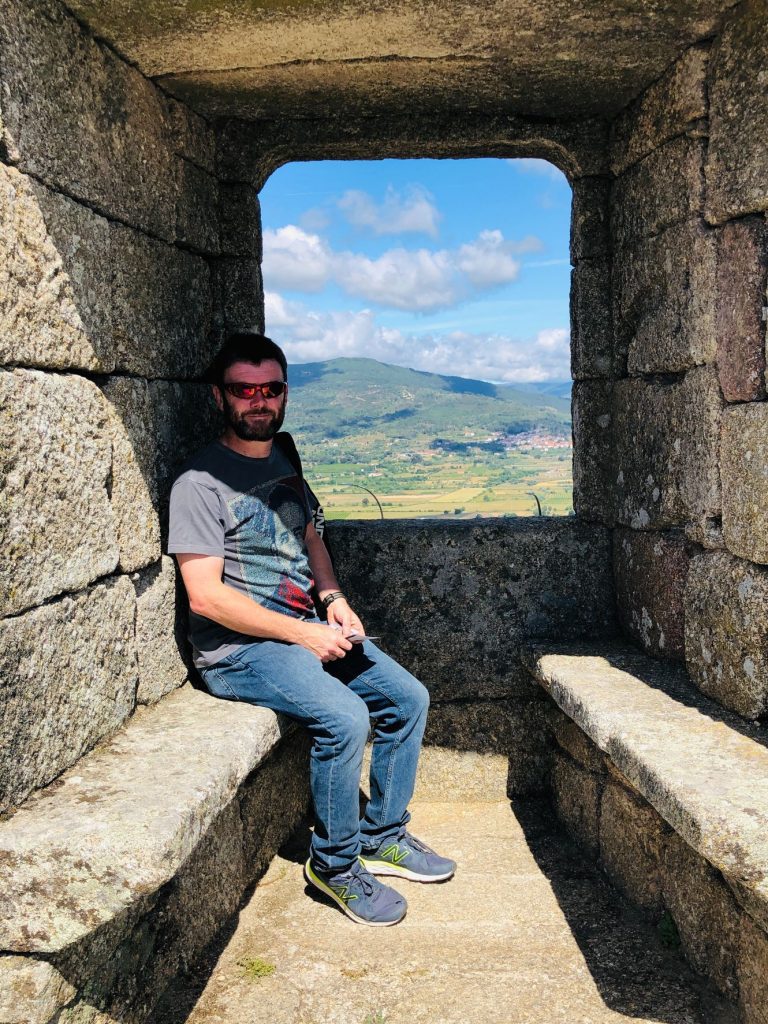


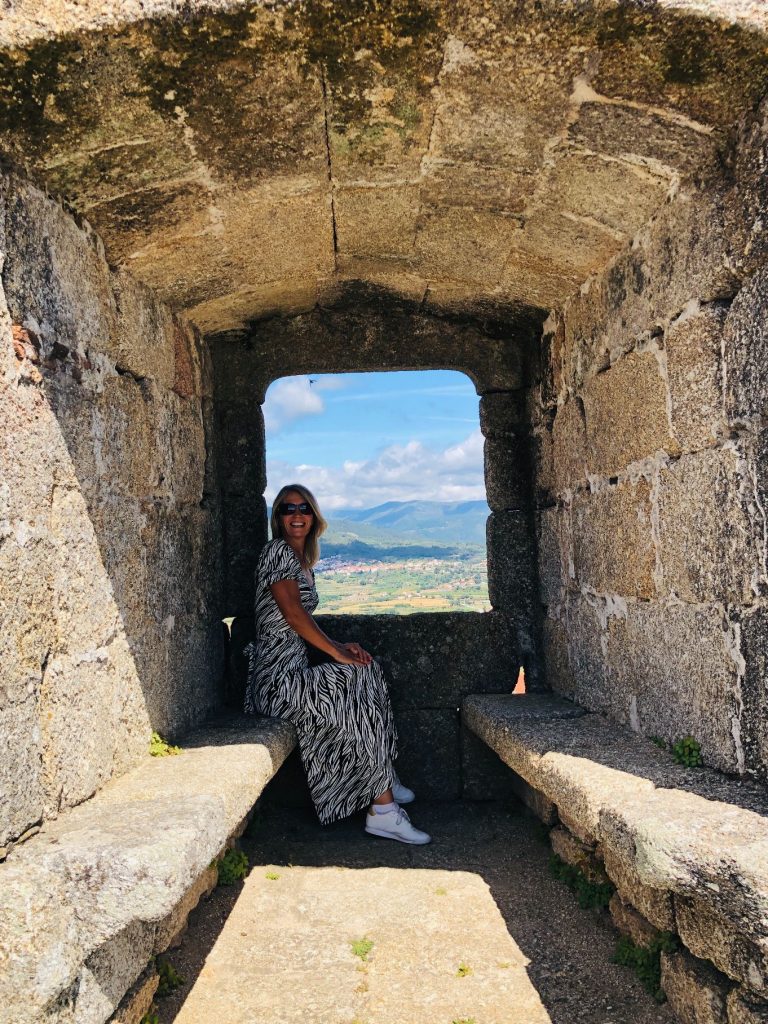


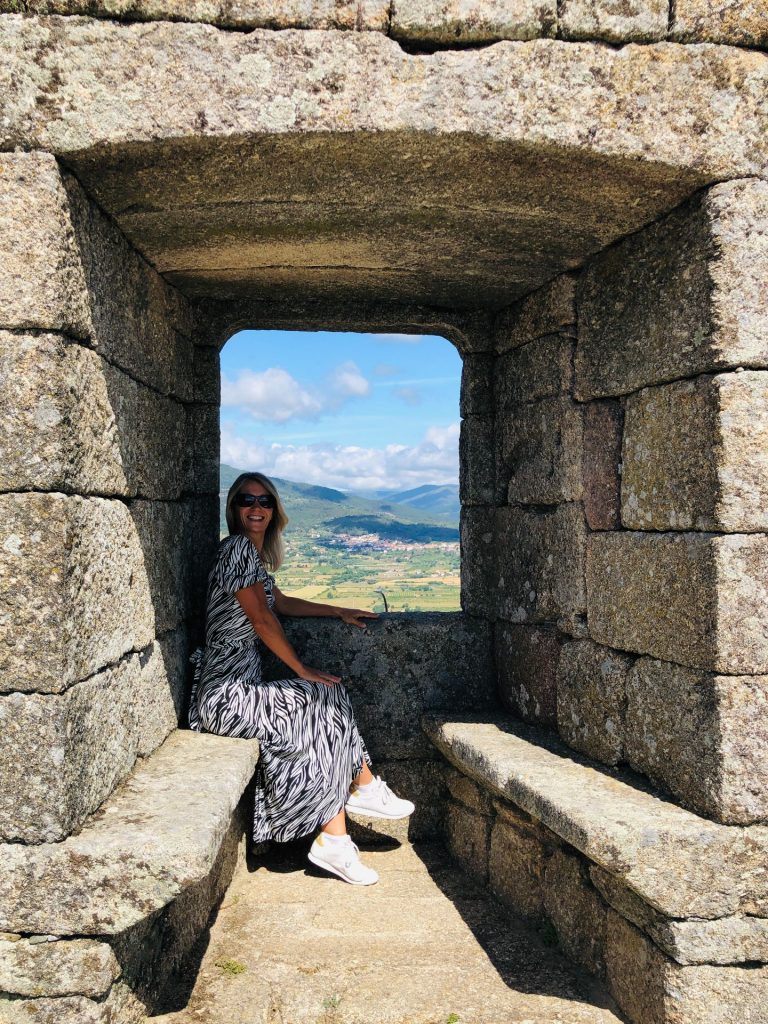


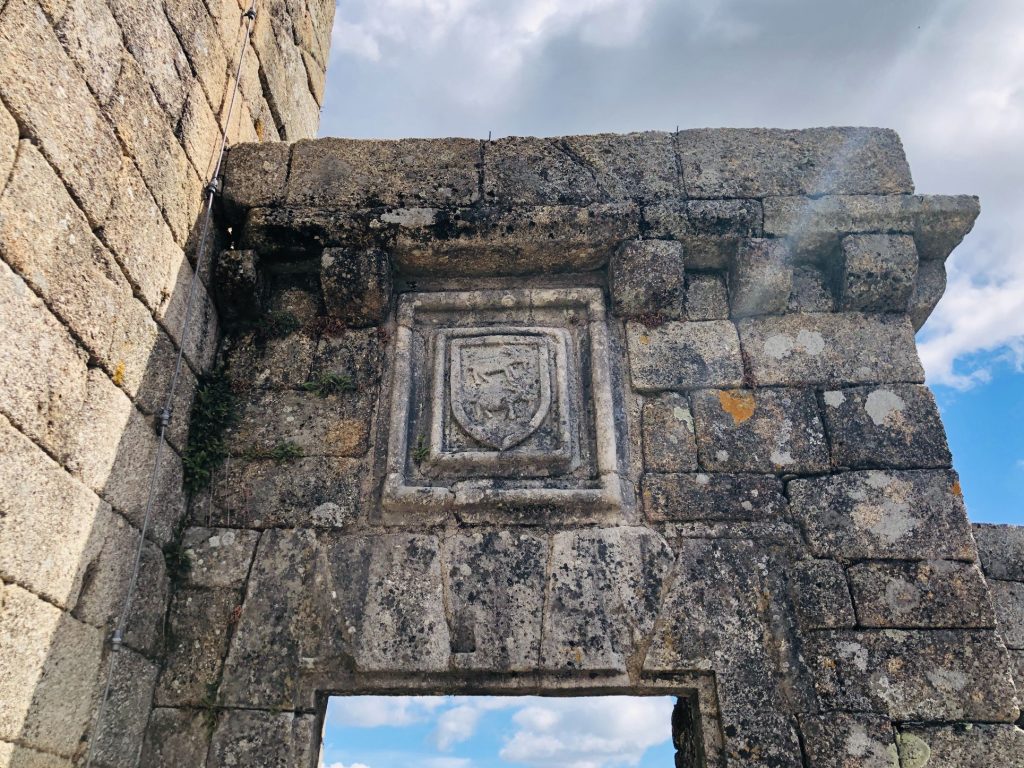


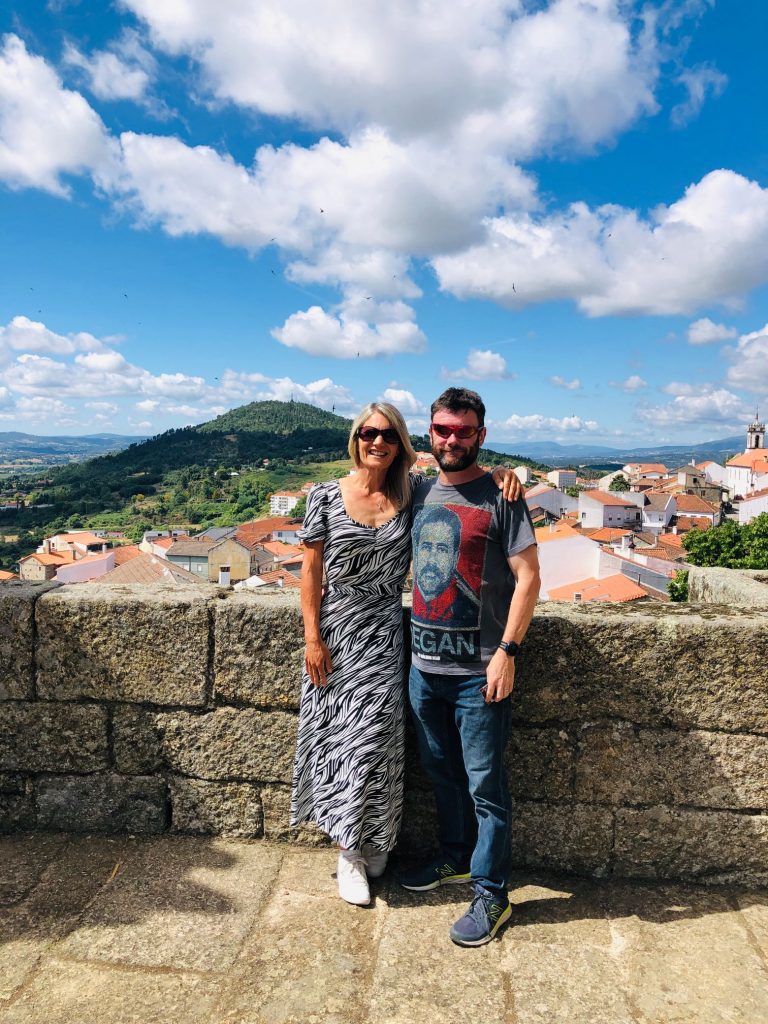


A kind Portuguese lady offered to take our photo 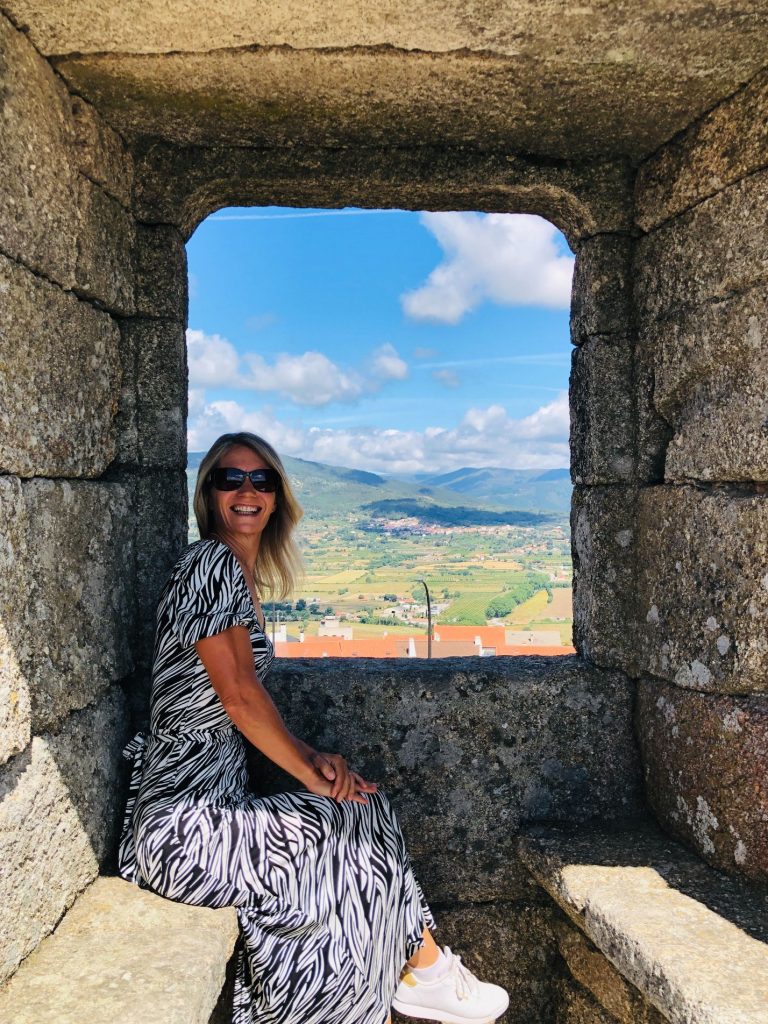


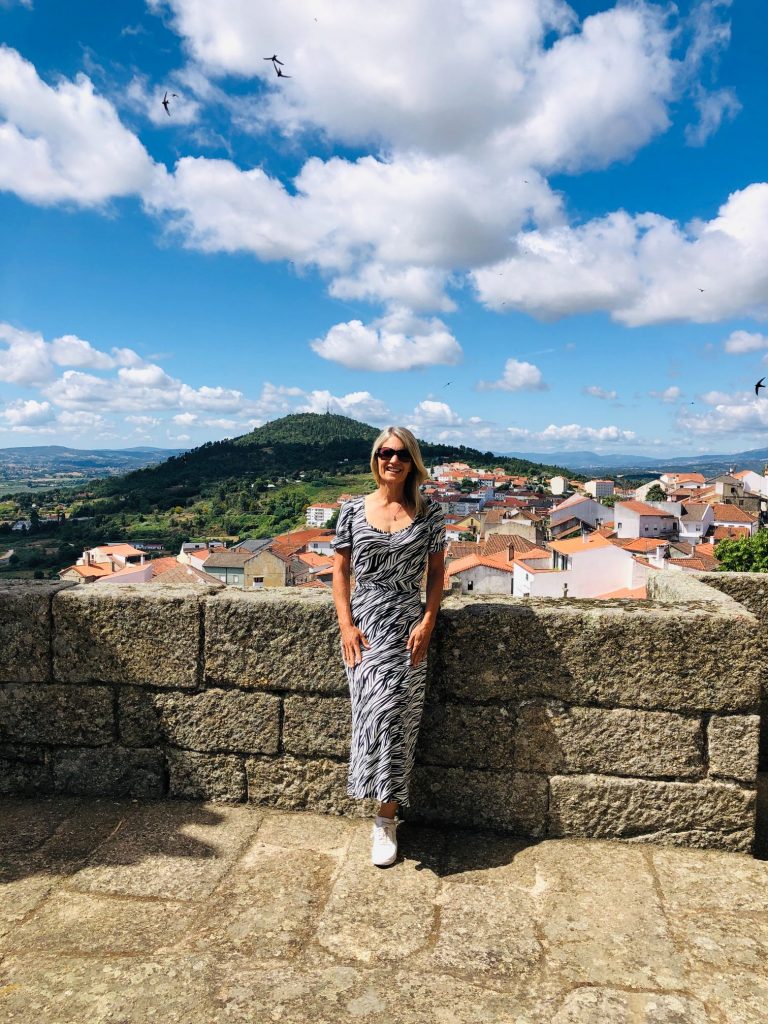


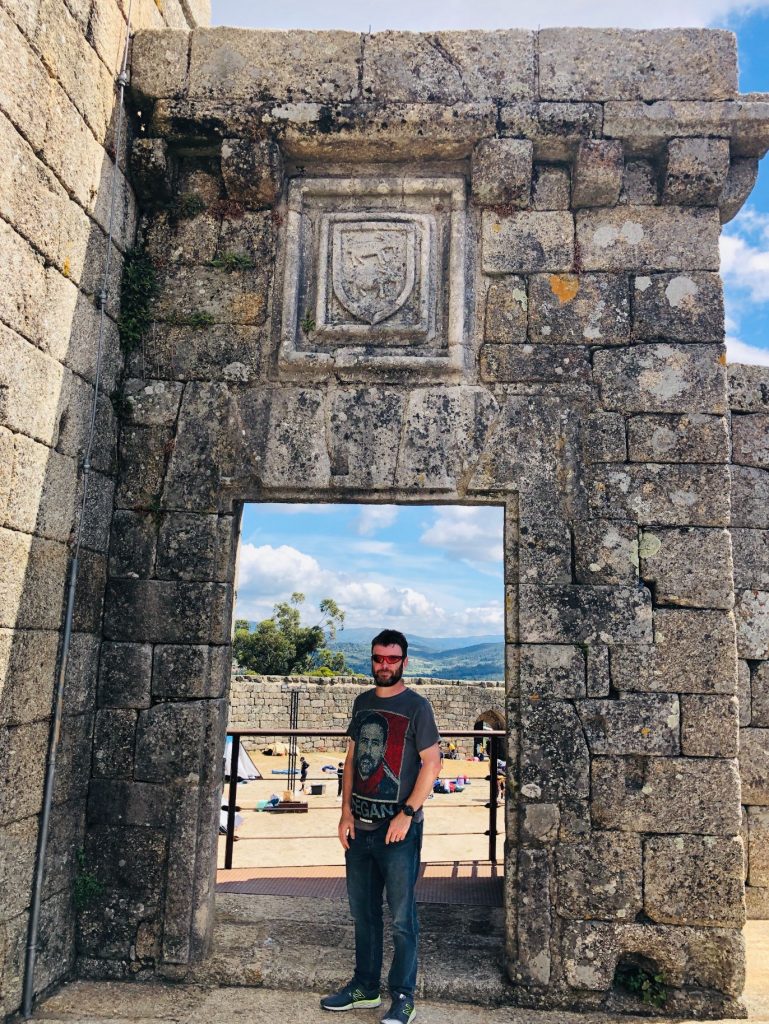


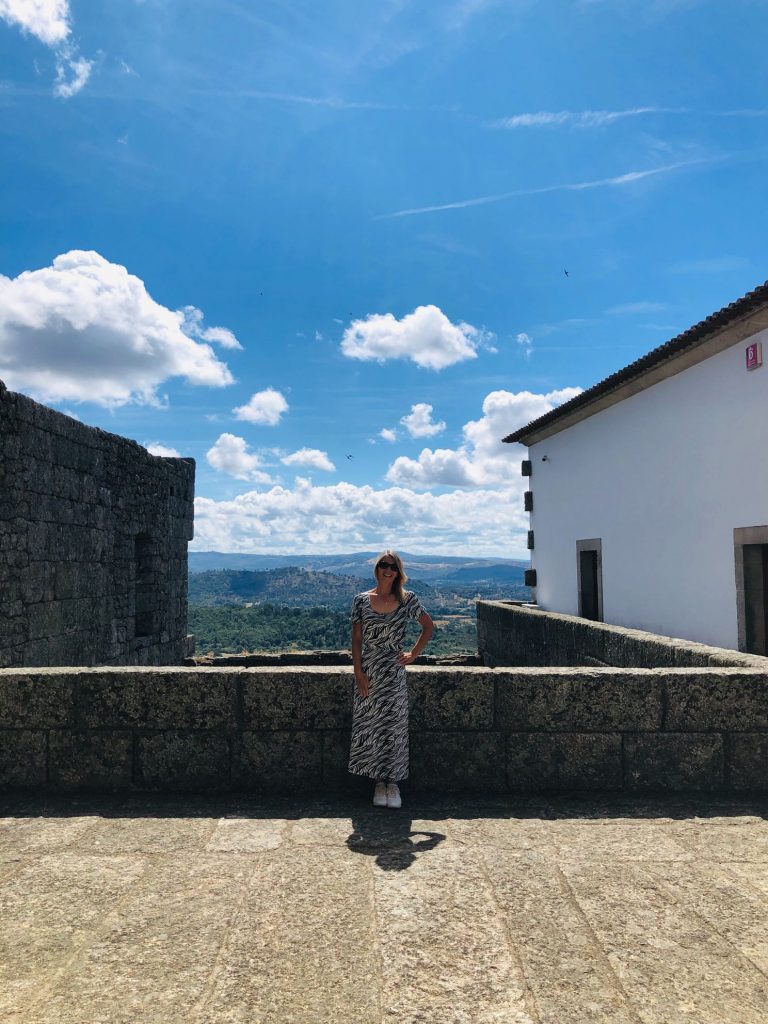


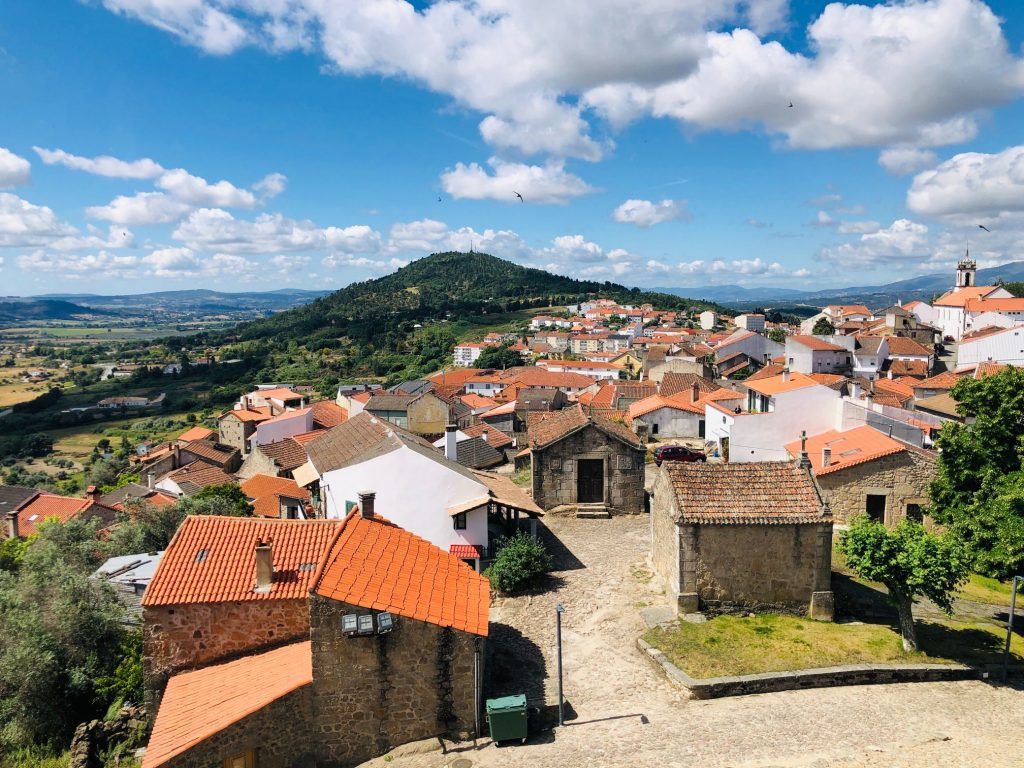


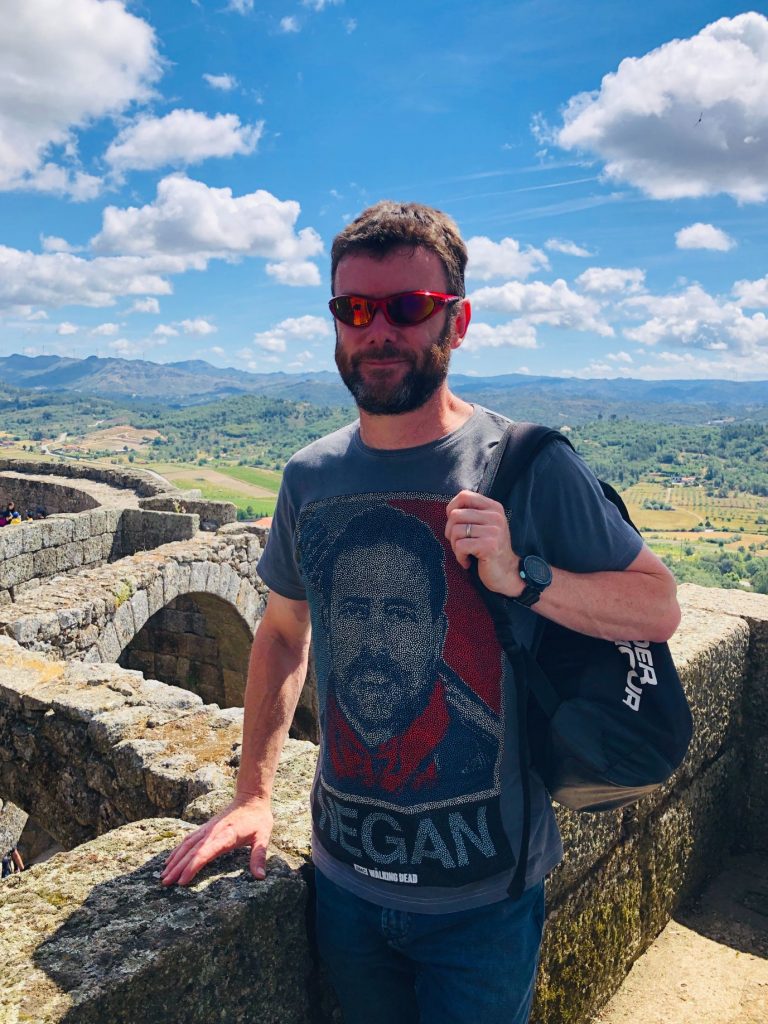


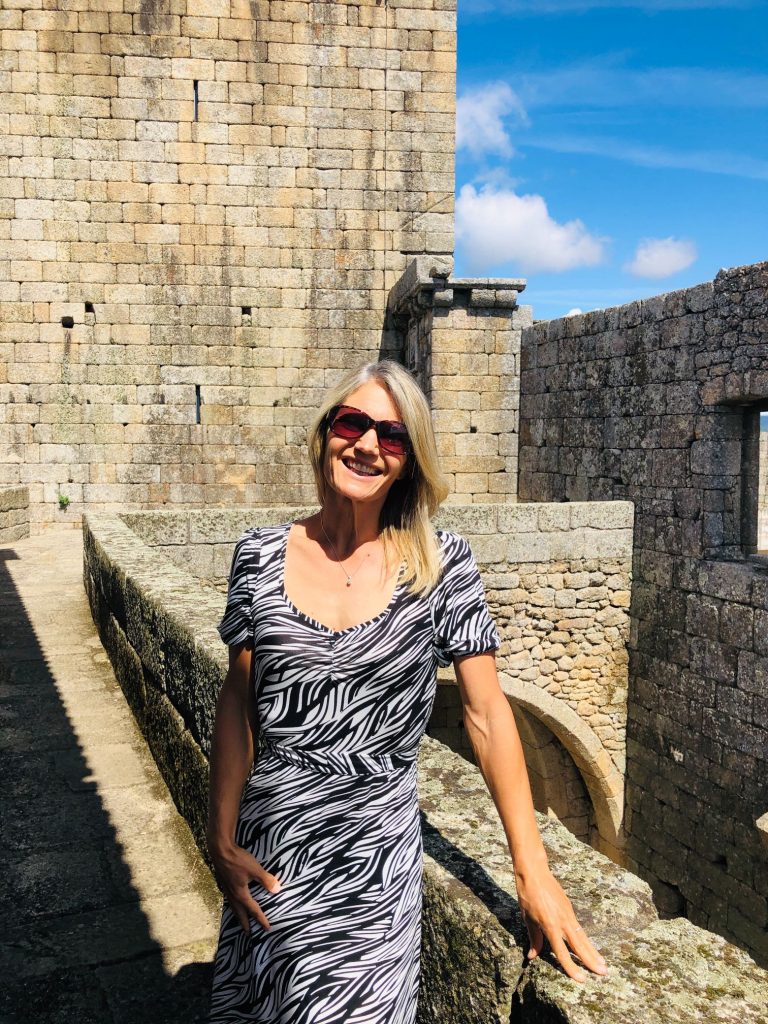


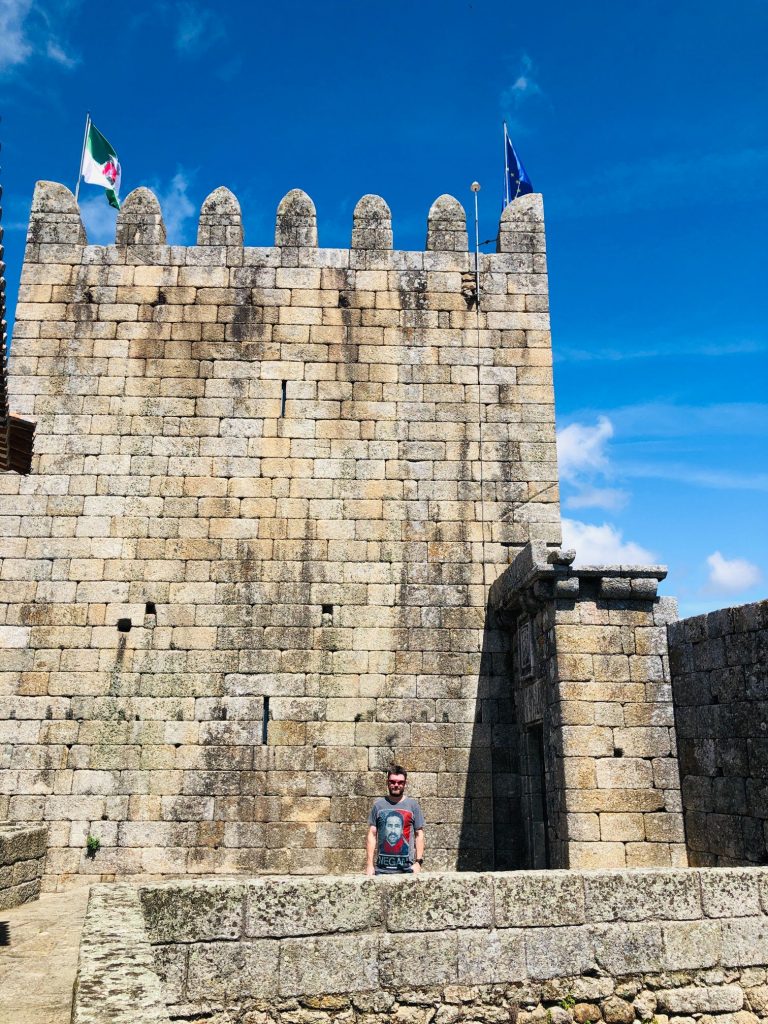


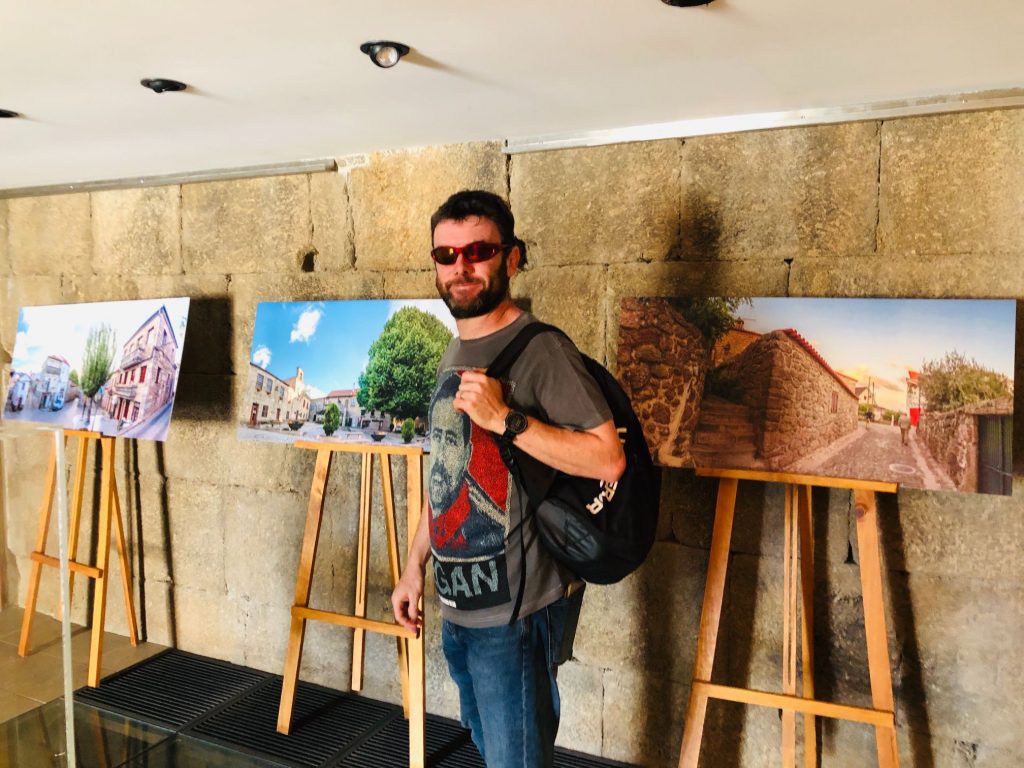


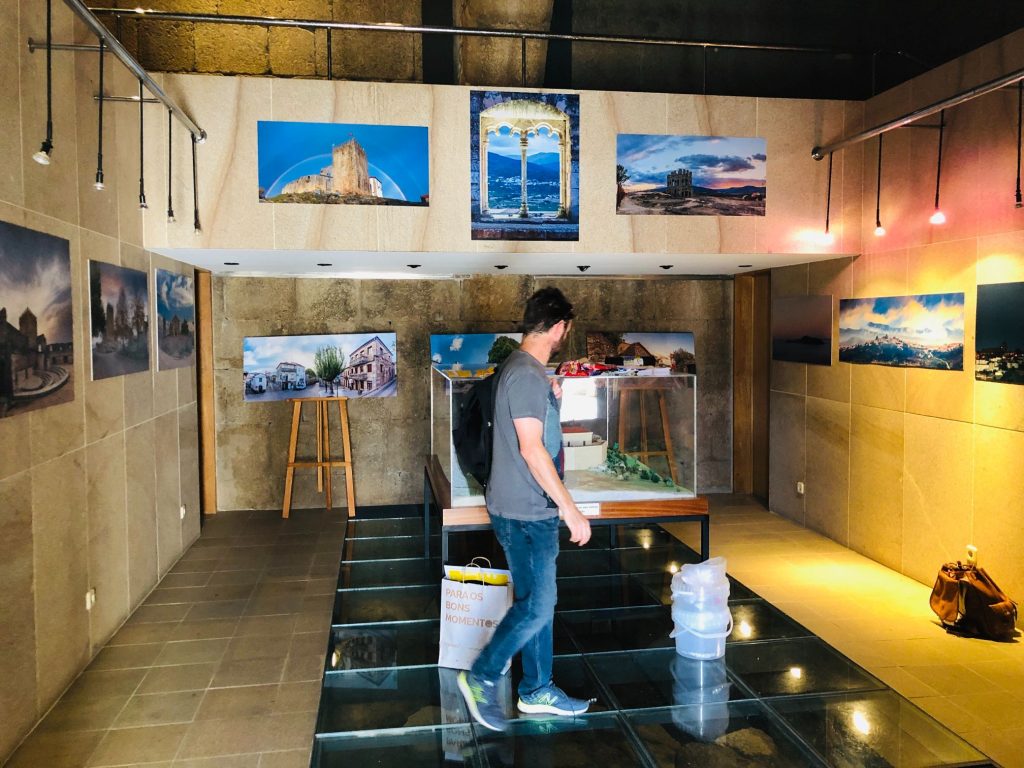


Hubby spotted haribo sweets – obviously for the scouts not for the middle aged man visitor (ha ha) 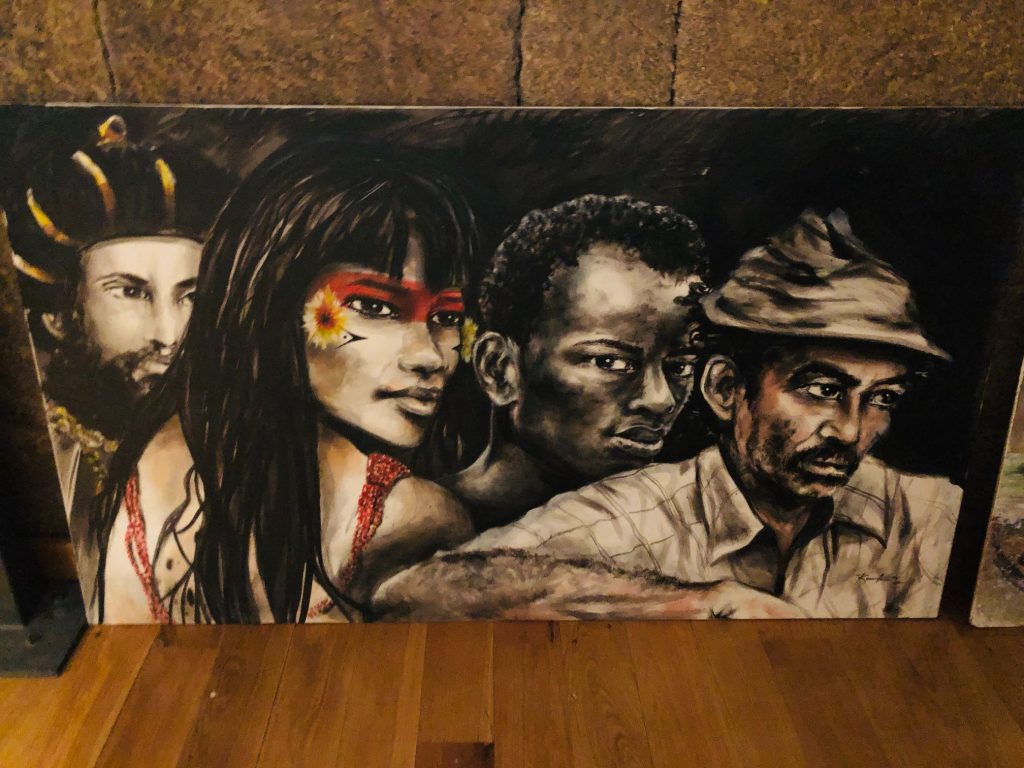


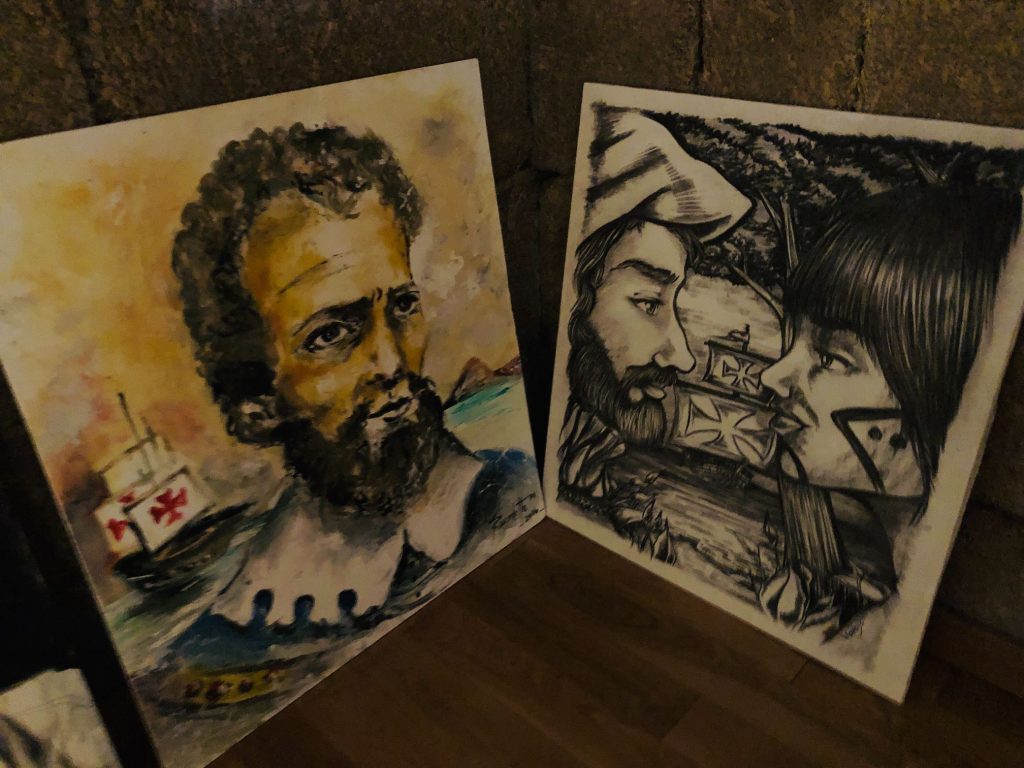


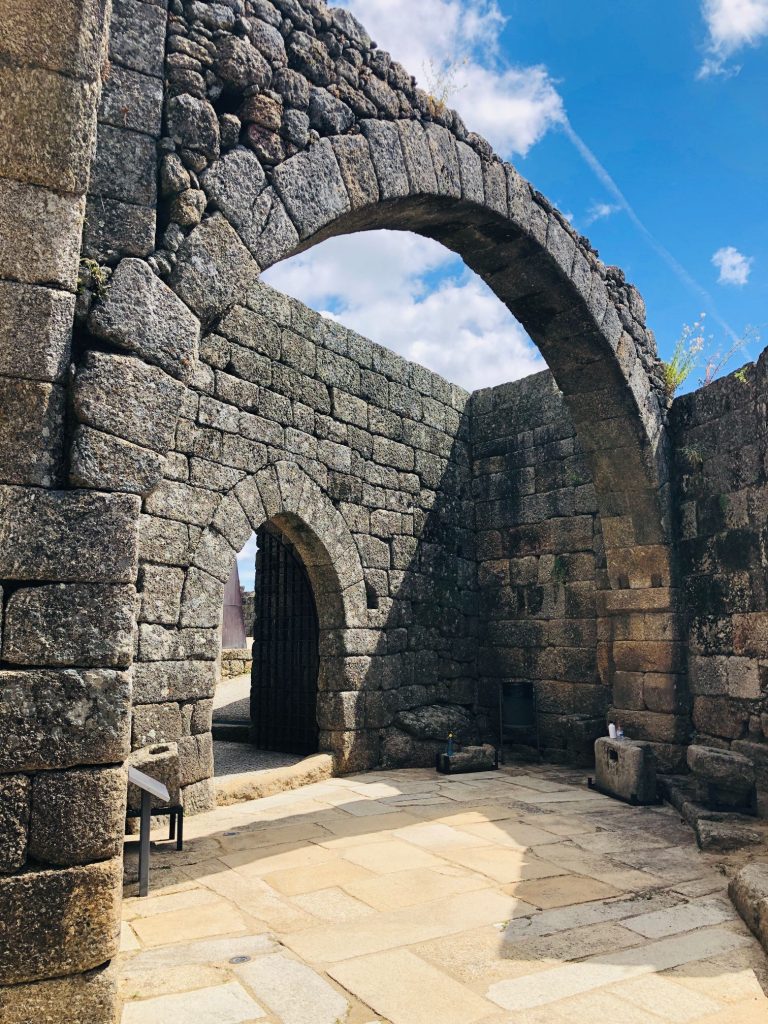


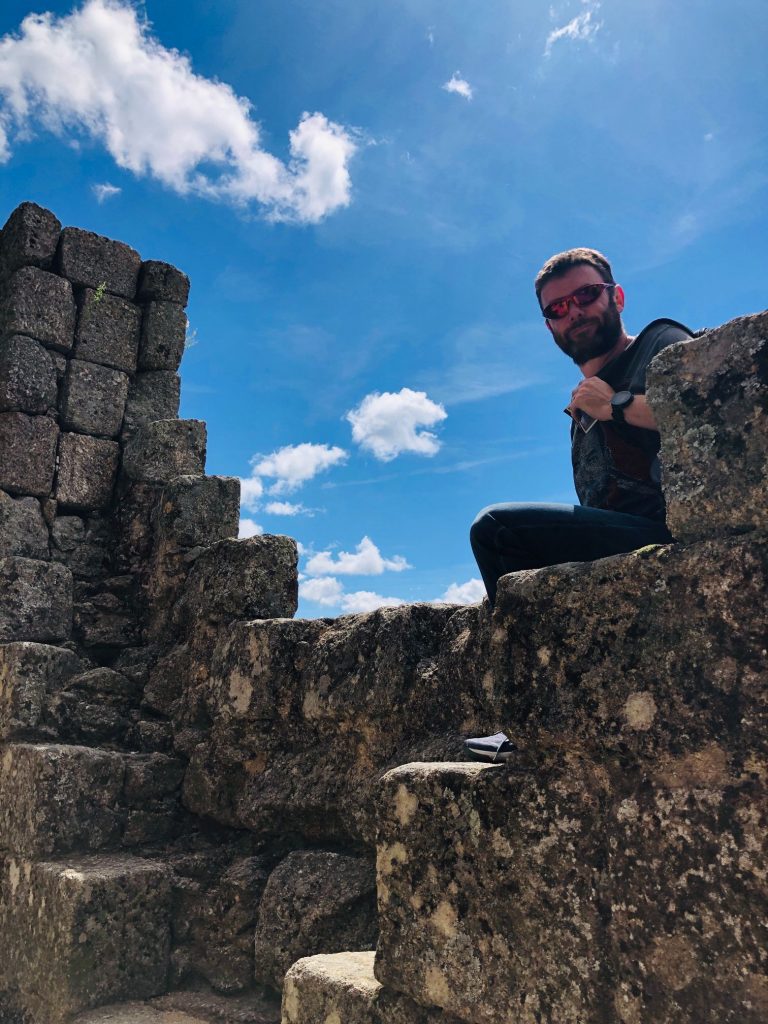


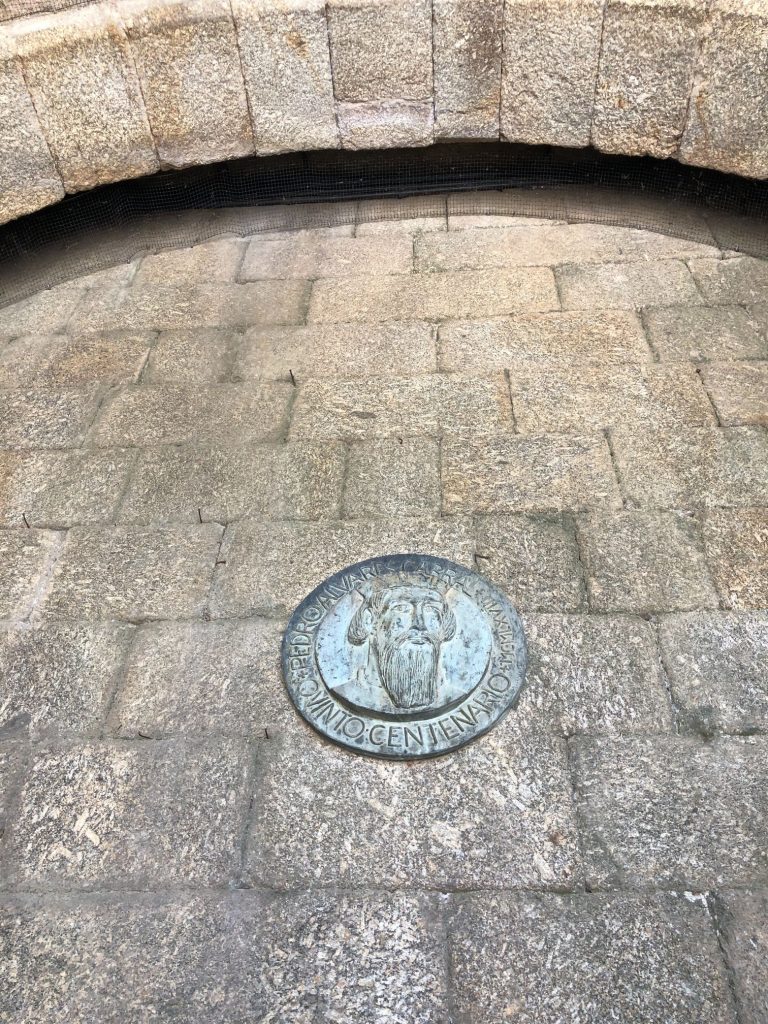


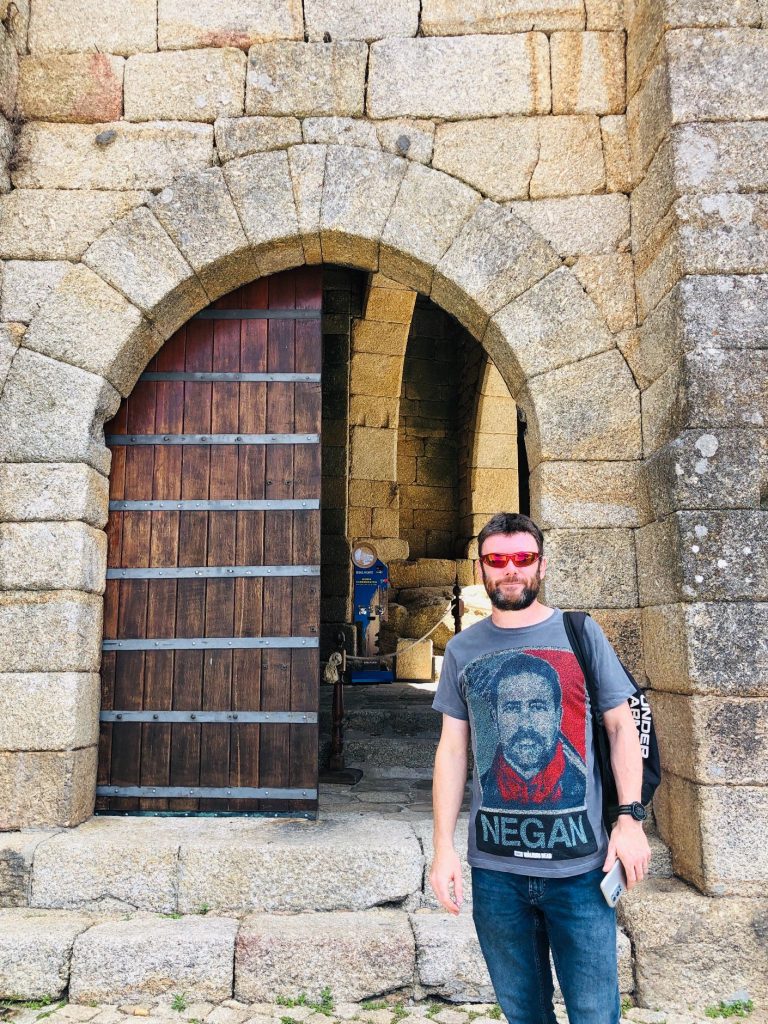


Castle (2nd Visit)
Not a scout in sight but still plenty of birds! (ha ha).
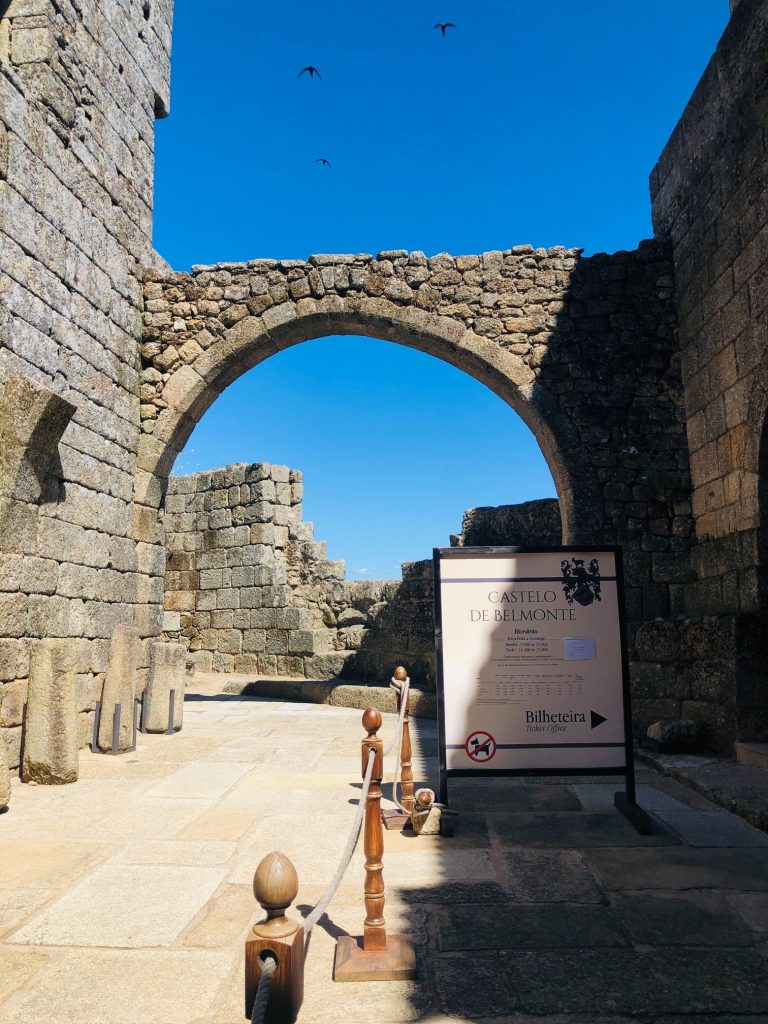


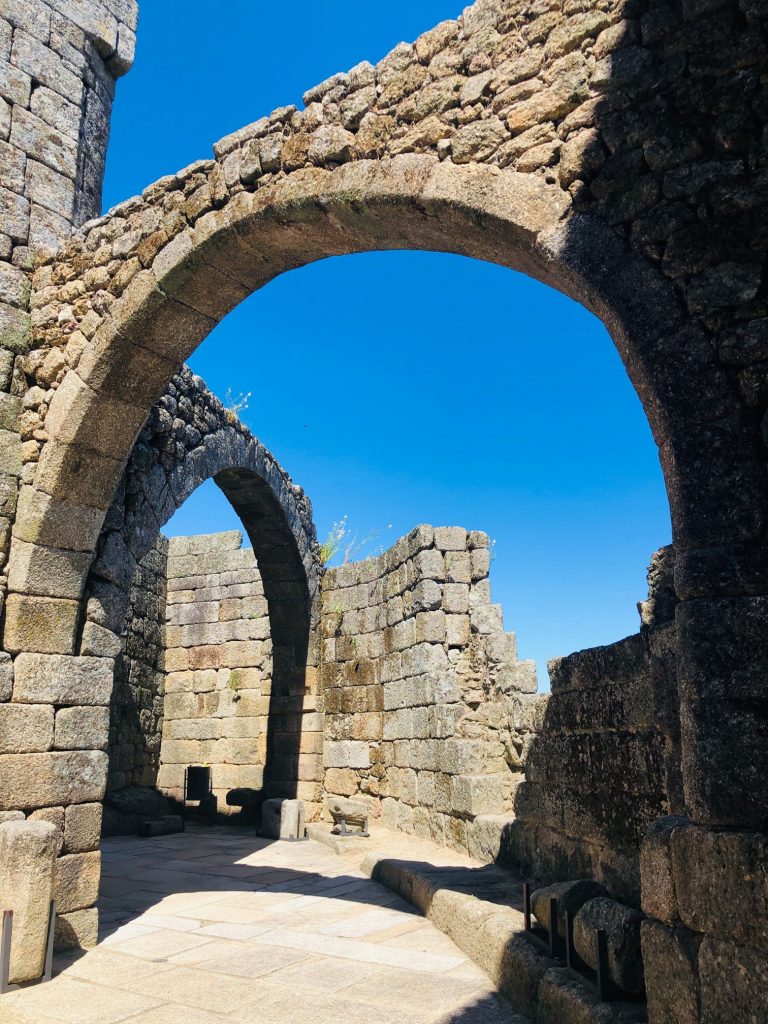


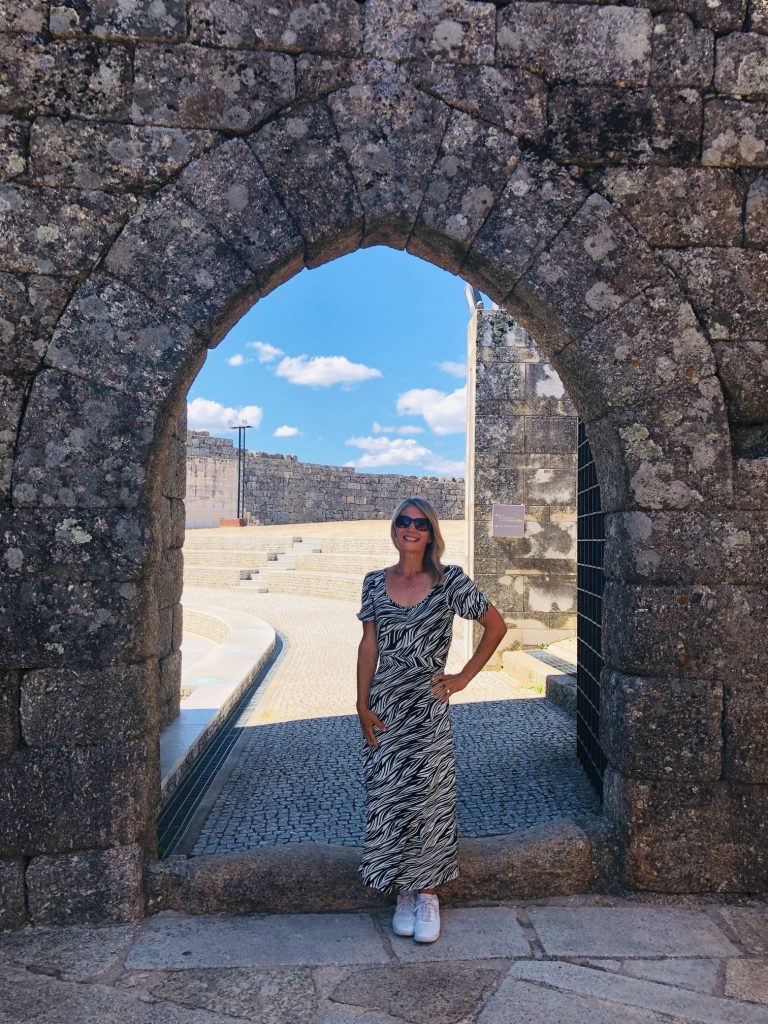


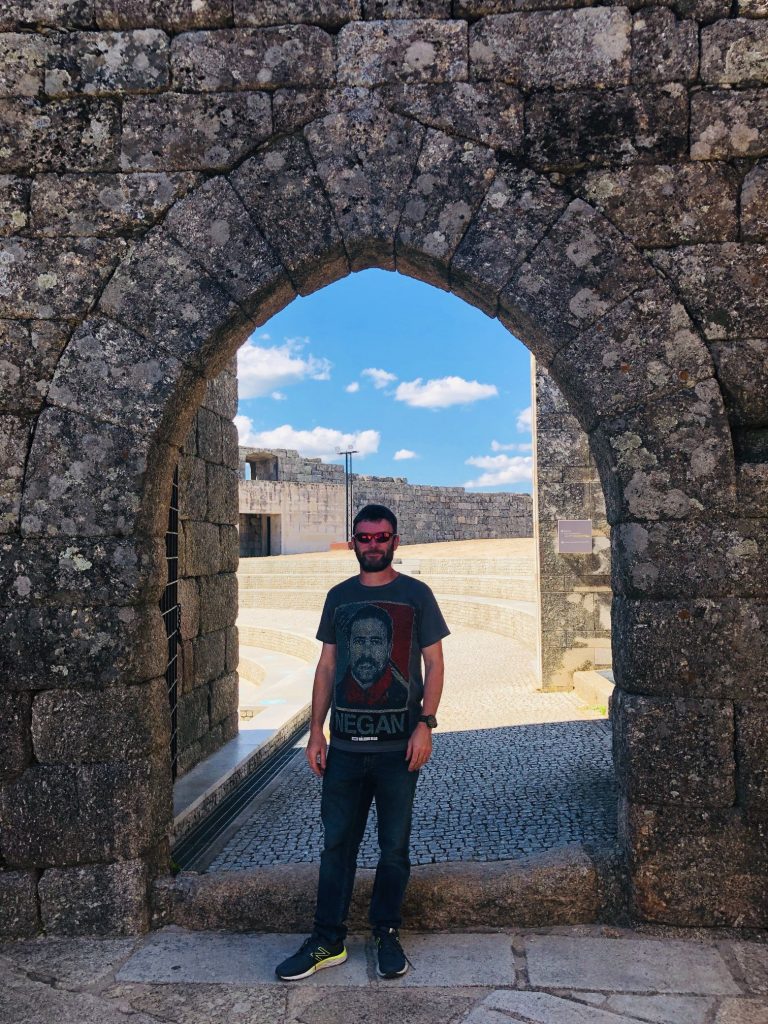


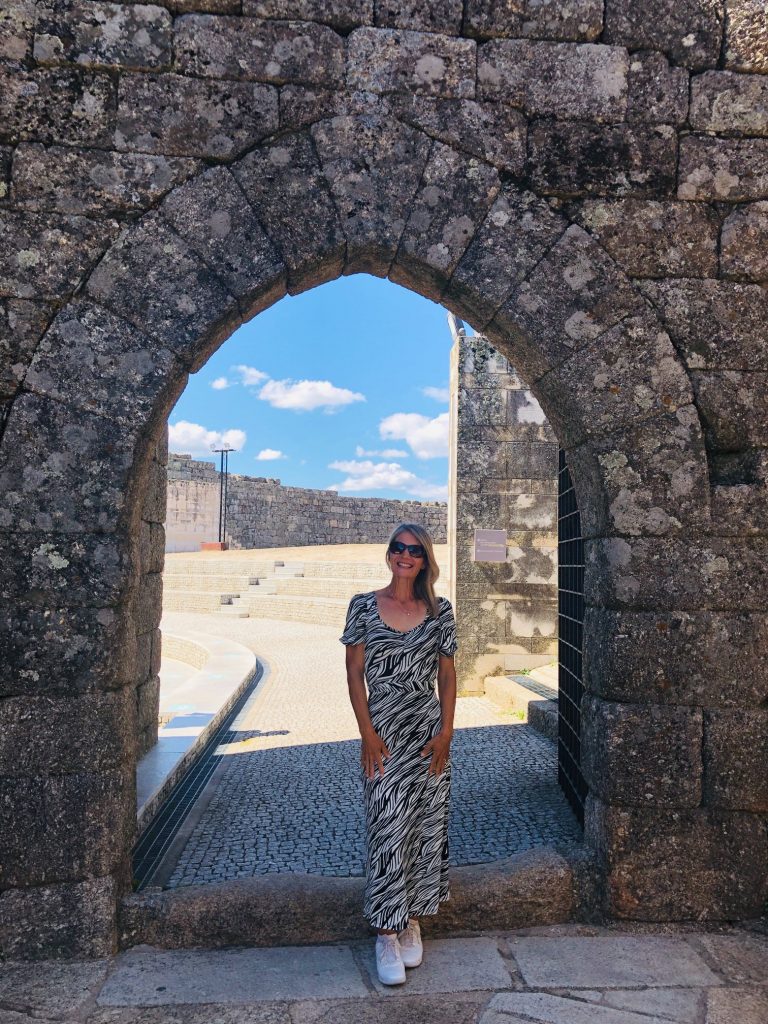


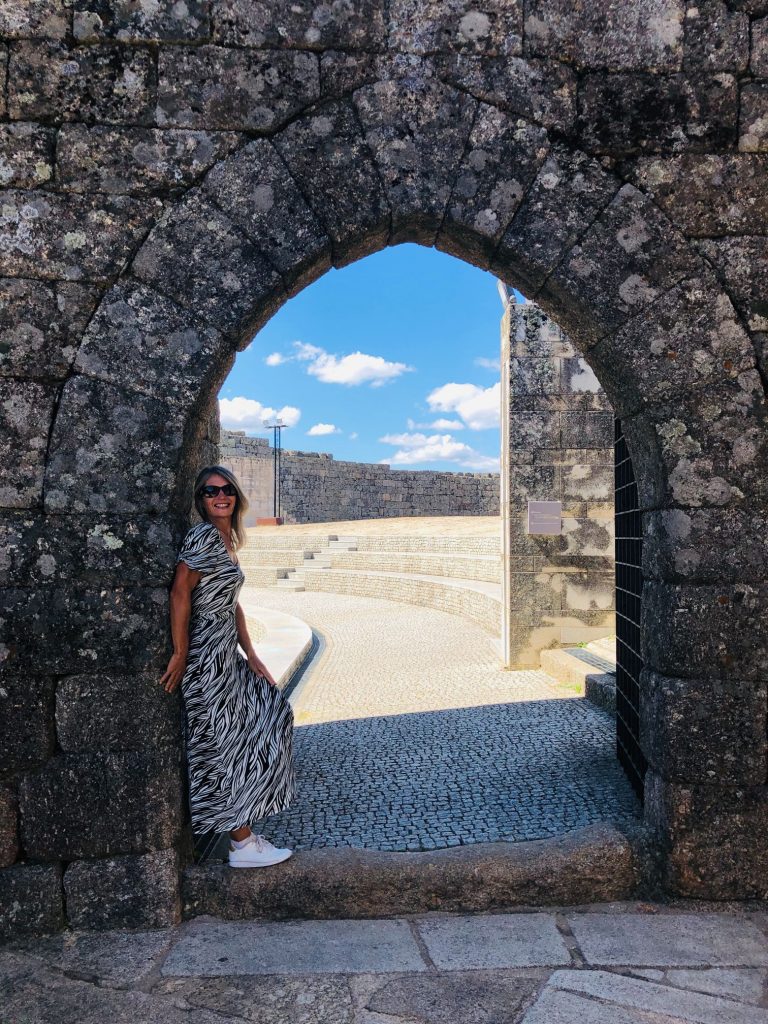


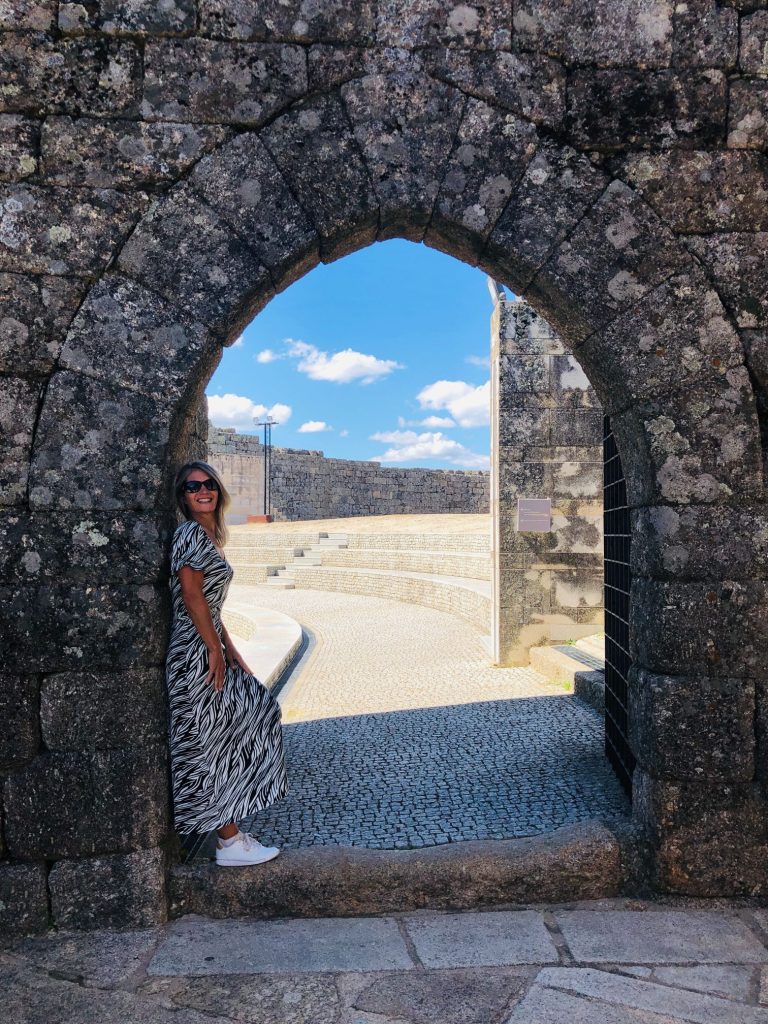





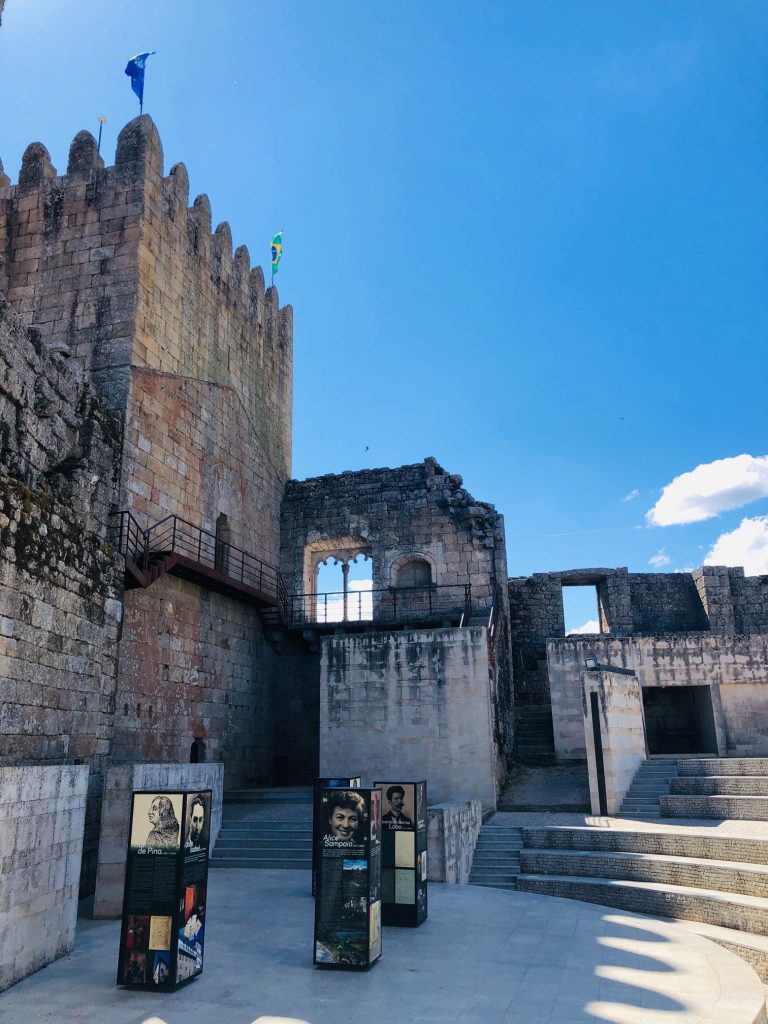


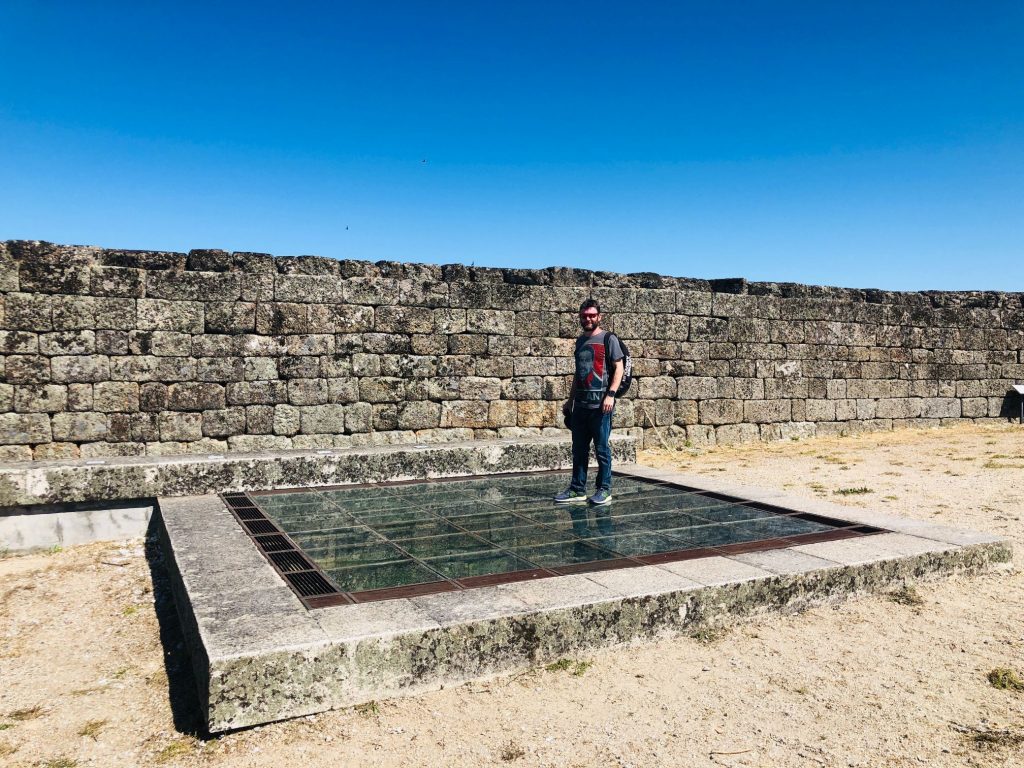


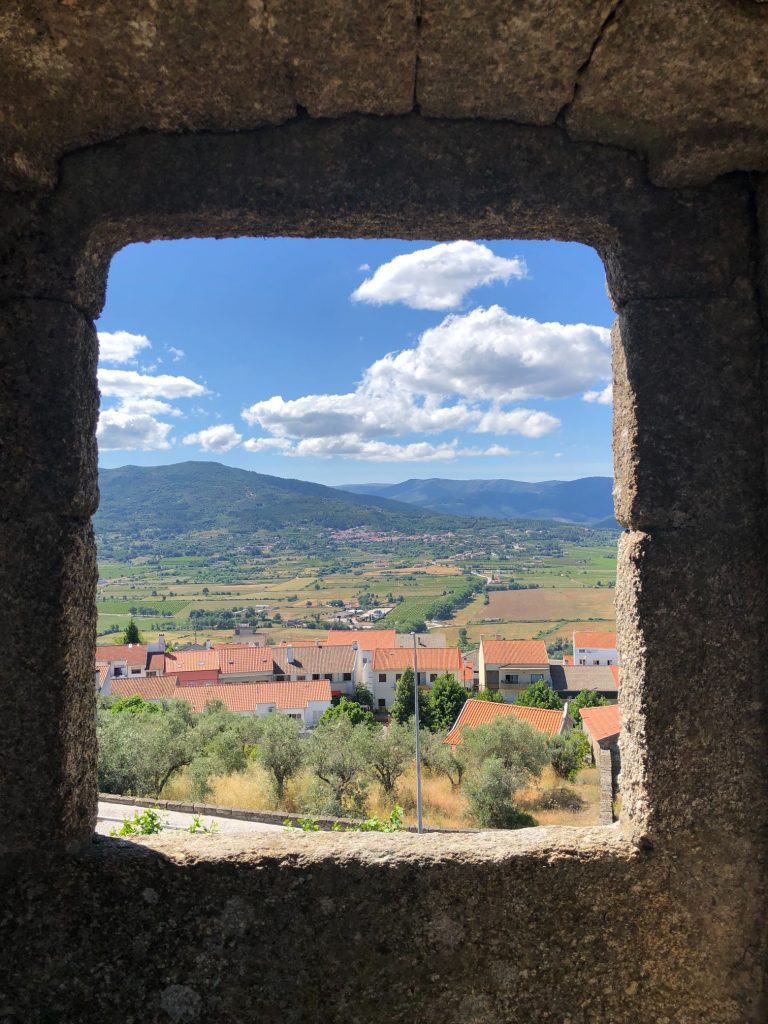


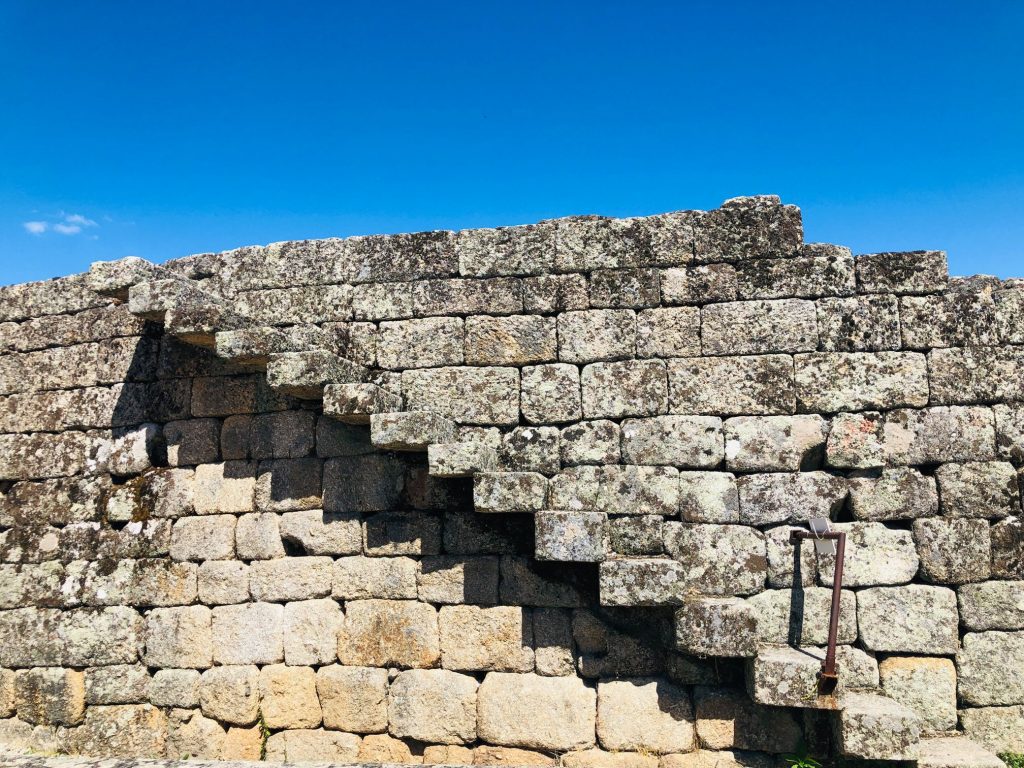


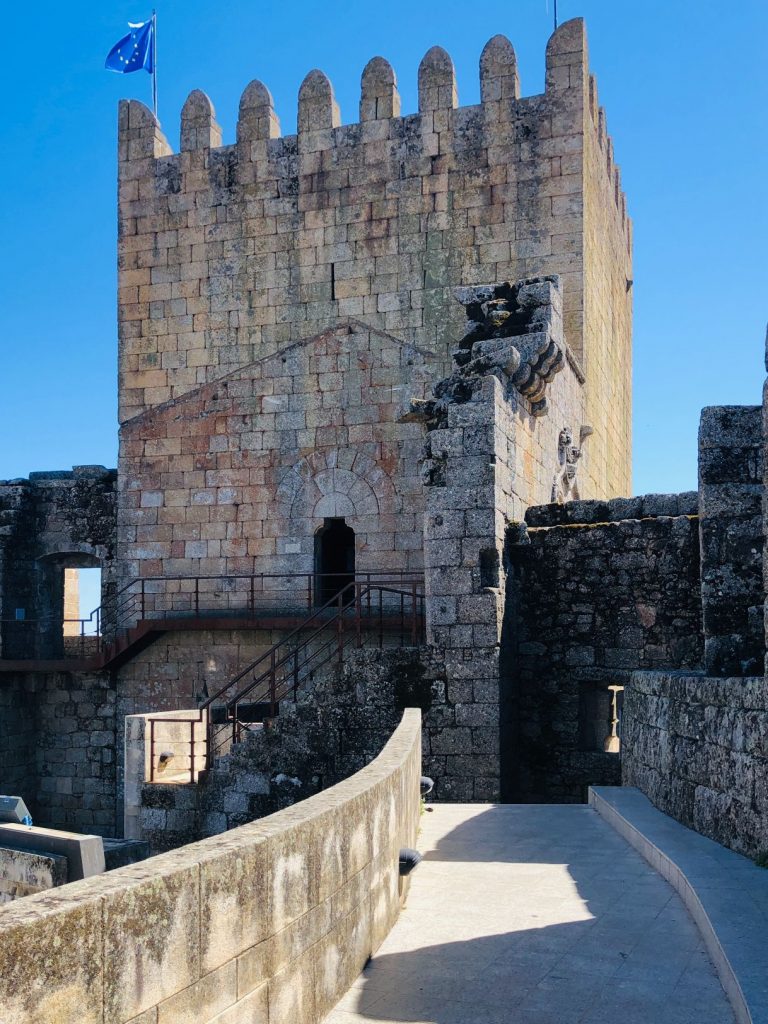


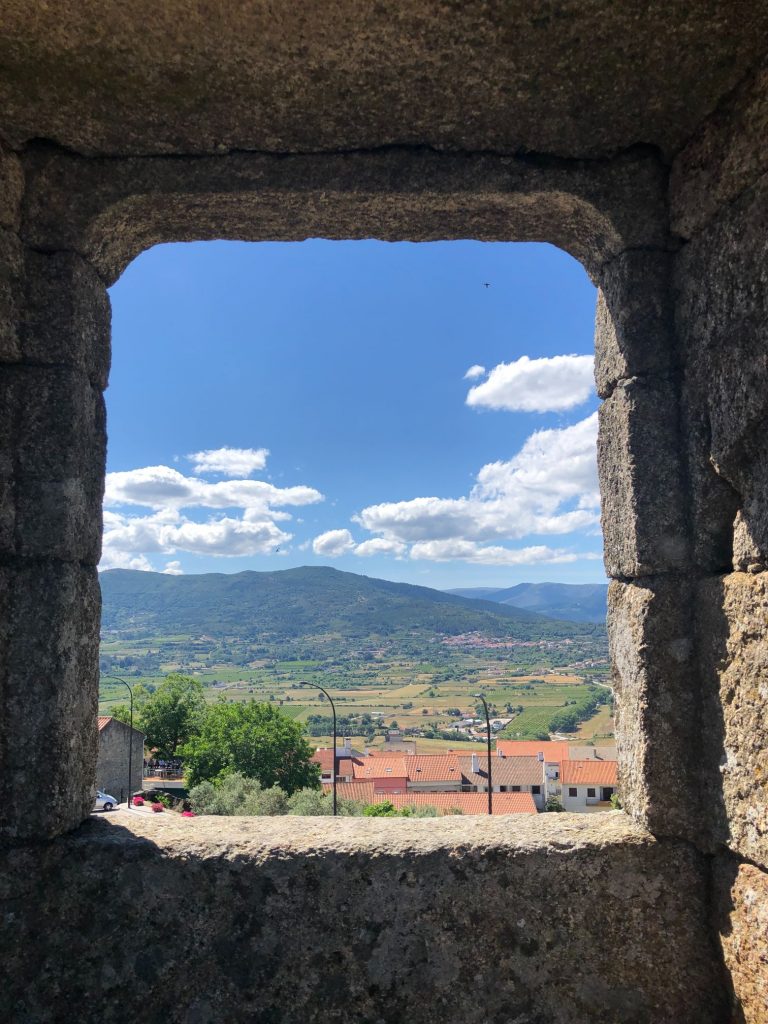


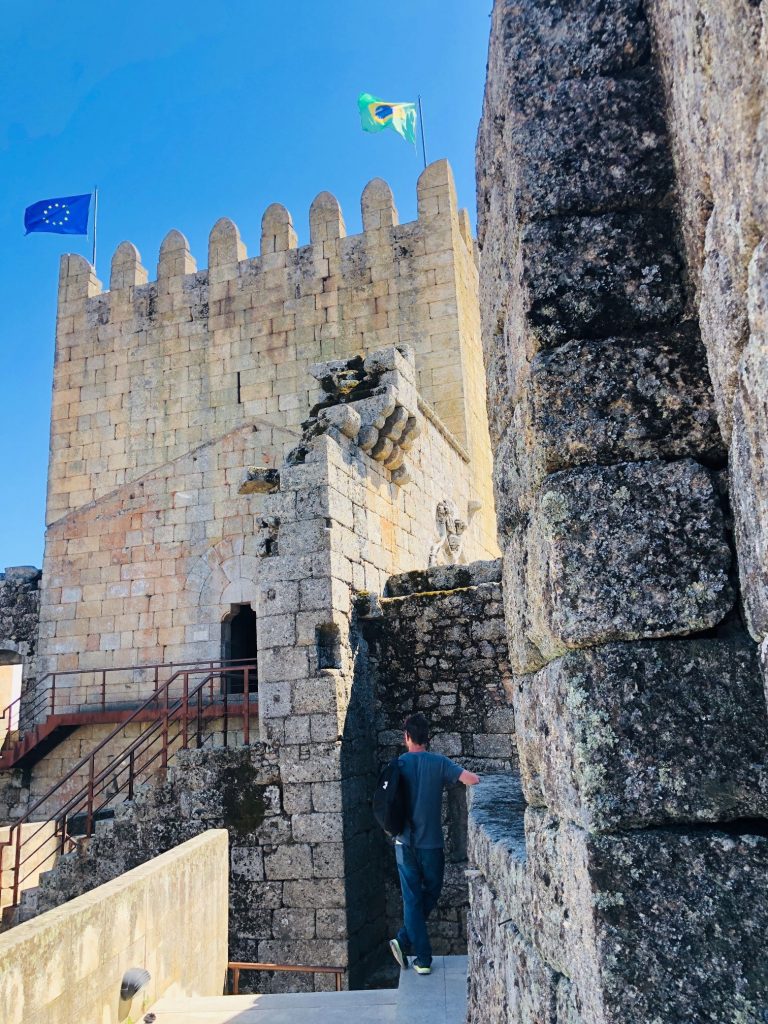


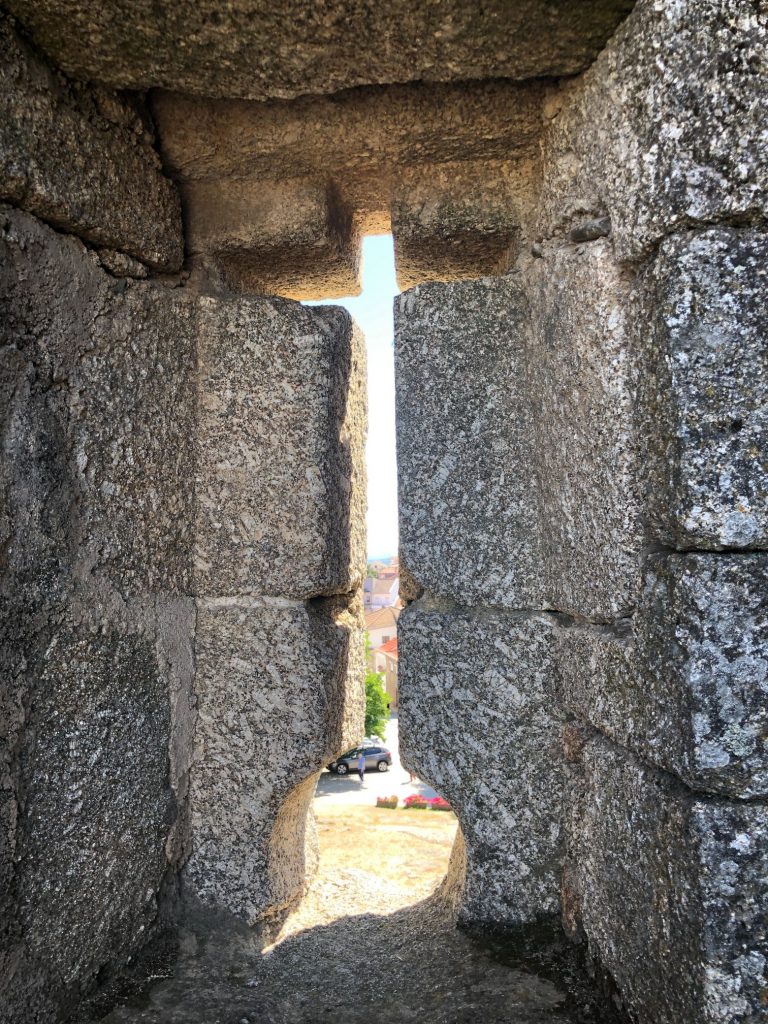


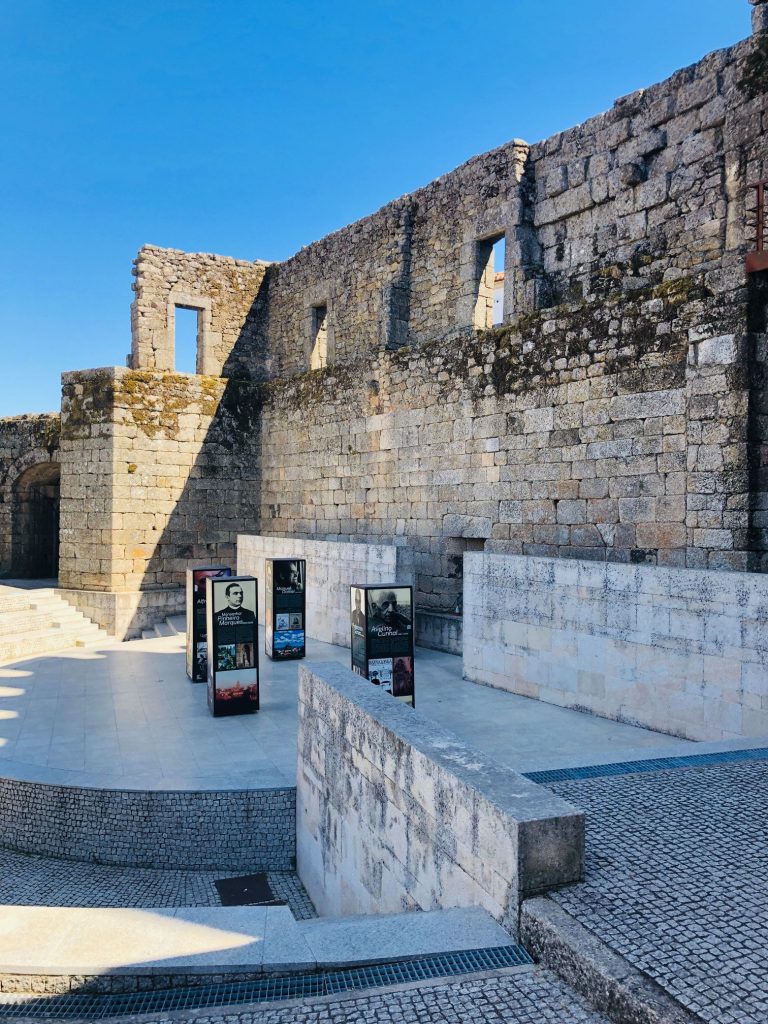


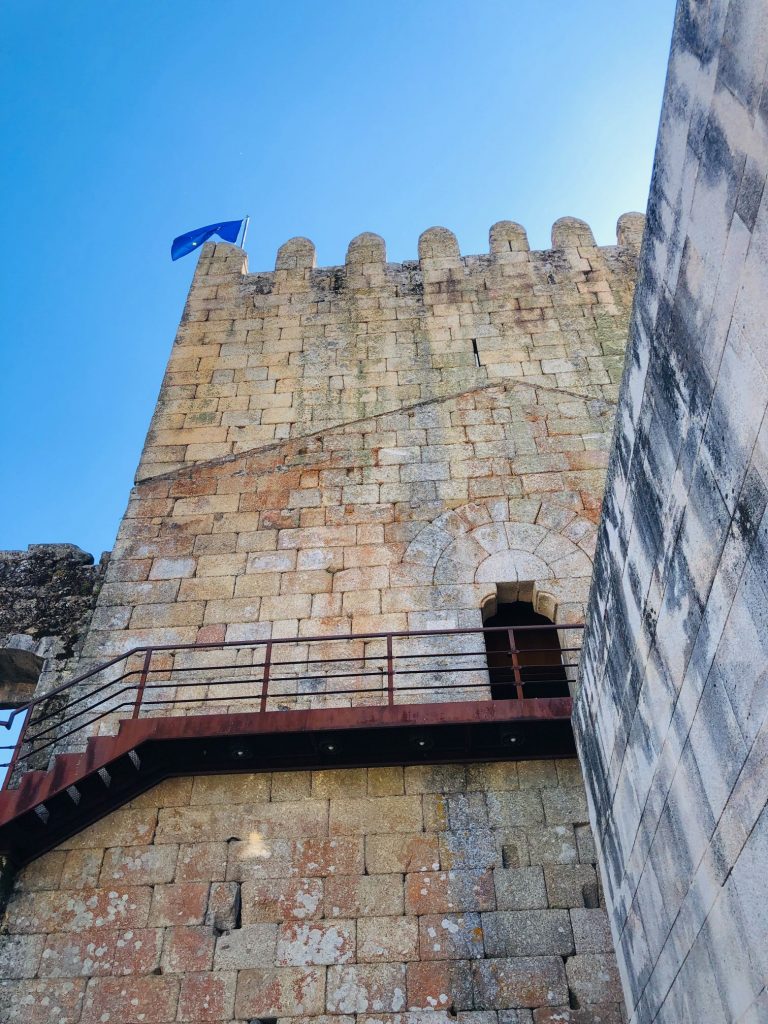


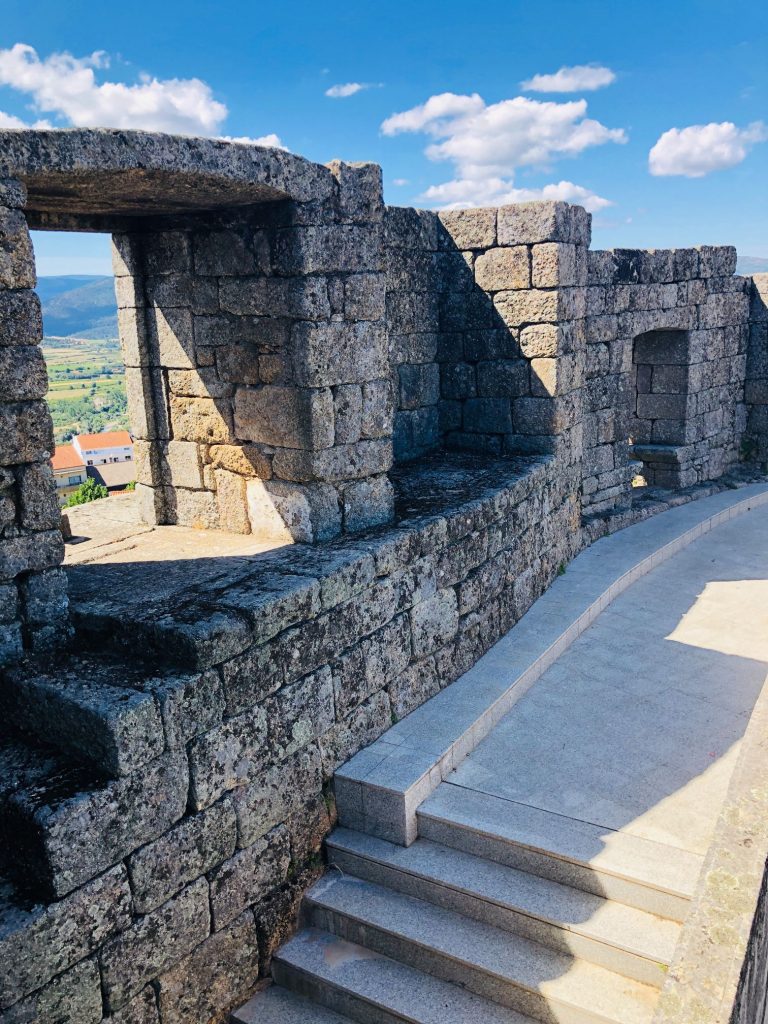


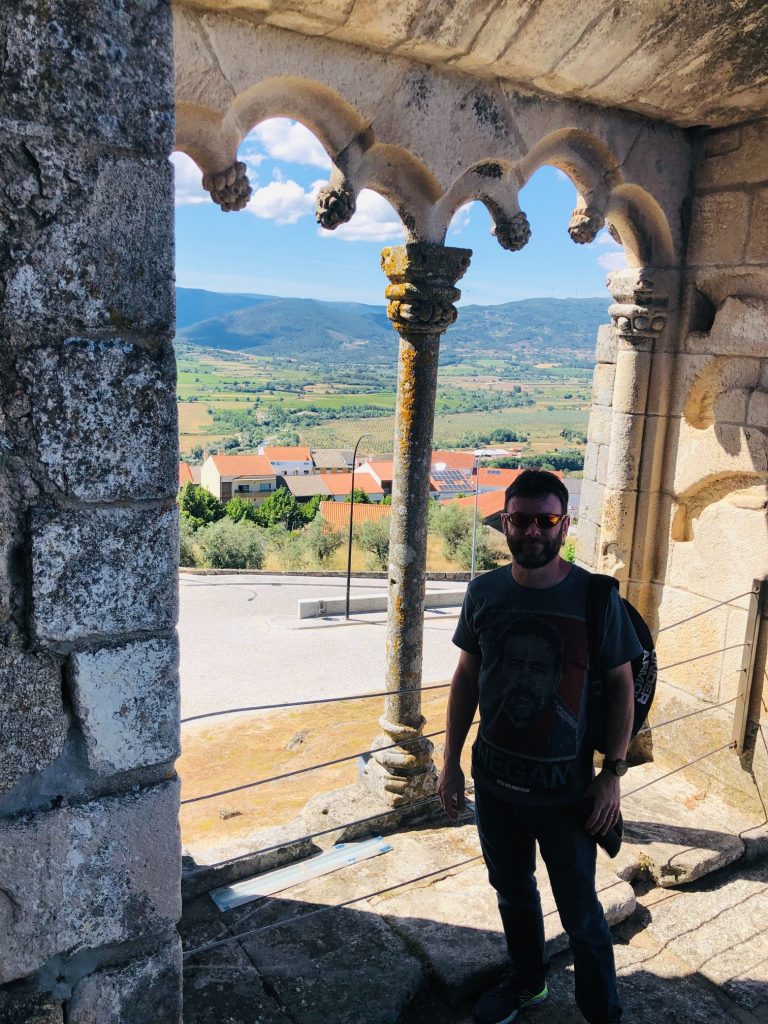


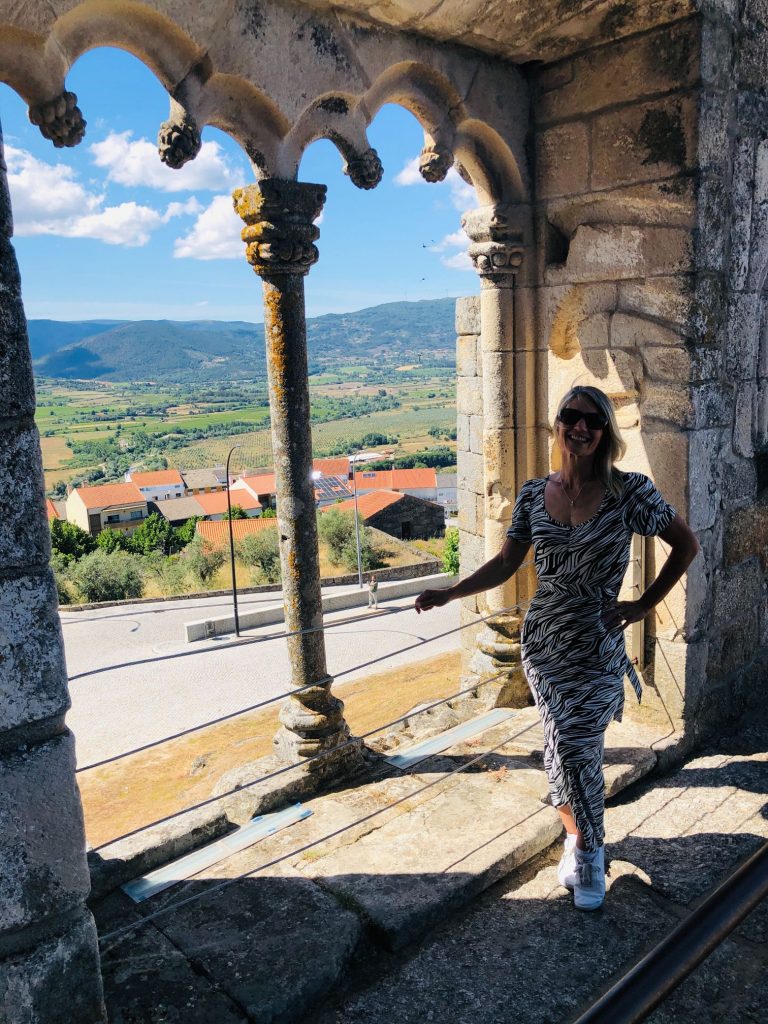


I LOVE this Manueline window so much I had a trio of poses (ha ha) 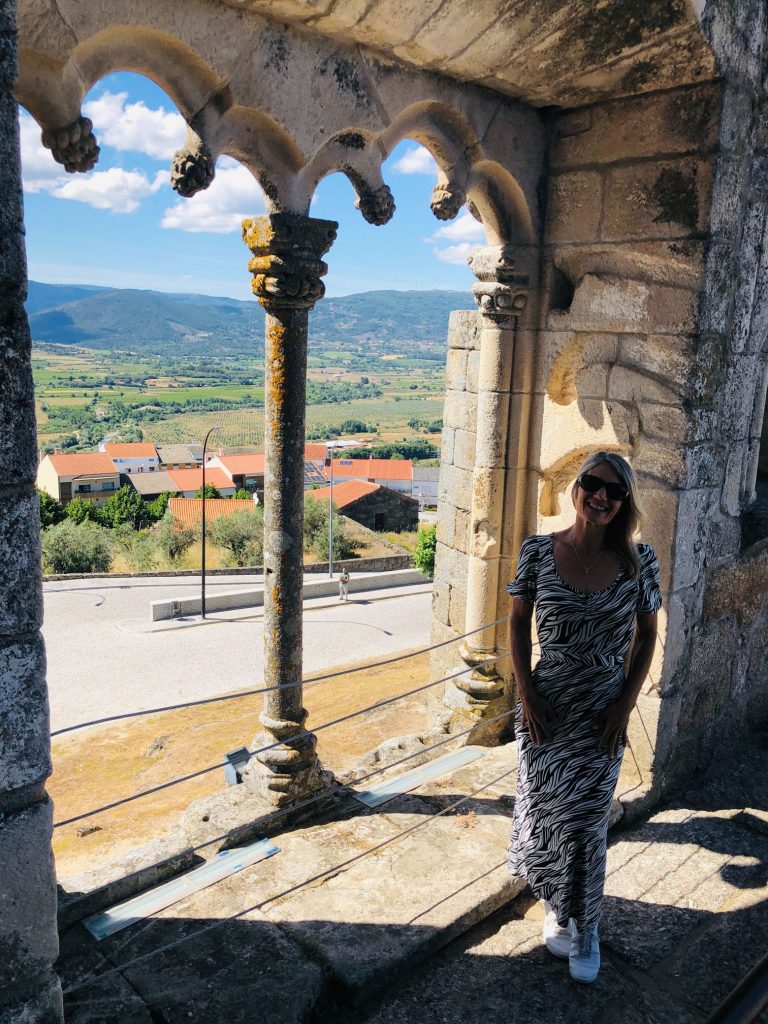


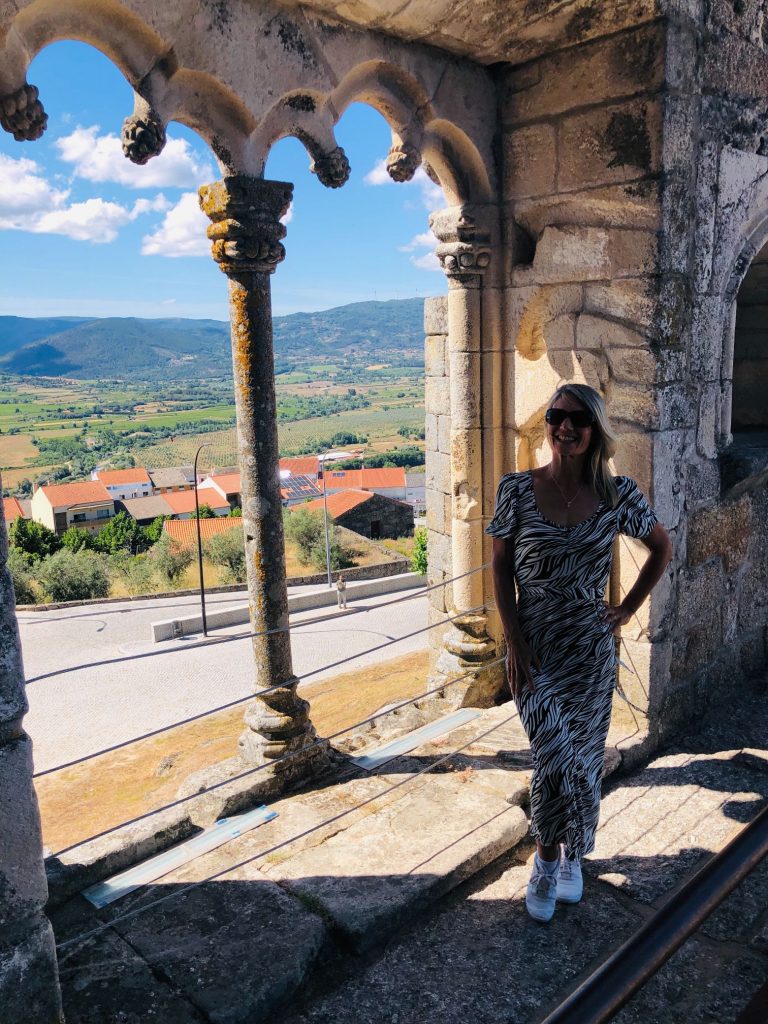


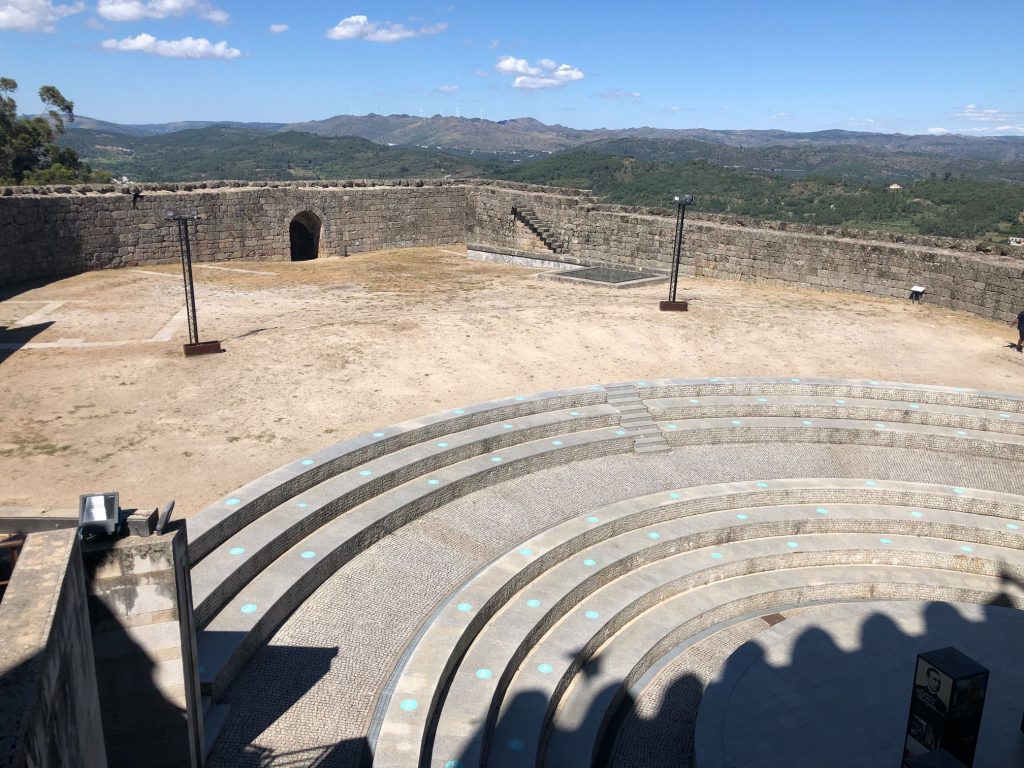


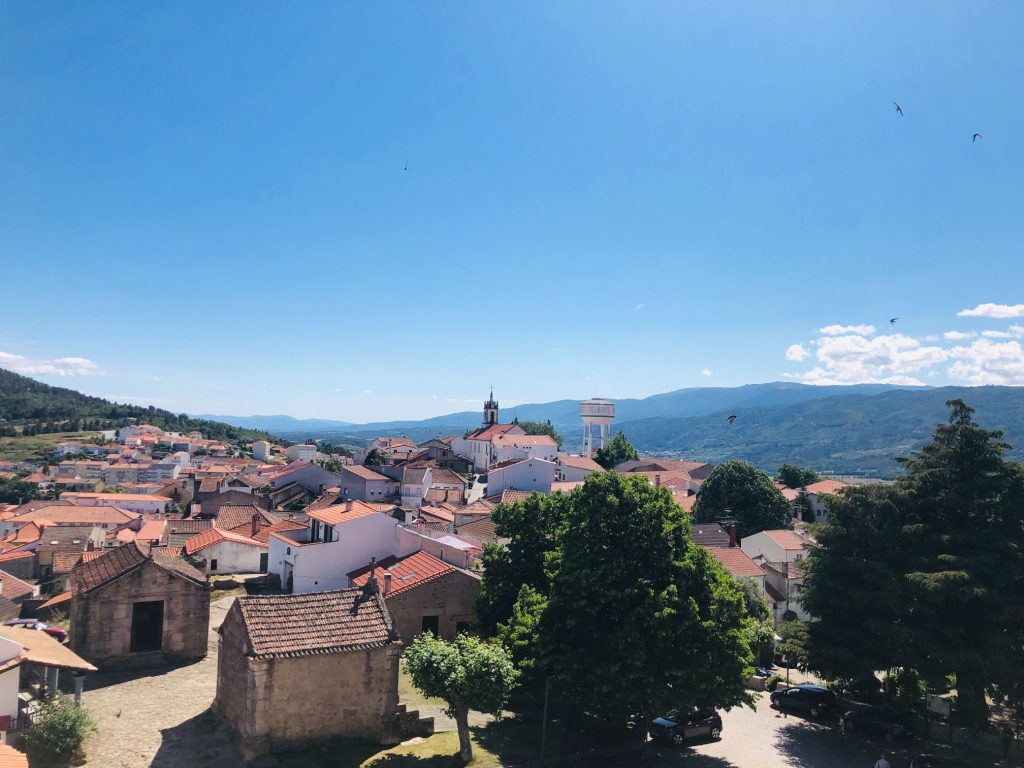


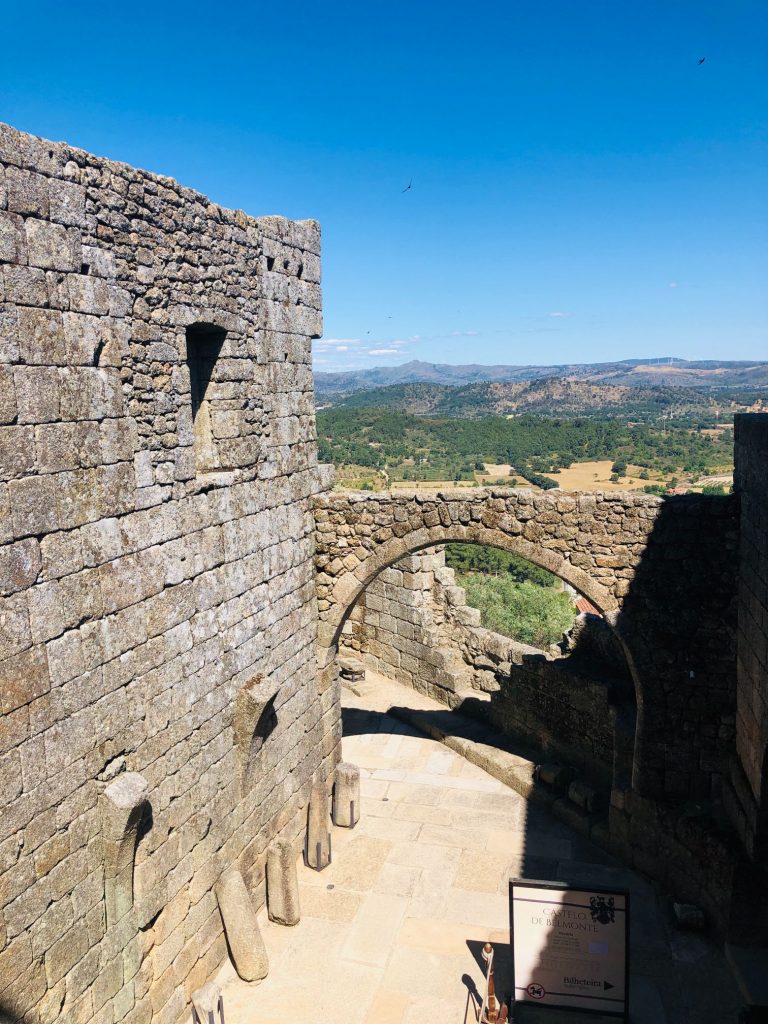


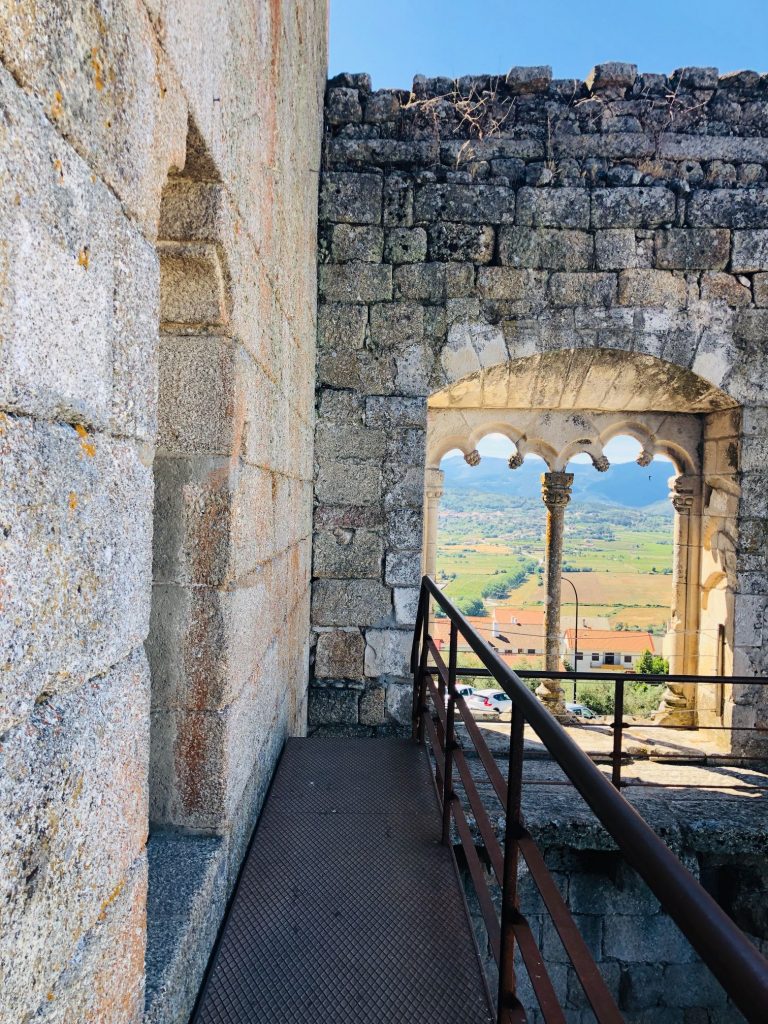


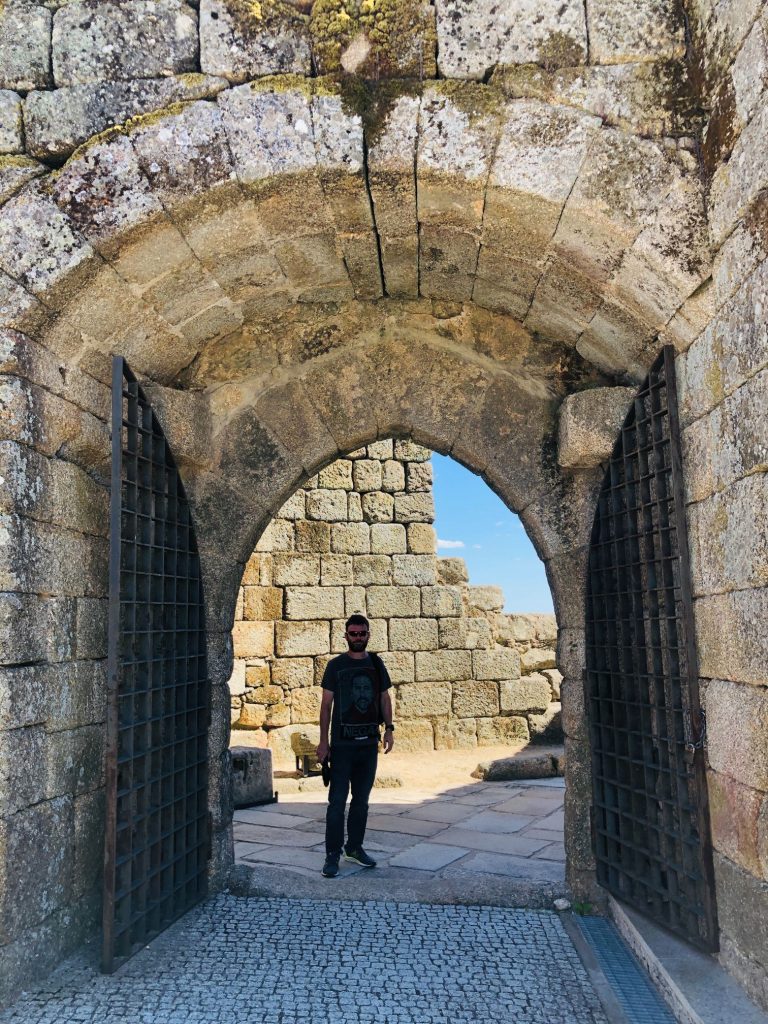


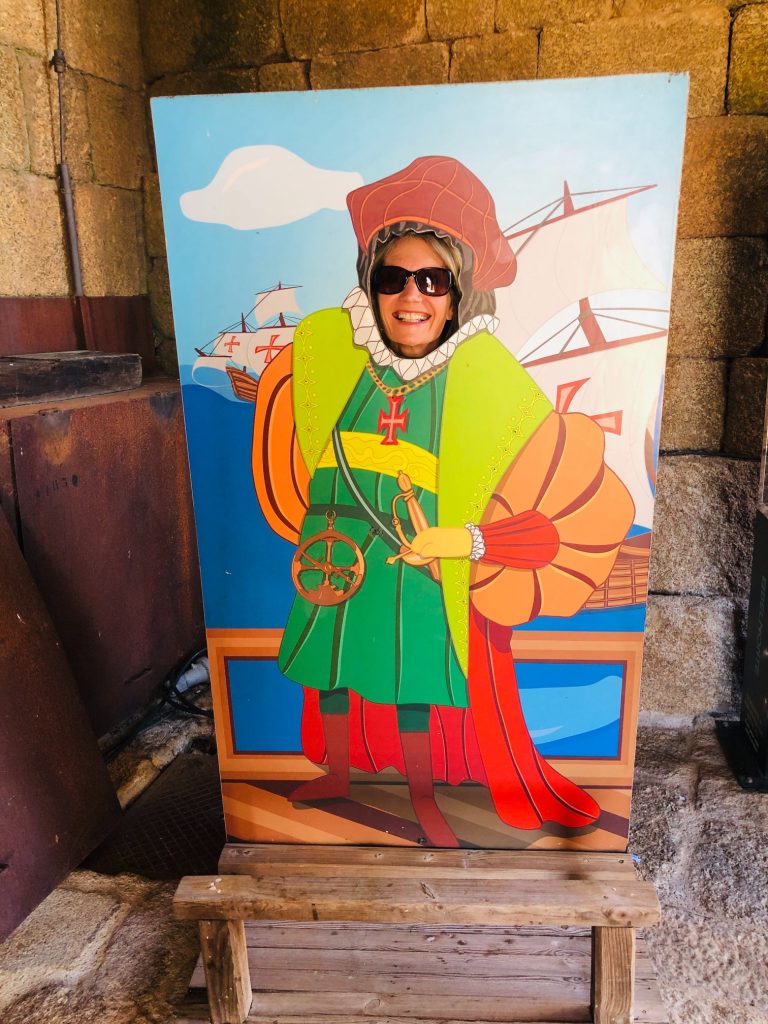


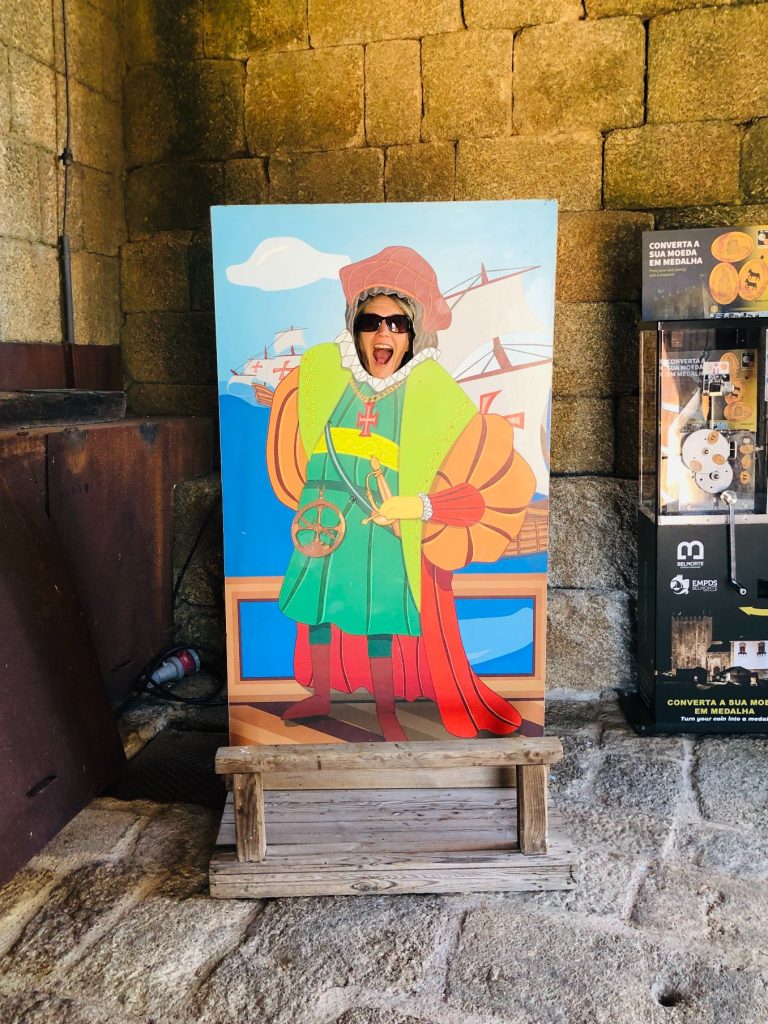


Cruz de Madeira de Paul Brasil (Wooden Cross of Pau Brasil)
On your right as you leave the castle, there is a wooden cross made from the pau-brasil red wood (a replica of the cross Cabral ordered and set up for the 1st mass in Brazil). It was given in the 1950’s by the Brazilian president Juscelino Kubitschek de Oliveira.
Antigas Paços do Concelho (Old Former Town Hall) & Pelourinho de Belmonte (Pillory)
The original pillory was a cage-type, very similar to that of Trancoso. It had a socle of four steps, an octagonal column and shield. Today, it is made up of three octagonal steps, with an octagonal column made up of five drums, and a quadrangular base, bevelled at the corners, decorated with spheres. It bears a shield with an olive press in a rectangular frame, over which there is an inscription “TUD: PAS” (“TUDELA PASSUS”).
The former Town Hall is in Largo do Pelourinho and has been documented since the 15th Century. It is a simple rectangular building with horizontal divisions separated by the tower. In the 19th Century, during the French invasions, Junot had the stone coats of arms destroyed because Belmonte had not surrendered.
Hanukkah Candelabro (Candlestick)
Hanukkah, the Jewish festival, marks the freeing and purification of the Temple in Jerusalem and the revolt against the Seleucids led by Matatias Maccabee and his five sons, as described in the Old Testament. “After the Temple was freed, it was found that there was only enough olive oil to keep the eternal flame burning for one more day. But the flame burnt for eight days, the time needed to make and consecrate more olive oil for the Temple.” The feast is marked “By a family atmosphere and great joy, and during it, a candlestick of nine branches is used, with one candle being lit each day in remembrance of the eight days the flame burned miraculously. The ninth branch of the candlestick, placed in the centre and taller than the others, is the shamash, the candle used to light the others.”
Estátua Pedro Álvares Cabral (Statue)
This beautiful grand sculpture was executed by Álvaro de Brée in 1961 and inaugurated in 1963 by Juscelino Kubitschek de Oliveira (Former President of Brazil, 1956-1961). The discoverer is in a relaxed pose holding an astrolabe, a sword and a cross. The only statues of Cabral are in Belmonte, Lisbon and Santarém. This beautiful sculpture is made of bronze, with a granite plinth and shows the Portuguese navigator, who discovered Brazil.
Fountains
Fonte Grande
This 19th Century fountain has a straight back, a curved trim with frieze and cornice, and flanked by Tuscan pillars. It has two circular spouts that empty out into a rectangular tank with a plain brim. Hubby said that I have a plain brim and I can’t disagree. My response was “I may have a plain brim but at least I have a curved trim” (ha ha).
Fonte da Rosa
Chafariz do Largo Doutor António José de Almeida
Aqua Therapy
We found a beautiful Viewpoint and water fountain to refill our water bottles opposite the Main Church. It was a very hot day so we needed to stay hydrated. I LOVE all the pretty pink floral arrangements which look so epic against the contrast of the blue sky and fluffy white clouds. Such a gorgeous setting and hubby took his opportunity to have a little rest here.
A Prensa (Olive Press)
Statue representing an olive press, in reference to the legend according to which the lord of Belmonte stood firm against the enemy’s threat and preferred to watch his daughter be crushed in an olive press rather than surrender the castle. Wow, very harsh indeed. I’m not sure I could stand by and watch Teanna (My daughter) be crushed by an olive press (ha ha). The words on the signage translates to 4 leaf clover which I assume is the pattern of the stones on the ground. 4 leaf clovers usually bring good luck but it did not bring luck for the poor squished Lady!
Banda de Música de Belmonte (Belmonte Music Band)
Founded on 30th January 1884. In 1997 it changed its name to “Banda de Música de Belmonte”.
Camara Municipal de Belmonte (Belmonte City Council)
A 19th Century rectangular residential civil architecture building. It was built in 1880 by order to the descendent of João Mendes Fajardo, who was appointed Captain of the town on 23rd March 1801.
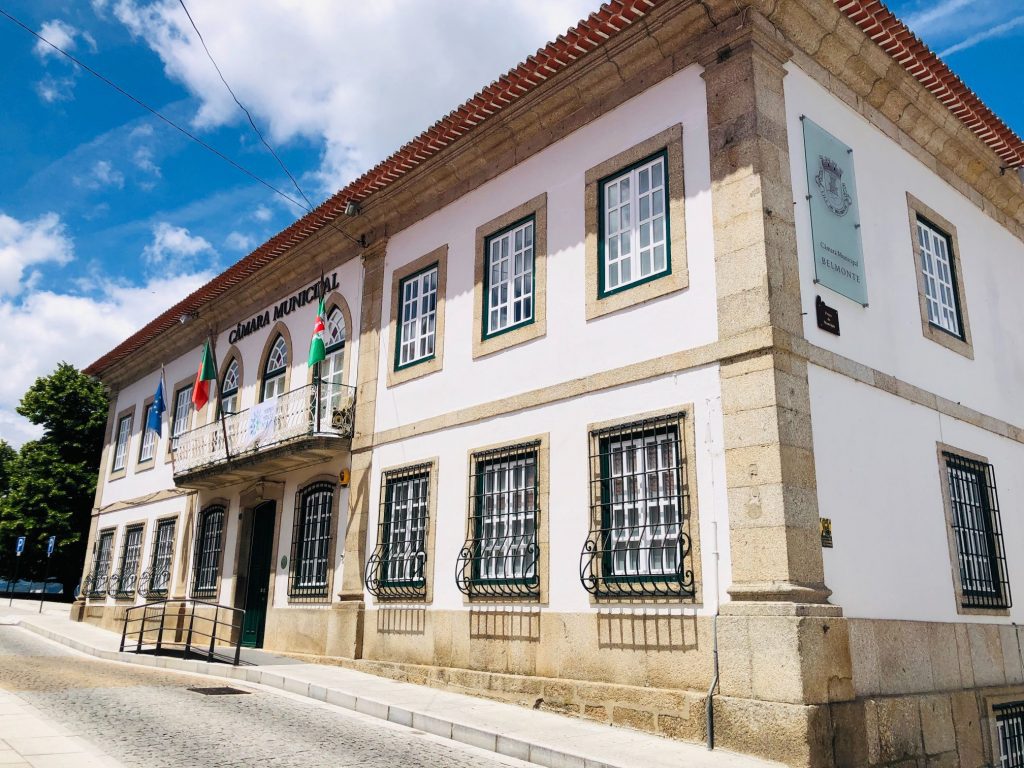


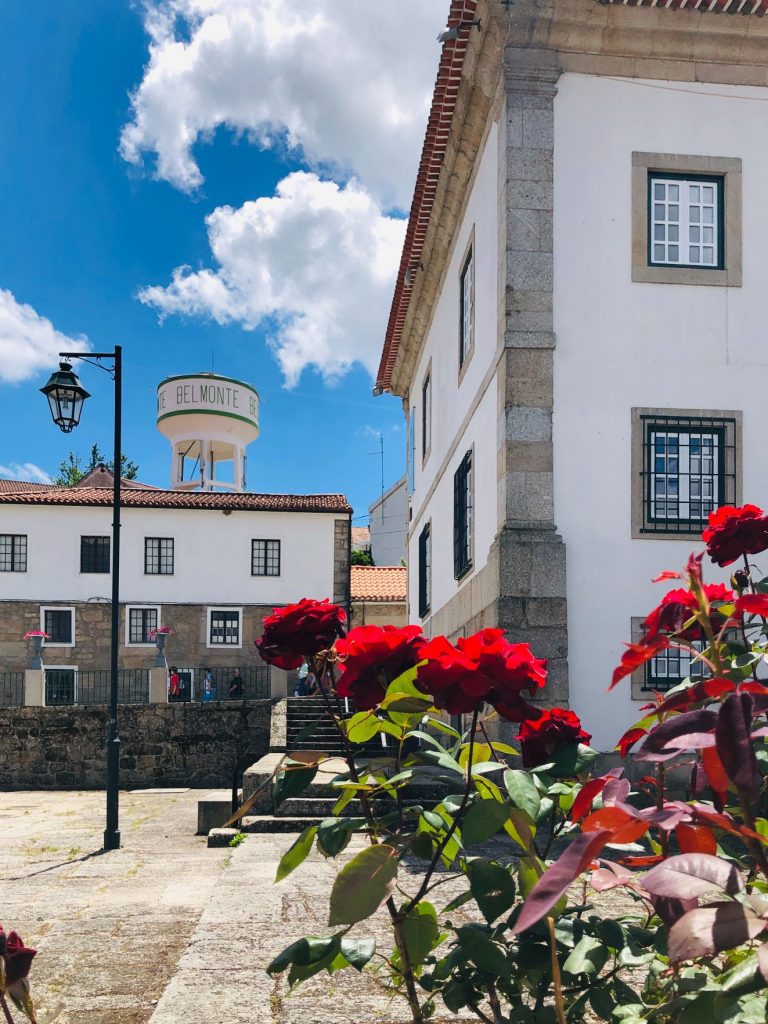


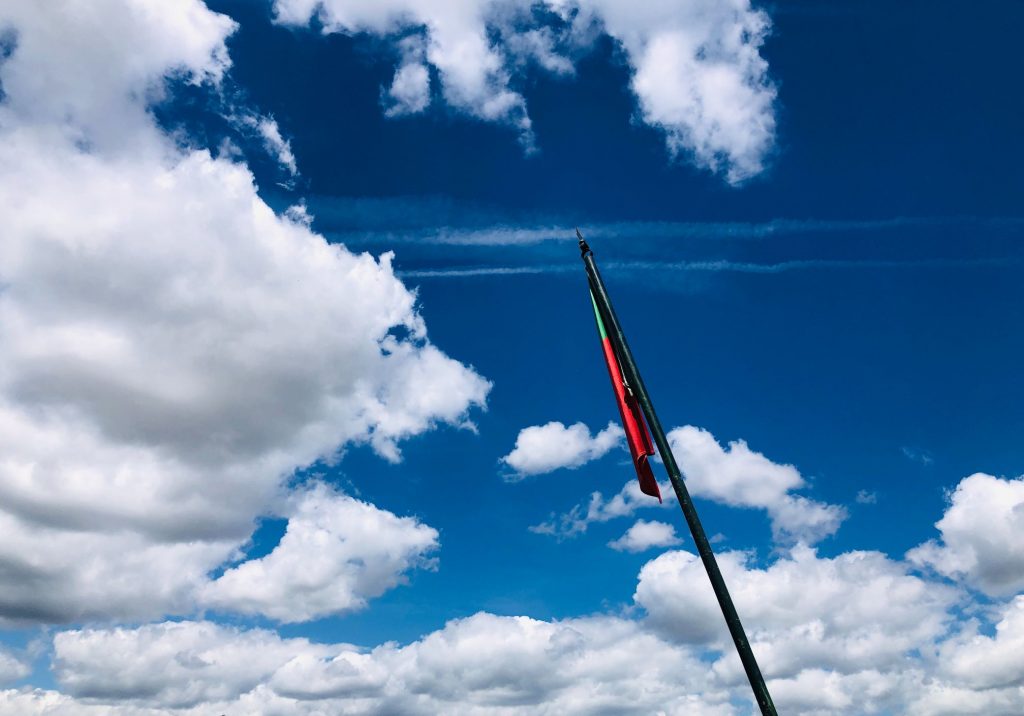


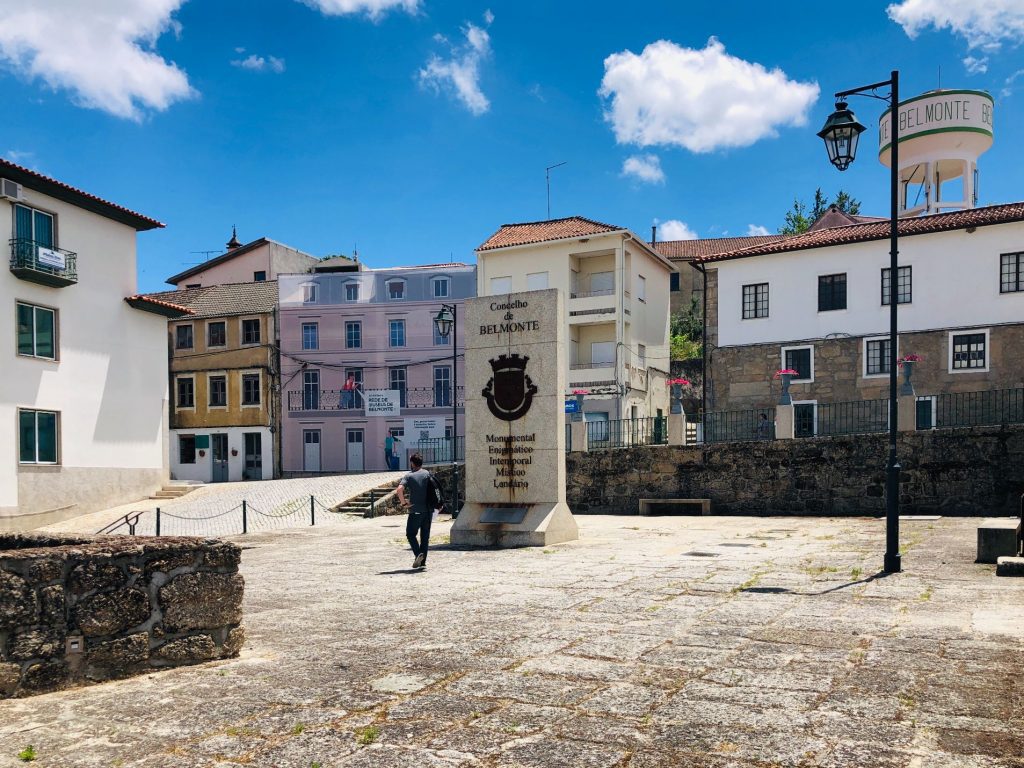


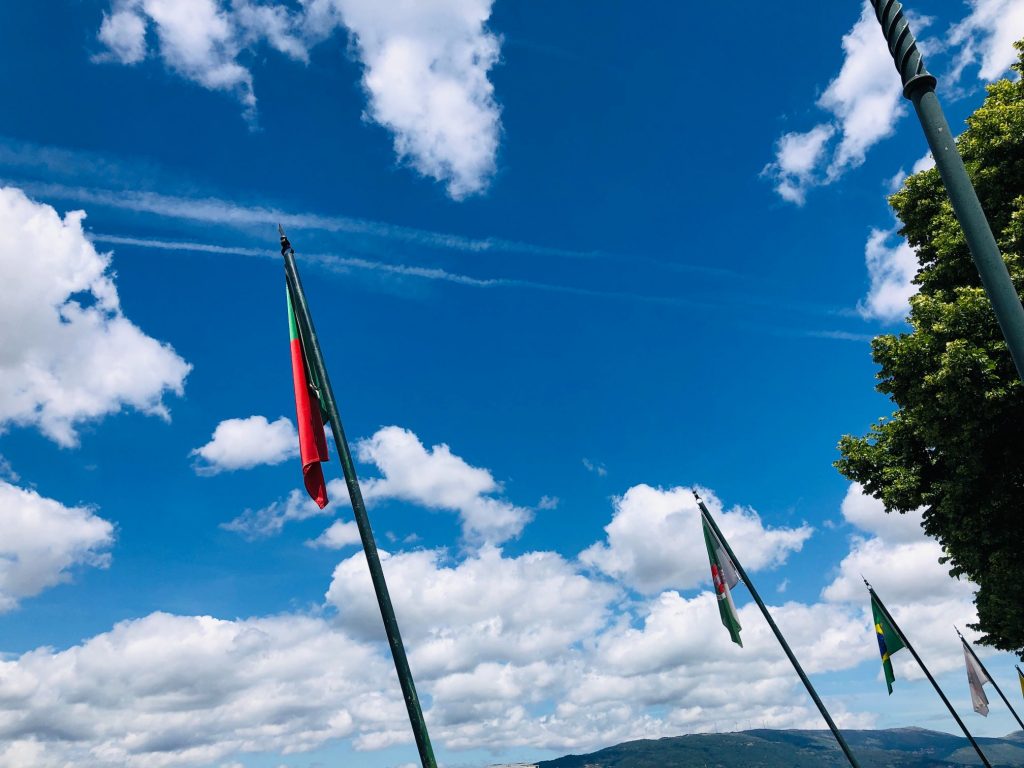


I LOVE the sight of all the flags blowing in the wind 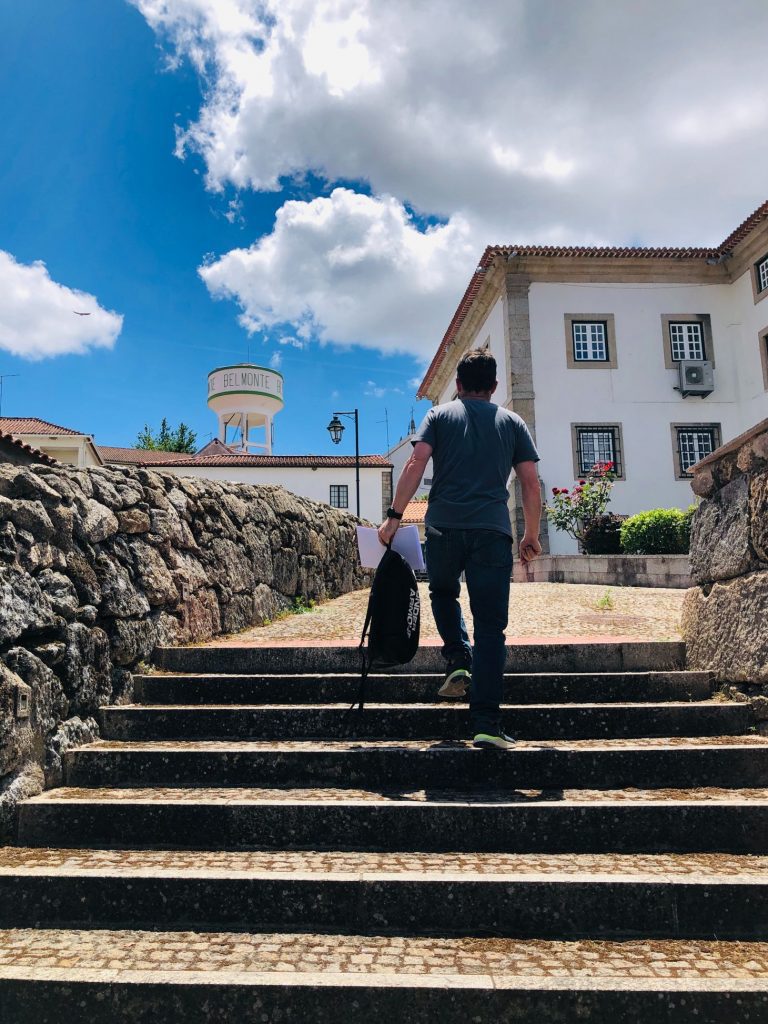


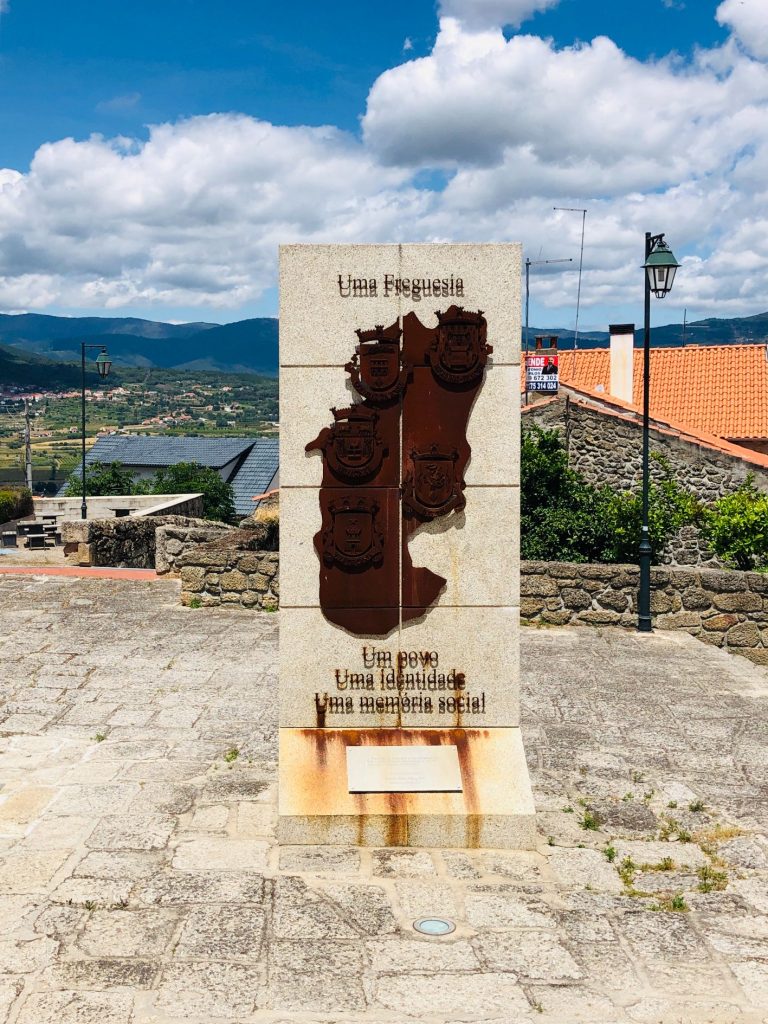


The slightly blurred writing makes me feel I have consumed one too many craft beers (ha ha) 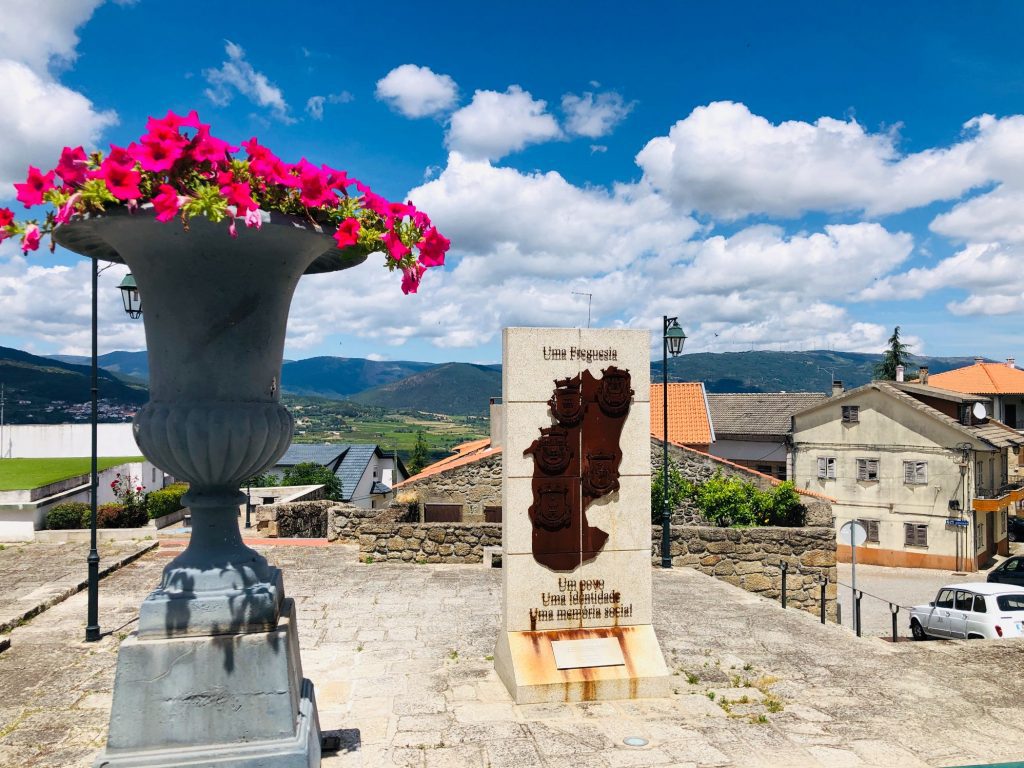


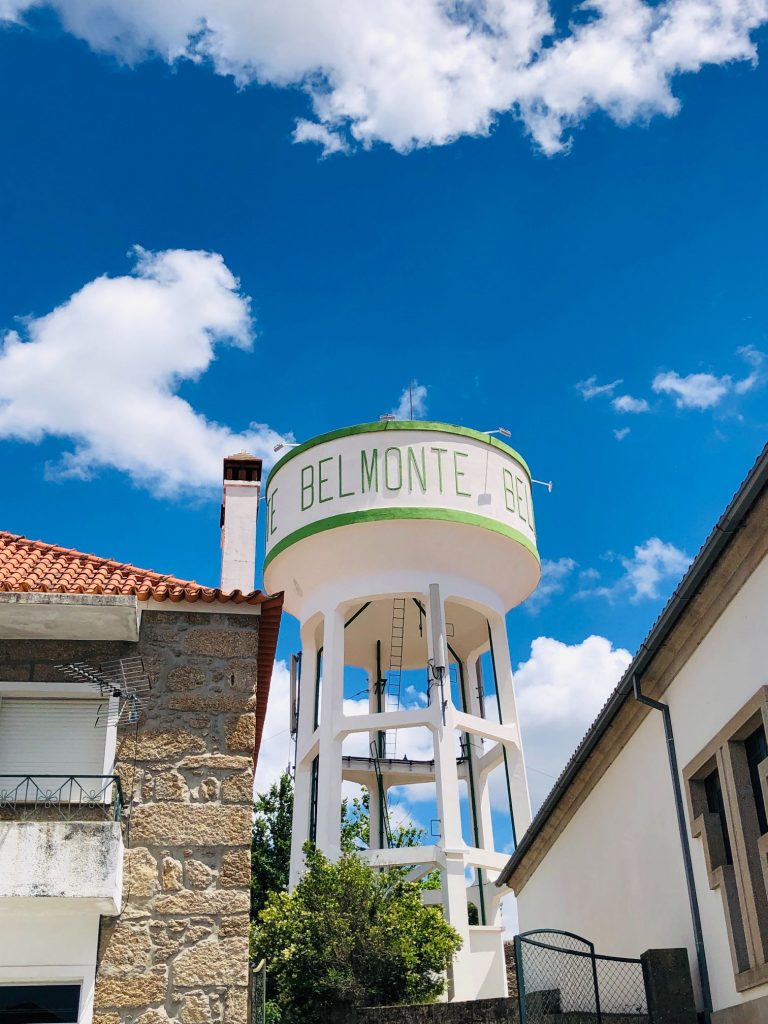


Solar dos Cabrais Biblioteca e Arquivo (Municipal Library & Archives)
Once upon a time it used to be the Cabral family home but now houses the municipal library/archives and is located right next to the Discoveries Museum. It is a two-storey longitudinal building with a facade bordered by pilasters, a plain cornice and windows with straight lintels. Over the door in the main facade there is the coat of arms of the Counts of Belmonte, the only one that managed to survive the mutilation of all the coats of arms in the town, as it was only put up after the troubled times of the First Republic. The Museum of the Discoveries was built from scratch in the grounds.
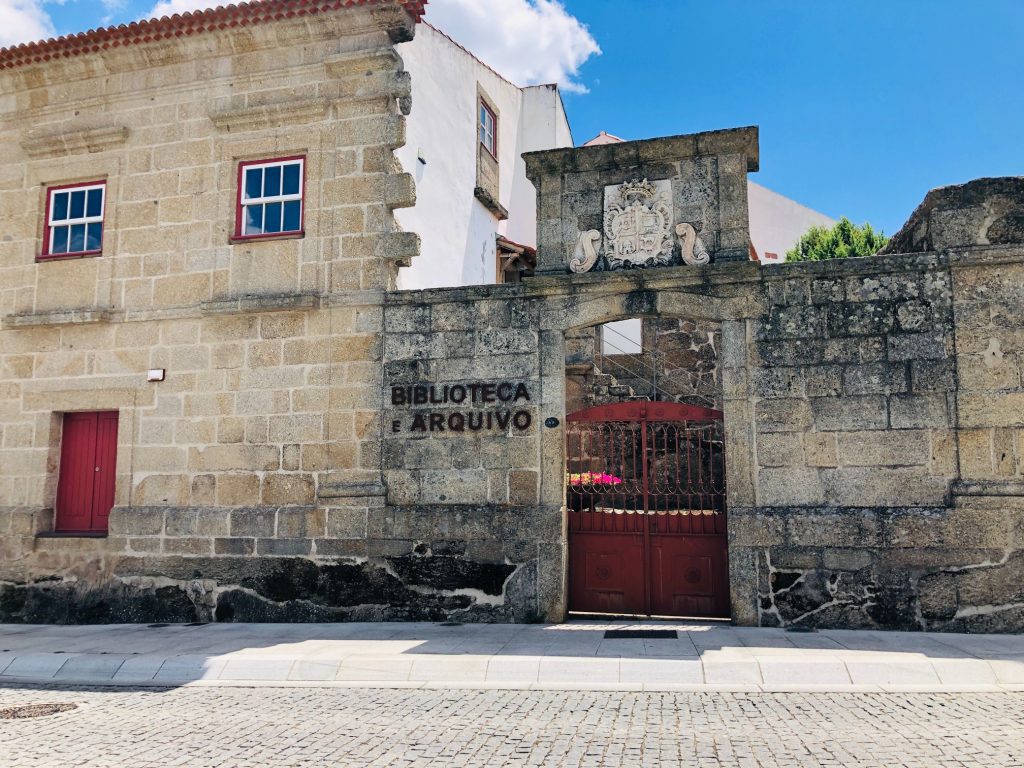


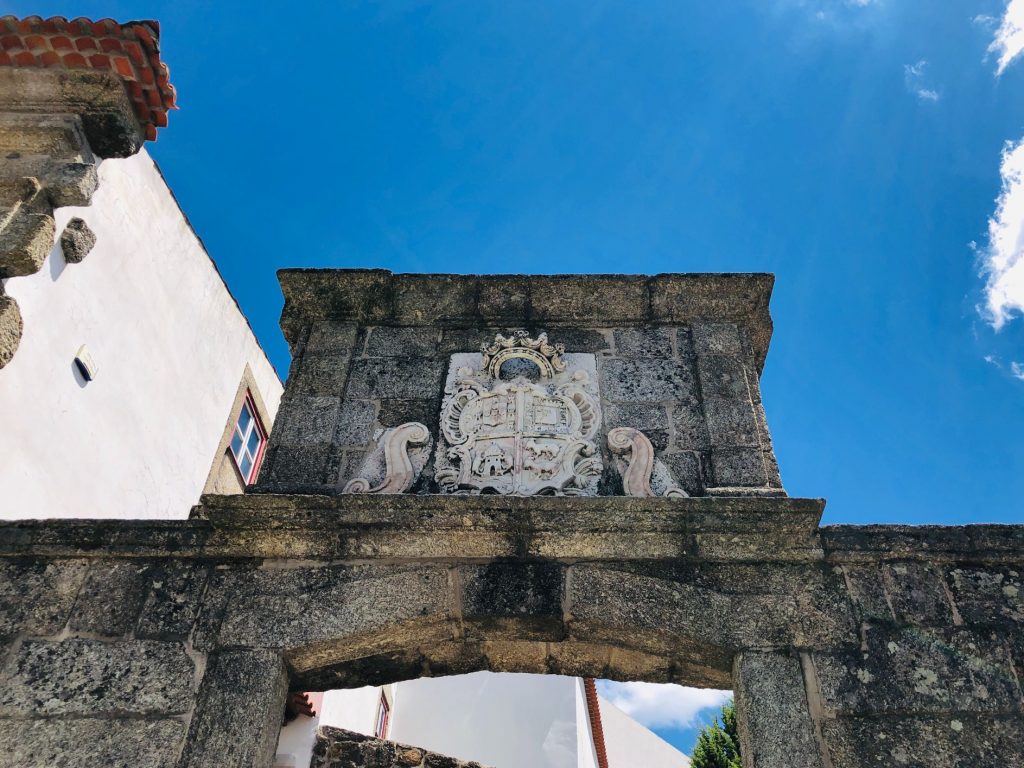


Soul Surviver!
Viewpoint of Varandas do Zêzere
Beautiful views, I will never ever get bored of the scenery in Portugal!
Casas Arte Nova (Art Nouveau Houses)
I LOVE all the quaint houses with fancy facades, spectacular elaborate balconies and I ADORE the Portuguese traditional tiles “Azulejos”, especially the blue and white ones.
Urban Street Art
I also LOVE all the street art we stumbled across whilst roaming around the cobbled streets. I posted 80 photos on Facebook and one bloke commented how the Sky Art was a waste of taxpayers money and not art. His actual words were “WTF People are getting crazy and this with tax money!”. My response was “It looks cute and I think it improves the area for tourism which brings in money”. He came back with a strong “Sorry Nooooot cute, the fashionable instagrammable spot with very poor artistic taste or whatever taste”. My final back at ya response was “Art is subjective because it is an expression of personal perspective. Hubby and I loved it so I suppose in your opinion we have poor taste (ha ha). Don’t worry we are not offended and I posted 79 other photos of Beautiful Belmonte including the captivating castle and 5 museums. Maybe look at the other photos, some of which might make you smile”. What can I say, I’m a sarcastic madam and it mildly annoyed me that someone can post this on my Facebook page without mentioning how amazing at least some of the other photos are (ha ha).
Personally I don’t think tax money was used for this Sky Art. It is a few handmade boats and blue streamers and looks to me like a local art project and it’s highly likely that the materials used are recycled so I’m not sure what the big deal is. Maybe there is a cost to erect the art, who knows and who cares! I think it enhances the area and reminds me of Águeda. We are also tax residents here just in case you are thinking we are not. In fact hubby earns a high salary so our taxes here are very high and we also pay Social Security here too now. Luckily we receive NHR status which helps a bit re our income tax but that only lasts for 10 years. I don’t know why people can’t just press the like button and move on. You don’t have to type a comment and blurt out everything that comes into your mind especially on someone’s personal page. There was also some wonderful creative crazy yarn bombing art in the sky. I wonder if he takes offence to the crazy crocheting too which is likely handmade by some artistic grannies (ha ha).
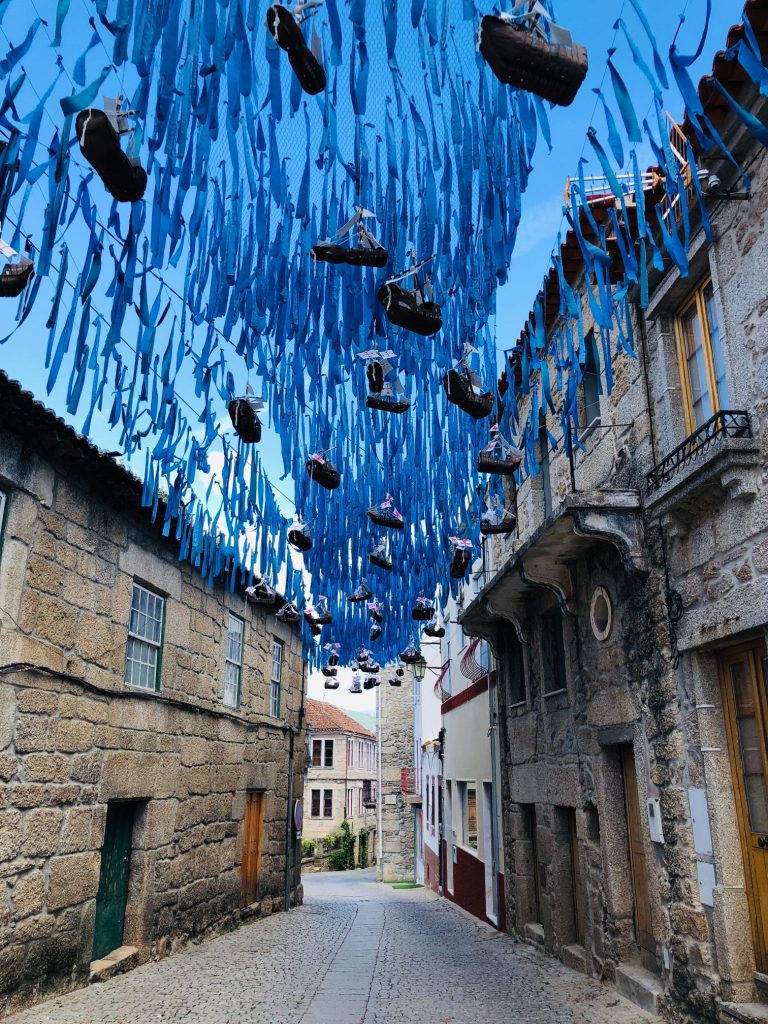


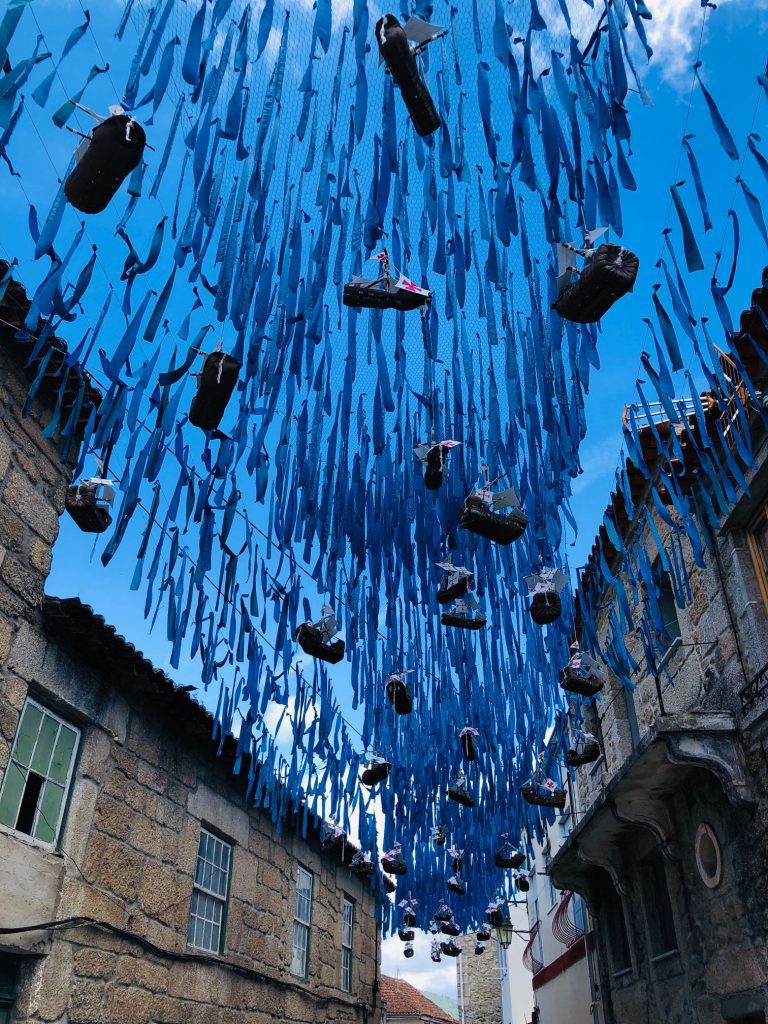


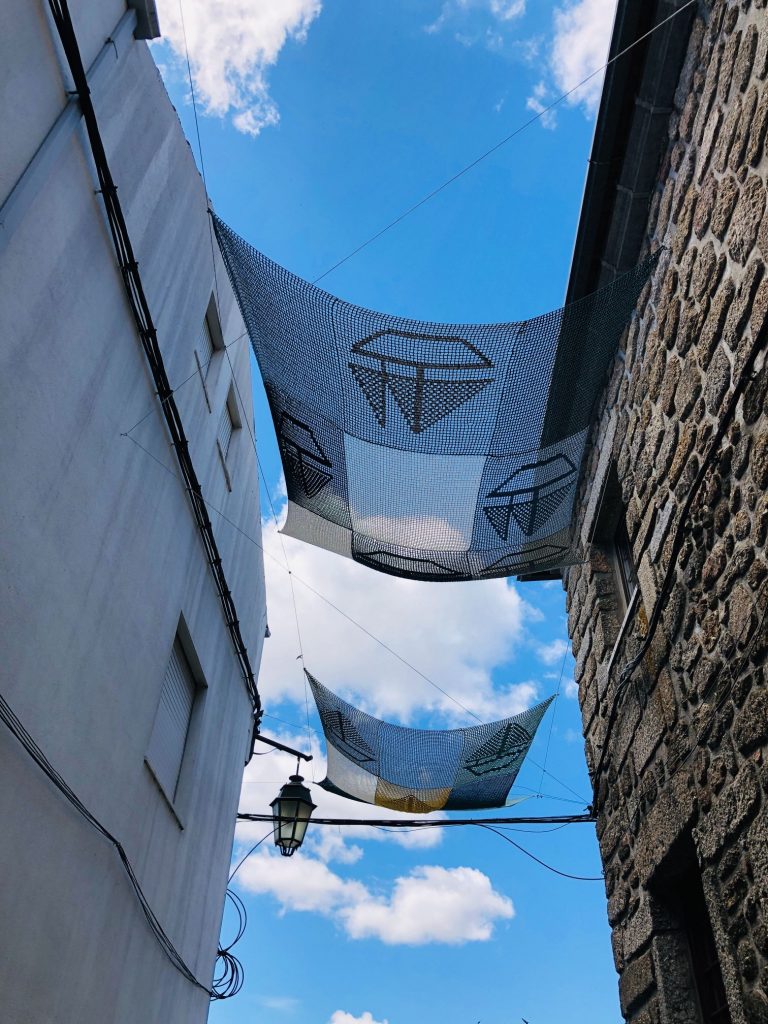


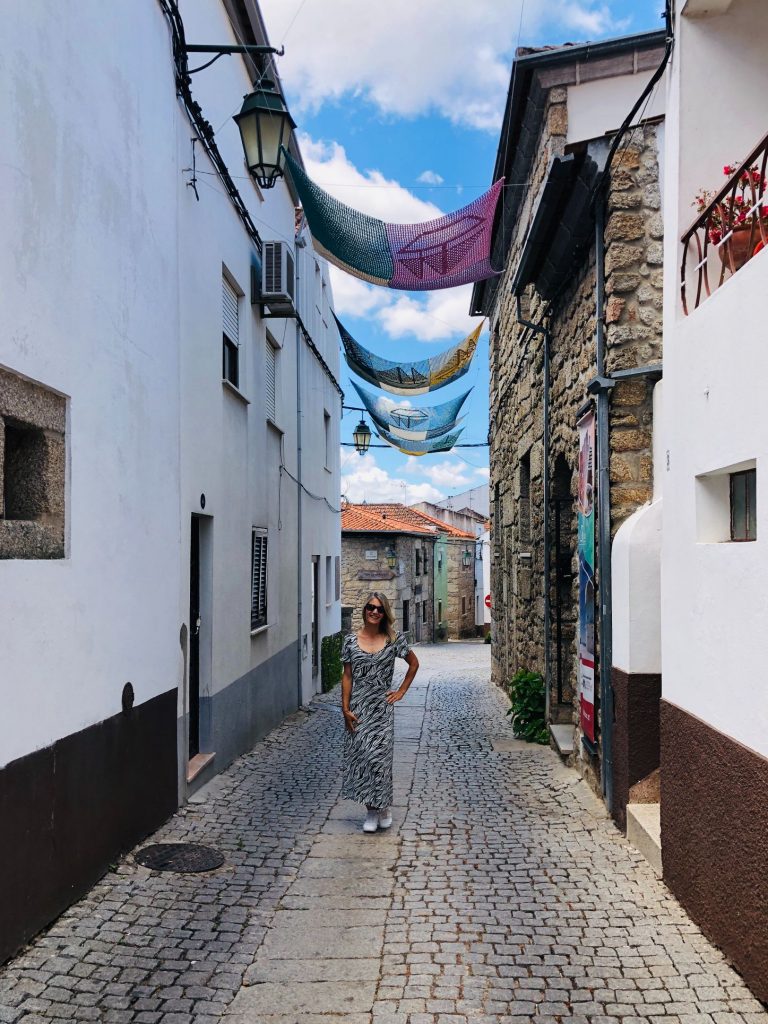


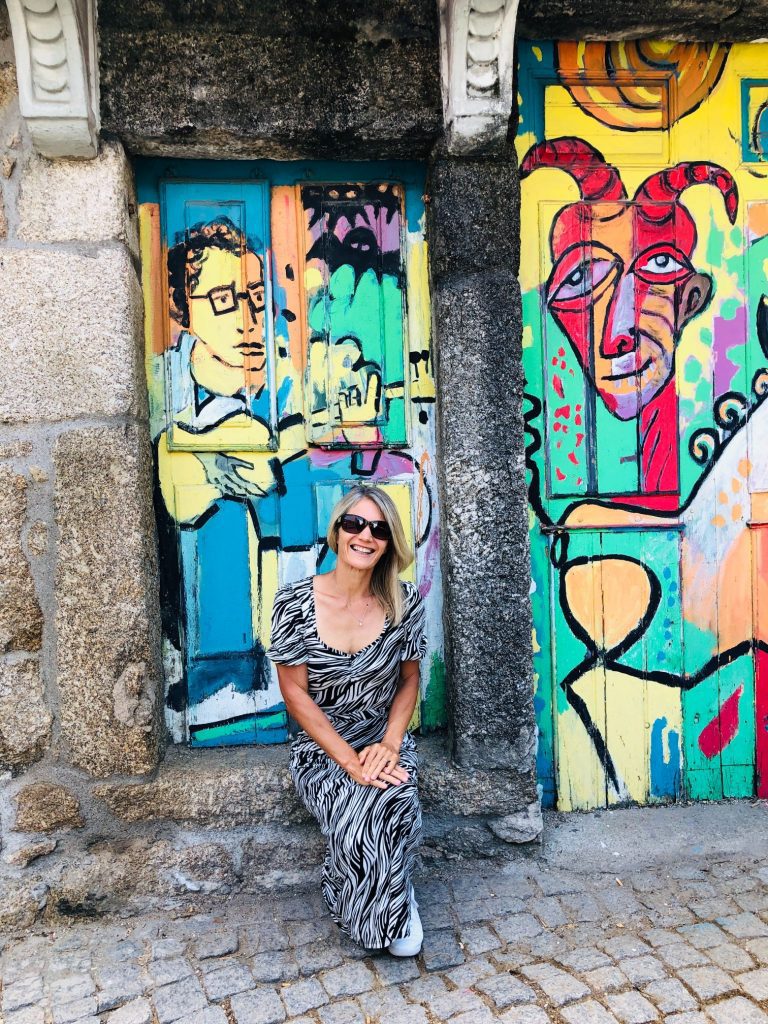


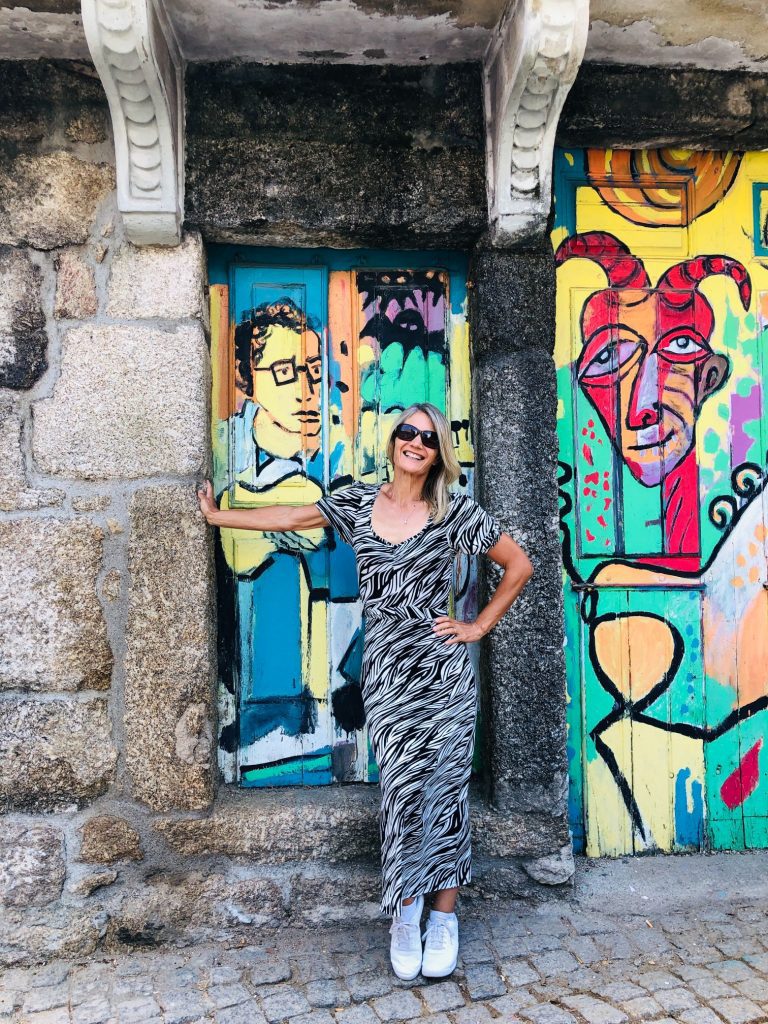


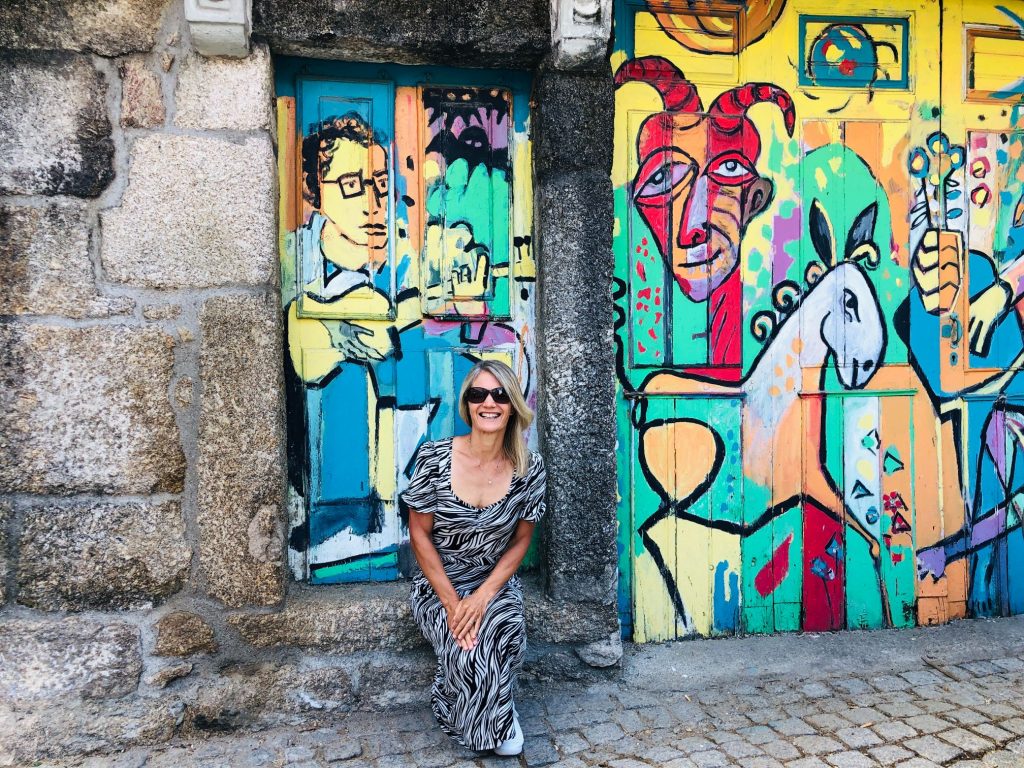


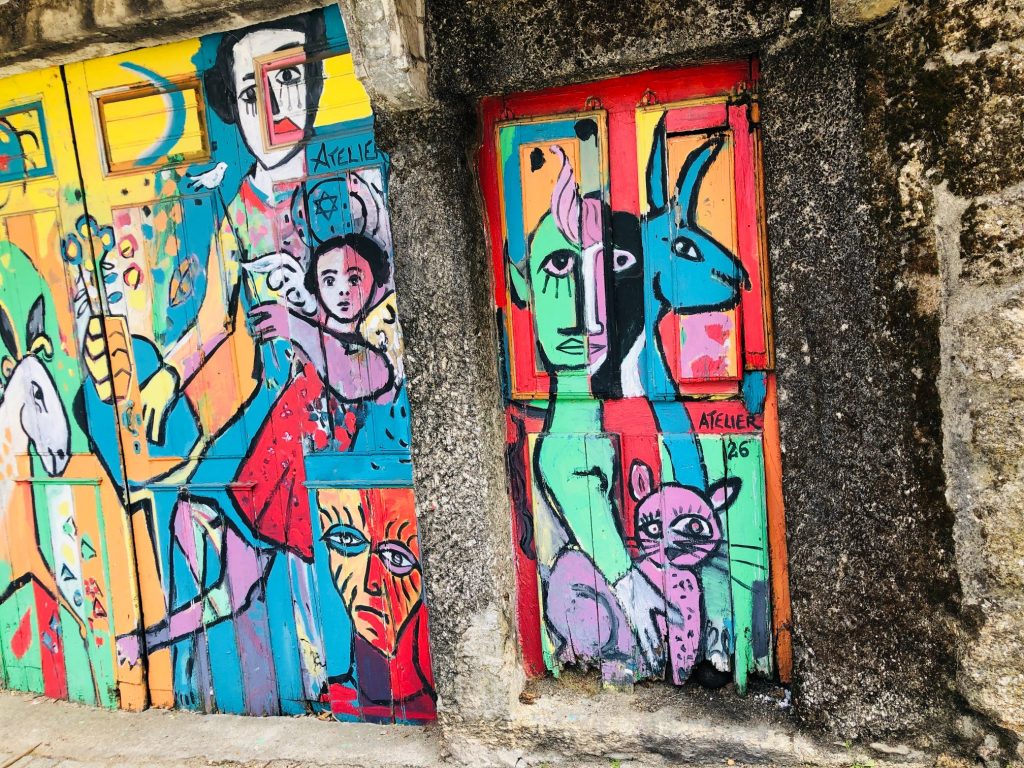


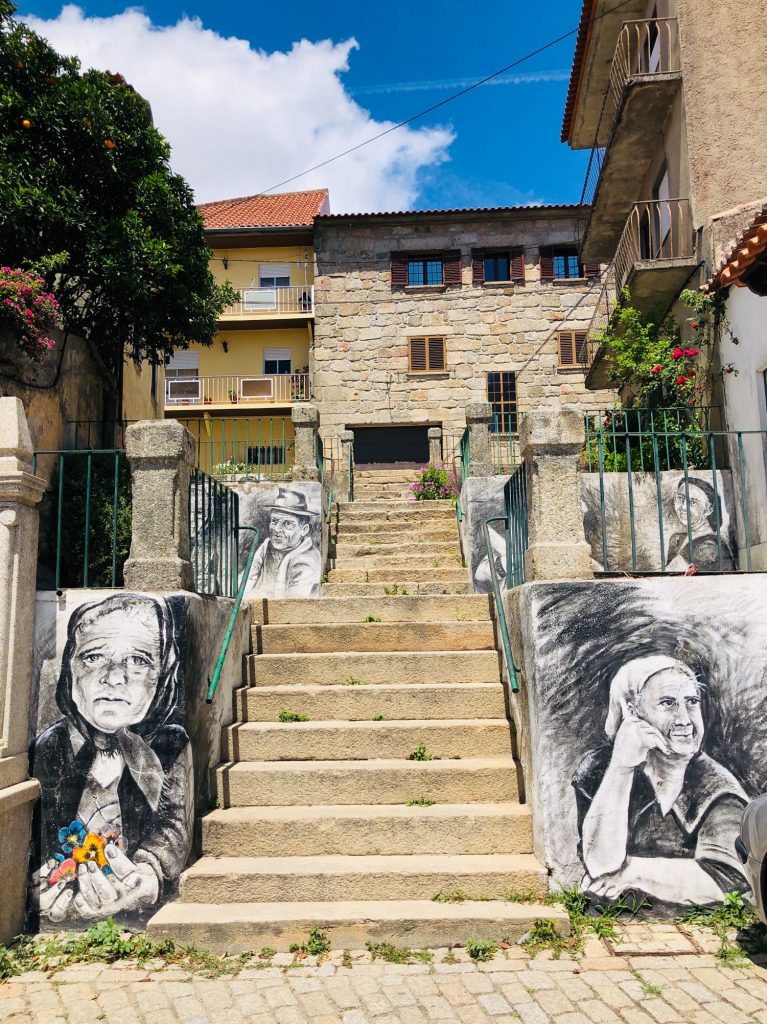


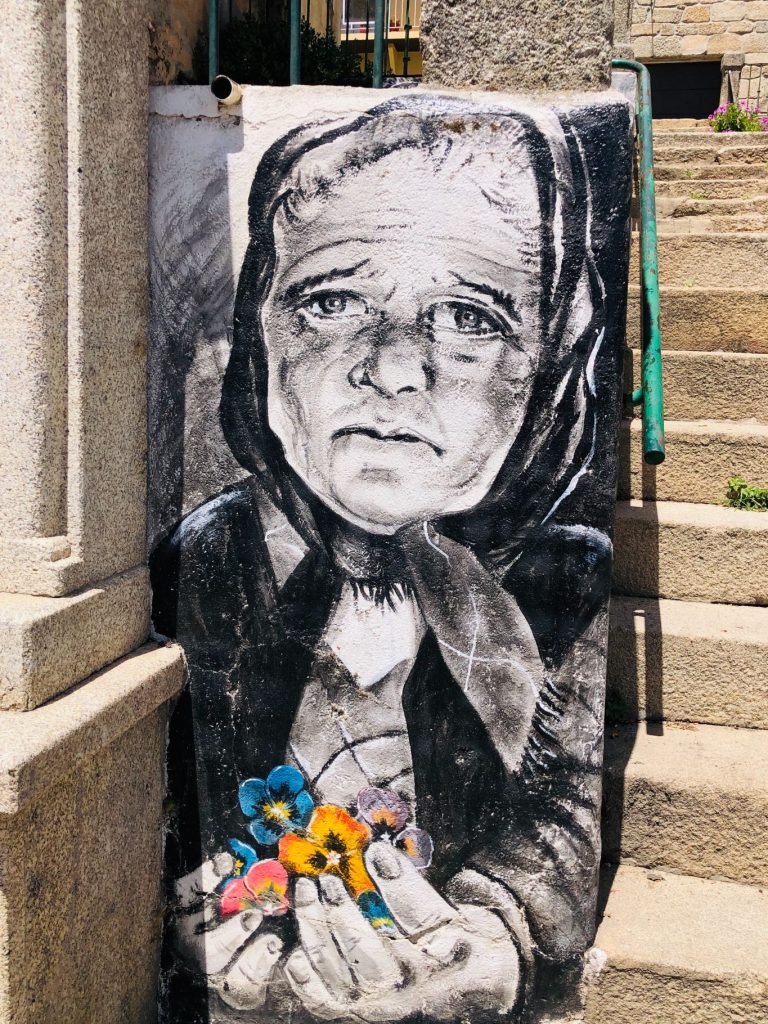


I LOVE this so much! 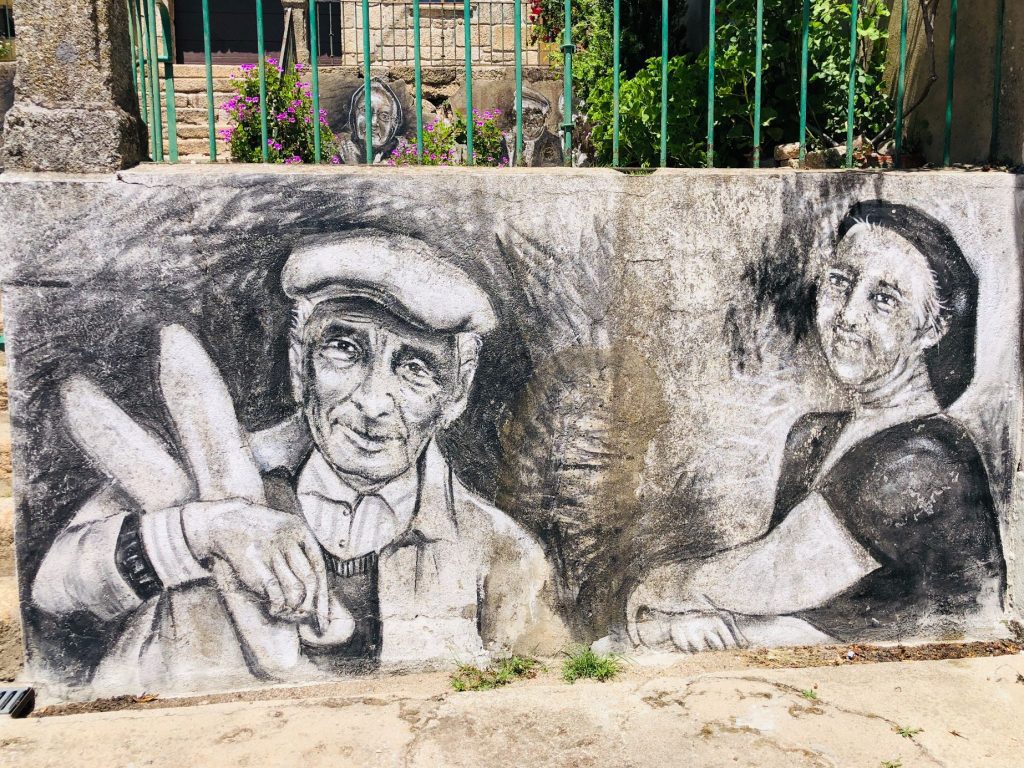


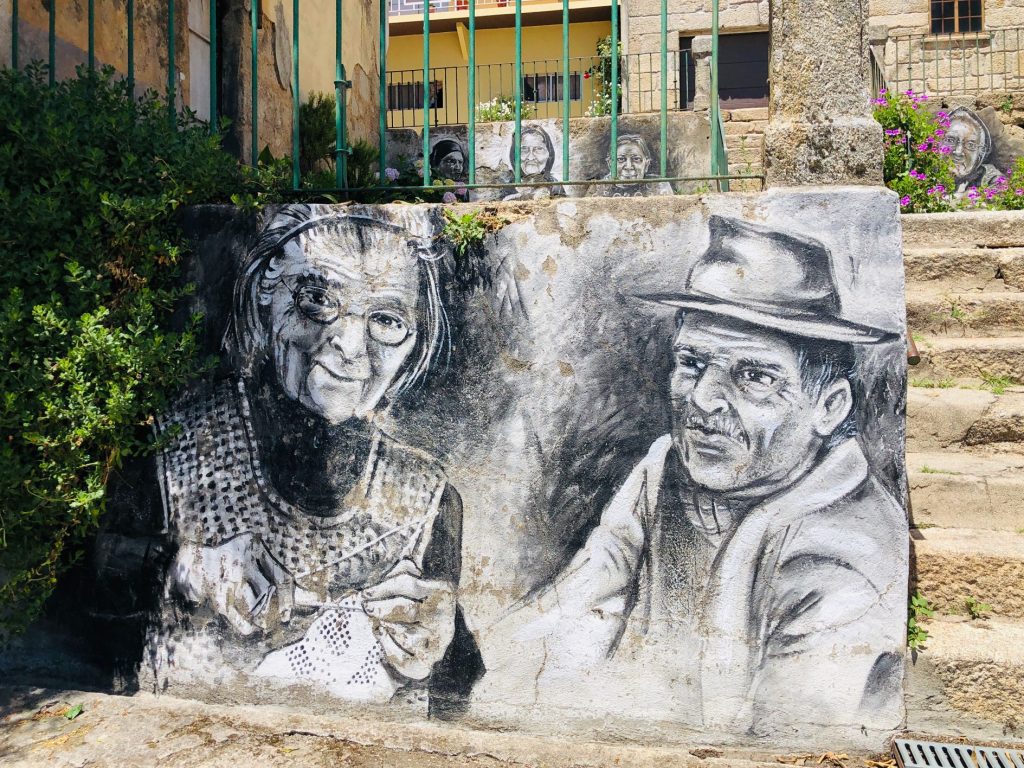


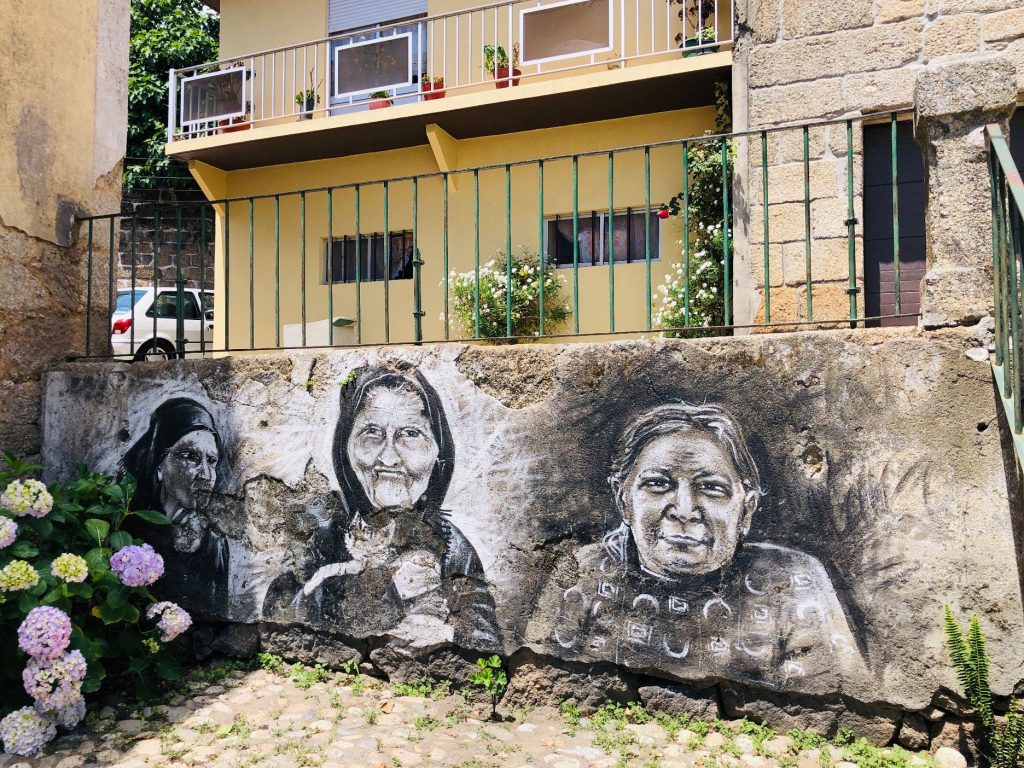


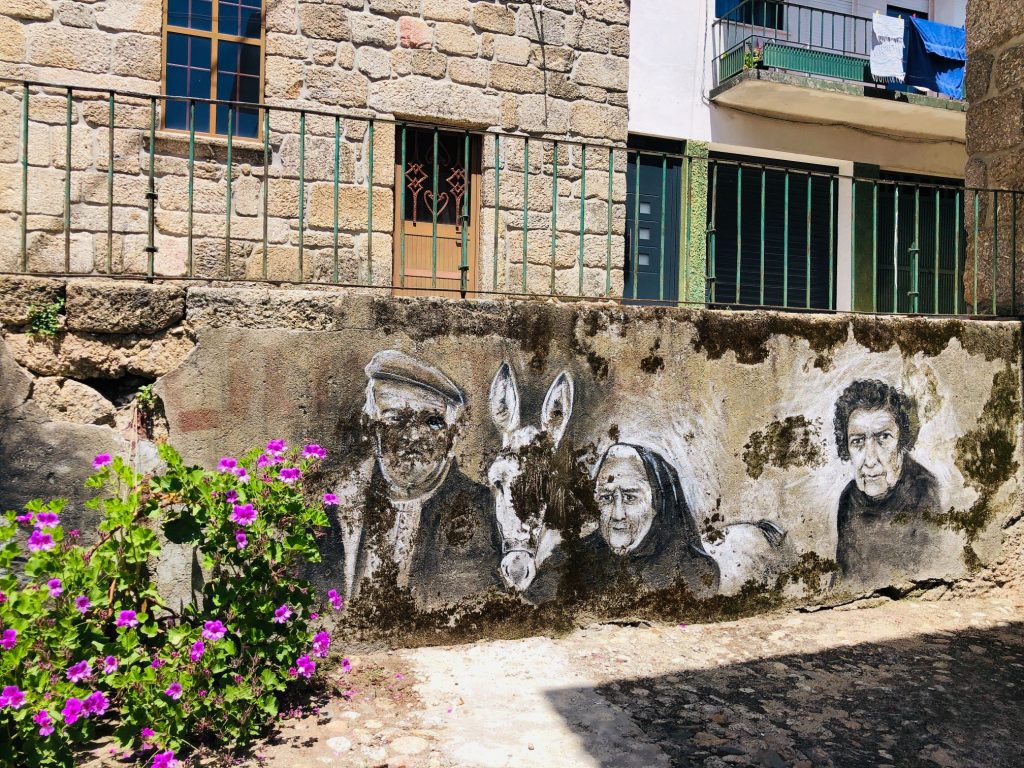


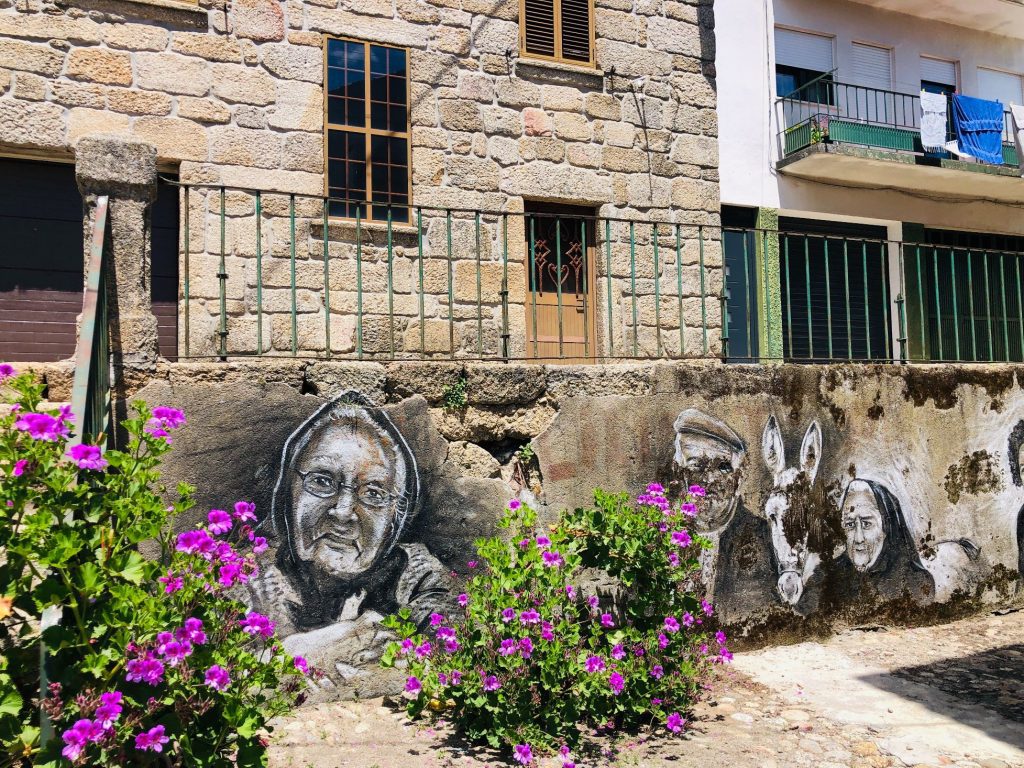


Magnificent Museums
There are several museums in Belmonte and as I mentioned before, we decided to purchase the combo ticket which was such amazing value for money. A mere €10 to view the castle and 5 museums: Church of Santiago/Pantheon, Jewish Museum, Zêzere Ecomuseu, Olive Oil Museum and The Discoveries of the New World Museum. Some of the Museums only cost €1.50-€2 to enter but others are €4-€5 so you might want to decide which you want to view before buying the combo ticket. There is a full price list advertised on the Municipal website. If you are a regular reader of my previous posts you are probably aware by now that I’m not a huge fan of Museums. Saying that I decided to fully immerse myself into Portuguese culture and history by visiting a range of museums. Without a show of doubt I wanted to view the Jewish Museum and the Discoveries Museum because I feel these 2 places would enlighten me to gain a better understanding of the whole history in general. They were all very different and I surprisingly really enjoyed them all, especially the Jewish Museum. All were peaceful, very empty with limited visitors if any and there were zero queues. I could count the amount of people we saw at most museums on one hand. We were the only ones in the Ecomuseum so it all felt very safe and luxurious. I couldn’t pick a favourite as they are all so very different but if push came to shove I would say the Jewish Museum was my 1st choice and not to be missed. The only negative I would mention is we were not offered gloves to use on the interactive touch screens. Some had the technology where you just have to hover over the buttons with your hands which is super but others did not have this option and my OCD mind just kept thinking how many people have touched this screen so I made hubby touch the screens (ha ha). This is just me and my brain overthinking and something I still would have thought about prior to Covid because I’m a little bit paranoid about germs as I have a crap immune system so if I get sick I suffer for what seems like an eternity.
Jewish Museum
The Jewish Museum was the first Jewish Museum to open in Portugal (2005). The community that for centuries resisted the expulsion edicts of the Catholic Monarchs, the order to convert or leave from King Manuel I and the watchful eye of the Inquisition and its court, deserves to be remembered. Pieces from the Middle Ages to the 20th Century used by Jews and New Christians in their worship or everyday lives are on display in this museum. I really enjoyed the Jewish Museum and finding out more about the Jewish culture, heritage, religion of Judaism and connections to Belmonte. I found all the unique (over 100) collections and pieces fascinating and there were several Hanukiah, Menora and a grand Sefer Torah (Holy Scripture) on display. Hubby liked the Shofah, a magnificent wind instrument made from the horn of an animal. There is also an impressive Votive Epigraph with an ancient inscription.
Zêzere Ecomuseum
The Ecomuseum is an educational Museum where you can explore the history and ecological factors of the Zêzere river. We have paddle boarded on the Zêzere so are well aware of its raw beauty and vast fauna and flora. The building was once a former 18th Century barn “Tulha dos Cabrais” belonging to the Cabral family who built it in front of their manor house. We had the whole place to ourselves which was fantastic. Hubby was intrigued by all the multimedia modules as he is a geeky nerd (ha ha). He especially enjoyed viewing an exhibit with a huge map of the river and when I asked him what he was doing he said he was looking for awesome paddle boarding spots (ha ha). Another lovely Museum and a fun, immersive and interactive experience. There was a tank with garbage and plastics representing just how polluted the river can get from all the disguarded plastic which really hit home. We recycle everything and nothing is safe around me (ha ha).
I follow a lady on Instagram who has had a huge weightloss success. She often records what she eats in a day and she is honest when she admitedly says she hates cooking and lives off convenience foods. When she records her weekly food shop it is literally a kitchen counter top full of plastic and because she filmed herself walking to the recycling bin in her back yard and putting it in a recycling box to be collected she thinks she is doing her bit to save the planet. Everything she buys is wrapped or packaged individually in unnecesary plastic. Ready meals and pre prepared fruit all chopped up and placed in plastic packaging including veggies and individual portion sized salads, it is insane. How busy can 2 adults be that they can’t spare a few minutes to chop a lettuce or peel an orange. Why buy a pre-spiralised courgette wrapped in plastic when you can just buy a courgette then slice and dice it to your hearts content at home or better still why not grow your own. Buying a pre peeled orange wrapped in plastic is the height of lazziness and guess what? Oranges don’t need any packaging they come with their own protection, it’s called orange peel (skin). Her poor toddler child is not going to know that apples are round or grow off of a tree. They are going to think that all this food comes from a plastic container! I know people have busy lives and I respect peoples personal choices but it is 2022 and we are living in a plastic pollution crisis. We all need to be responsible and do our bit to live with less dependence on plastic, this includes supermarkets who have a huge responsibilty too. Rant over. We try to live a simple homesteading life which is not for everyone but it works for us and brings us much joy and peace. What you do makes a difference and you have to decide what kind of difference you want to make. Mini rant over! Apologies, I’m passionate about plastic (ha ha).
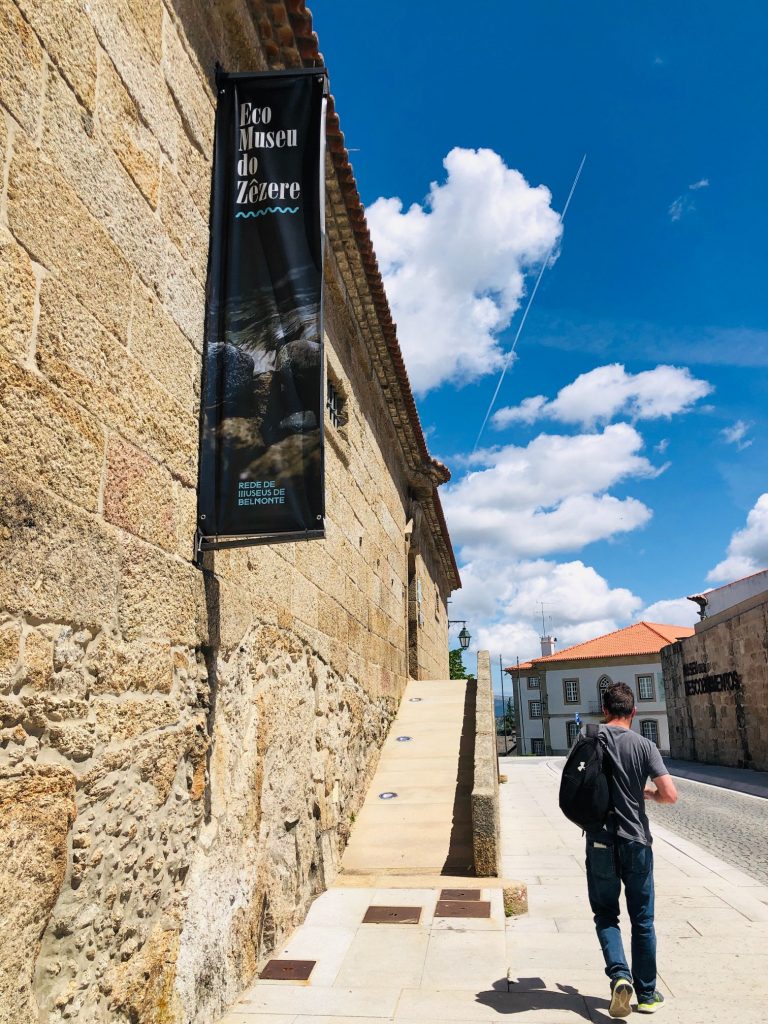


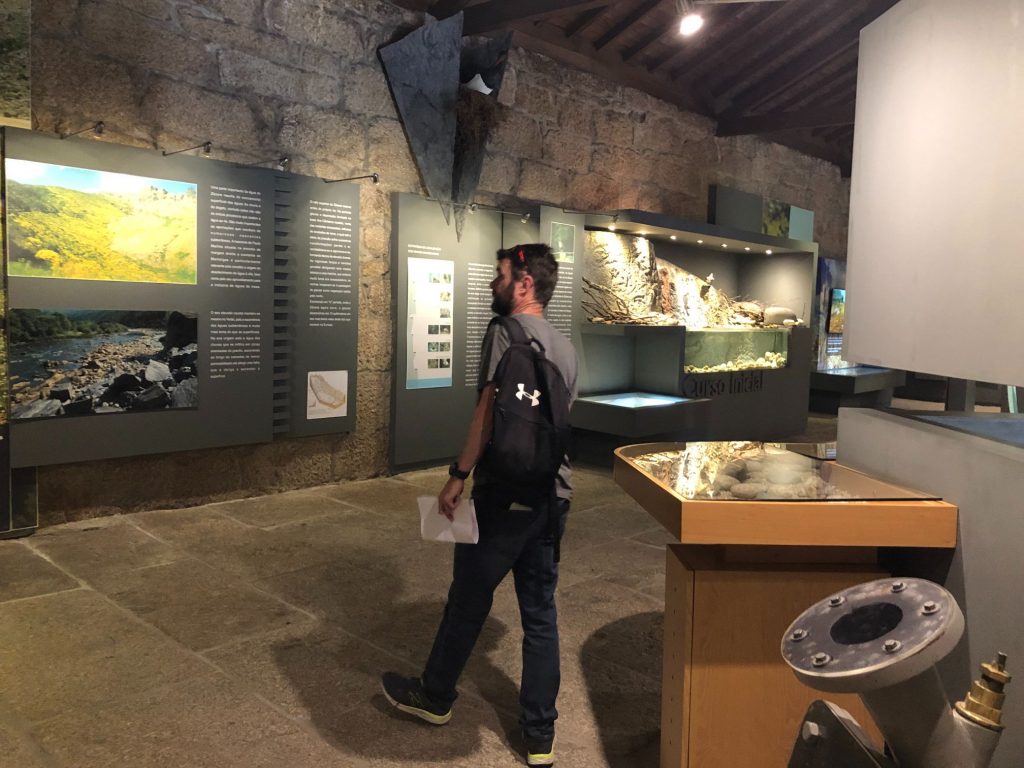


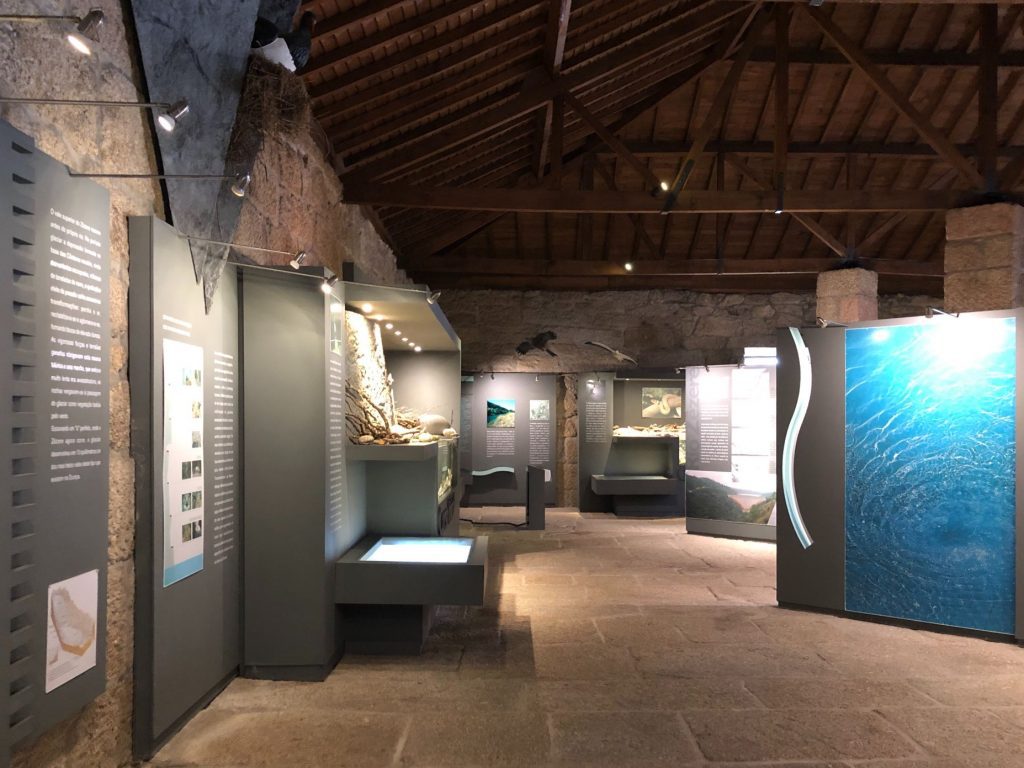


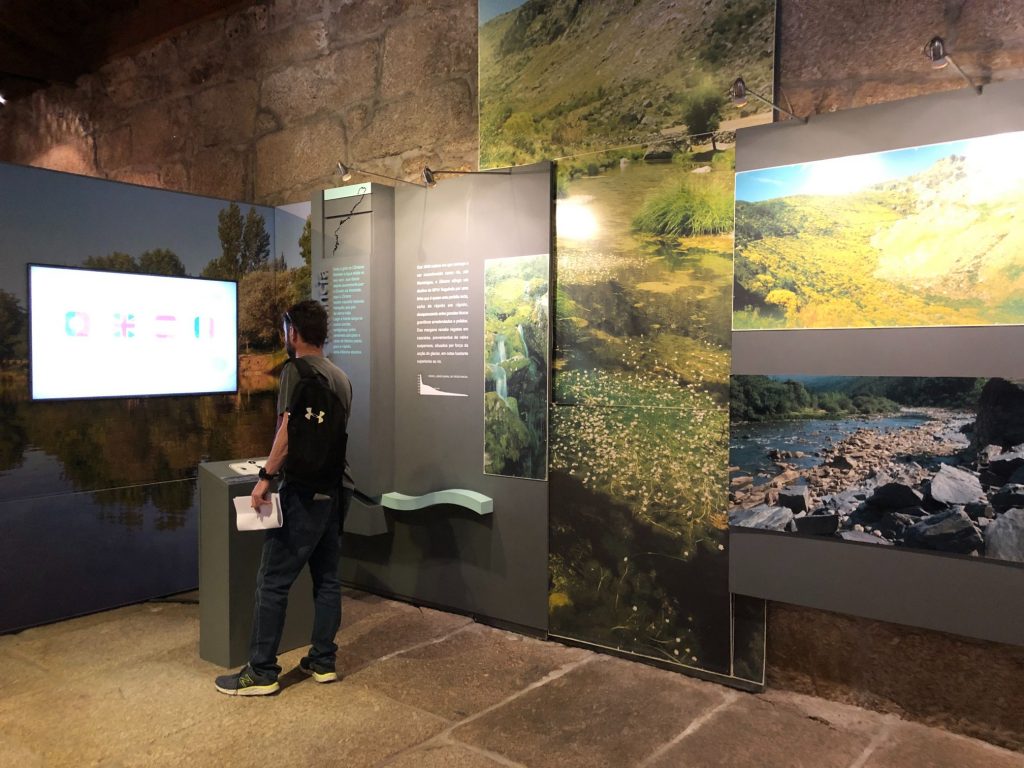


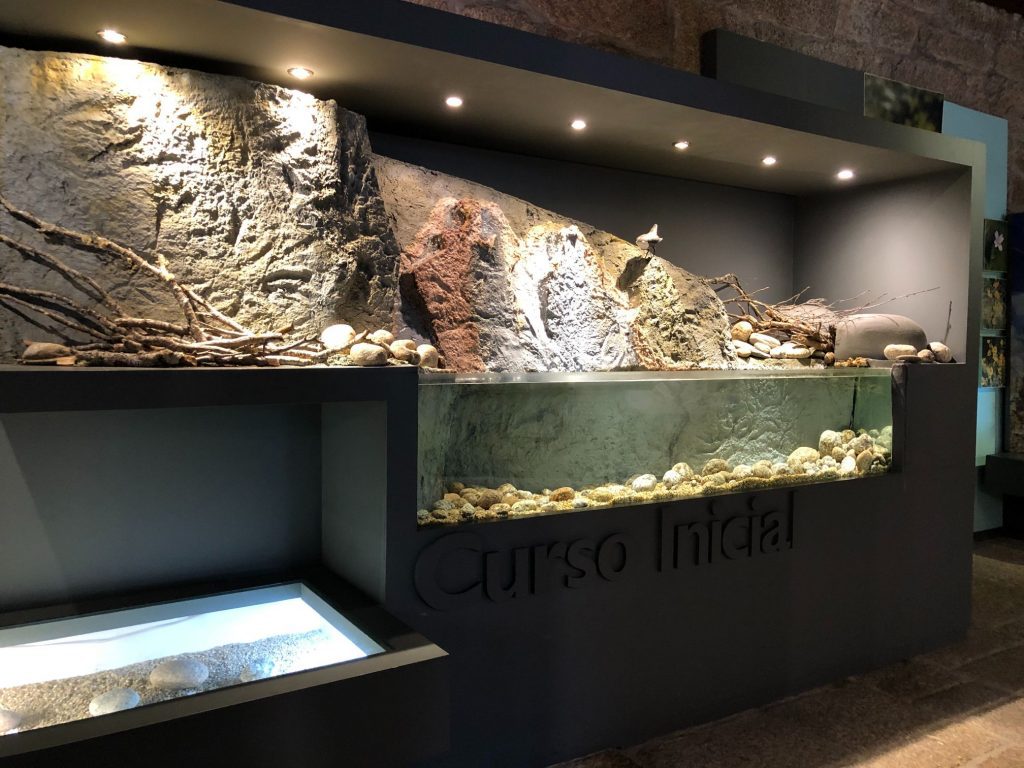


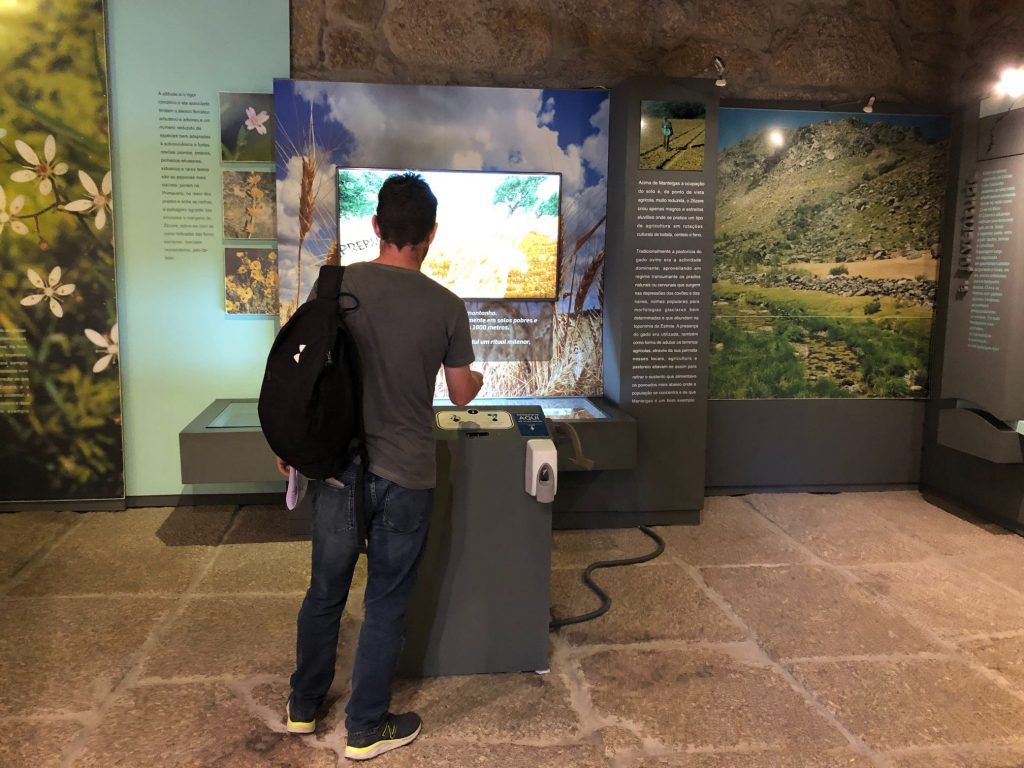


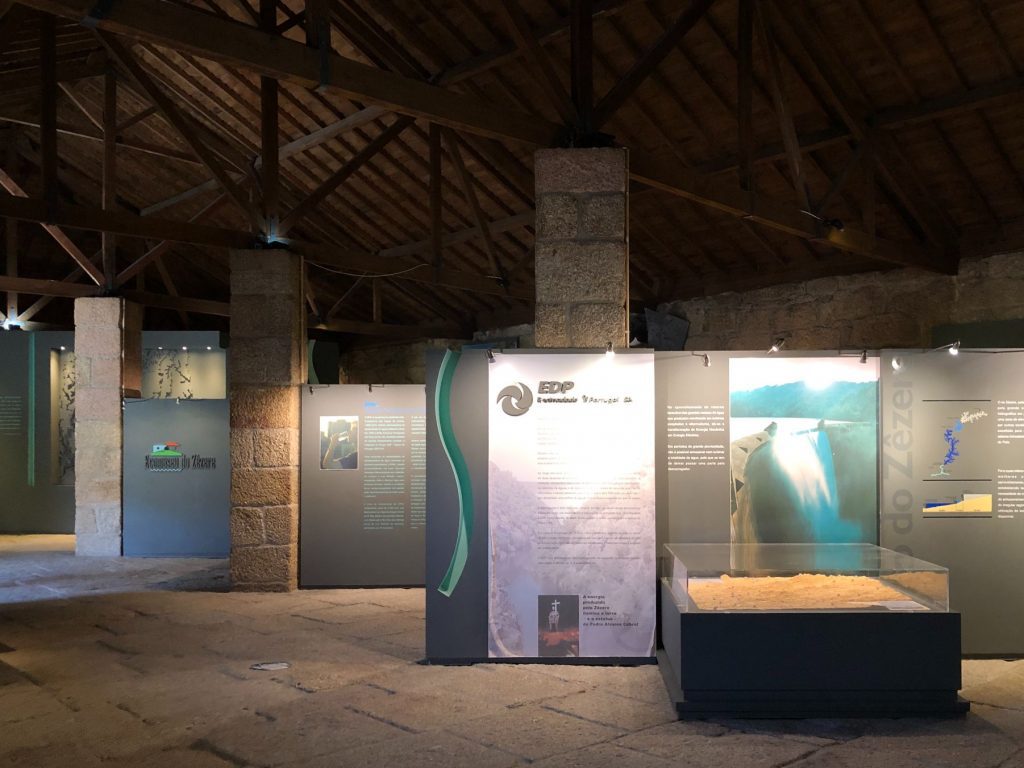


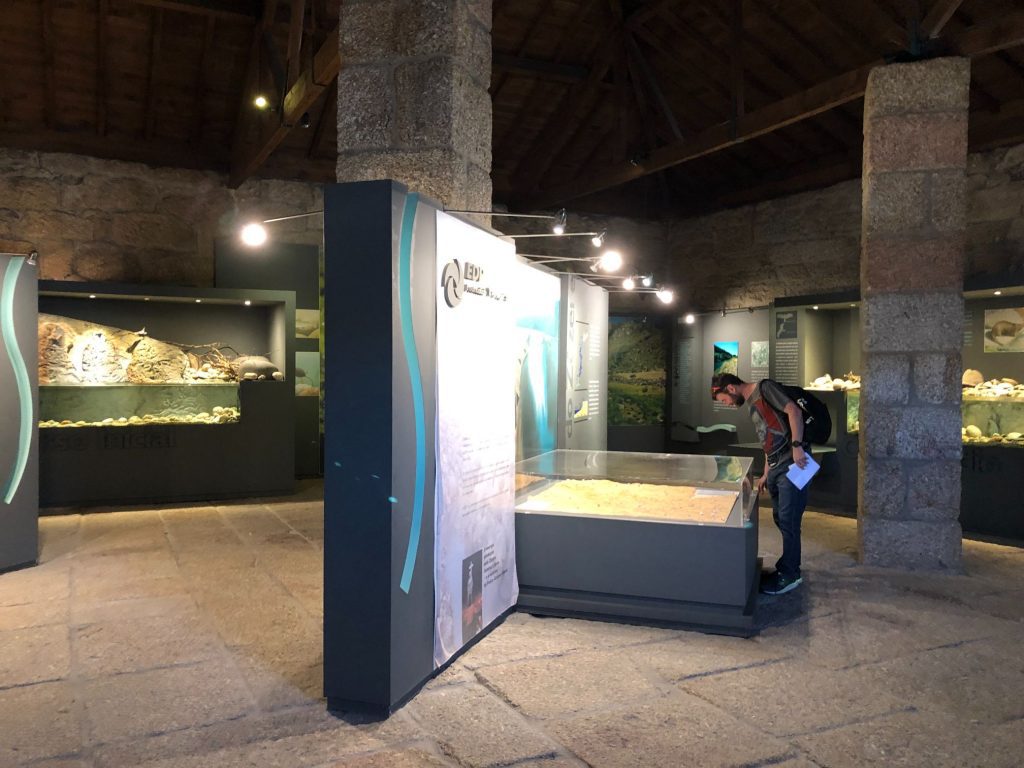


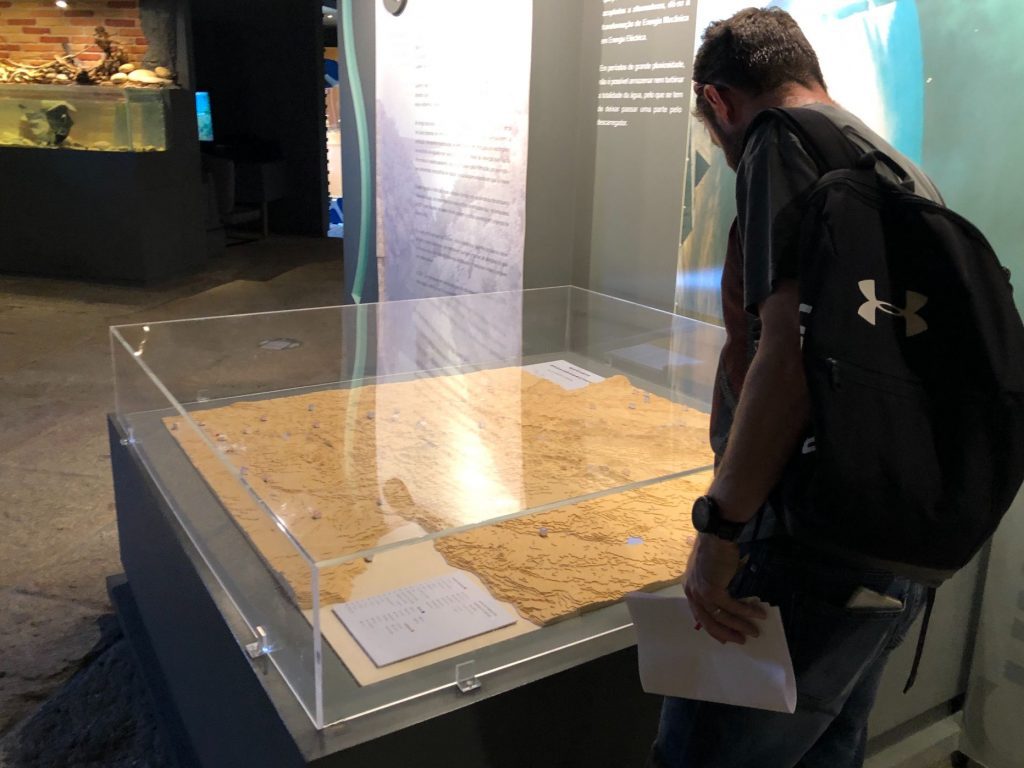


He is sourcing new paddle boarding spots (ha ha) 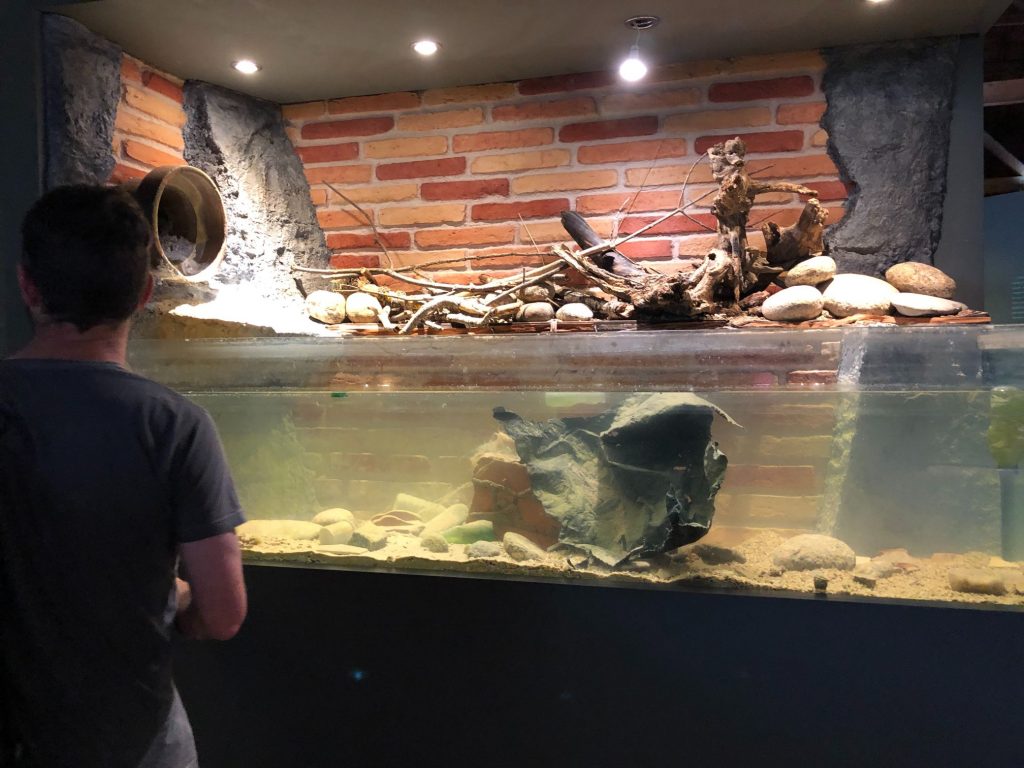


Plastic pollution
Museu do Azeite (Olive Oil Museum)
Making the most of an old olive press in Belmonte, a museum was installed where visitors can see all the machinery used for transforming olives into olive oil in the 20th Century. Apart from this, various types of regional products are on sale here, including wine, olive oil, and jams. I was very tempted to buy the olive oil, honey and wine but I couldn’t be bothered to carry it around with me so reluctantly declined. The lady in this museum was so lovely and gave us a leaflet in English after thinking we were French, I shouldn’t have worn my berry hat (ha ha). I’m not offended, much! We love olive oil and cook with small amounts at home often. Hubby dislikes actual olives so if he ever orders a meal or pizza which often arrives with olives, I take one for the team and eat them all (ha ha). It is a small, simple, yet interesting museum and worth a visit if you are intrigued in the olive oil making process. We don’t have any olive trees in our garden but a lot of our friends do and I was surprised at how many olives you need to produce olive oil. There are places here in Portugal who will accept your olives and press them for you for a fee. You can sample the different olive oils in the shop before you buy.
Leaflet
This was the only museum where we were given a leaflet so I thought I should share it with you.
Museu a Descoberta do Novo Mundo (Discovery of the New World Museum)
The Discoveries Museum/Interpretation Centre arises from the desire of the Municipality of Belmonte to make known one of the greatest achievements in the history of Portuguese Discoveries – the Finding of Brazil. This space proposes to make known, study and publicize the feat of Pedro Álvares Cabral and to explore the history of the largest Portuguese-speaking nation, which over five centuries was built through an extraordinary coexistence of cultures. It is an interactive museum that transports visitors through a 500 year history of the construction of a country and its nature. The exhibition addresses the history of the Portuguese discoveries as an element that unified the New World, the voyage of discovery of Brazil, the construction of a sister nation, being Portuguese and much more. We were not given any leaflet in this museum and all the information boards were written in Portuguese but luckily there were interactive touch screens to source information in English, Spanish and Portuguese. I went for the English option (ha ha). We really enjoyed exploring this museum and there are several exhibits and themed rooms including films, animations and photographs. We had way too much fun with the handcuffs in the replica of the cell for slaves. The sole reason I watched the whole film footage in Portuguese was because there were comfy beanbags on the floor. It wasn’t until afterwards that I realised maybe they were for the children. Oh well I am a child at heart but not in body as my ass moulded to the chair, got rather stuck and I struggled to stand back up (ha ha). We thoroughly enjoyed our journey through time exploring more than 5 centuries. It was a super interesting, informative and enriching experience. I feel super brainy now, I dare you to quiz me on the main man Pedro! (ha ha).
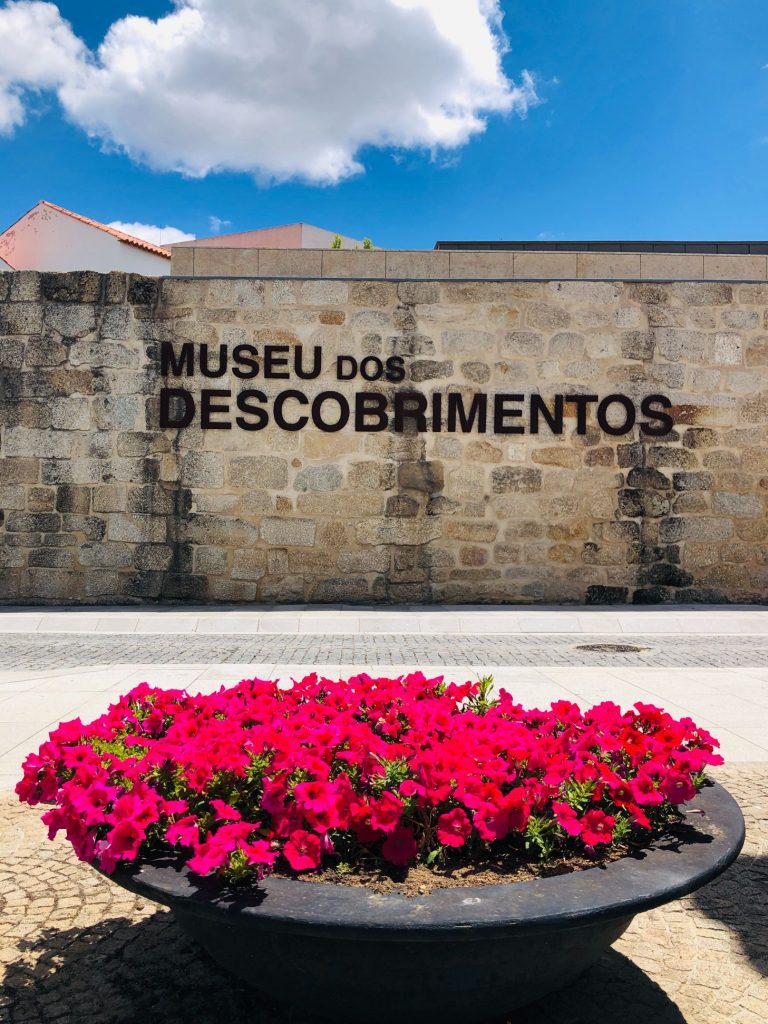


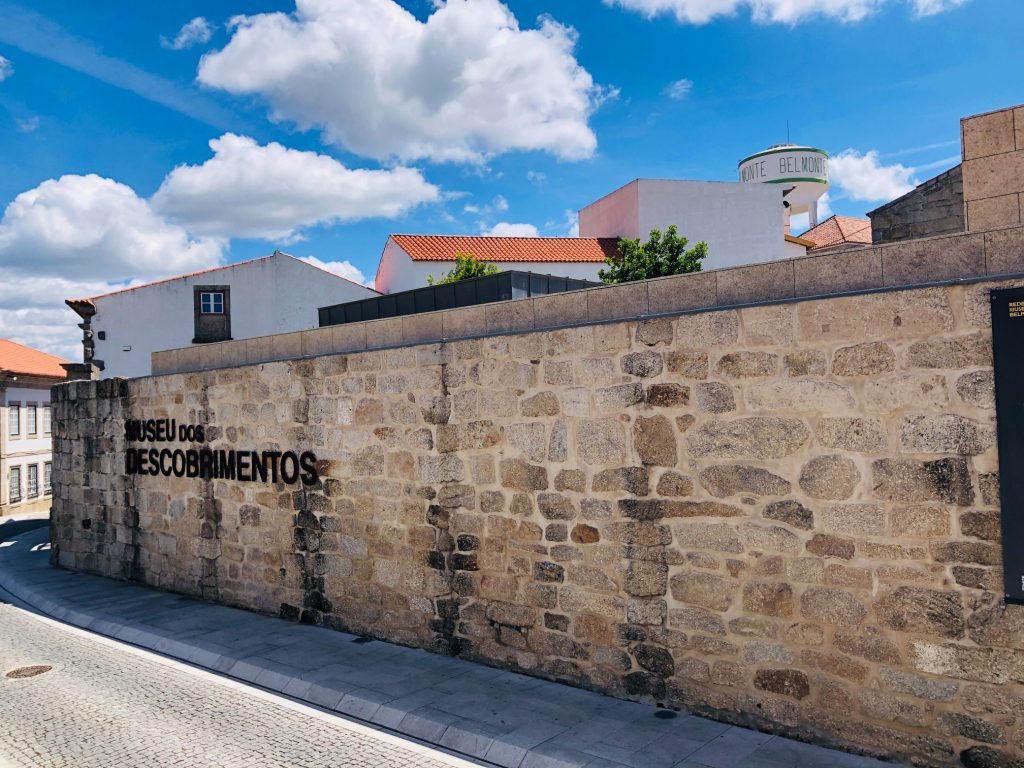


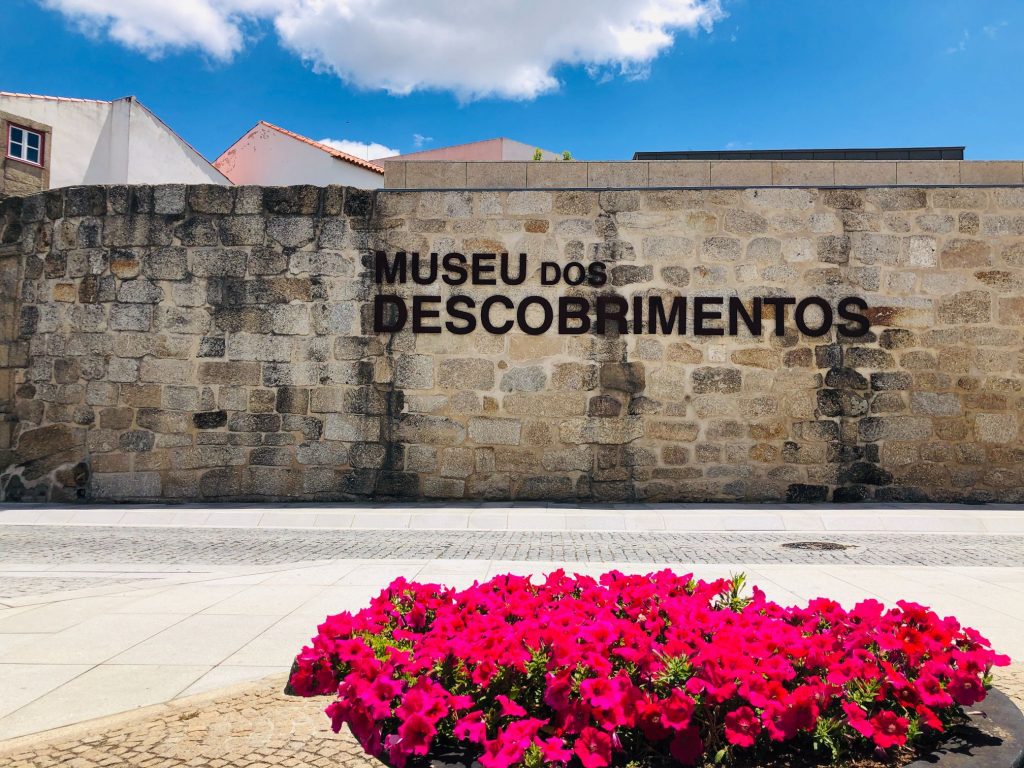


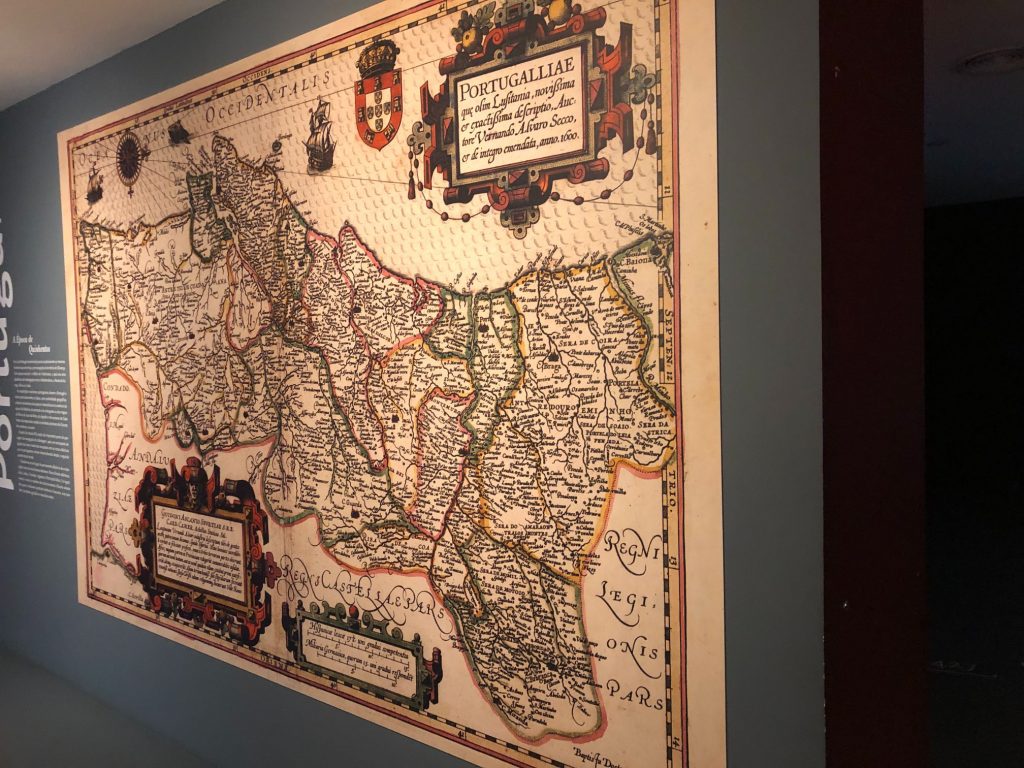


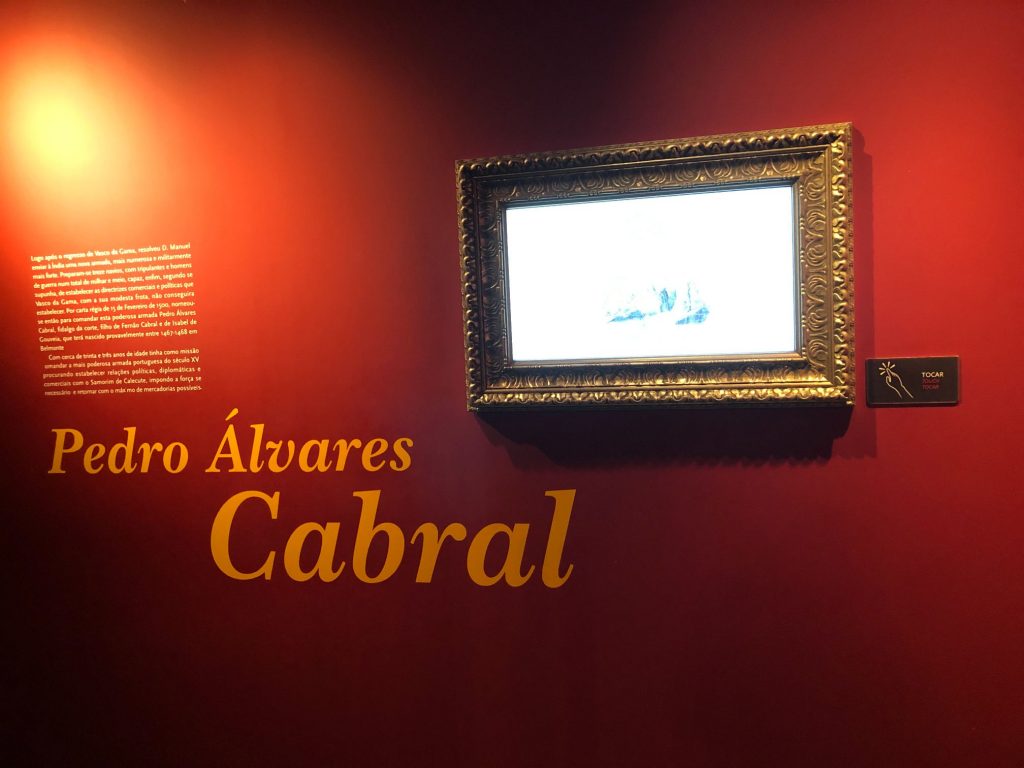


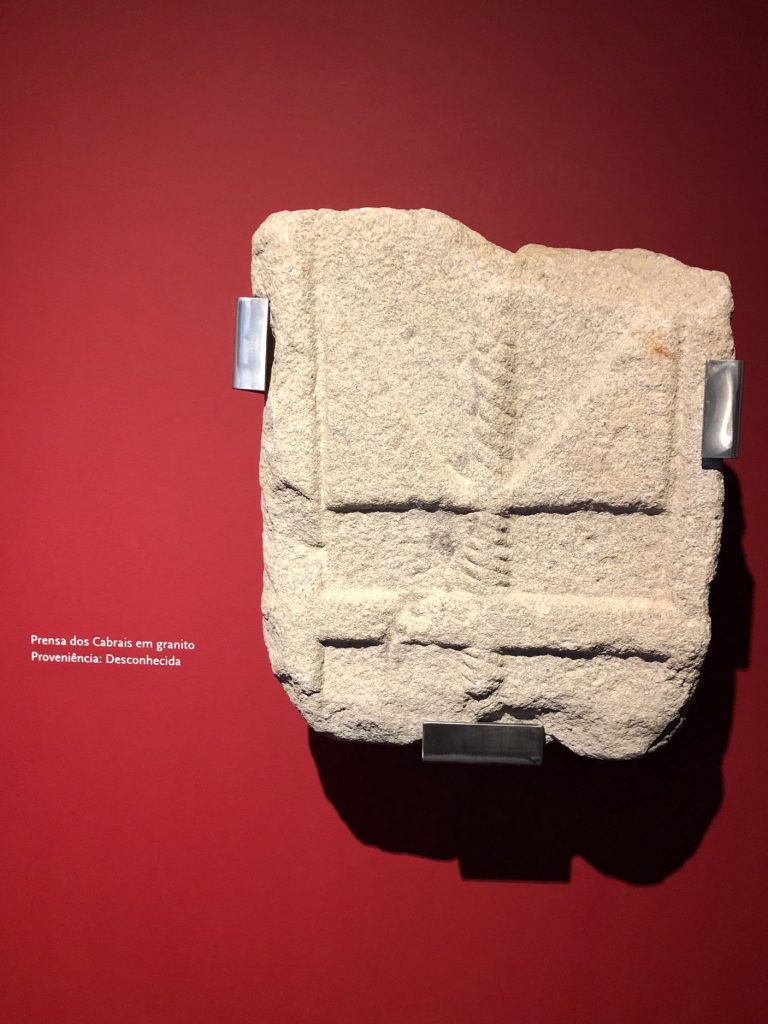


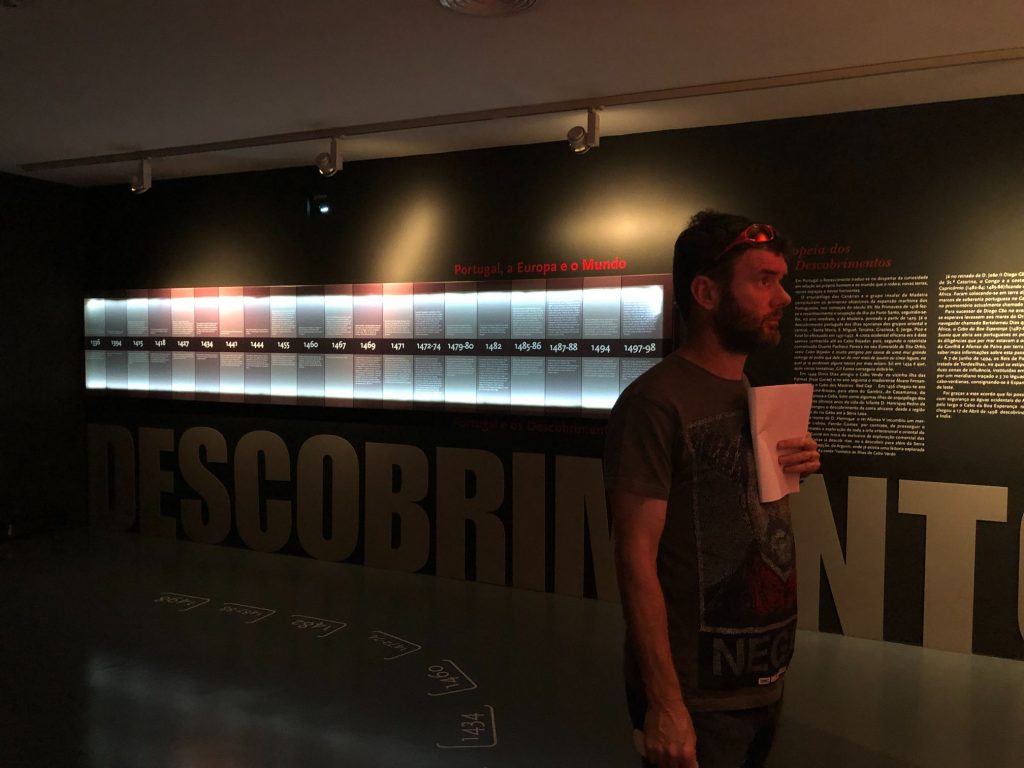


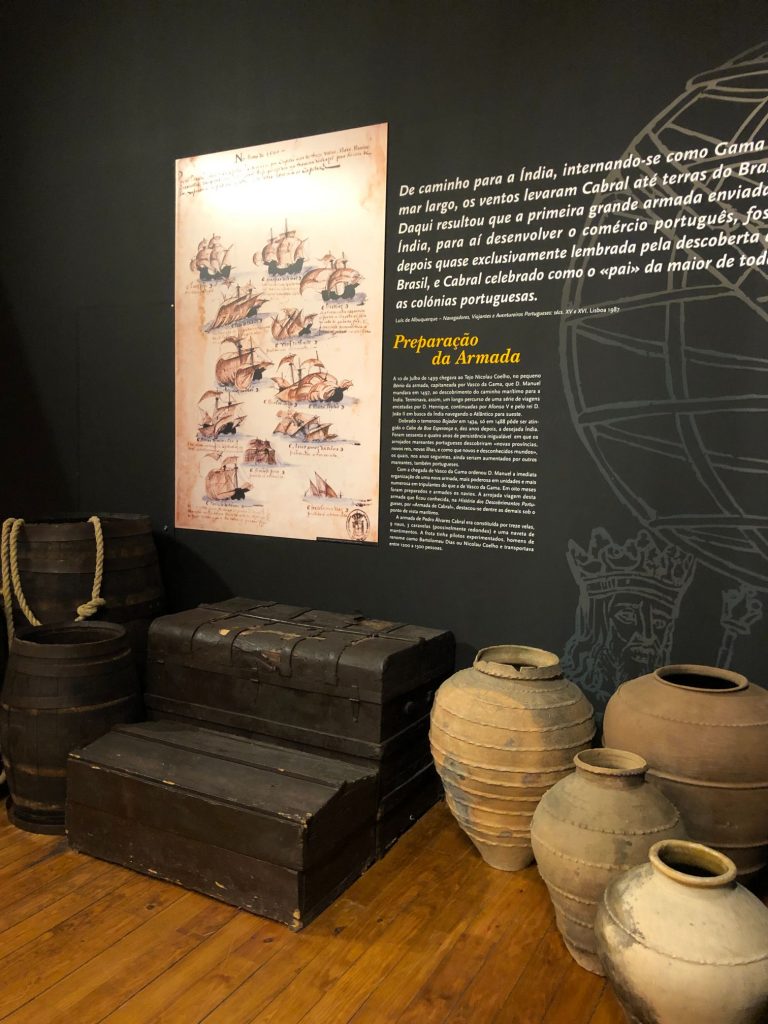


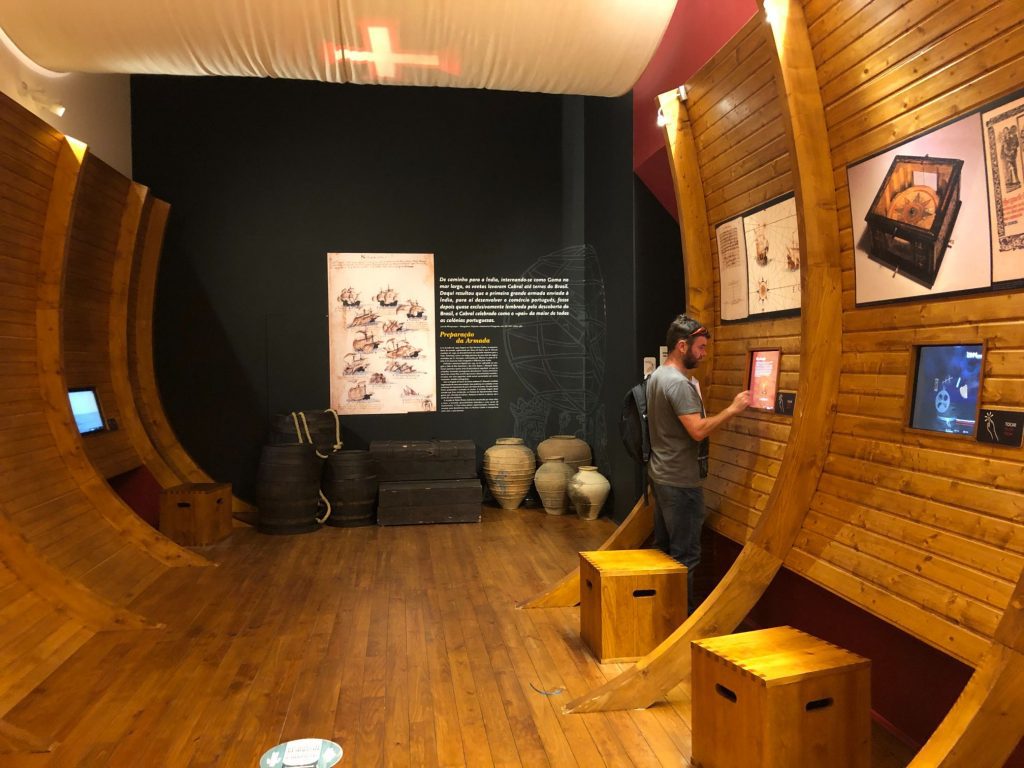


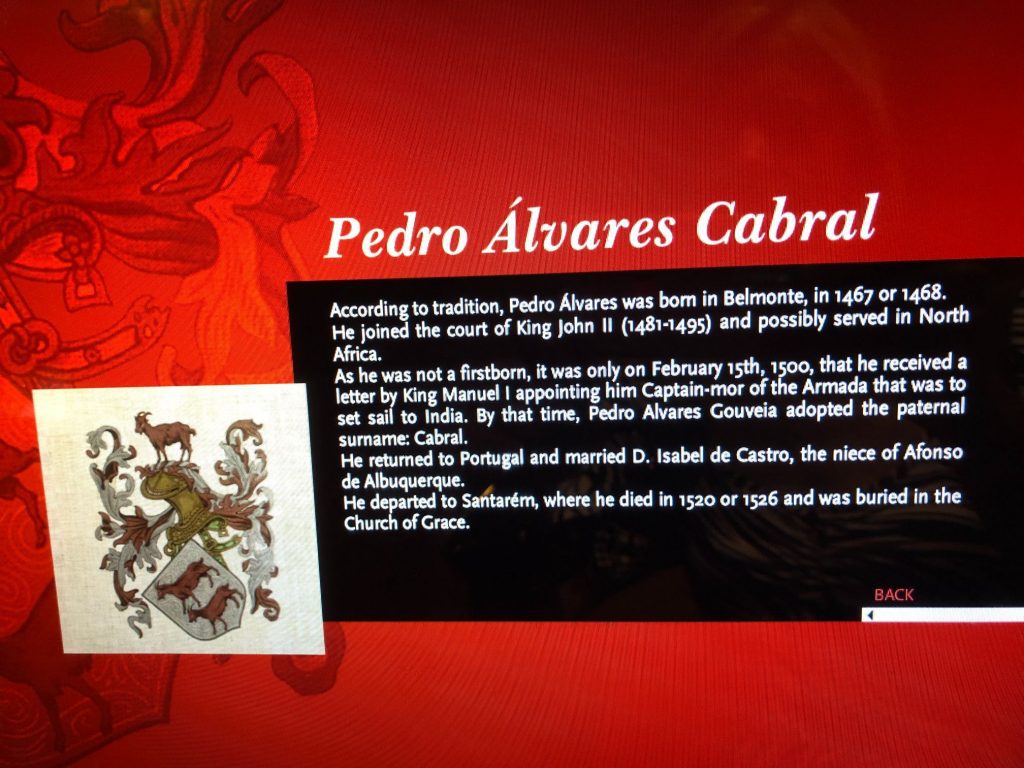


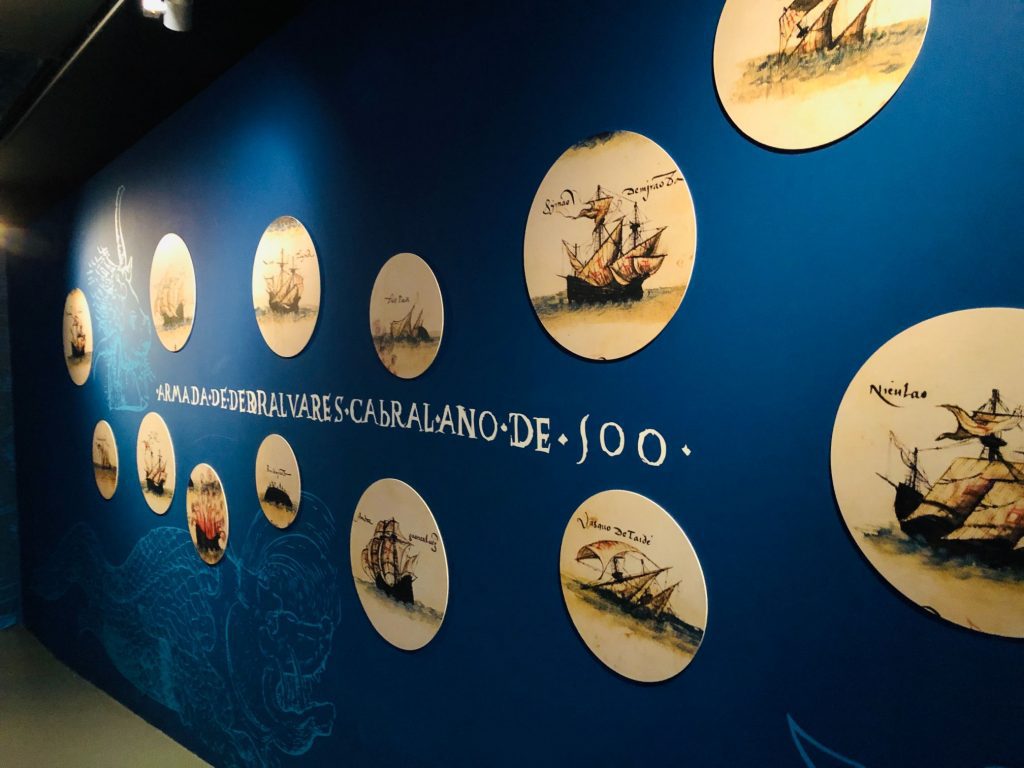


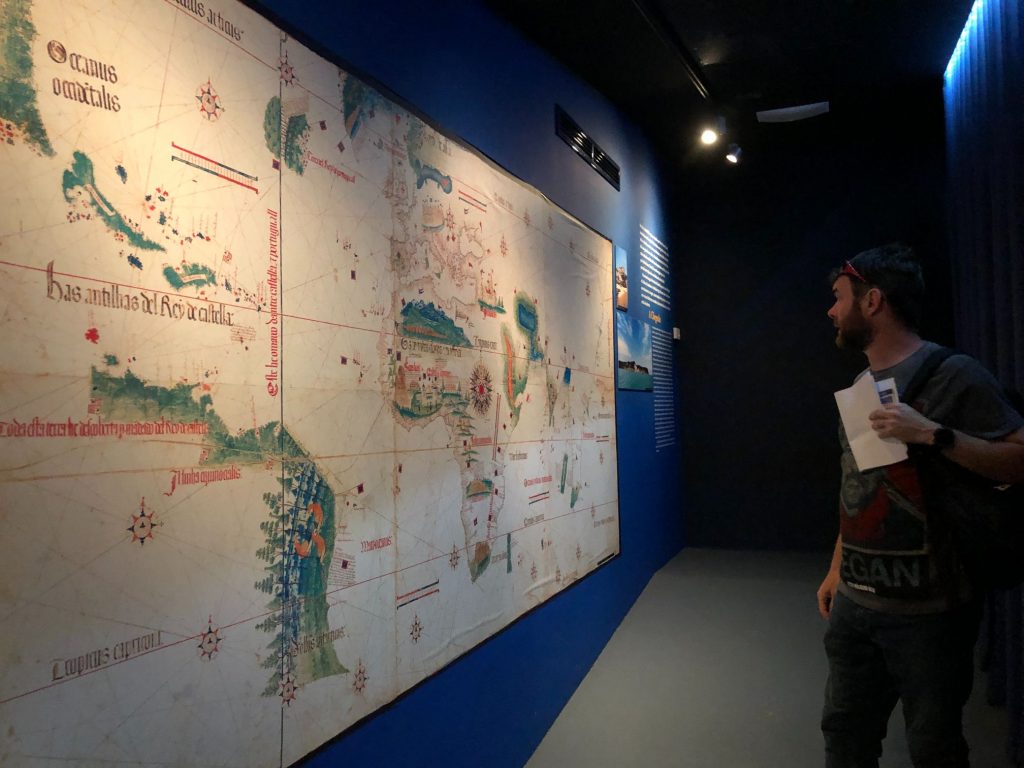


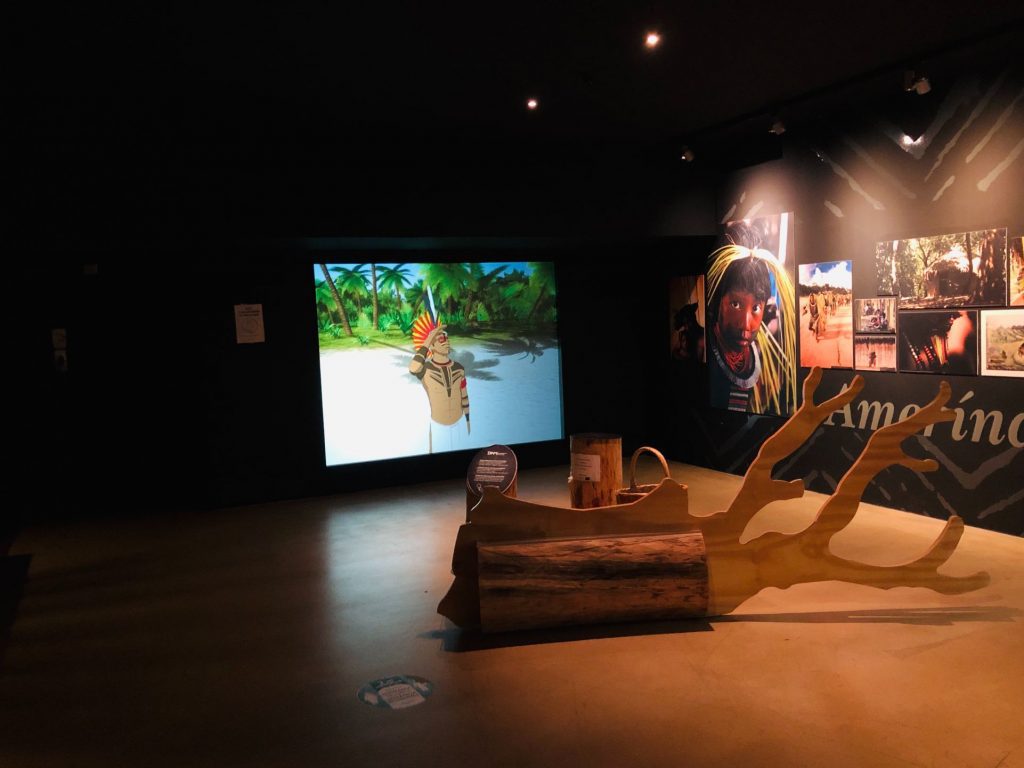


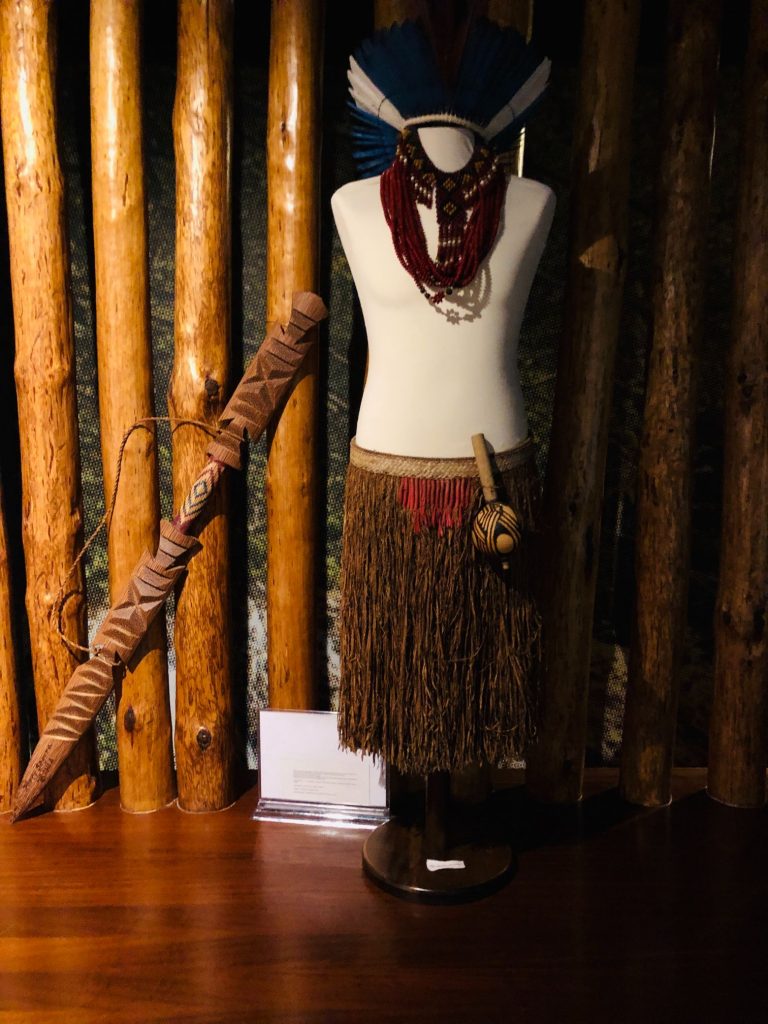


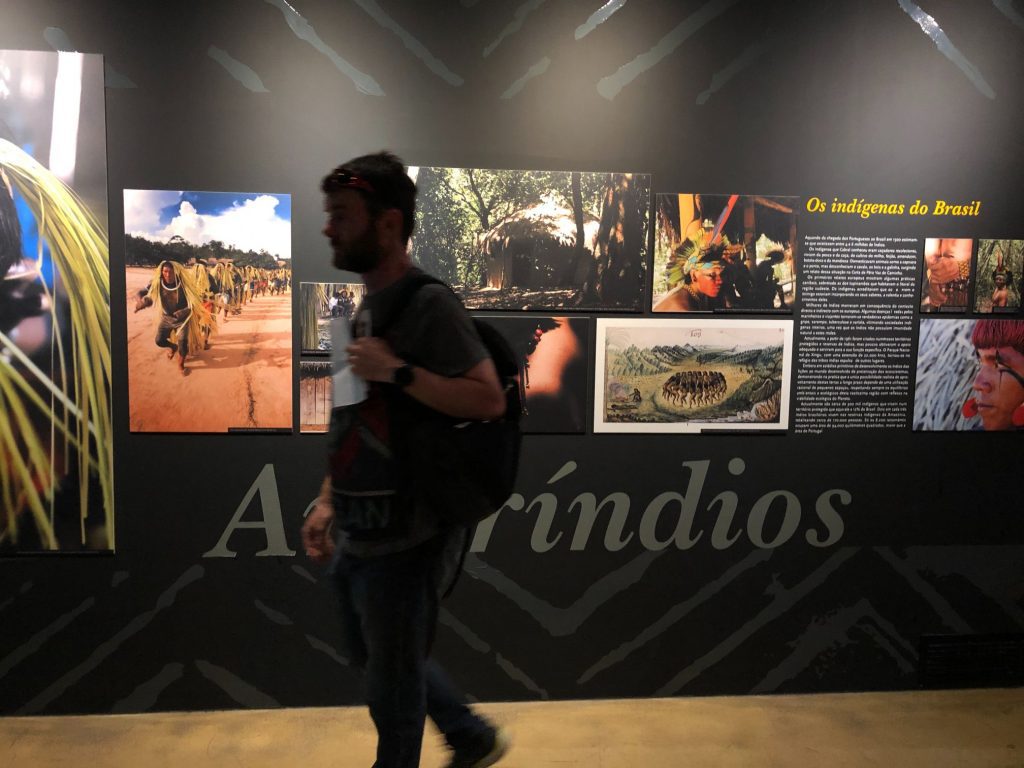


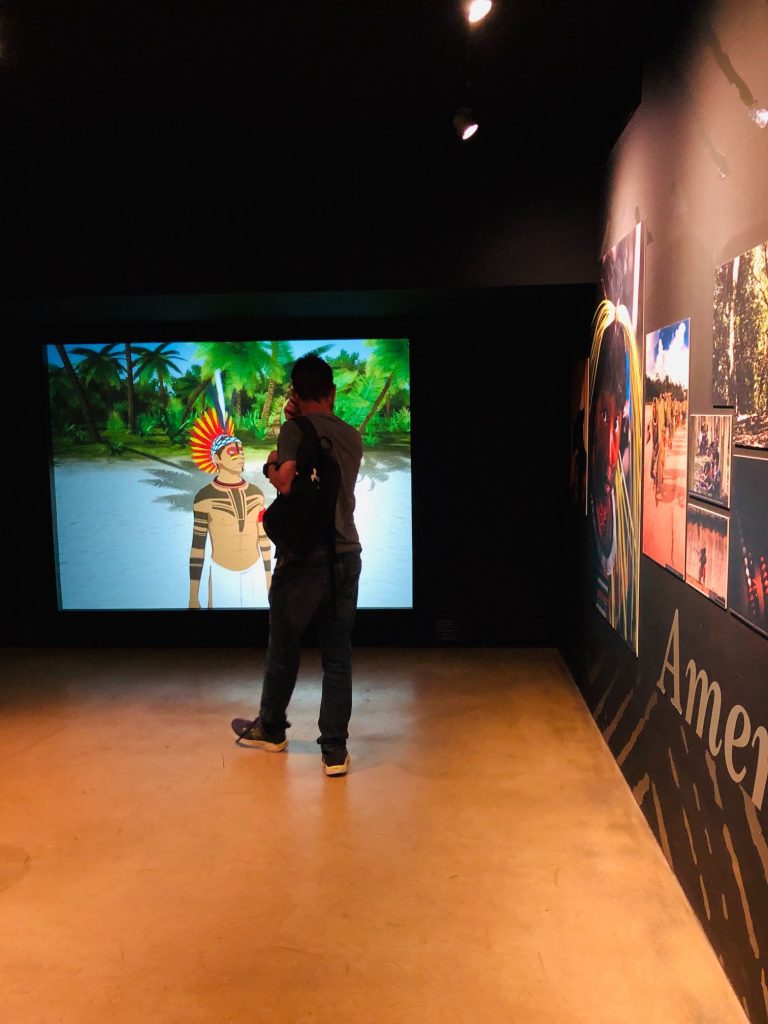


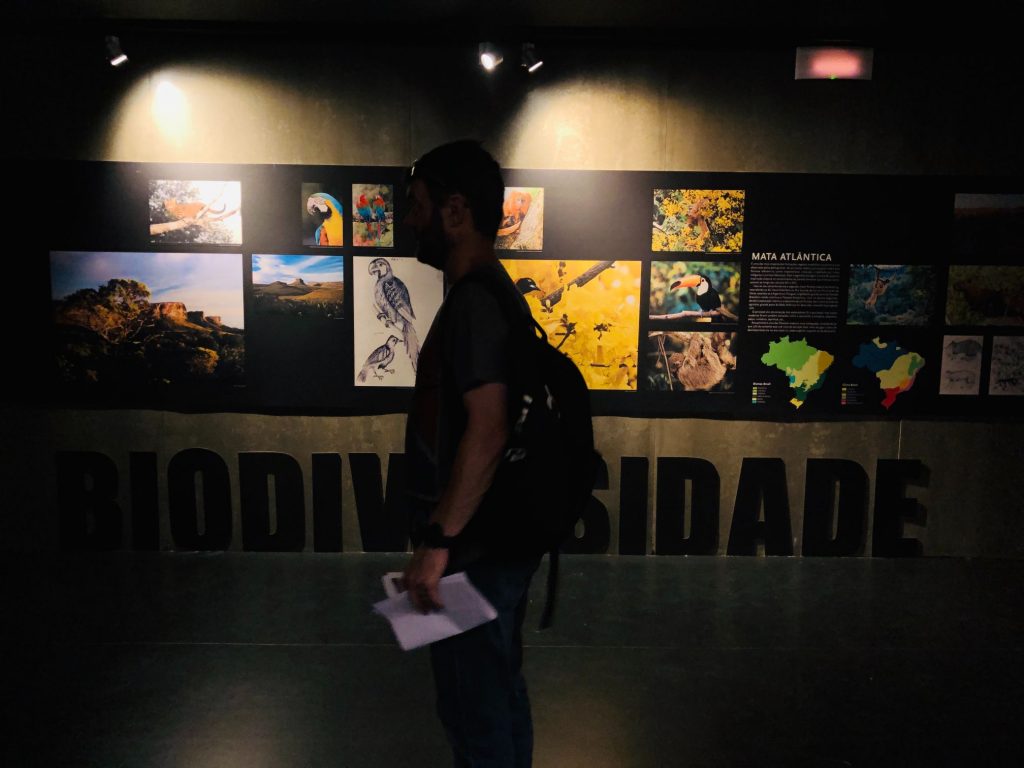


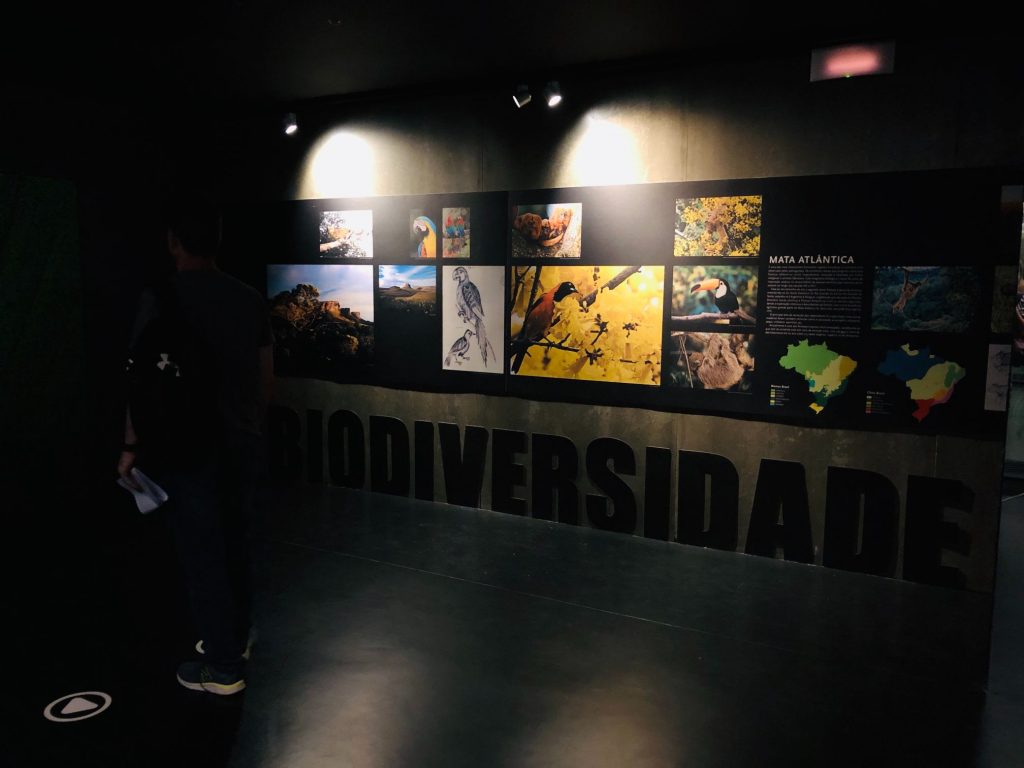


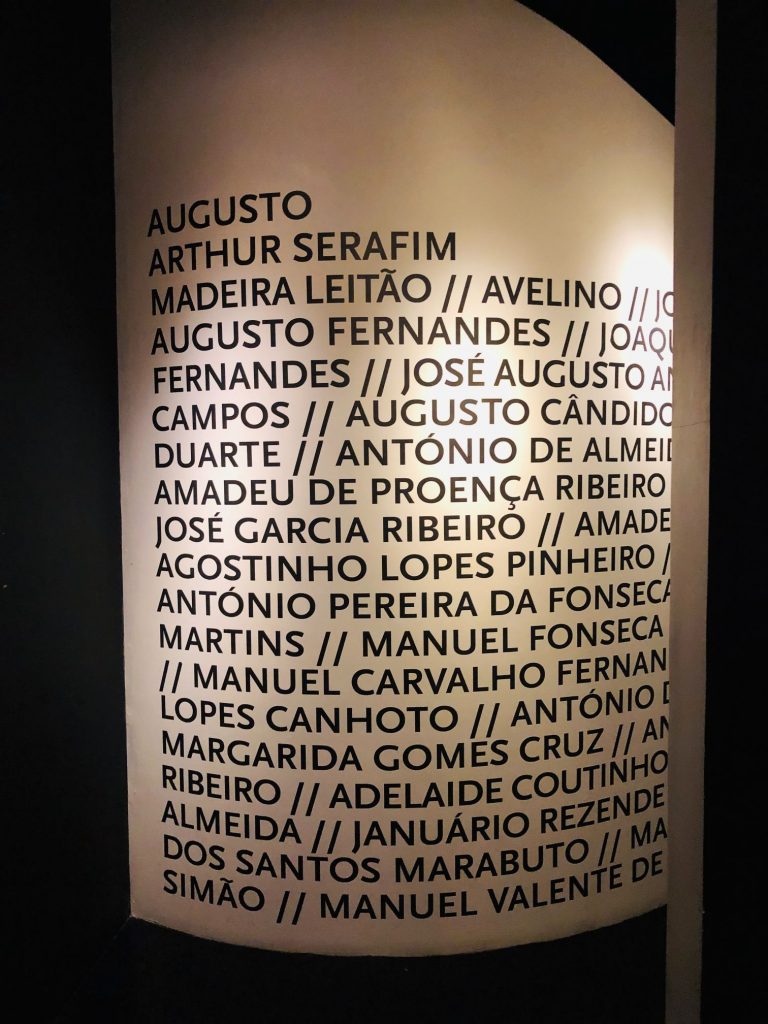


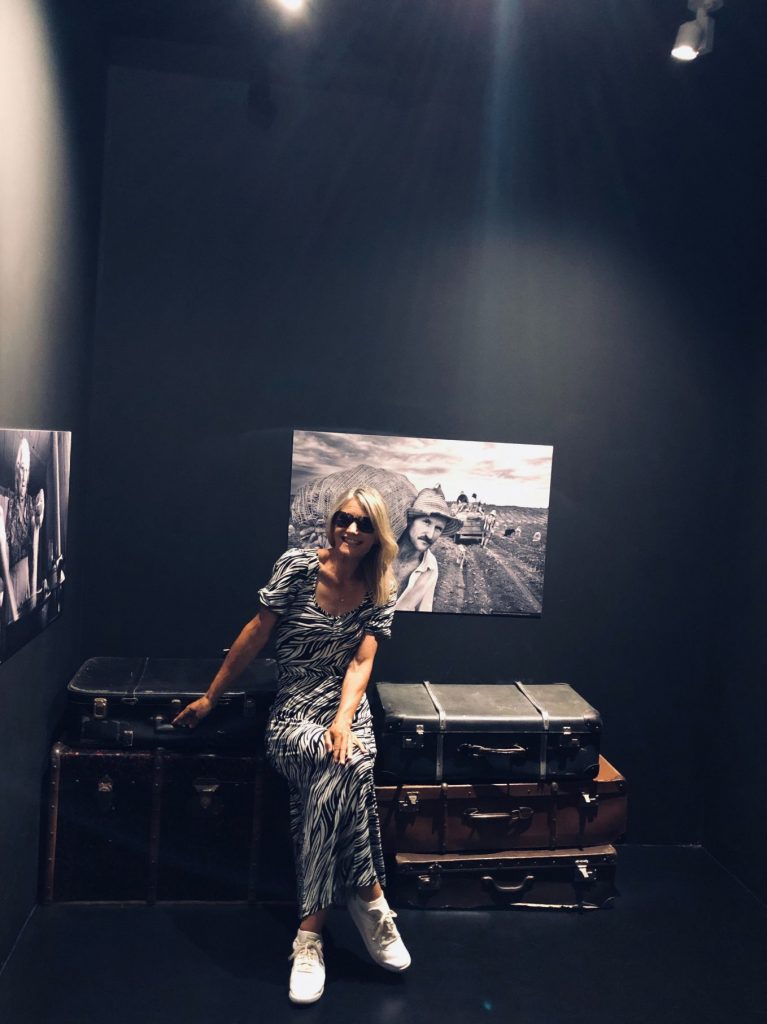


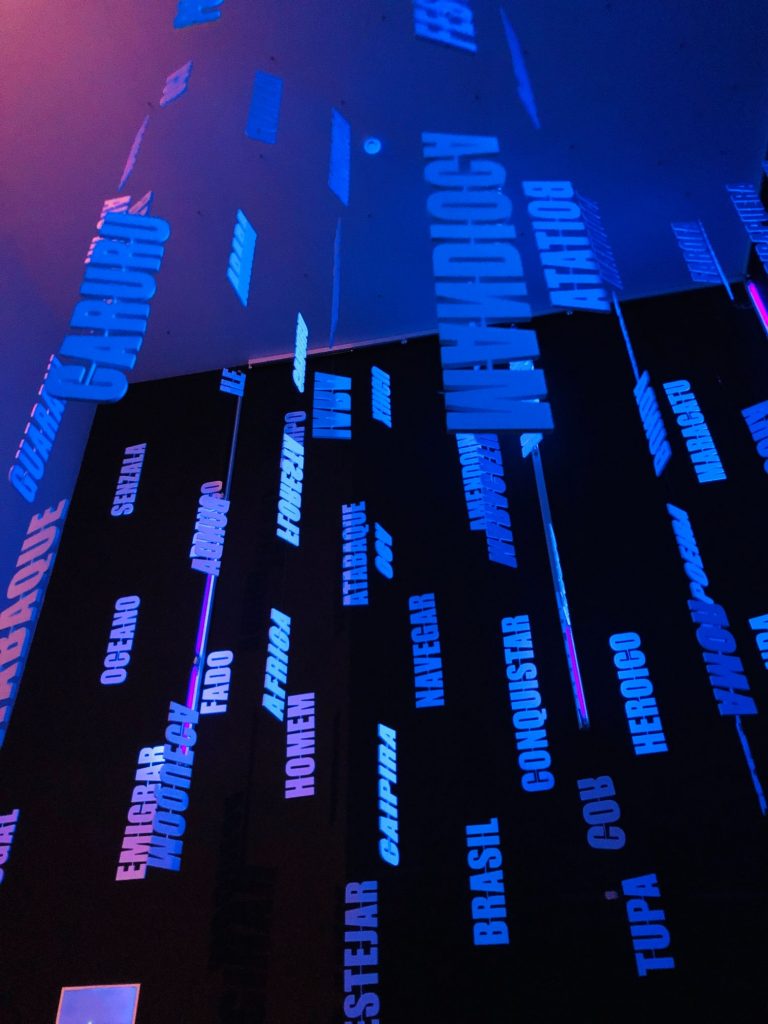


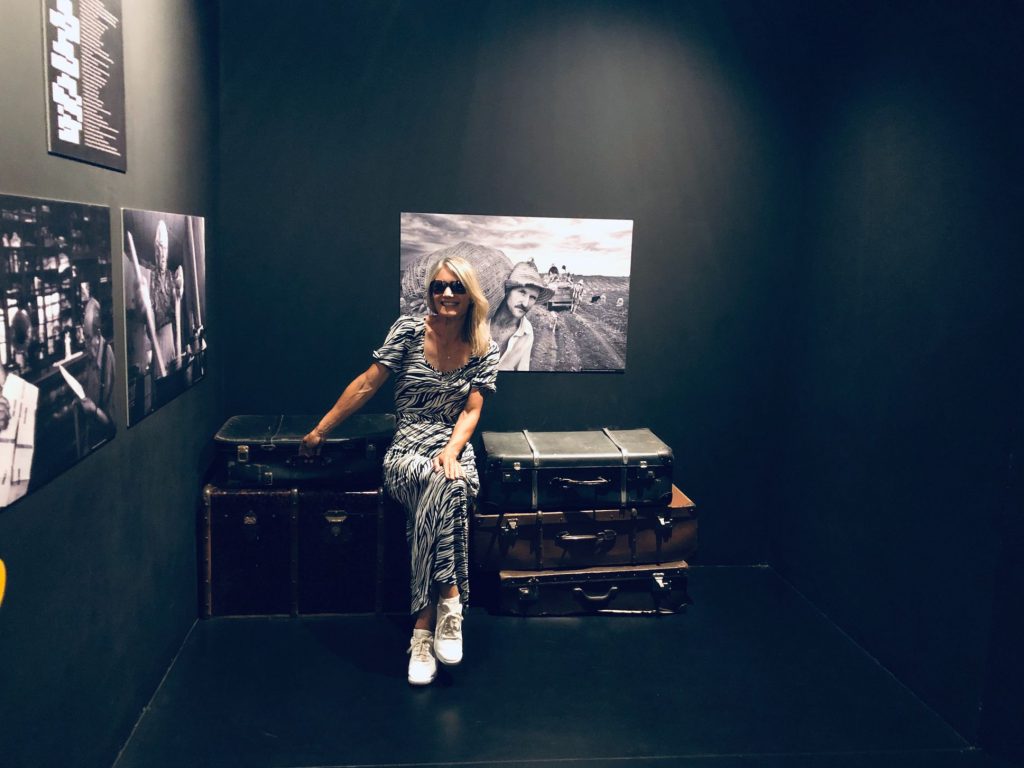


Pack up your troubles in your old kit bag and SMILE SMILE SMILE 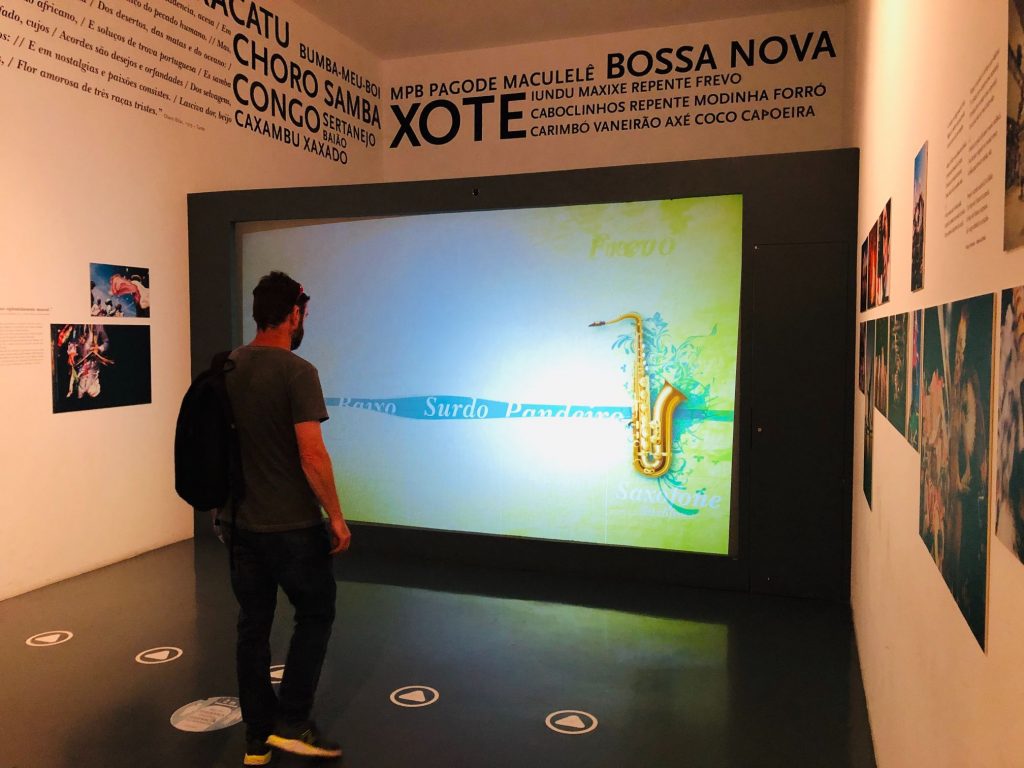


Hubby loved the interactive screens, once a NERD always a NERD (ha ha) 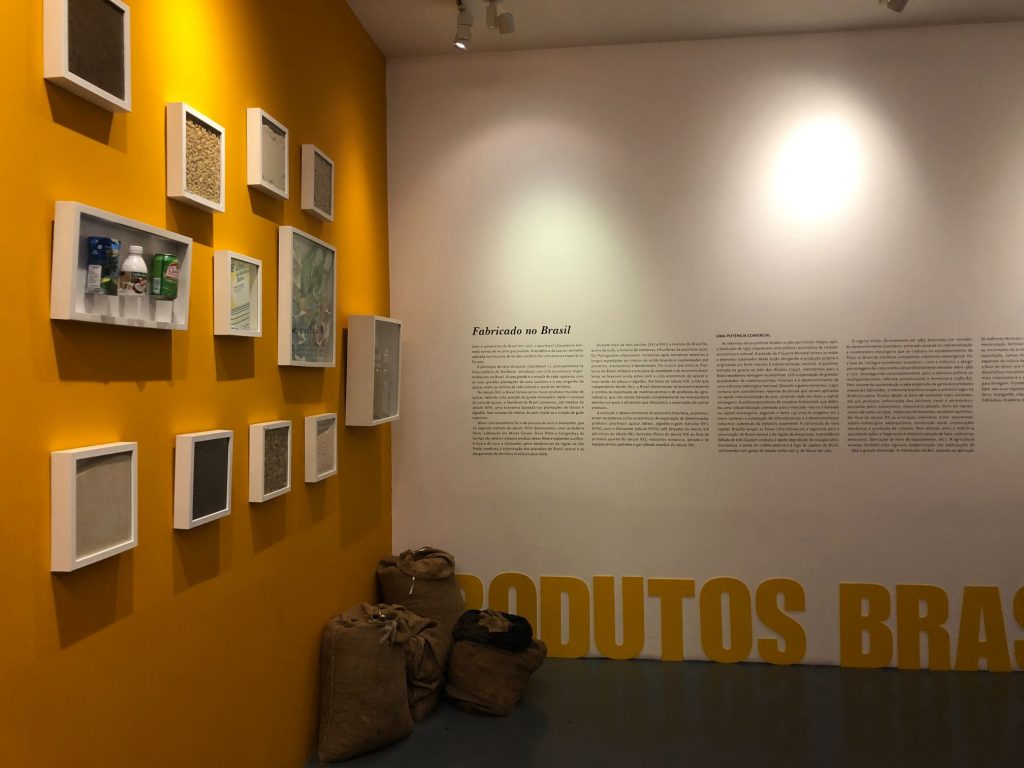


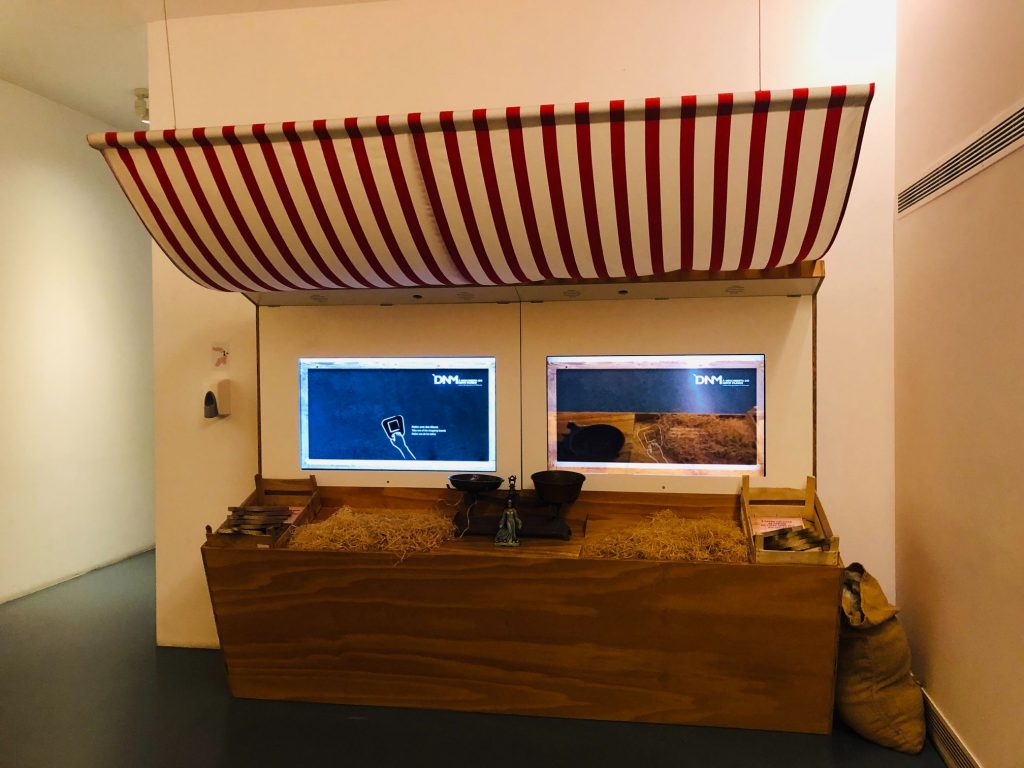


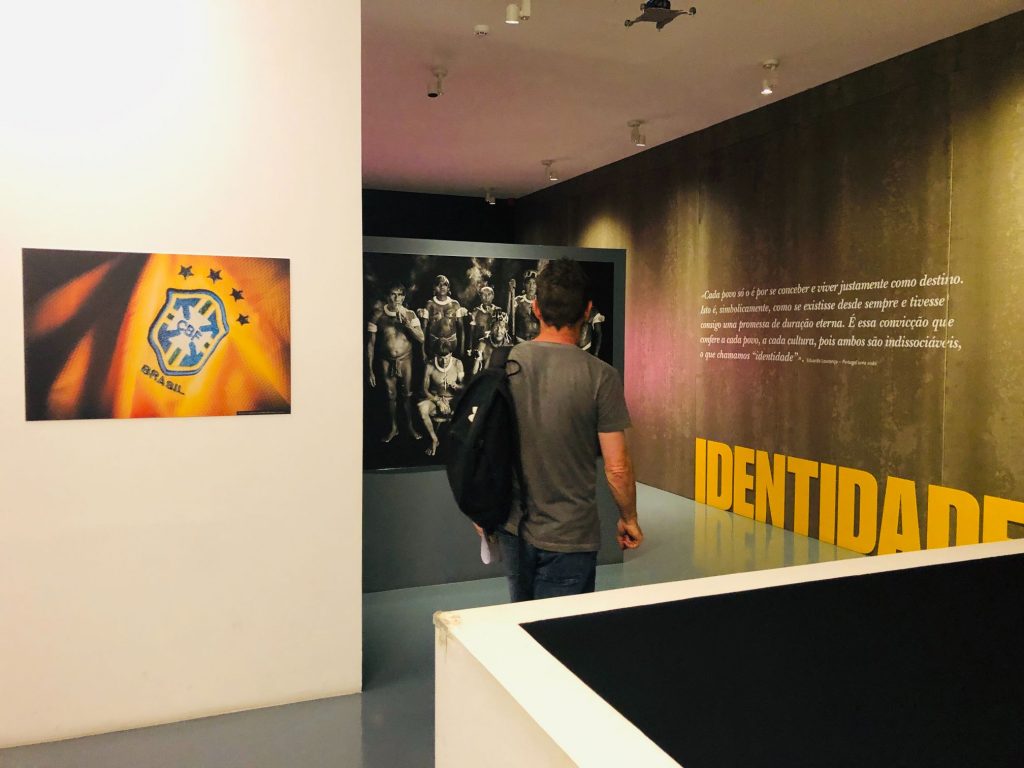


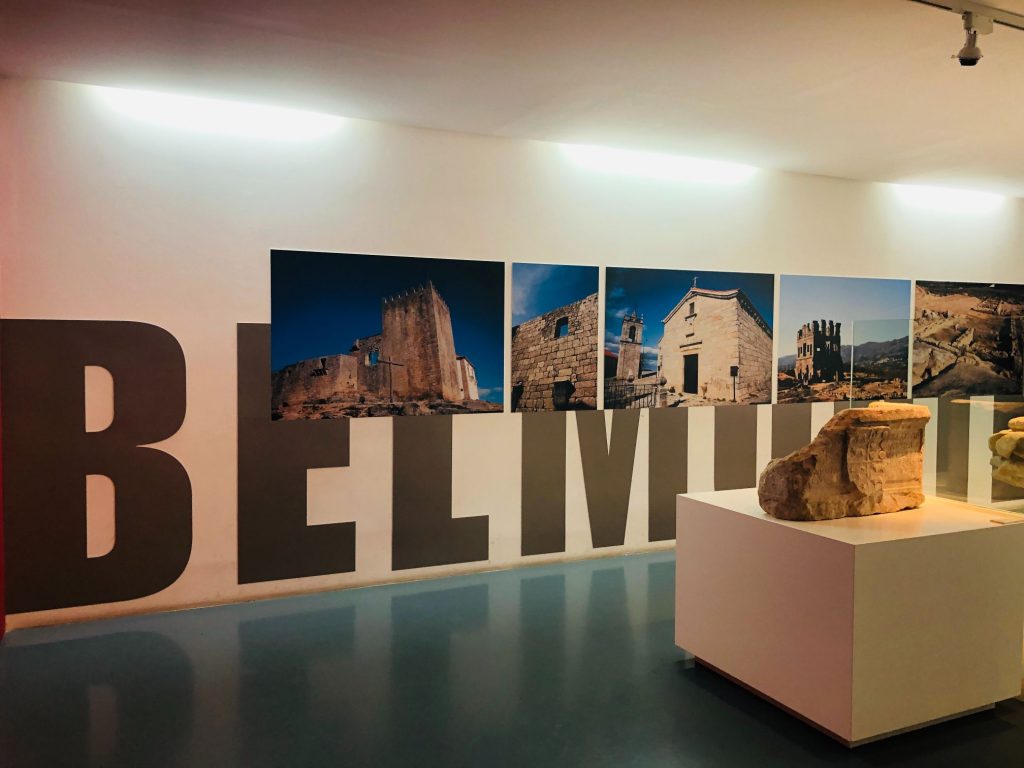


Fun, Shackles & Handcuffs
I’m starting a band! The band name is “The Mardy Menopausal Maniacs”, I just need to audition a few more band members. I think hubby wanted to leave me shackled in the handcuffs to have a mini break from me (ha ha).
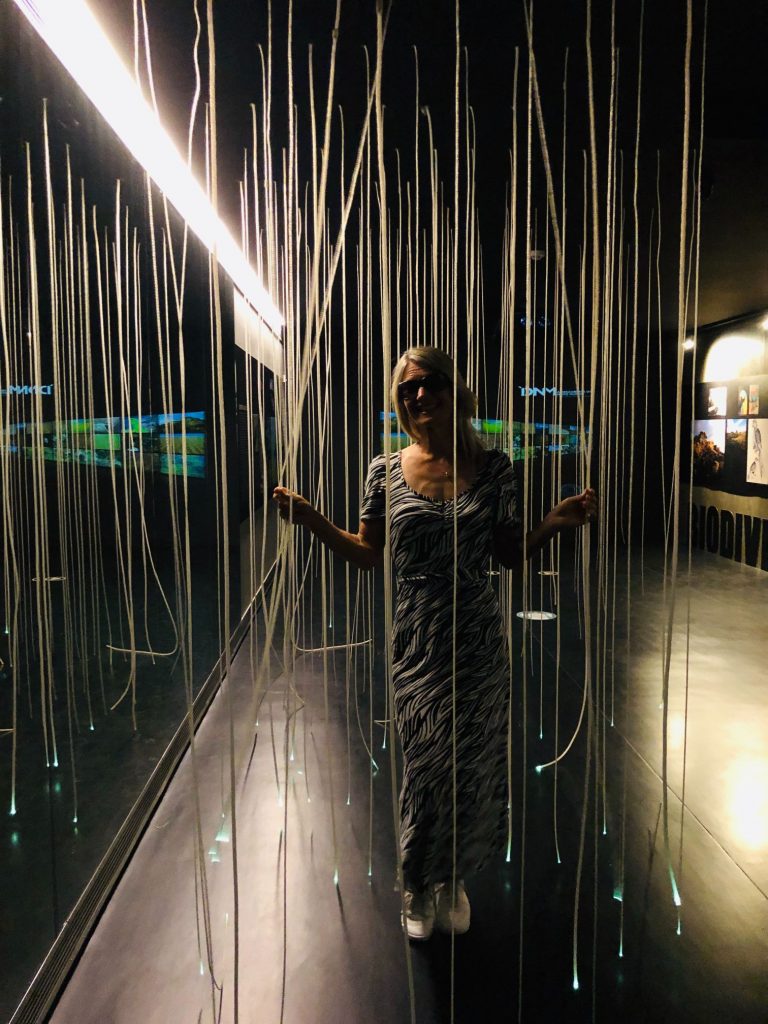


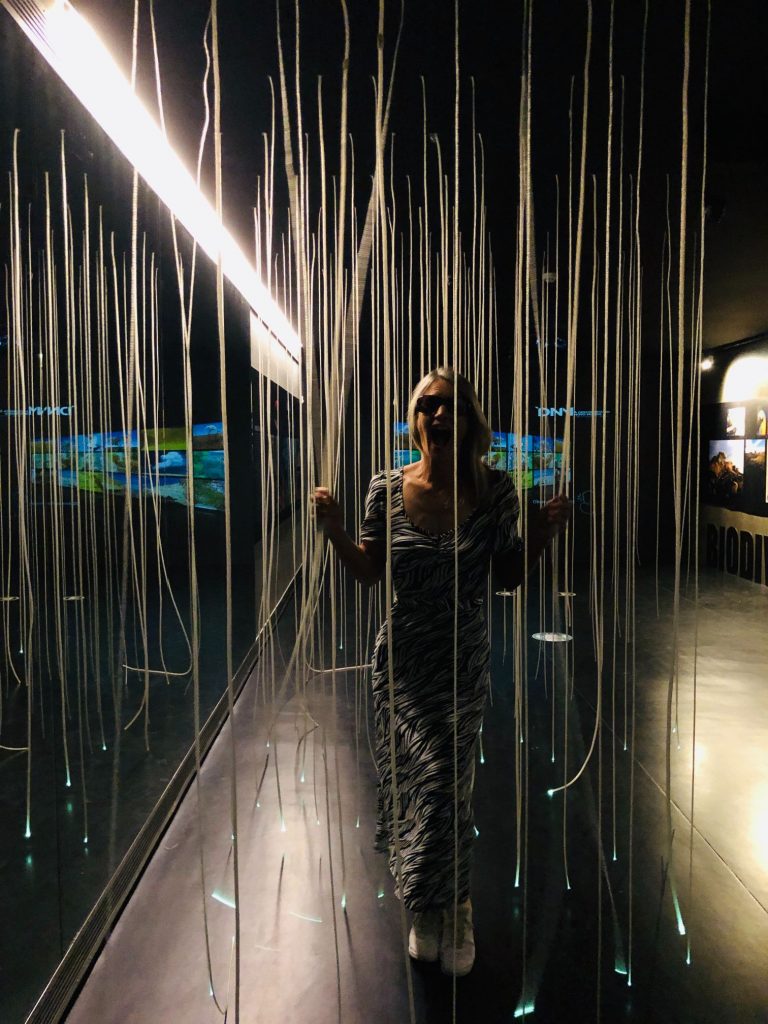


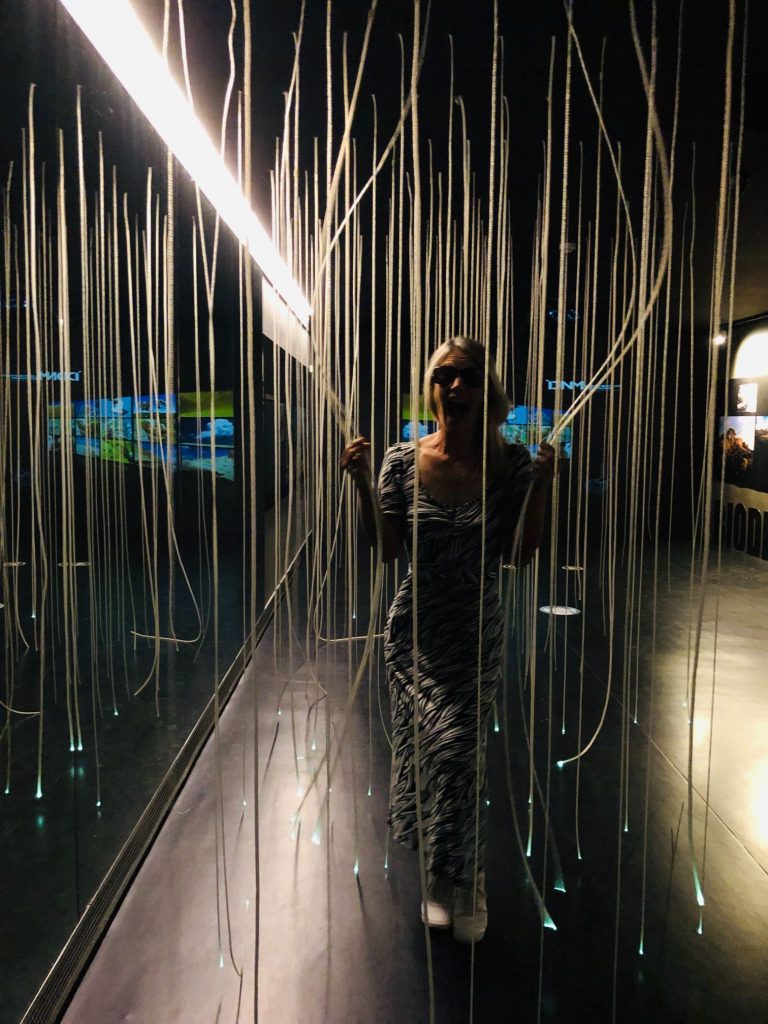


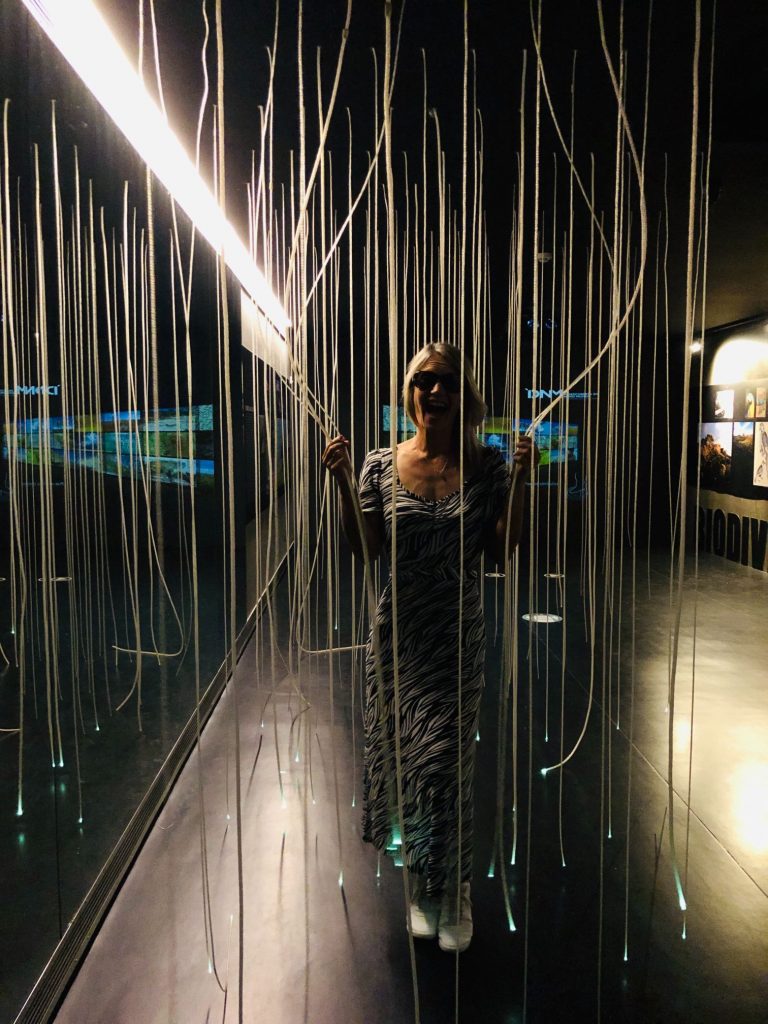


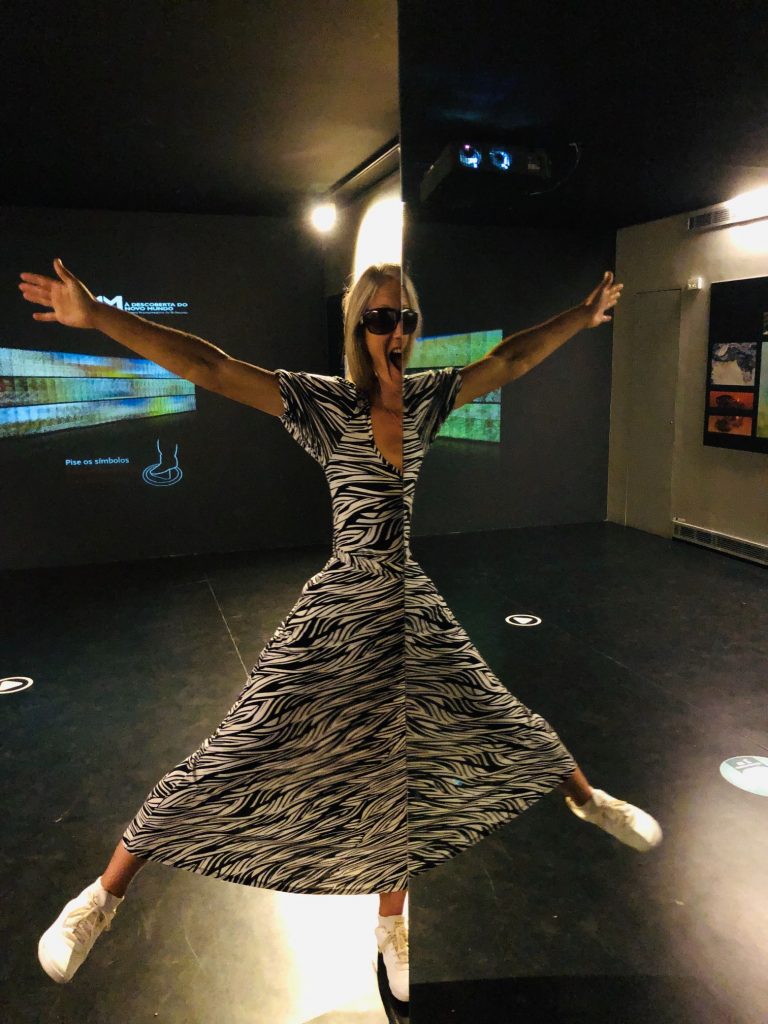


Hubby made me do this 6 times and this is the best he got (ha ha) 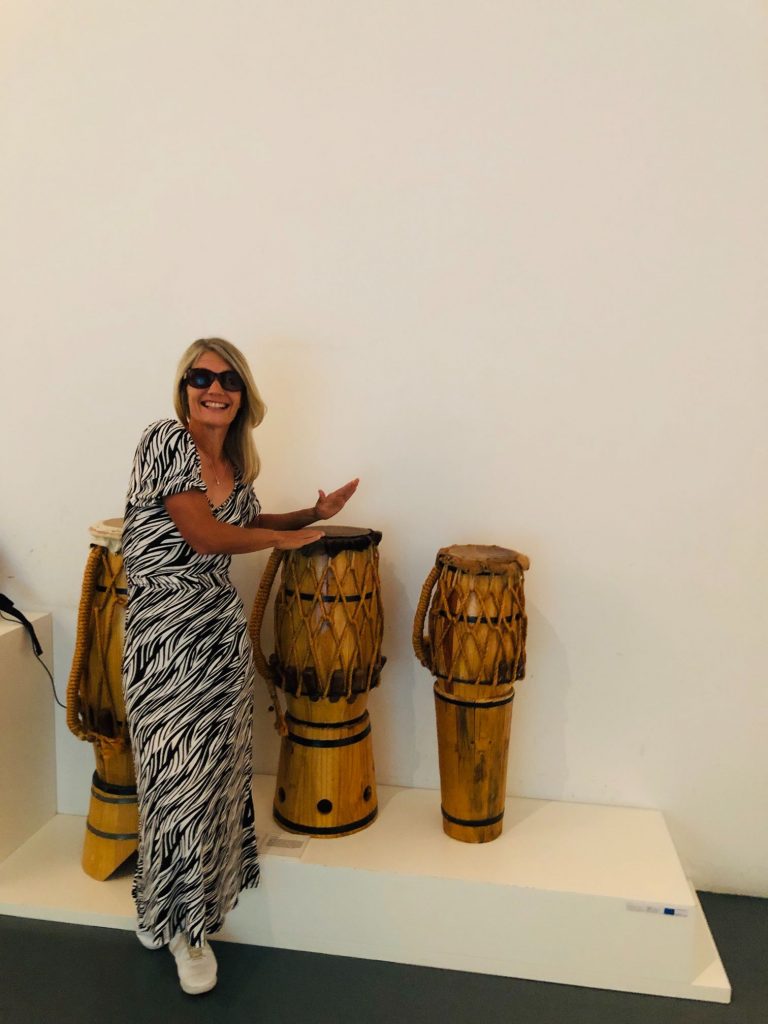


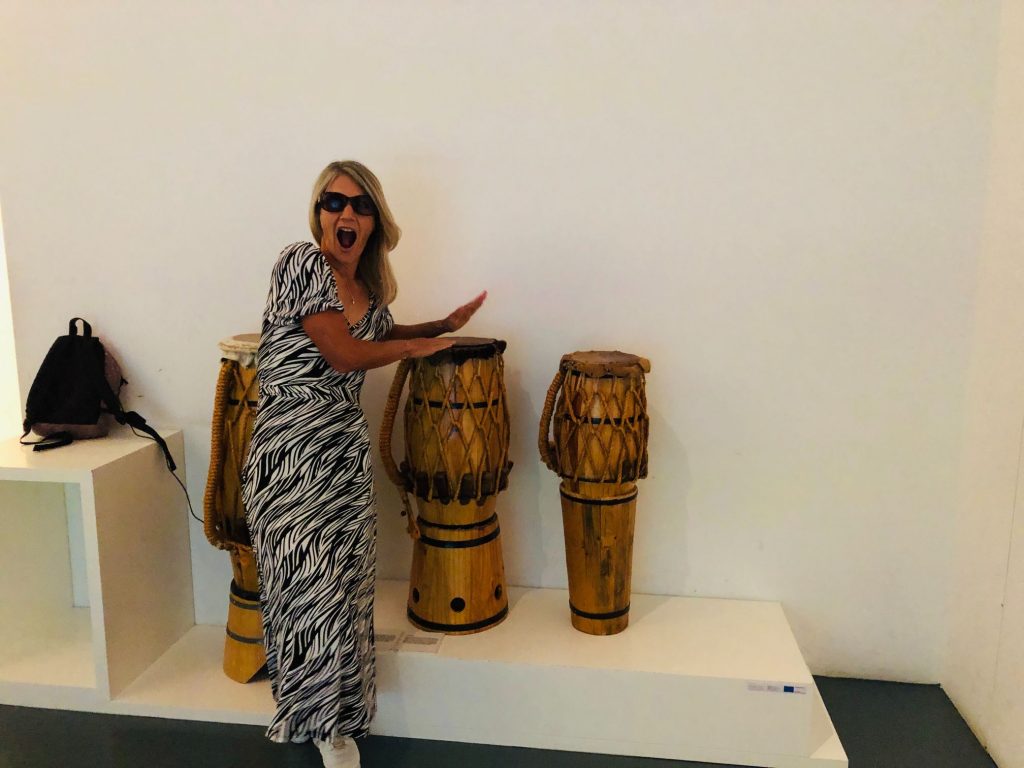


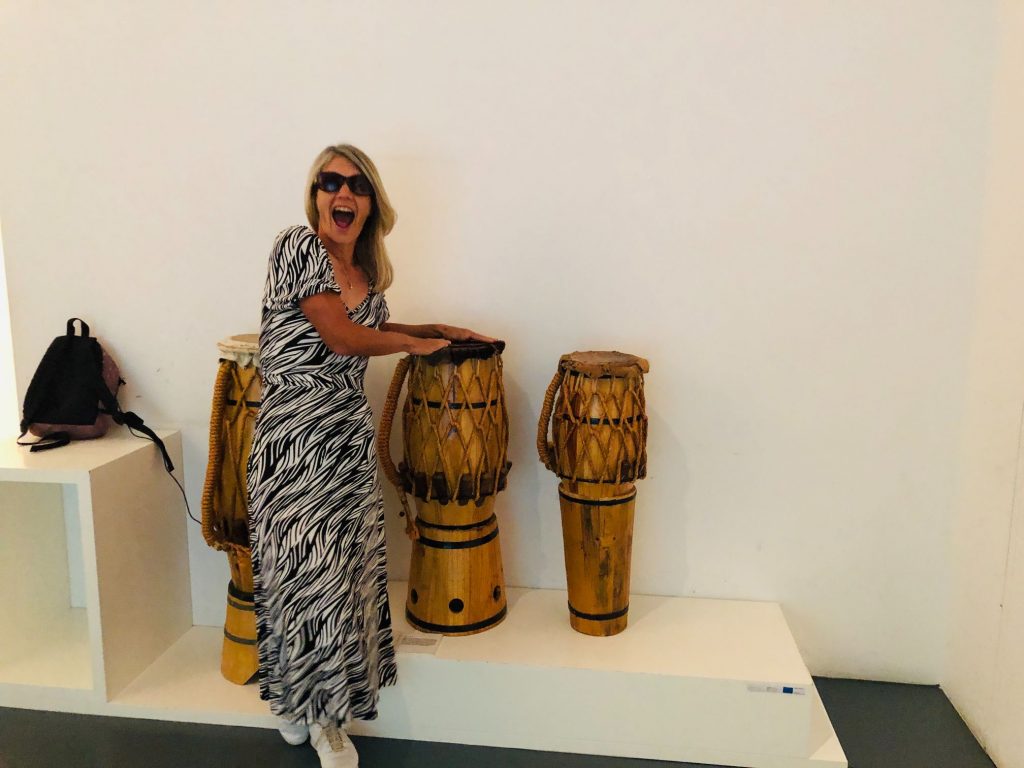


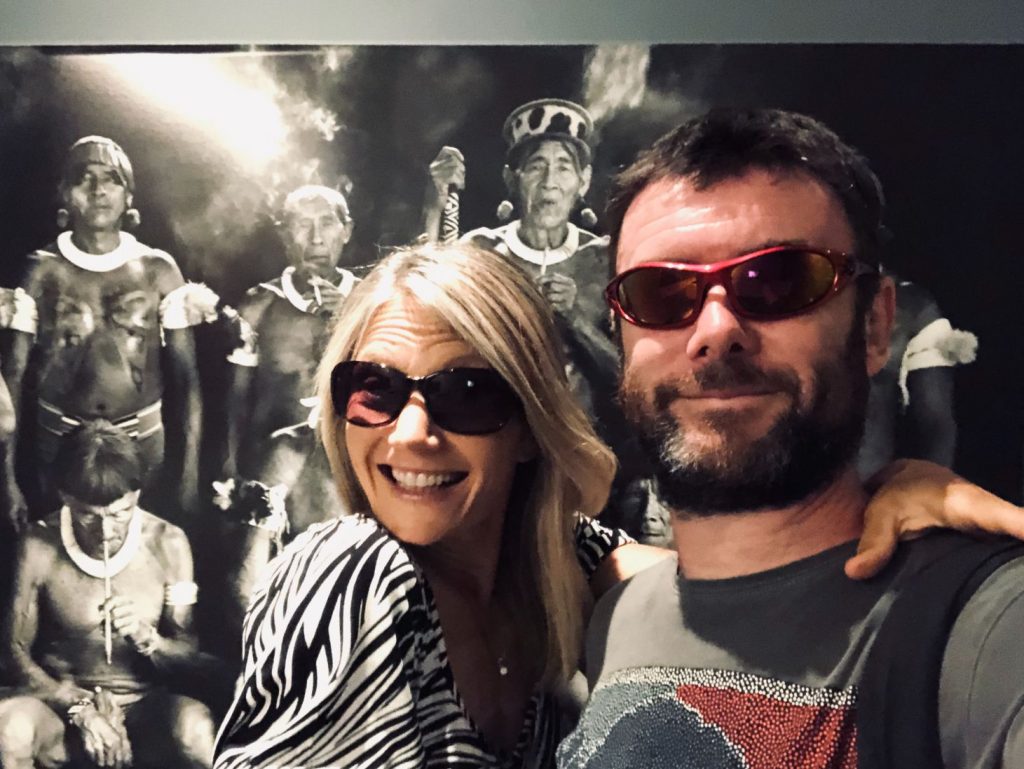


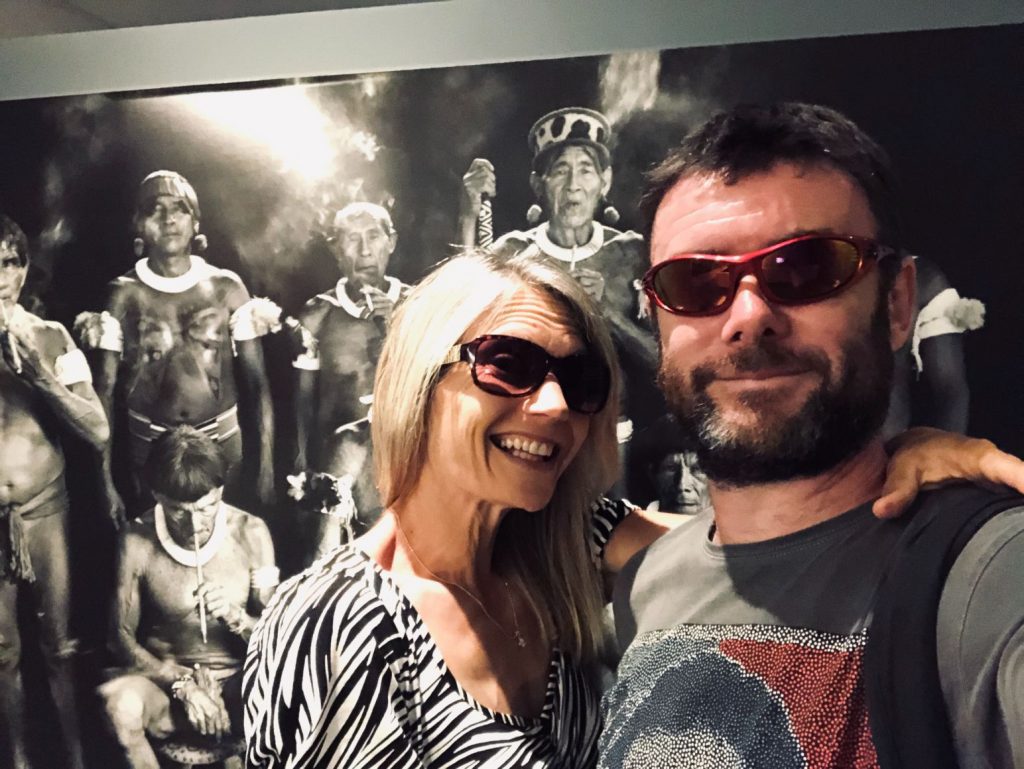


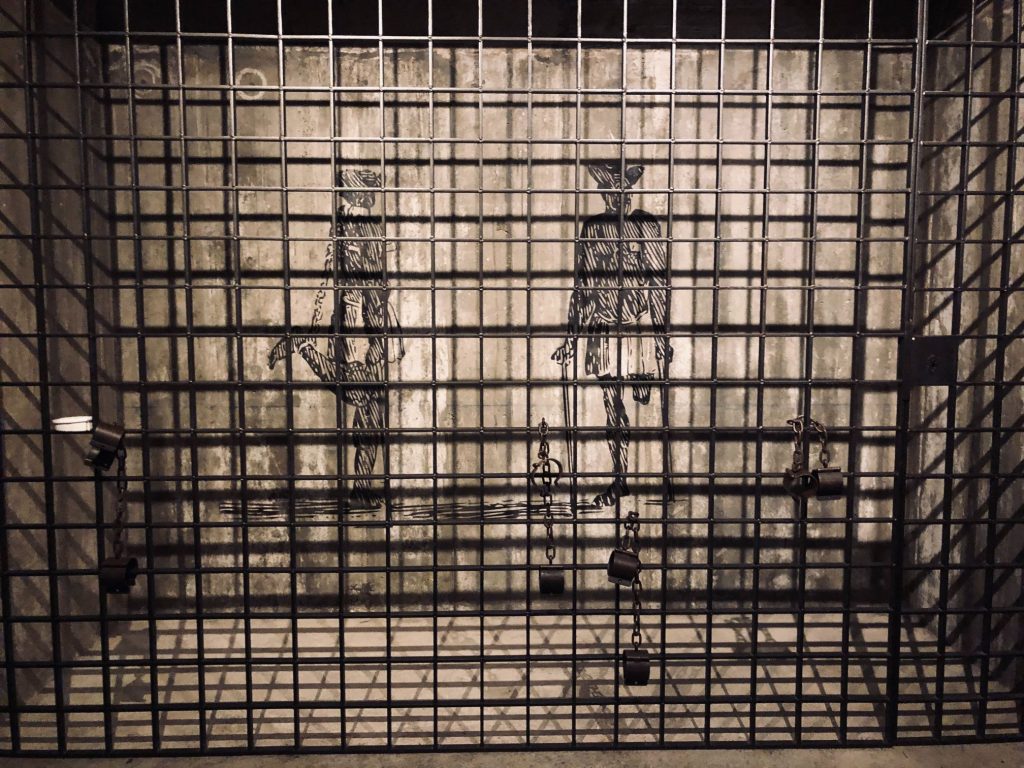


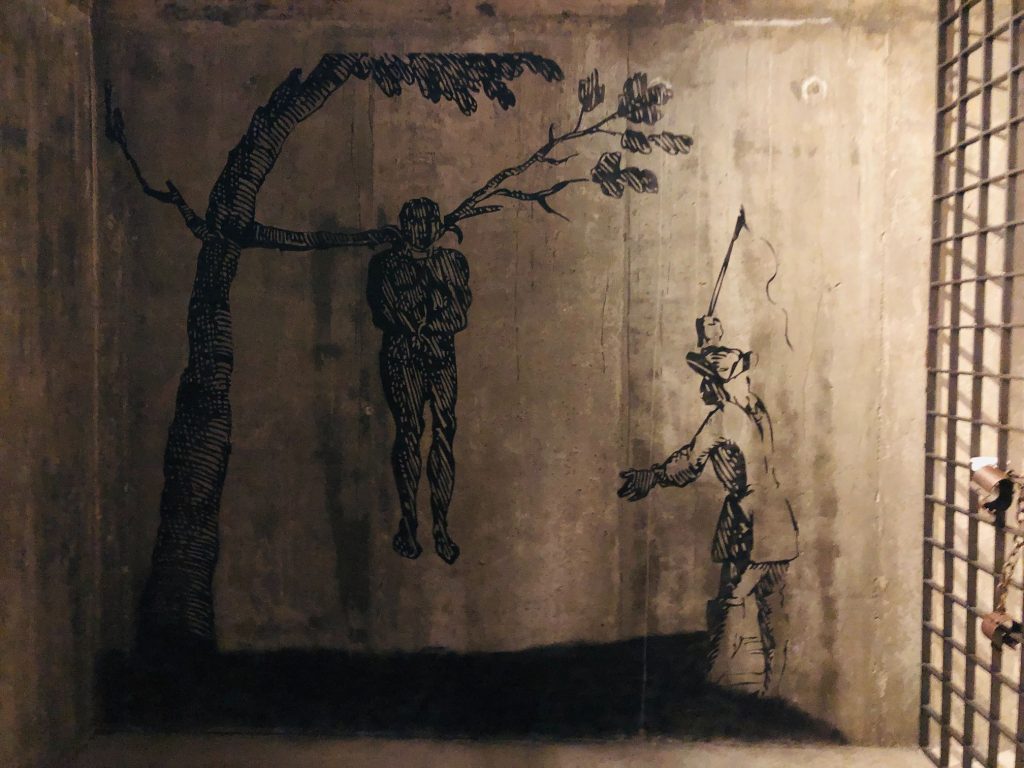


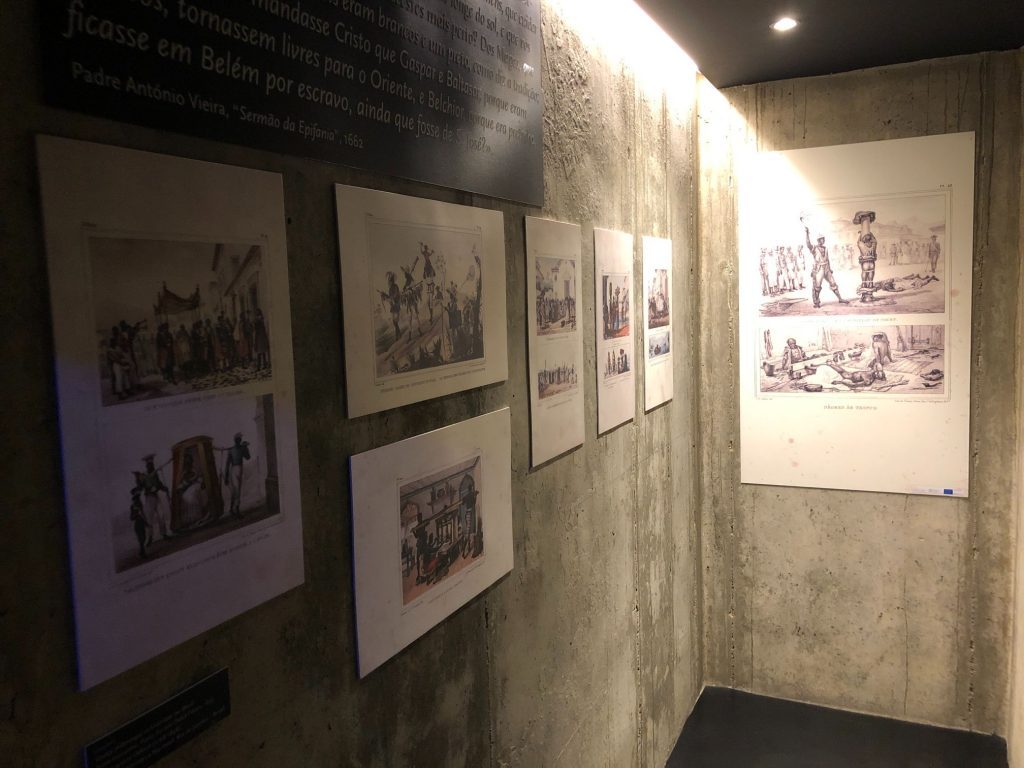


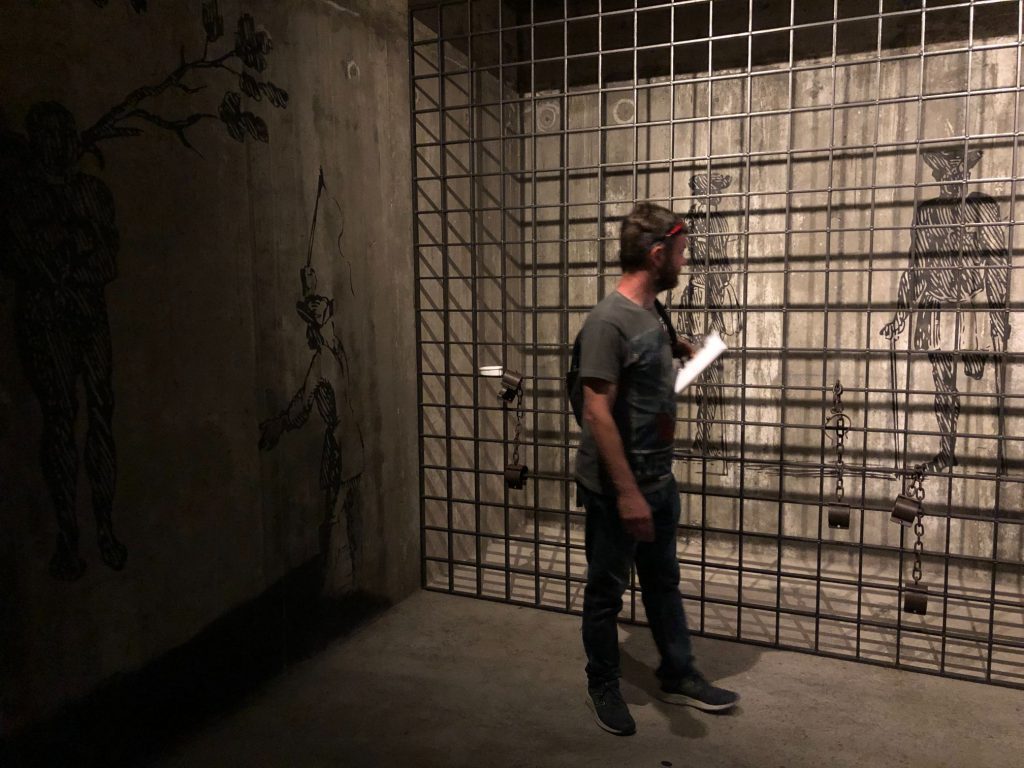


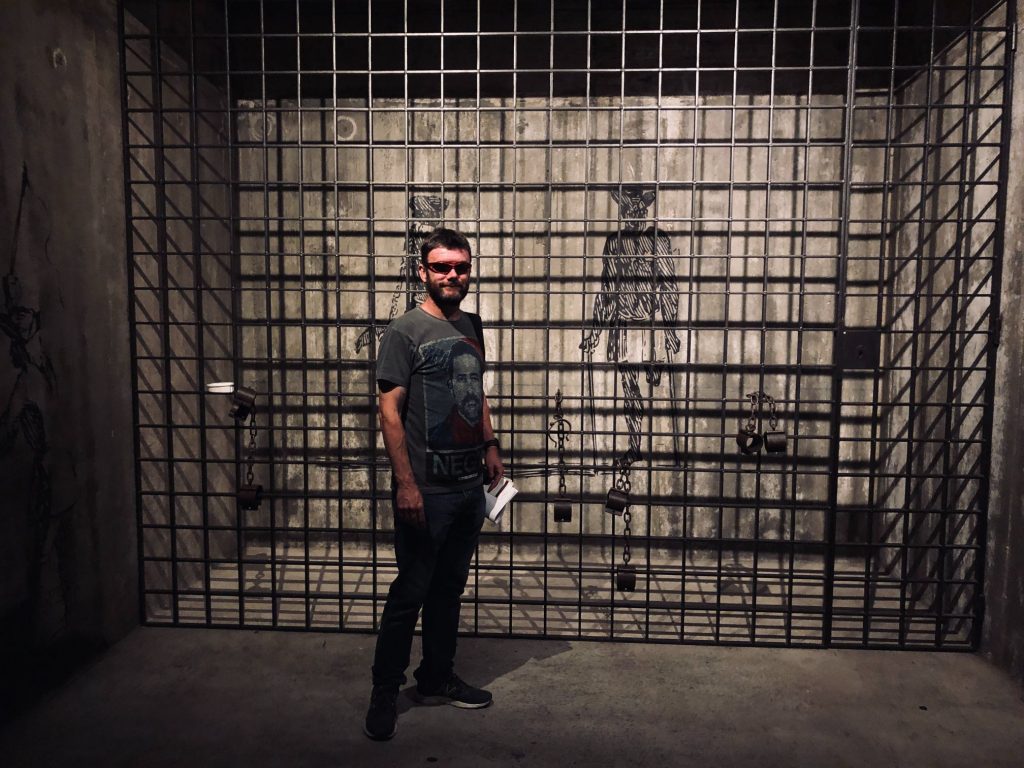


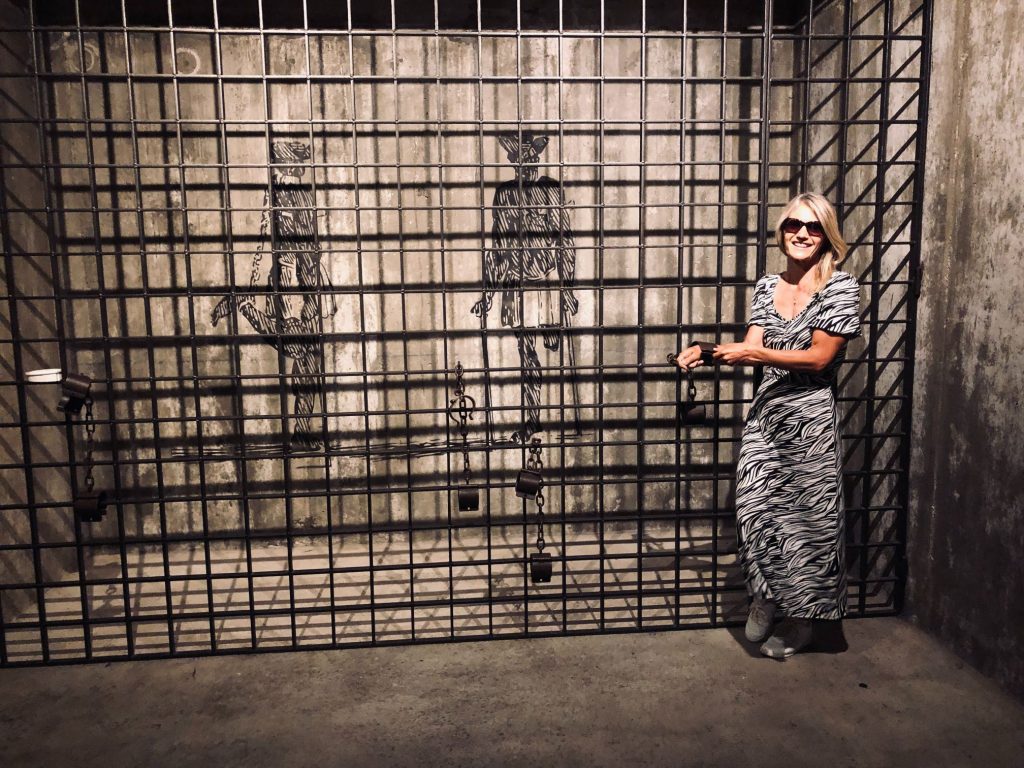


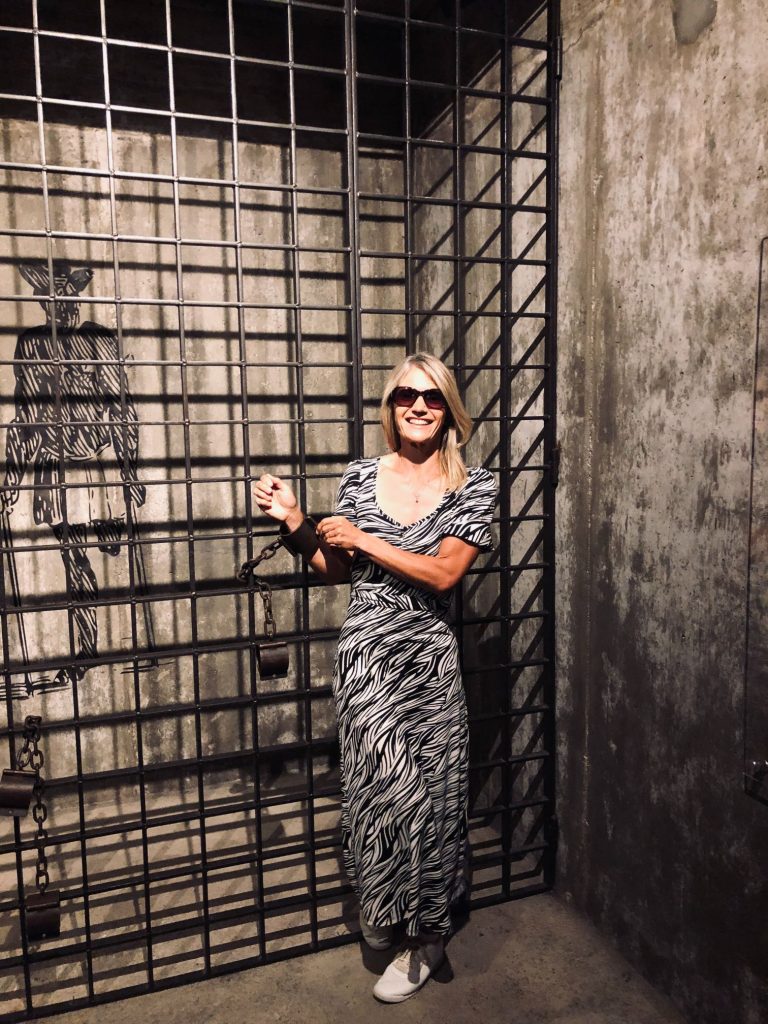


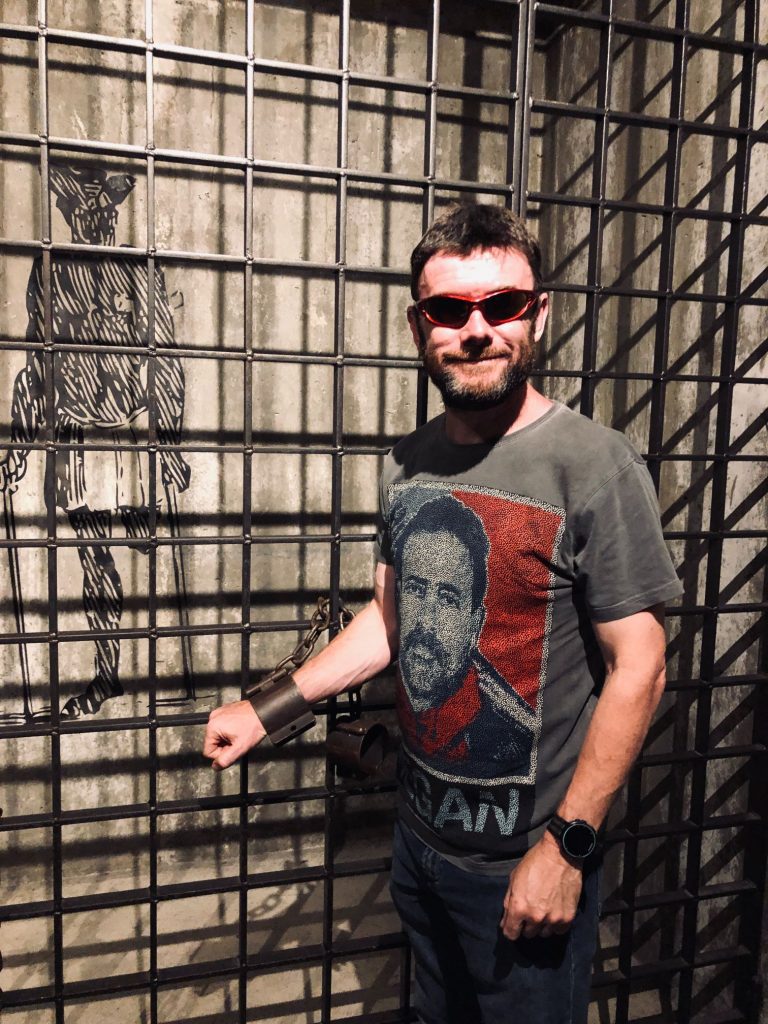


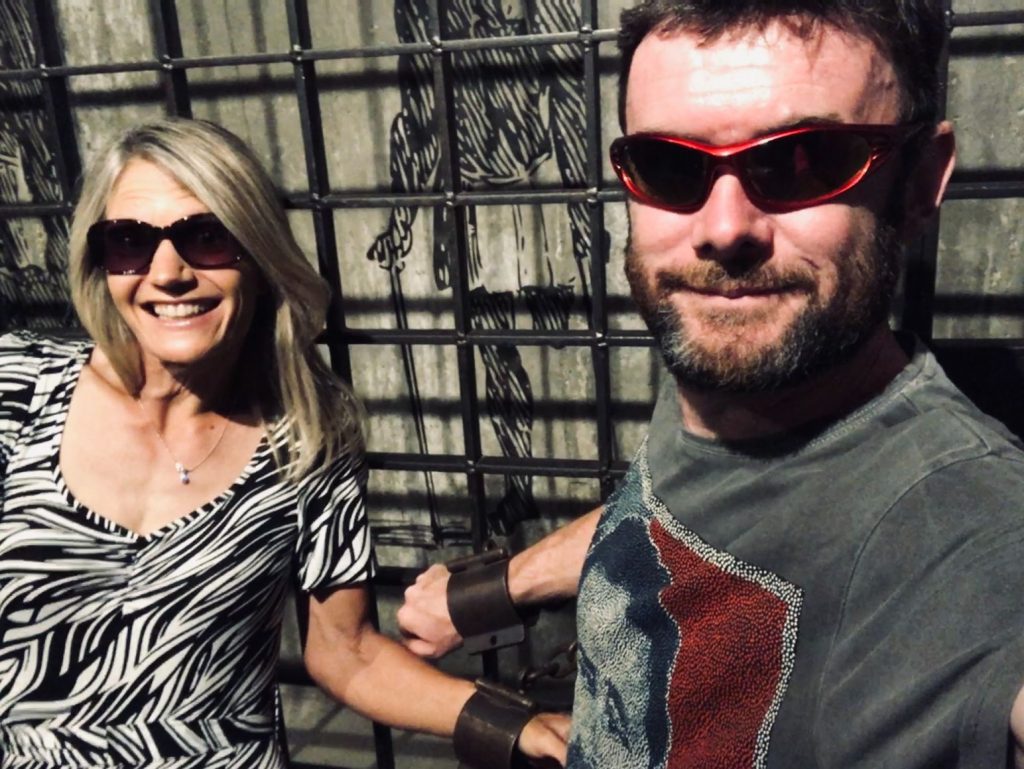


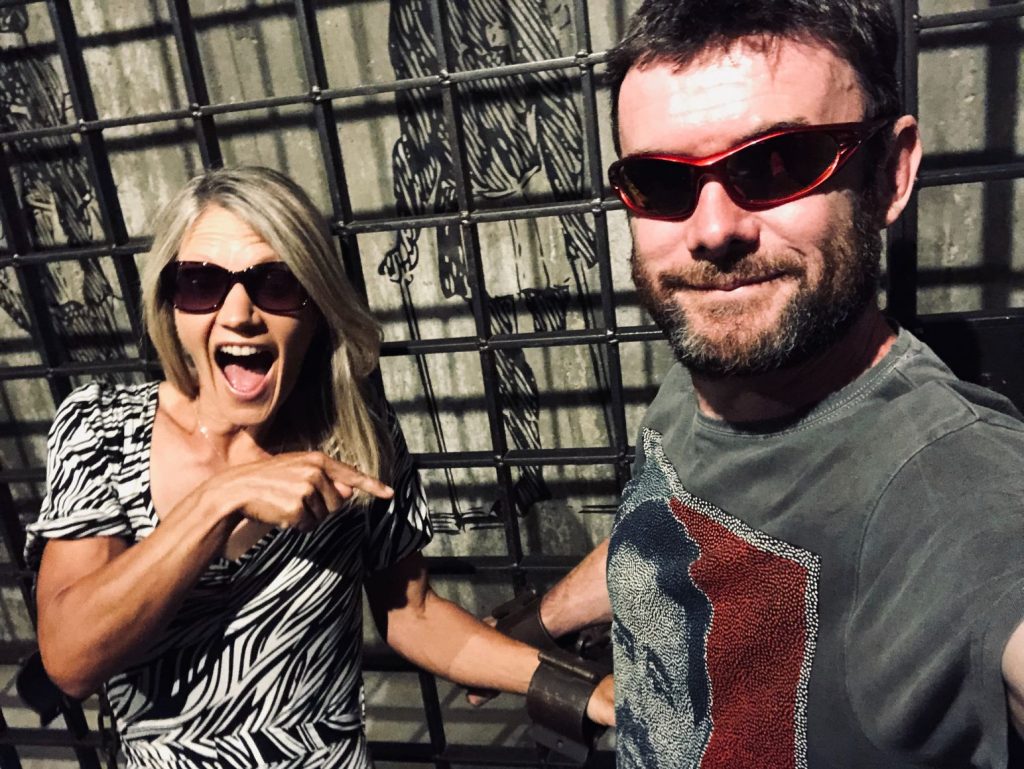


Handcuffed Helen
I have a few handcuff stories, I only wish my stories involved sex rather than police officers (ha ha).
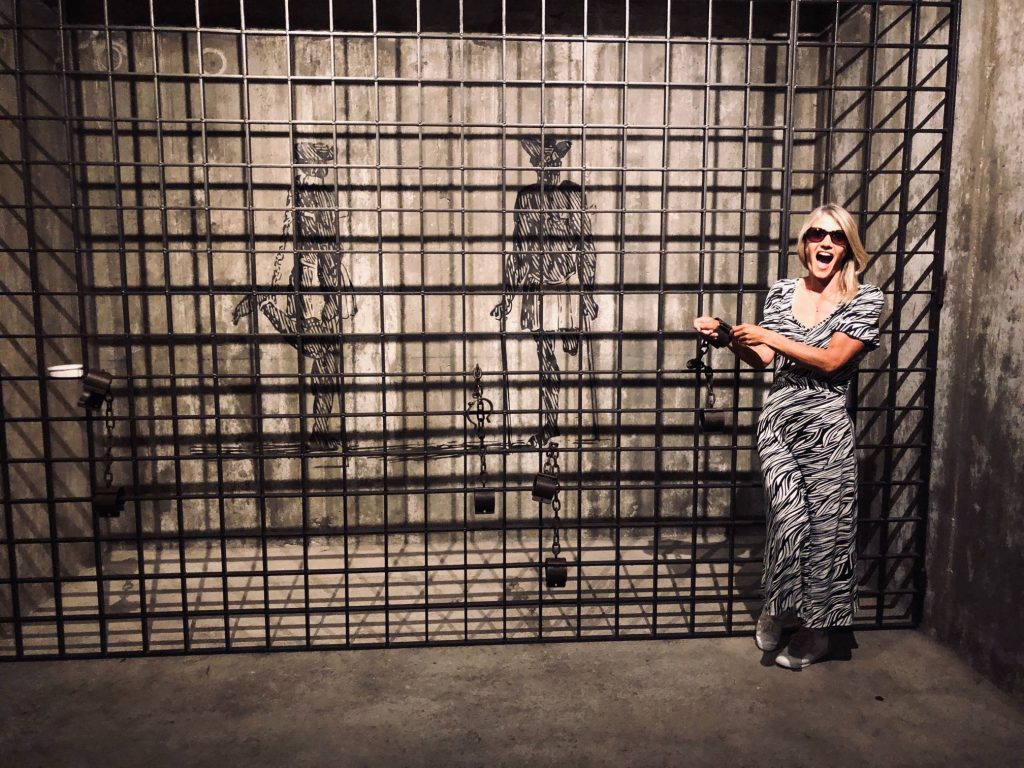


Hubby said he will be back in 2 hours to release me (ha ha) 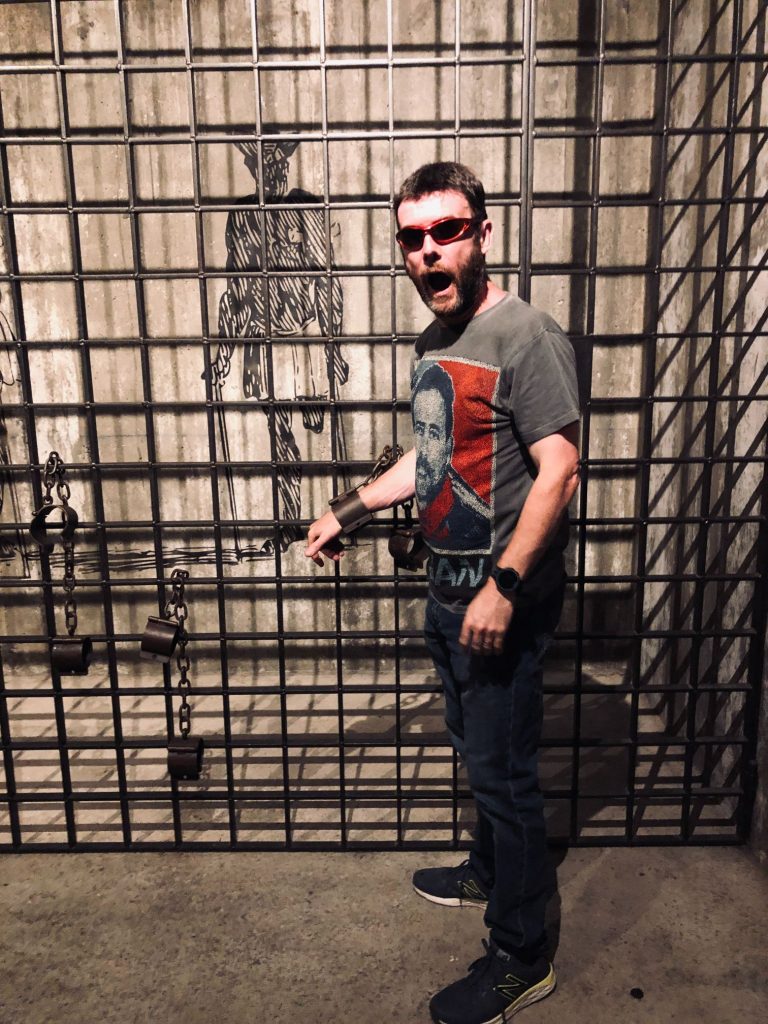


Religious Buildings
I love all the quaint churches and chapels of Portugal. I was raised a Christian so I really enjoy visiting the chapels, admiring the architecture of the exteriors and venturing inside to view the interior if they are open. A lot of chapels seem to be closed but we struck gold in Belmonte. We got to view the glorious interiors of every single chapel much to hubby’s delight (ha ha). You will find me staring at the pretty stained glass windows that tell a story, elaborate carvings and gilded altars. If the chapel is not packed full of people I often take time to say a little prayer for my friends, family and loved ones. I actually caught hubby playing chess on his mobile phone whilst viewing the inside of one church so I had to tell him off! I don’t allow him to play games on his phone when we are on day trips. He is only allowed to use his phone for navigation and photos but sometimes he cheats and I catch him red handed (ha ha). I often feel a bit disrespectful taking photos of interiors of churches so I always ask permission first if it’s possible. Quite a lot of churches are empty and there is no one around to ask so I just use my discretion.
Igreja de Santiago e Panteão dos Cabrais (Church of Santiago & Cabrais Pantheon)
The church and pantheon form a set that has been classified as a National Monument. It is an example of religious architecture with stylistic, Romanesque, gothic and mannerist characteristics. This space was designed to receive the graves of some of the most illustrious members of the Cabral clan. There is a cornice decorated with spheres, corbel work with geometric, animal and human motifs. It is thought to have been built in 1240 by order to Maria Gil Cabral, who had Nossa Senhora da Piedade Chapel built there. Capela dos Cabrais was built there in 1433 by Pedro Álvares Cabral’s parents. Murals were painted inside during the 15th Century. In 1630, Francisco Cabral had the facade refurbished, the choir loft built and the frescos repainted. Inside there are traces of the frescoes and a 14th Century Pietà, which José Saramago said was the finest piece in the church. This gothic image of Our Lady of Sorrows is a sculpture carved from the block of local granite and is about 1.5 metres high. The fresco in the chancel shows St James, Our Lady of Hope and St Peter, which some say represents Pedro Álvares Cabral. This painting may have been an offering by or for him. The other painting is thought to have been painted by several artists, due to the superimposition of layers of gypsum and clearly different qualities of painting. It represents Saint Luzia. The nearby bell tower was built in 1860. The ashes of Pedro Álvares Cabral and other family members rest in this chapel. It was an absolutely beautiful and very emotional place. I was intrigued by the old original mosaics on the walls. We climbed up the very narrow steps to the loft area to get a birds eye view and hubby hit his head which caused a bit of a scene. I’m glad the chaos didn’t emanate from me this time (ha ha).
Torre Sineira (Bell Tower)
Whenever I see a bell tower I get the urge to ring the bell! Under no circumstances do this folk as in some places this is alerting the villagers that there is a fire or danger. I resisted my urge as I didn’t fancy a night in the police cells (ha ha).
Chapels of Santo António and Calvário (Chapels of Saint Anthony and Calvary)
These two chapels are small buildings near the castle and Santiago Church. The former seems older and was built in the 15th Century. It bears the Coat of the Arms of the Queiroz, Gouveia and Cabral families. It contains two wooden images, one of the Holy Spirit and the other of St Anthony, which came from the old Franciscan Nossa Senhora da Esperança Convent in Belmonte. Calvário Chapel dates back to the 19th Century and is longitudinal in shape with a facade in stonework made to look like granite. Five steps lead up to the main door, which is decorated with the instruments of the Passion of Christ. It is an example of 19th Century, neo-gothic, revivalist religious architecture. These Chapels are tiny and were not open in the morning. Later in the afternoon we found them open so took the opportunity to view the interiors. We were the only ones inside, which was great.
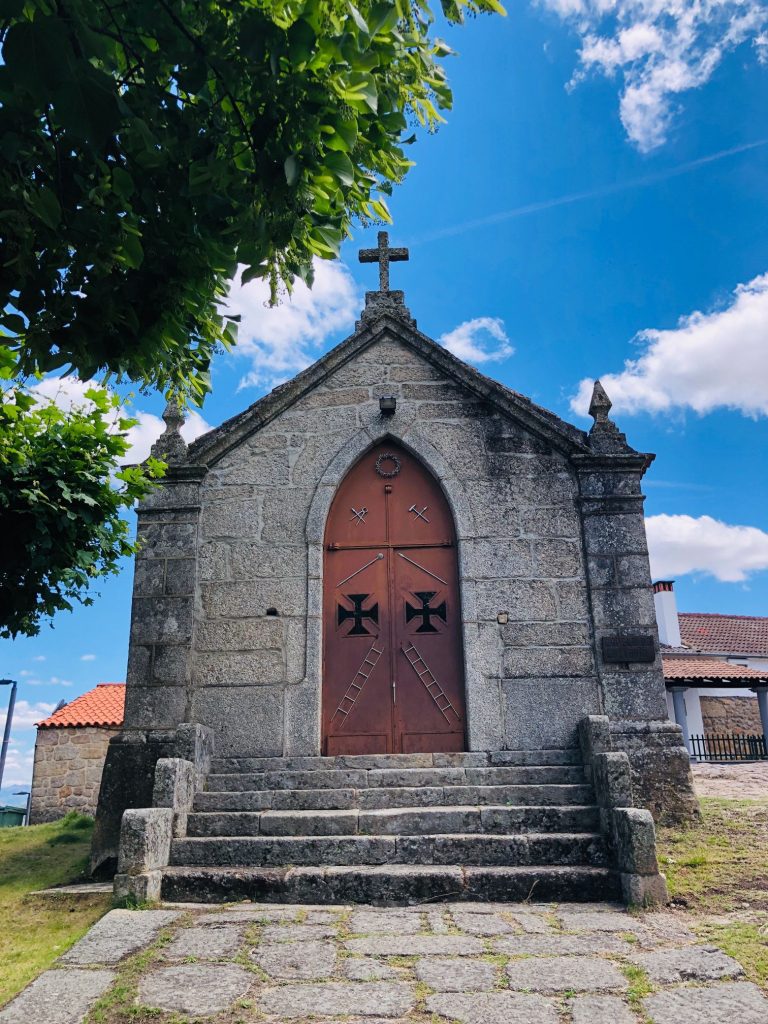


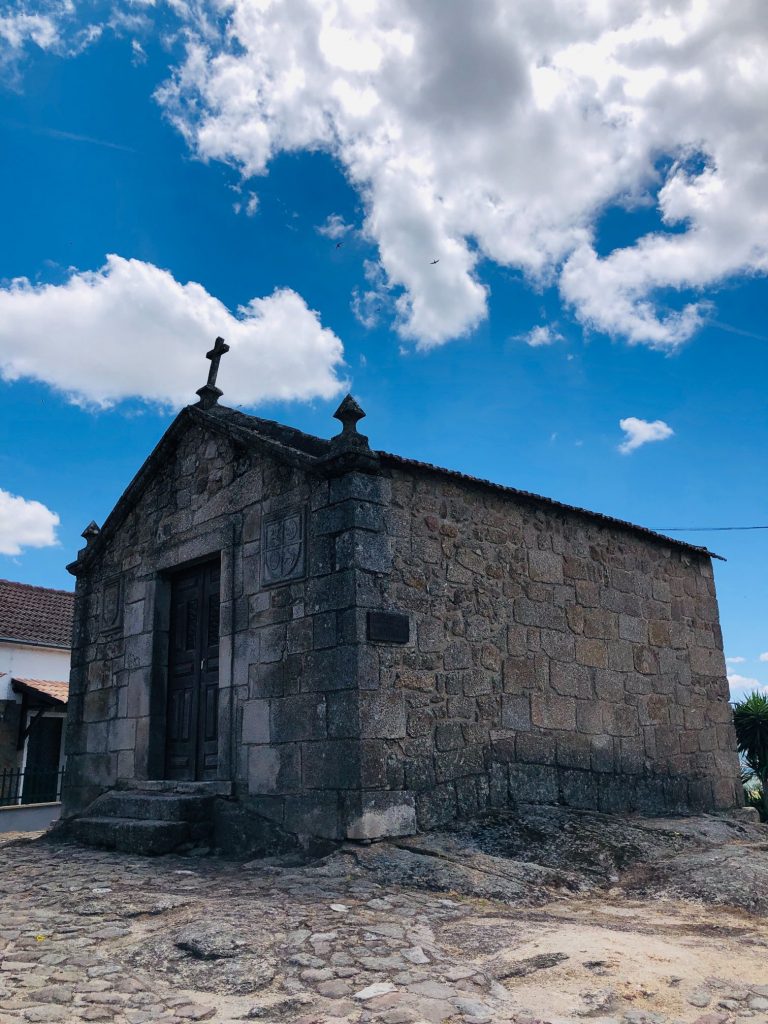


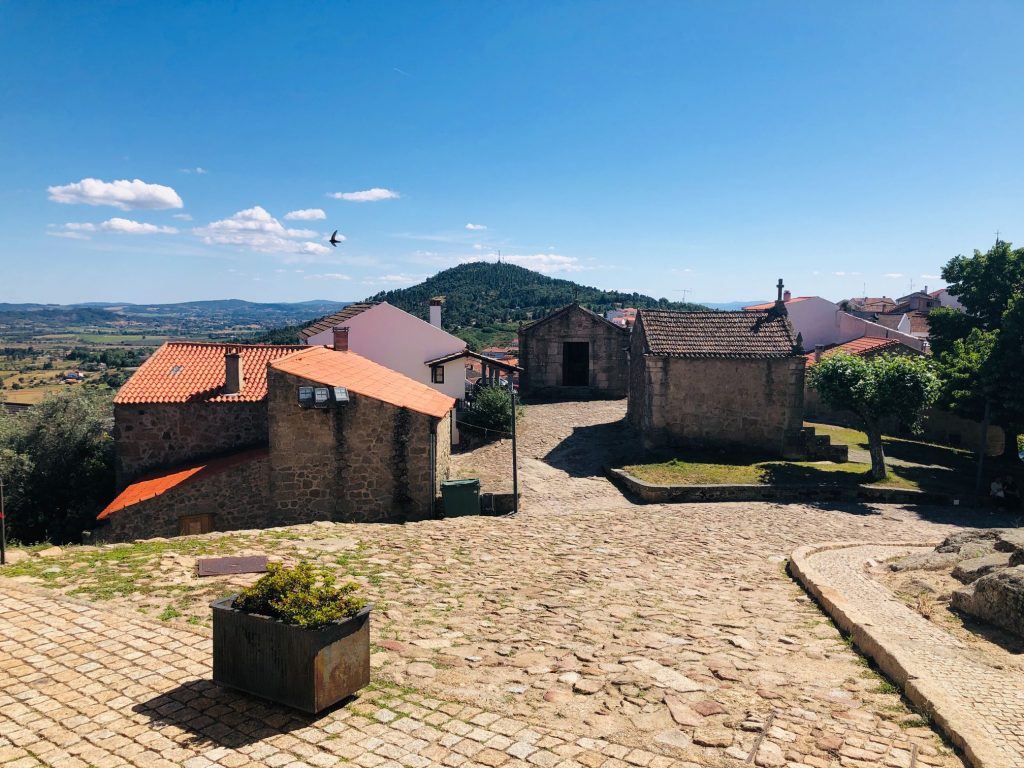


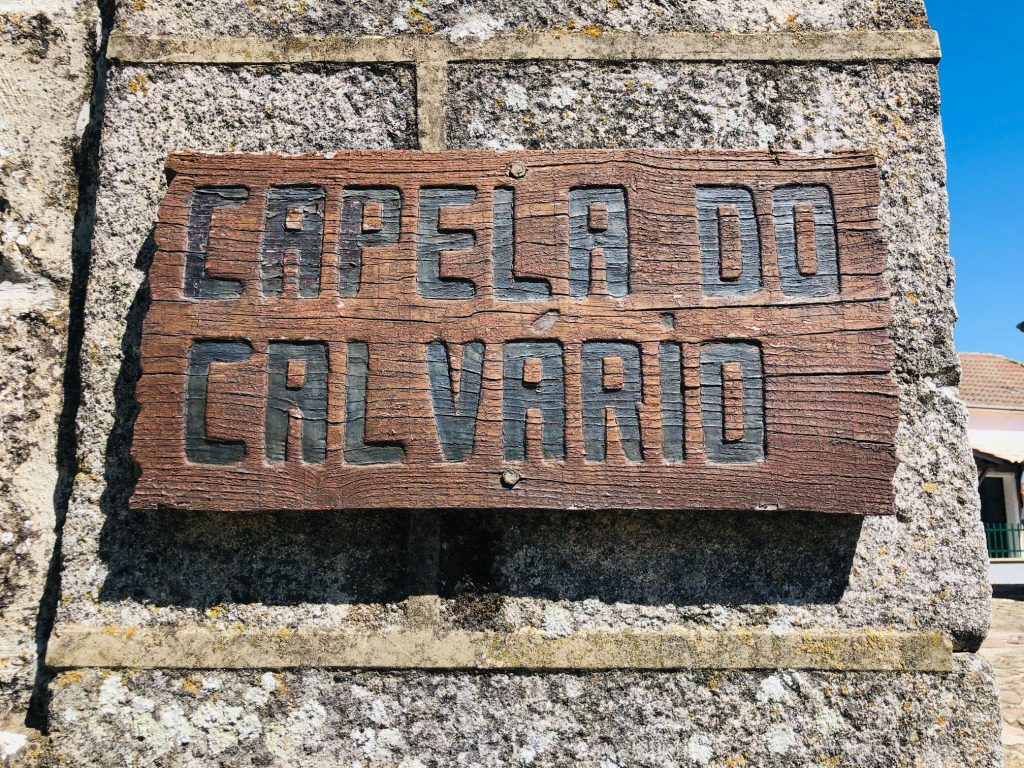


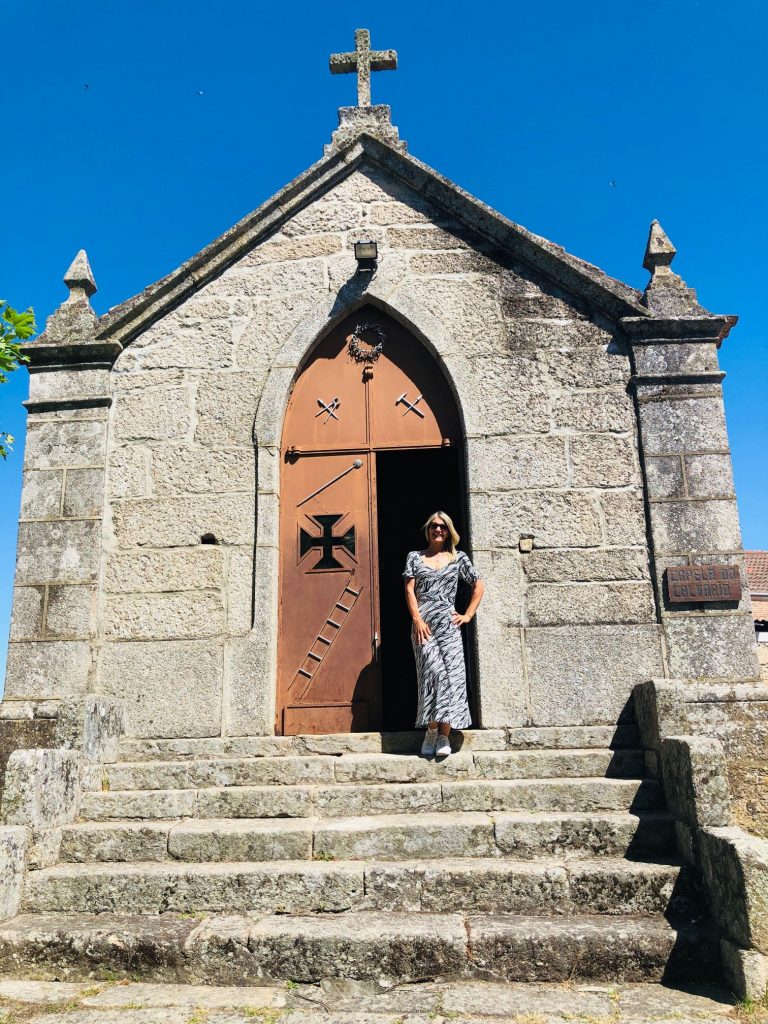


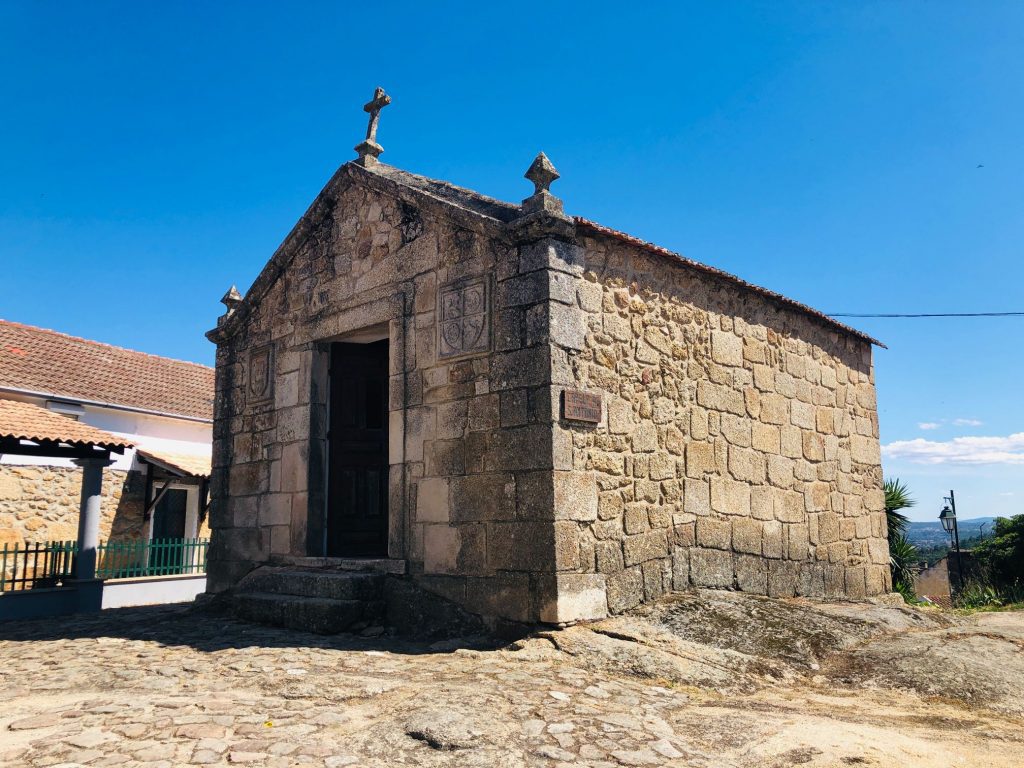


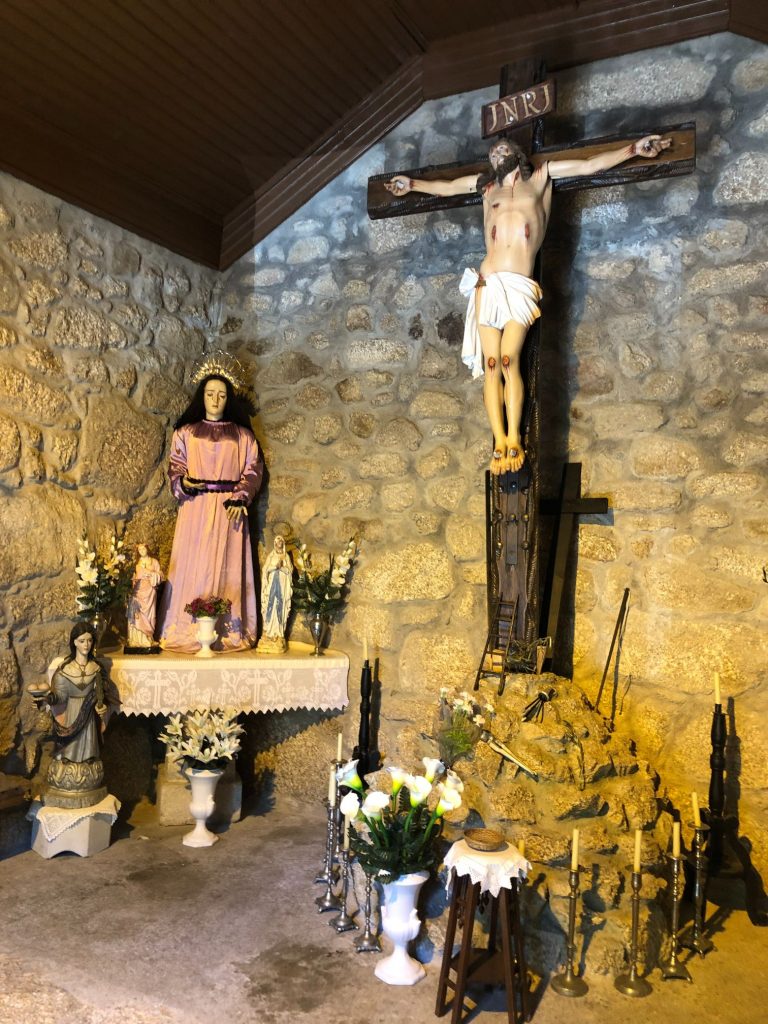


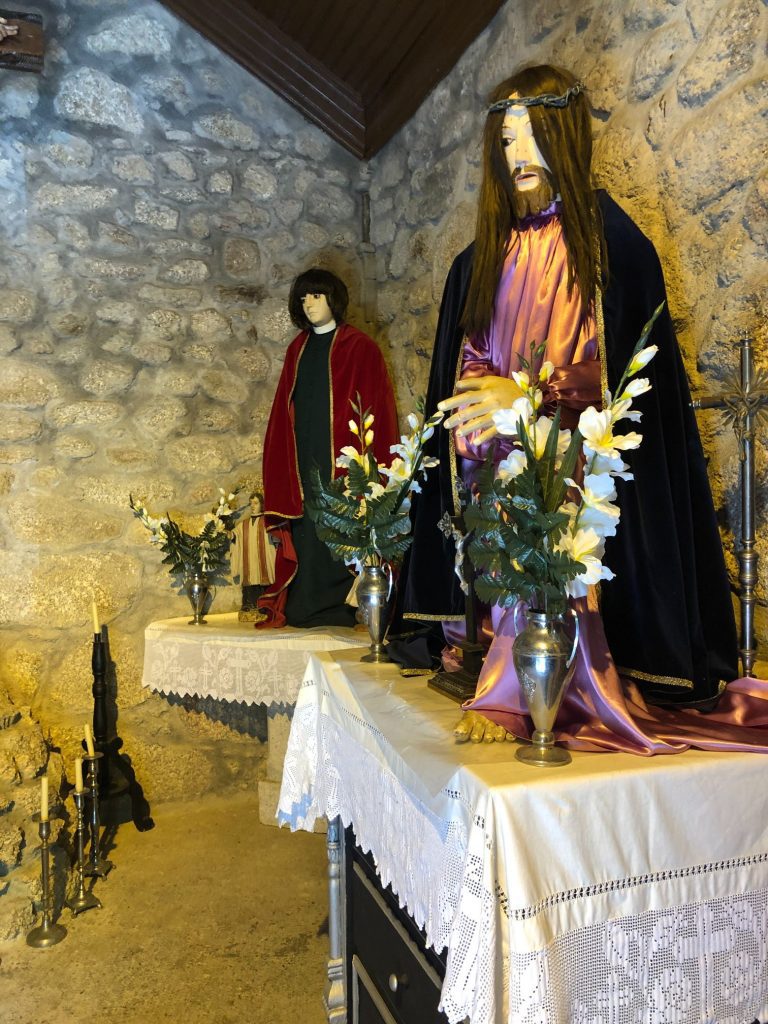


I am not too sure about these wigs, I got the giggles as the priest looks like he asked for a Ringo Starr haircut and teamed it up with Harry Potter’s outfit and the other one looks like Bob Marley with his dreads (ha ha) 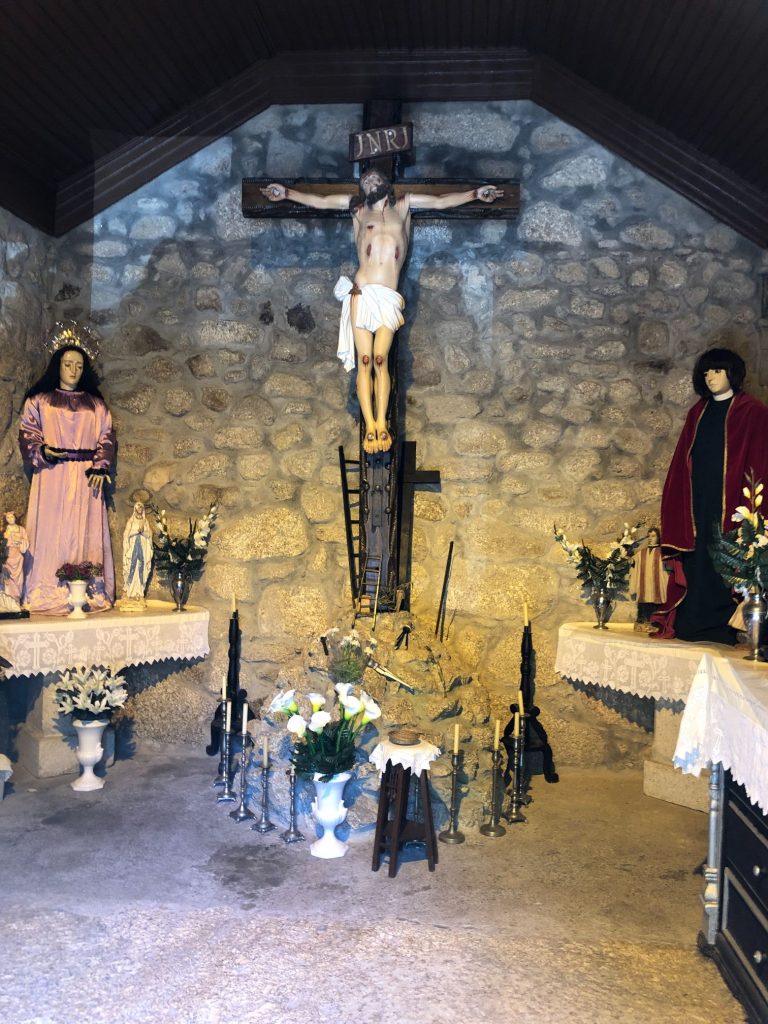


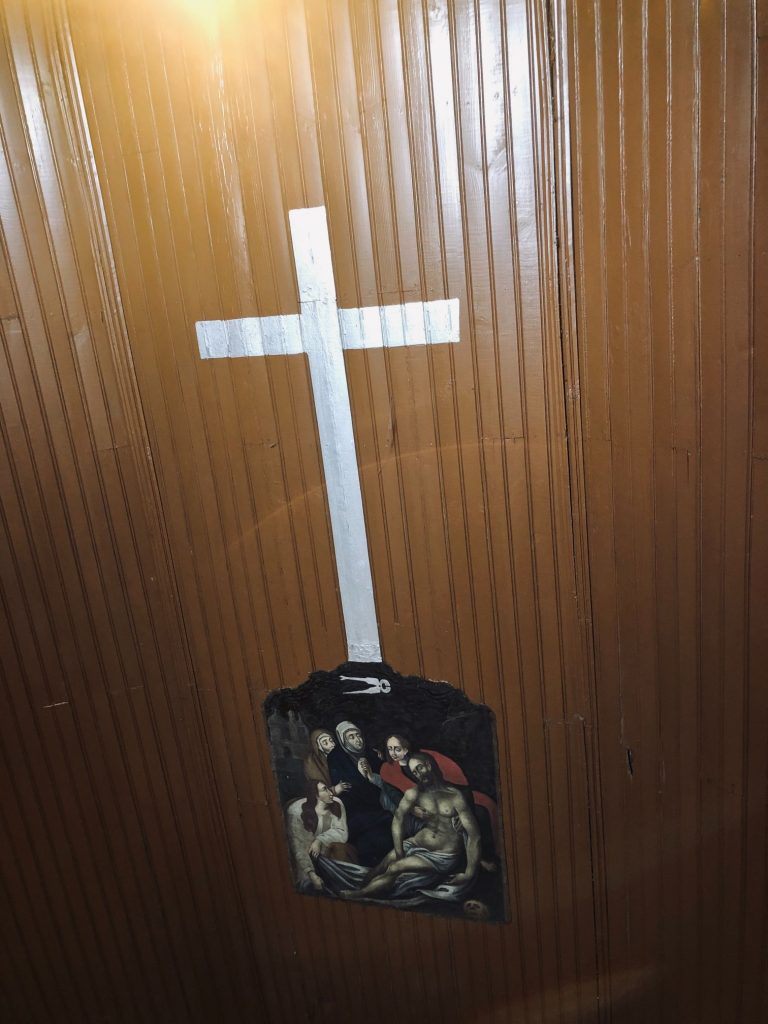


Ceiling 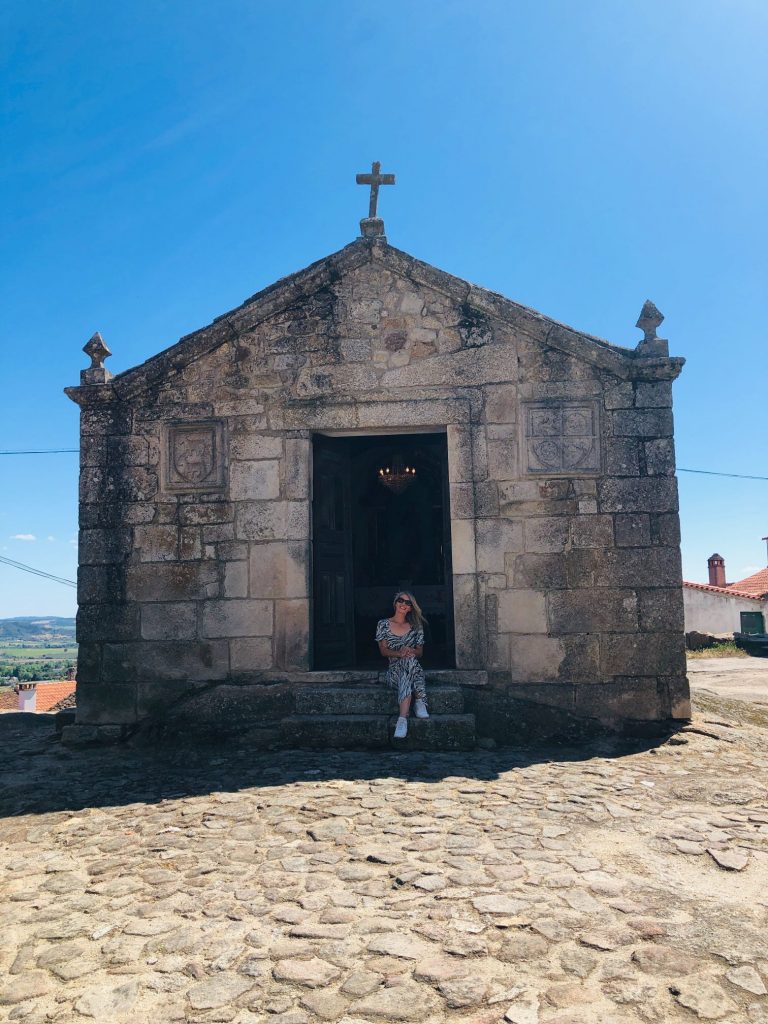


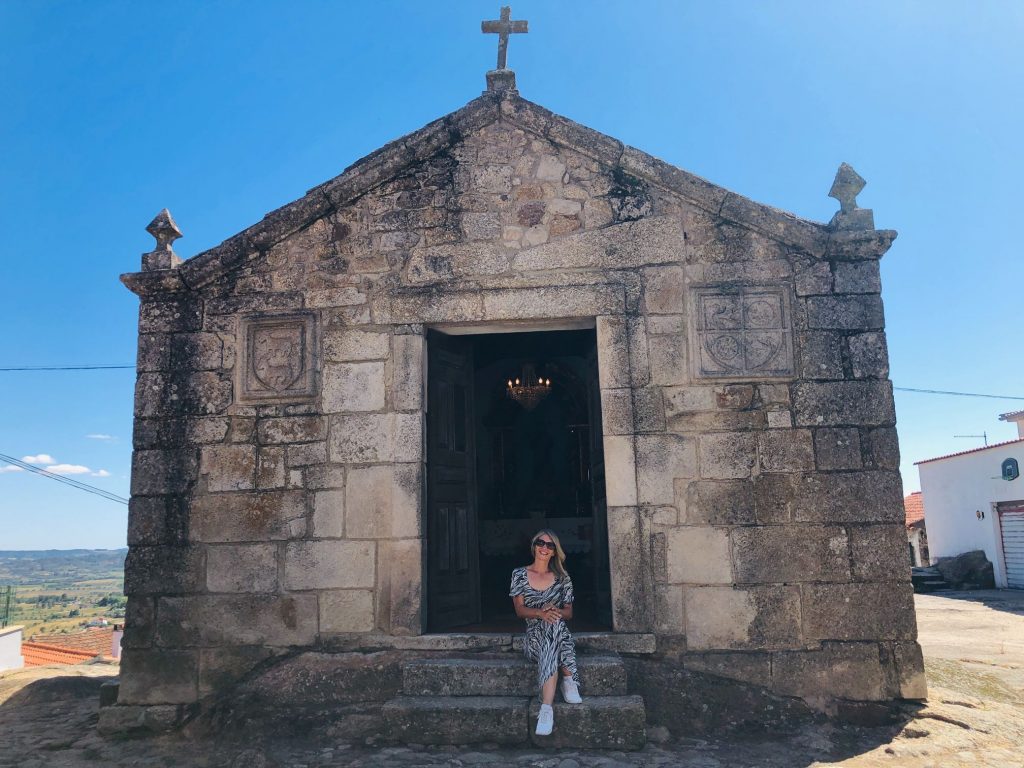


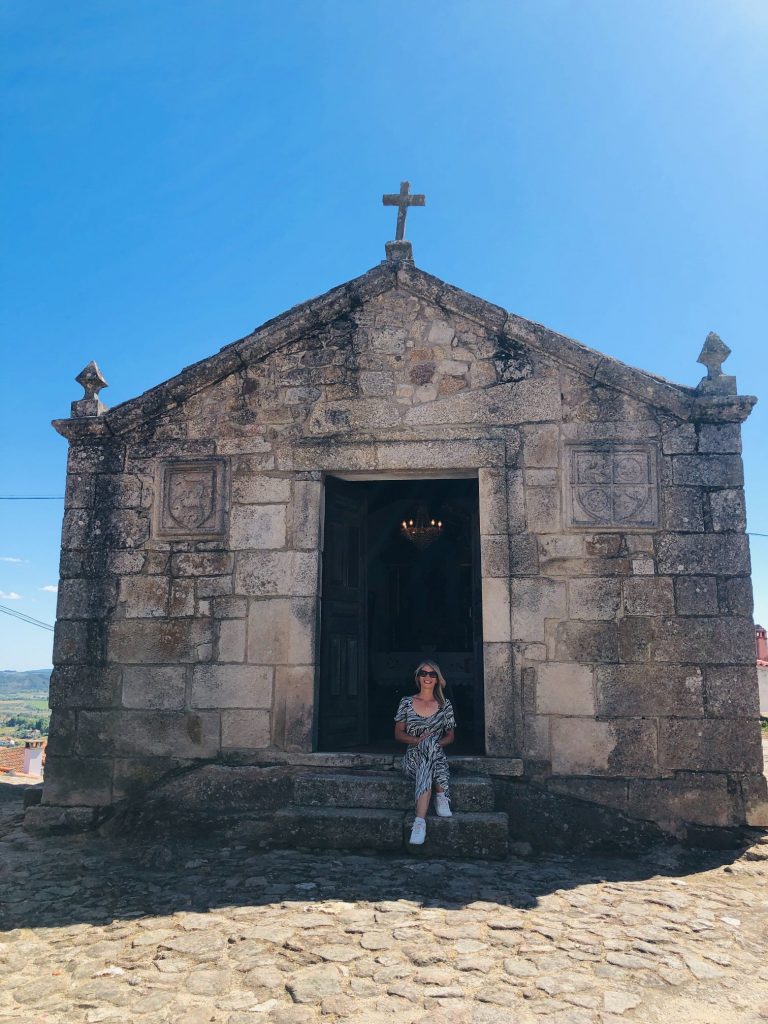


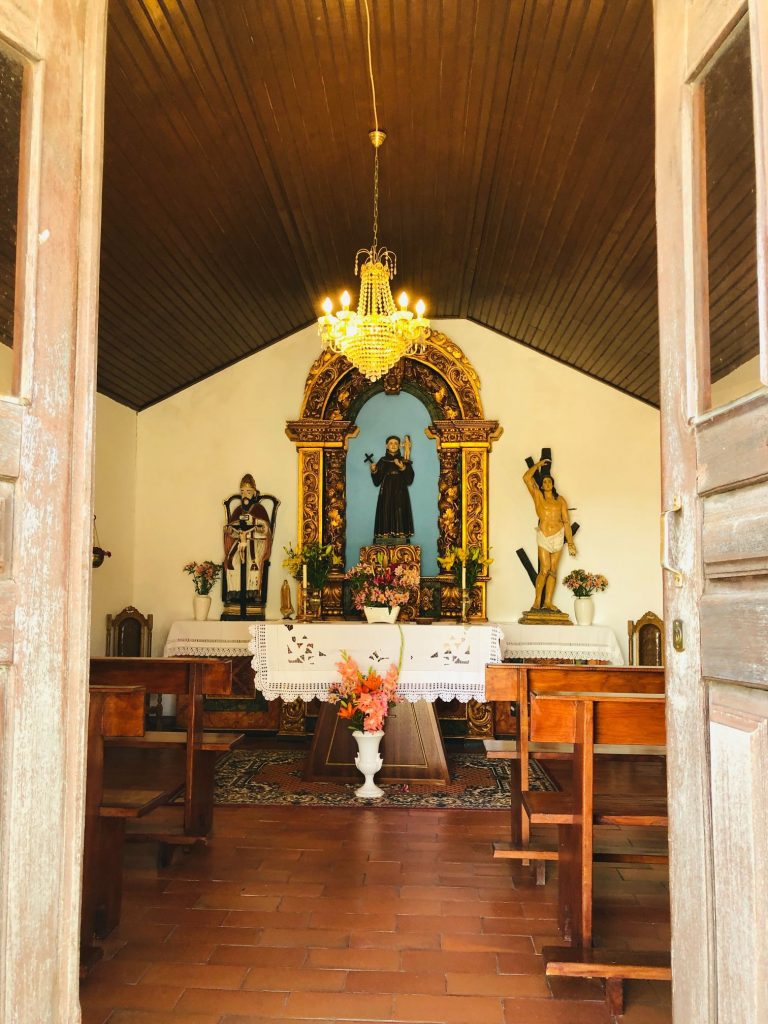


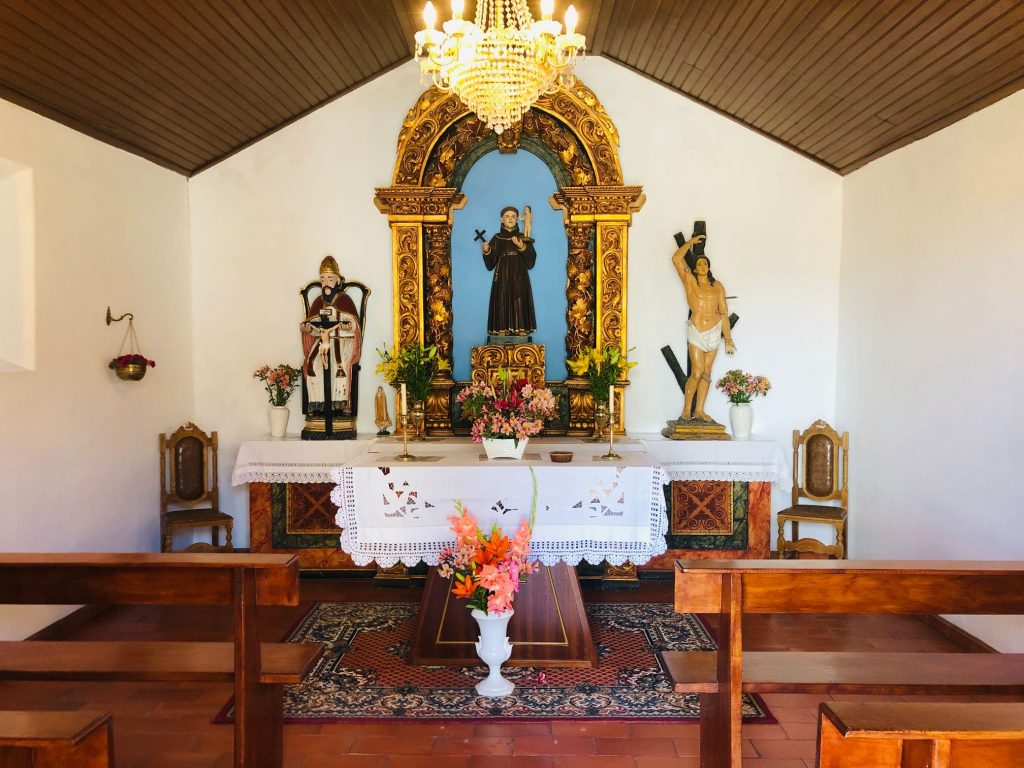


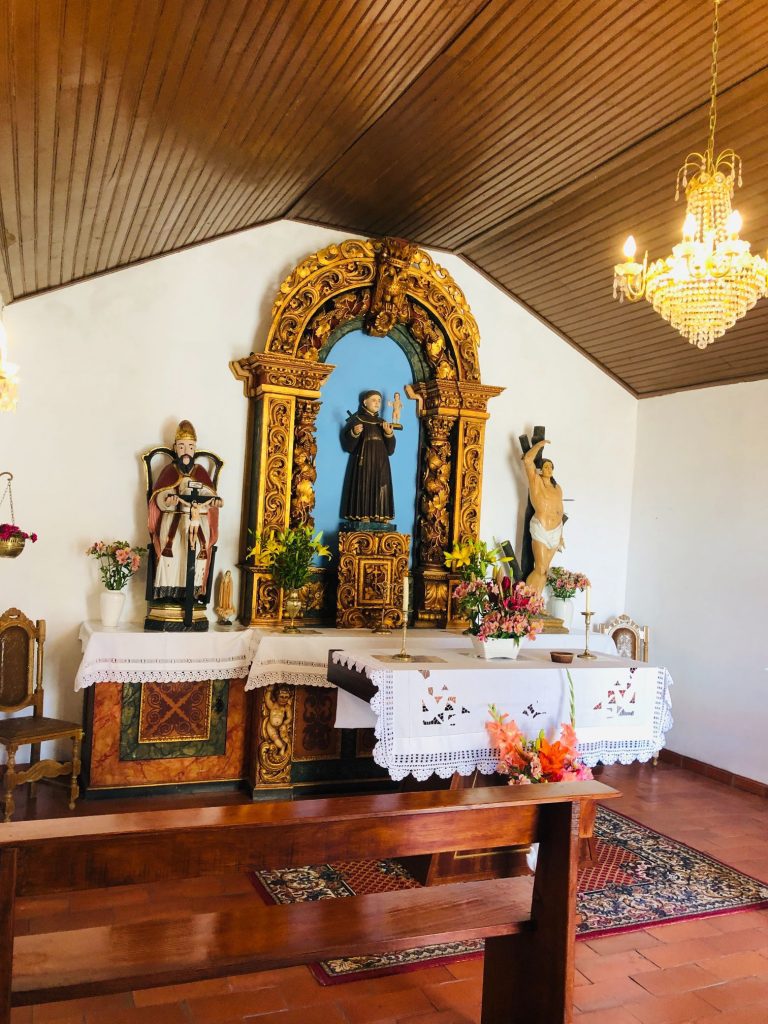


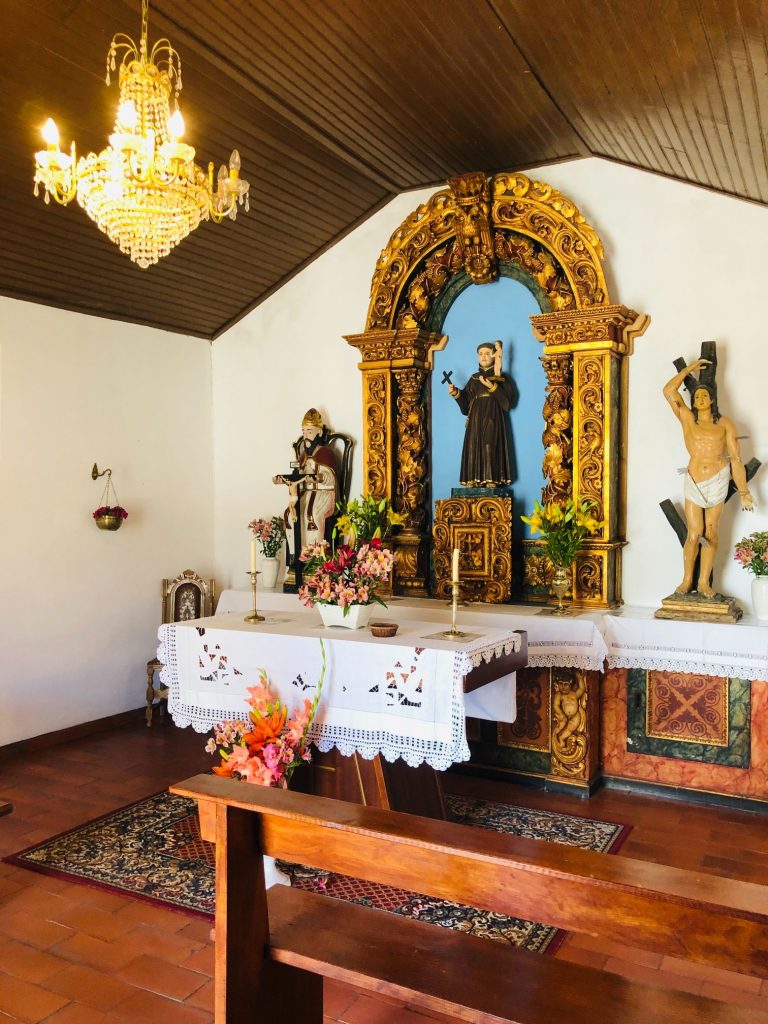


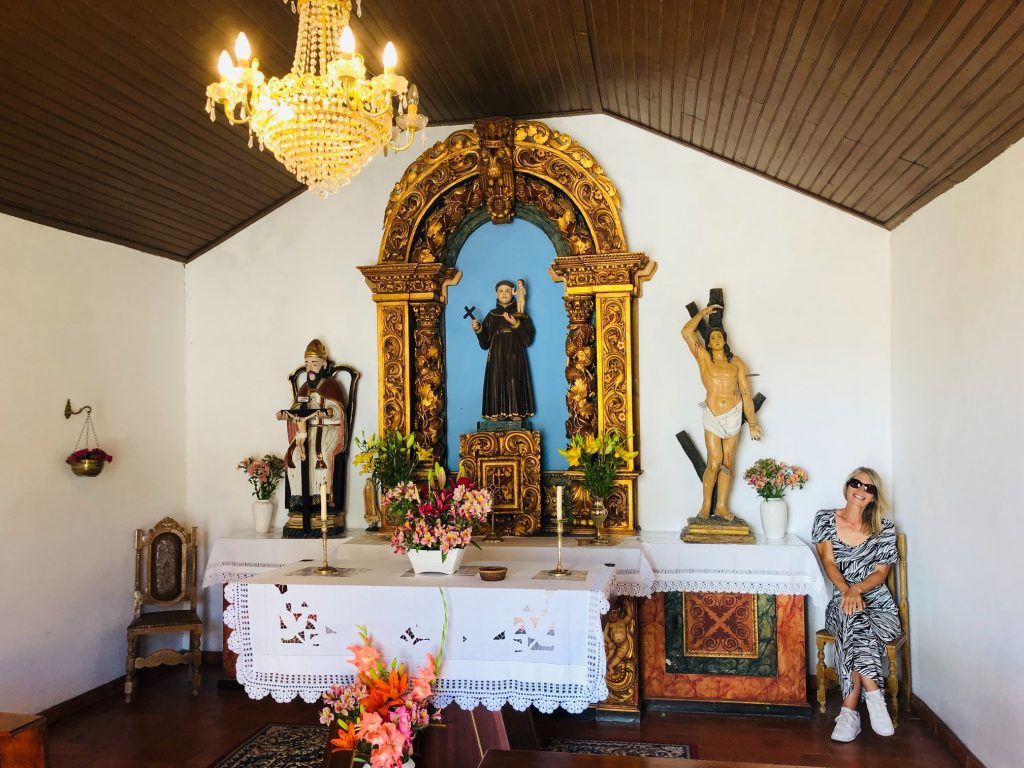


Igreja Matriz (Main Parish Church)
This longitudinal church was opened in 1940. It consists of a nave and a low, narrow chancel with attached vestries. The bell tower is in line with the main facade. It is a church with revivalist and eclectic influences from the beginning of the 20th Century. It has a side altarpiece with an image of Our Lady of Hope (which is said to have accompanied Pedro Álvares Cabral on his discovery of Brazil).
The main Church is spectacular and very large. It was extremely busy outside and people were dressed up in their Sunday best and it quickly became evident that there was a pending celebration. My money was on a Baptism. I had my first embarrassing encounter here. It couldn’t be a day trip without Helen doing something dumb ass (ha ha). I went to have a look inside but couldn’t open the second door. I struggled with it then flung it open and there was a service taking place with over 100 people, the church was packed and I made a startling entrance like I was about to stop a wedding in mid flow (ha ha). I slowly walked out with my head hanging in shame. When we returned later in the day hubby said the doors looked closed which they did but then I saw a lady enter the church so this time I did the sensible thing and peered through the keyhole of the door first. I could see 3 ladies inside chatting but otherwise it was empty. Hubby didn’t want to go in but I wanted to risk it for a biscuit and what’s the worst that could happen? They could say it was closed and we would leave. Hubby reluctantly followed my lead because I’m the lady boss and wear the trousers (in our relationship not literally) as I wore my new Zebra dress on this day because I’m an animal (ha ha). The ladies carried on chatting and ignored us then soon left so we had the whole church to ourselves. It is absolutely gorgeous and the red carpet leading to the altar is splendid. I loved everything about it and was extremely glad that I had the courage to return. The facade of this church is quite plain and traditional but the inside is glorious, especially the altarpiece. Certainly a beautiful place for reflection and prayer.
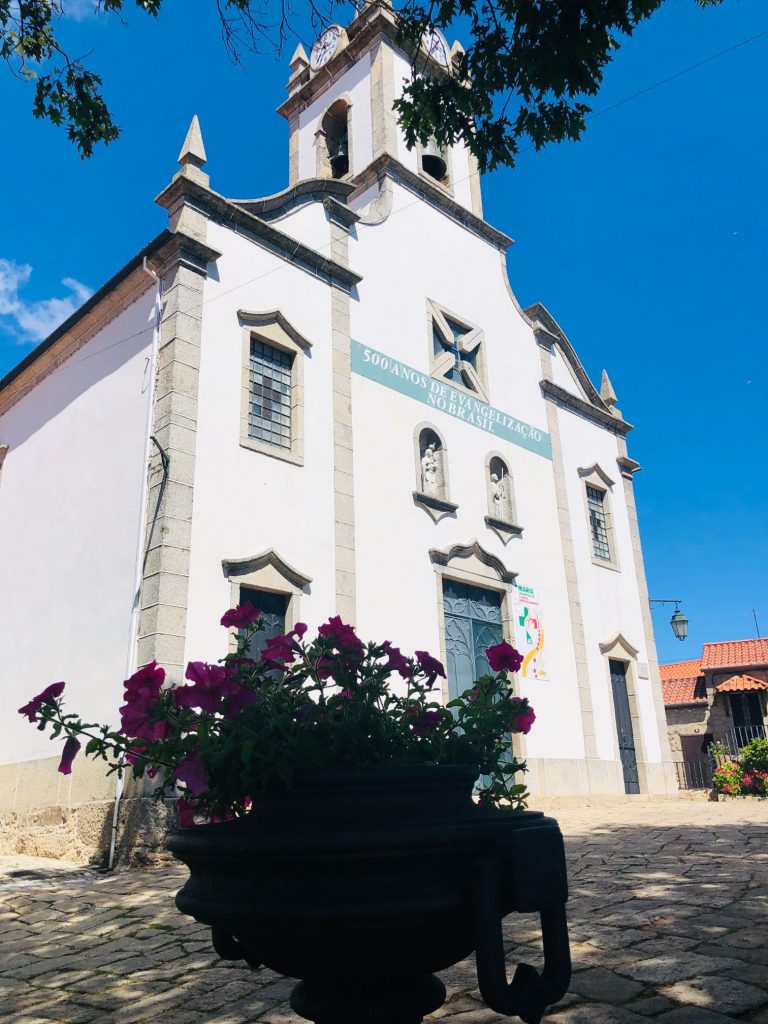


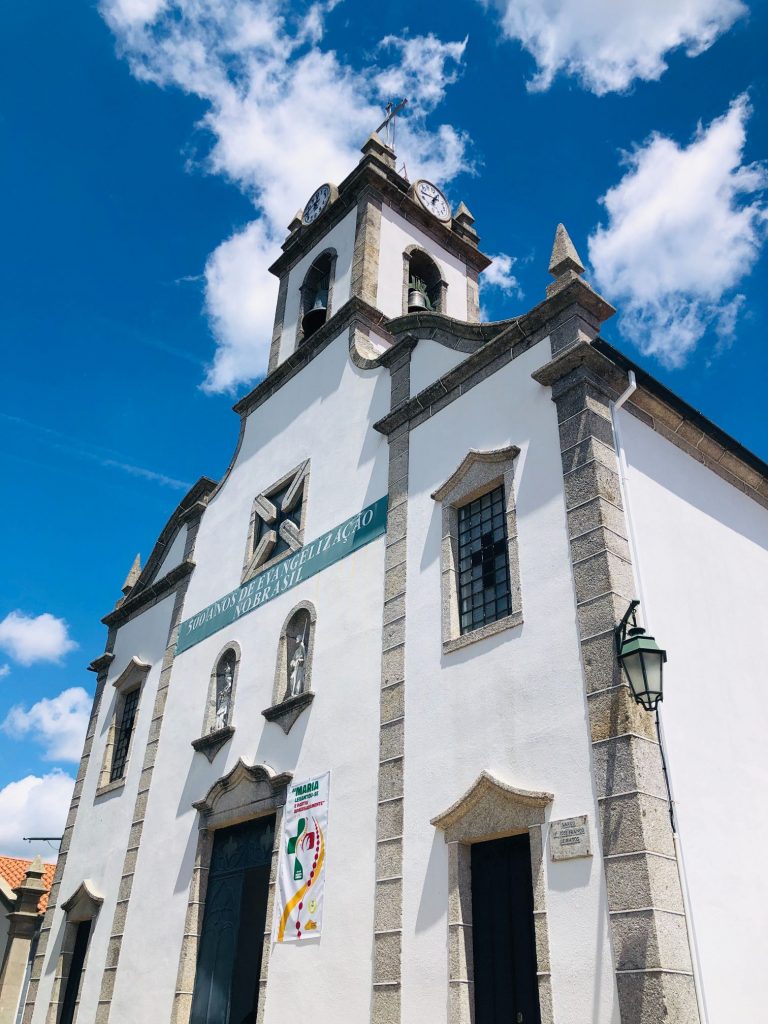


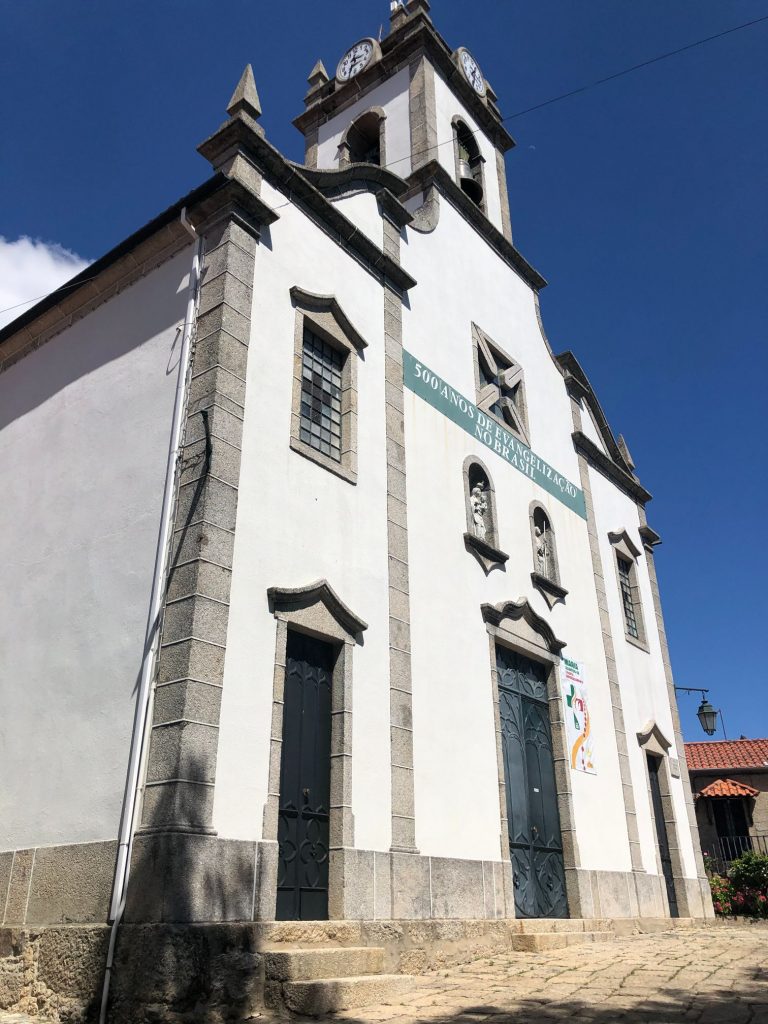


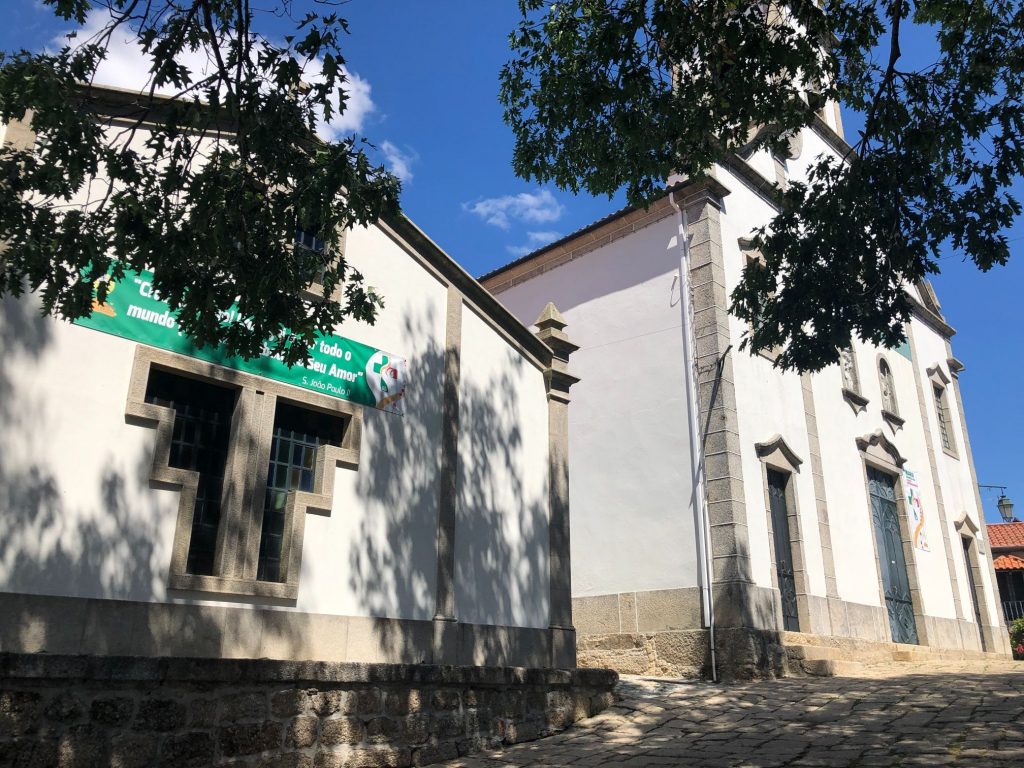


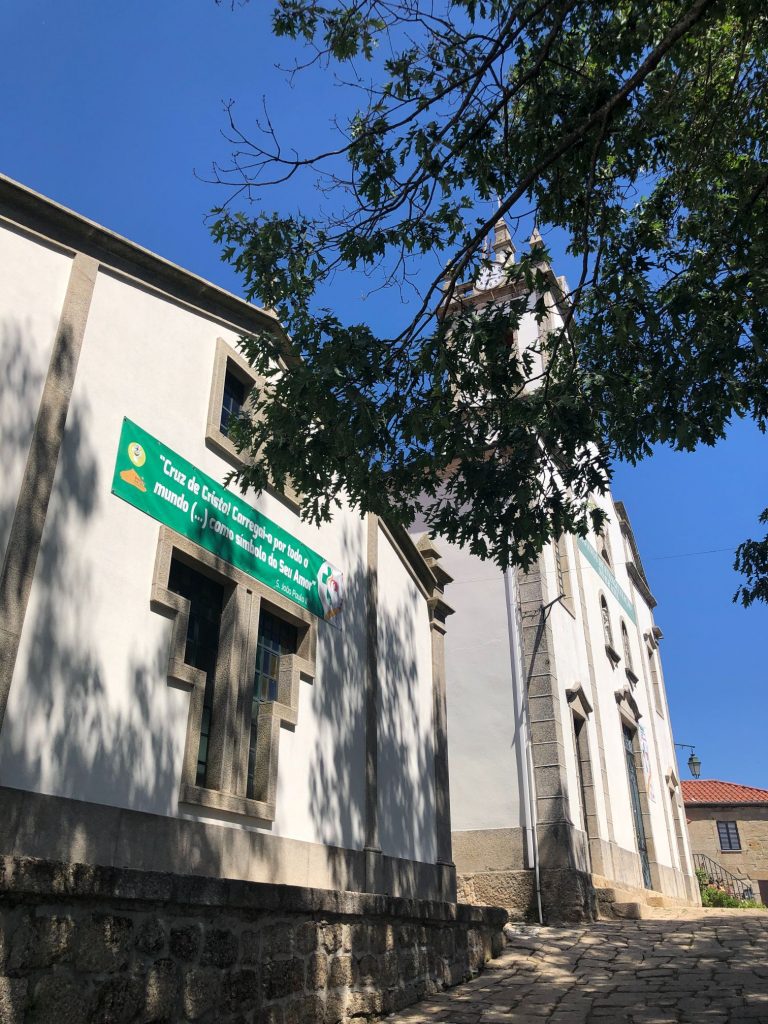


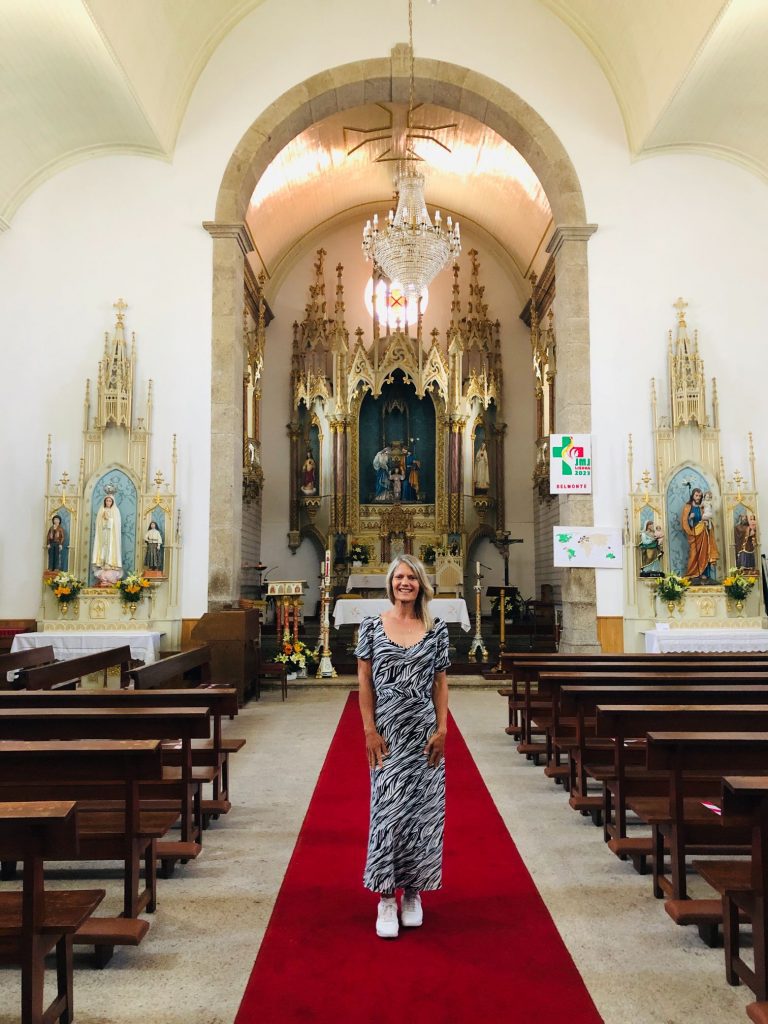


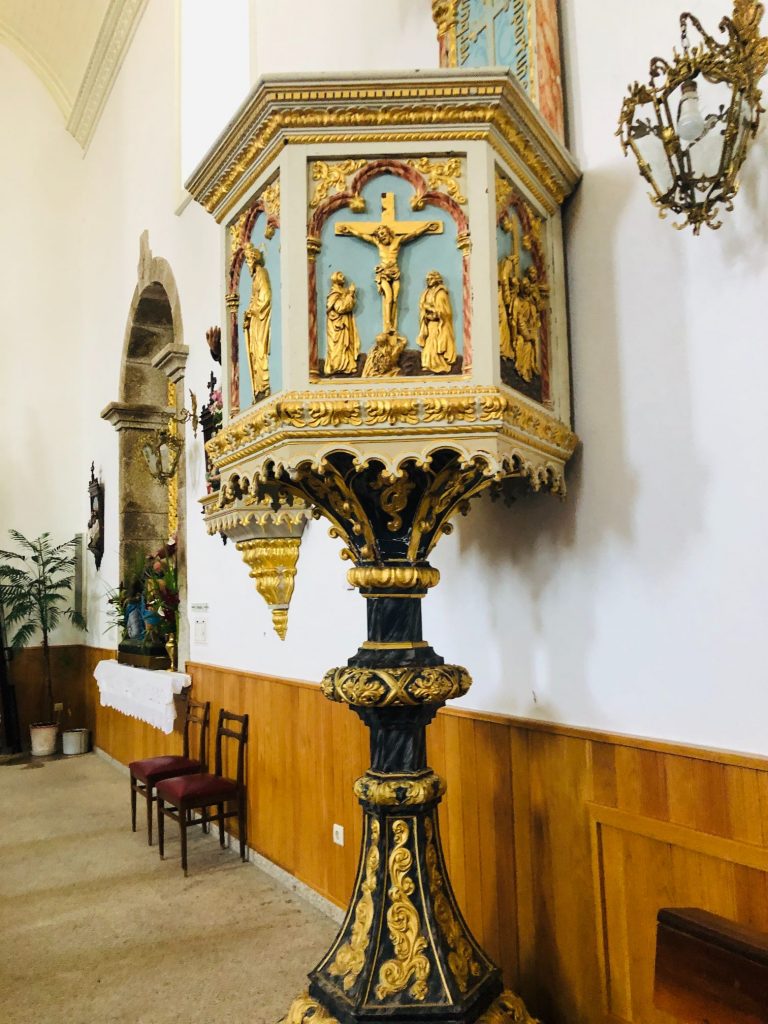


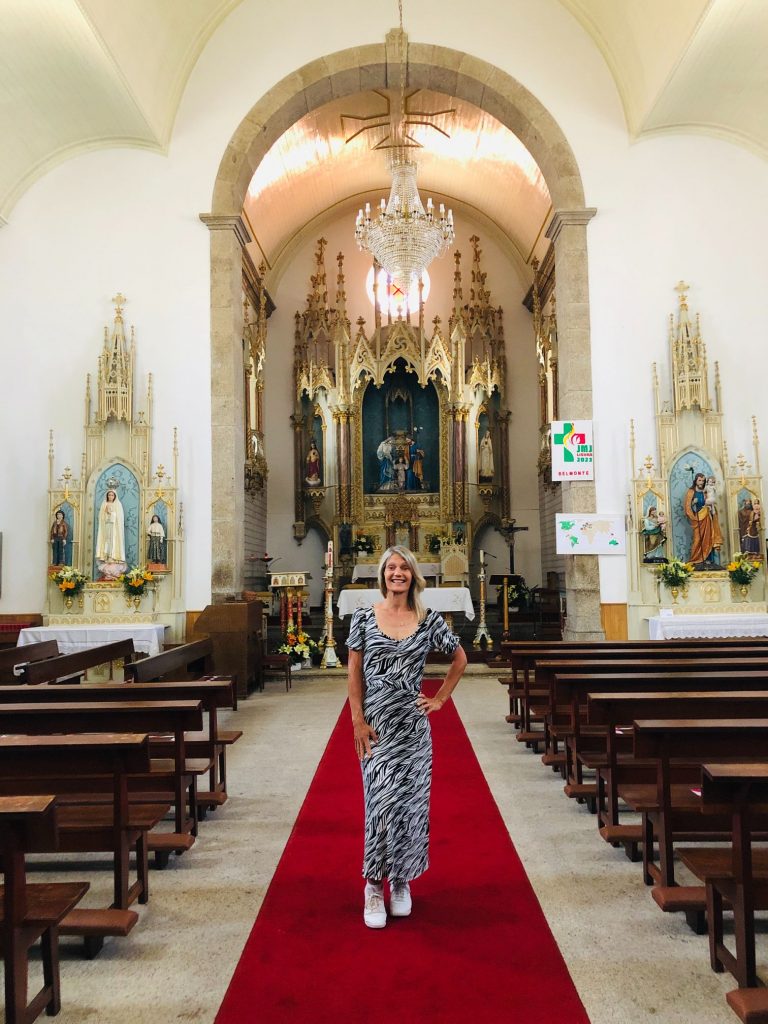


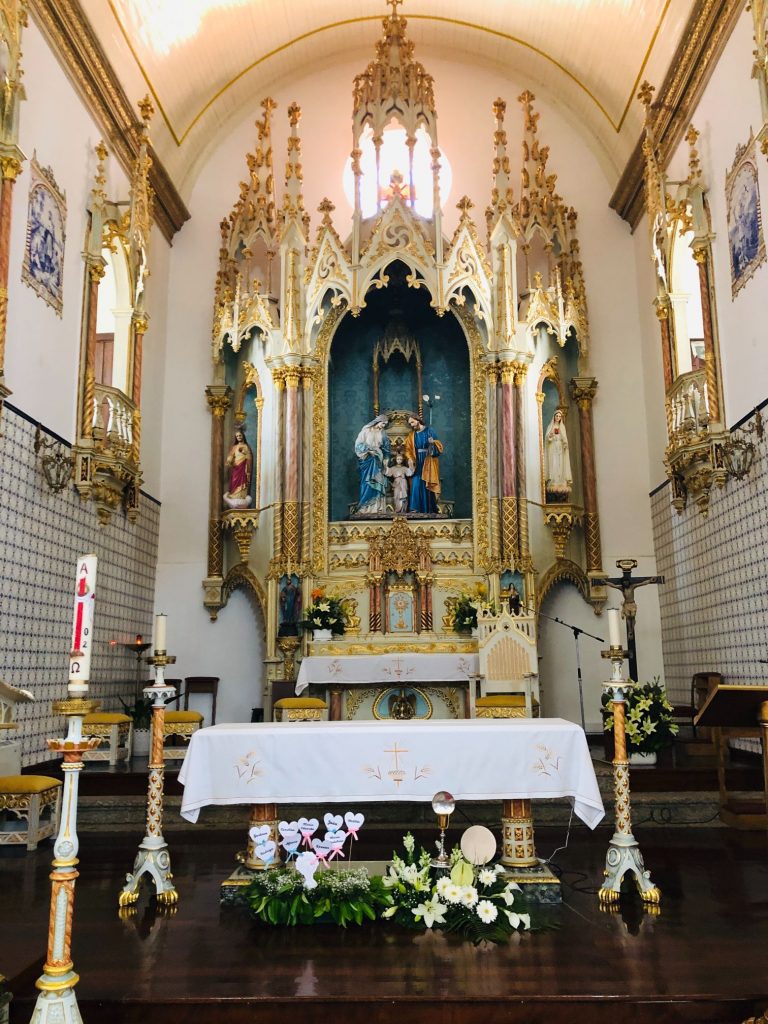


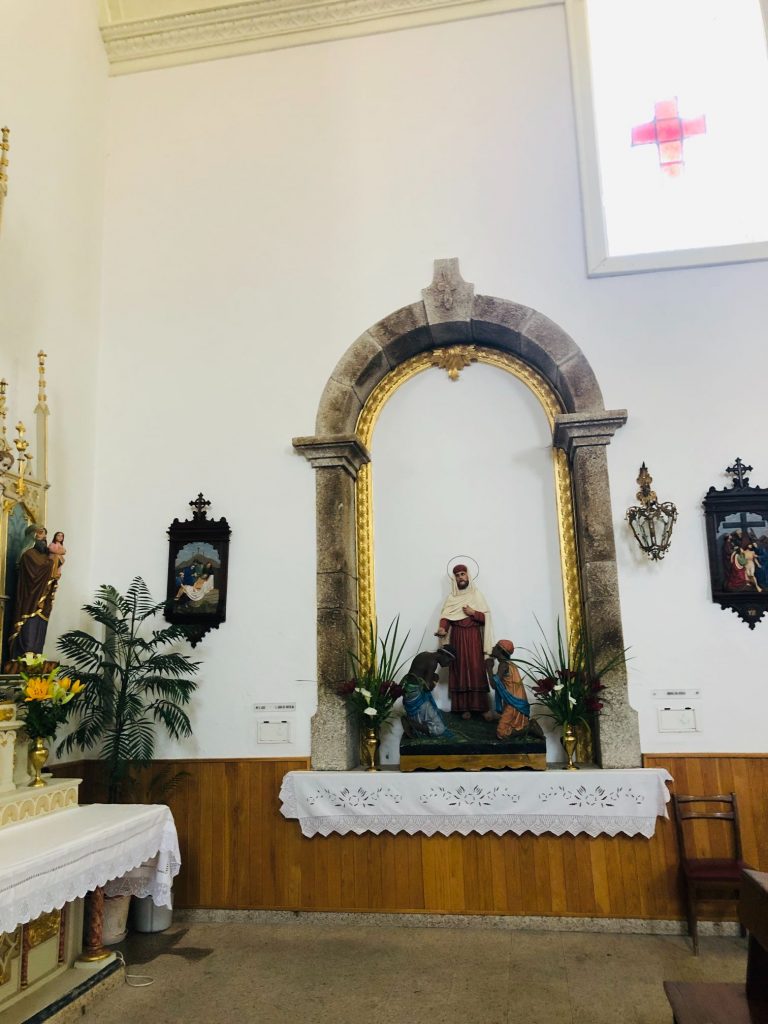


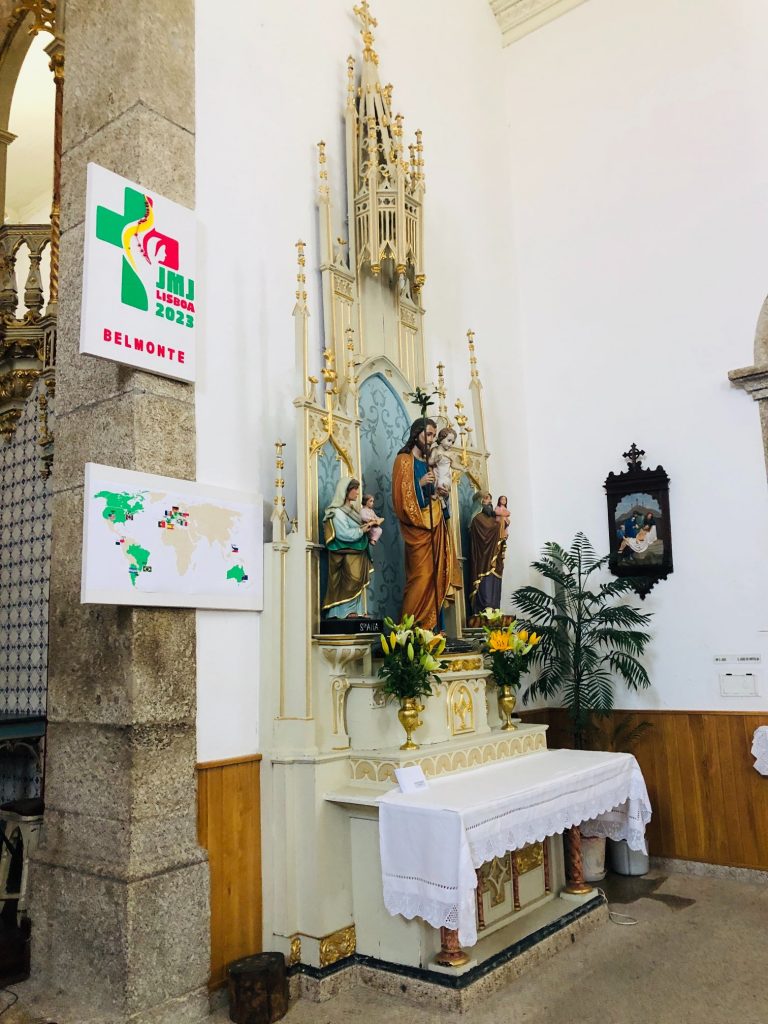


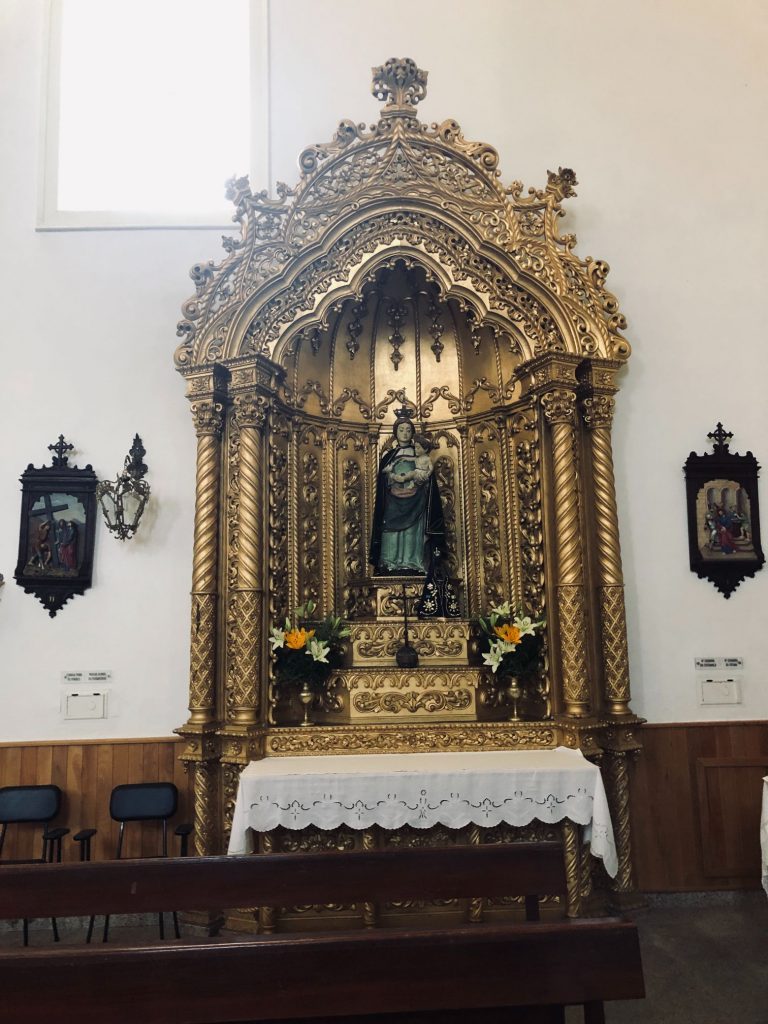


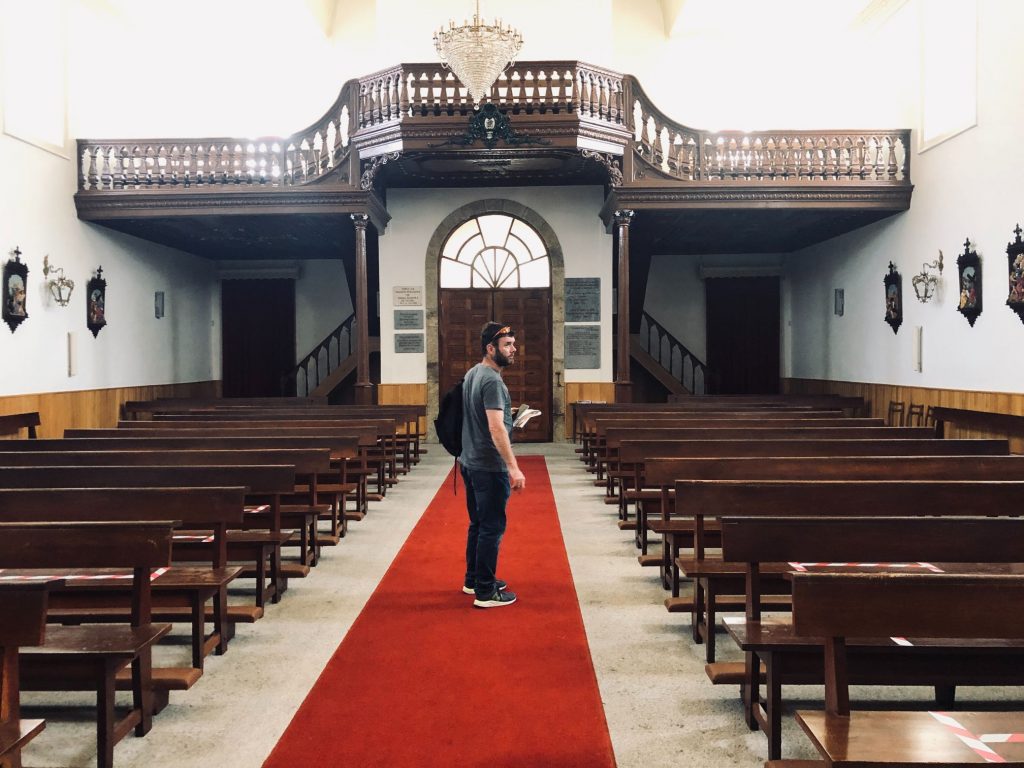


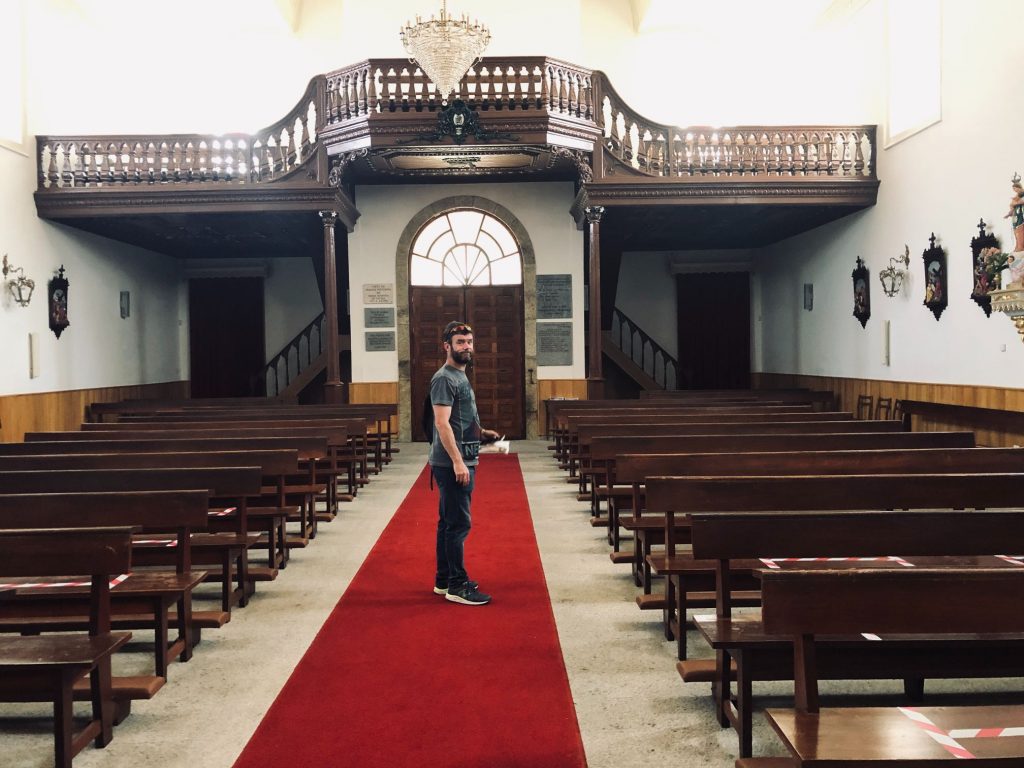


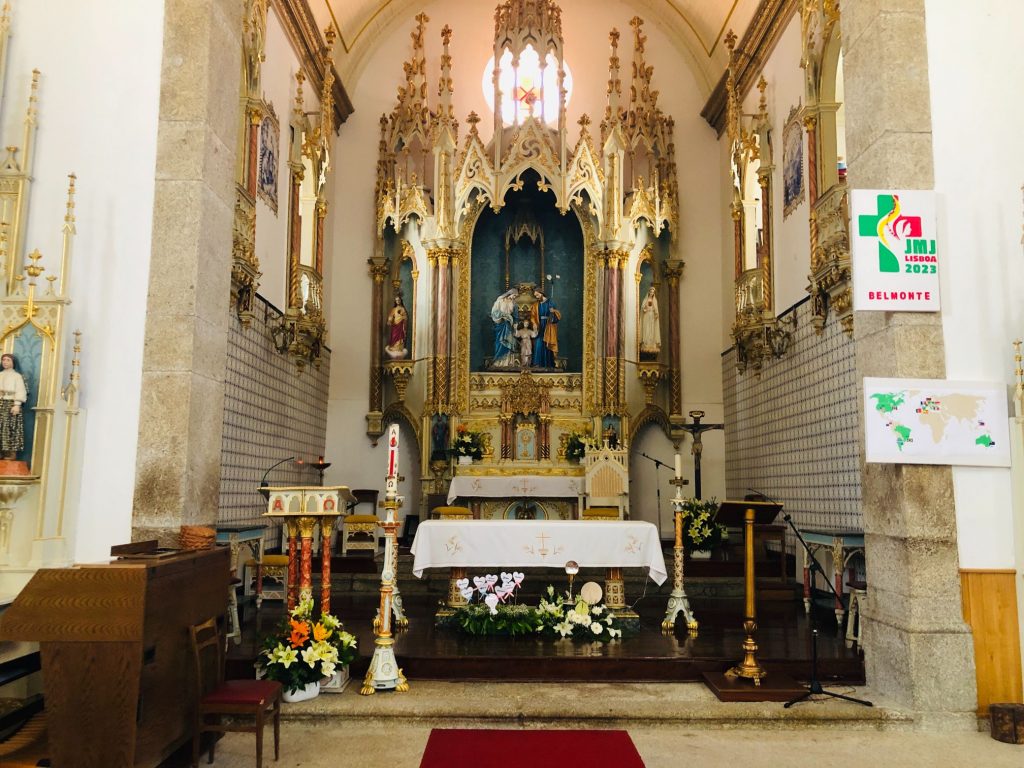


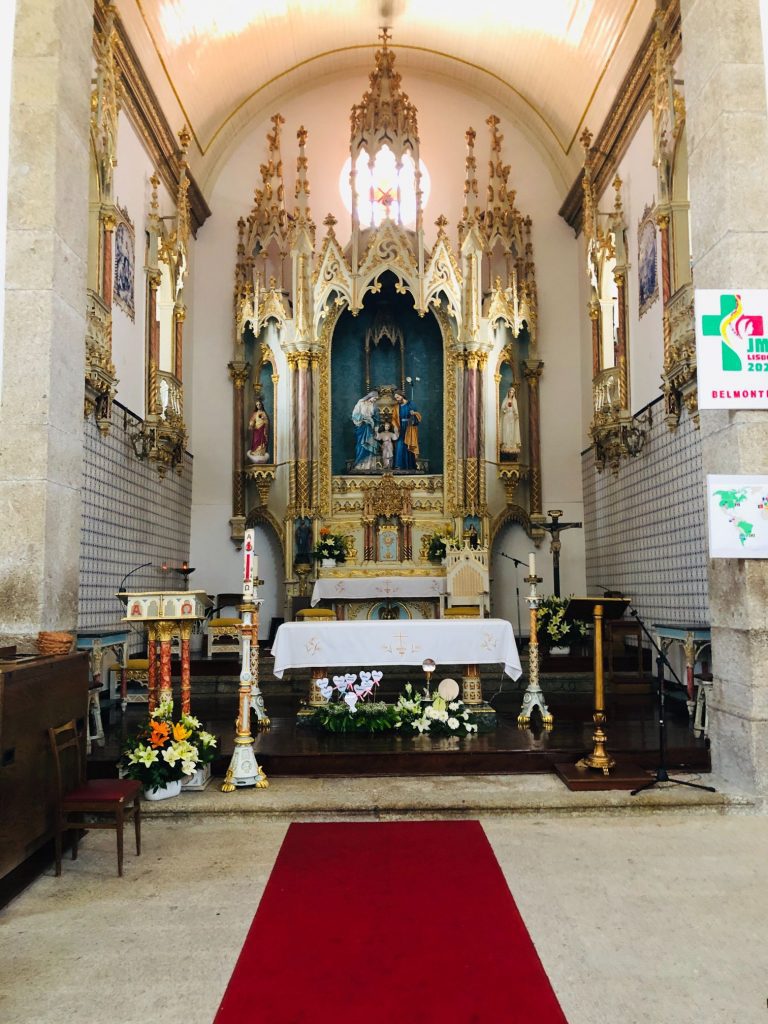


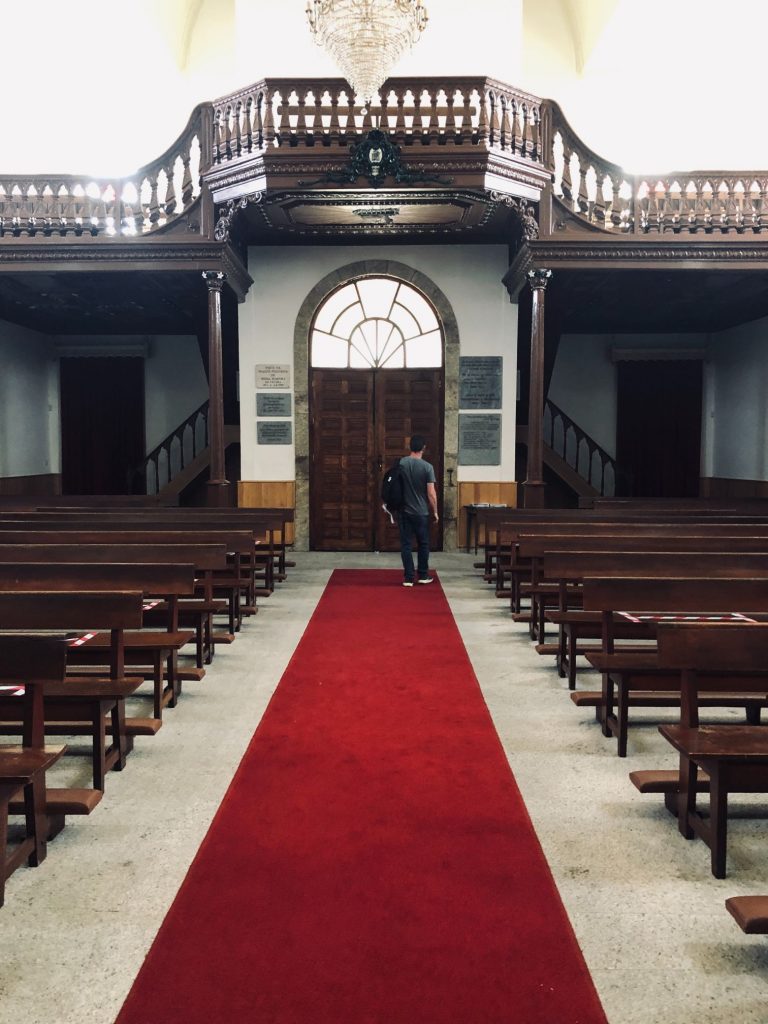


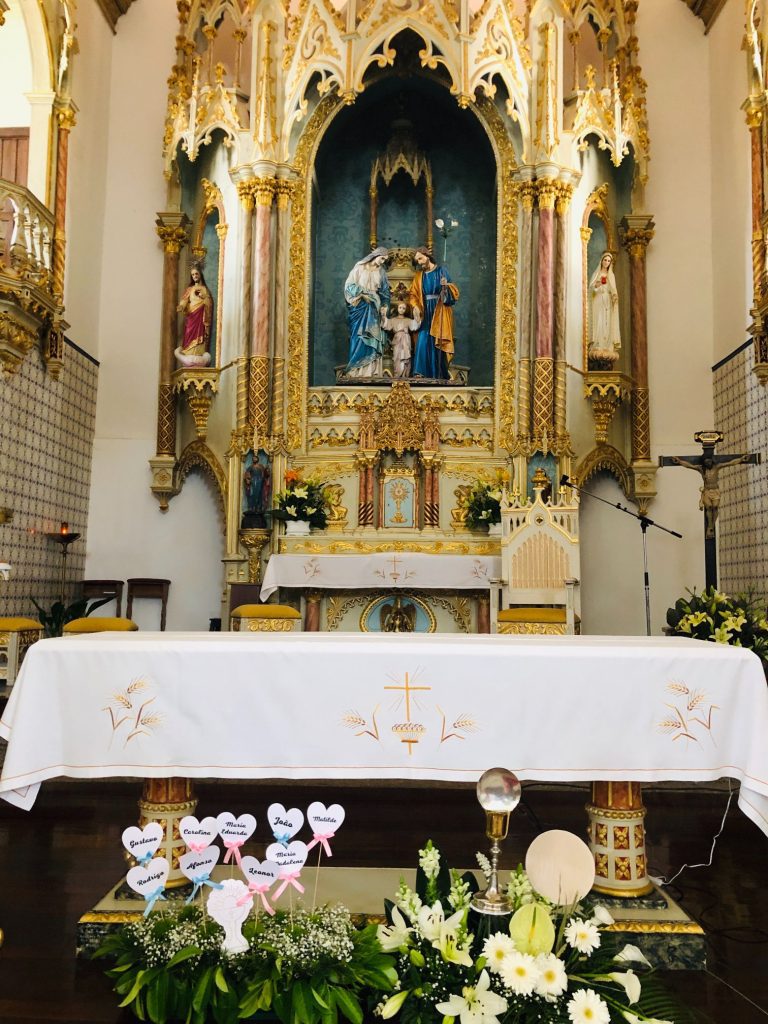


I LOVE all the traditional Portuguese baby names on the hearts 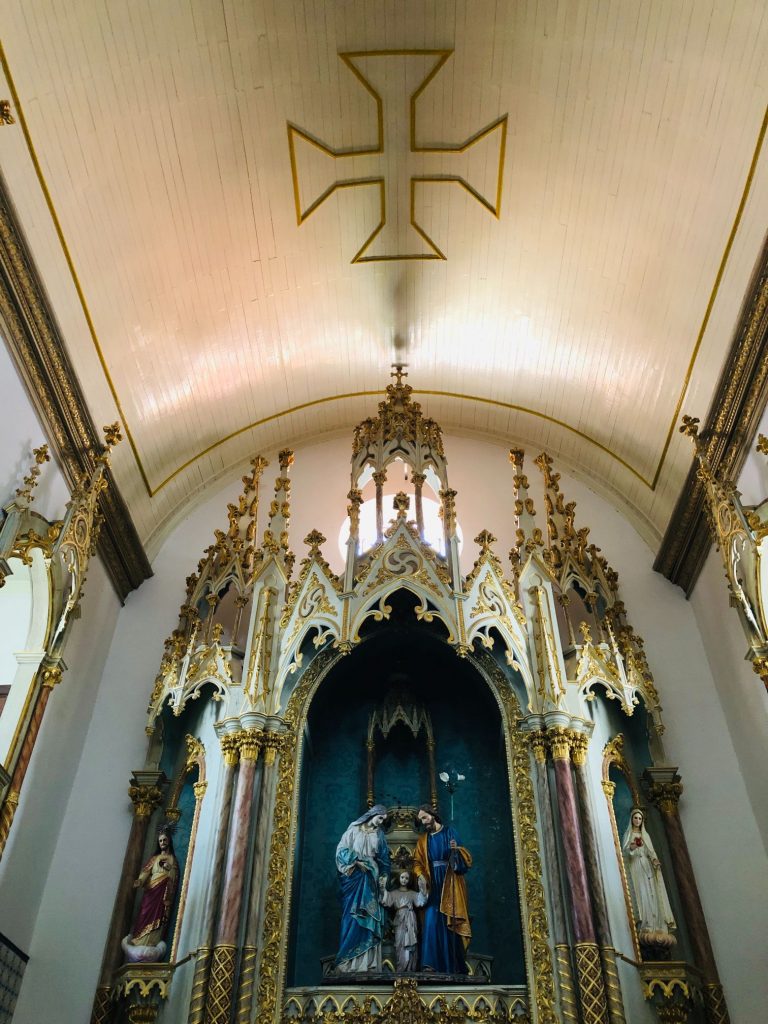


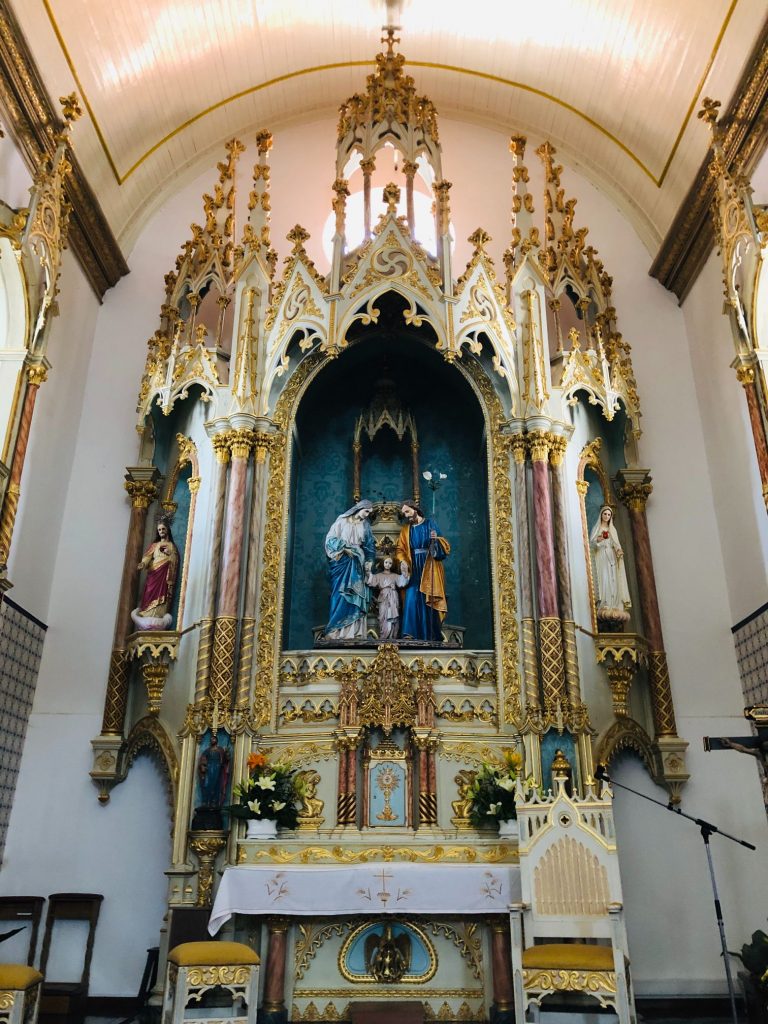


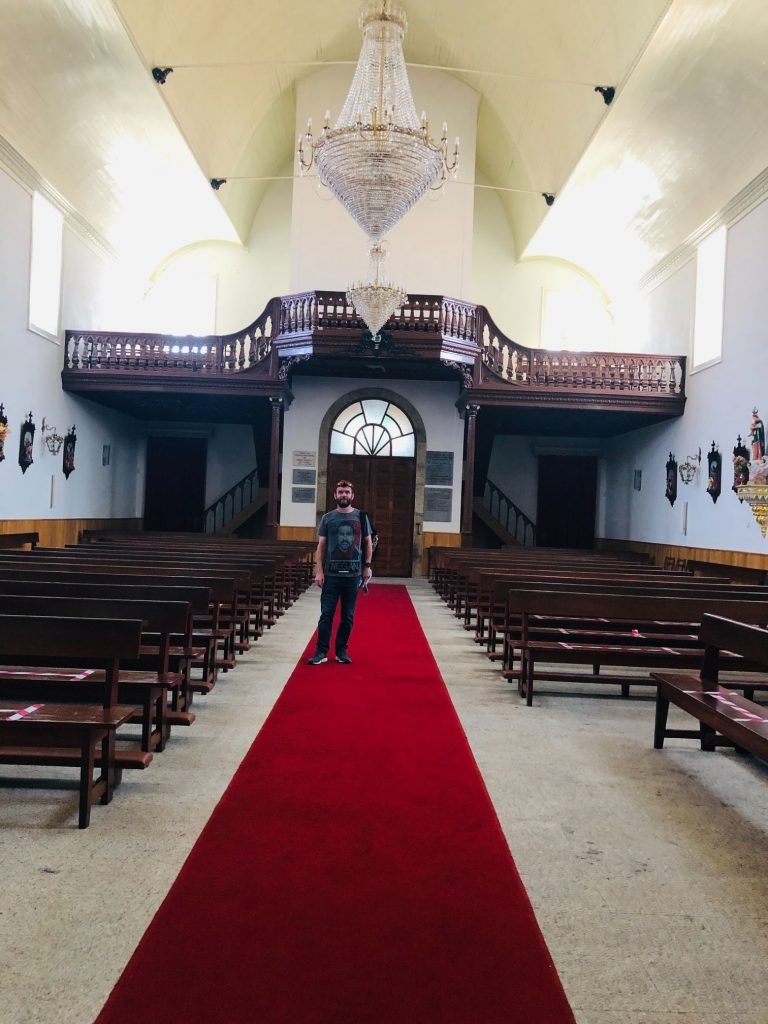


He had one job to do, stand in the middle of the red carpet, he FAILED (ha ha) 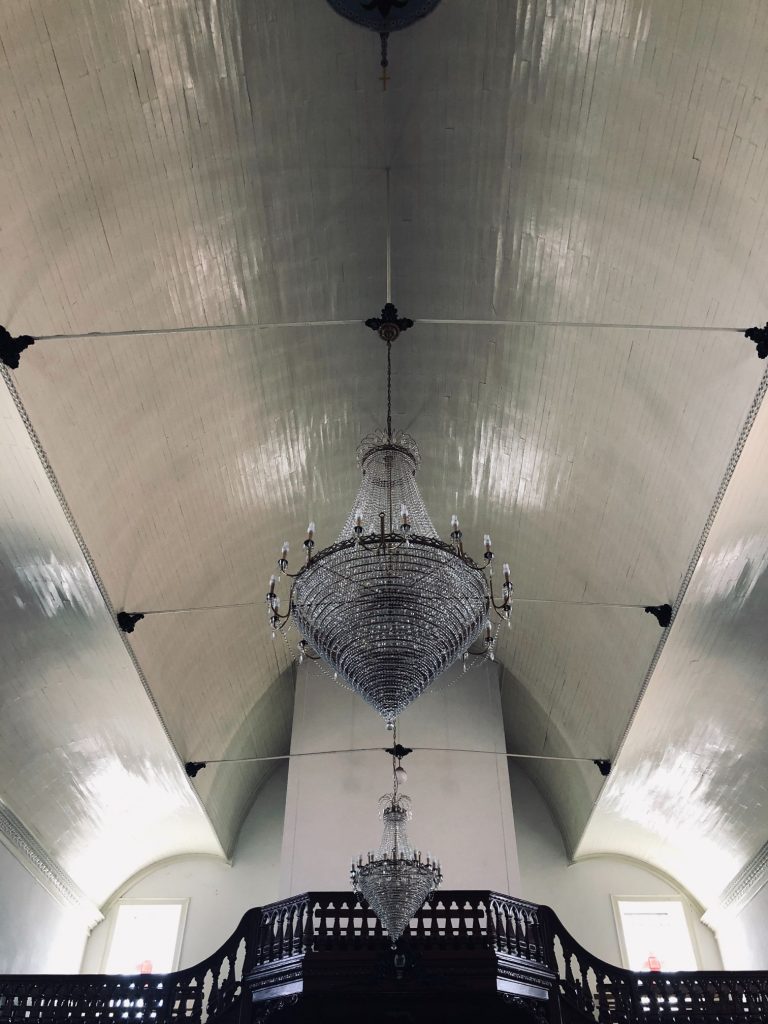


I might get a replica chandelier for my schist casa so I can swing from it naked (ha ha) 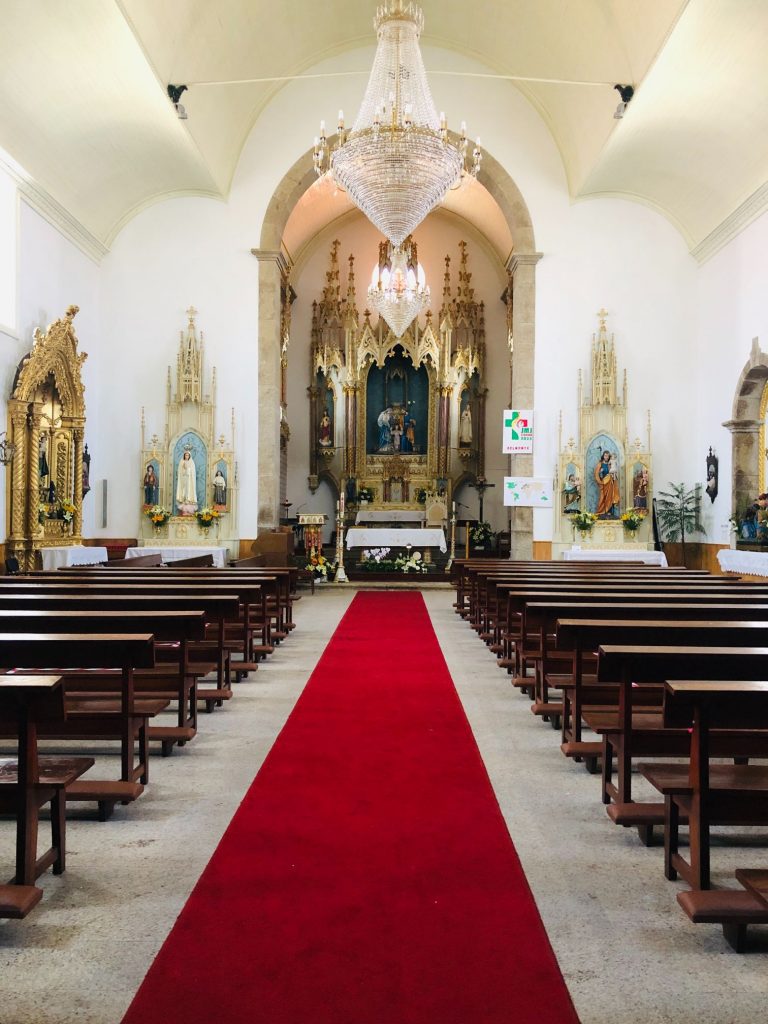


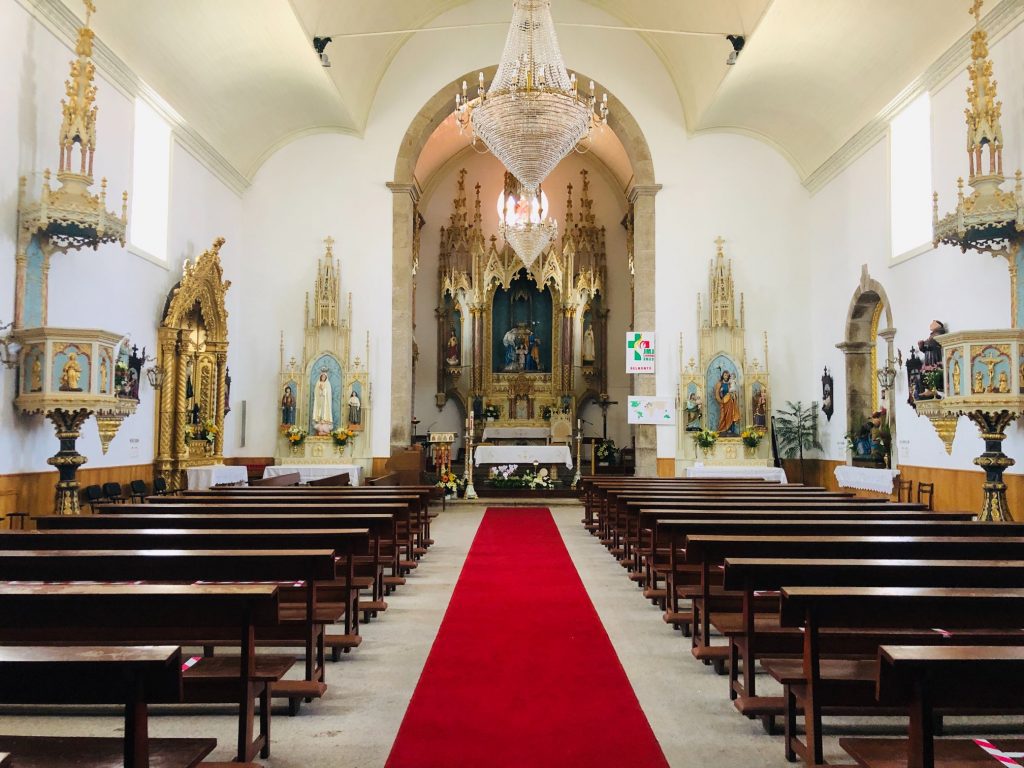


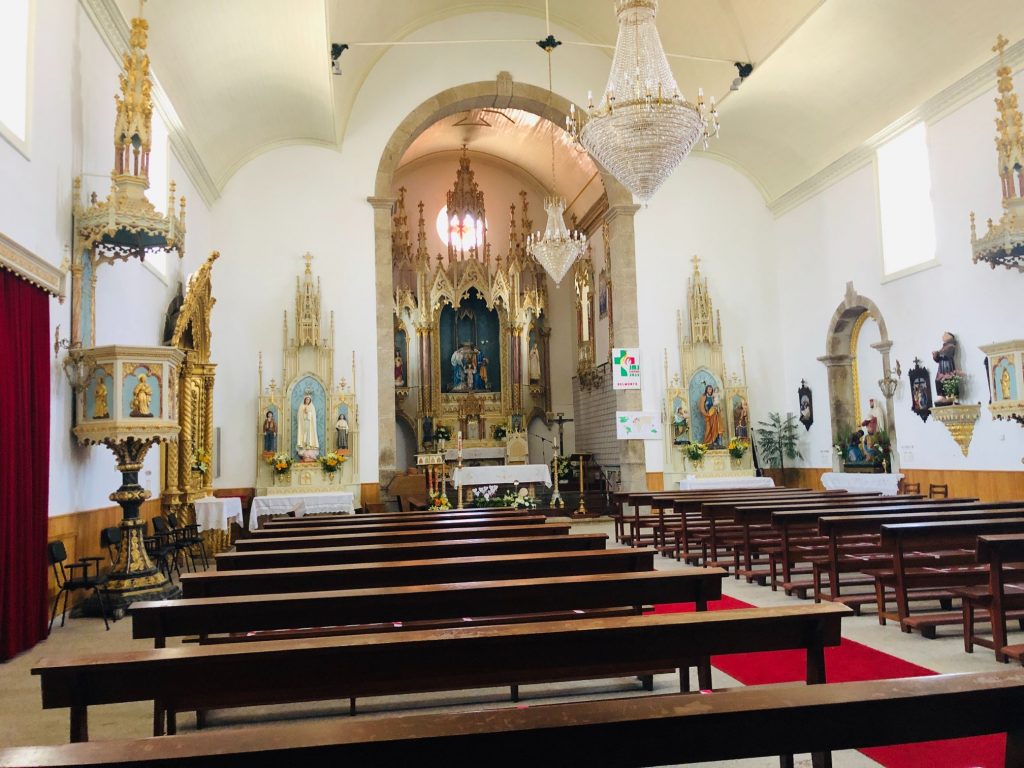


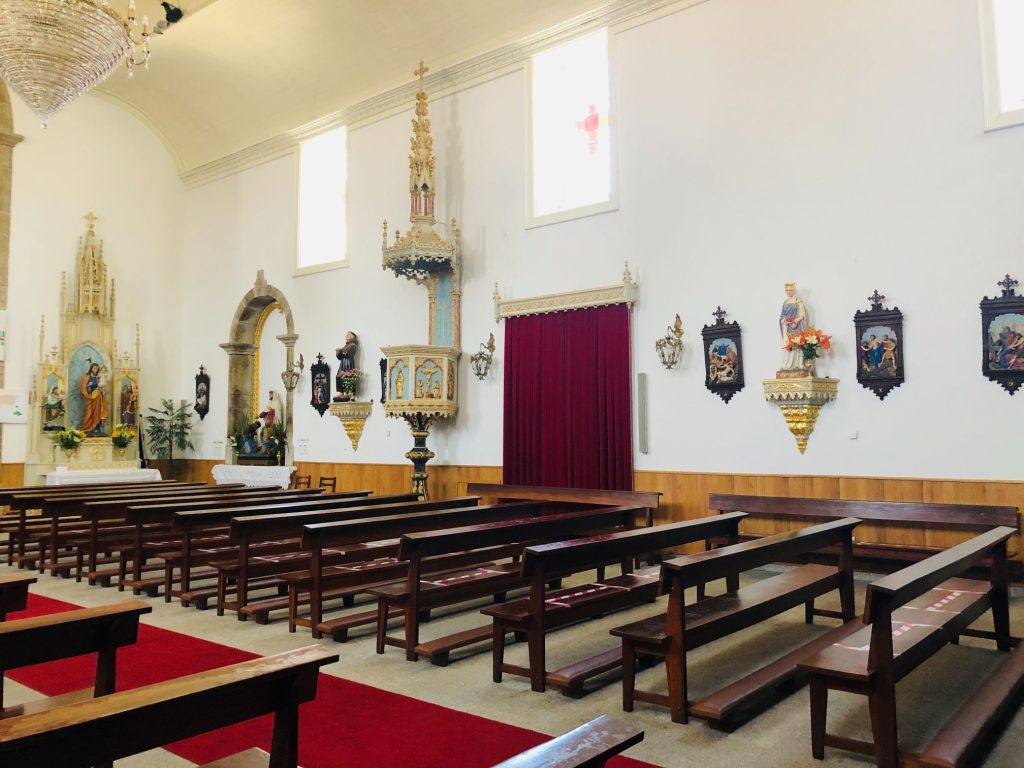


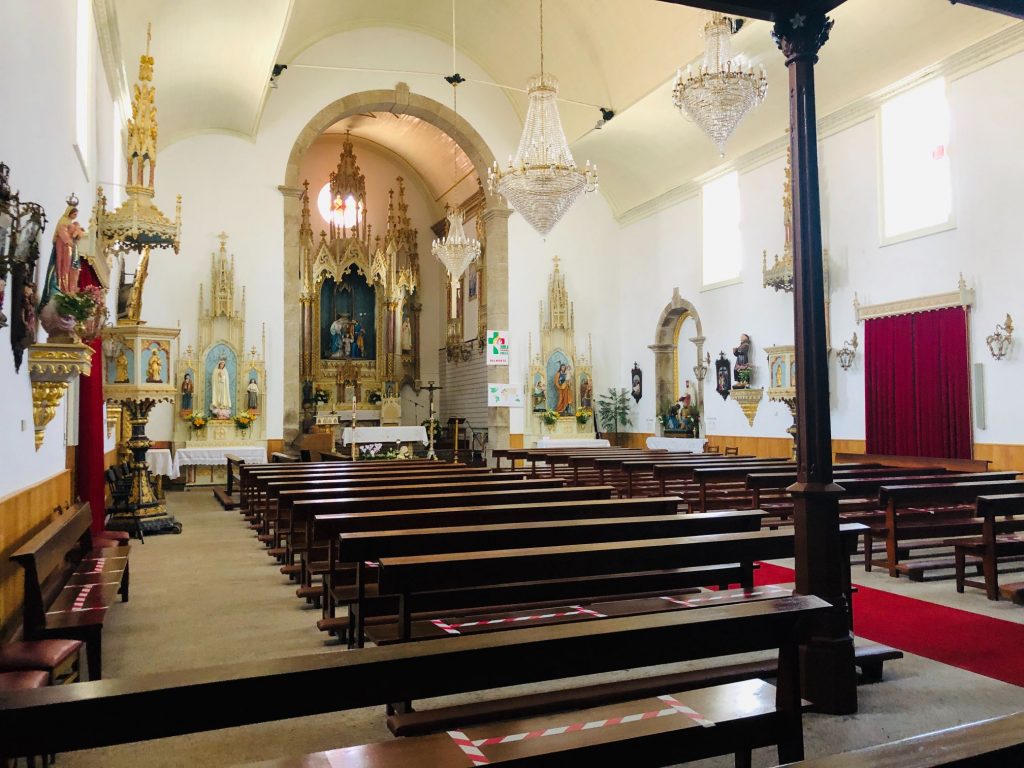


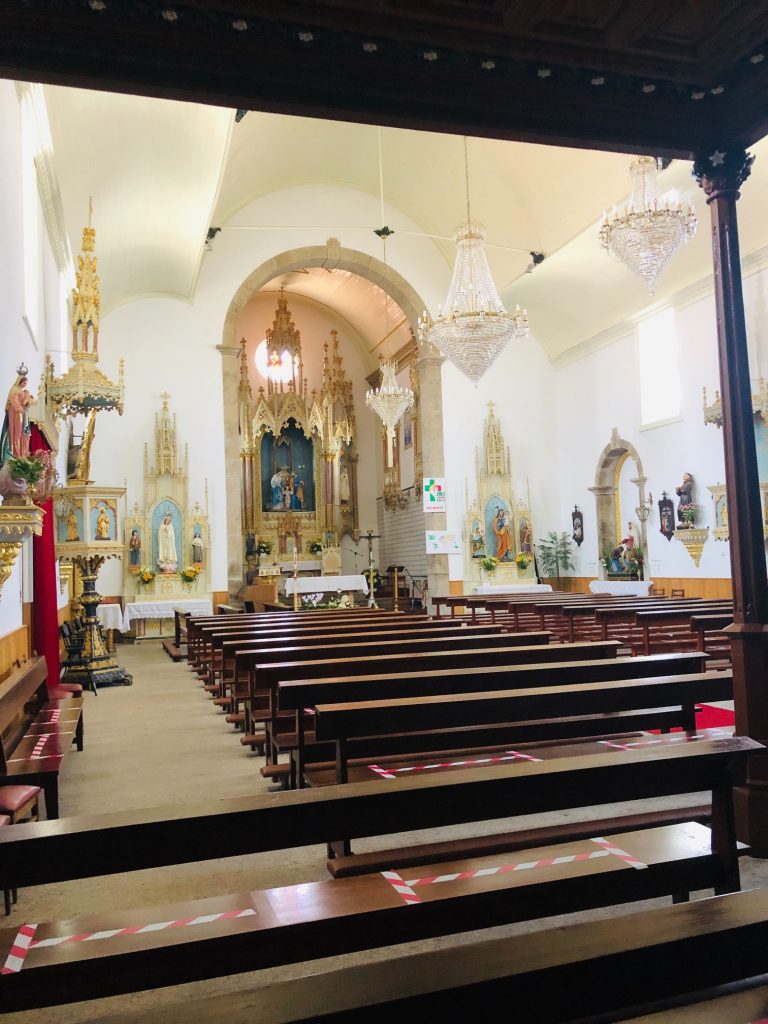


Sinagoga Bet Eliahu (Synagogue)
Near the castle is the synagogue, a modern building designed by architect Neves Dias. It was opened in 1996, 500 years after the edict of King Manuel I, which ordered the expulsion from the country of all Jews. The temple faces Jerusalem and displays the Menorah on the door and gates, the Star of David is also on the gates. Belmonte most likely had a synagogue in the 13th Century. There are no traces of it but its existence is proven by a stone in the Jewish Museum. In the side garden there is a hanukkah which is lit during the Jewish Festival.
I was shocked to discover that Jews in Portugal were forced to convert to Christianity and those that didn’t were deported and killed. Many Jews fled to other countries whilst others decided to continue to live in Portugal but to practice their faith in secret. I can’t imagine how painful it must have been to hide your own faith and all signs connected to it such as speaking Hebrew. Some even took on Christian names, intermarried and even stopped circumcising their children! In the 70’s following the revolution residents began practising their faith again publicly and as mentioned above, a Synagogue was opened in 1996.
The Synagogue was not open to the public when we visited which was a shame. I am unsure if it ever is open for tourists but I would have quite enjoyed viewing the inside. I had no intention of breaking and entering this time (ha ha). The name Bet Eliahu is a tribute to the Jew who ordered the construction of the Synagogue of Belmonte, being that “bet” translates to “house” in Hebrew.
Municipal Gardens
We stopped in the beautiful Municipal Gardens to read the map and it was a delightful green spot to enjoy our snack of our usual protein bar and can of coke. Look how beautiful this flowered archway is. I did a trio of poses underneath it (ha ha). Apologies for my facial expressions but there was one small group of scouts causing mayhem in the park so it was mildly awkward to pose for photos. The leader was a little frazzled and quite frankly looked like she was about to lose her shit with the little monsters, I don’t blame her (ha ha). The map is a bit crumpled as it keeps yo-yoing in and out of hubby’s back pocket then he sits on it. It is being held in the photo below by one of my lady hands and one of hubby’s manly hands, just in case you thought I had one ugly monster man hand, I don’t. The only manly thing I have is my moustache (ha ha).
Grub & Graffiti
I found a nice covered shaded picnic area for our lunch. There are several cafes and restaurants if you fancy sampling traditional cuisine. Due to a tight schedule and my unpredictable IBS stomach we opted for our regular picnic. I always stumble across some offensive graffiti, this time it is in English but at least they ended it with a heart (ha ha).
Restaurant Brasão (Coat of Arms Restaurant)
We walked far so stopped at a restaurant for a well deserved treat of ice cream and coffee mid afternoon. I found a tranquil spot under the shade of an umbrella and sat outside right next to the Zeca Afonsa statue.
Estátua Zeca Afonso (Statue)
José Manuel Cerqueira Afonso dos Santos, a Portuguese singer and composer is better known by his nickname Zeca Afonso. Personally I don’t blame the bloke, he has a crazy long name that could give my daughter’s champion long Portuguese name a run for her money “Teanna Bonita Harmony Monteiro-De-Lima”. We just call her “T”. (ha ha). After returning from Mozambique, he lived in Belmonte for a few years with his grandmother and an uncle. The uncle, who was Mayor at the time, was a sympathiser of the German causes that dragged the world into the Second World War. There is a plaque in Largo Afonso Costa, Belmonte, in tribute to the poet, composer and singer, recording the fact that this land was his land, too, and in the end it had an influence on him and the undeniable figure of the Portuguese popular musician he became. Hubby dared me to recreate the pose holding my ice cream in the air but I chickened out as there were people sitting at the next table and I didn’t want to look like the idiot tourist Brit so I told him to grow up (ha ha).
Other Delights of Belmonte
There are many more delights to view and whilst most folk were having their lunch in one of the many cafes and restaurants, we chose to wander around the old Jewish Quarter and other areas viewing all the points of interest listed in my itinerary. There are many Artesanato shops selling souvenirs and local handmade produce. The whole of Belmonte is stunning and all the houses are lined with terracotta potted flowers bursting with colour. There are many AL (Accommodation) options if you wish to stay overnight.
We had such a laugh exploring Belmonte. There is so much to see and when you buy your ticket you receive a map which is handy if you don’t like to research places in advance like me. My OCD makes me a fantastic planner and I just have to see everything. I am the “Princess Planner” and hubby is the “Man Map Reader” so we make the perfect team. It was a roasty toasty hot day and hubby got a bit sunburnt as he left the sunscreen (cream) in the car again.
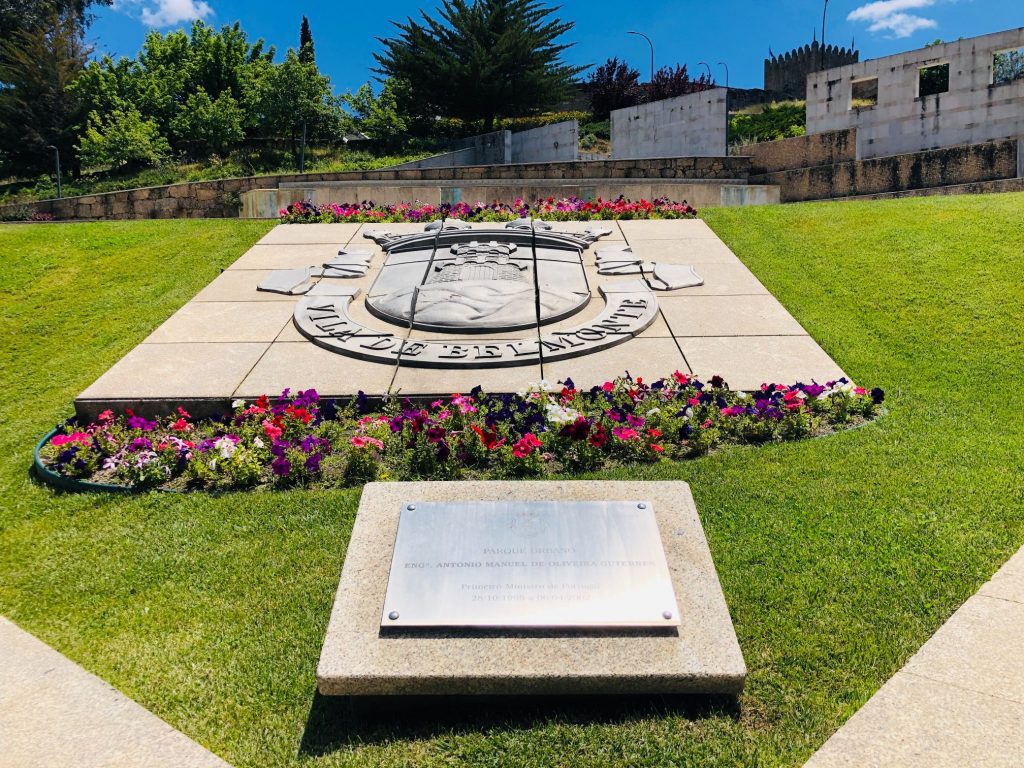


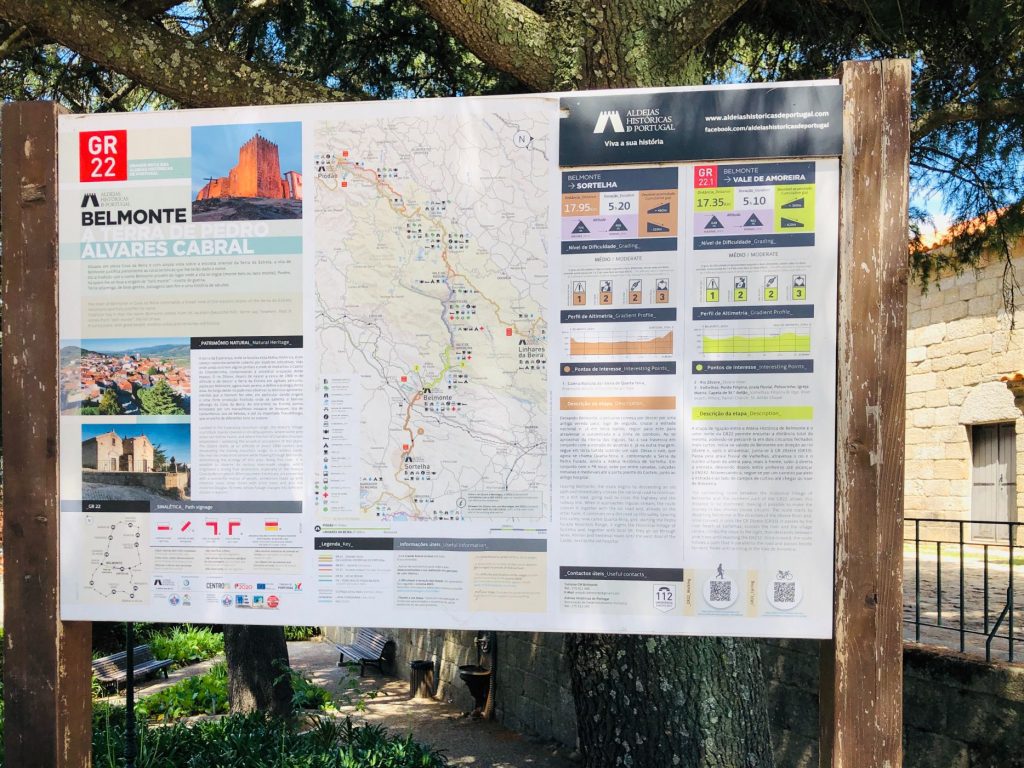


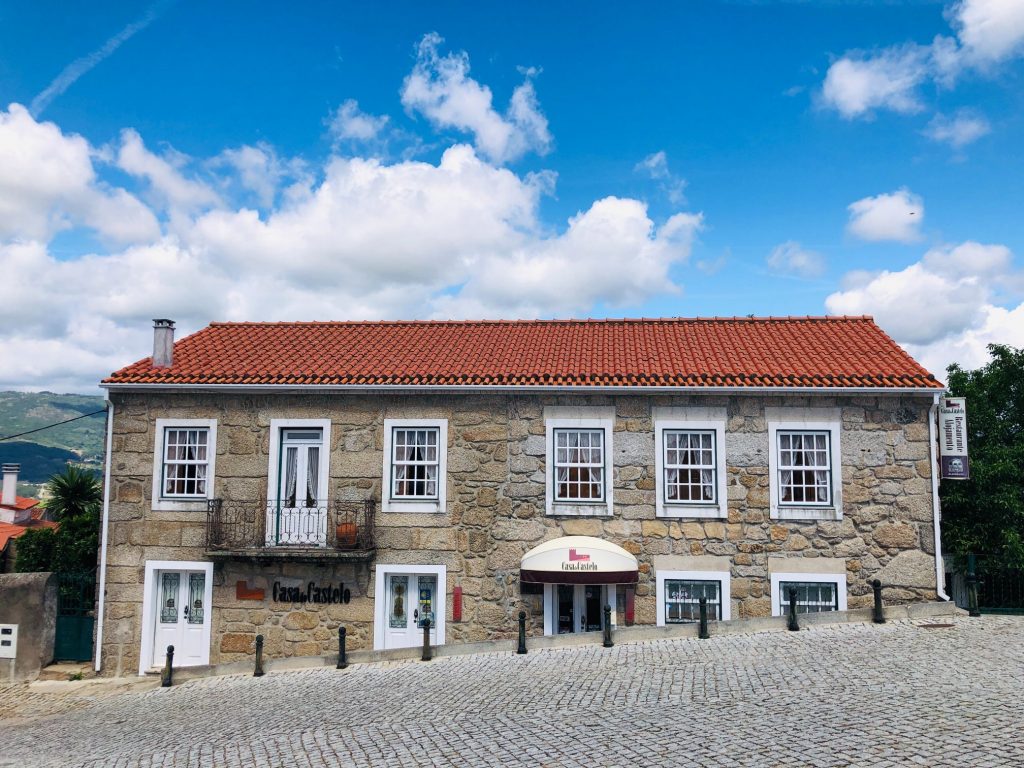


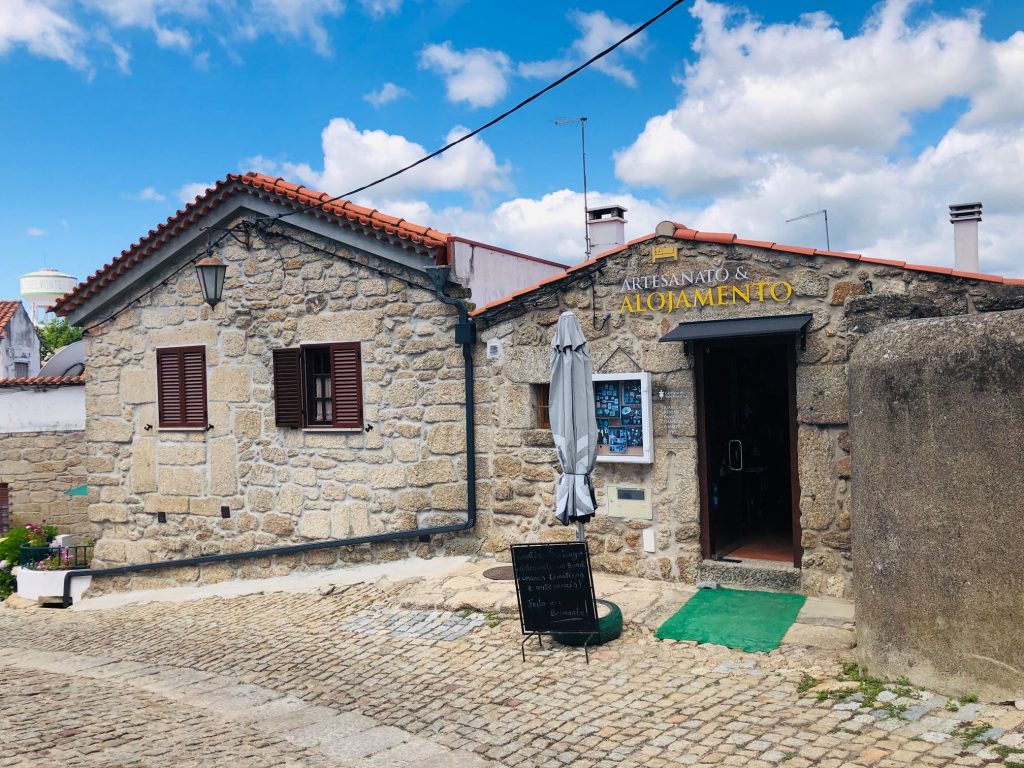


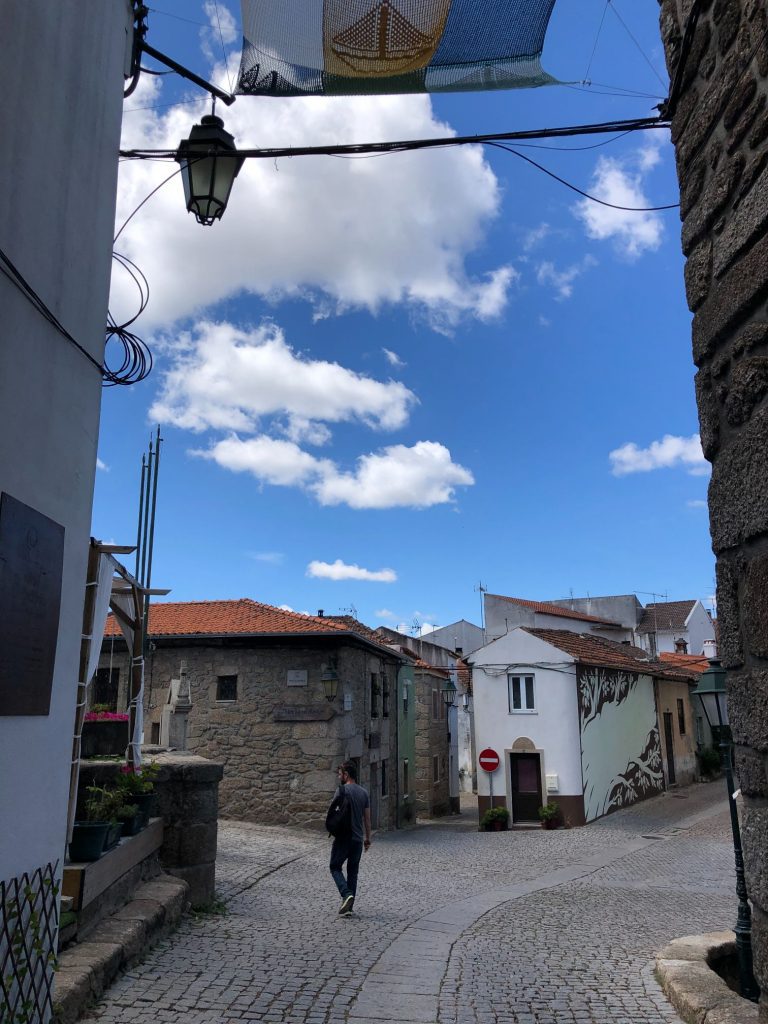


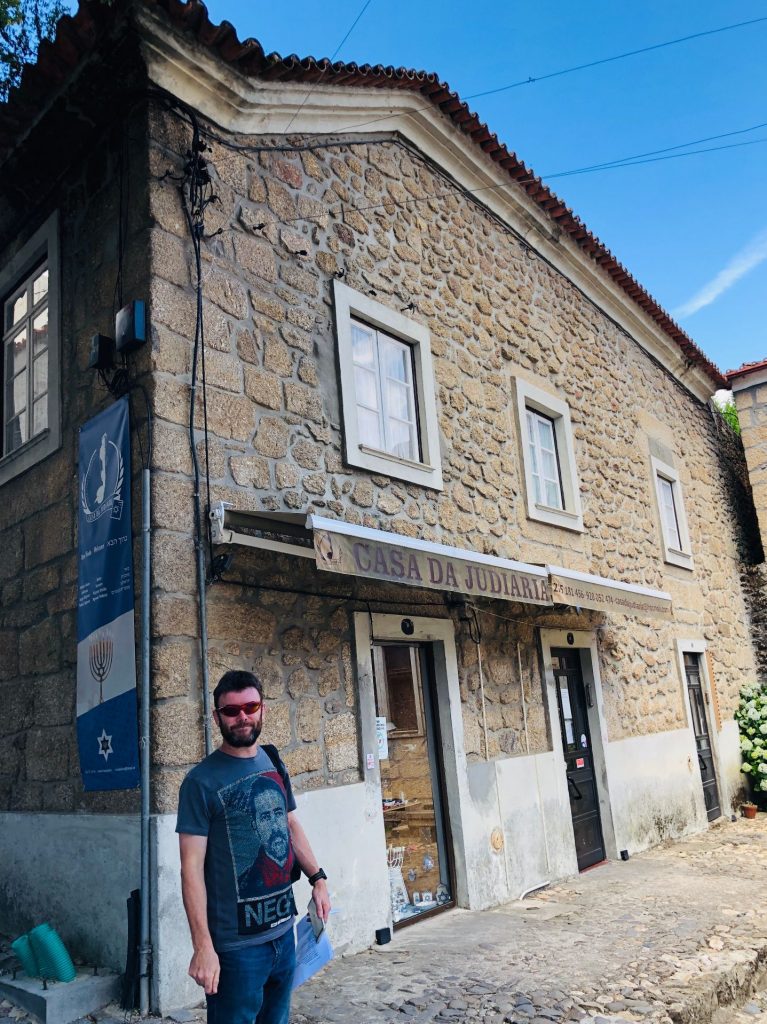


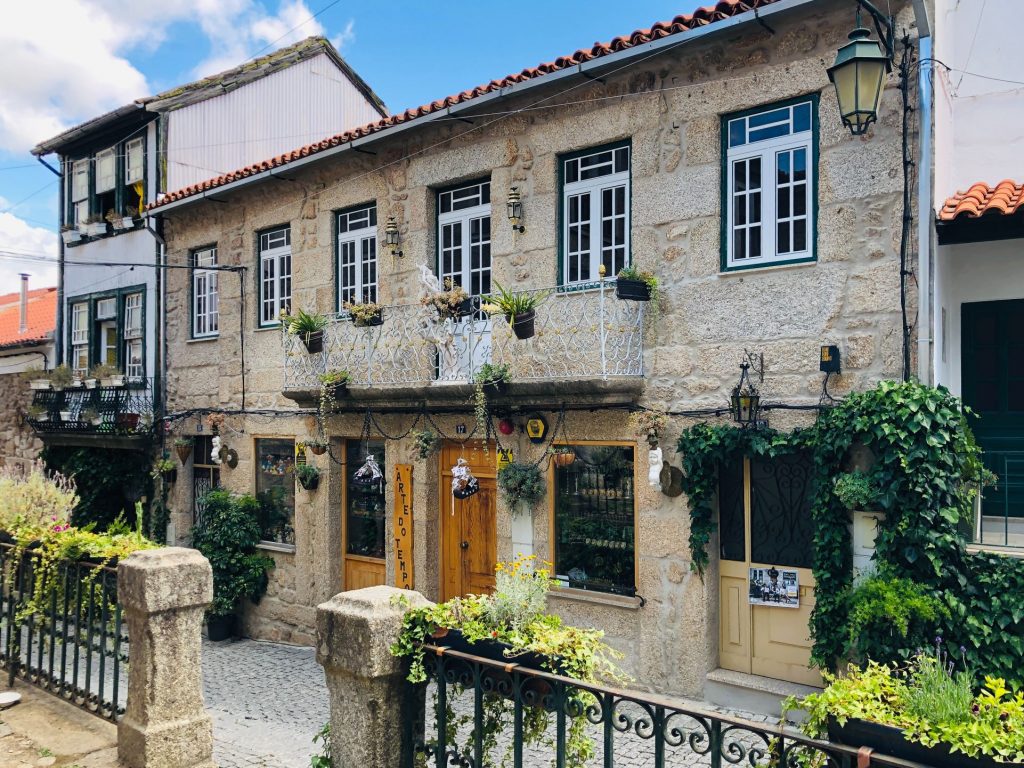


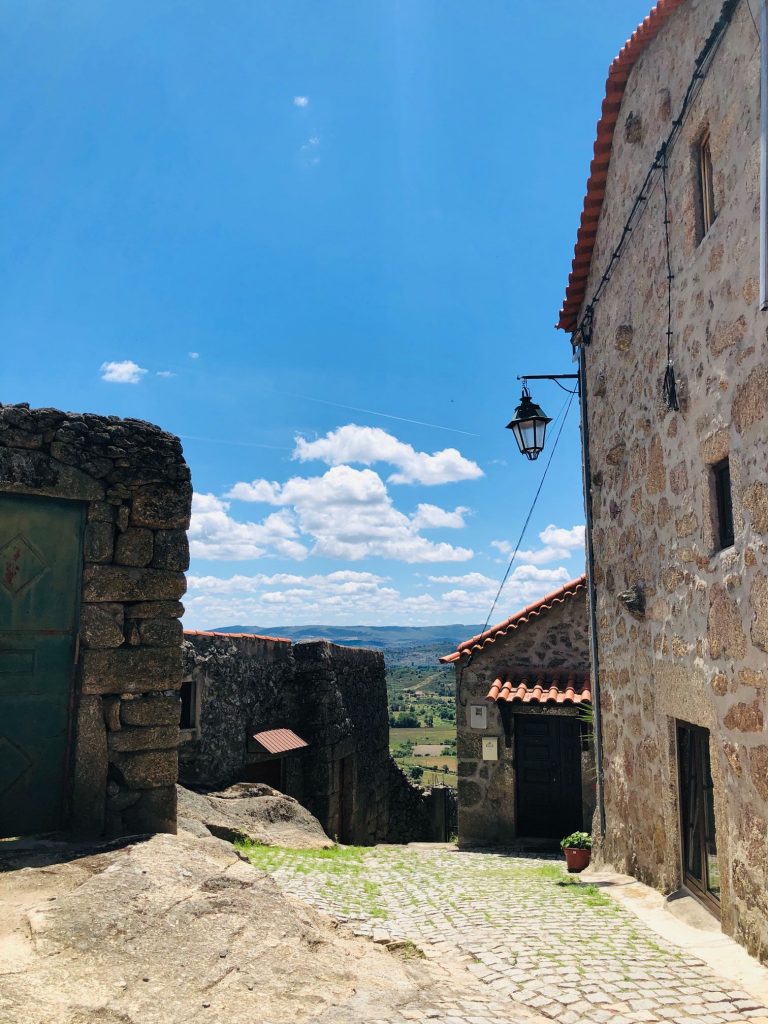


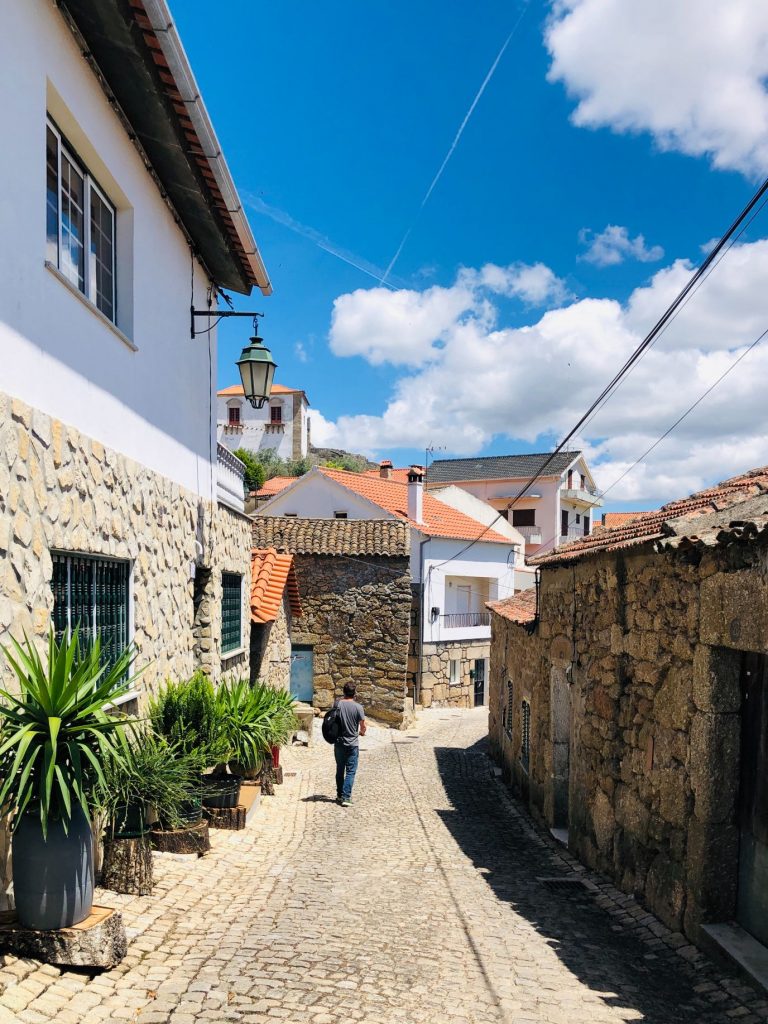


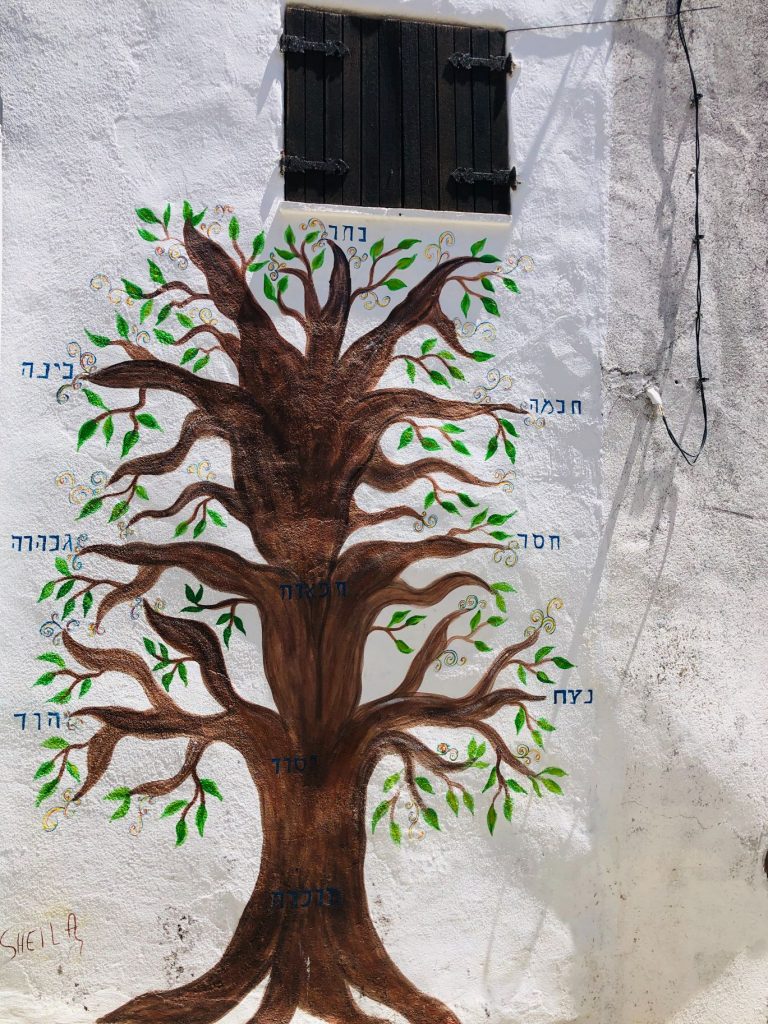


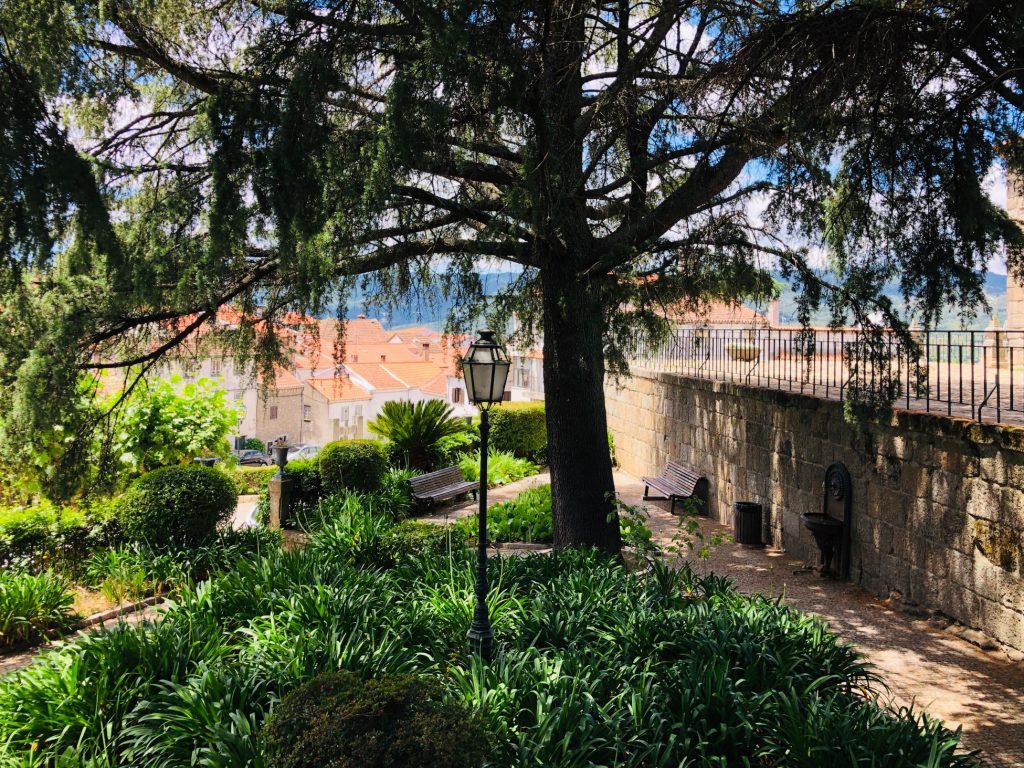


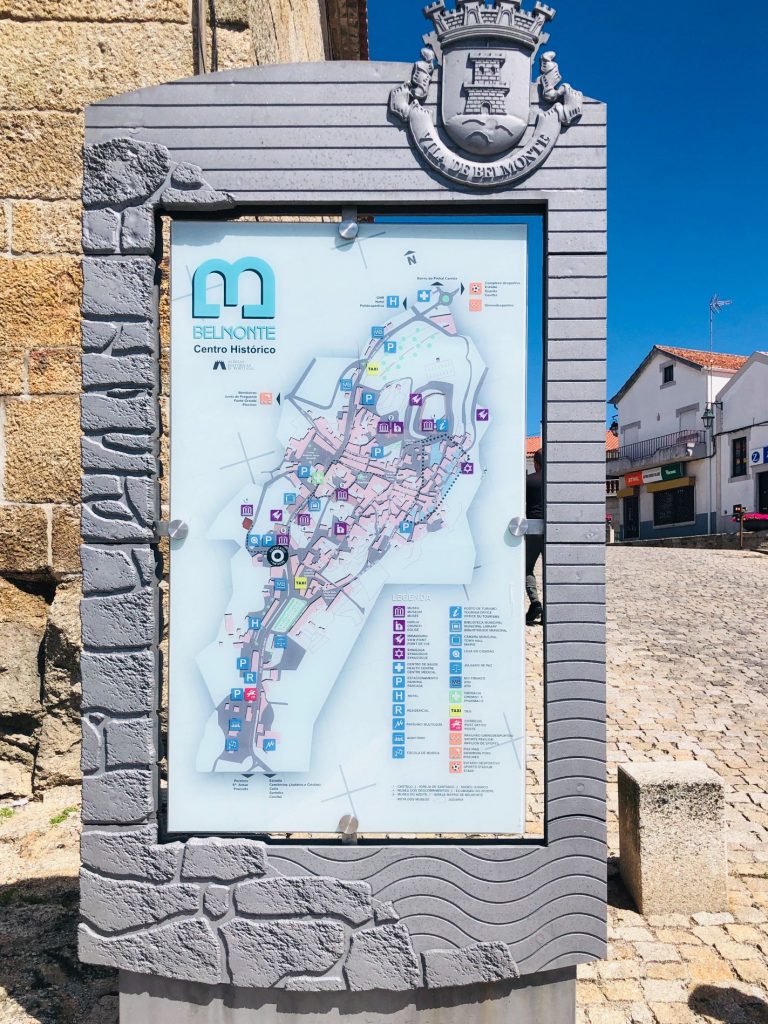


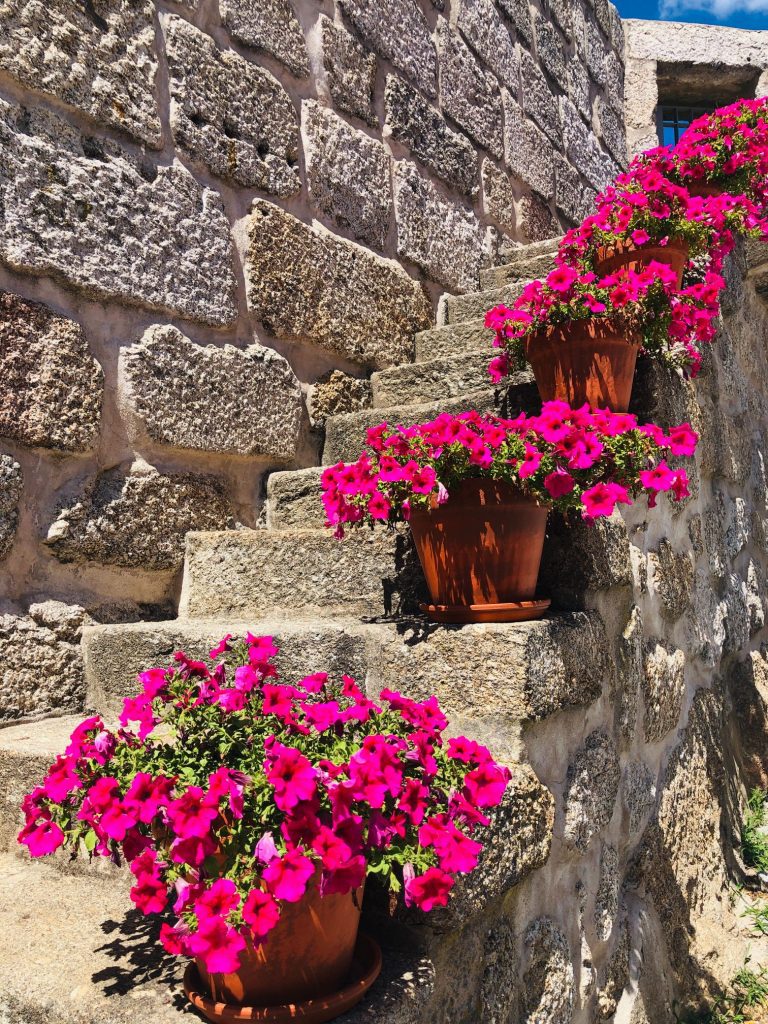


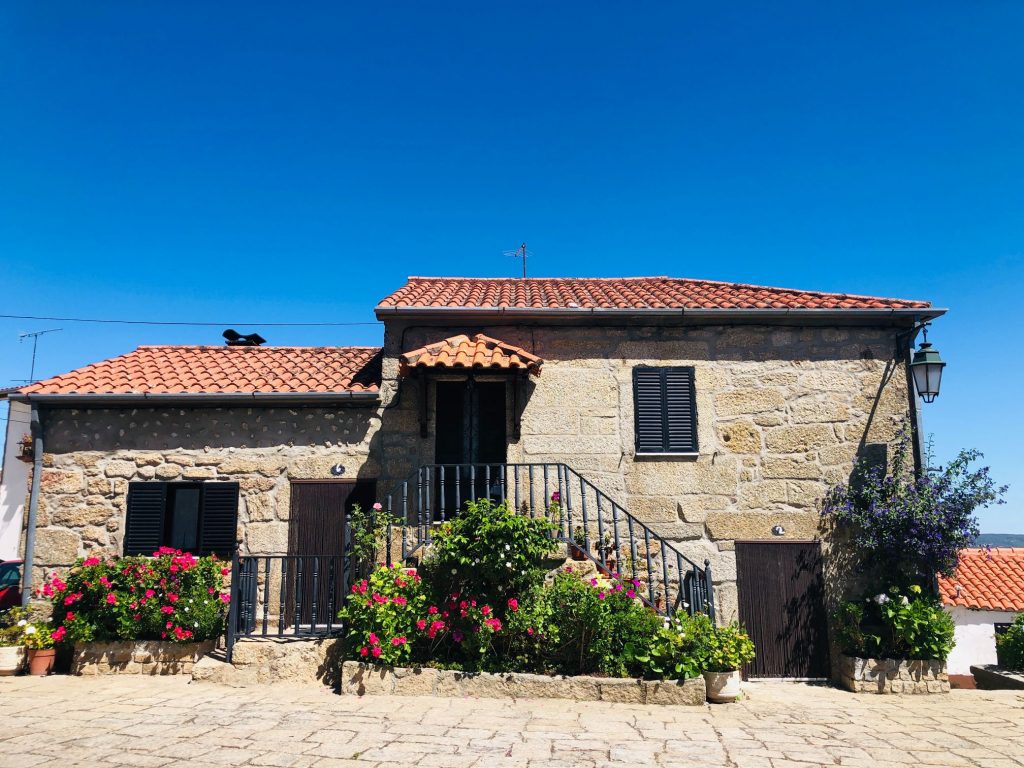


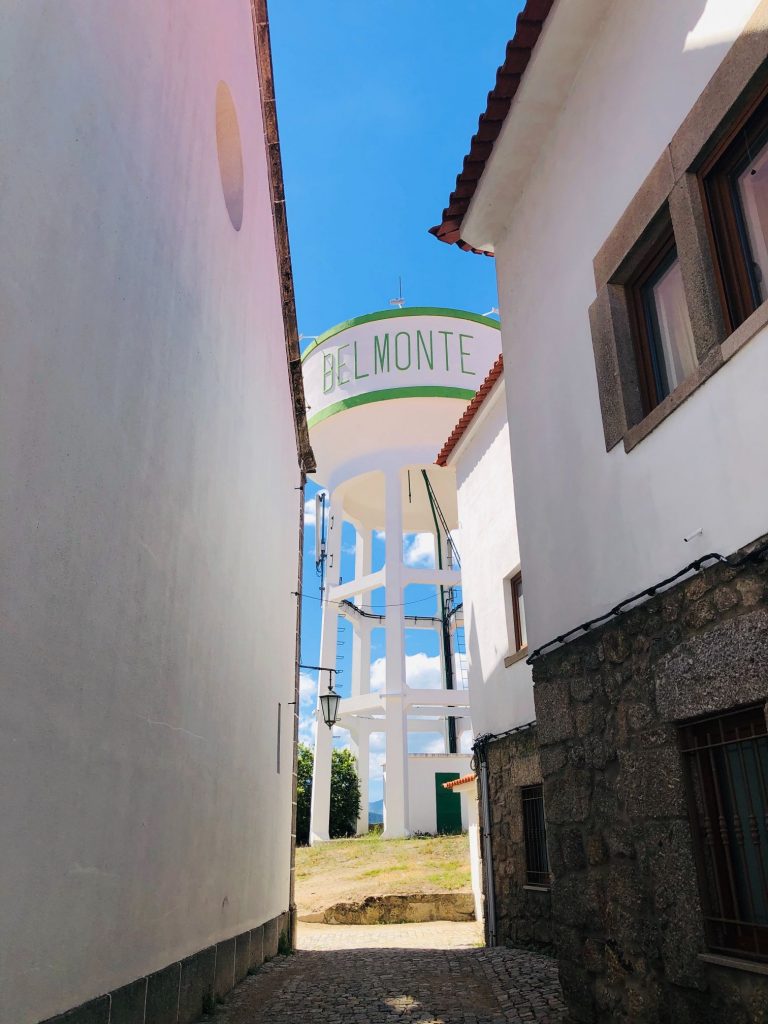


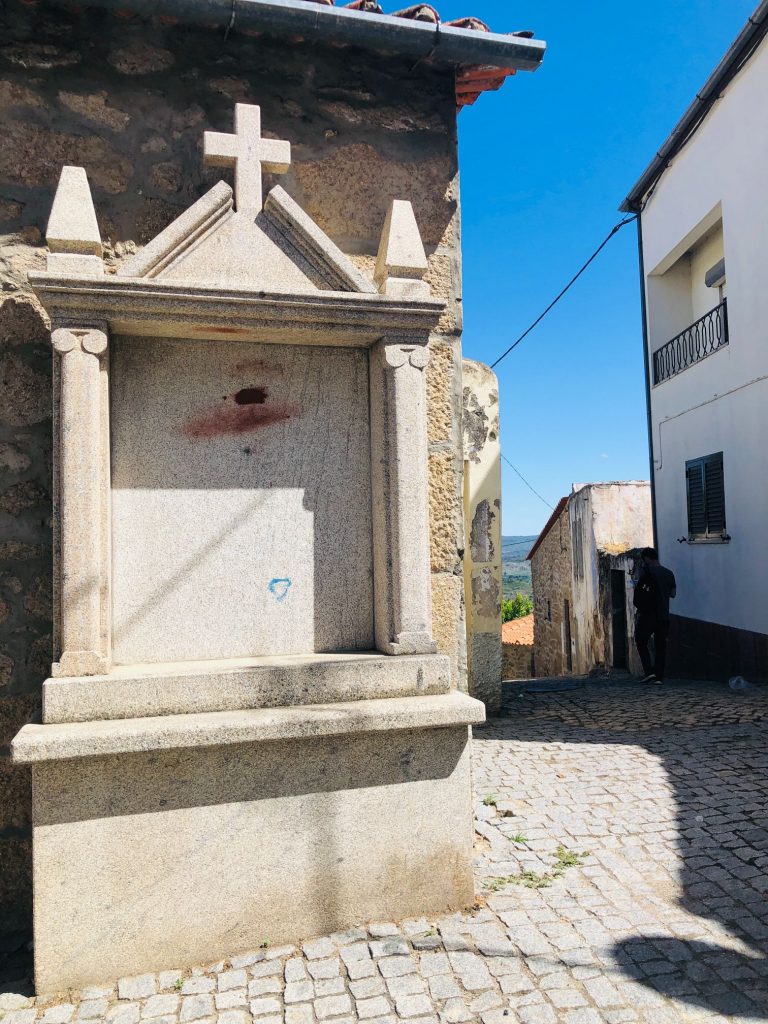


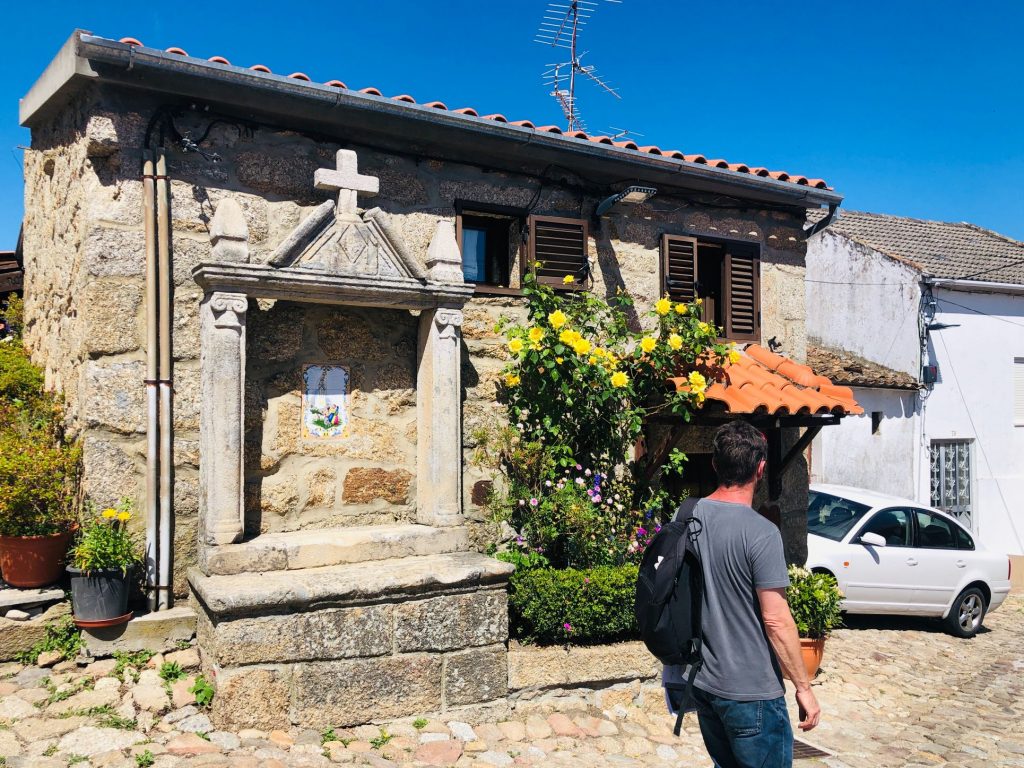


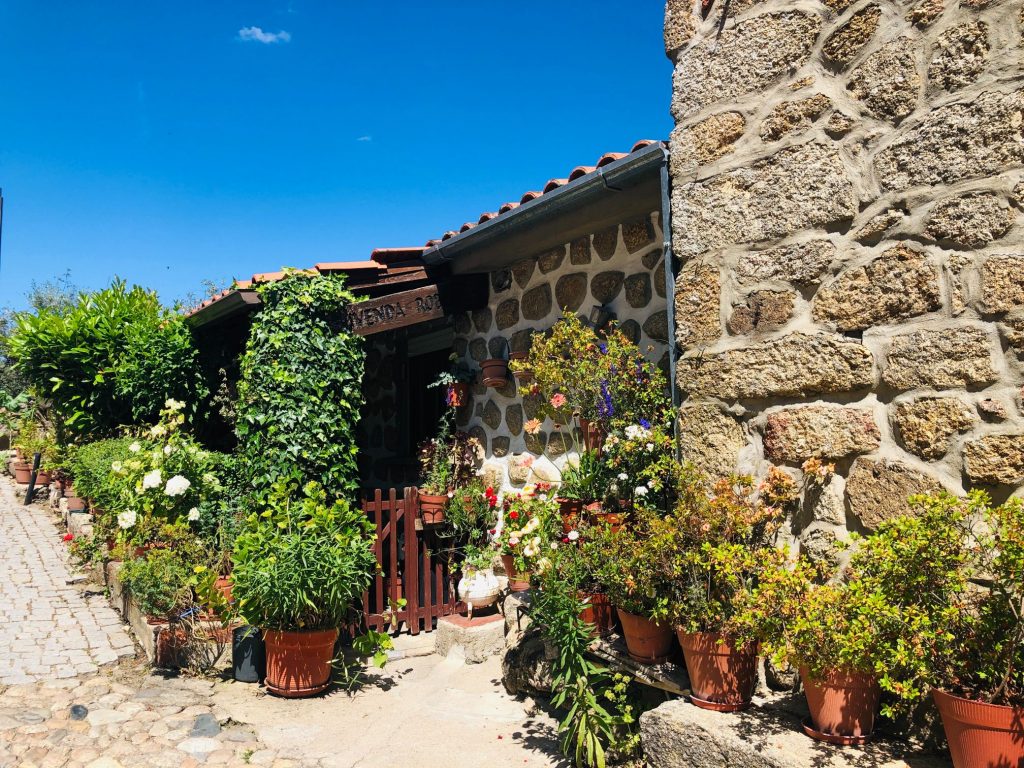


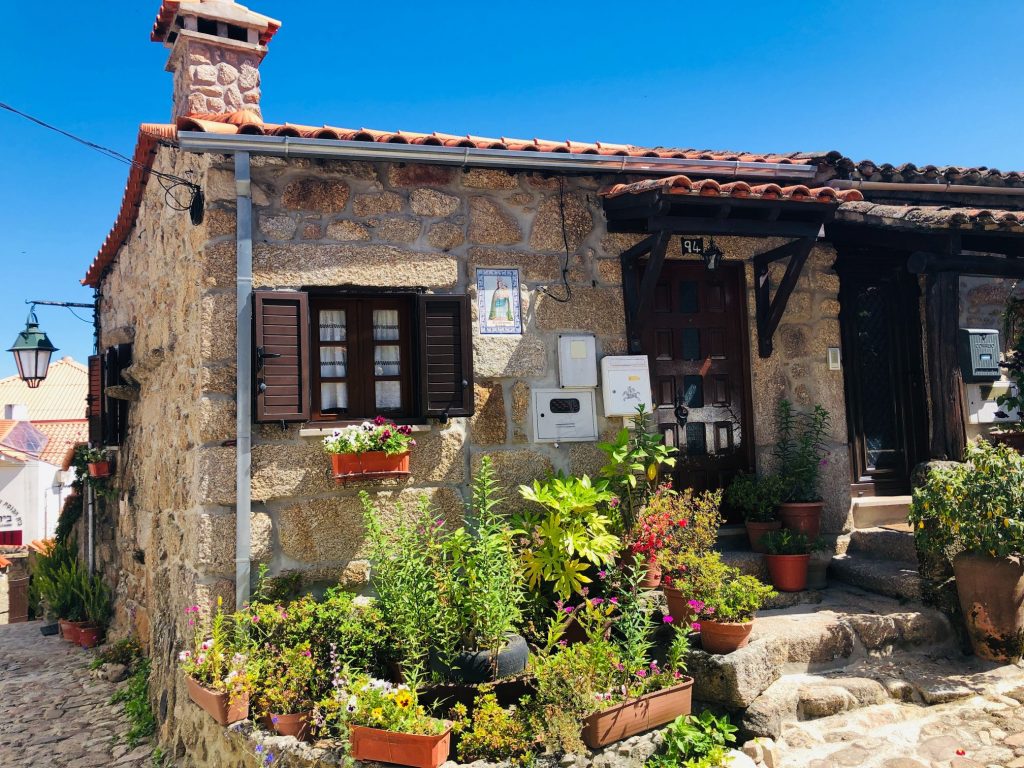


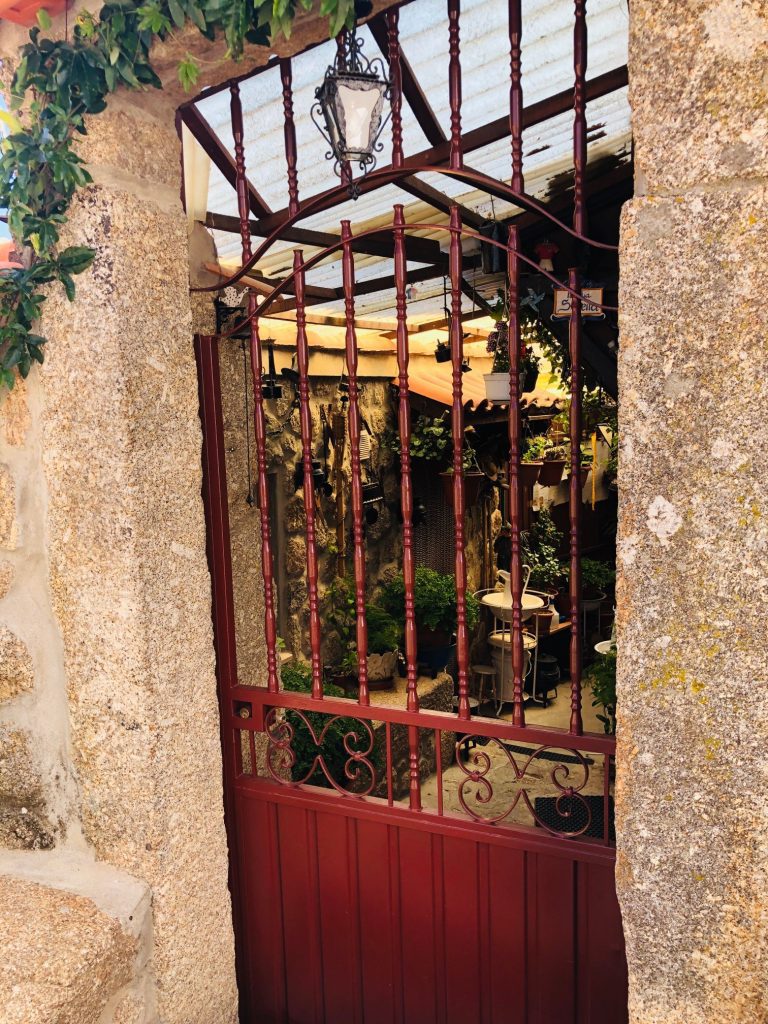


This house was so cute it had a little covered area bursting full of plants and flowers, everyone seems to take pride in their little casa 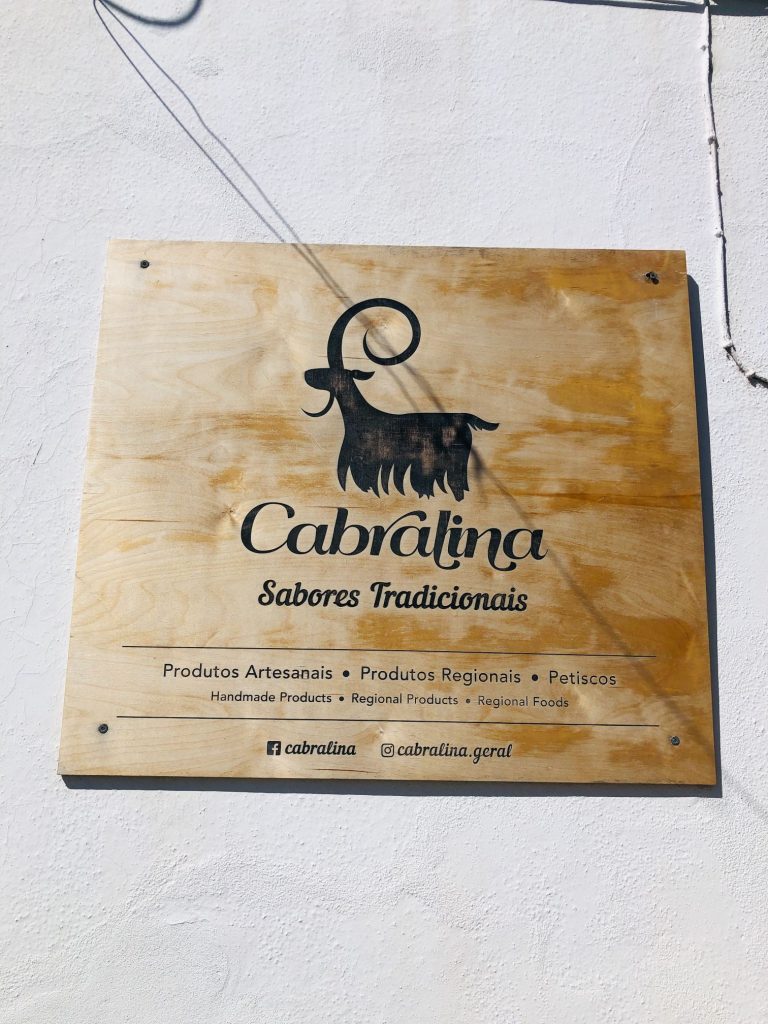


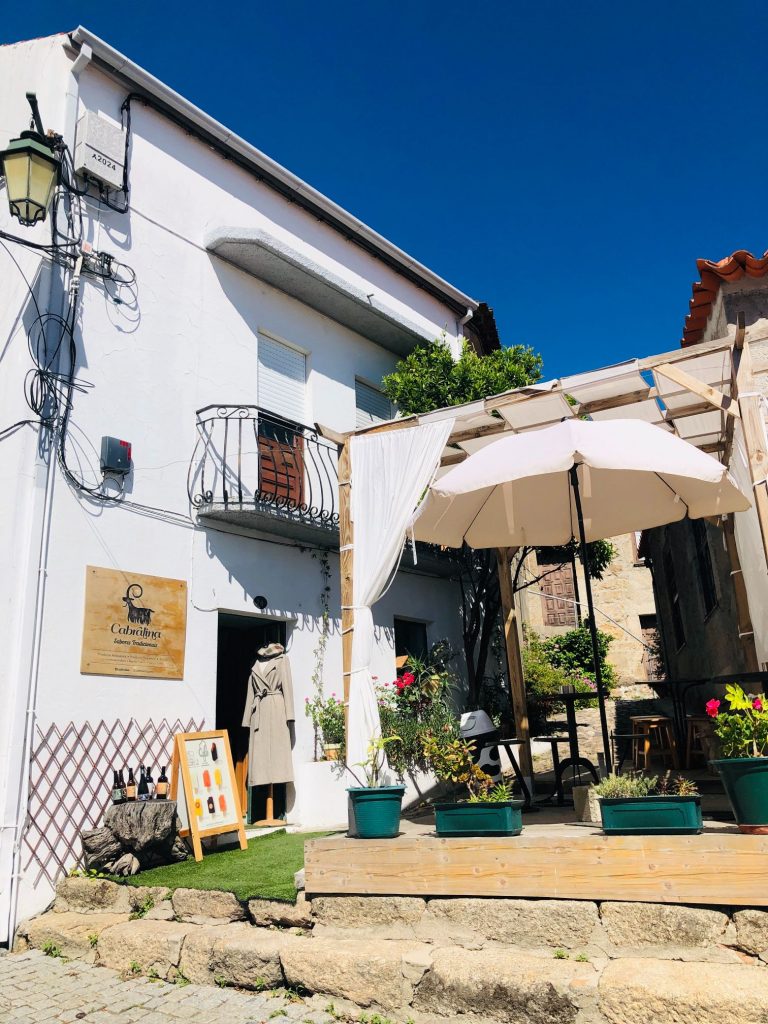


If you LOVE craft beers make sure you make a pit stop here! 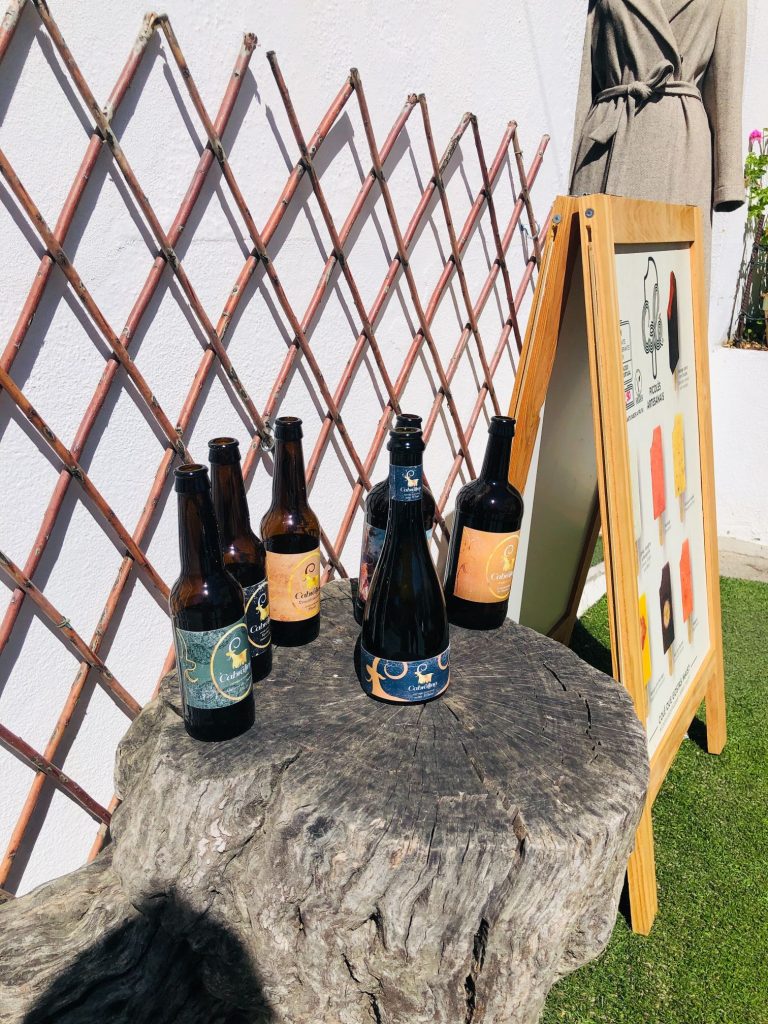


Down the Rabbit Hole – Bizarre but Beautiful
Hubby’s eagle eye caught the attention of a weird and wonderful Antiques Shop. We stepped through the doors and I was instantly transported into a children’s storybook such as Alice in Wonderland or The Chronicles of Narnia. What a hidden gem! There were so many treasures and I found the perfect outfit to wear and surprise hubby with when he returns home from his next U.K trip. I am going for the “Sexy Goddess” look (ha ha). I also found 2 colourful masks for next year’s Carnival/Mardi Gras. There was a statue of a black man which was all a bit weird. Luckily I didn’t see any Golliwogs so I didn’t feel it necessary to have any random racism rants. I have saved the best for last – The store had a white real live pet rabbit! Yes, a RABBIT! WTF, I don’t know why or how but it was one of the highlights of my day as we adore rabbits. It was crazy to see as usually the Portuguese love to eat rabbit. I think it would have made a BFF for our bunny boy Milo but I wasn’t sure if it was a male or female and there was no way I was about to lift it to look at its undercarriage because it was monster size with scary pink eyes (ha ha). I am sure this is not going to be the last weird thing we see here. It wasn’t as on the doorstep of one house I found a statue/bust! Well actually it was more of a mannequin torso but it made us laugh (ha ha).
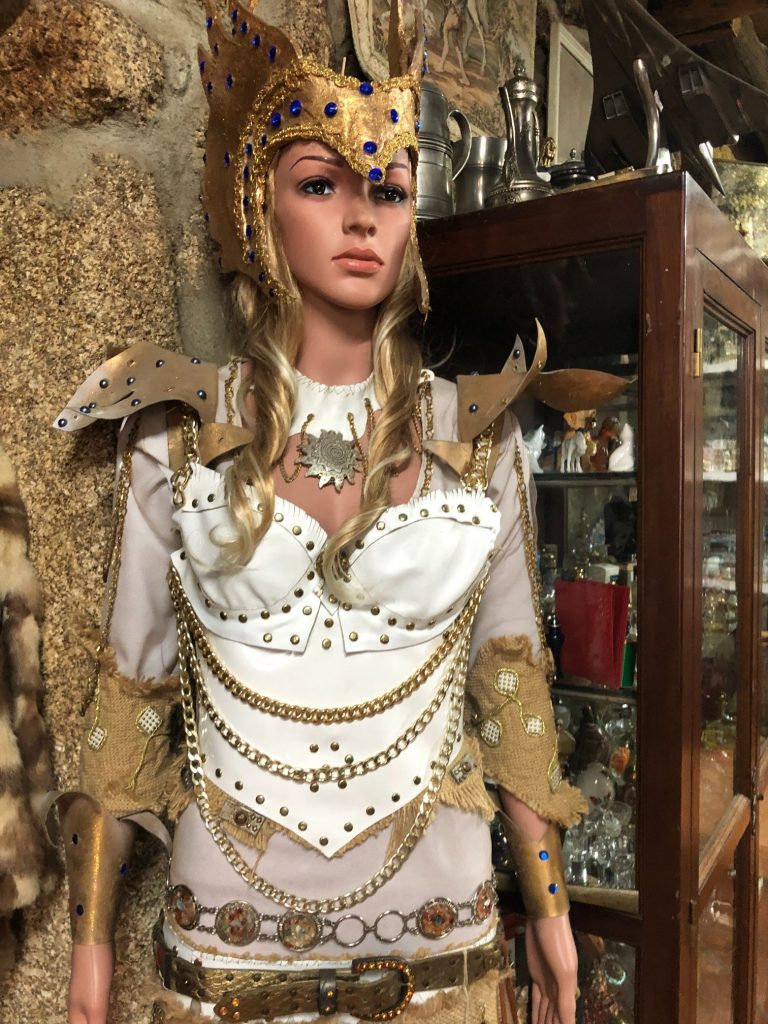


My Sexy Goddess Costume, I hope it fits (ha ha) 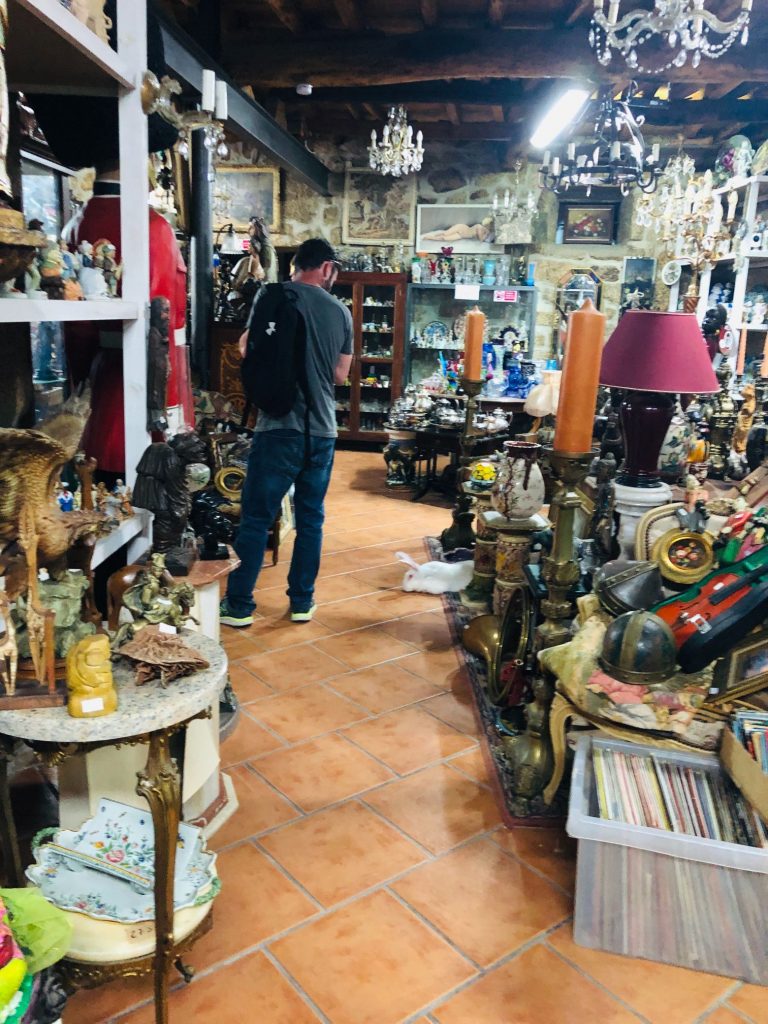


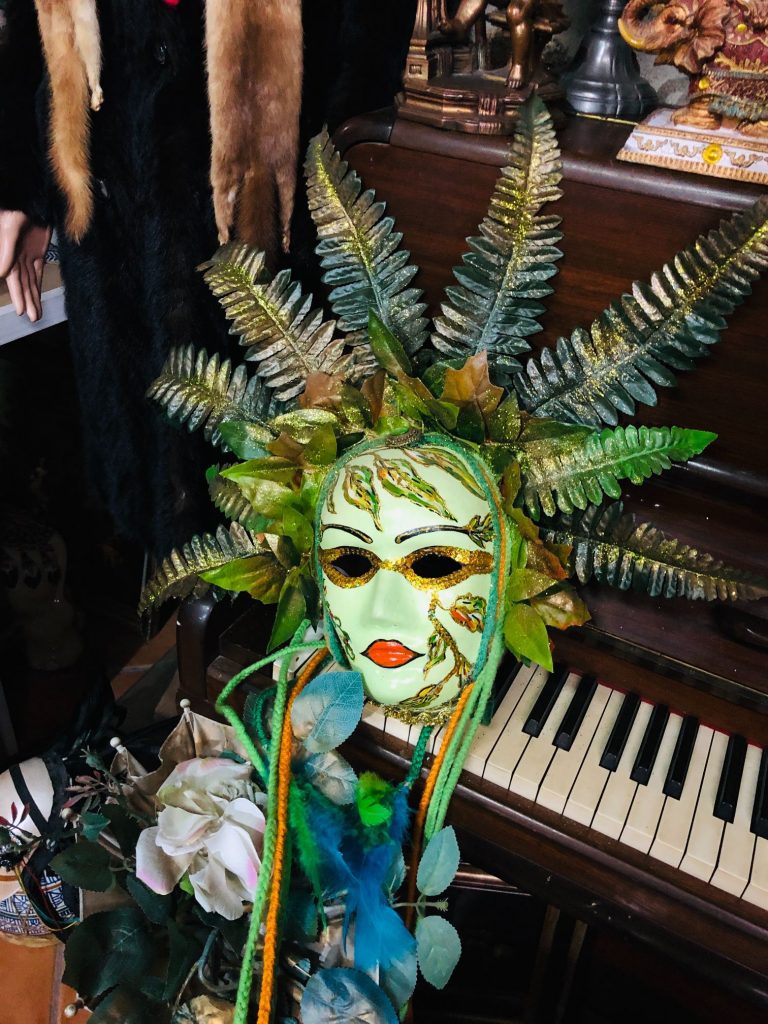


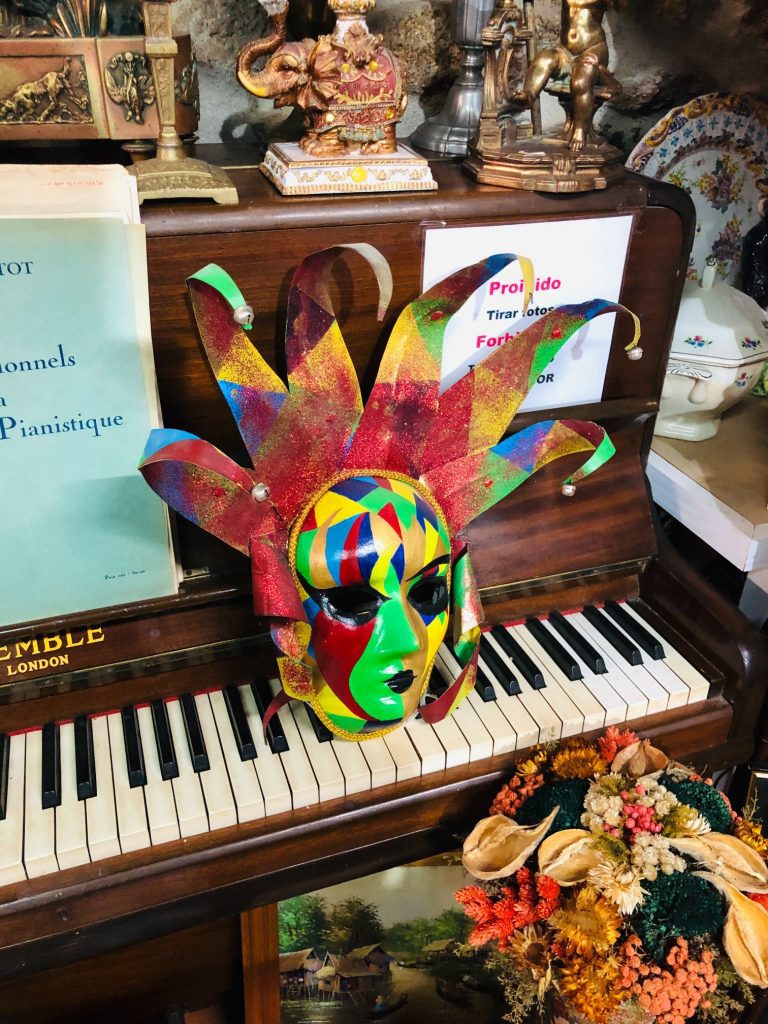


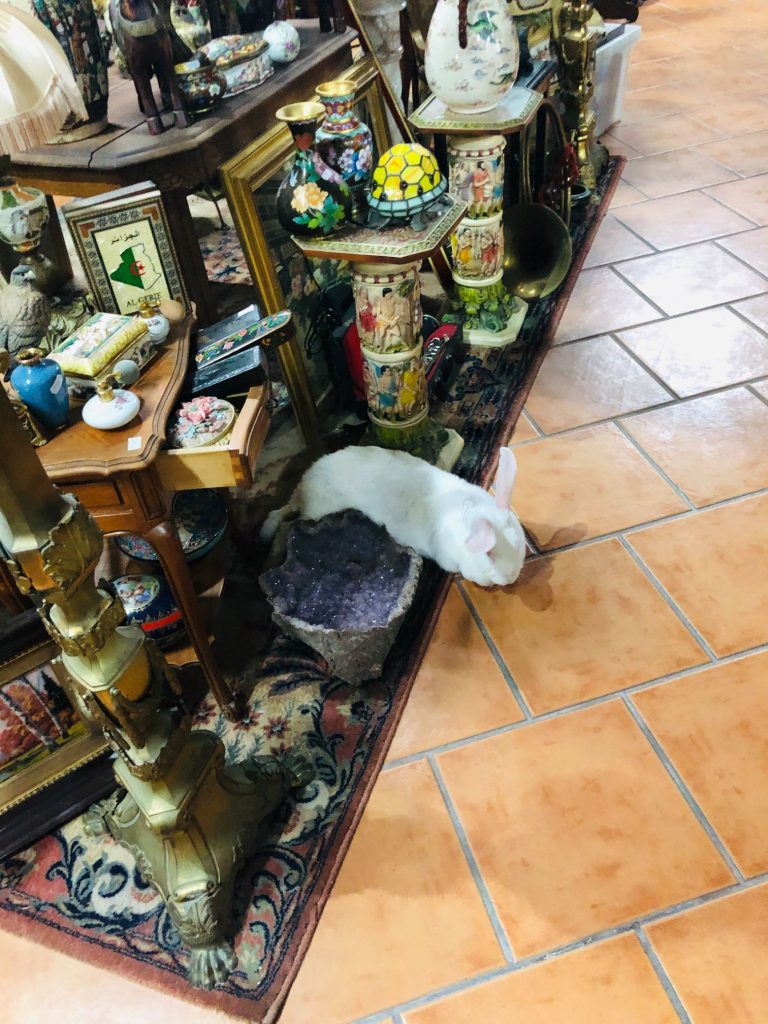


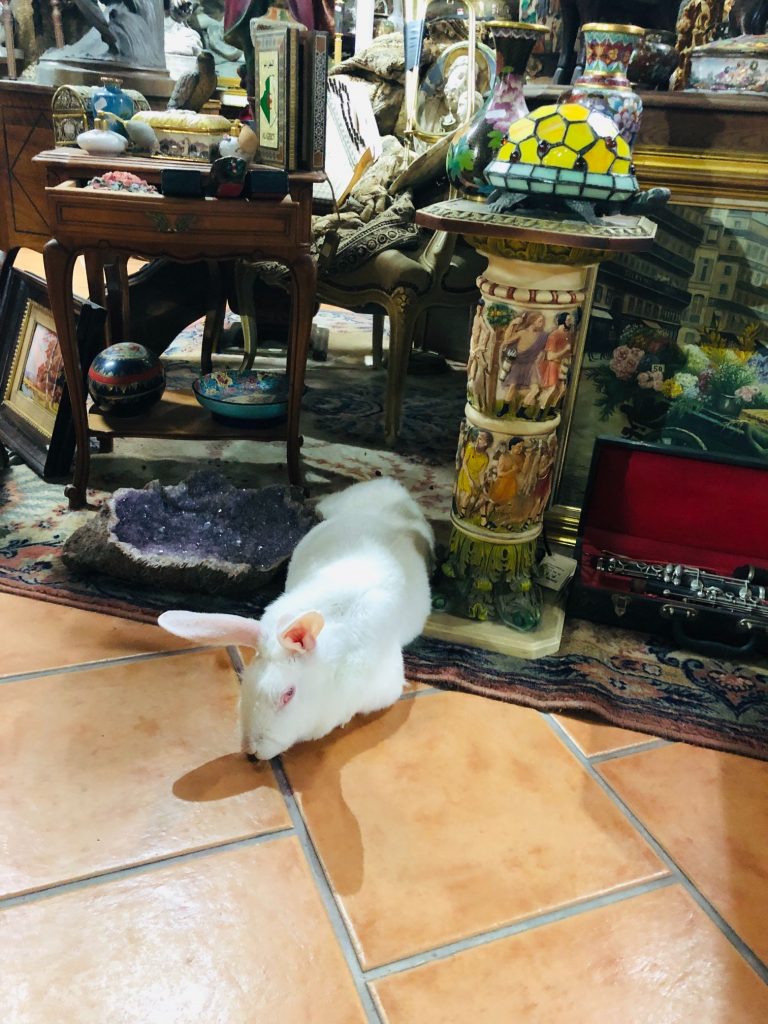


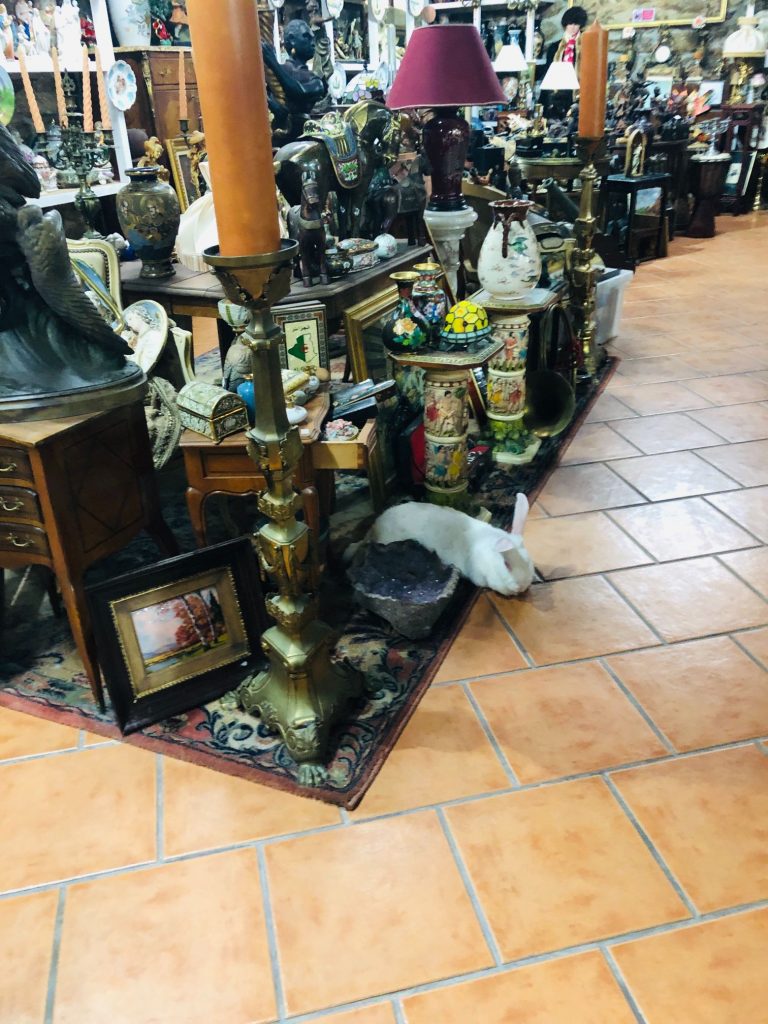


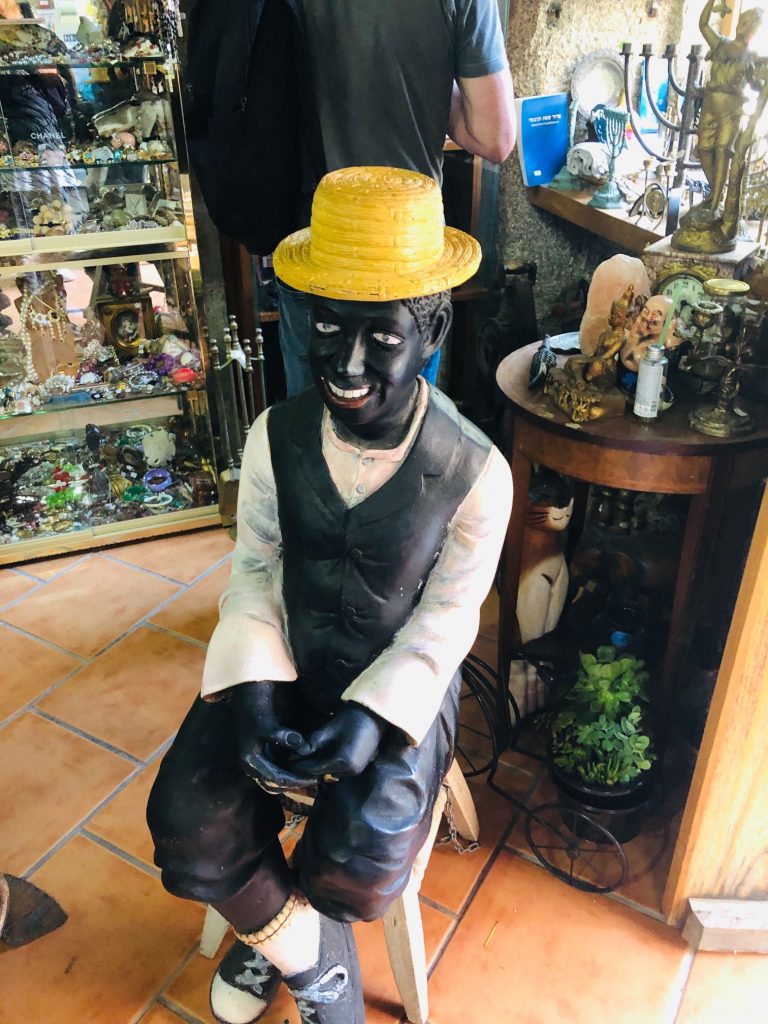


Crazy Doorstep Mannequin
I have no clue what this is doing on a doorstep, I have no answers but I wish my deflated airbags were as perky as this pair (ha ha).
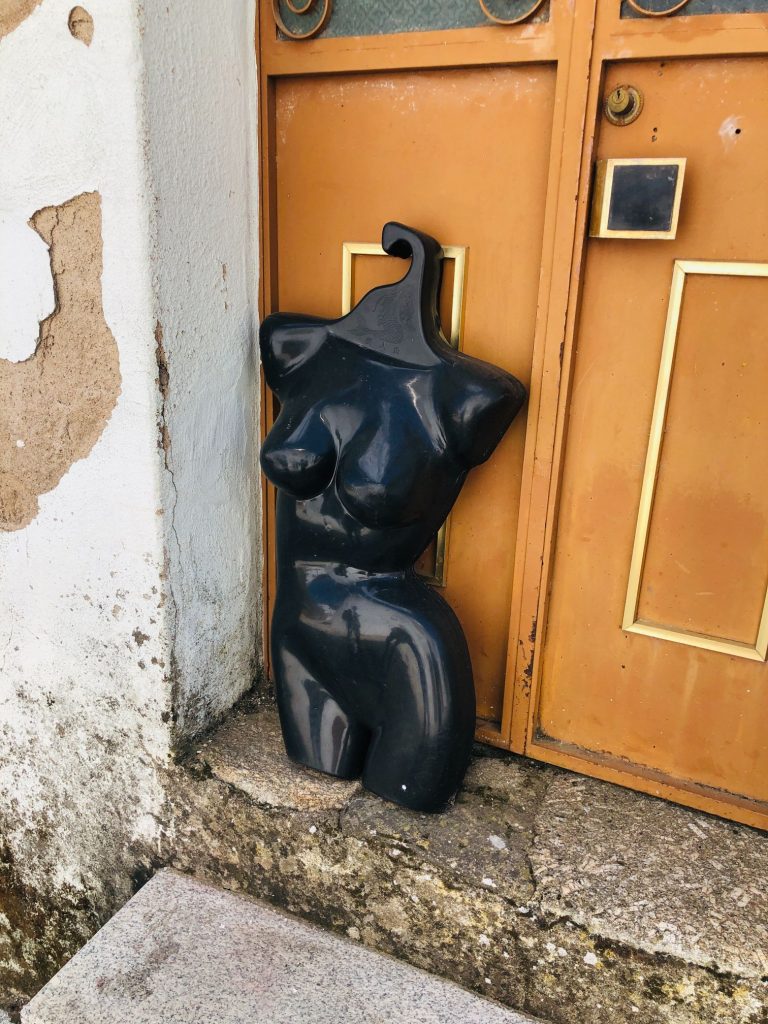


If you look closely you can see hubby’s reflection in the fanny area just above the bikini line (ha ha)
Centum Cellas – Colmeal da Torre (Roman Ruins)
The Centum Cellas Tower in Colmeal da Torre is perhaps the most enigmatic building in the municipality. Its purpose has been the subject of different interpretations over the years: temple, prison, military camp, praetorium of a Roman encampment, an inn, a Roman villa… Theories that only secrets of the past can answer. According to studies after the excavations in the 1960’s and 1990’s, it was thought the tower to be a Roman villa belonging to Lucius Caecilius and his descendent who were farmers and tin miners. The tower had two storeys. There are also traces of other buildings.
We took a leisurely stroll back to our car and drove 10 minutes to Centum Cellas. It is located right near the main road so hardly any walking is necessary. Due to the easy access I expected it to be busy but as usual we had the whole place to ourselves. It is a really cool unique structure to explore and we had a lot of fun here. It’s such a mysterious place with a spooky atmosphere and almost supernatural vibe. I LOVE all the odd ancient ruins in Portugal and the fact that rarely anything is gated or guarded so we can explore to our hearts content at our own risk. If you have time, stay and watch an epic sunset with a view of Serra da Estrela as a backdrop, simply magical!
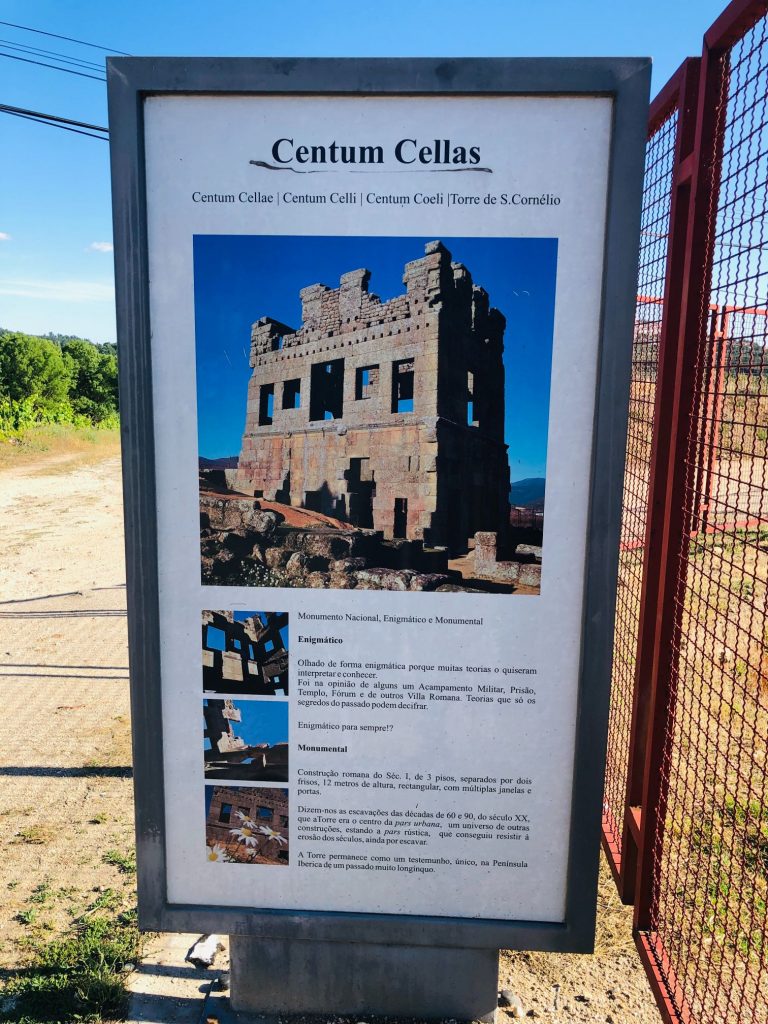


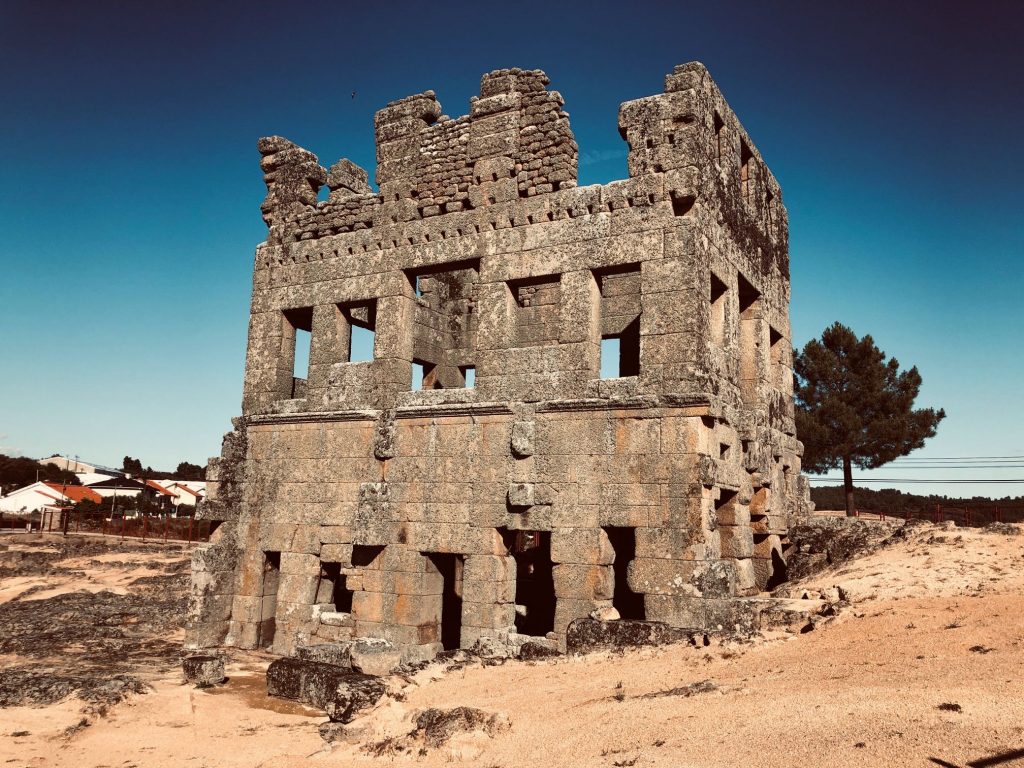


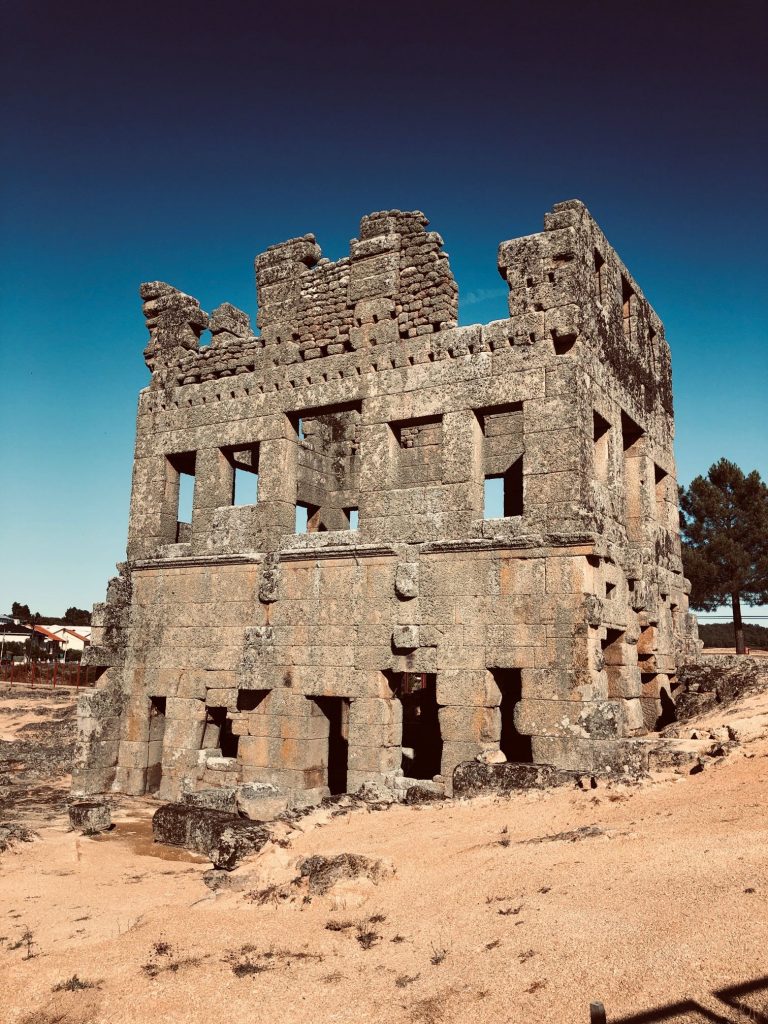


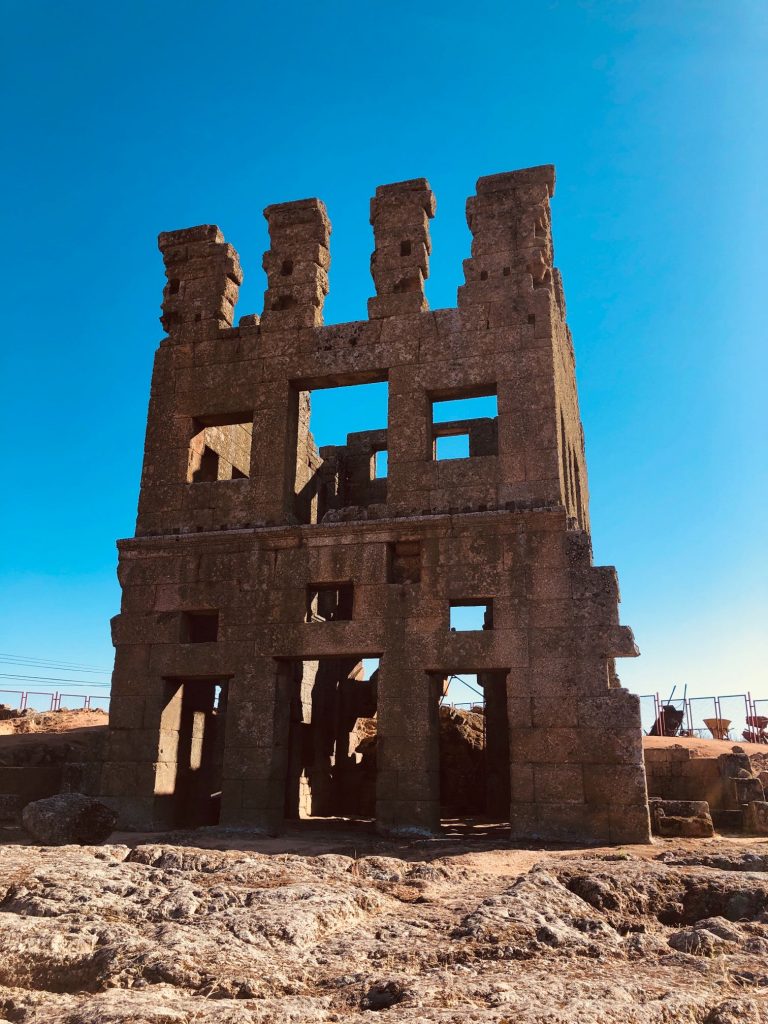


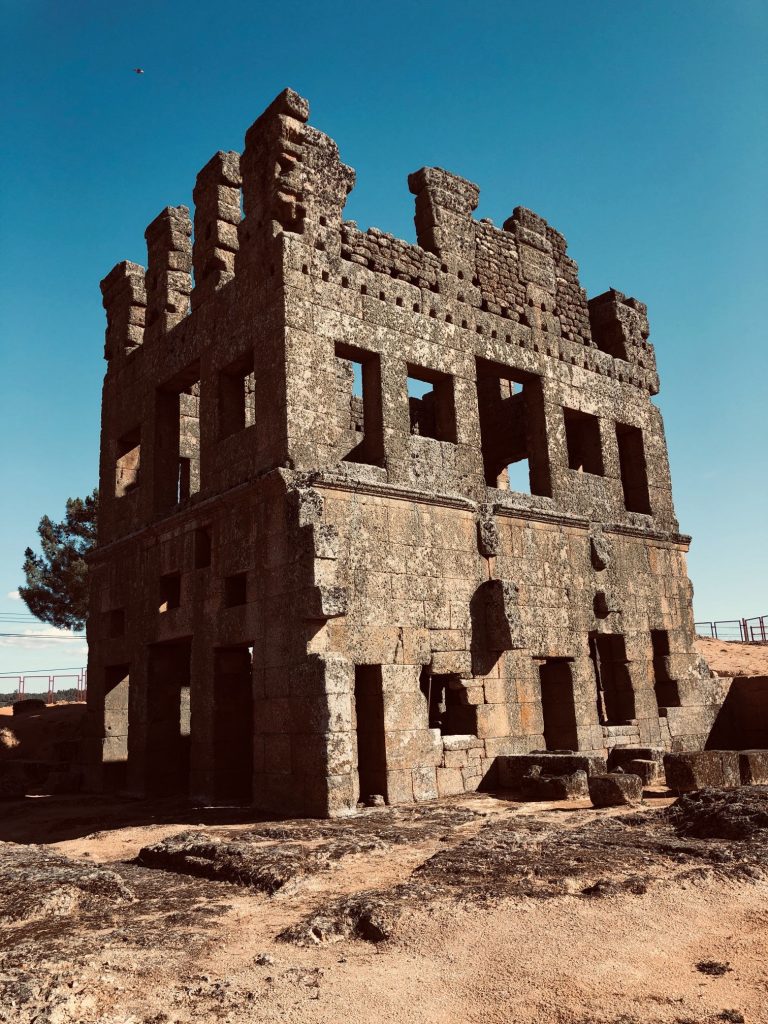


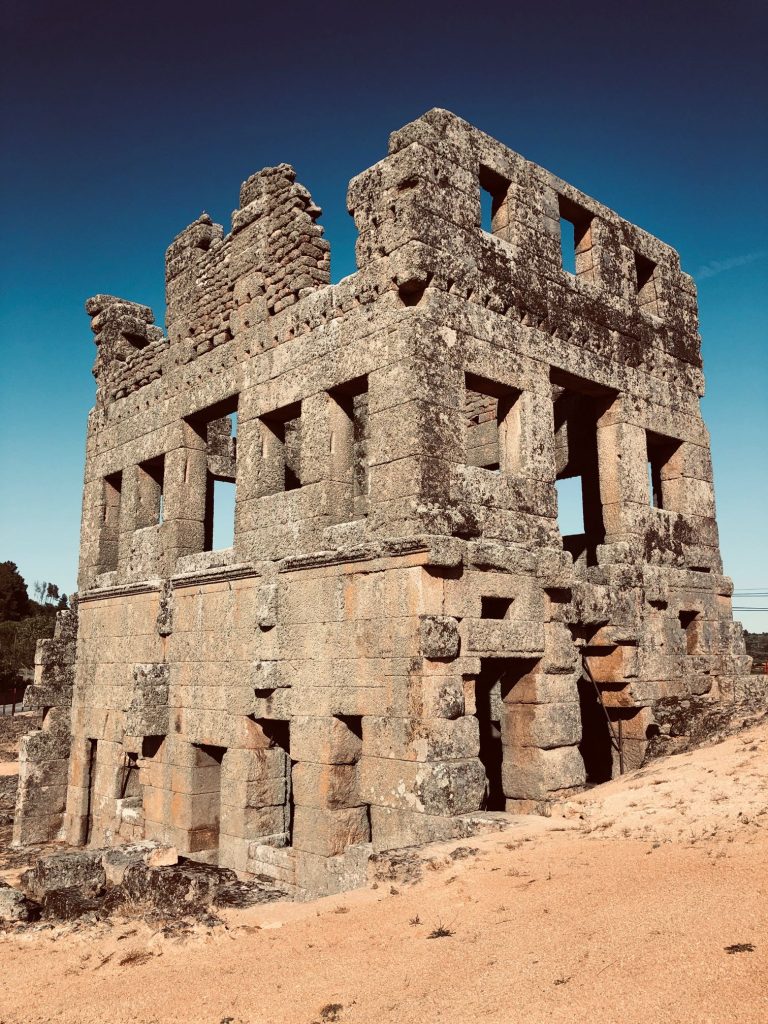


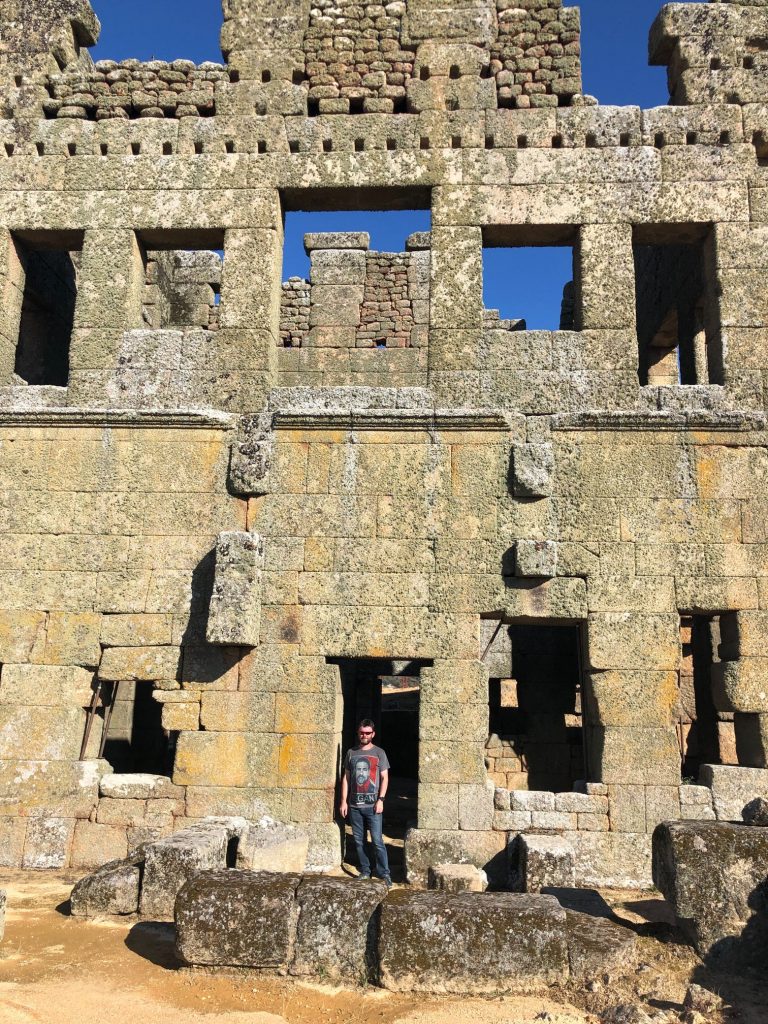


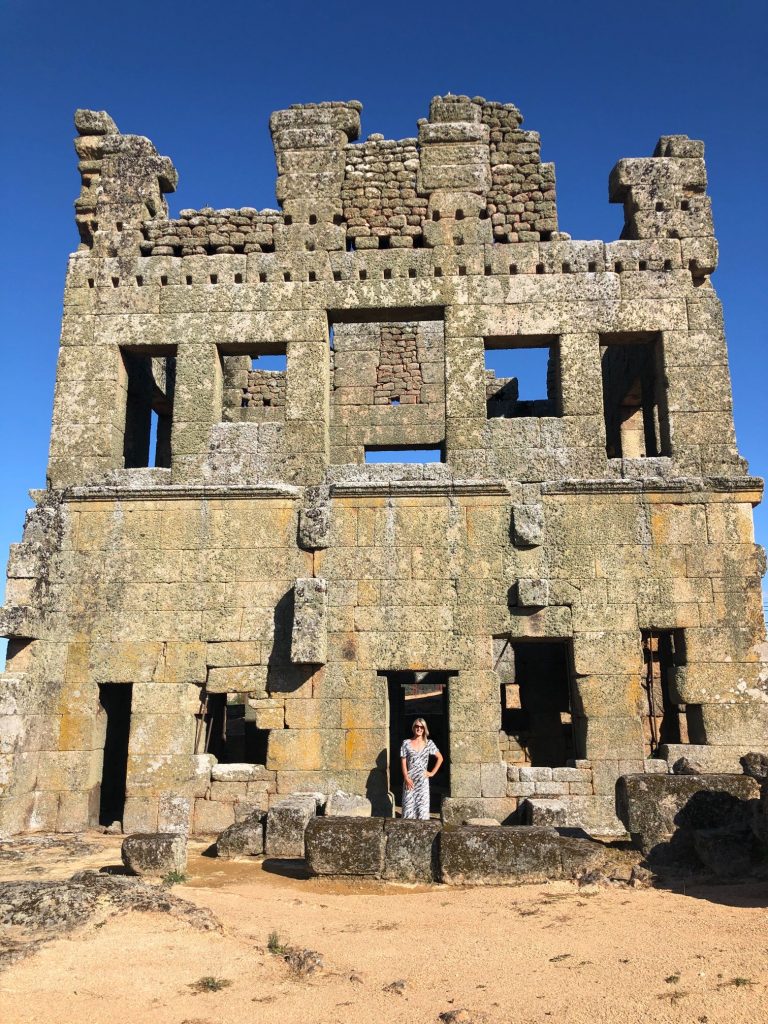


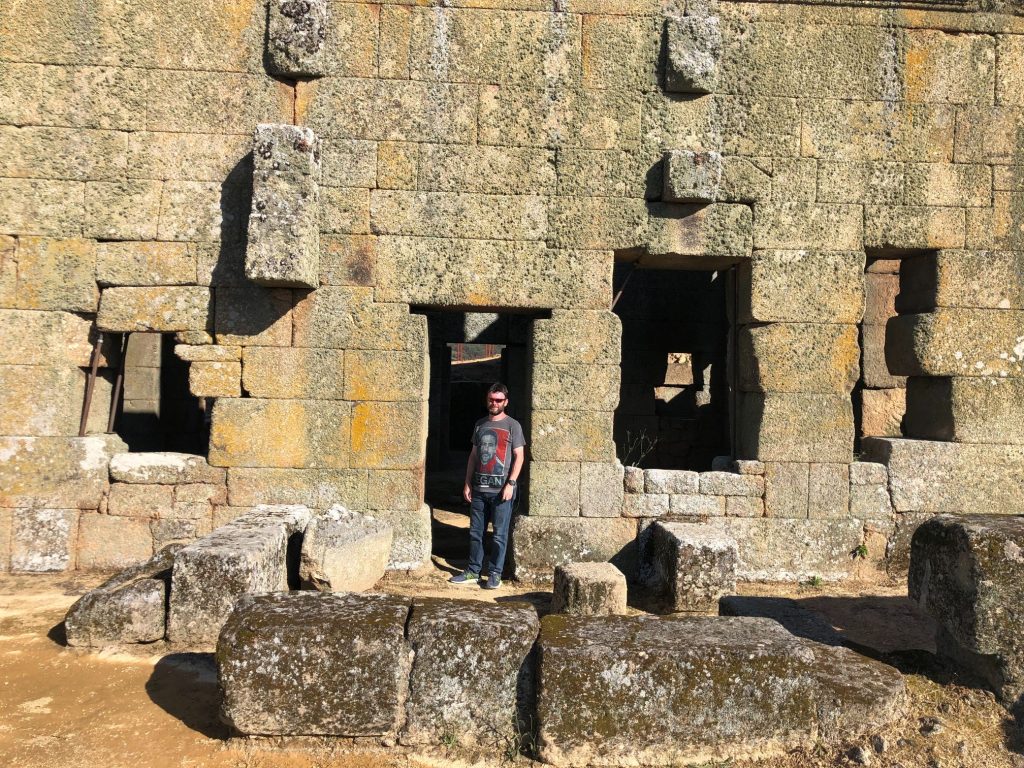


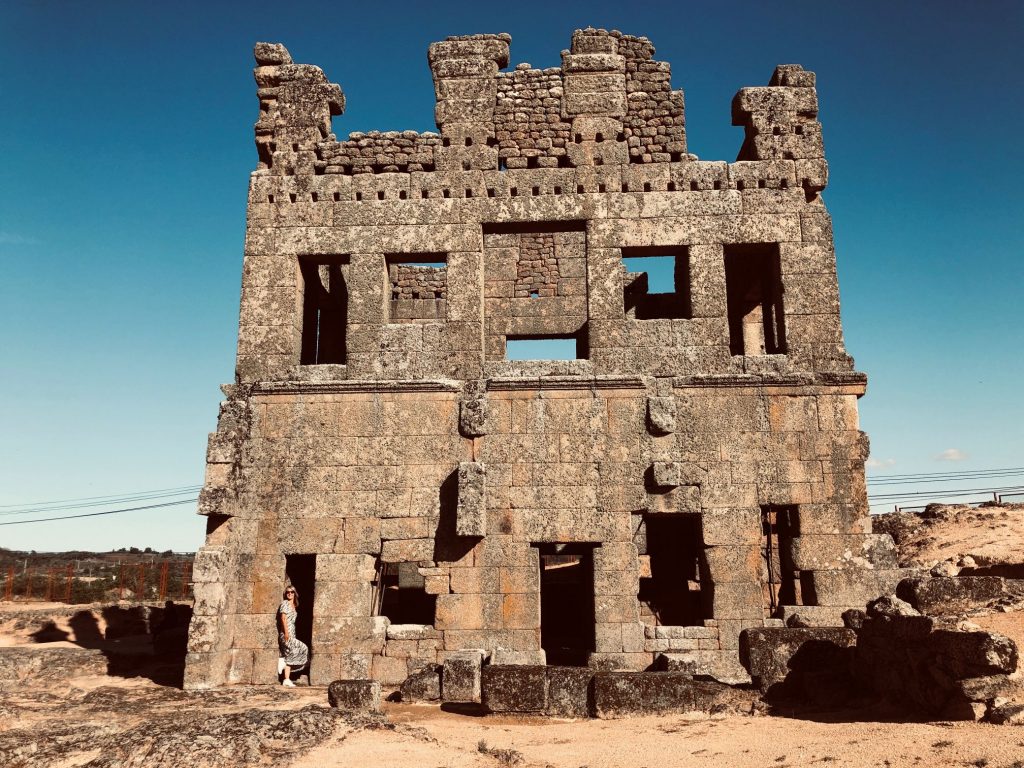


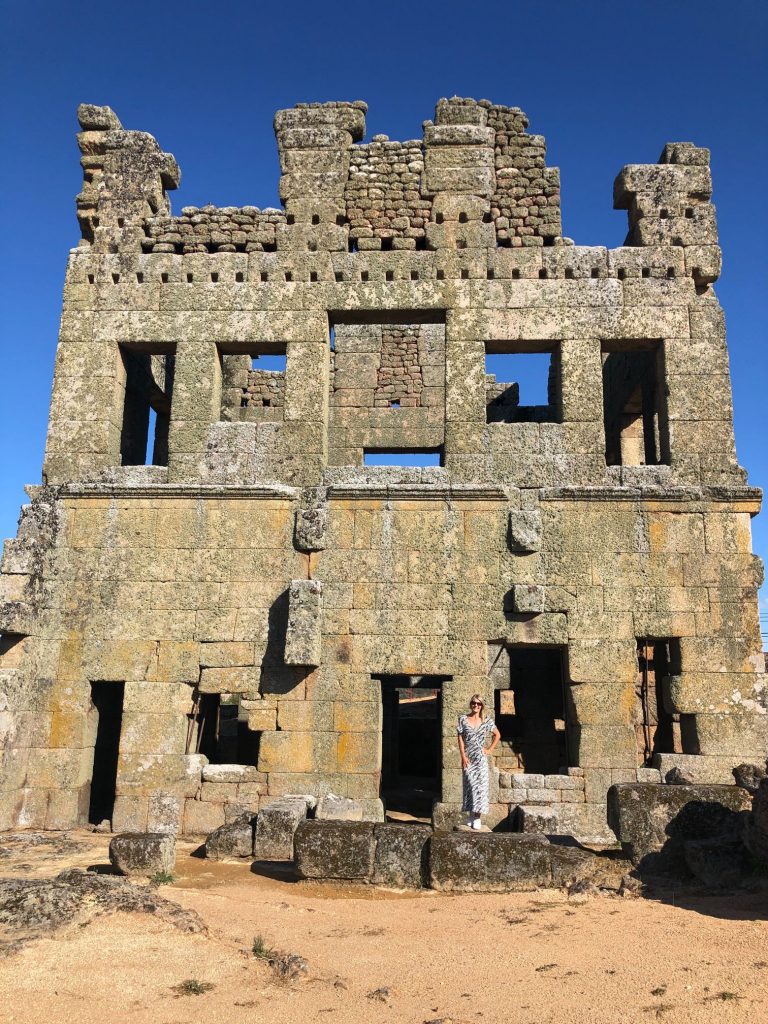


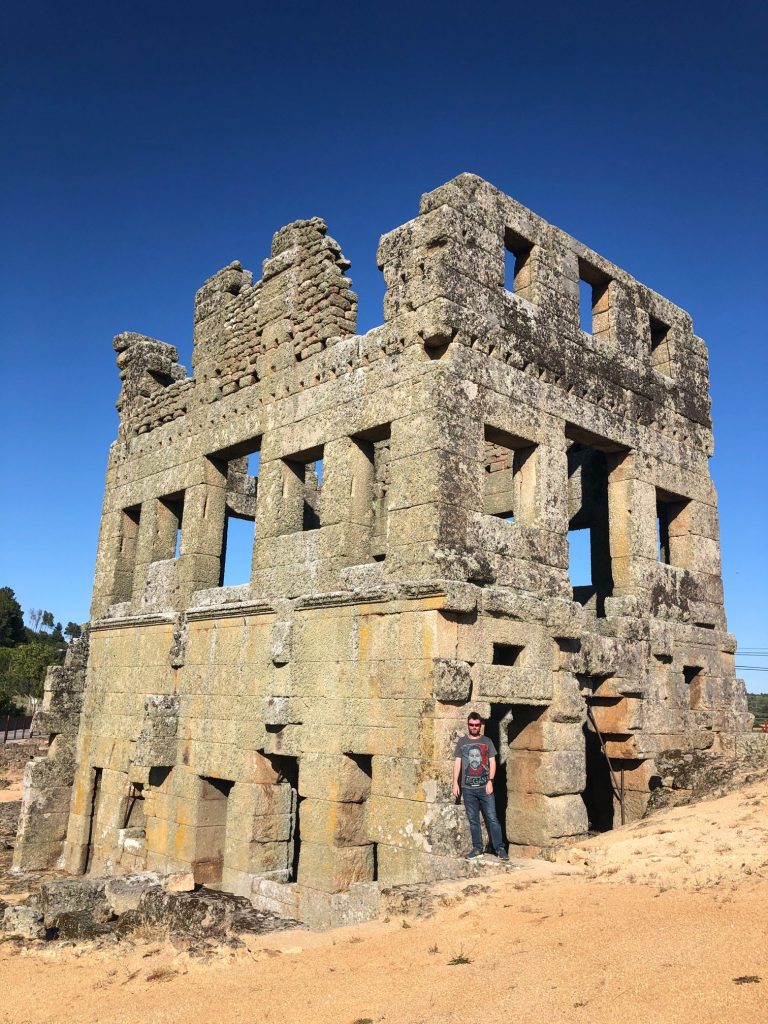


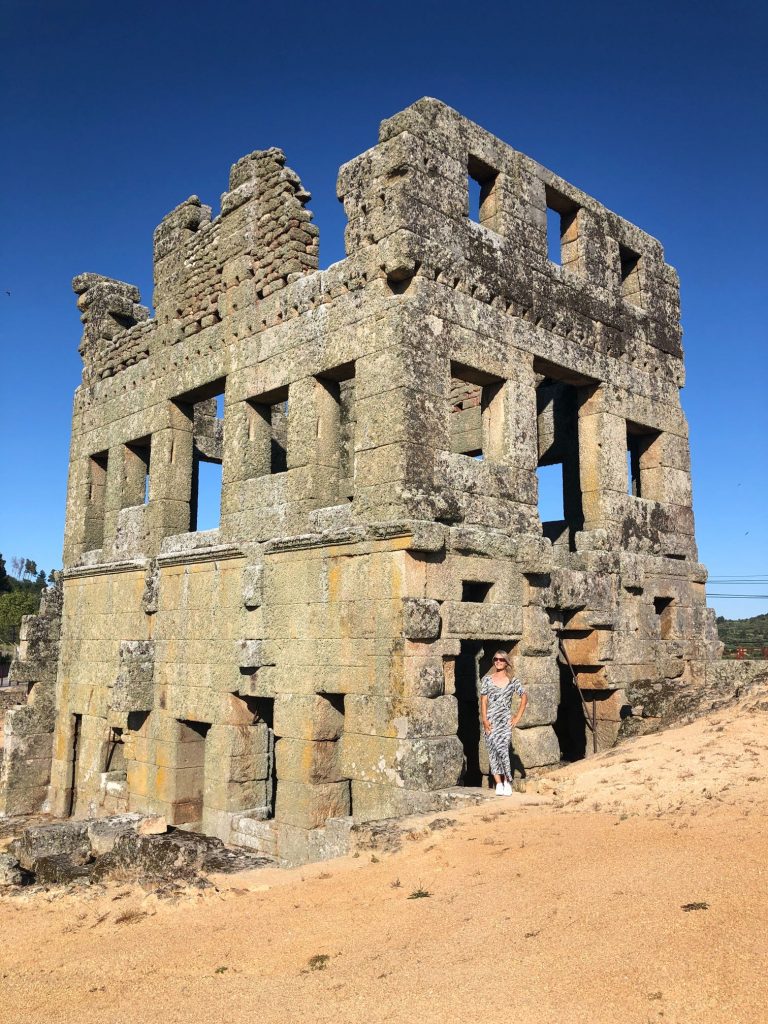


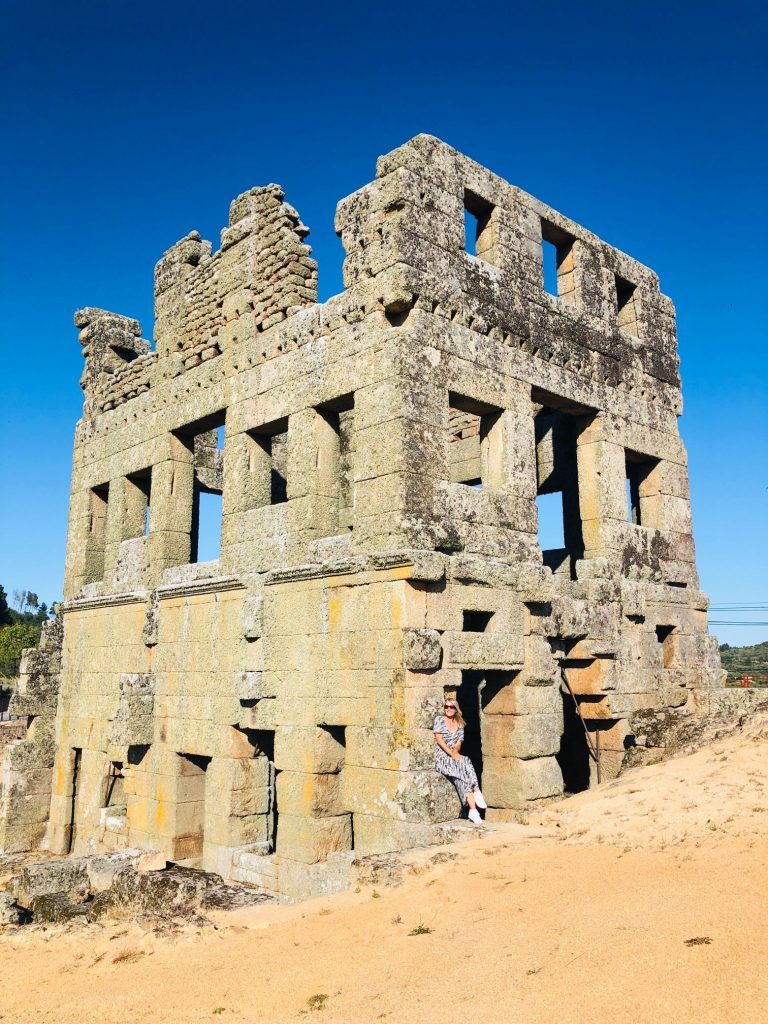


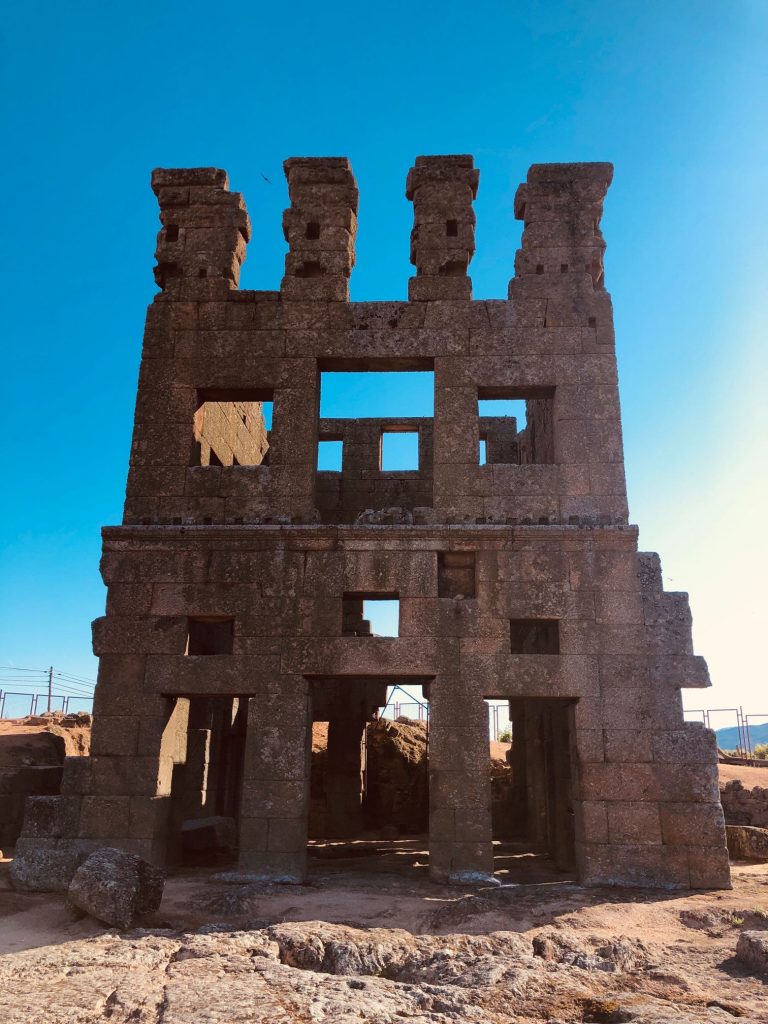


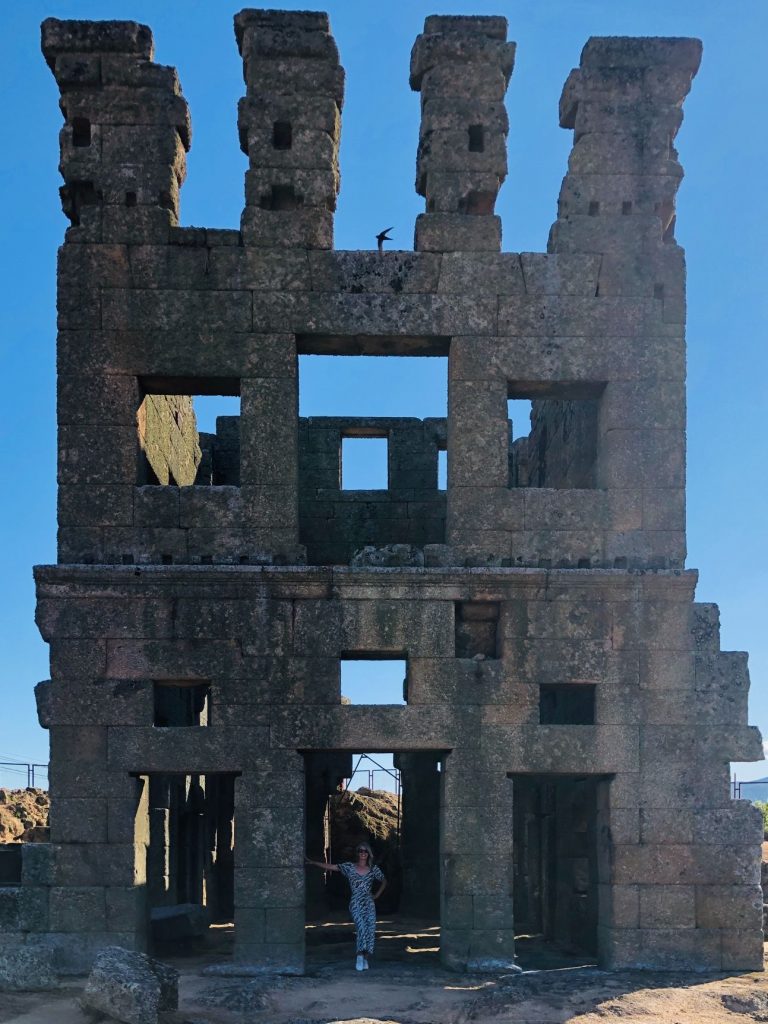


I LOVE the bird and how it is perfectly central (ha ha) 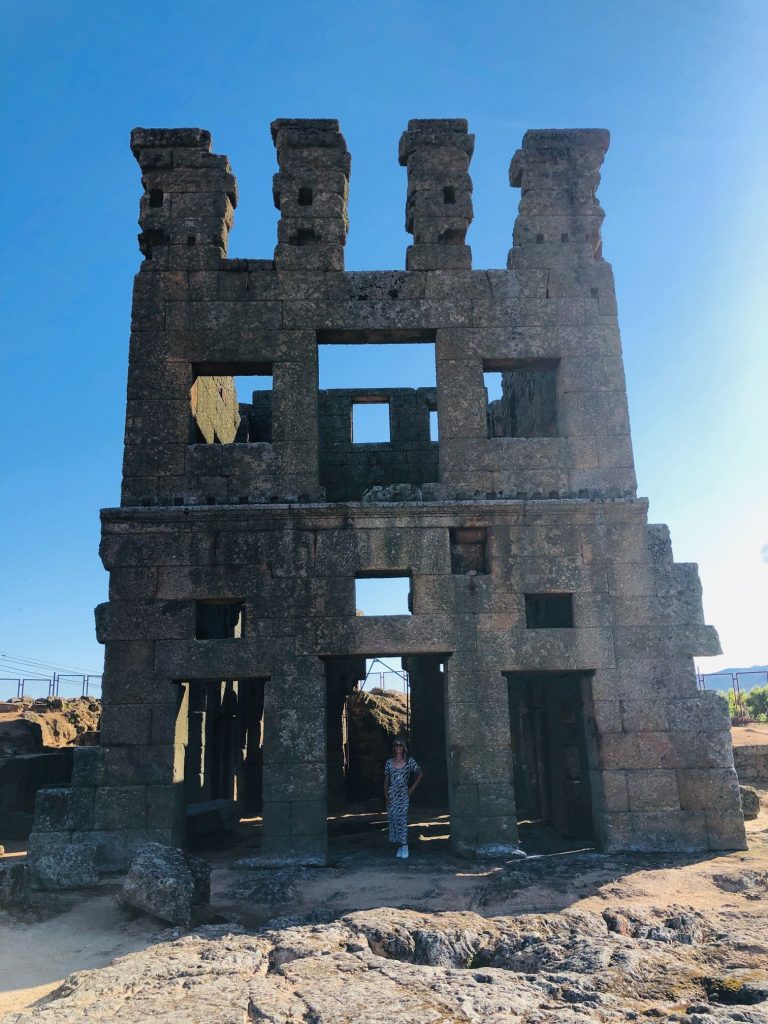


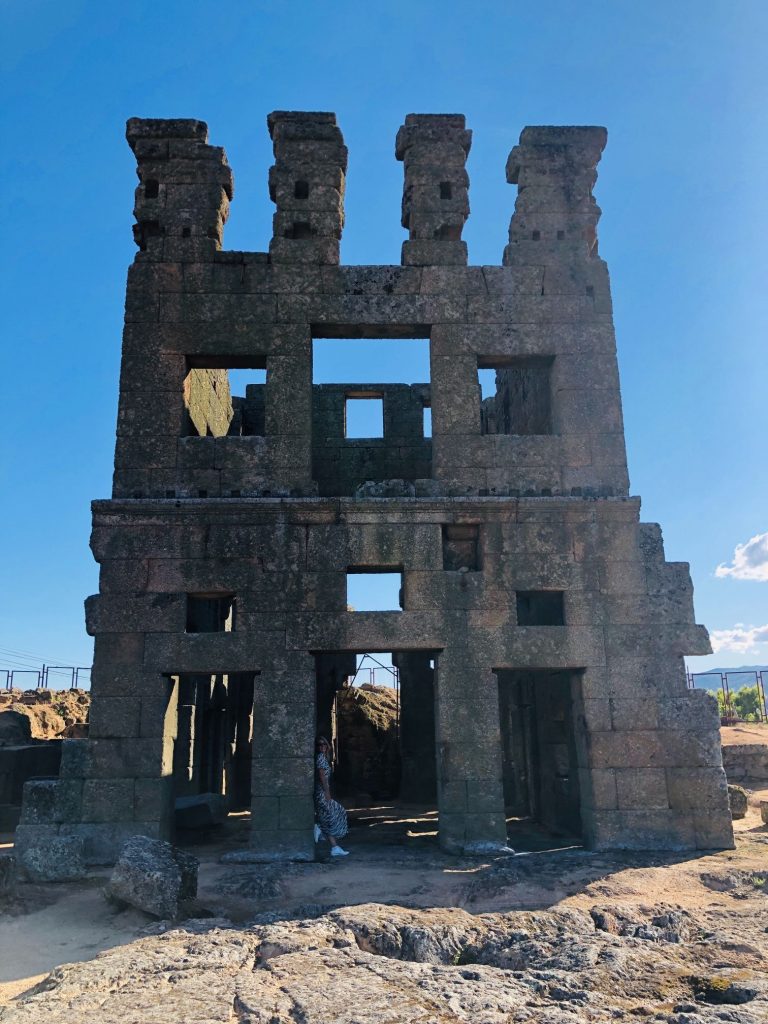


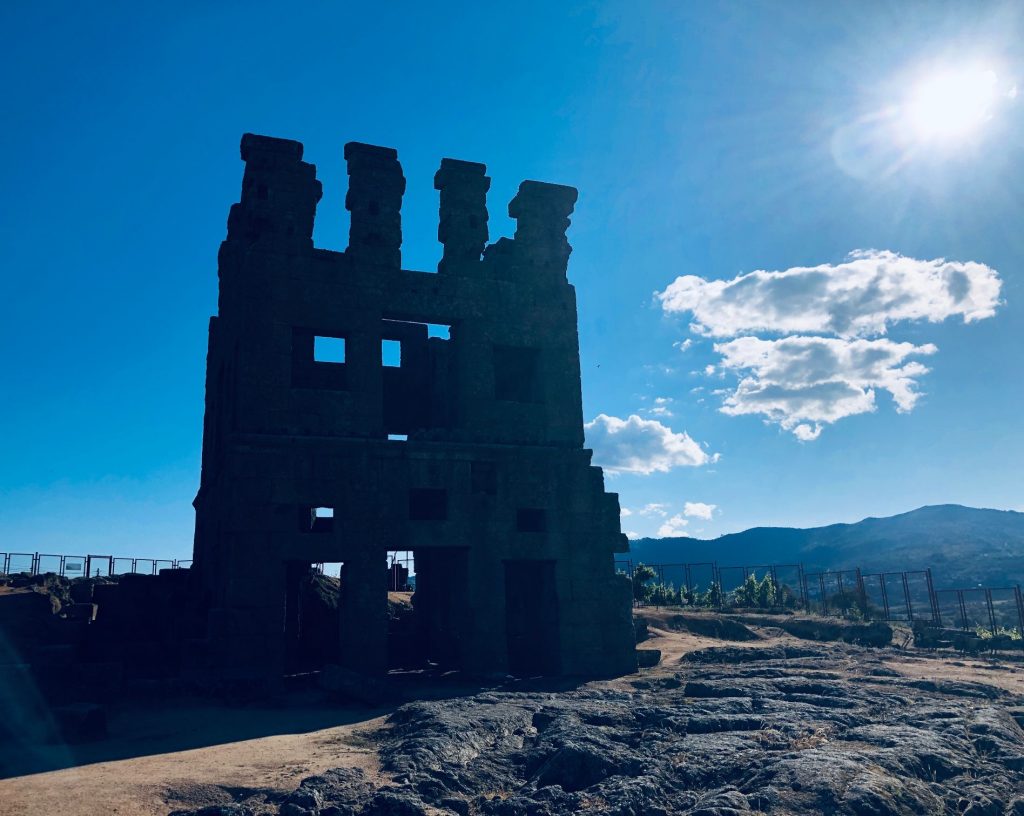


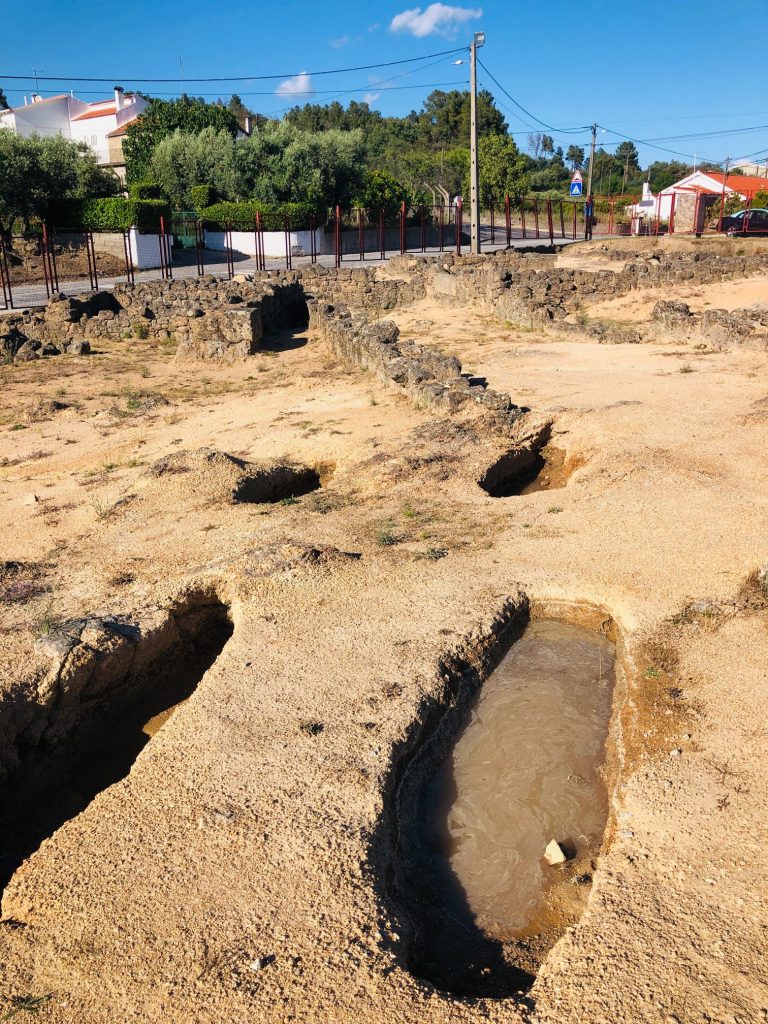


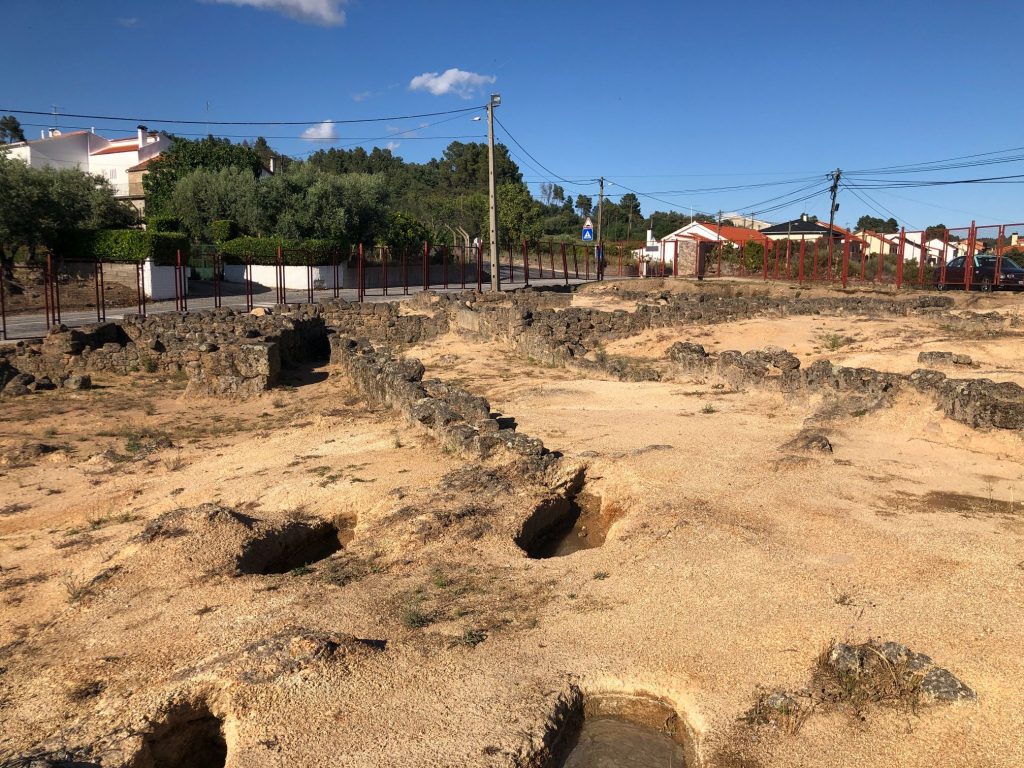


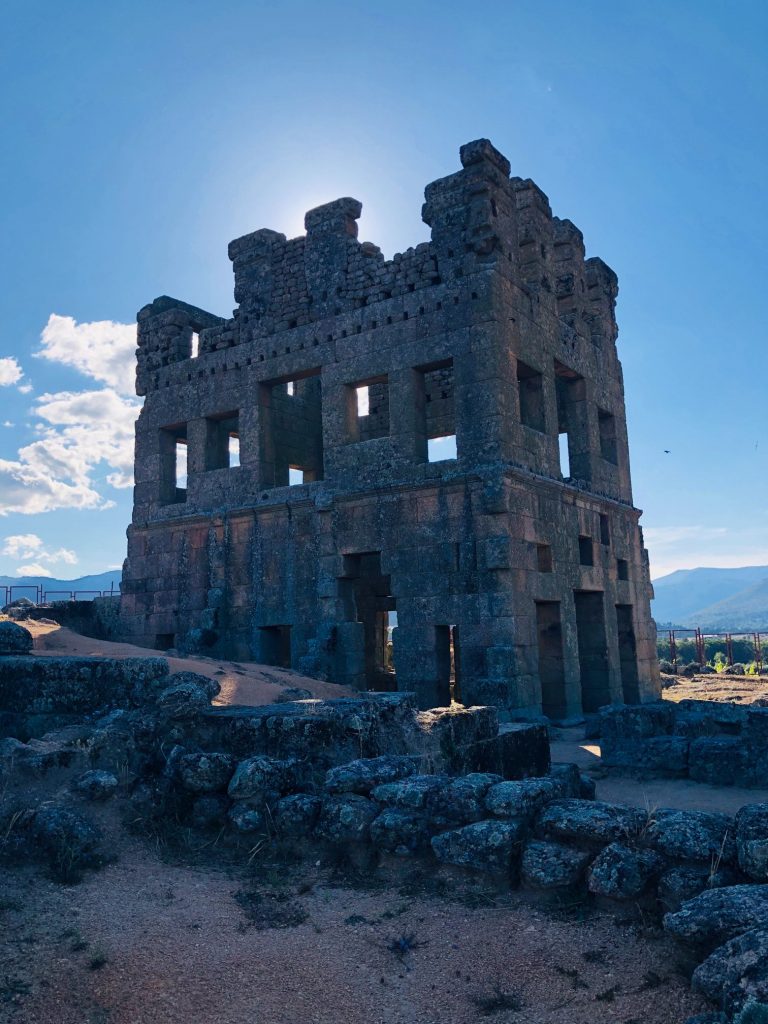


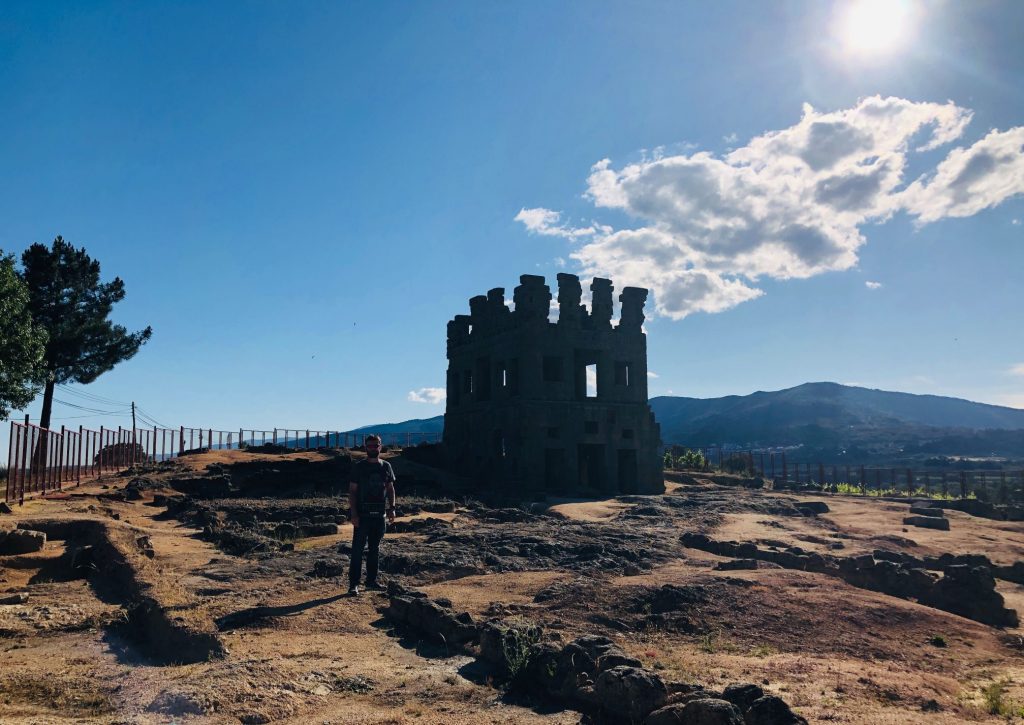


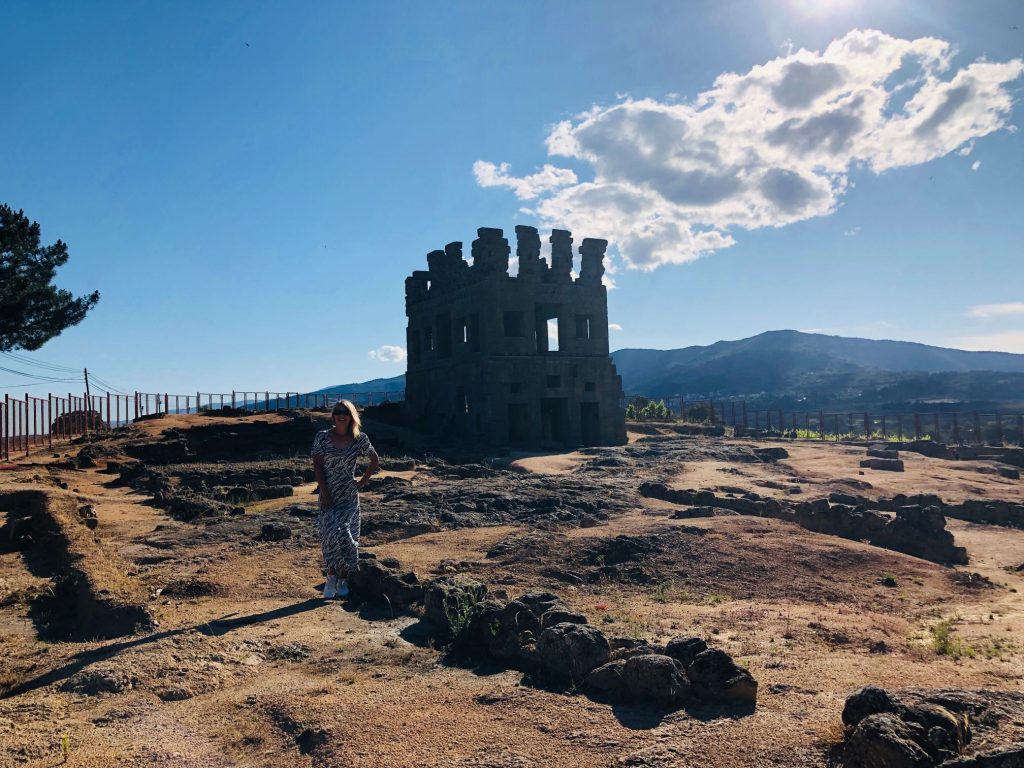


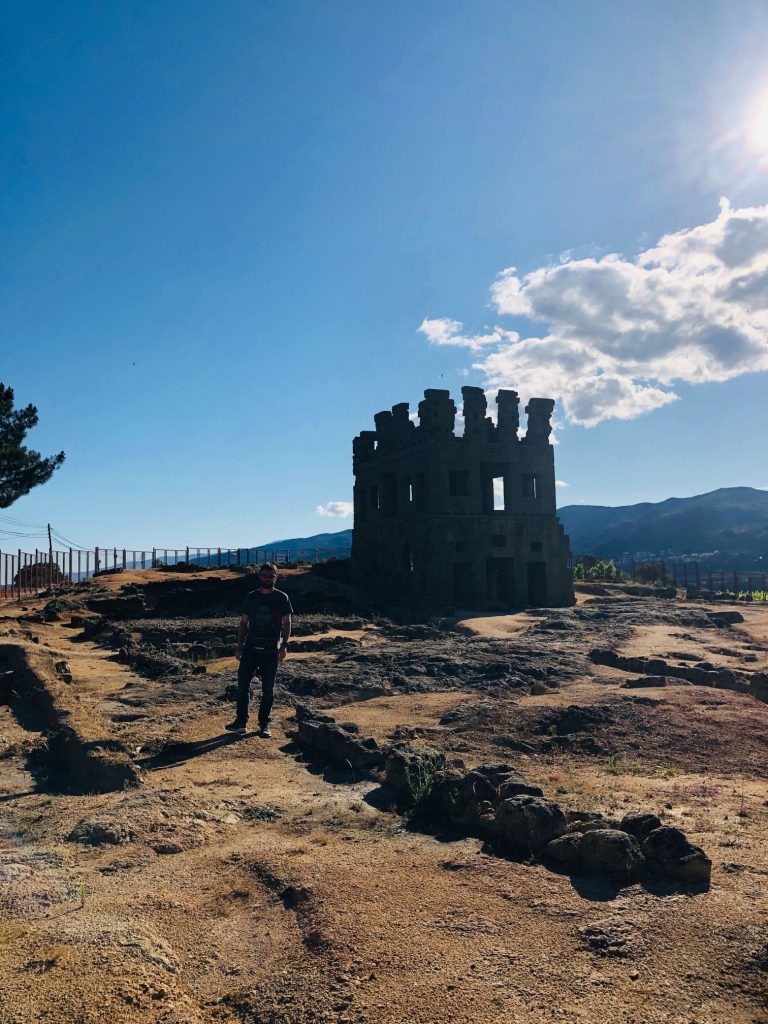


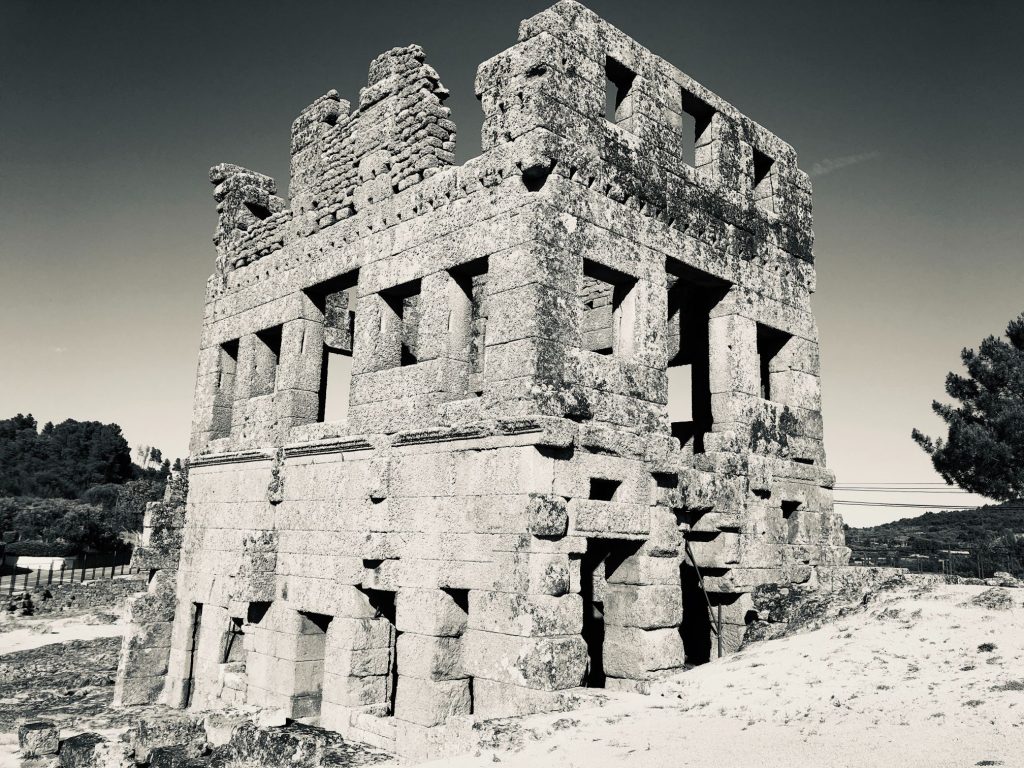


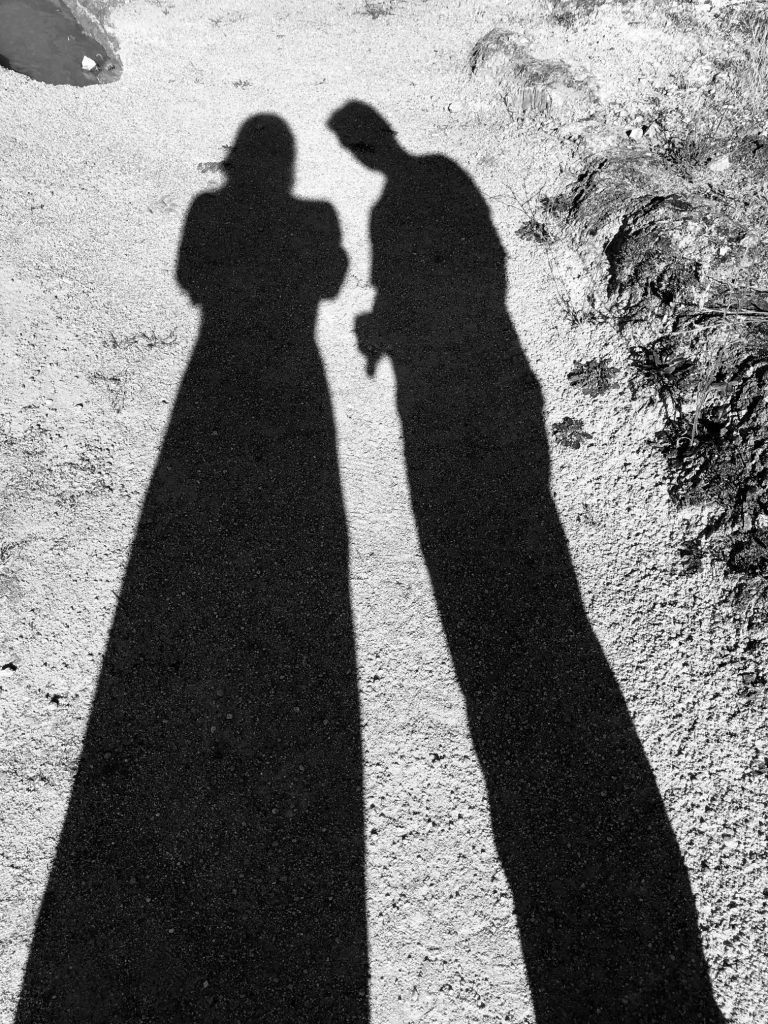


Shadow Fun – The only time we will be Mr & Mrs Tall (ha ha) 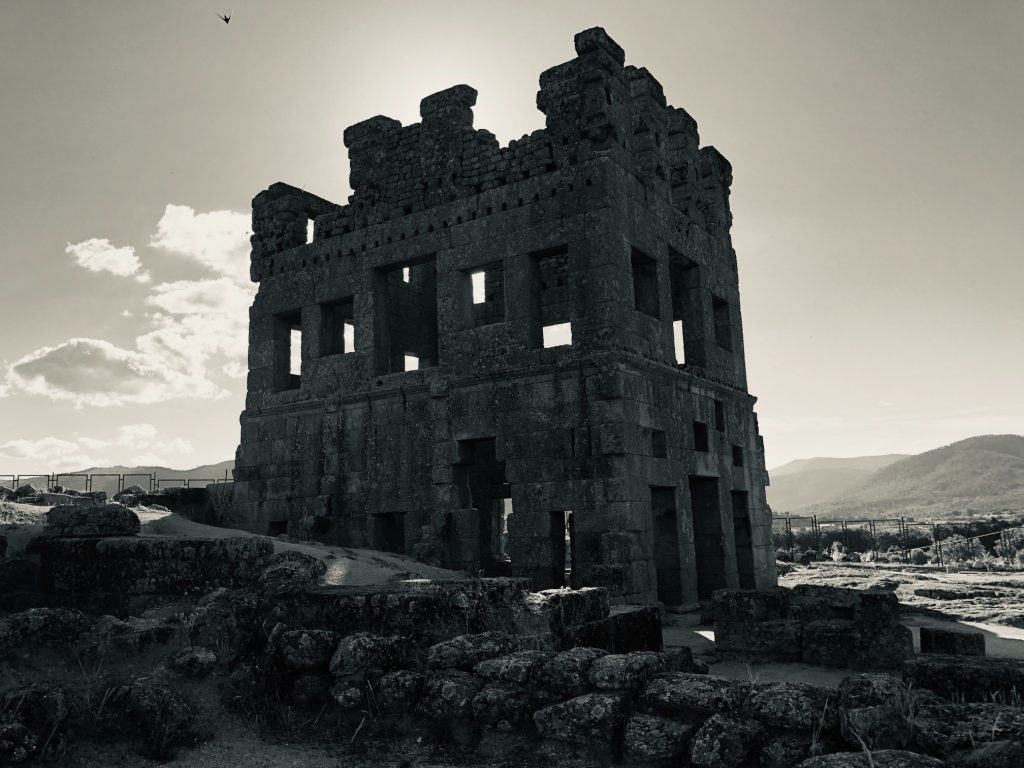


I LOVE the bird soaring over the top!
Selfie Stick Time
Apologies if we look a little crazy in our selfies but we literally could not see a thing. We tried various positions as there were different shadows and effects depending on where we stood. I don’t think we will ever get to grips with our cheapo selfie stick but we tried and I’m surprised we got any photos at all and I quite like the 1st one and 3rd photo. The rest are not great, I just look constipated and deranged (ha ha). Hubby has his regular one perfect pose, I don’t know how he does it but he is going to have to let me in on his secret.
Villa da Quinta da Fórnea (Ancient Roman Villa)
This story starts with the construction of the A23 motorway back in 1999 which uncovered traces of ancient ruins from the 2nd Century: the Roman ruins of Quinta da Fórnea. This villa was a self-sufficient dwelling, as demonstrated by a number of structures, such as a press for olives, grapes and grain, an iron works and stables. The whole unit is connected by gutters that supplied it with water. Roman baths were also uncovered with the traditional tanks for baths. Different rooms were also discovered – probably for the owners, their dependants and servants. All the structures, the entrance to the villa and all the empty spaces would have been occupied by columns and gardens, which attest to the wealth of its owners.
After viewing Centum Cellas we drove a few minutes to explore these ancient Roman ruins and marvel at the impressive landscape. The ruins of Quinta da Fórnea are located between Belmonte and Caria, in the Castelo Branco District, close to where the N345 merges with the A23. We followed the sign and it wasn’t far to reach the final destination. I did get a little worried at one point as there was signage for a Trail Curto which said 22 km and translates to “I enjoy”. My legs were heavy and tired hence I was not up for a long hike in the heat and NO I would NOT enjoy (ha ha). It was around 19:00 and still roasting hot. Usually it cools down by early evening but this day in particular was a scorcher. Again, we had the whole ruins to ourselves and had the time of our lives running around like crazy children. I am so glad I wore my trusty comfy trainers. I know they don’t look the best teamed with a dress but I don’t care. I think we were all a little delirious at this point (ha ha). There are really useful signs in each area (all in the Portuguese language of course). Unfortunately my Portuguese still sucks BIG time. Not from a lack of trying!
I did originally have 2 more places on my Itinerary: The Mausoleums of Fórnea (Tombs) and Castro da Chandeirinha (Late Bronze/Iron age settlement) but we just didn’t have time as we still had a 2 hour drive ahead of us to reach our bed. This was difficult for me as I like to see everything possible but there is only so many hours in the day. We woke at 7:00am and left the house at 8:30am so it was already a really long day in the Portuguese heat and I have been suffering with horrendous on/off toothache and headaches. I visited the dentist who took X rays and couldn’t see any issue so they sent me to the hospital for more in depth X Rays of my face/jaw. The X Ray results were not positive news. Long story short I have a wisdom tooth which is growing at an angle under the gum and it is pressing against the nerve of the tooth adjacent to it hence why I am in extreme pain. I have the worst fear of dentists which stems back to a traumatic childhood experience with a male dentist. I won’t go into details but it emotionally scarred me for life. Anyway I am booked in to have my wisdom tooth removed at the end of July so I have to suffer in pain for a few more weeks yet. I’m living off Ibuprofen and I scream when I eat anything hot or cold but i’m trying to be a brave soldier.
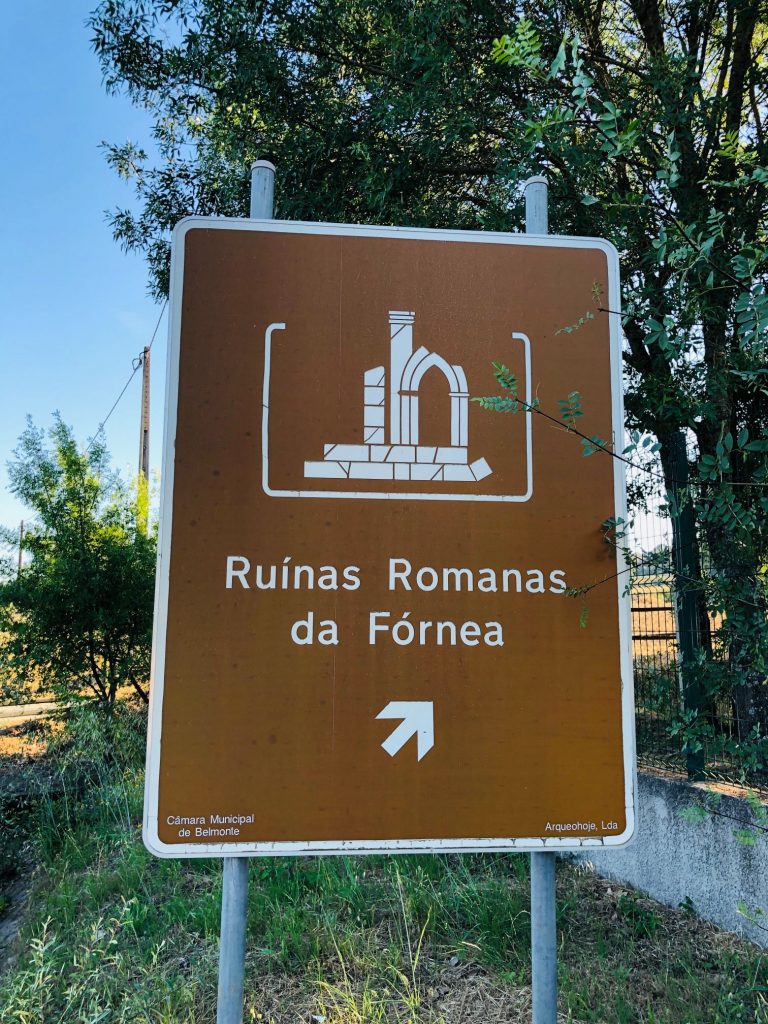


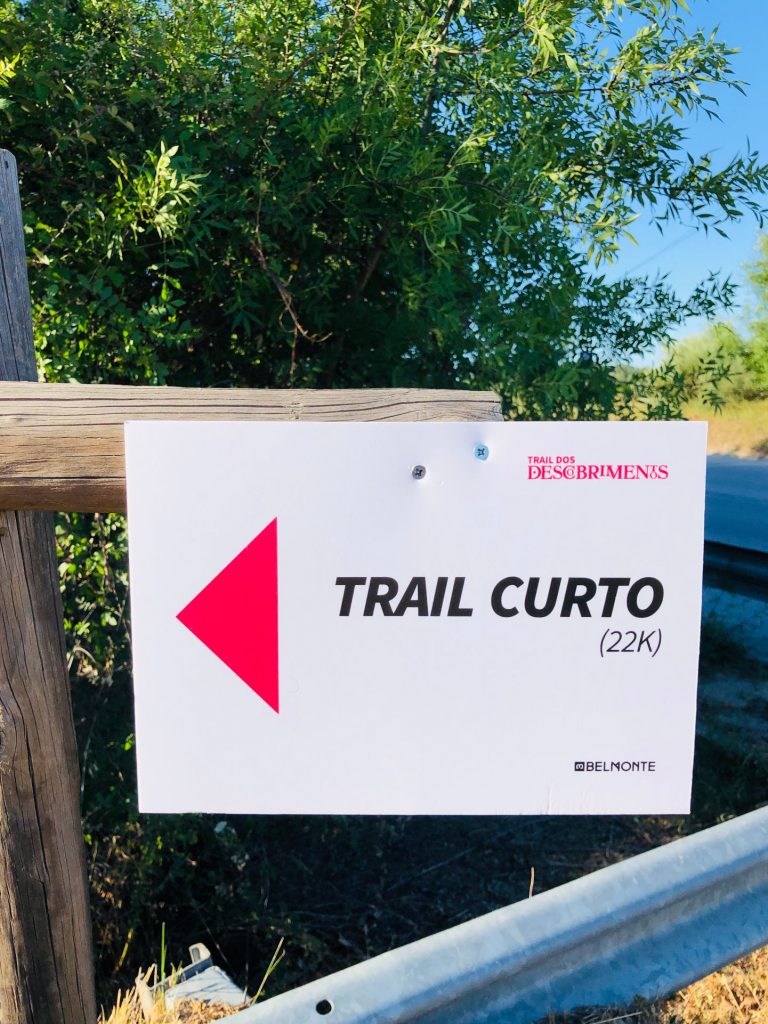


Luckily it was a short stroll and not 22K 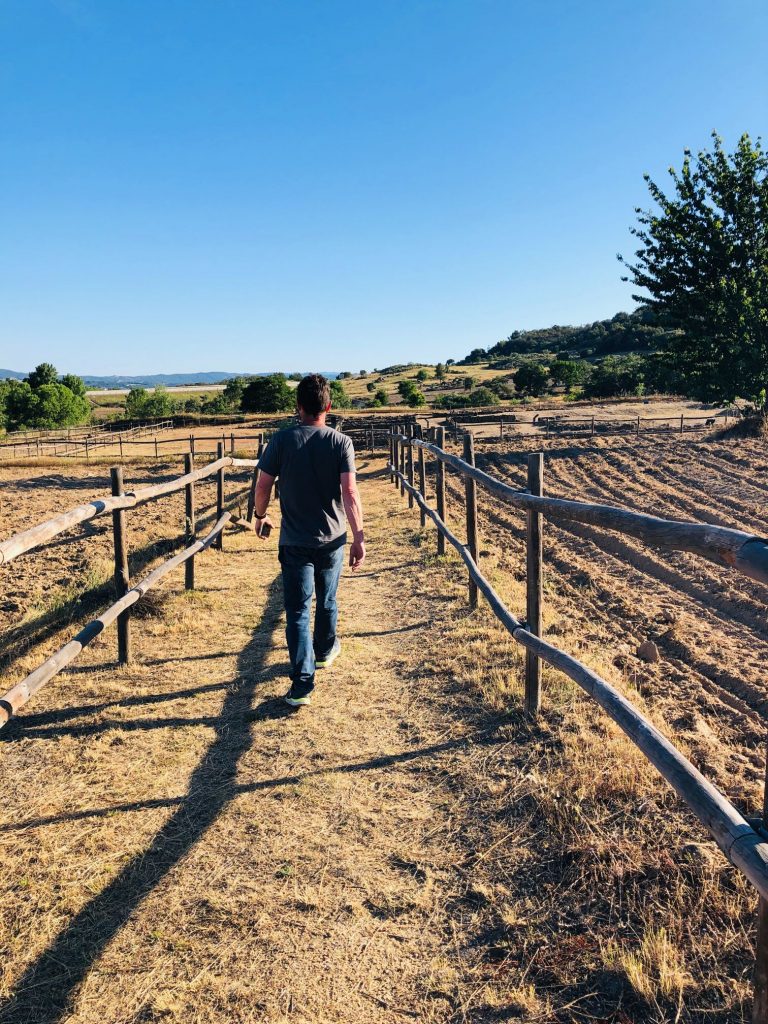


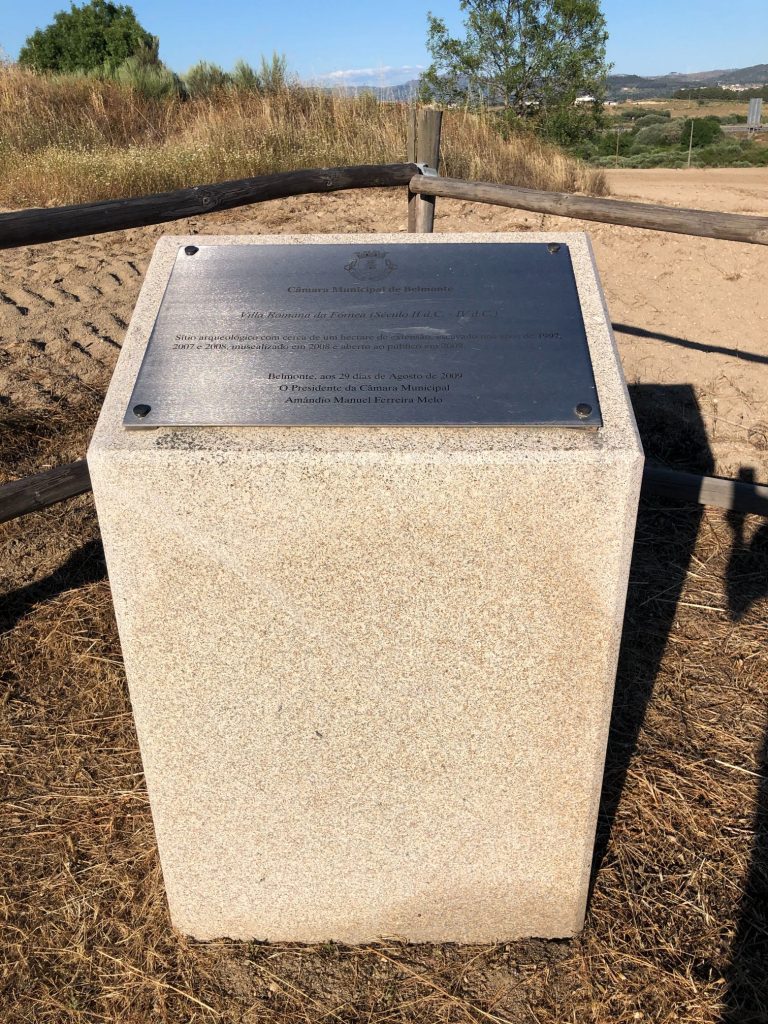


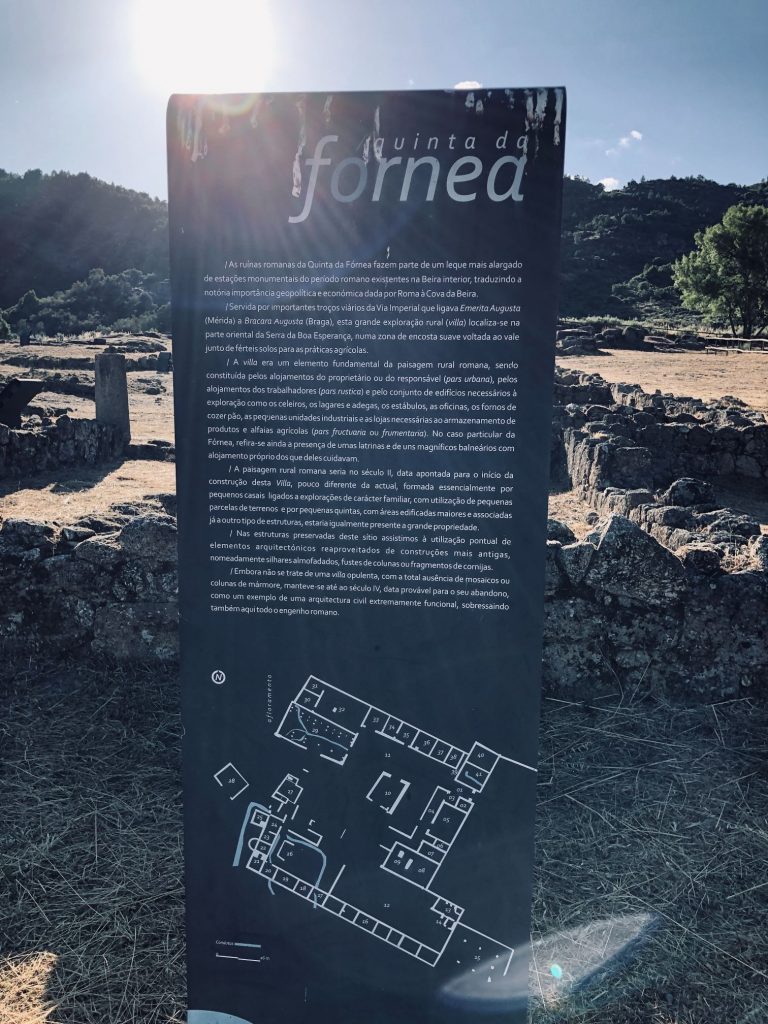


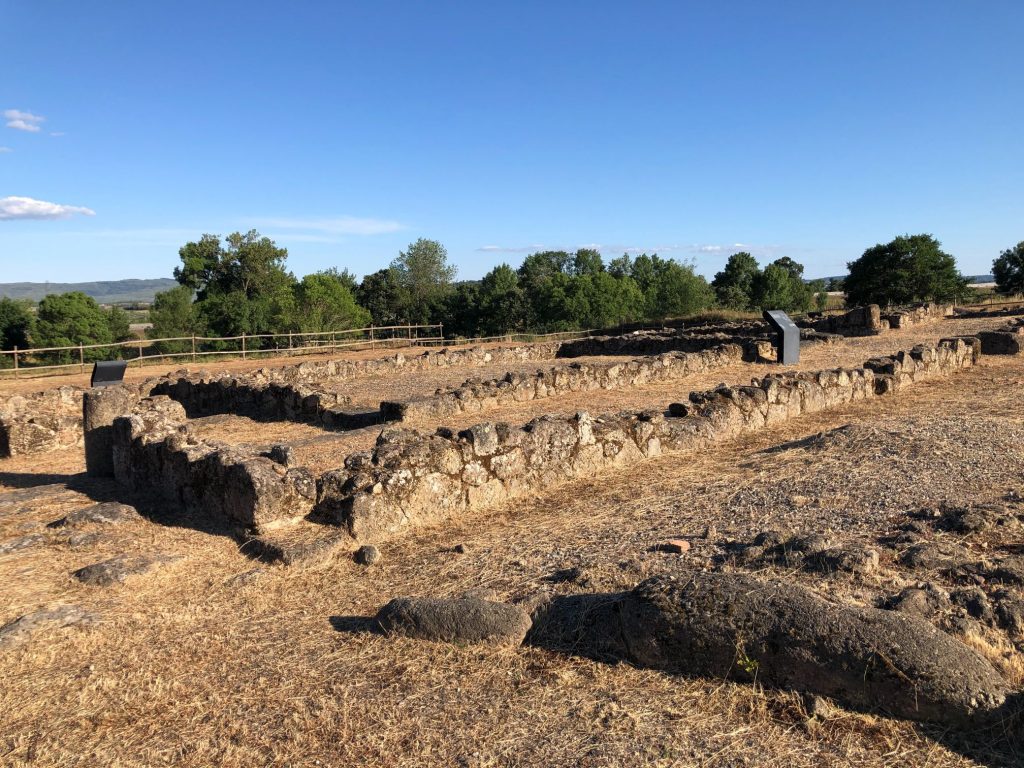


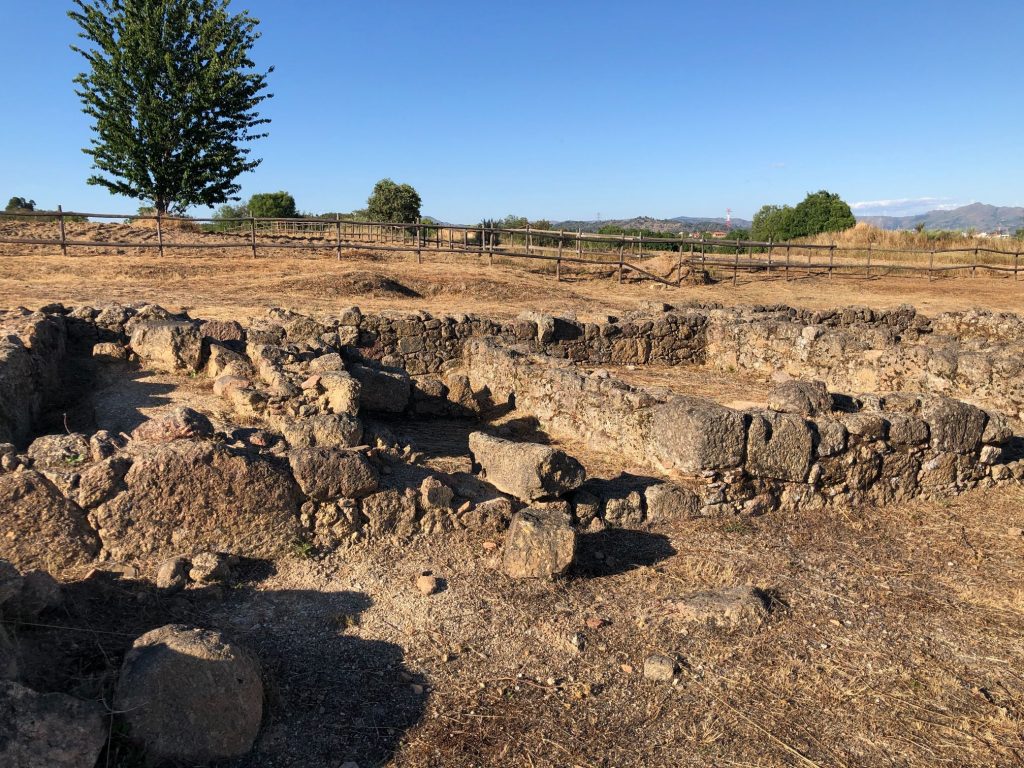


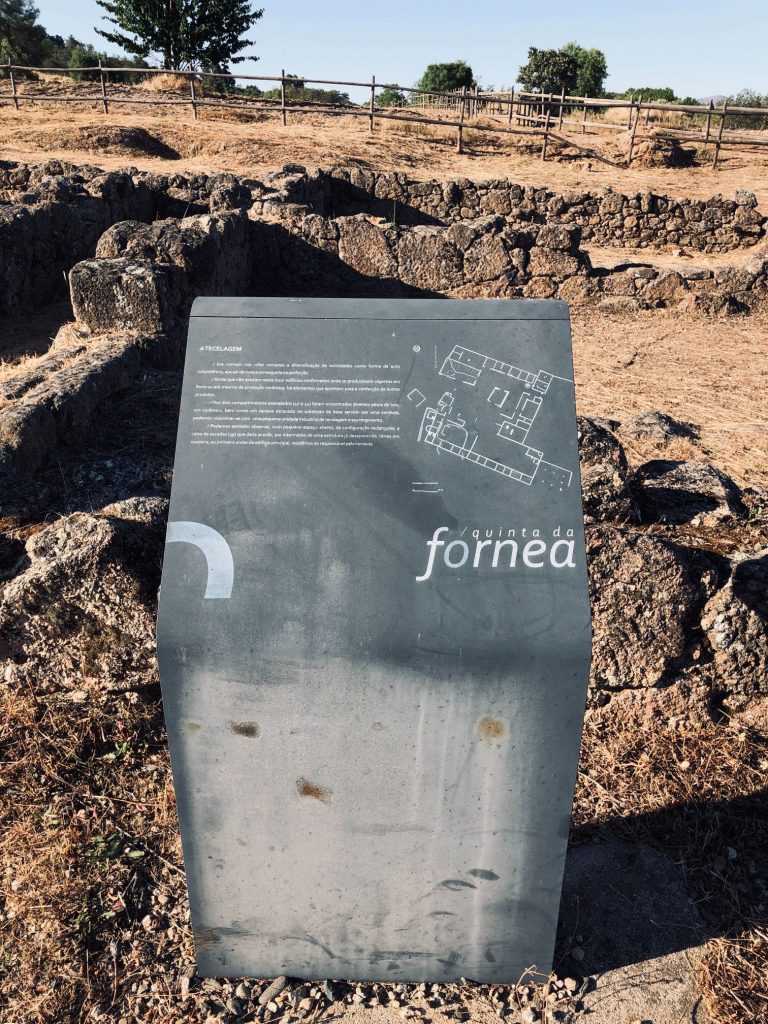


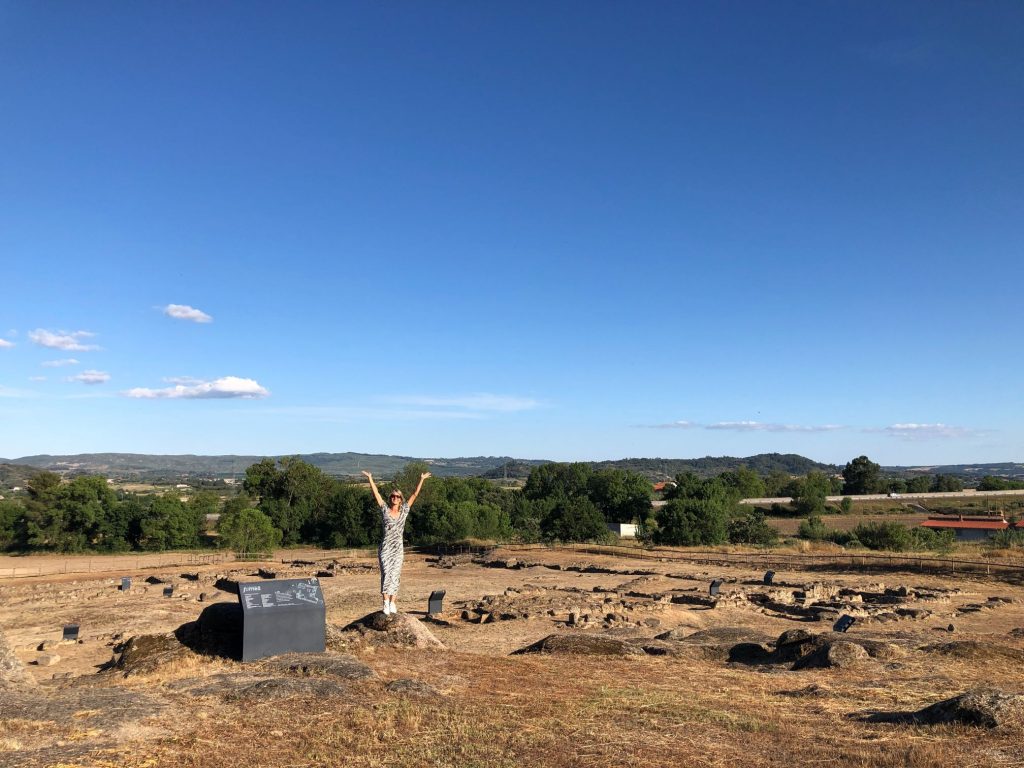


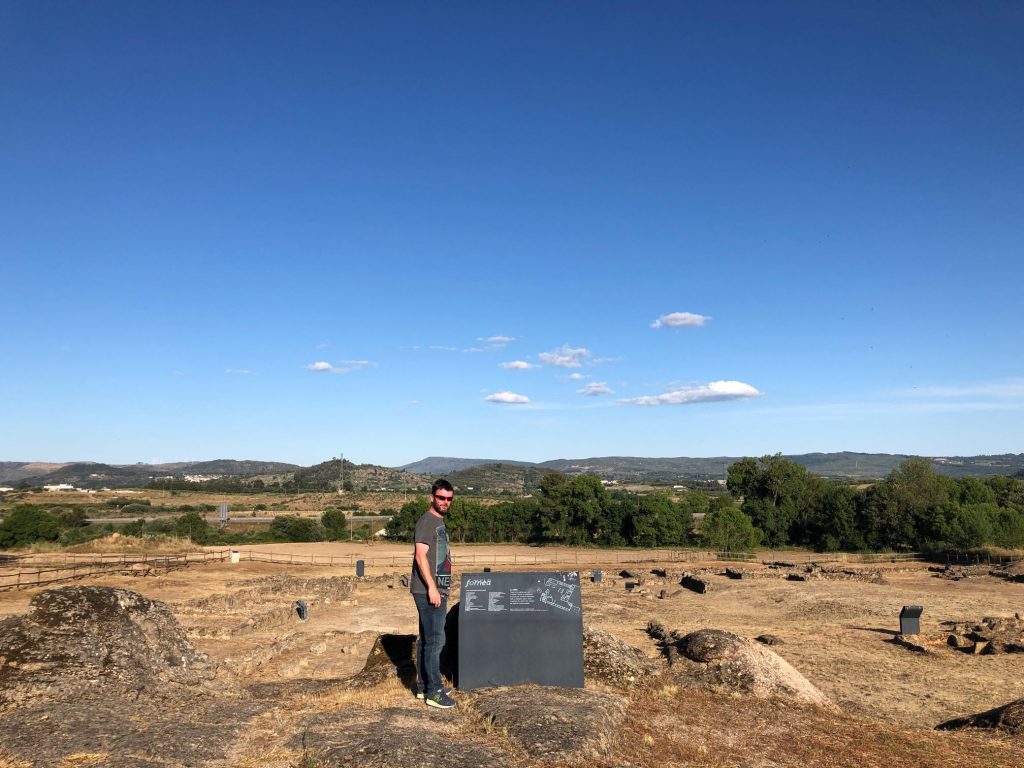


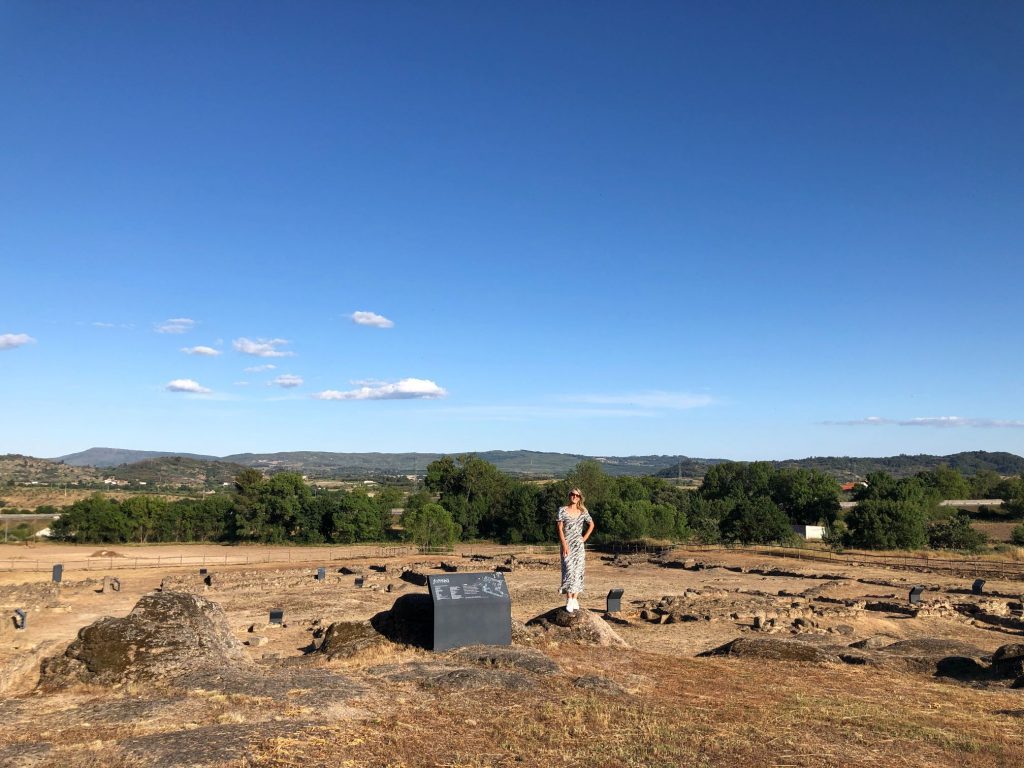


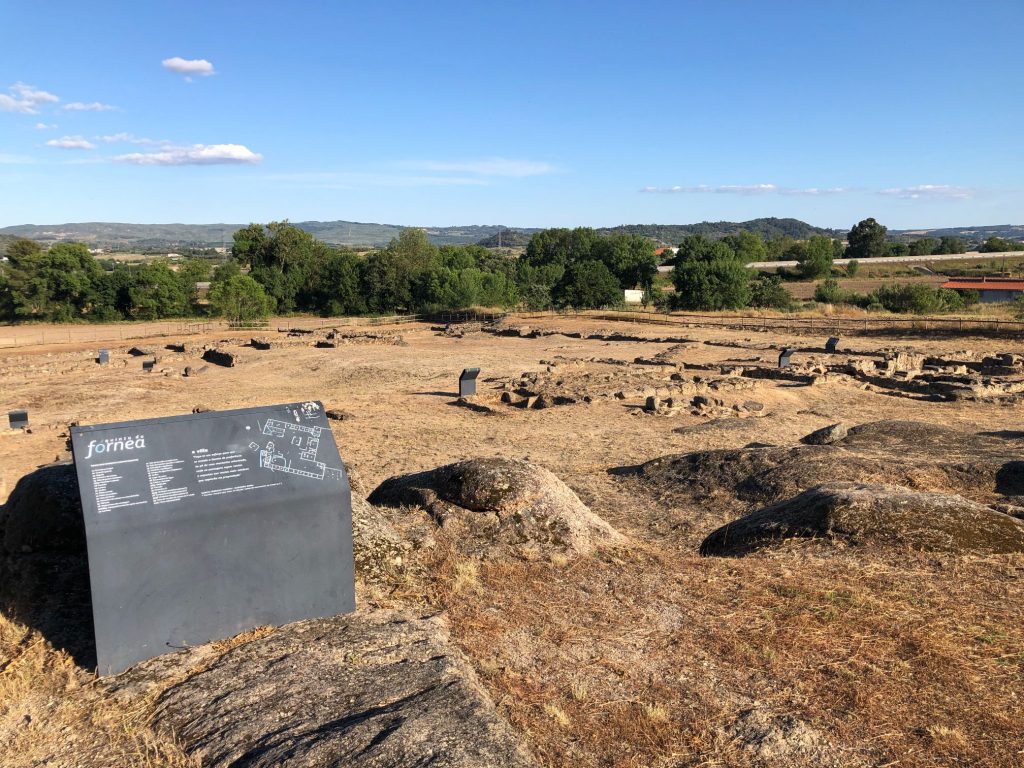


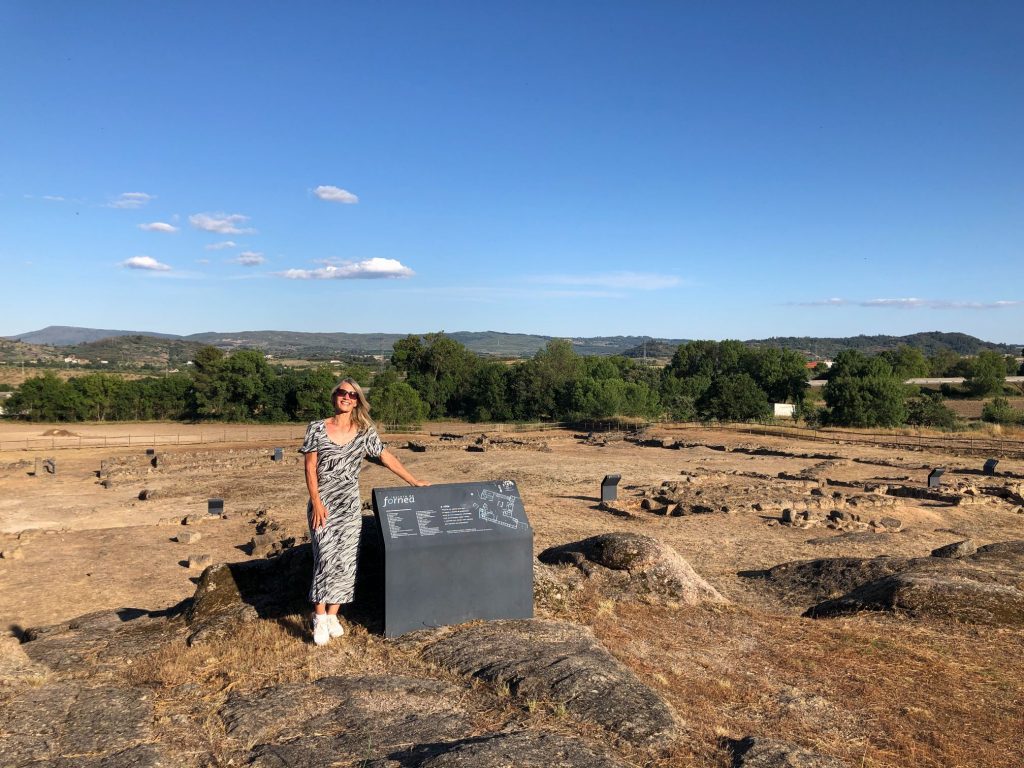


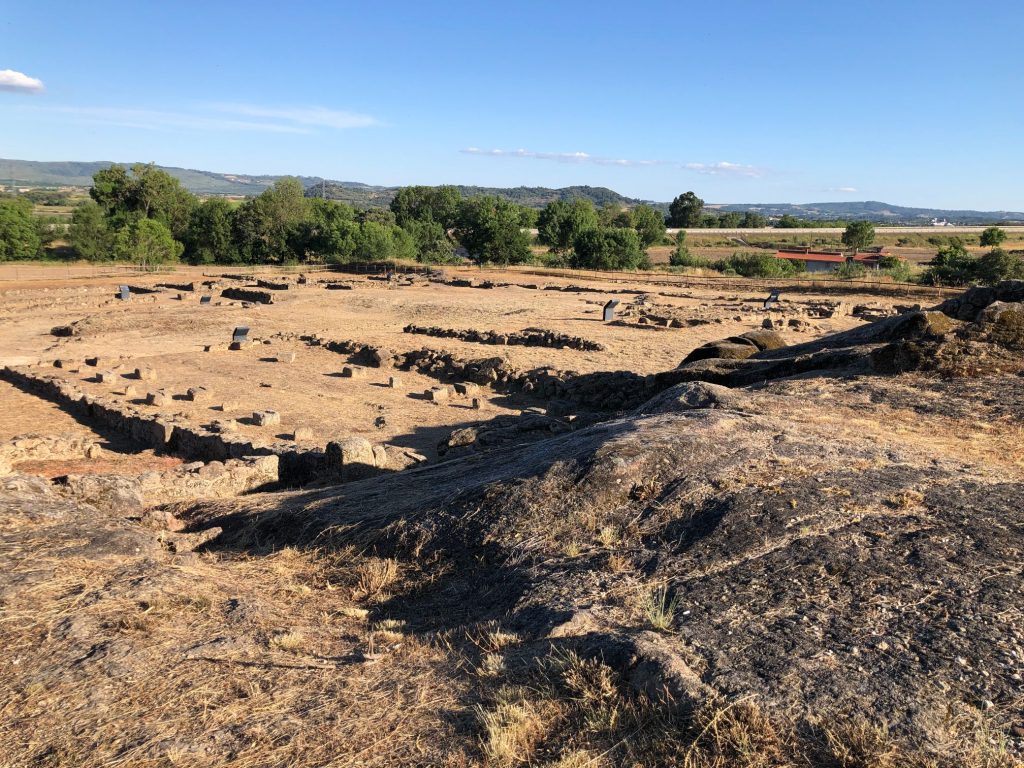


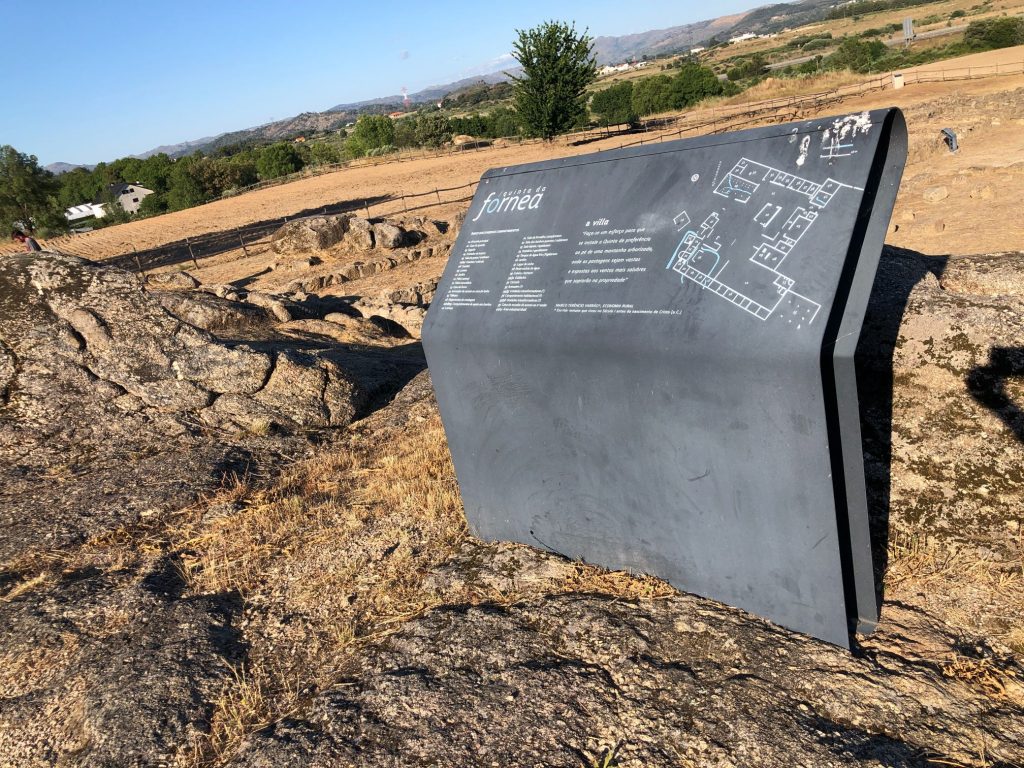


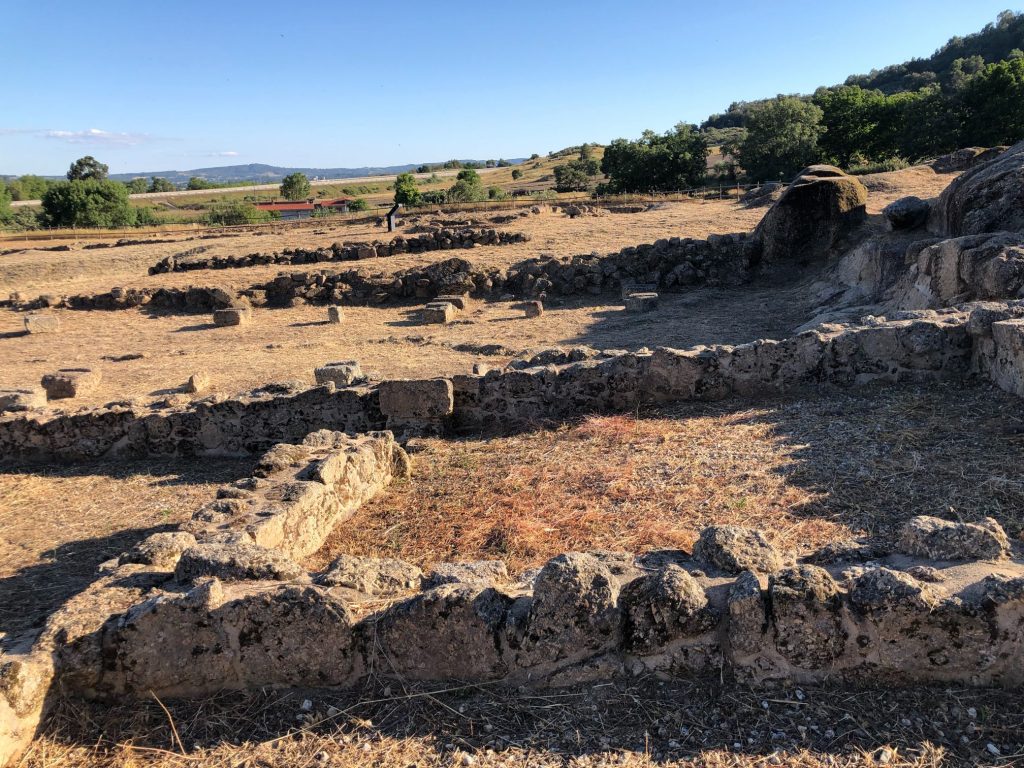


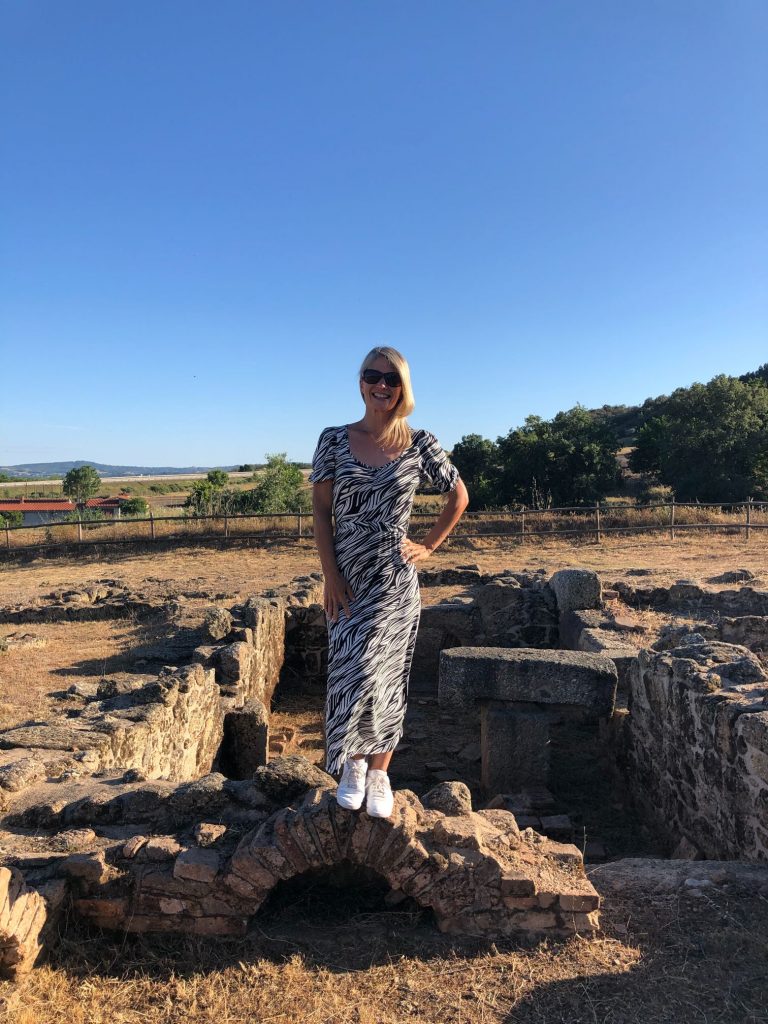


I was a bit worried this tiny bridge might crumble under my weight (ha ha) 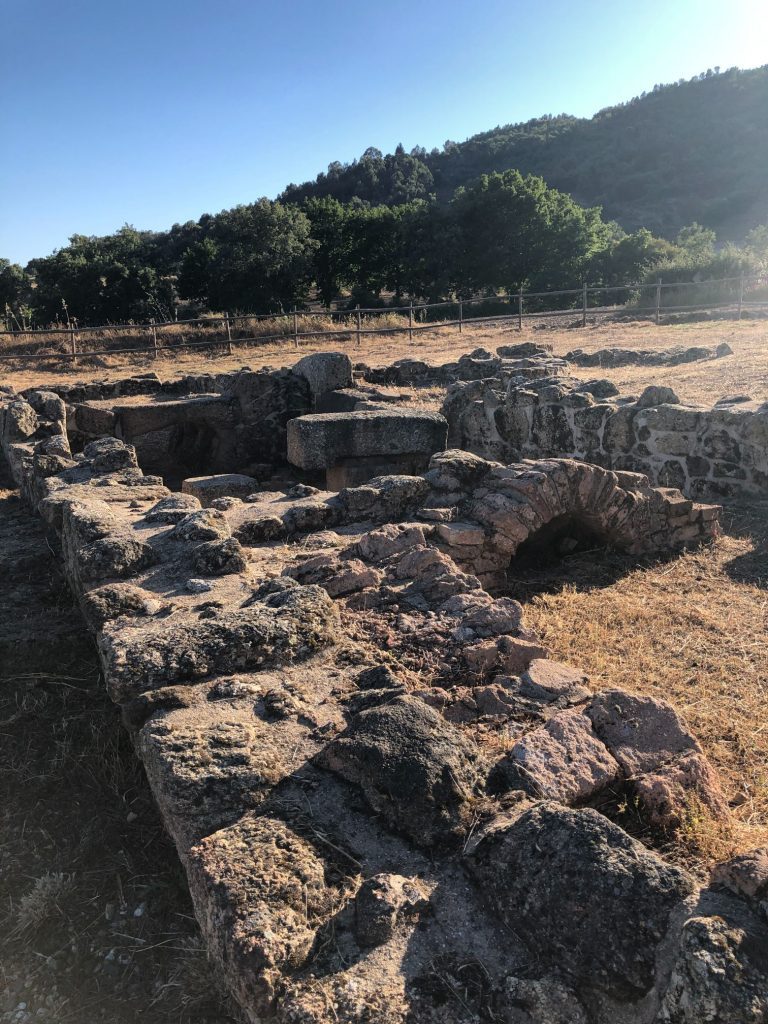


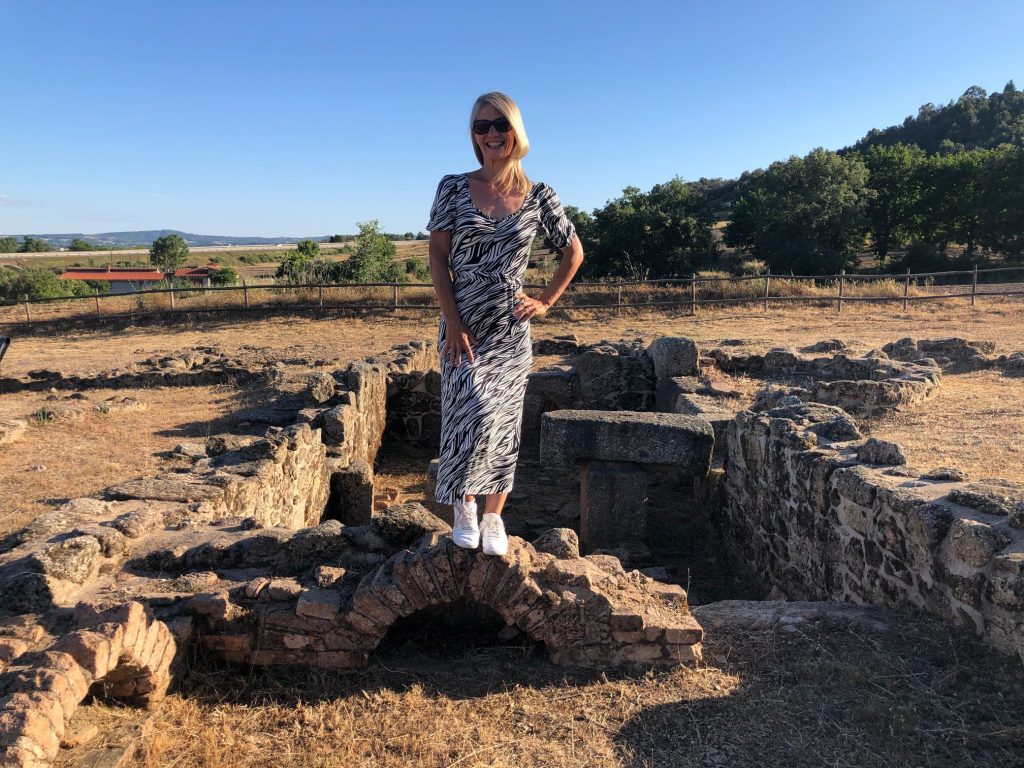


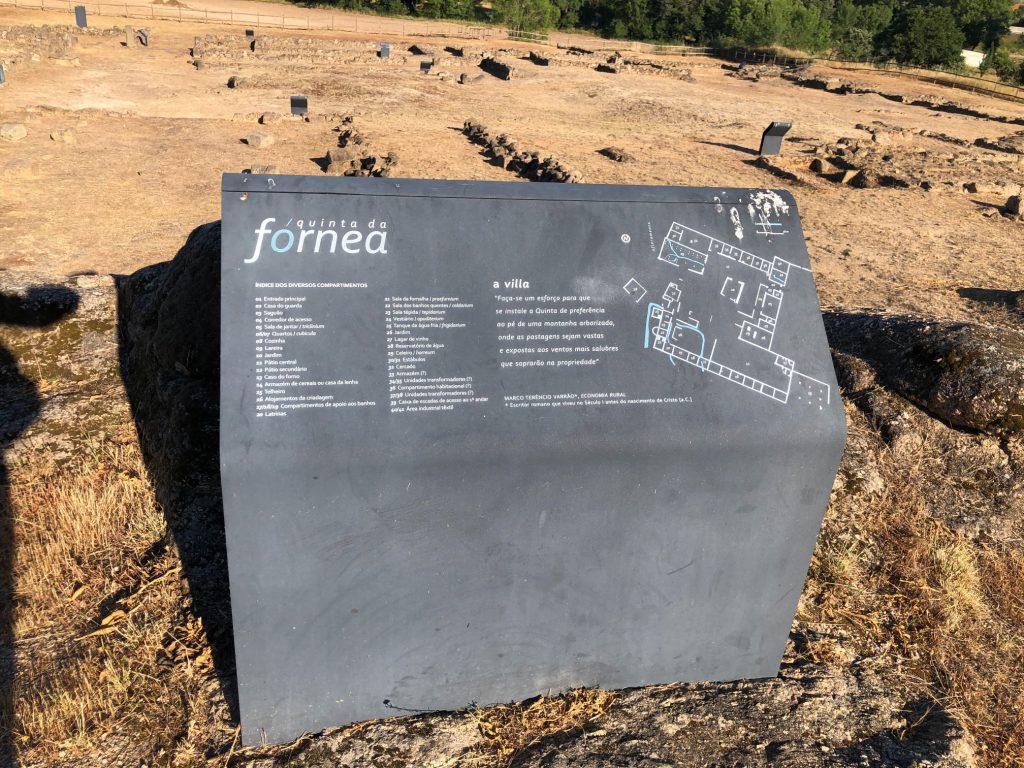


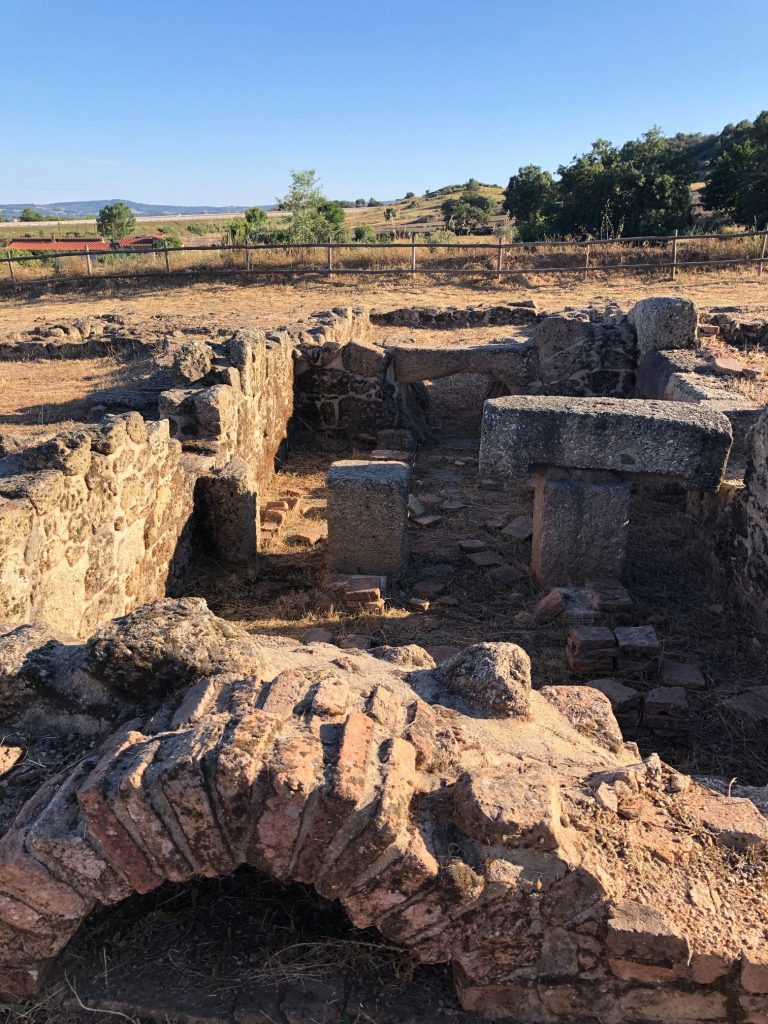


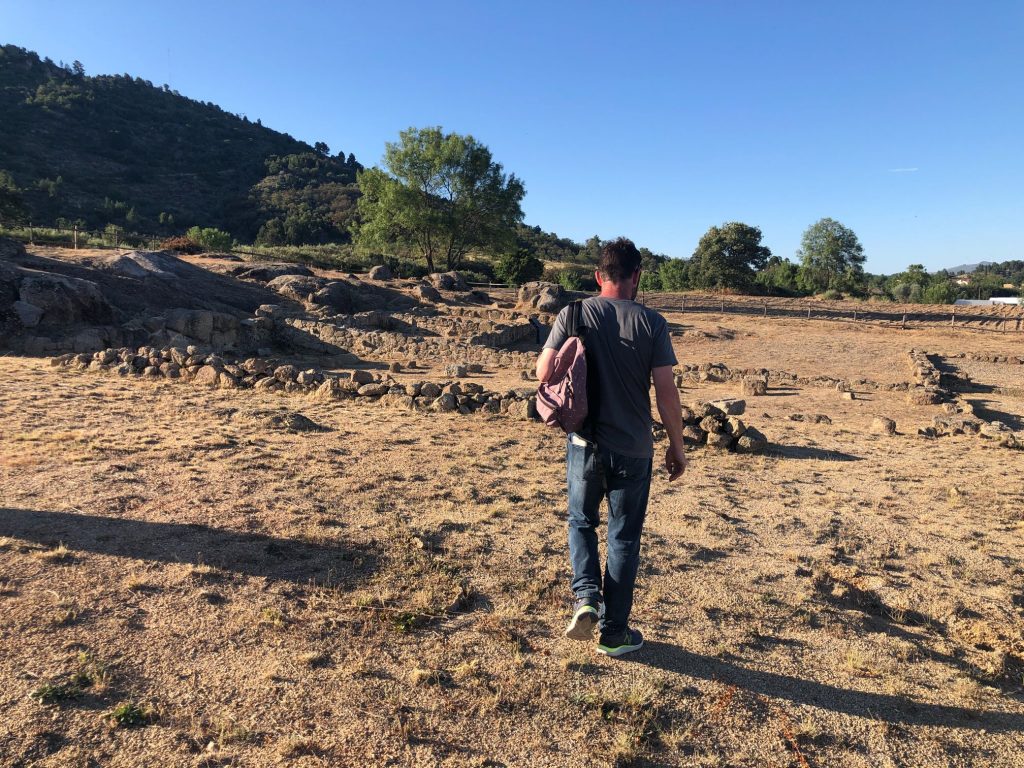


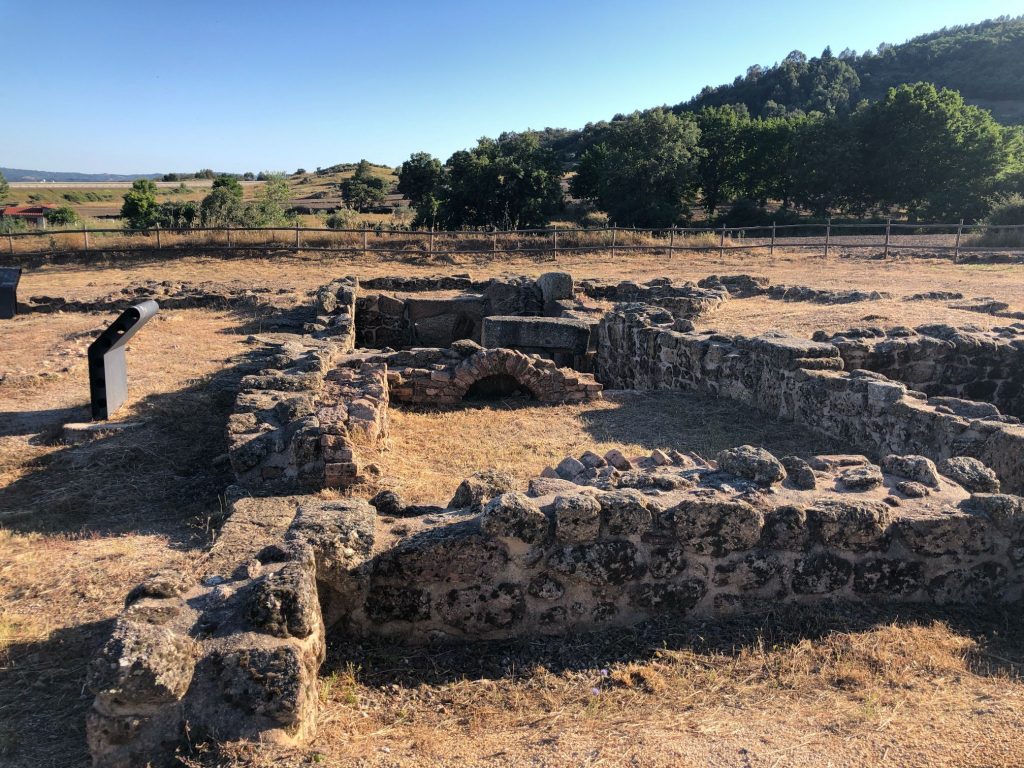


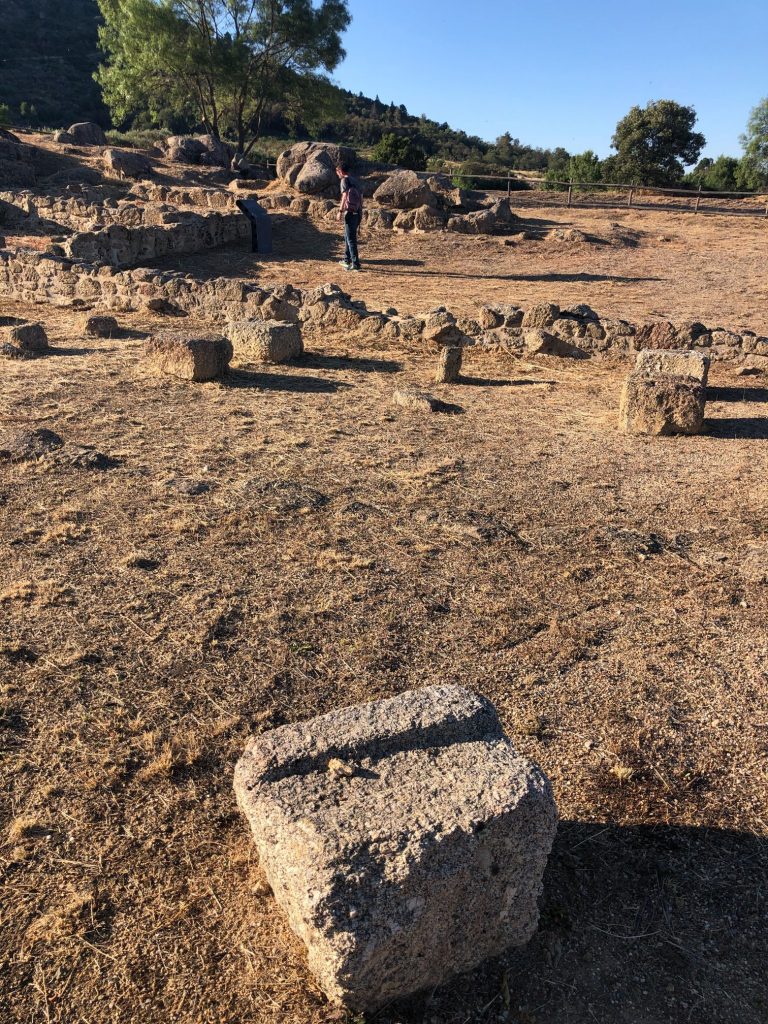


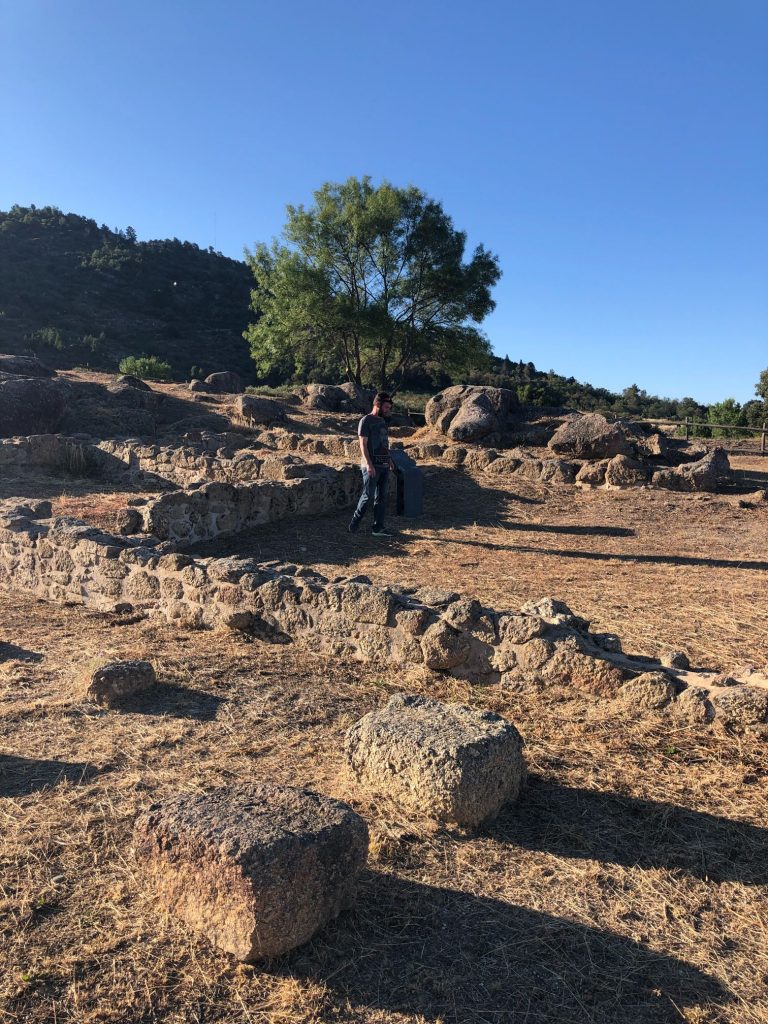


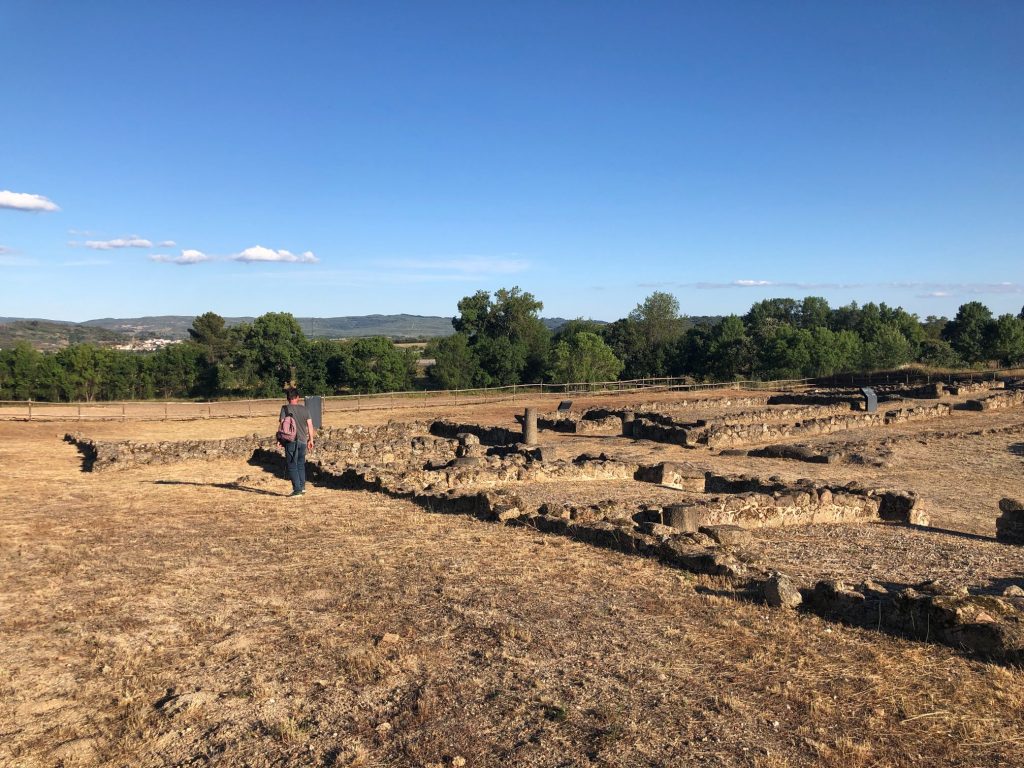


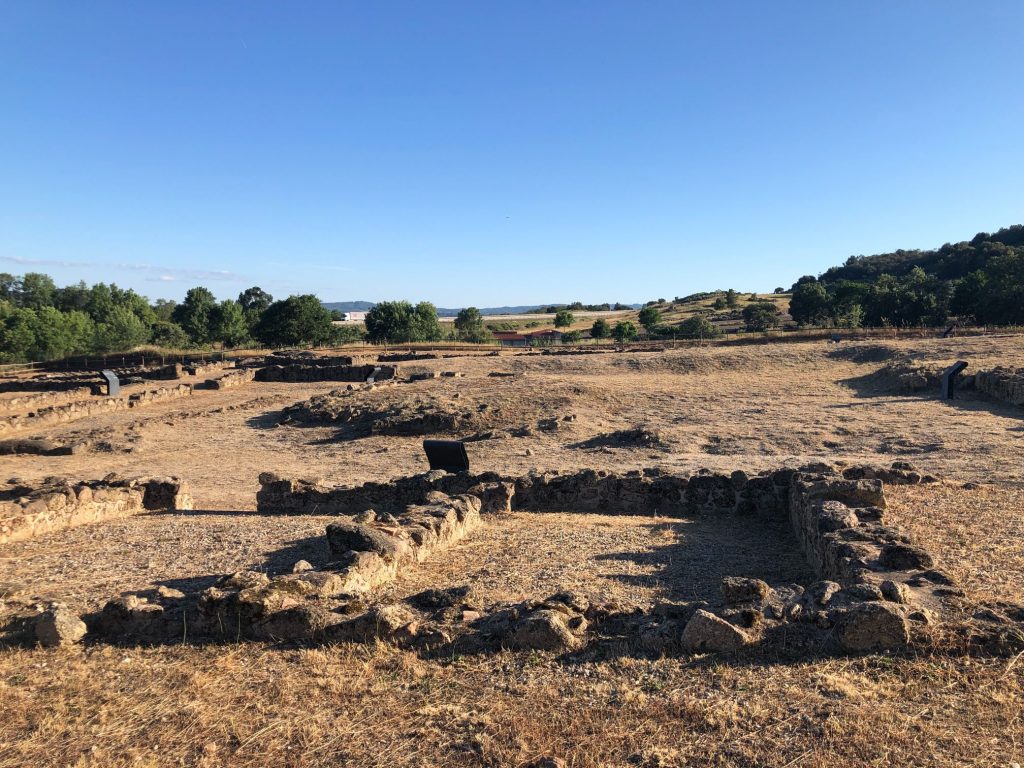


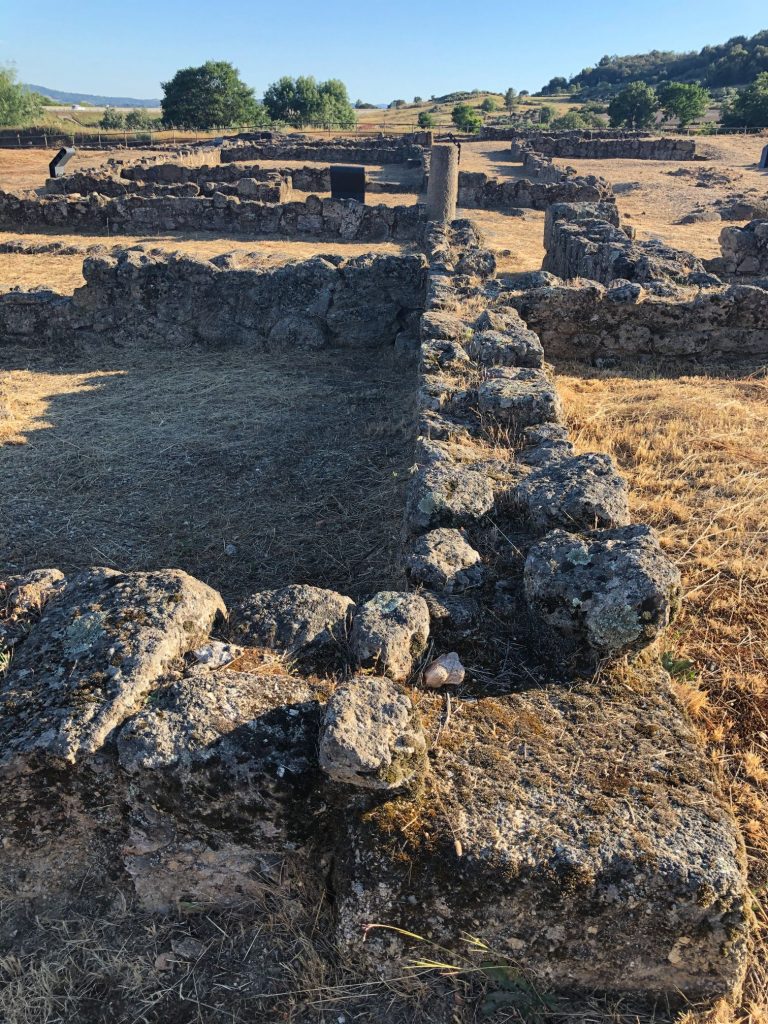


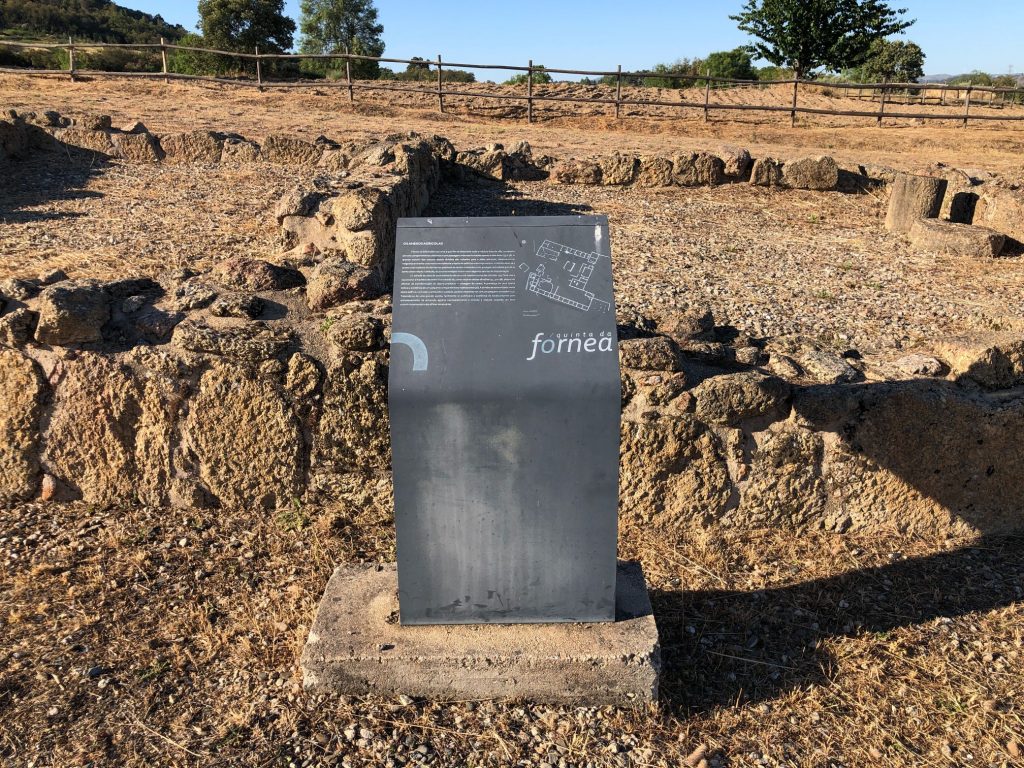


Mr & Mrs Roman Ruin Selfies
Mr & Mrs Ruin Selfies or Ruined Selfies (ha ha). I LOVE the fact that hubby lost his sunglasses in the first photo and then he found them on his head. It’s not the first time he has done this so I think he is morphing into menopausal fog brain Helen (ha ha). “There are no bad pictures; that’s just how your face looks sometimes”. Abraham Lincoln. I have said this before but some folk think I take too many photos. I do take a lot but that is because I have this blog and I want to share the incredible places that we visit here in Portugal. Never mind Abraham Lincoln I think Linda McCartney has the right sentiment when she said ” If you see something that moves you, and then snap it, you keep a moment”. So very true and I love looking back over my photos and remembering the laughter from the day. In my opinion Linda’s quotes about photography are more superior than her vegetarian sausages, they are disgusting, sorry Linda, may you rest in peace.
Pizza in the Park
We stopped off at a lovely Pizzeria that we have visited before. Most long day trips will always end with an awesome pizza in a park. They had another private function on so it was takeaway service only. We opted for a pizza that the lady (staff member) recommended and it was delicious with Portuguese chouriço and plenty of cheese. We drove a couple of minutes to a lovely picnic park, the same one as we visited before. Again I got to take one for the team and consume all 10 olives as hubby dislikes them. Pizza is my favourite food and I would eat it every day if I could get away with it, stay healthy and not resemble the shape of one (big and round). It had peas on it so I counted them as one of my 5 a day (ha ha).
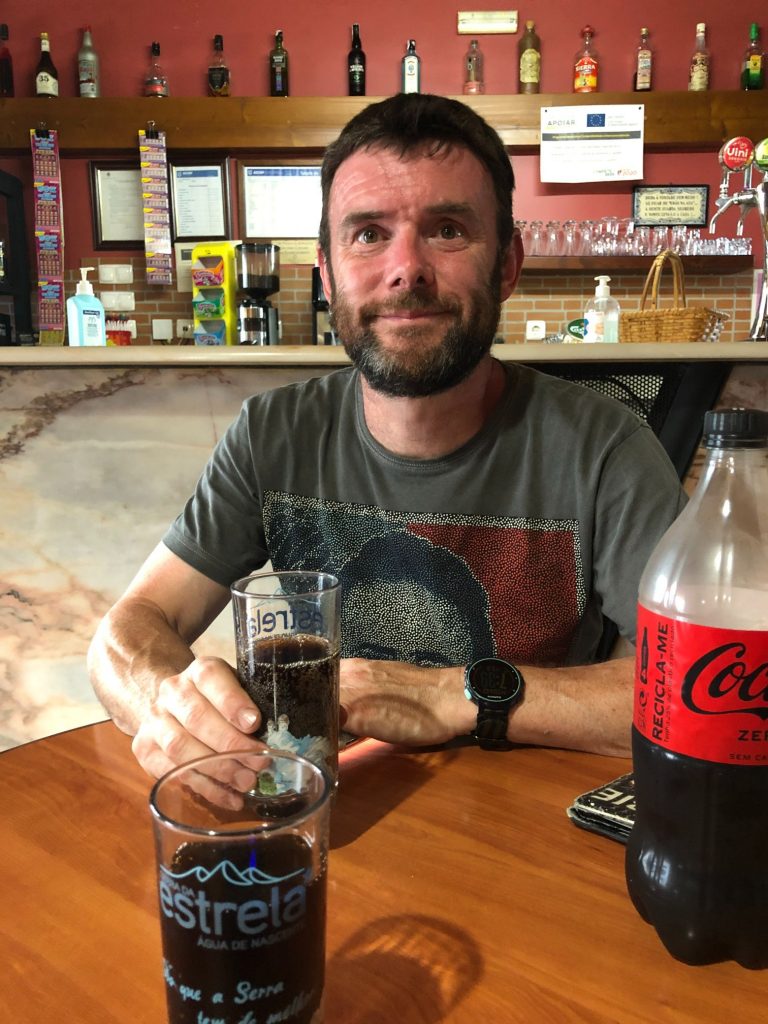


Eagerly awaiting our pizza to be cooked! 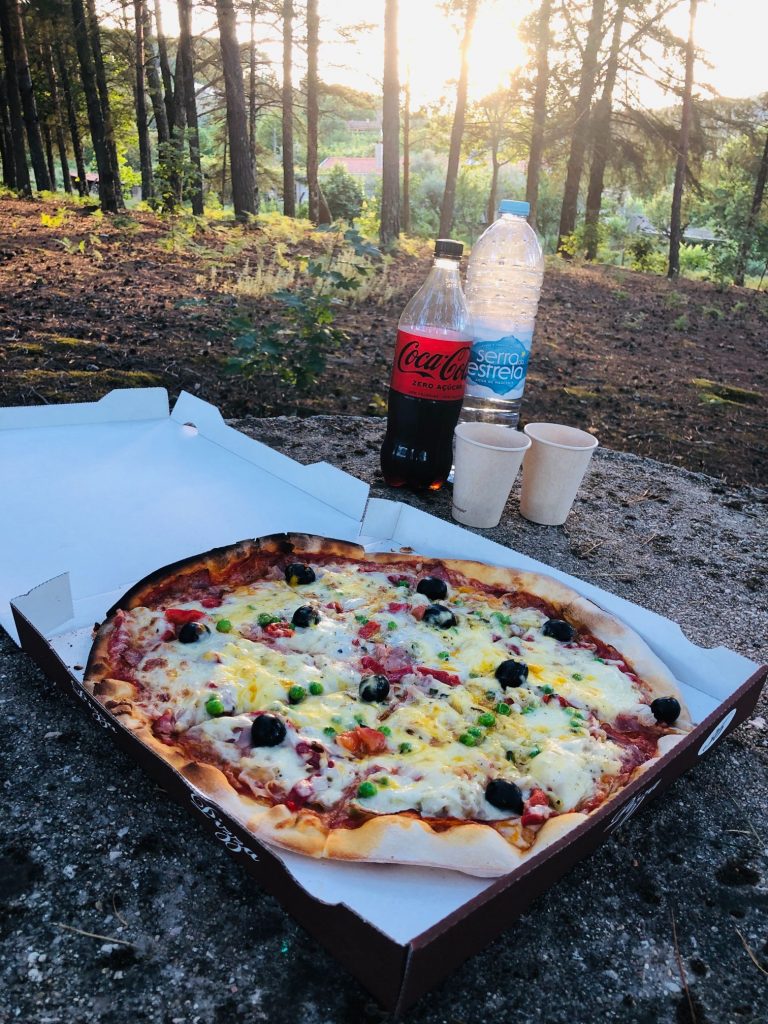


Perfect pizza 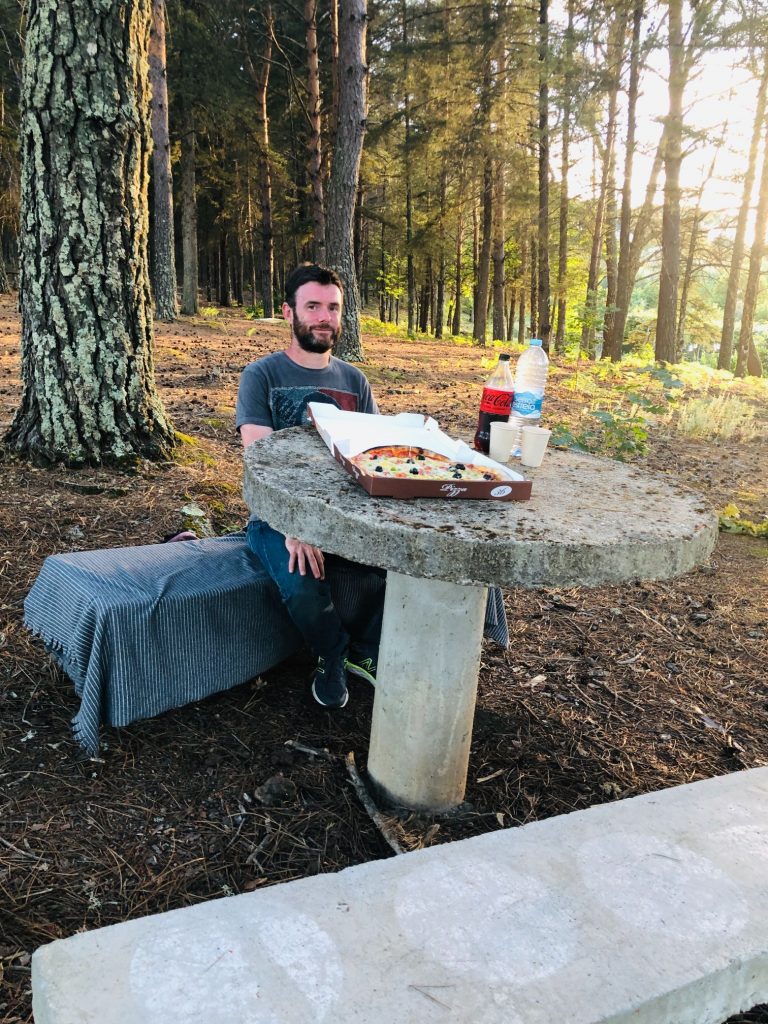


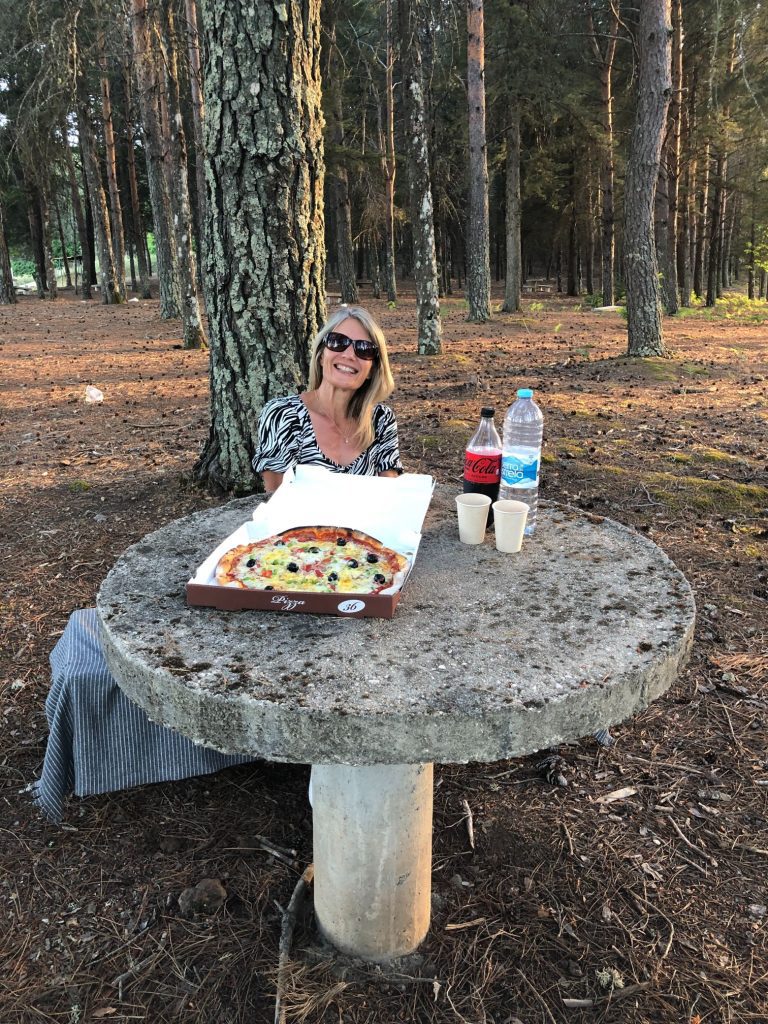


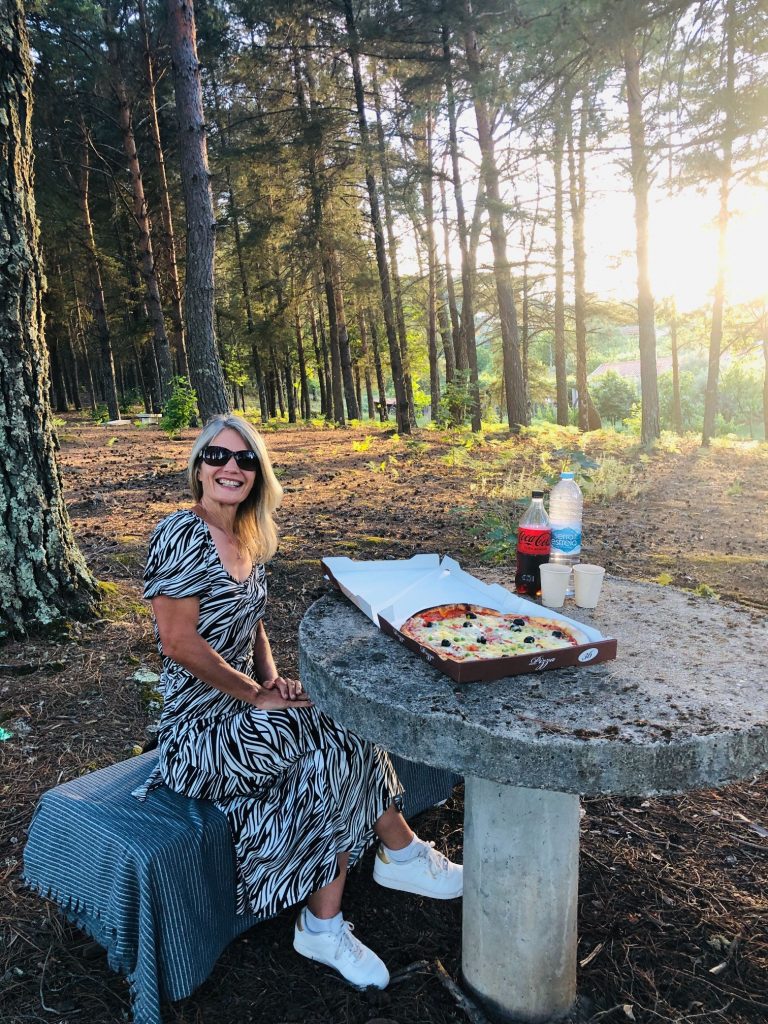


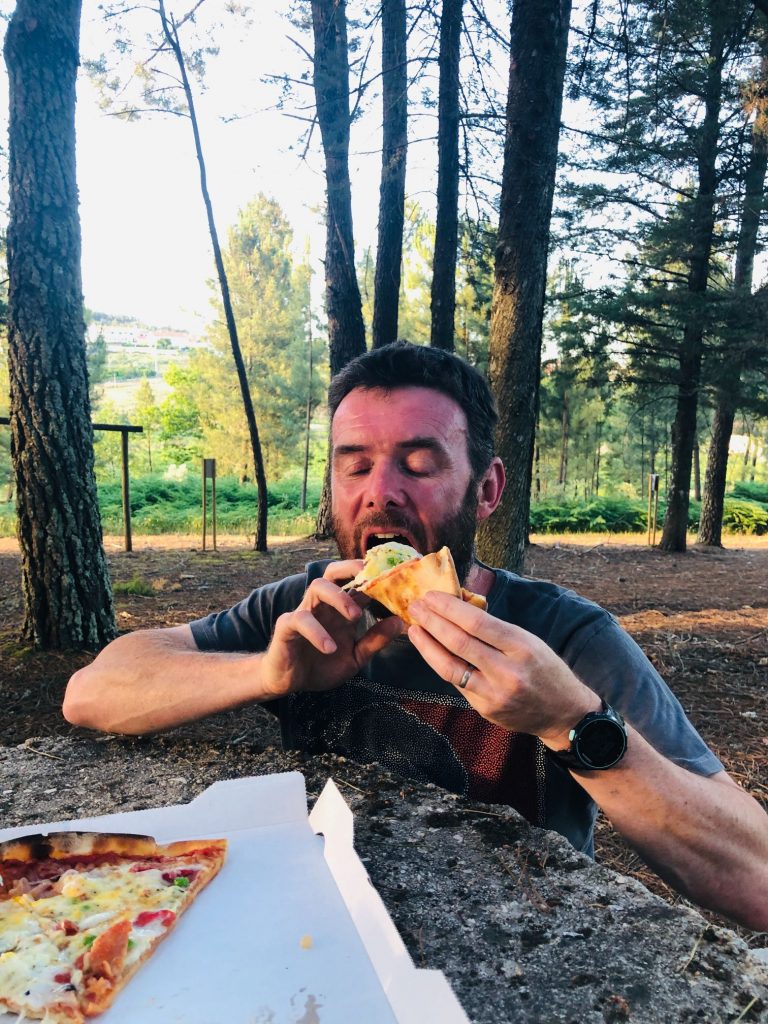


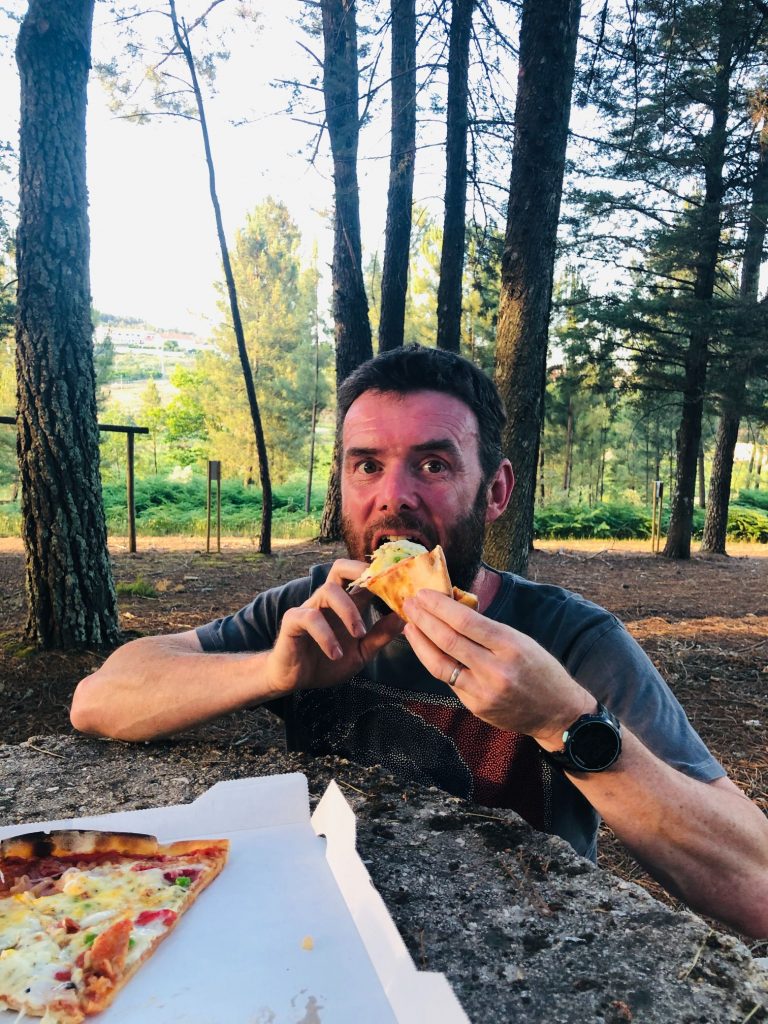


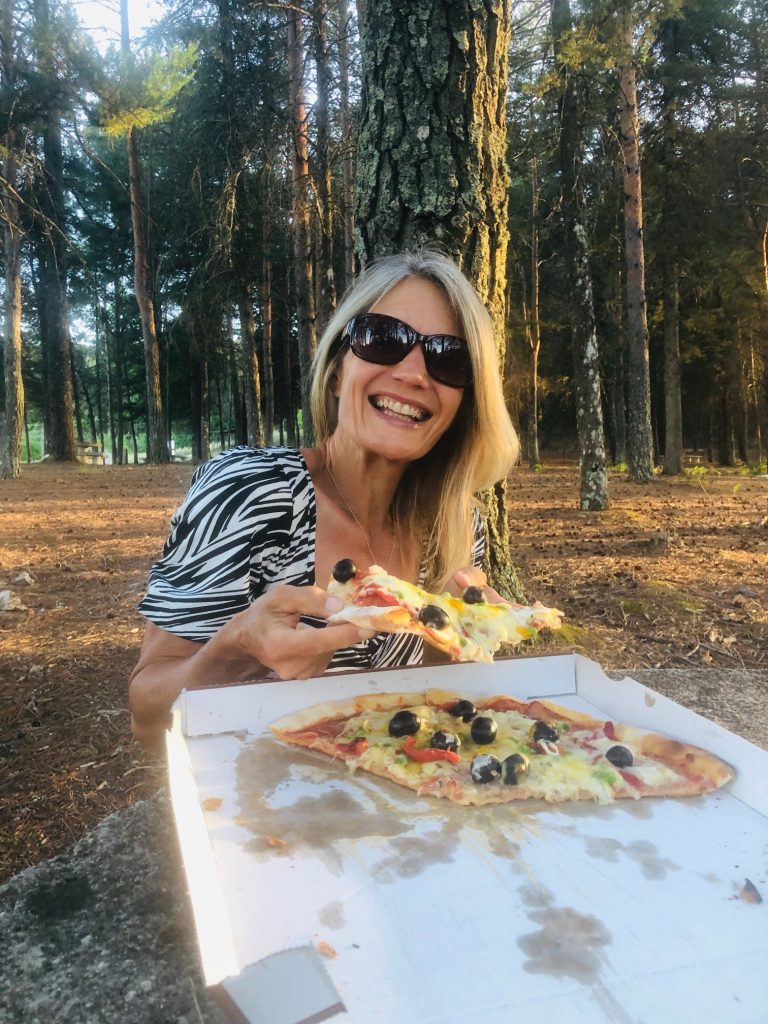


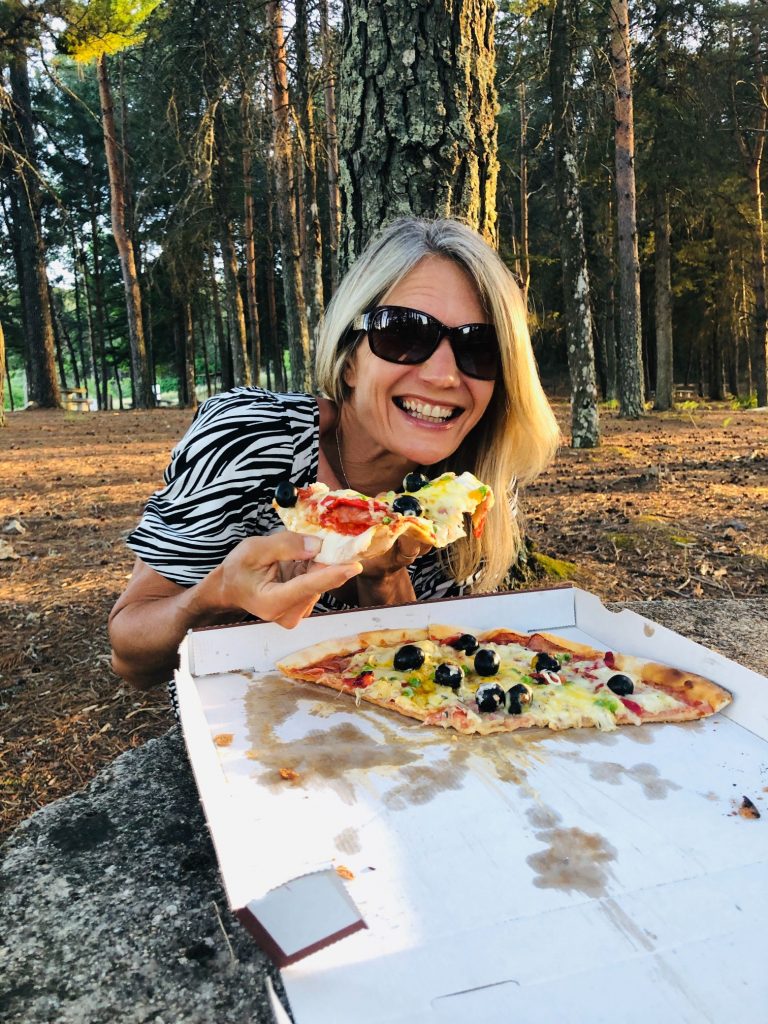


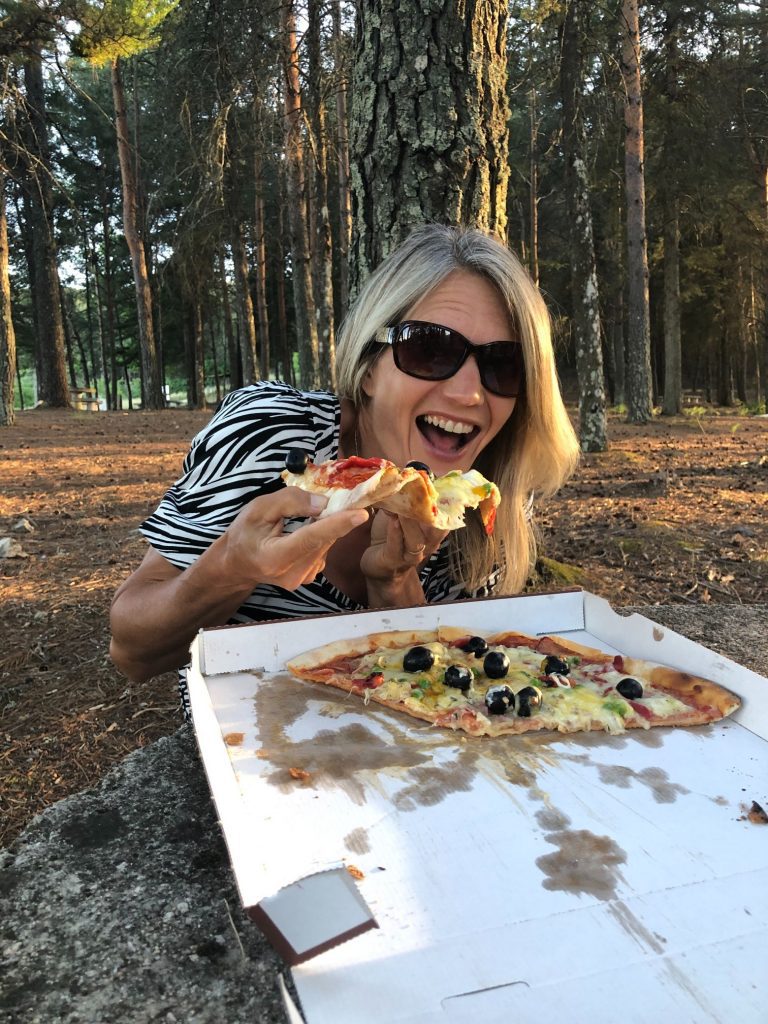


Overview
I really enjoyed visiting Beautiful Belmonte and exploring all the amazing and interesting sites. I even surprised myself as I had fun in all of the museums. I was a little apprehensive as I thought it might be really busy on a Sunday in June. I had planned to go on the Jubilee Thursday or Friday but rain was predicted so we postponed our plans. I was pleasantly surprised at how quiet it was and apart from the crazy scouts at the castle, Belmonte was relatively quiet with very few tourists. I did see a couple of coaches pull up randomly but these organised coach trips only had a small number of people aboard and it appeared that they visit 2 or 3 villages in one day so they only view a couple of tourist attractions then move on to the next place. Most people had left by 16:00. We had a great time and I especially enjoyed our 2nd visit to the truly captivating castle which was a fascinating reminder of the countries noble though often turbulent past. In my opinion Belmonte is not as amazing as Monsanto. Don’t get me wrong it was a spectacular day out and I enjoyed finding out more about Belmonte’s unique history and the strong Jewish connections. We were amazed to wander around the cobbled alleys of the Jewish Quarter and stumble across a Jewish radio station: Rádio Judaica Portuguesa. There are many crucifix motifs carved into the stone on the door jambs to spot and we had a mini competition to see who could find the most, I lost (again).
Exploring Roman ruins is always one of my favourite pastimes so I LOVED our final 2 destinations of the day. Portugal is bursting to the brim with history and Roman ruins, tombs and ancient settlements to explore, I am spoilt for choice. I am always intrigued as to what is left standing and I wander around the grounds thinking back to a time when the Roman villa would have stood grand and tall in all it’s glory and opulence. I also find it amazing at the findings they unearth from all the excavations. Maybe I should have studied archaeology at university instead of attending the University of Life, which for me was getting pregnant at 18 and becoming a single teenage mum (ha ha).
It certainly was a memorable day but compared to Monsanto and Sortelha it just didn’t have the EXTRA WOW factor for me. What I did love is the fact that because it is a Historical Village and a Town it had fabulous facilities e.g. Supermarket, loads of toilets, banks, pastelaria (bakery), several artisan shops selling local produce and gifts, lots of restaurants and cafe options for food and drink etc. In some of the smaller Historical Villages you are quite limited for food choices. Another one of the 12 Historical Villages of Portugal ticked off my Portugal bucket list. We have viewed quite a few out of the 12 now. I never get bored of the traditional historical villages and being instantly transported back in time and meeting the friendliest salt of the earth local folk. We always have so much fun and laughter exploring every nook and crannie. My favourite part is always the castle as each one is very different and has their own unique vibe and ancient story to tell. I loved that the villagers put a lot of care and effort into the exteriors of their homes and are proud of their roots.
Credits
Thanks and credits to: Aldeias Históricas de Portugal Website, where I gained a lot of my factual information and History of Belmonte.

